
- About
- Library
-
Essays
Eric Dinerstein William C. Young
- Plants
- Birds
FIELD NOTES FOR TANZANIA
February 26 - March 27, 2015
William Young
INTRODUCTION
ITINERARY
BIRDS
MAMMALS
REPTILES AND AMPHIBIANS
FLORA
OTHER WILDLIFE
GENERAL IMPRESSIONS
INTRODUCTIONIn 2015, I went on a month-long safari to Tanzania with my friend Martin Van Tol from England. We met up in Dar es Salaam on February 26 and flew home on March 27. In between, we covered more than 3,700 kilometers, or 2,300 miles.
I first met Martin in 2012 on a birding trip to Panama. We arranged the Tanzania trip in August, 2014, through the East African Safari and Touring Company in Arusha. Our guide for the entire trip was Bernard Shirima, who knew a lot about birds and Tanzanian wildlife. He was an excellent and caring companion throughout. During the trip, the three of us managed to see or hear about 455 species of birds and more than 50 species of mammals. In some areas, we also used local guides. We stayed many of the nights in tented camps, and the food was excellent almost everywhere we stayed. This was my first trip to Africa. Martin had been to Africa before, but not Tanzania.
ITINERARYI left Washington, DC, on February 25, changing planes in Addis Ababa on my way to Tanzania. I arrived in Dar es Salaam in the early afternoon on Thursday, February 26. The temperature was in the mid to high 90s — quite a change from the 25 degree weather when I left from Dulles Airport in Virginia the previous day. I went to the Peacock Hotel, where we stayed for two nights. Martin had arrived in the morning and was sitting in the lobby when I got there at about 2:30. I was wearing a cap with a rhinoceros on it from the environmental group RESOLVE — the cap had been given to me by a couple of friends in Washington who work with the organization. Even before I had checked in, a surprised looking man in the lobby came up to me and asked where I had gotten the cap. He was there with two other people who work for RESOLVE and was surprised to see someone wearing one of their caps. He knew my two friends well and said they had just been in Tanzania the previous week.
Friday the 27th was supposed to be a day to rest and become acclimated. Martin and I both felt fine, so we decided to do a birding trip around Dar es Salaam, arranged by our tour company. Our driver was Robert, who worked for the company. He was accompanied by Elizabeth, who is the niece of the company's owner. Among the places we stopped were Ndege Beach, Coco Beach, Tegeta, Mbezi Beach, and Mbweni. Dar es Salaam is a very large city in terms of land area and population, and we never left the city on Saturday. The areas we visited were all north of our hotel, and some were along the edge of the Indian Ocean. We also drove through the beautifully manicured area of the city where many foreign embassies are located. This area looked very different from the rest of Dar es Salaam.
 Itinerary - Photo by William Young
Itinerary - Photo by William YoungOn Saturday the 28th, we flew from Dar es Salaam to Mwanza, which is about 530 miles away on Lake Victoria. We stayed at a lovely resort called Serenity on the Lake and were the only guests there. We were told to keep our doors closed, because bats are attracted to the lights and might come in. The next morning, we drove a short distance to a different part of the lake and explored the area by boat. Lake Victoria is the second largest freshwater lake in the world, behind only Lake Superior in the US. John Speke, a British explorer in the mid-1800s, is believed to be the first European to travel to the lake. The African name for the lake is Nyanza, which means "lake," just as Sahara means "desert." There used to be an estimated 100 species of fish in lake, but Nile Perch have killed a lot of species so that there are now only a third as many. The lake also has a lot of water hyacinths, an introduced species that has caused problems for people who fish.
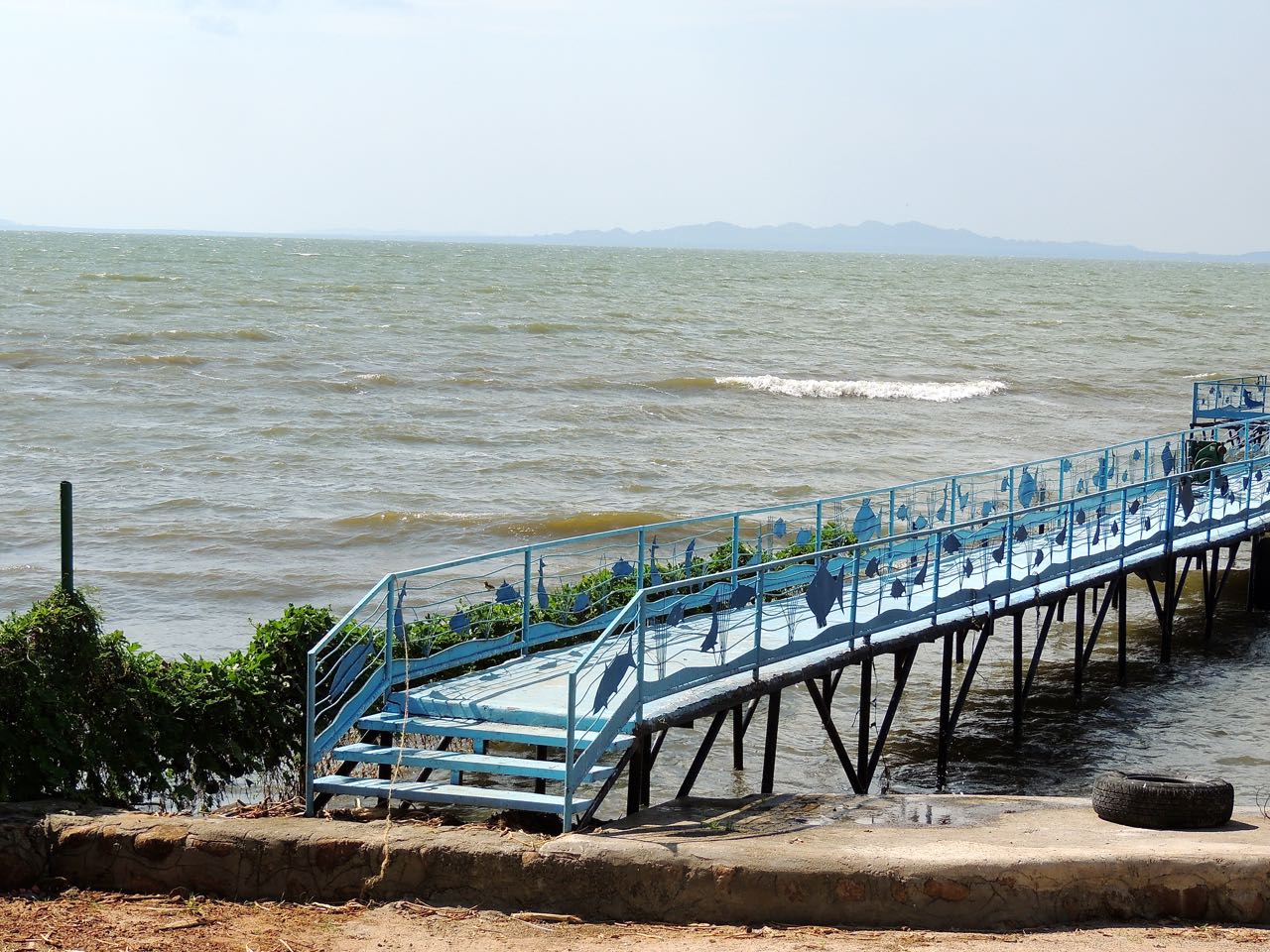 Lake Victoria - Photo by William Young
Lake Victoria - Photo by William YoungAfter lunch, we left for Serengeti National Park. After exploring part of the park, we drove 70 kilometers to the Mbalageti Luxury Camp, another pleasant facility, although our rooms were located a long way from the reception area. The chandelier in the reception area was made of animal bones. The rooms were on permanent stone floors and had plumbing facilities, but they had canvas walls. As in some of the places we stayed, the electricity was powered by a generator that did not operate for 24 hours. We had electricity until 11 pm, and it did not come on again until the morning. There were a few other guests while we were there. We were not allowed to go anywhere on the grounds unless accompanied by a guard. Printed material in each of the tents warned guests about elephants and other wild animals. There also was an information sheet to advise how to act around baboons.
We spent a full day at Serengeti National Park on March 2. The Serengeti is part of the ecosystem (35,000 square kilometers) that includes the Maasai Mara in neighboring Kenya. The park itself is 14,763 square kilometers. The name "Serengeti" is derived from "siringit," the Maasai word for "endless plains". The park features an annual migration of more than 1.5 million wildebeest, zebras, and associated predators. We stayed that night and the next at a campsite at Ndutu, which is operated by the Maasai. A woman named Chris was staying there only for our the first night, after which she was going to Arusha to work in an orphanage. I gave her a stack of postcards and notecards to give to the children.
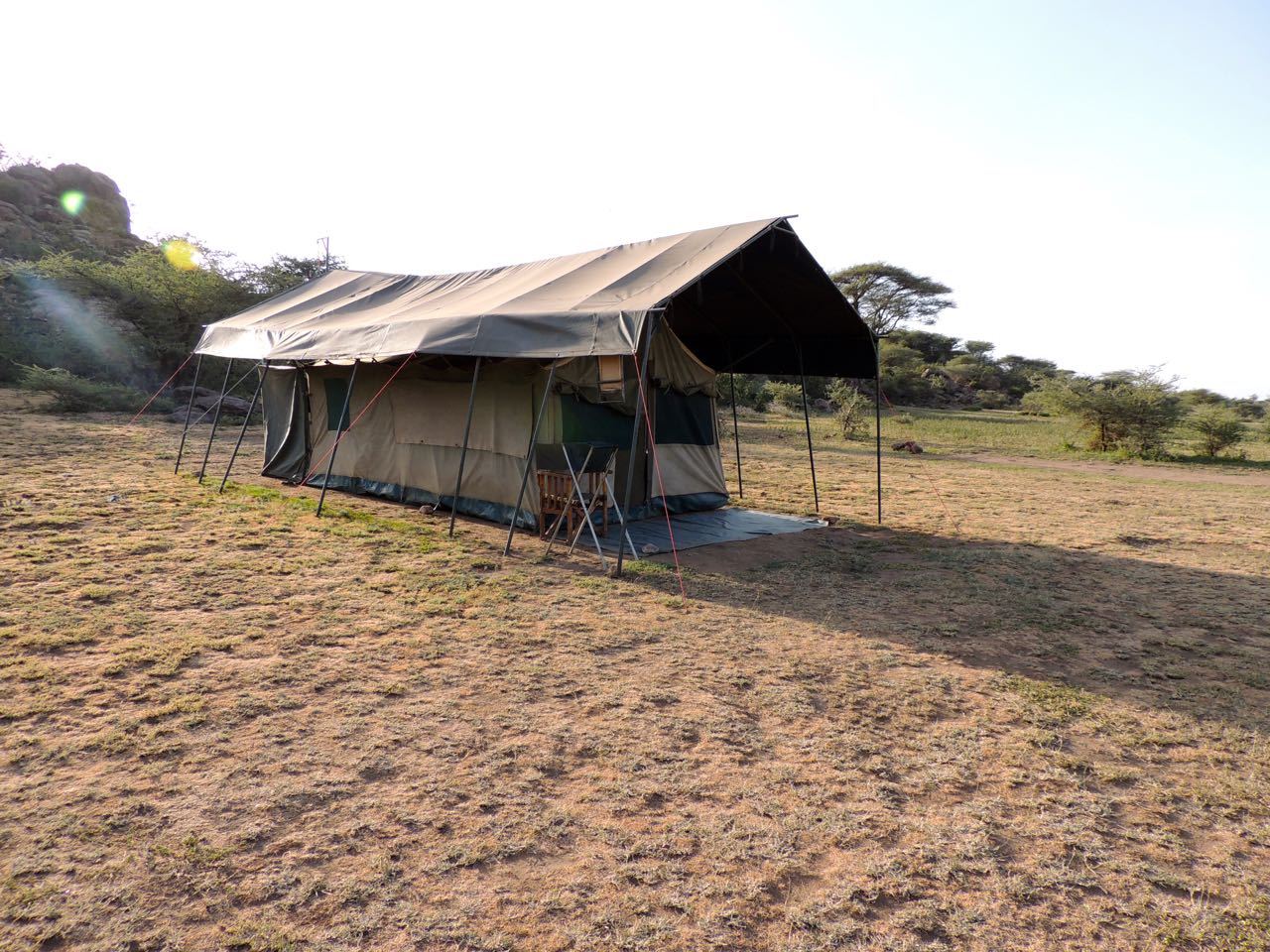 Ndutu Campsite - Photo by William Young
Ndutu Campsite - Photo by William Young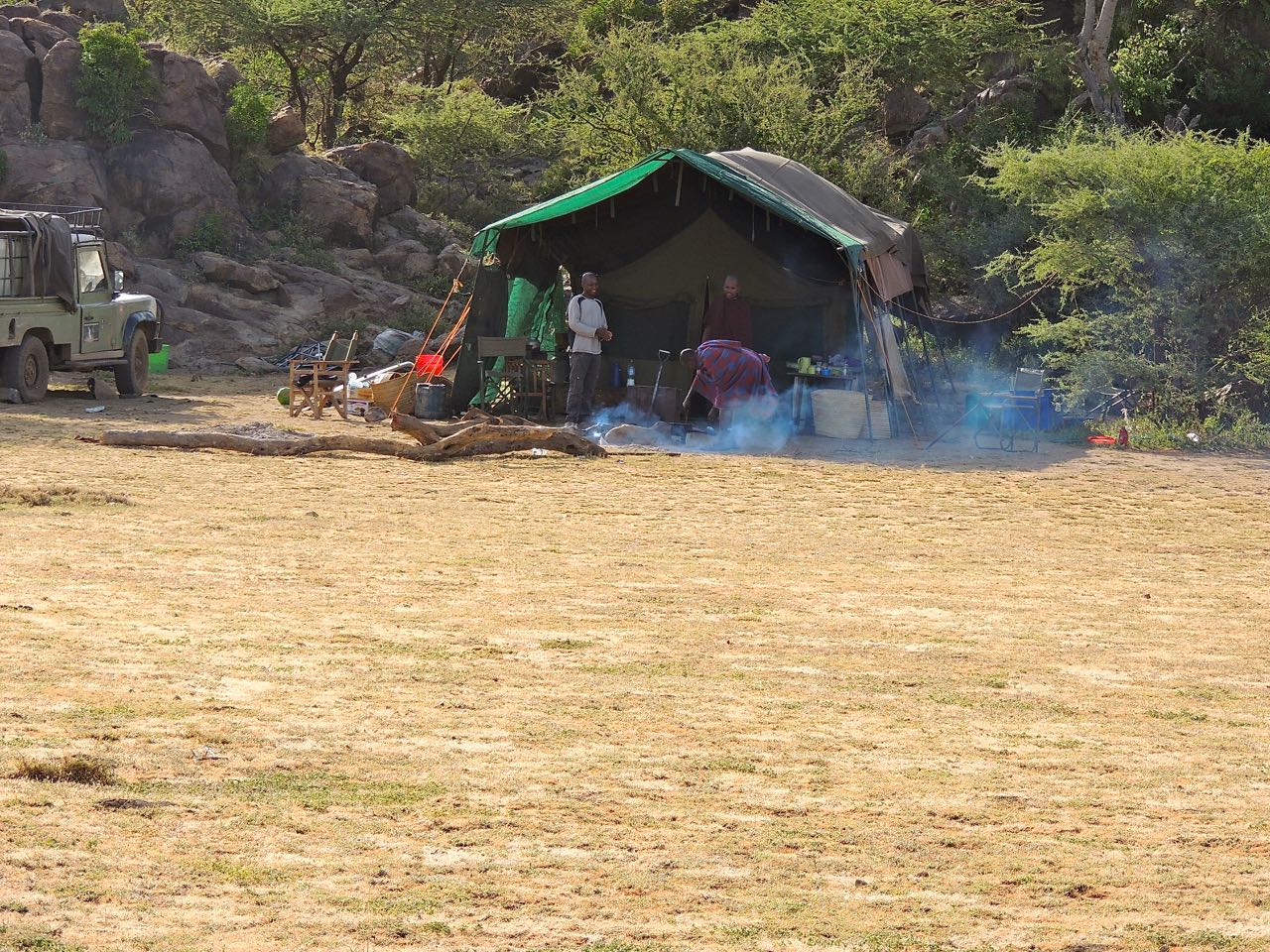 Ndutu Campsite - Photo by William Young
Ndutu Campsite - Photo by William YoungOn March 3, we visited Ndutu National Park, which is part of the Ngorongoro Wildlife Area. The park has some greenery, but the area we drove through to get there was dry and barren. On March 4, we birded around the campsite, which had a lot of birds.
On March 5, we drove to Olduvai Gorge and made a brief stop at the museum that showed some of the discoveries Louis and Mary Leakey had made there. The Leakeys found out about the area through German colleagues. A German neurologist who was doing research about sleeping sickness went to the area and noticed many fossils. He told researchers in Germany, and they told the Leakeys about it. We spent the next two evenings at the Rhino Lodge, which was one of the more upscale places we stayed. The room was quite comfortable, but we had electricity for only four hours a night. We spent March 6 exploring the Ngorongoro Crater. The Ngorongoro Conservation Area is 8,300 square kilometers of land that surround the 210 square kilometer crater and adjacent highlands. The crater was once the headquarters of Serengeti National Park, of which it was a part. In 1956, after intense pressure and lobbying from the local Maasai community who were dispossessed of the lands when the national park was set up, Ngorongoro was designated a conservation area. The wildlife is dispersed among an amazing array of ecosystems within the natural amphitheater created by the 600 meter high cliffs around it. It is home to most of the large East African mammals, except the giraffe (the walls are too steep) and impala. The crater has the highest density of lions in Africa, with more than 30 per 100 square kilometers, compared to the Serengeti which has about 14. On the drive from Ngorongoro back to the Rhino Lodge, the vegetation was much greener than anything we had seen to that point.
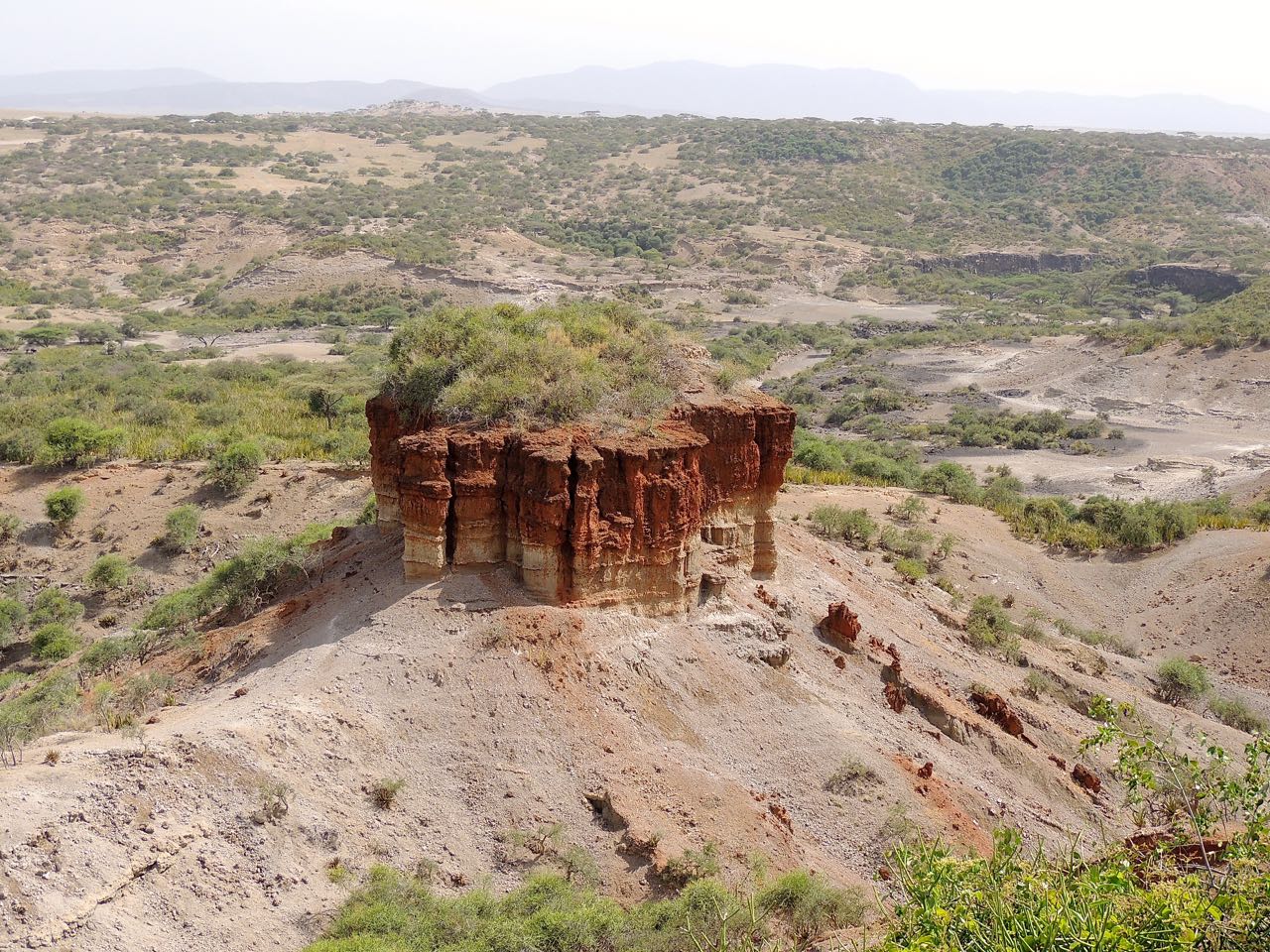 Olduvai Gorge - Photo by William Young
Olduvai Gorge - Photo by William Young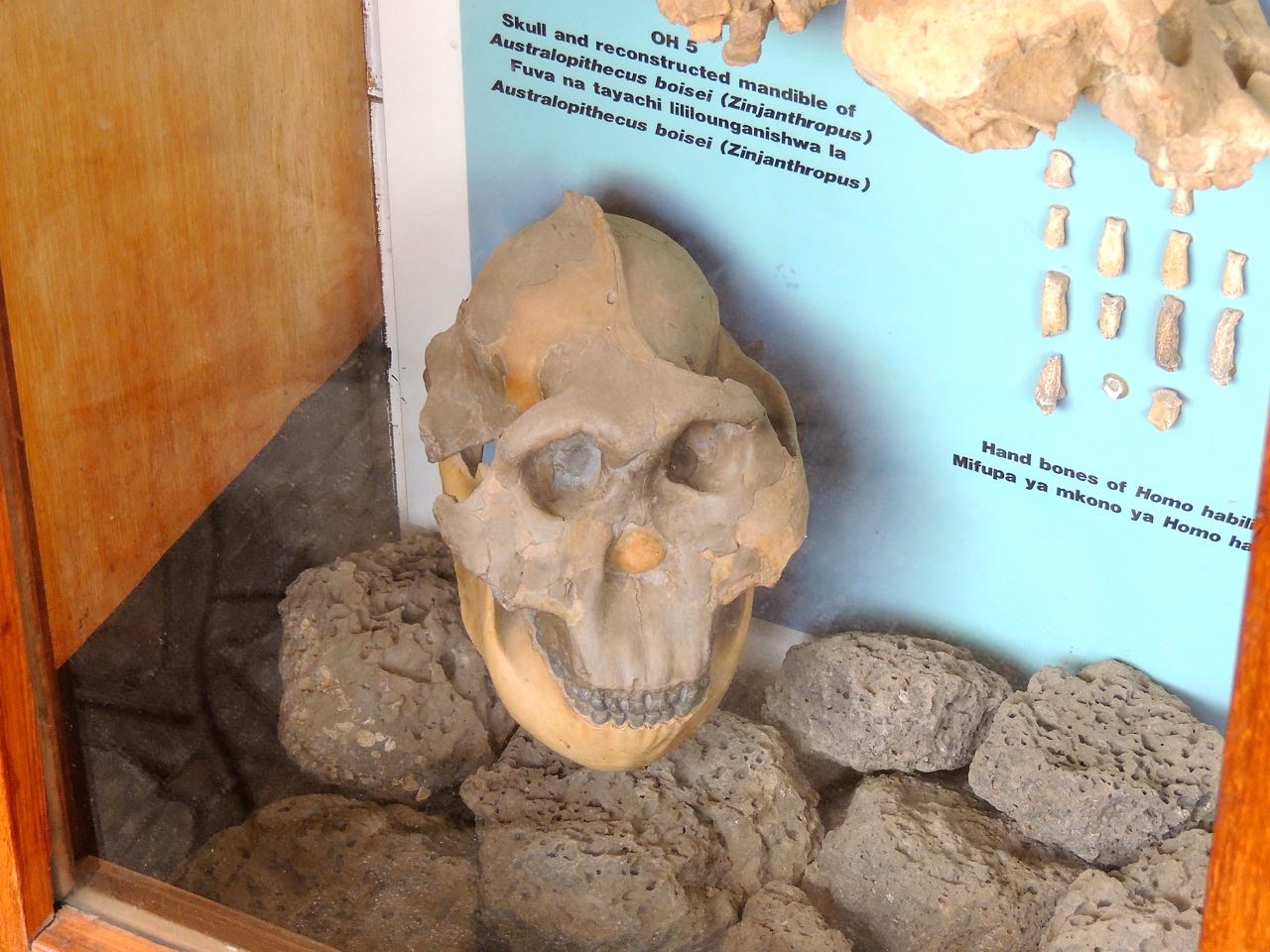 Olduvai Gorge Museum - Photo by William Young
Olduvai Gorge Museum - Photo by William Young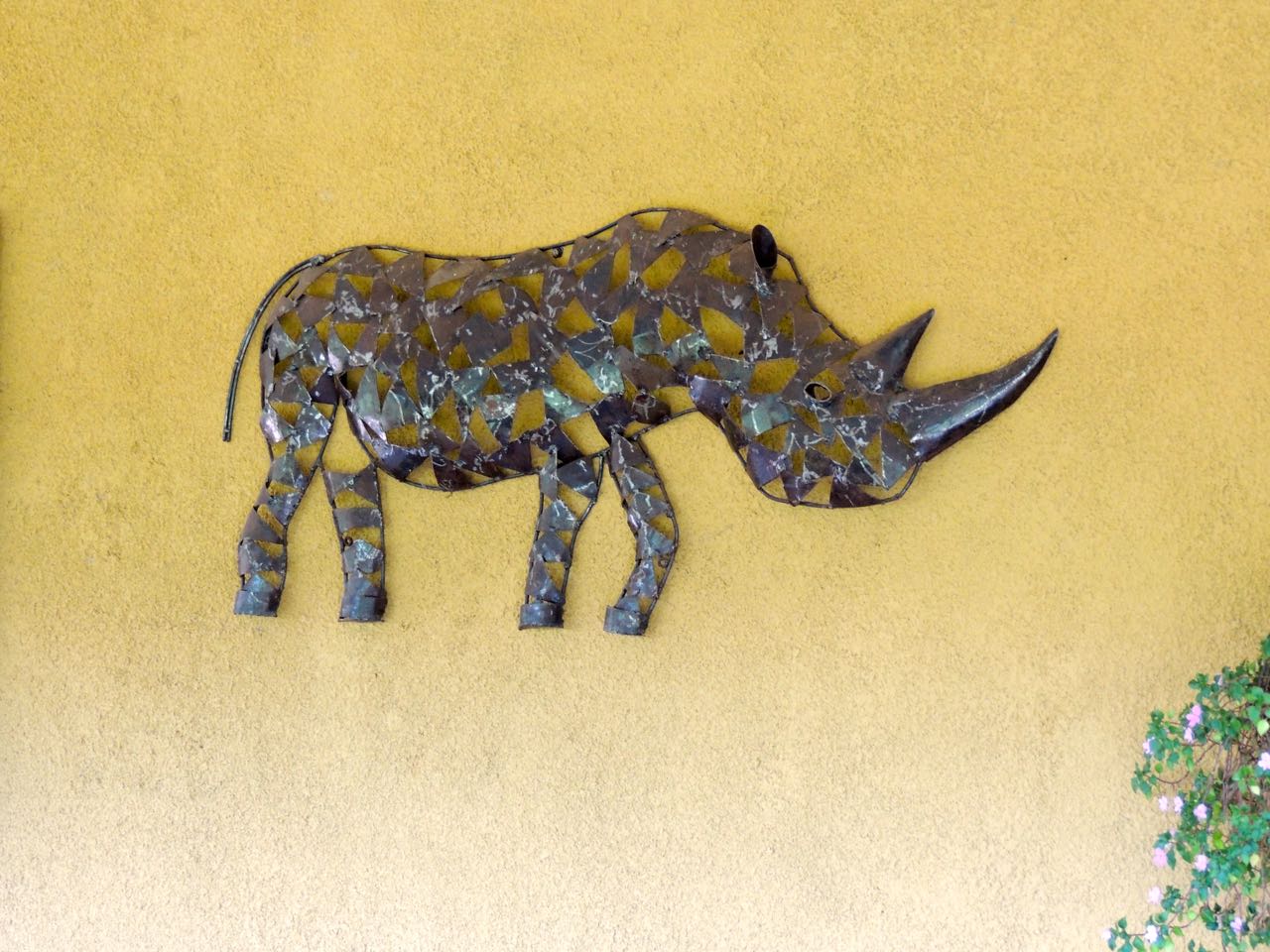 Rhino Lodge - Photo by William Young
Rhino Lodge - Photo by William Young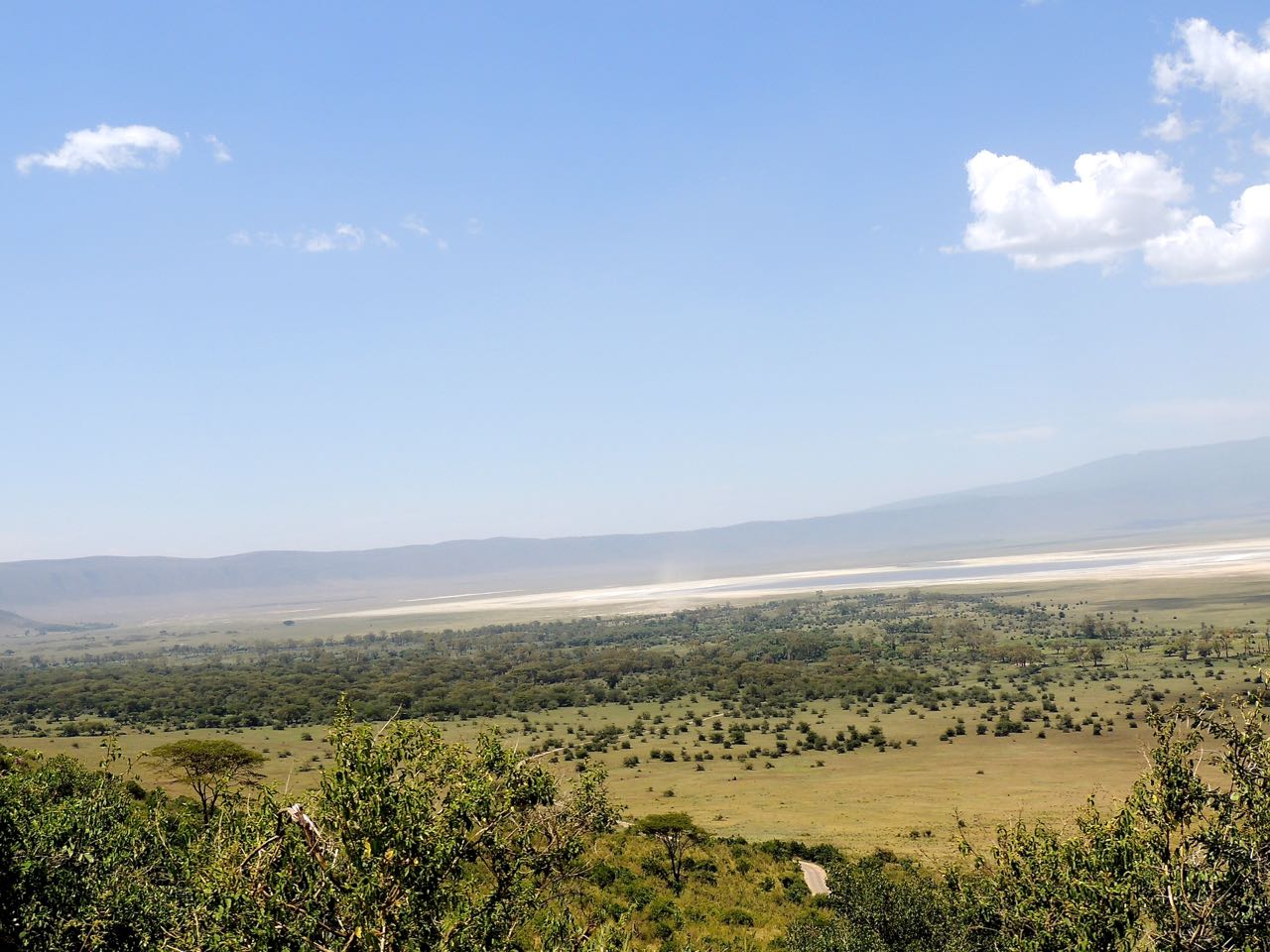 Ngorongoro Crater - Photo by William Young
Ngorongoro Crater - Photo by William YoungWe left the Rhino Lodge at 9:30 on the 7th and headed for Lake Manyara. The lake's name comes from the Maasai word "manyara", which is a plant whose common names include firestick plant, Indian tree spurge, naked lady, pencil tree, pencil cactus, sticks on fire, and milk bush. The Maasai use this plant to grow livestock stockades, eventually producing a stock proof hedge which is more durable than those built of thorn. We had planned to stay near Lake Manyara overnight, but we changed our plans due to the drought in the area. Instead of water from the lake being relatively near to the road for good wildlife viewing, it was more than a half a mile away. The beginning of March is supposed to be the rainy season in this part of Tanzania, which is why the tour companies consider it to be the low season and also why Martin and I had most of the parks and accommodations to ourselves. We did not see a drop of rain during our first three weeks of the trip. While a lack of rain might be a benefit for tourists on holiday, it can be disastrous for farmers in Tanzania who work fields that are not irrigated. Without rain, they cannot grow crops to feed their families and to earn money to live. That is one reason that the predicted droughts due climate change could have such devastating effects on this part of the world.
Instead of staying at Lake Manyara, we went to Tarangire and stayed at the Naitola Camp for three nights, which was very pleasant once we got there. On the way in, we drove through acacia scrub for about thirty minutes before someone from the camp came and found us. For many of these places, there not only were no signs to tell you which roads to be on, but there were no roads. I am amazed we did not get lost more often. There was no electricity at the camp, but we did fine without it. Because we were at a lower elevation, the temperature was much warmer than at Ngorongoro. On the 8th, we birded around the camp. On the 9th, we drove to a nearby river in the hope of seeing elephants coming in to drink. When we arrived, we found the riverbed was dry, but there was fresh elephant dung. During the entire trip, we saw a lot of dry riverbeds. Later that day, we went to an overlook to watch the sunset. Then we went for our only night drive of the trip. We spent the 10th exploring Tarangire National Park, including the Silale Swamp. The park is approximately 2,600 square kilometers within an ecosystem of more than 20,000 square kilometers on the Maasai steppes. It is the best park in Africa for elephants, with a population of more than 3,000.
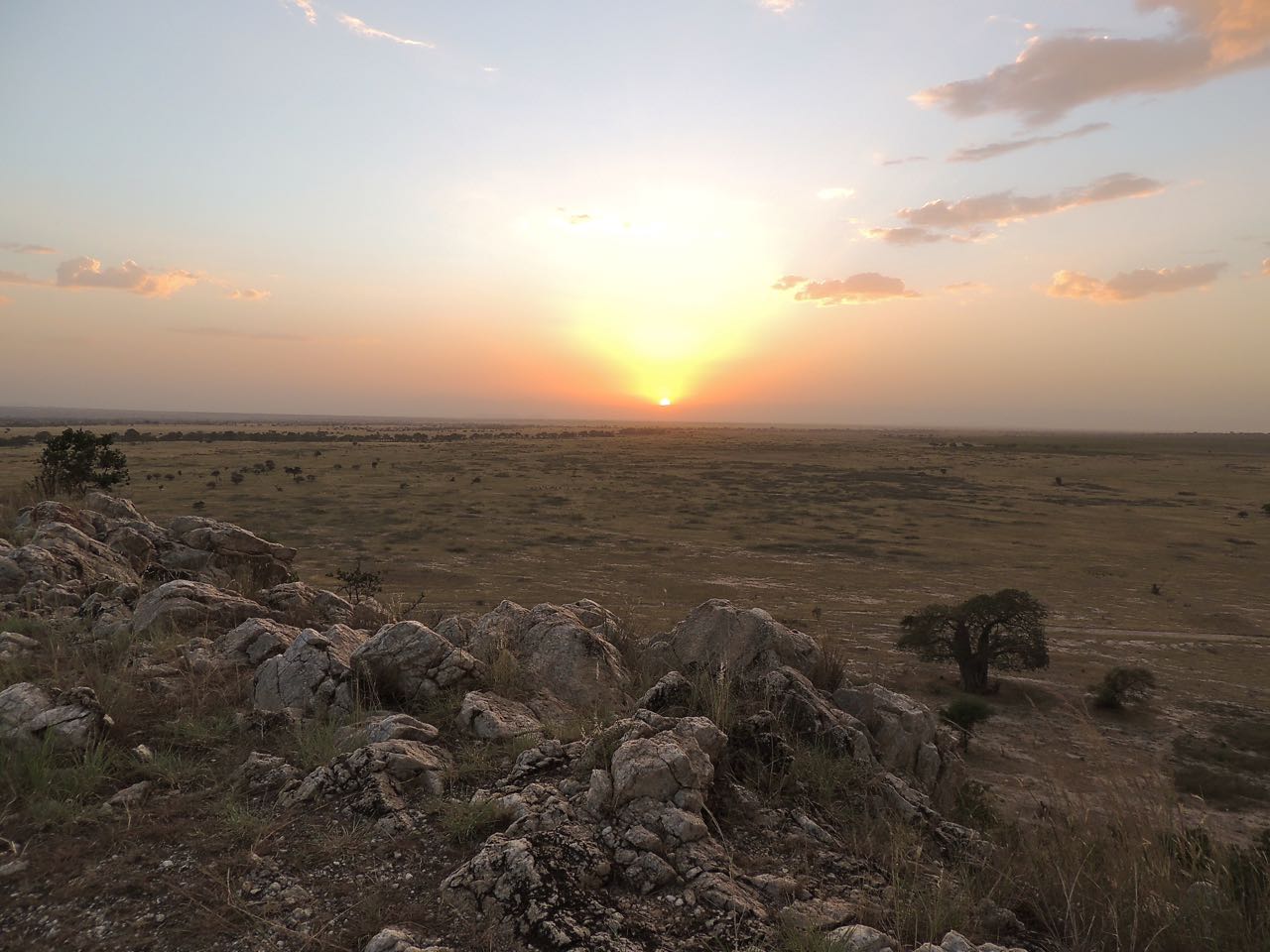 Naitola Camp - Photo by William Young
Naitola Camp - Photo by William Young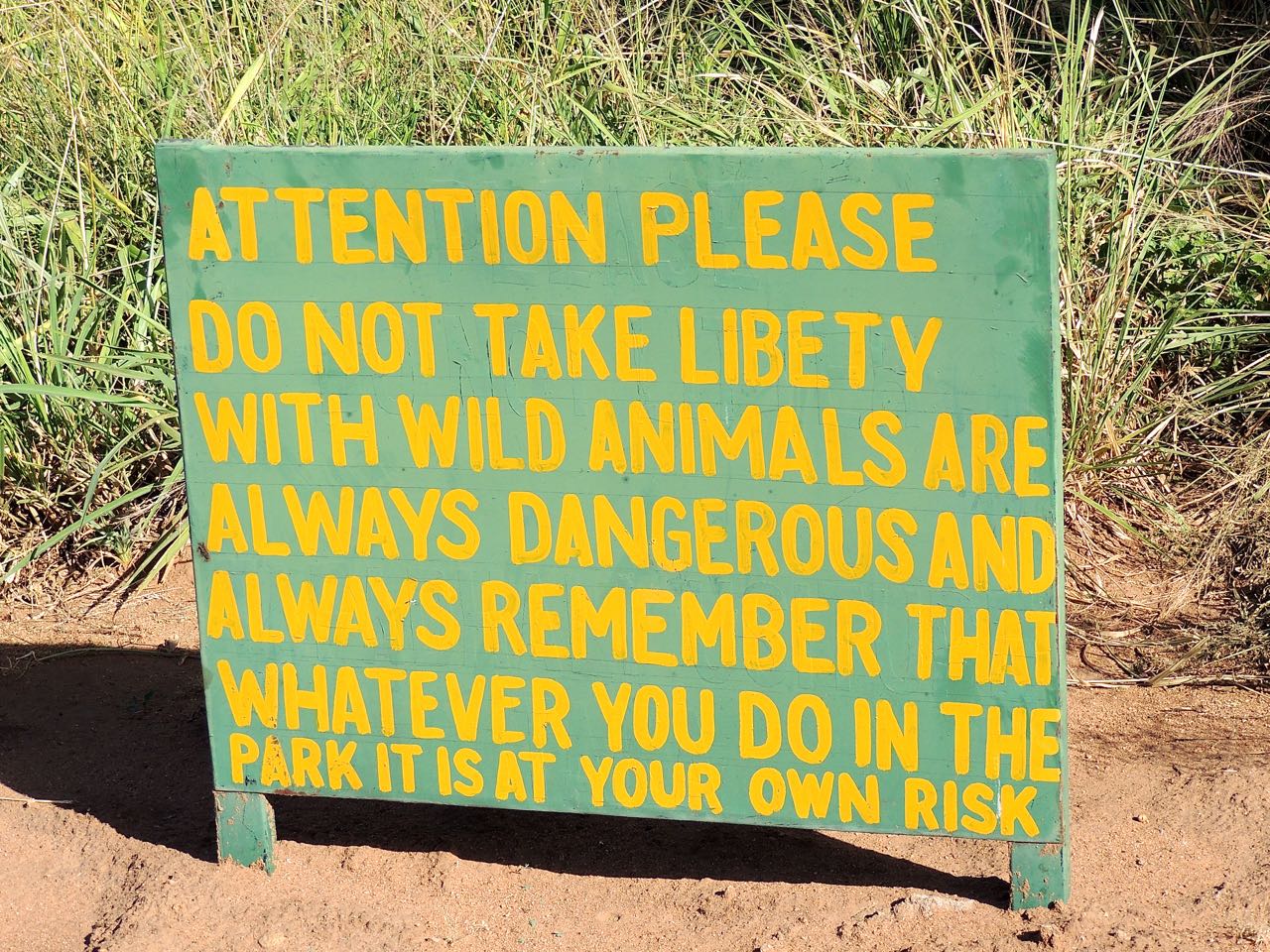 Tarangire National Park Sign - Photo by William Young
Tarangire National Park Sign - Photo by William YoungWe spent the evening of the 10th at the Karibu Heritage House in Arusha. "Karibu" is the Swahili word for welcome. On the 11th, we drove to a desert area to see the rare endemic Beesley's Lark. From this area, we had clear views of both Mount Kilimanjaro and Mount Meru. We had lunch with Simon King, an Australian who lives in Arusha and runs the tour company that set up our trip. We ate on the veranda next to his garden. We then drove to Arusha National Park, which lies between the peaks of Mount Kilimanjaro and Mount Meru. Most of Mount Meru, which is almost 15,000 feet high, is inside the park. The summit of Mount Meru is called Socialist Peak, a name given after the transition from colonialism to independence under Julius Nyerere. It is Tanzania's second highest mountain. Arusha National Park has many habitats, including a string of crater lakes, highland montane forest, and the summit of Mt. Meru. The park has only 337 square kilometers and derives its name from the Warusha tribe who live on the slopes of Mt Meru. We went to the Mikindu Observation Point, which overlooks fields where animals sometimes congregate. We stayed at the Momela campsite, which is in an area called Gongongare. While there, we saw our first fireflies of the trip. A guide named Mutobha from the park came and slept in our camp. He carried his AK-47 with him at all times. He knew a lot about birds, and on the 12th, he took us for a walk in an area near the camp. We spent the afternoon driving around the area near our campsite. On the 13th, we did more exploring around Arusha, going to a vista where we could see all of the lakes.
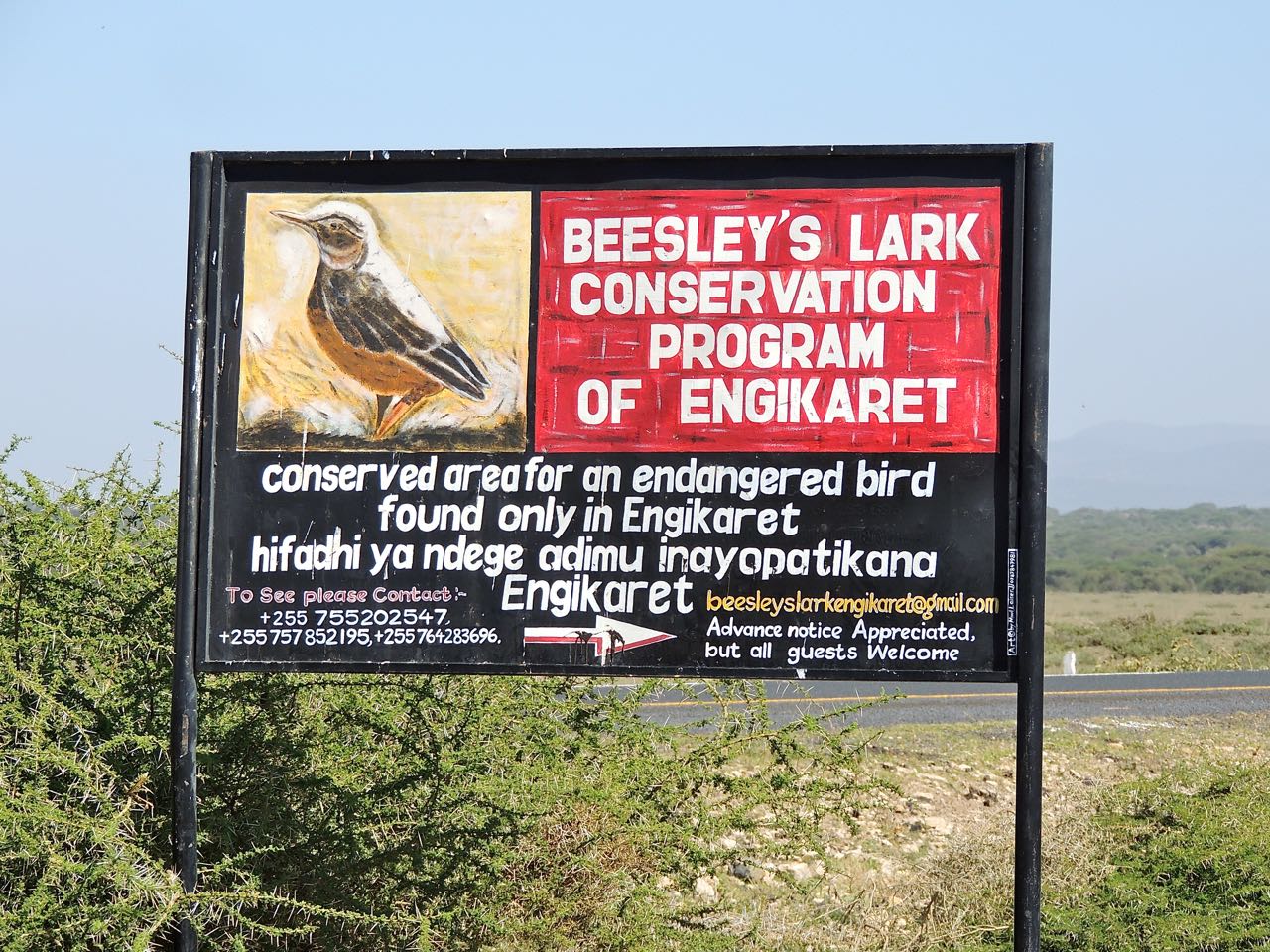 Beesley's Lark Conservation Area - Photo by William Young
Beesley's Lark Conservation Area - Photo by William Young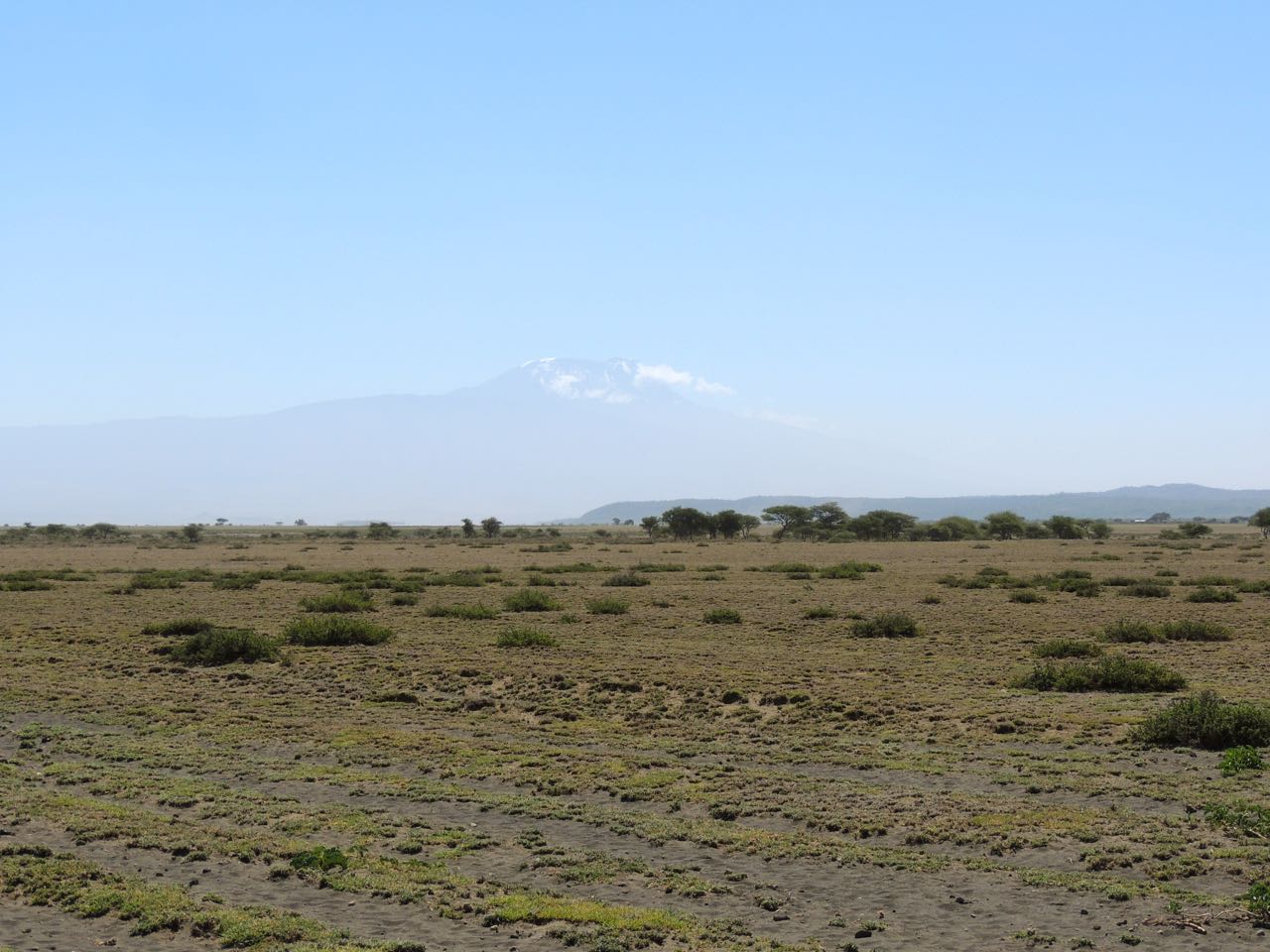 Mount Kilimanjaro - Photo by William Young
Mount Kilimanjaro - Photo by William Young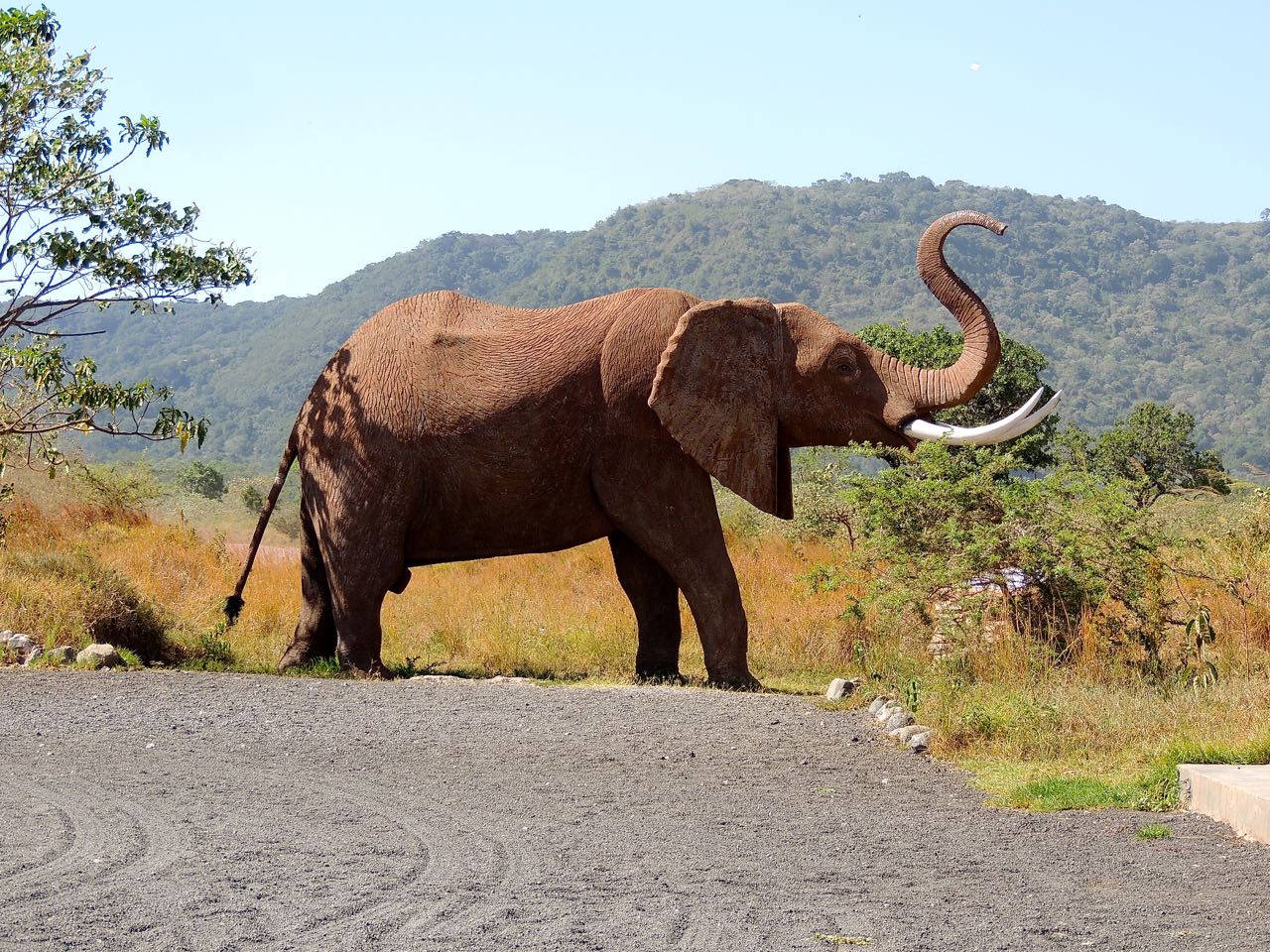 Arusha National Park - Photo by William Young
Arusha National Park - Photo by William Young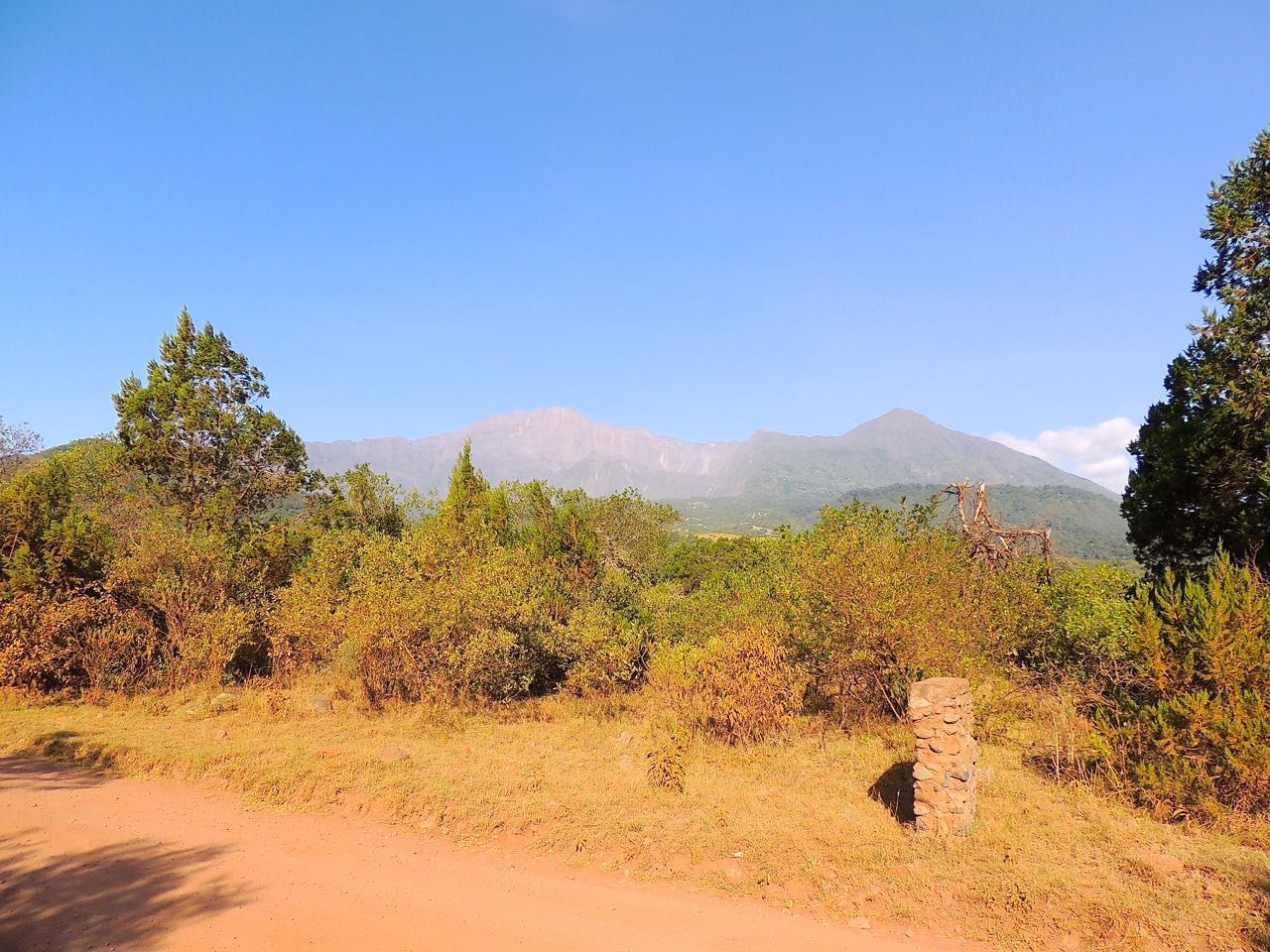 Mount Meru - Photo by William Young
Mount Meru - Photo by William Young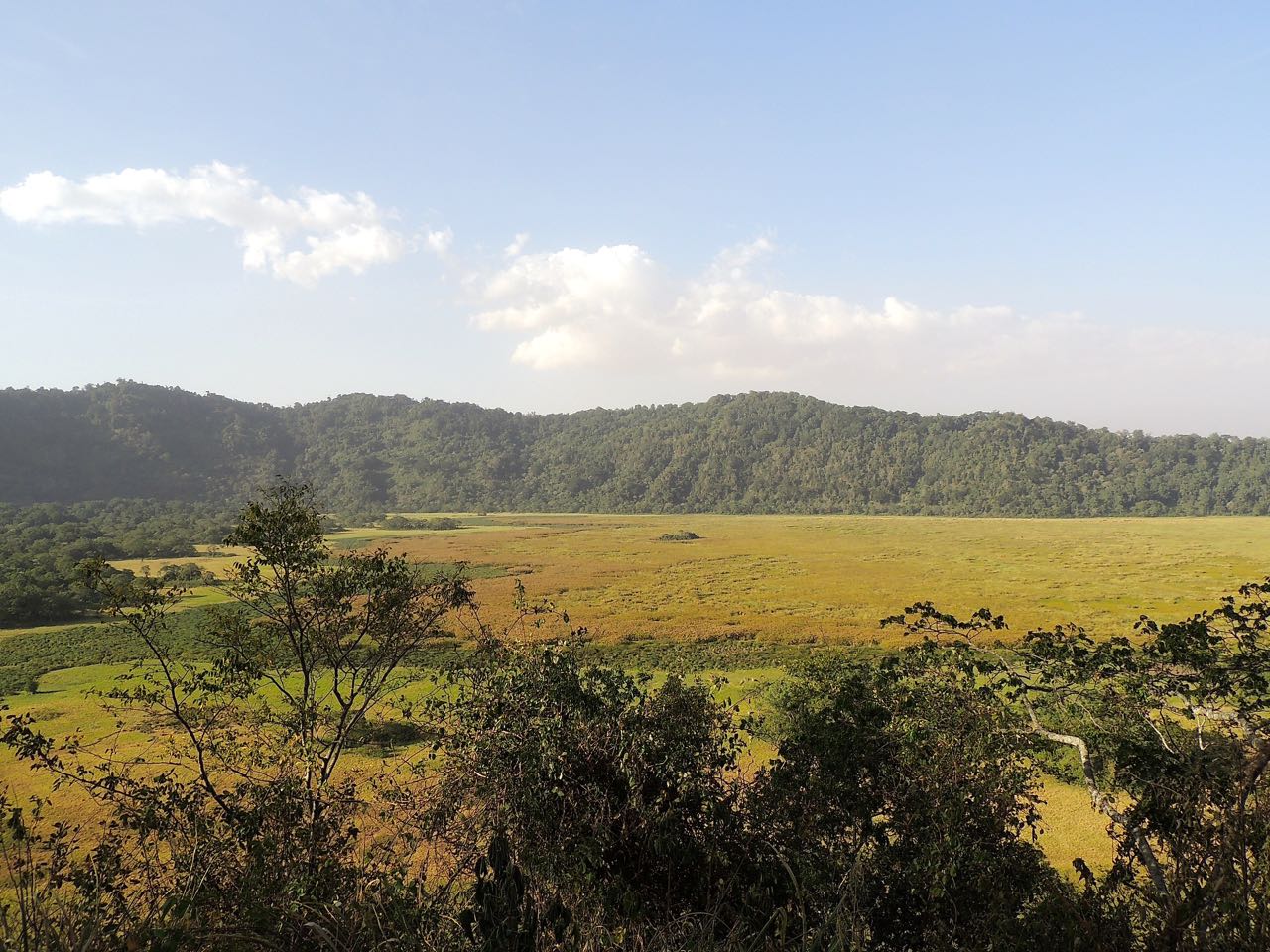 Mikindu Observation Point - Photo by William Young
Mikindu Observation Point - Photo by William Young Gongongare - Photo by William Young
Gongongare - Photo by William Young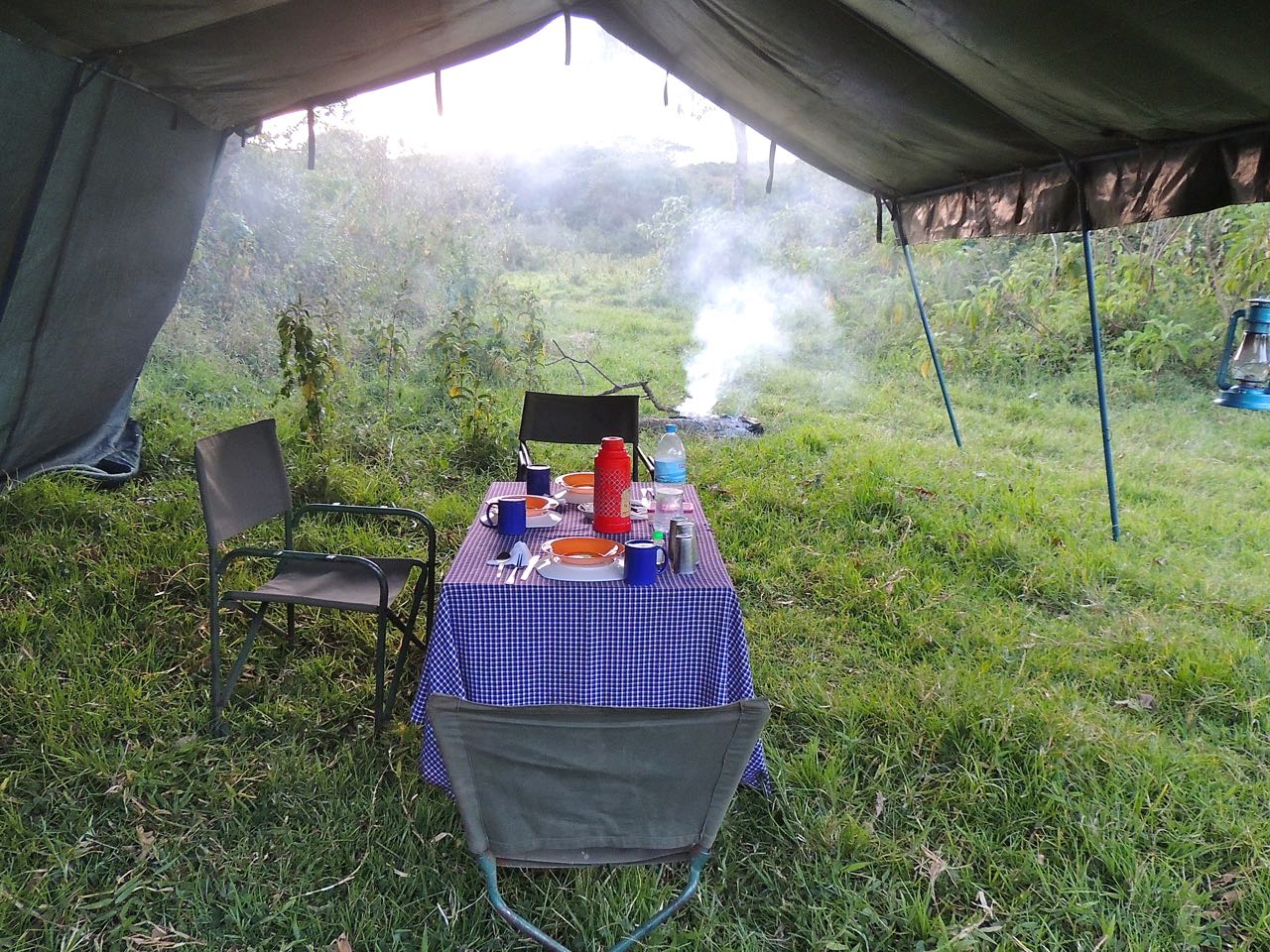 Momela Campsite - Photo by William Young
Momela Campsite - Photo by William Young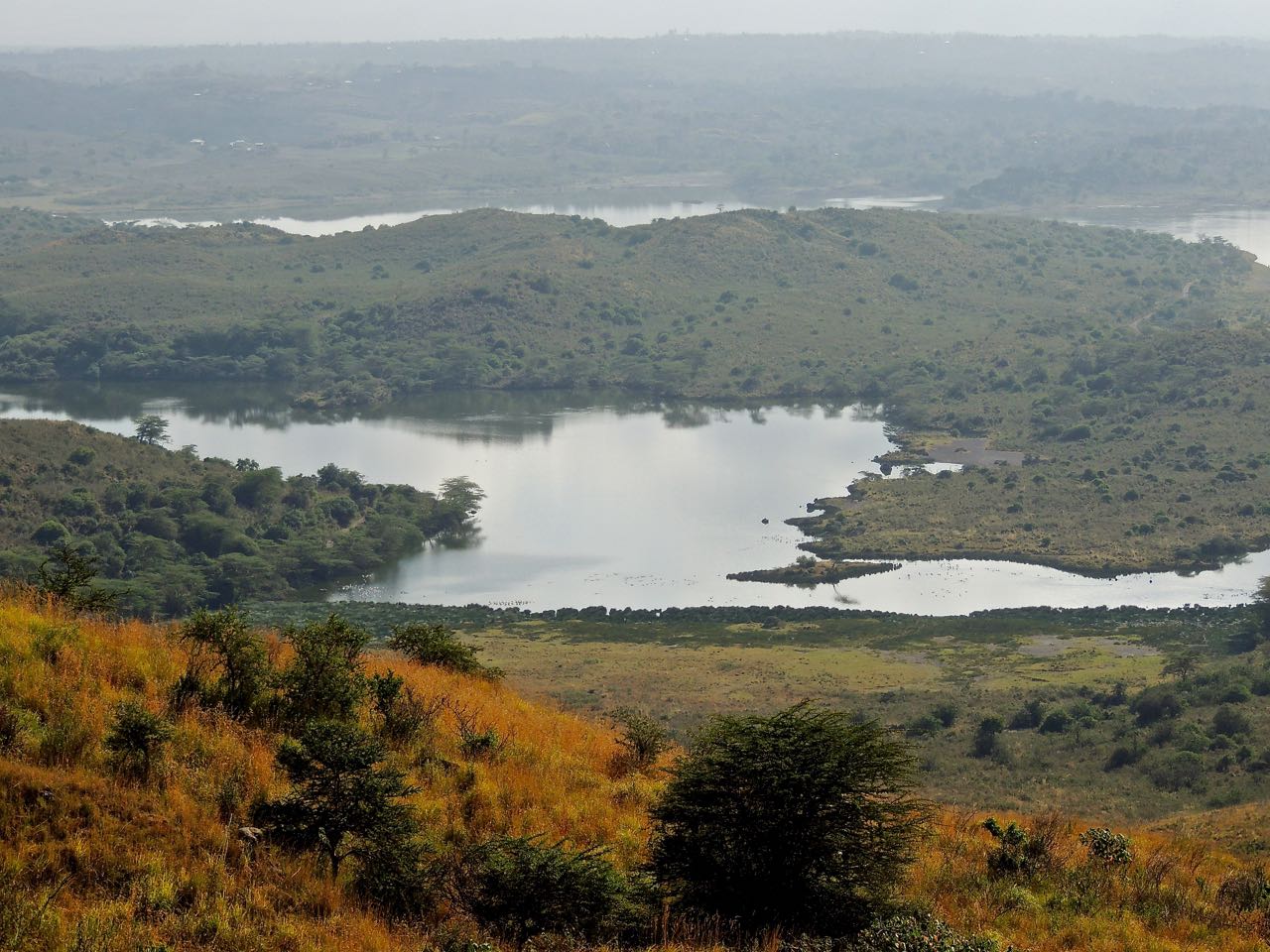 Momela Overlook - Photo by William Young
Momela Overlook - Photo by William YoungWe then headed toward Mkomazi, which is Tanzania's newest and largest park. It is located in a stretch of land behind the Pare and Usambara Mountains. Mkomazi is connected to the Tsavo National Park of Kenya. The trans-border national park is the largest of its type in the world, with more than 26,000 square kilometers. It had taller grass than some of the other parks we had visited because there was not as severe a problem with overgrazing. It used to be a hunting reserve, and the animals there are still wary of humans from the hunting days. Once when we were in the park, we saw a Maasai boy running away when he saw us. He was not legally supposed to be there. We drove through Moshi, which was one of the most prosperous towns we saw. We then drove through Mwanga and reached Same (pronounced Sam-ay), where we stayed at the Elephant Motel for an evening. I was able to shower for the first time in a few days and clean numerous layers of dirt from my body. I was also able to wash a lot of dirt from my clothing. On the 14th, we went to the Dindira camp site where we stayed for two evenings. We were a short drive from elevated areas that allowed a good view of the lake and its surroundings.
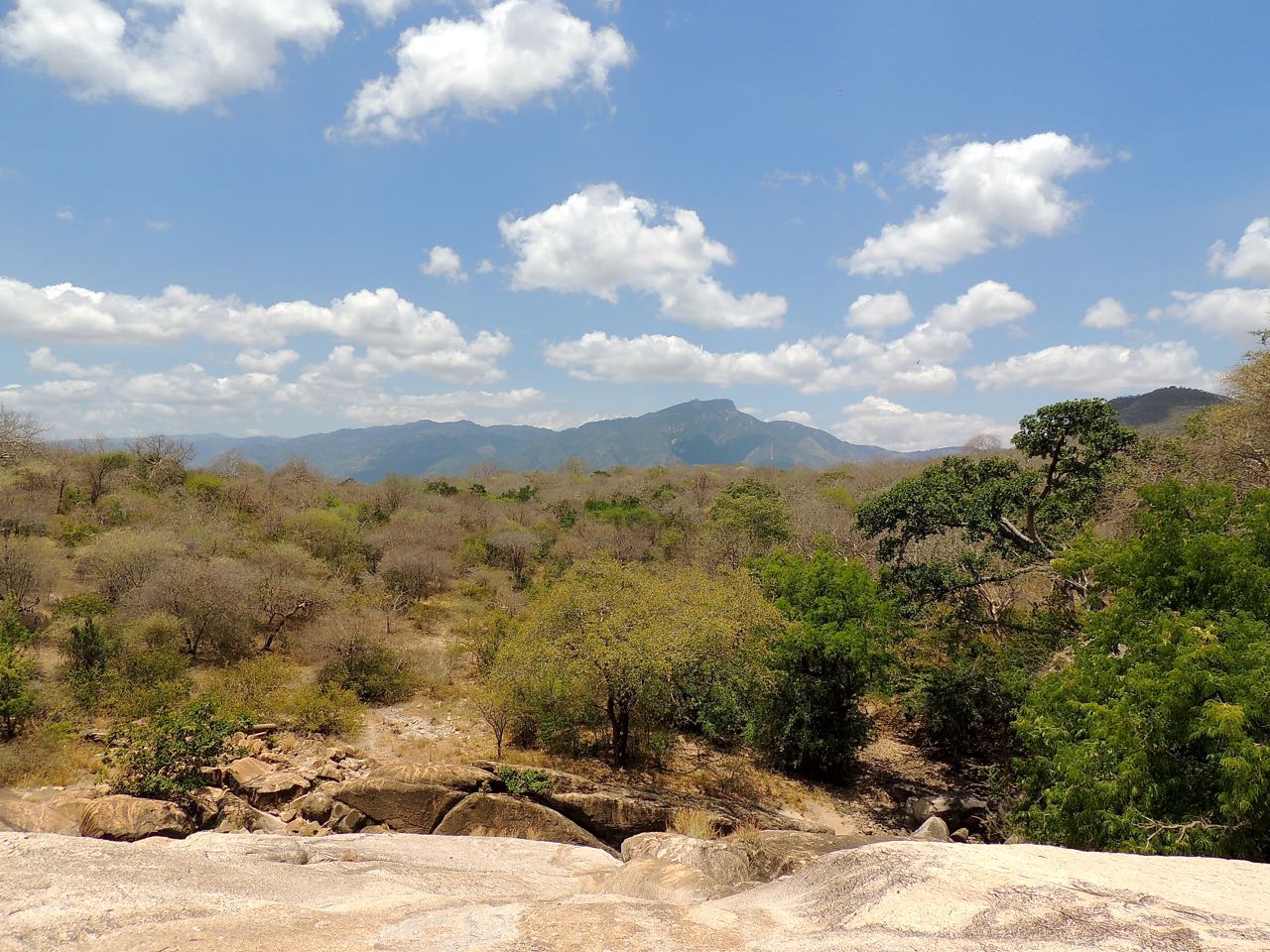 Pare Mountains - Photo by William Young
Pare Mountains - Photo by William Young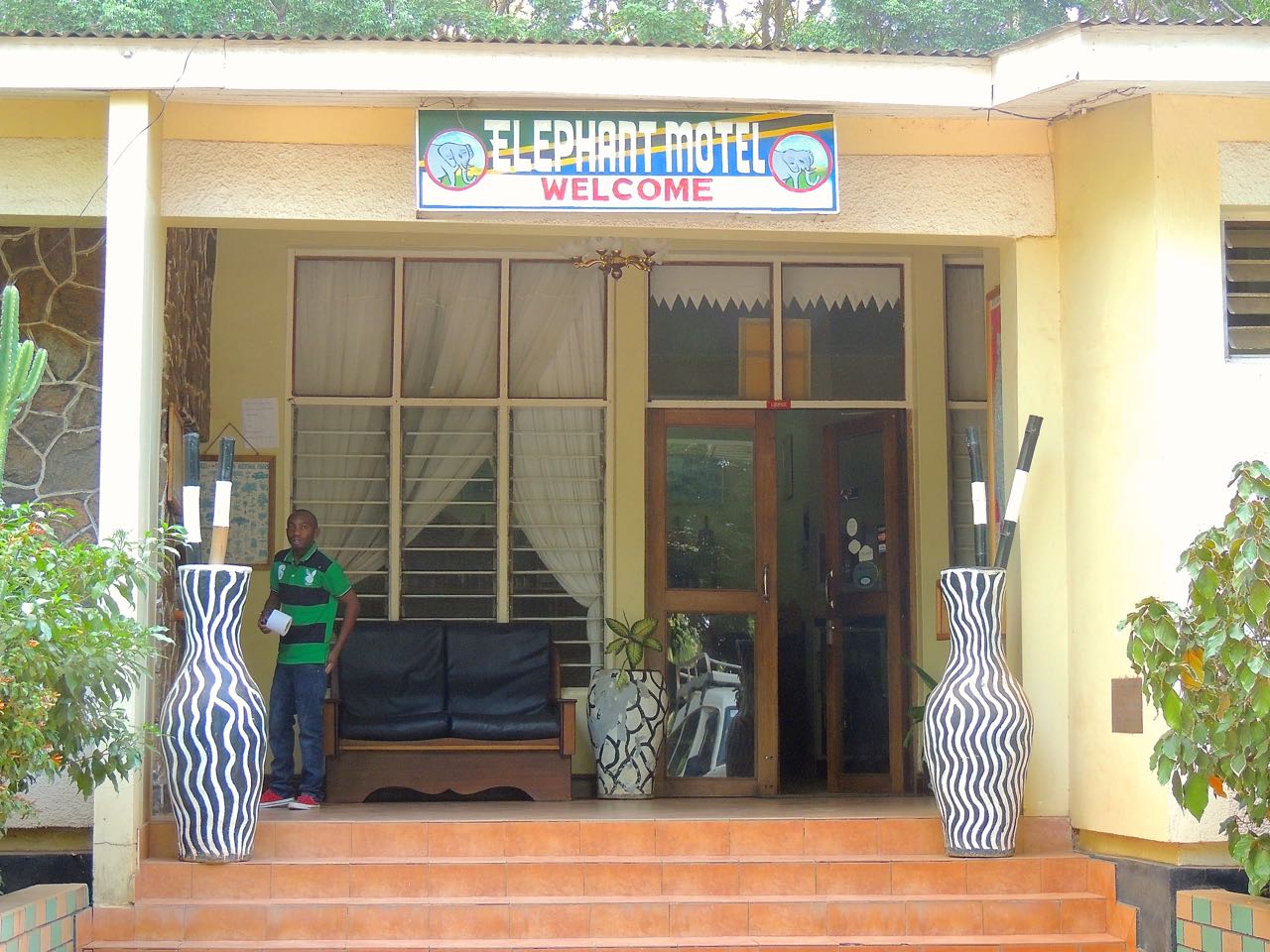 Elephant Motel - Photo by William Young
Elephant Motel - Photo by William Young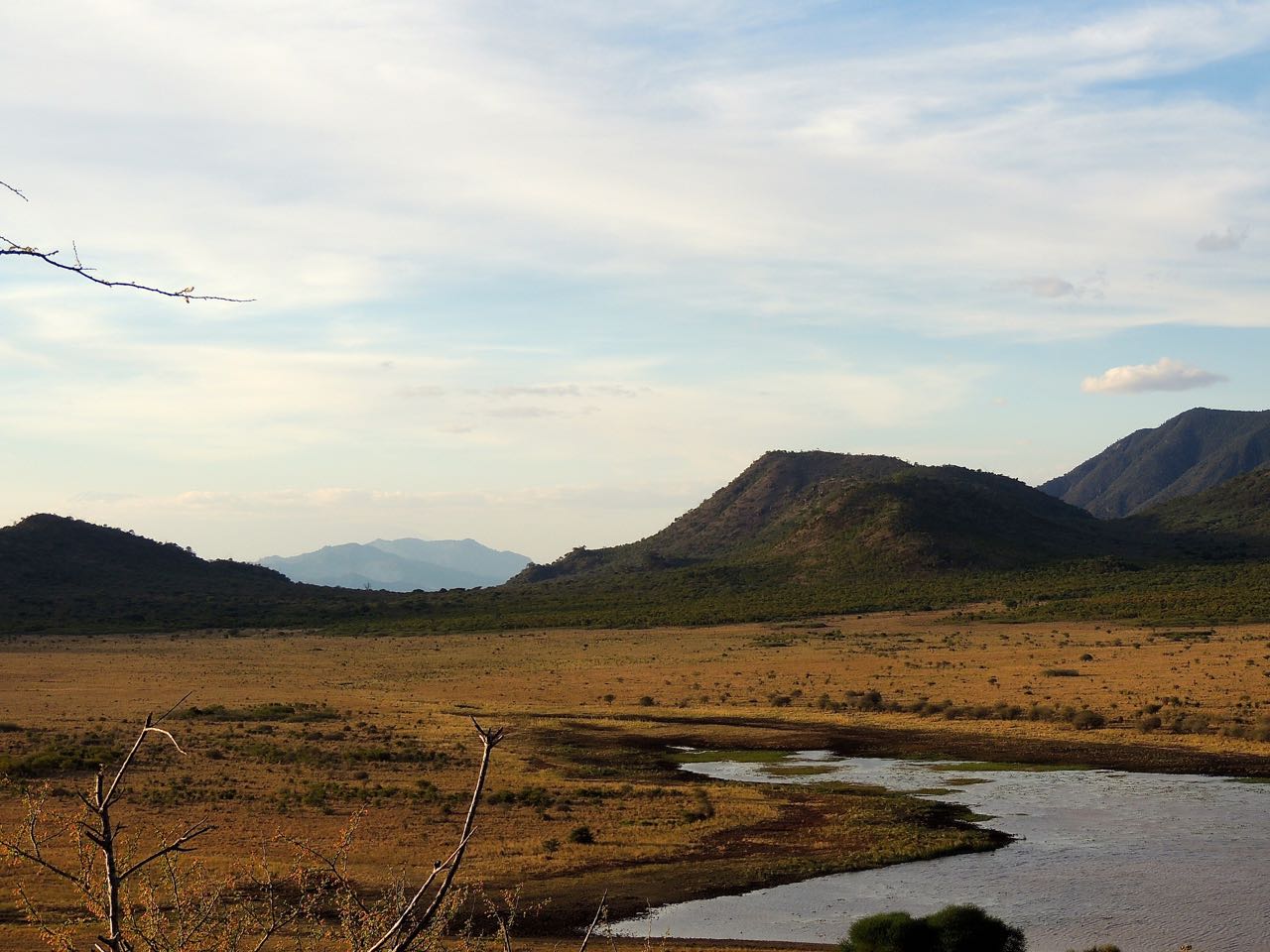 Dindira - Photo by William Young
Dindira - Photo by William Young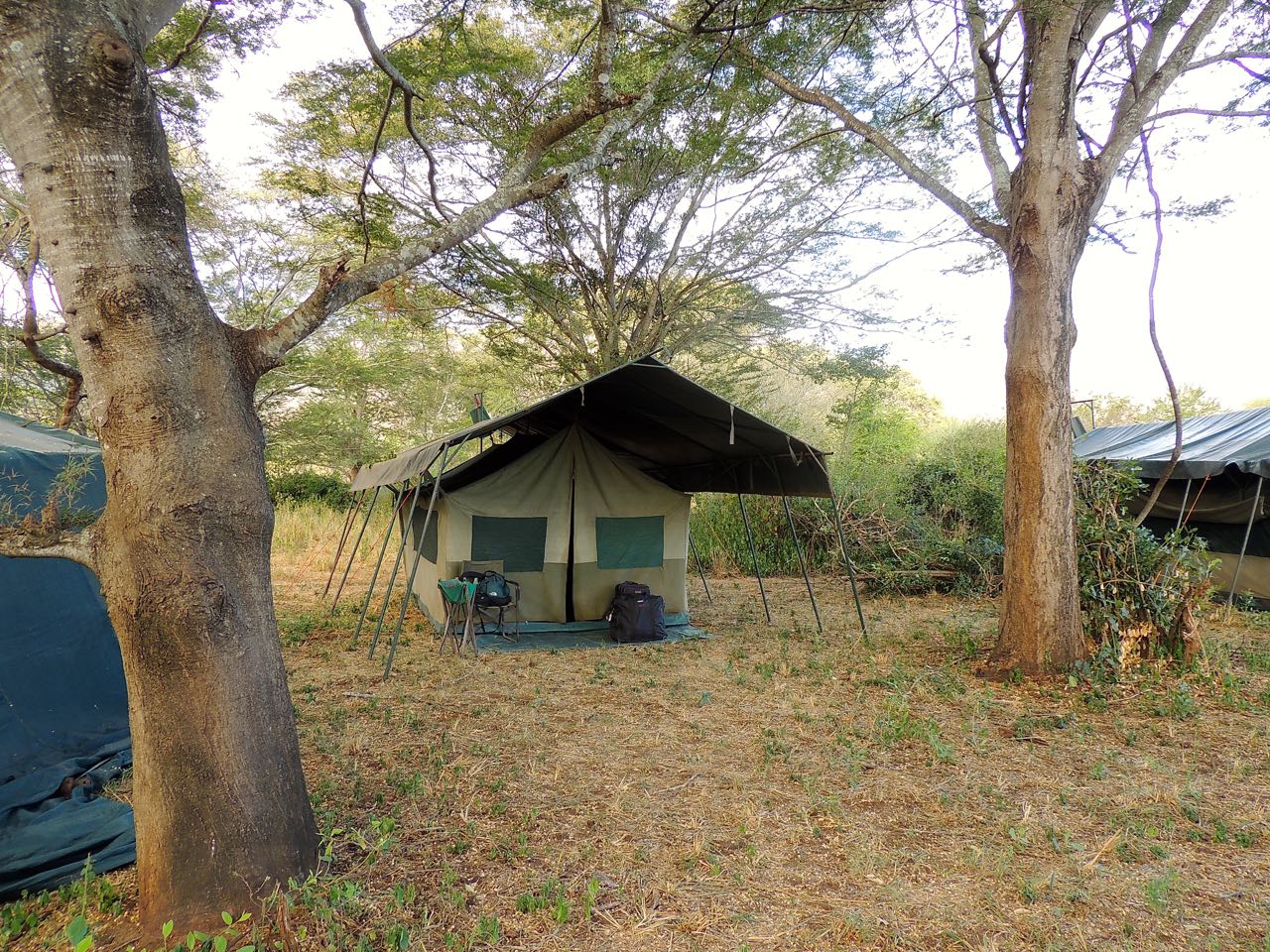 Dindira Campsite - Photo by William Young
Dindira Campsite - Photo by William YoungOn the 16th, we headed for the Amani Nature Reserve and stayed at the Amani Guesthouse for the following three evenings. Amani was different from all of the other places we had visited. A lot of natural history research is done there. In addition to the researchers in the area, there are about 20 villages, each of which has about 2,000-3,000 people. The area was like a large town or small city. A lot of people on motorbikes zoomed through. The nature reserve is part of the Eastern Arc Mountains, a group of biodiversity hotspots stretching from the Taita Hills in Kenya to the Udzungwa National Park in Tanzania, noted for their high number of endemic species. The habitat has rain forest, and there were a lot of tall trees, unlike the shorter trees we had encountered on our journey to this point. The rain forests are more than 30 million years old and have been evolving in isolation from the West African tropical forest for at least 10 million years. The Amani forests are particularly important because they are close to the Indian Ocean, have high humidity all year, and receive more than 10 centimeters (4 inches) of rain each month. During our stay at Amani, we used a local guide named Martin, who was quite good at finding birds. The area was settled in the late 19th century by German immigrants, and a lot of the area outside the Amani Forest Reserve is dedicated to tea production, terraced on the steep slopes of the mountain ranges. One afternoon, we took a walk in the rain forest. We did not see many birds, but being in a rain forest was exciting. This rain forest seemed a little different from some of the ones I have walked through in Australia and the American tropics, because there were more open areas. It was also good to be hiking after so many days of being jostled in the Range Rover.
 Amani Tea - Photo by William Young
Amani Tea - Photo by William Young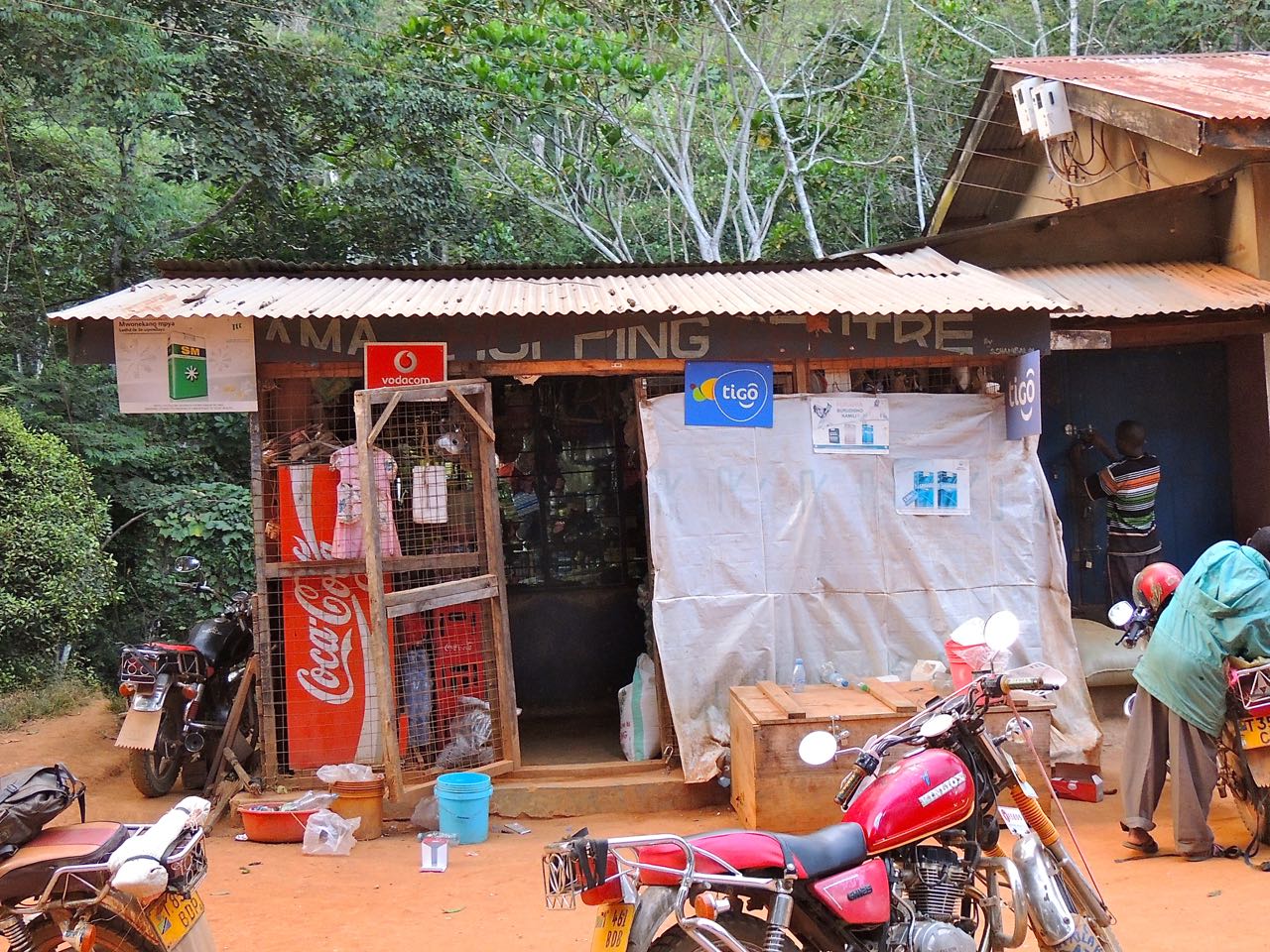 Amani Shopping Centre - Photo by William Young
Amani Shopping Centre - Photo by William YoungAt Amani, we met a couple named Tony (from Sweden) and Iskra (from Bulgaria) who were in the midst of a seven-month tour around Africa. On March 19, we gave them a lift into the nearby town of Muheza and continued on through the towns of Mkata, Kmange, and Lugoba before eventually reaching Morogoro. We stayed at the Arc Motel, which provided a bit of a respite from the camping. We could take hot showers, and there was electricity and Wi-Fi in the rooms. I heard loud chirping from a large House Sparrow roost outside my room. Before dawn, there was a loud chorus of frogs.
March 20 was probably the worst day of the trip. We tried to go to the Uluguru Nature Reserve. We had to drive for more than two hours on some of the worst roads we encountered on the trip. The reserve has rare endemic bird species such as Mrs. Moreau's Warbler. It is also called Winifred's Warbler by those who were on more familiar terms with Mrs. M. Mr. Moreau was a British civil servant who lived in the area in the 1930's, and he named the bird after his wife. The couple had a daughter they named Prinia, which is another nondescript little bird found in the area. We never reached the reserve. We experienced the first real rain of our trip, and when we were within ten kilometers of the entrance, we encountered a stretch of road that had been recently worked on, and it was a quagmire. Our vehicle became stuck in the mud, and with the help of some local people, we managed to get out of the mud and turned around so that we could go back to the motel. It was a market day, so while on our drive up and down the mountain, we saw people, mostly men, walking with 40+ pound stalks of bananas balanced on their head. I don't think there was a five-minute stretch when we did not pass people. In one stretch, we passed a school that appeared to be teaching young girls, many of them wearing a head scarf, how to hoe. At times, the rain was so heavy that streams of muddy water were running along the side of the road. A lot of men were trying to negotiate the difficult roads on motorbikes. Considering how difficult it was to reach our destination, Martin said that it might be in the Guinness Book of World Records as the least visited nature reserve in the world. Bernard said that we probably would have made it had it not been for the rain. We left our hotel right after breakfast, and being on such bad roads shortly after eating a big meal really upset my stomach. I felt as if I was in a low-speed blender for more than six hours. But once we got back to the hotel and I had a chance to lie down for a bit, I felt fine.
We left for Udzungwa on March 21. Udzungwa Forest National Park is the largest and most biodiverse of a chain of a dozen large forested mountains rising from the flat coastal scrub of eastern Tanzania. The mountains are known collectively as the Eastern Arc Mountains. This area is known for its endemic plants and animals. Udzungwa is the only one of the ancient ranges of the Eastern Arc that has been accorded national park status. It is also unique within Tanzania in that its closed-canopy forest spans altitudes of 250 meters (820 feet) to above 2,000 meters (6,560 feet) without interruption. We stayed for four nights at a campsite called Hondo Hondo, which means "hornbill".
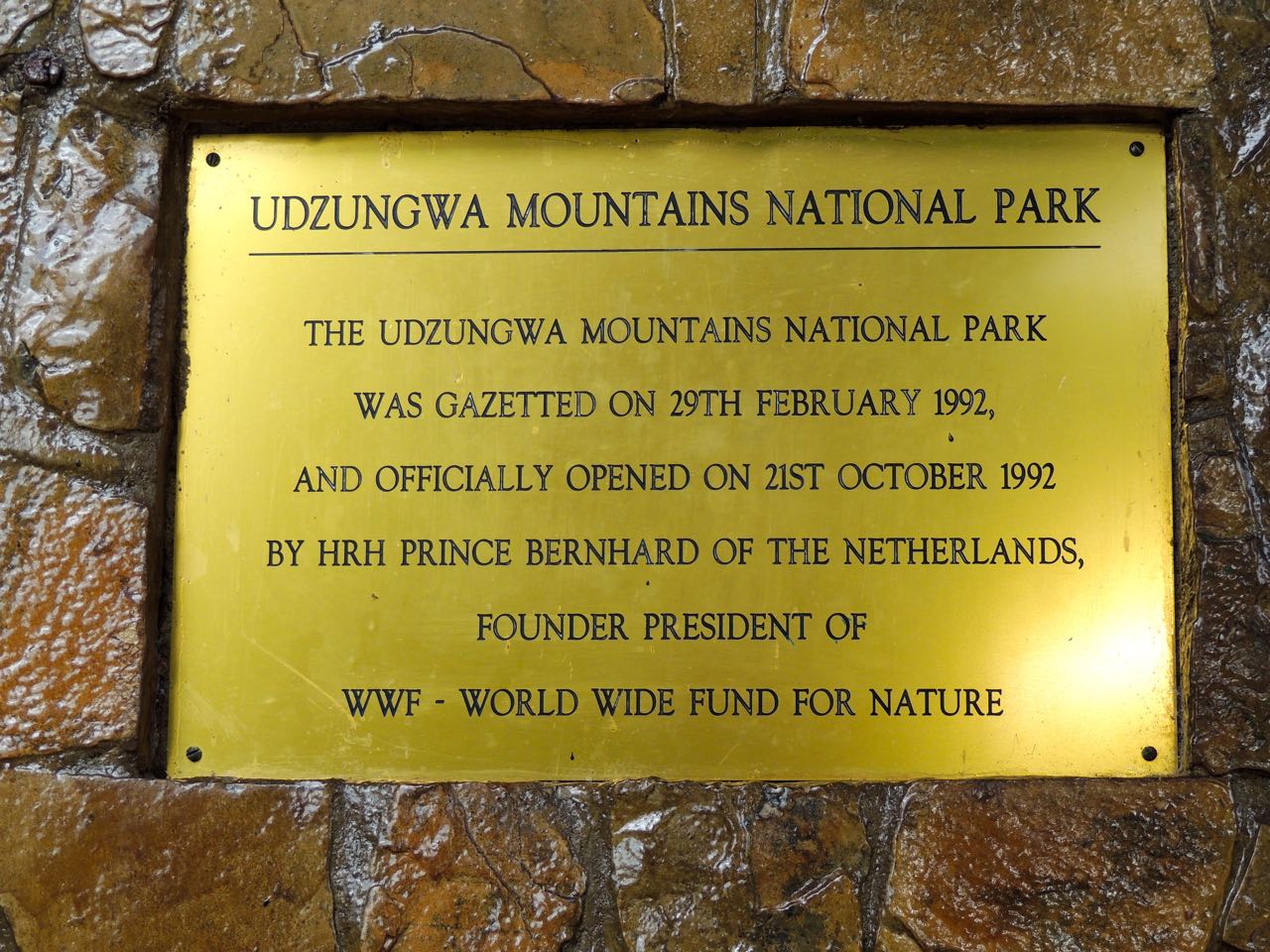 Udzungwa Forest National Park - Photo by William Young
Udzungwa Forest National Park - Photo by William Young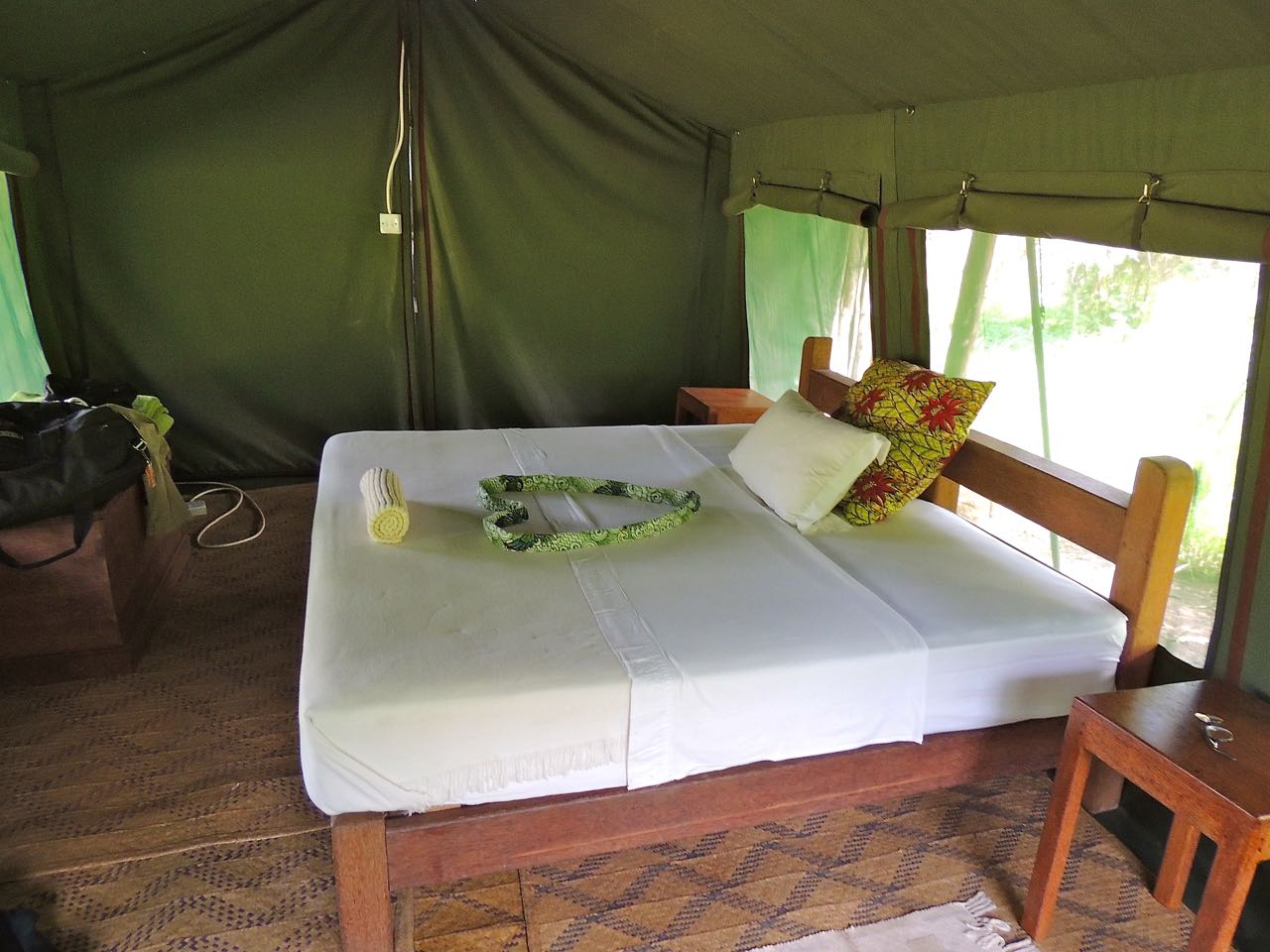 Hondo Hondo Campsite - Photo by William Young
Hondo Hondo Campsite - Photo by William YoungOn the 22nd, we explored some of the steep rain forest trails in the park. A young guide led us into foliage that was so dense that we could not see much. It was a bit like a Marines basic training hike, with the added features of biting ants and thorny plants.
On the 23rd, we drove to Kilombero, which was about 90 minutes from the Hondo Hondo camp. It was one of the liveliest villages/towns we encountered on our trip. We hired a boat and took a ride on the Kilombero River. On the 24th, we drove to another part of Udzungwa in the rain. Many of the paths we wanted to walk on had ankle-deep water from the rains the previous evening, so we were unable to get through. In the afternoon, we walked through some of the agricultural fields near our campsite. We had to cut this walk short because of a rainstorm that we could see coming toward us.
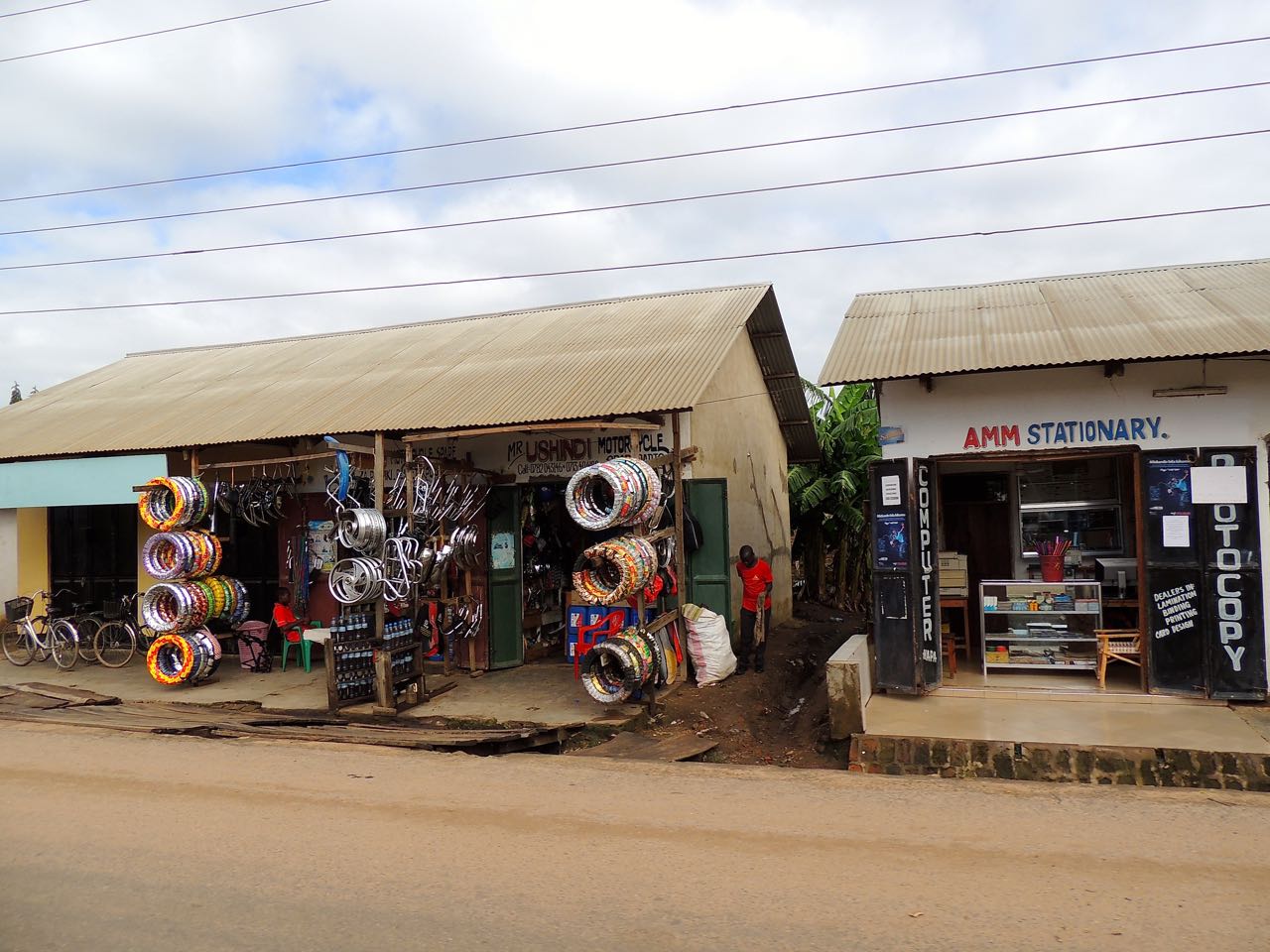 Road to Kilombero - Photo by William Young
Road to Kilombero - Photo by William Young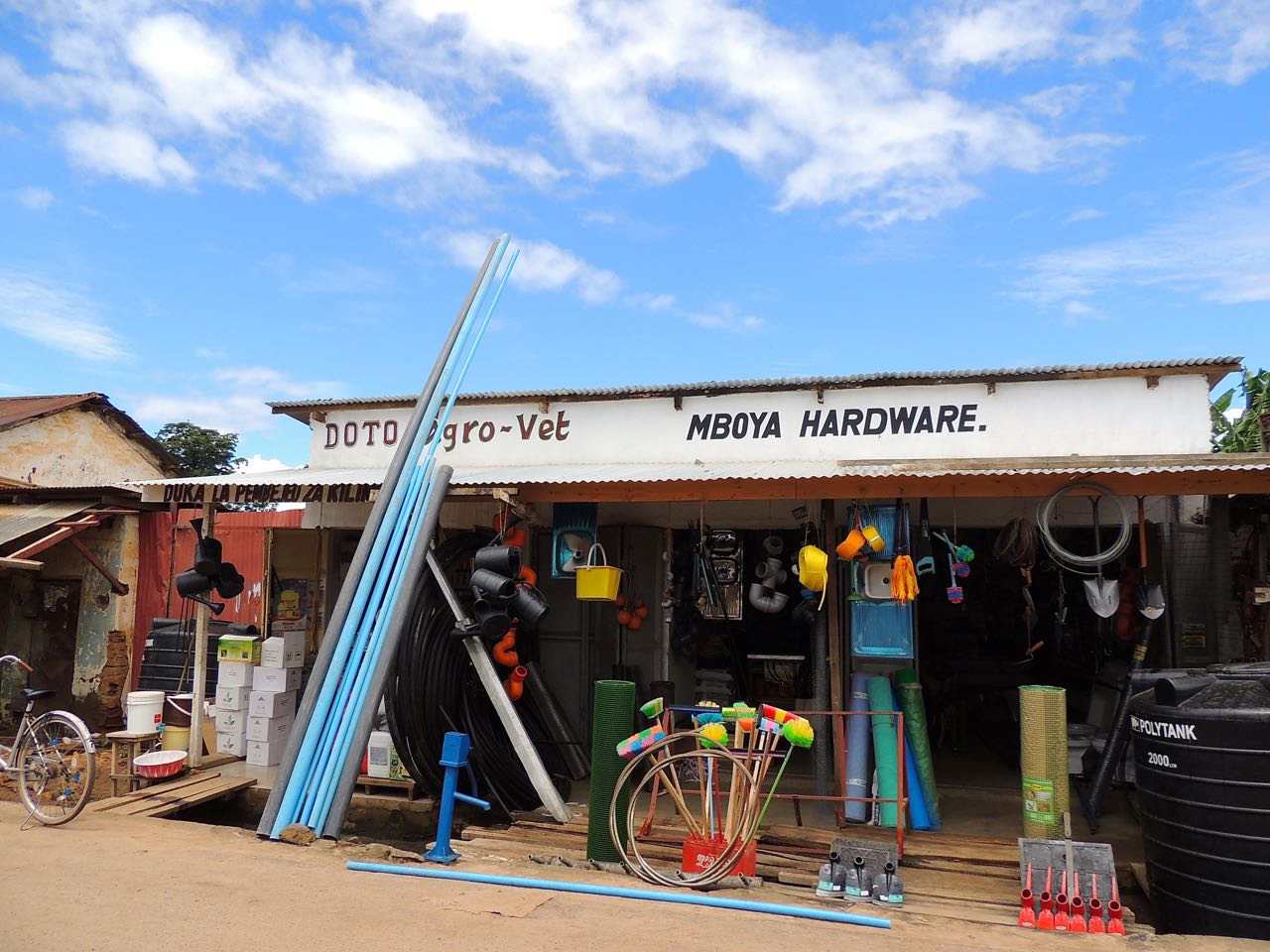 Road to Kilombero - Photo by William Young
Road to Kilombero - Photo by William Young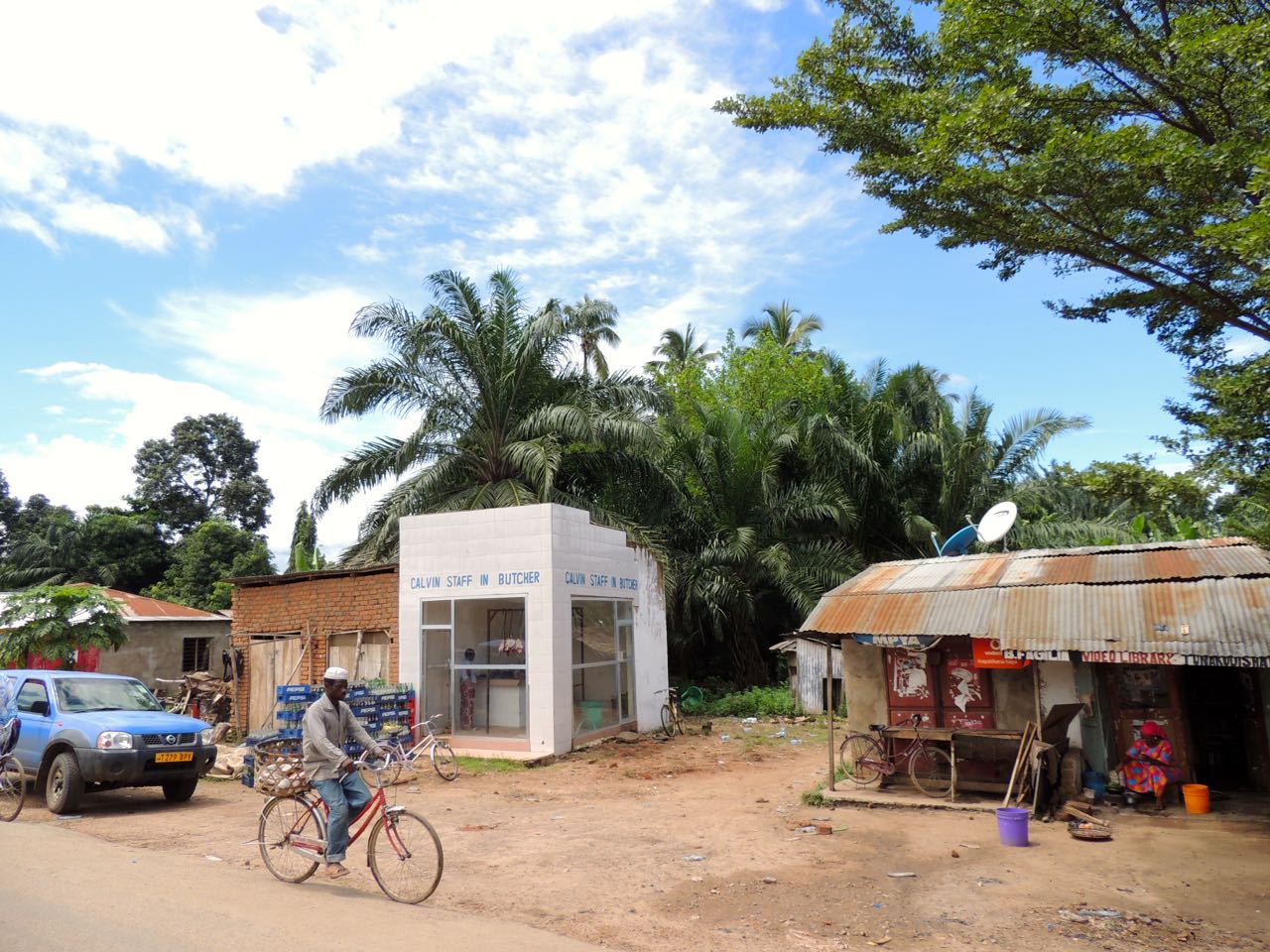 Road to Kilombero - Photo by William Young
Road to Kilombero - Photo by William Young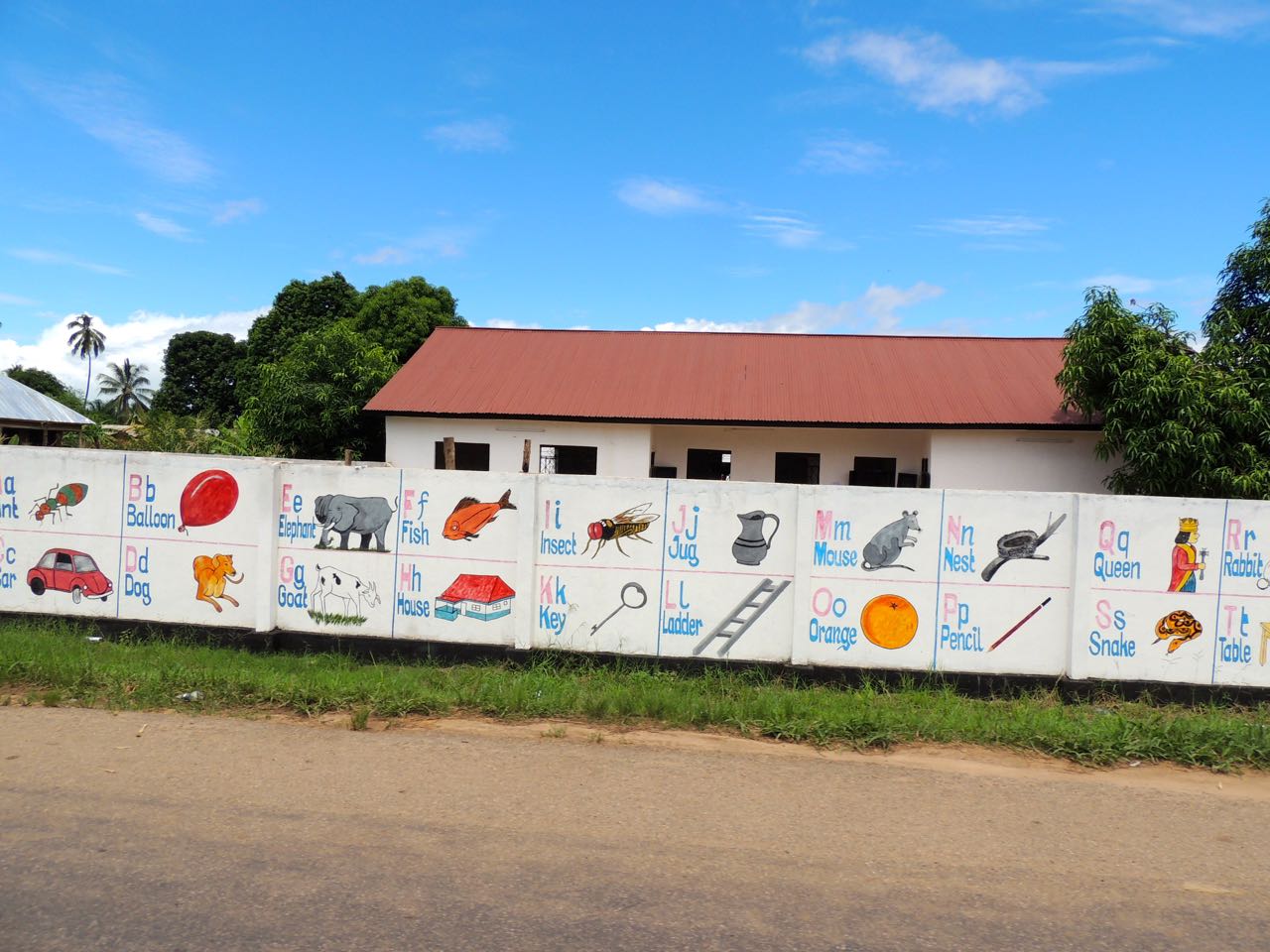 Road to Kilombero - Photo by William Young
Road to Kilombero - Photo by William Young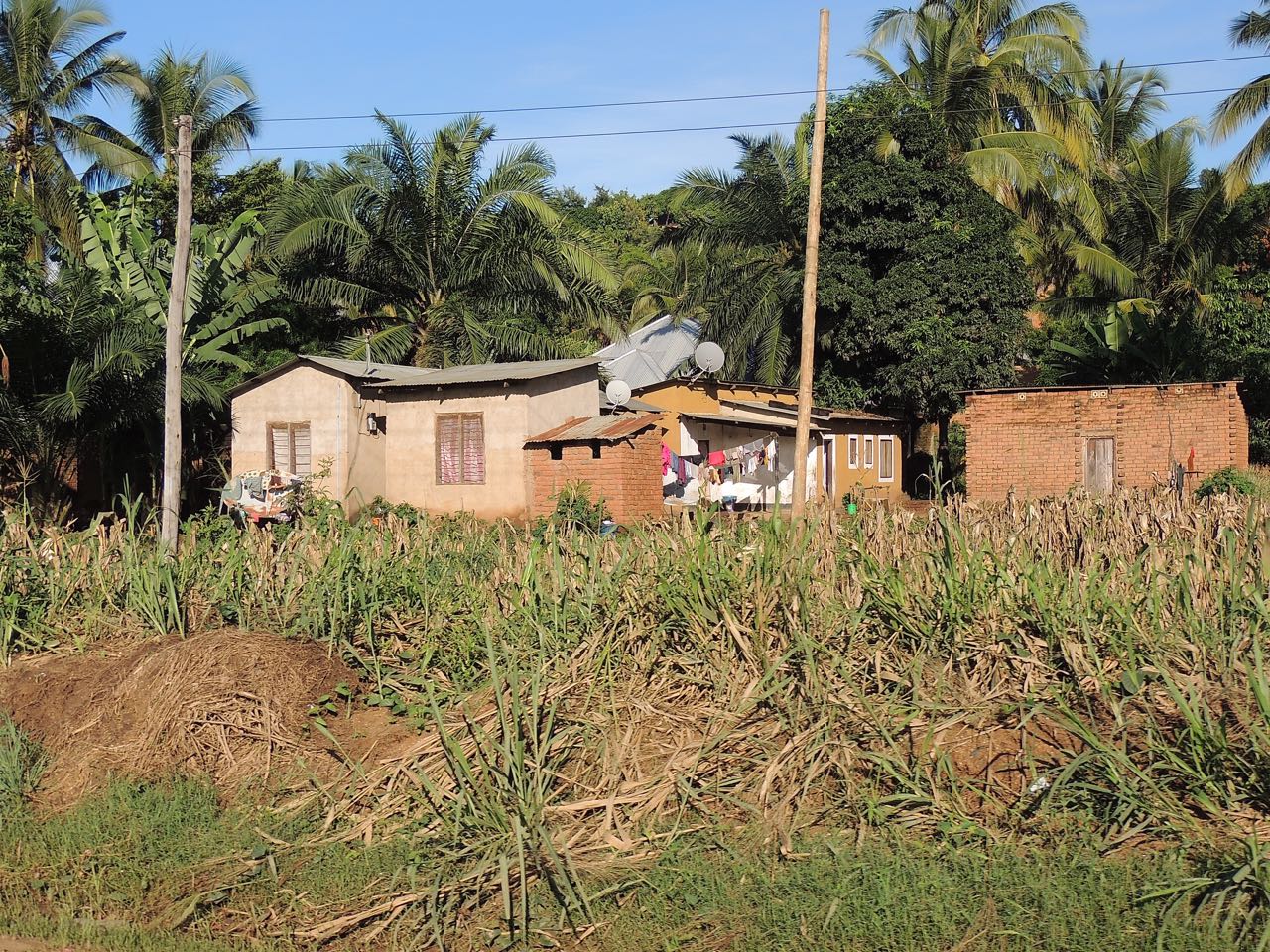 Road to Kilombero - Photo by William Young
Road to Kilombero - Photo by William Young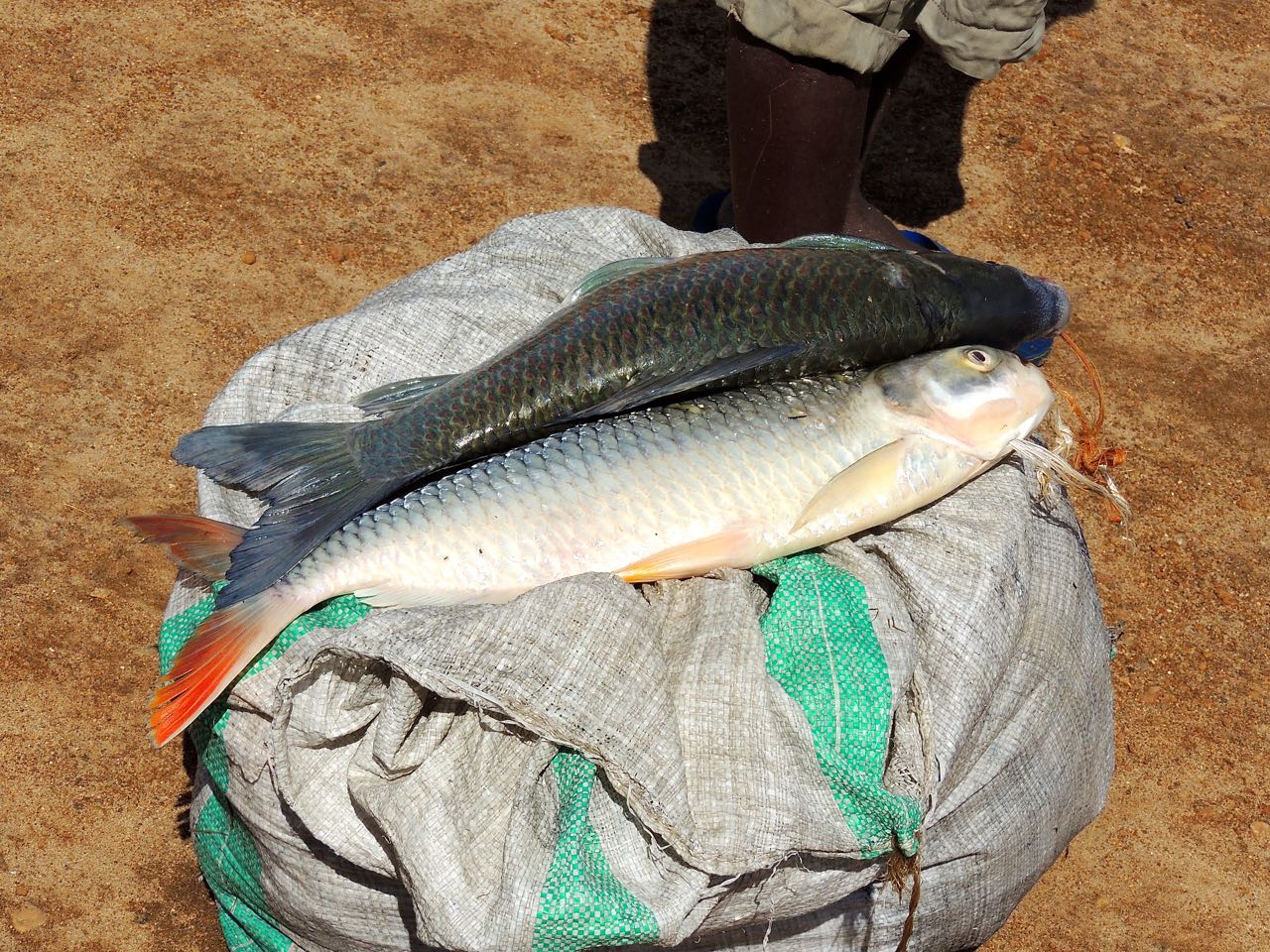 Kilombero - Photo by William Young
Kilombero - Photo by William YoungOn the 25th, we decided that instead of trying to go to some of the areas in Udzungwa that we could not reach the day before, we would drive to nearby Mikumi National Park. Mikumi was like the parks we had visited before reaching Amani. It has vast expanses of open plains, and there were a lot of mammals walking around. We were able to get in a full afternoon at Mikumi and all of the next morning. We stayed for two nights at the Angalia Tented Camp, which is run by the Maasai. The camp was very comfortable, and the food was some of the best we had on the trip. On the afternoon of the 26th, we walked in an area near the campsite, guided by one of the Maasai. On our last morning in Tanzania, we had to drive on the highway that went through Mikumi National Park. We saw elephants, giraffes, impalas, warthogs, and Cape Buffalos. There was a Marabou and a bunch of White Storks. At one point, we had to stop to let Southern Ground-Hornbill cross the road. It seemed strange to routinely see these creatures while we were riding in a car without being on a wildlife expedition.
 Road to Mikumi - Photo by William Young
Road to Mikumi - Photo by William Young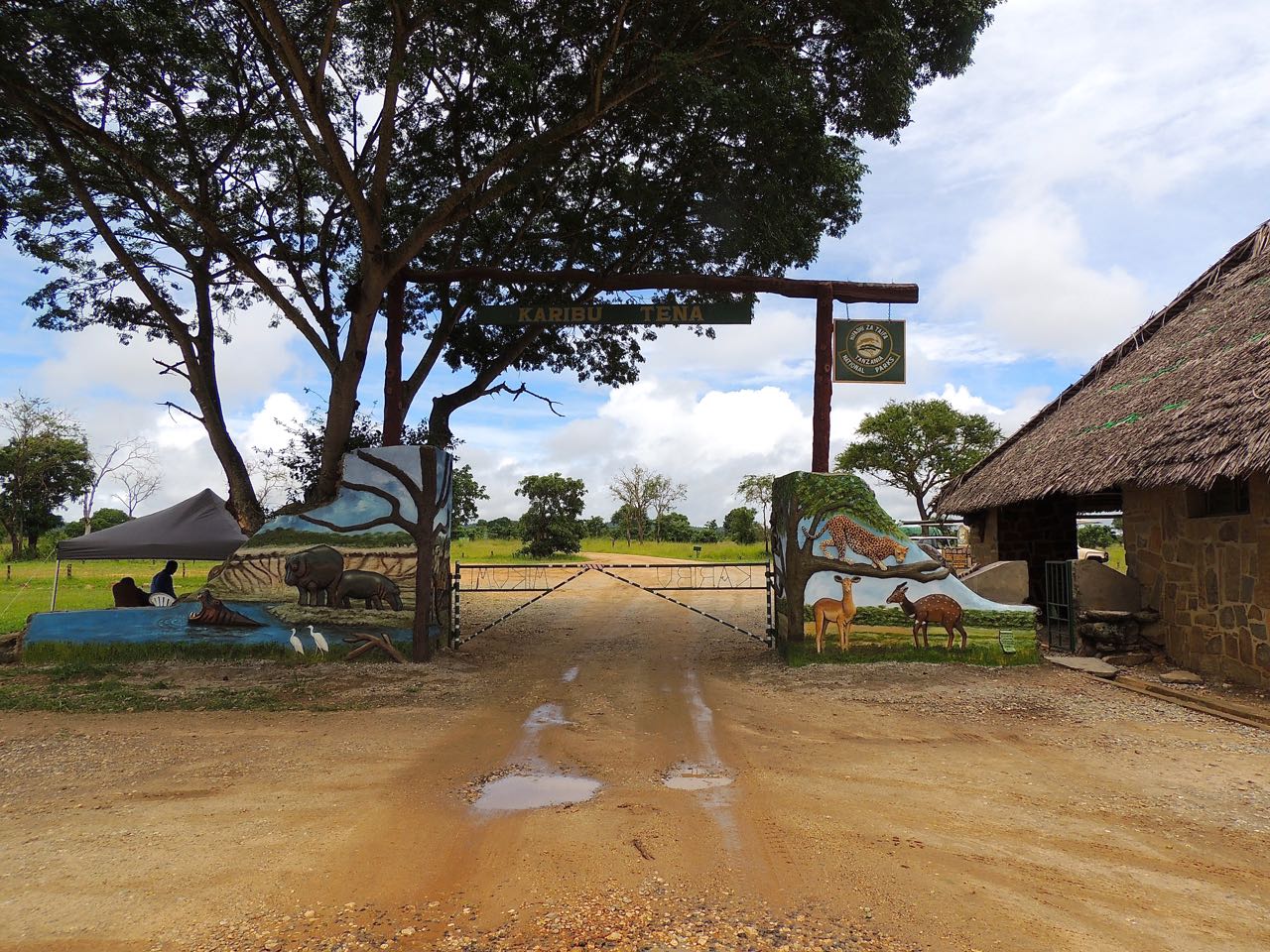 Mikumi - Photo by William Young
Mikumi - Photo by William YoungThe Angalia Tented Camp is about a 5 1/2 hour drive from the Dar es Salaam airport unless one runs into traffic problems. My flight was at 4:40, and we left at 8 am. We were doing fine until we were about 20 minutes from the airport, and traffic simply stopped for two hours at an intersection ahead of us. When we eventually reached the intersection, we saw no apparent reason for the stop. I ended up making my flight by about 15 minutes.
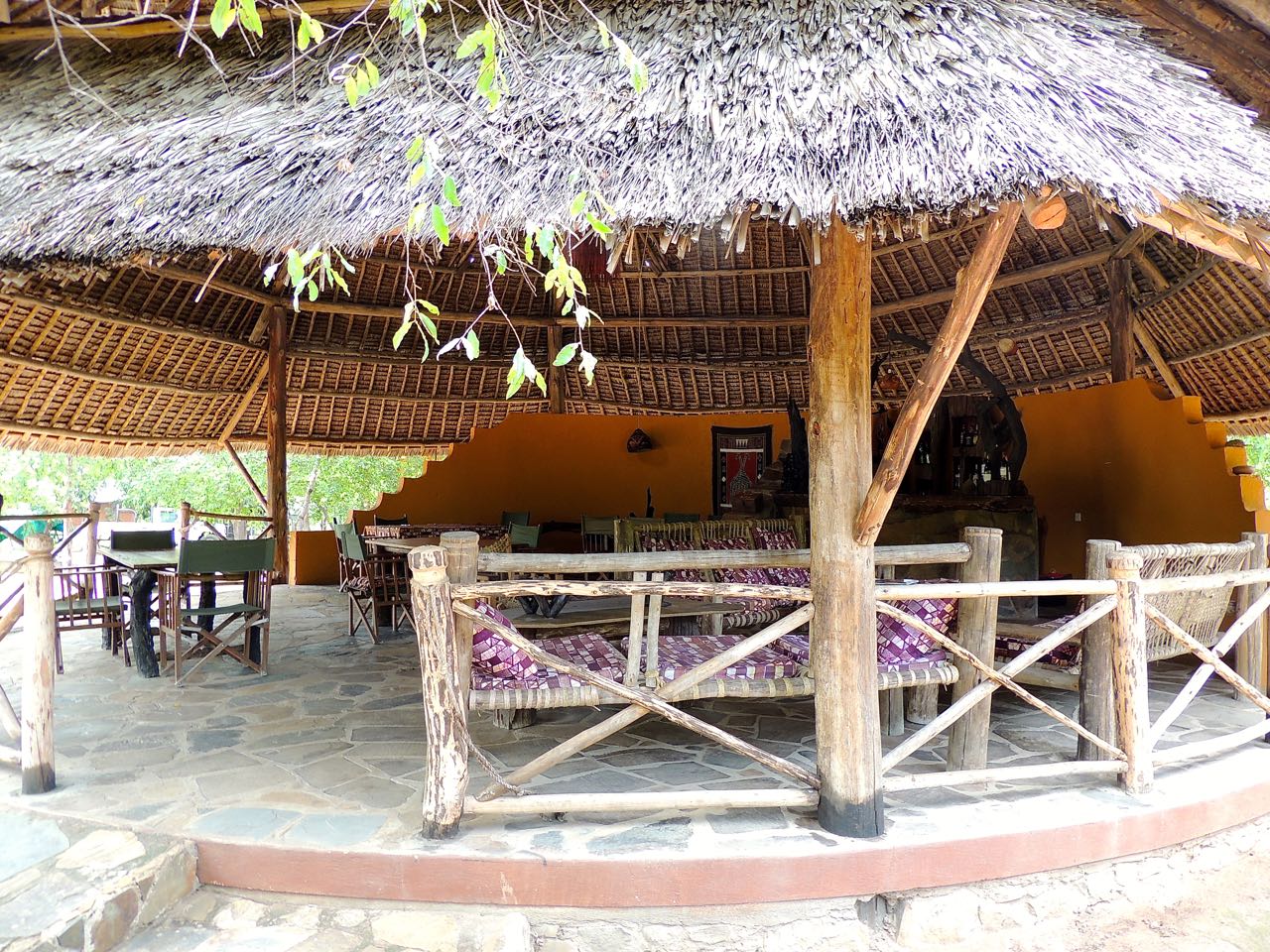 Angalia Tented Camp - Photo by William Young
Angalia Tented Camp - Photo by William YoungI was very pleased with the itinerary set up by East African Safaris, but I might make a few changes. I would definitely cut out the trip to Uluguru, where we got stuck in the mud. Even if we had reached the reserve, we probably would not have seen much, both because of the rain and arriving in late morning when bird activity tends to slow down. I would probably cut a couple of the four nights we were in Udzungwa, keeping the Kilombero leg and some of the birding around the camp and the entrance to the park. The two evenings at Udzungwa and the day at Uluguru probably could have been better spent up north, with an extra day at Serengeti, Tarangire, and Ngorongoro. And I think the trip could have been more pleasant had we avoided Dar es Salaam and had flown in and out of Arusha. Dar es Salaam is a large city that is in many ways dysfunctional, and I do not think we would have missed much in the way of wildlife had we avoided it altogether.
BIRDSWe encountered roughly 455 species of birds from 79 families. Altogether, we estimate that we encountered more than 34,000 individual birds.
OstrichOstriches were relatively common during the beginning of our safari. We saw them in seven of the first ten days, with numbers ranging from a dozen to 40. They generally were in small to medium-sized groups on the plains. Because they are so tall, Ostriches can be seen from a considerable distance. They can run quickly. We also saw males and females performing sexual displays, which involve a lot of feather fluffing. Ostriches look much larger than the Emus I saw in Australia. The cassowaries I saw in Australia had small vestigial wings, but the vestigial wings on the Ostriches were quite long. The males have long pink necks, while the female necks are grayer. Some young have bodies that are tan rather than black or brown like the adults. Ostriches sometimes sit on the ground with their legs beneath them as if incubating eggs. When standing, they sometimes reach their long neck down to peck at something on the ground, which might be what gave rise to the myth about them putting their head in the sand.
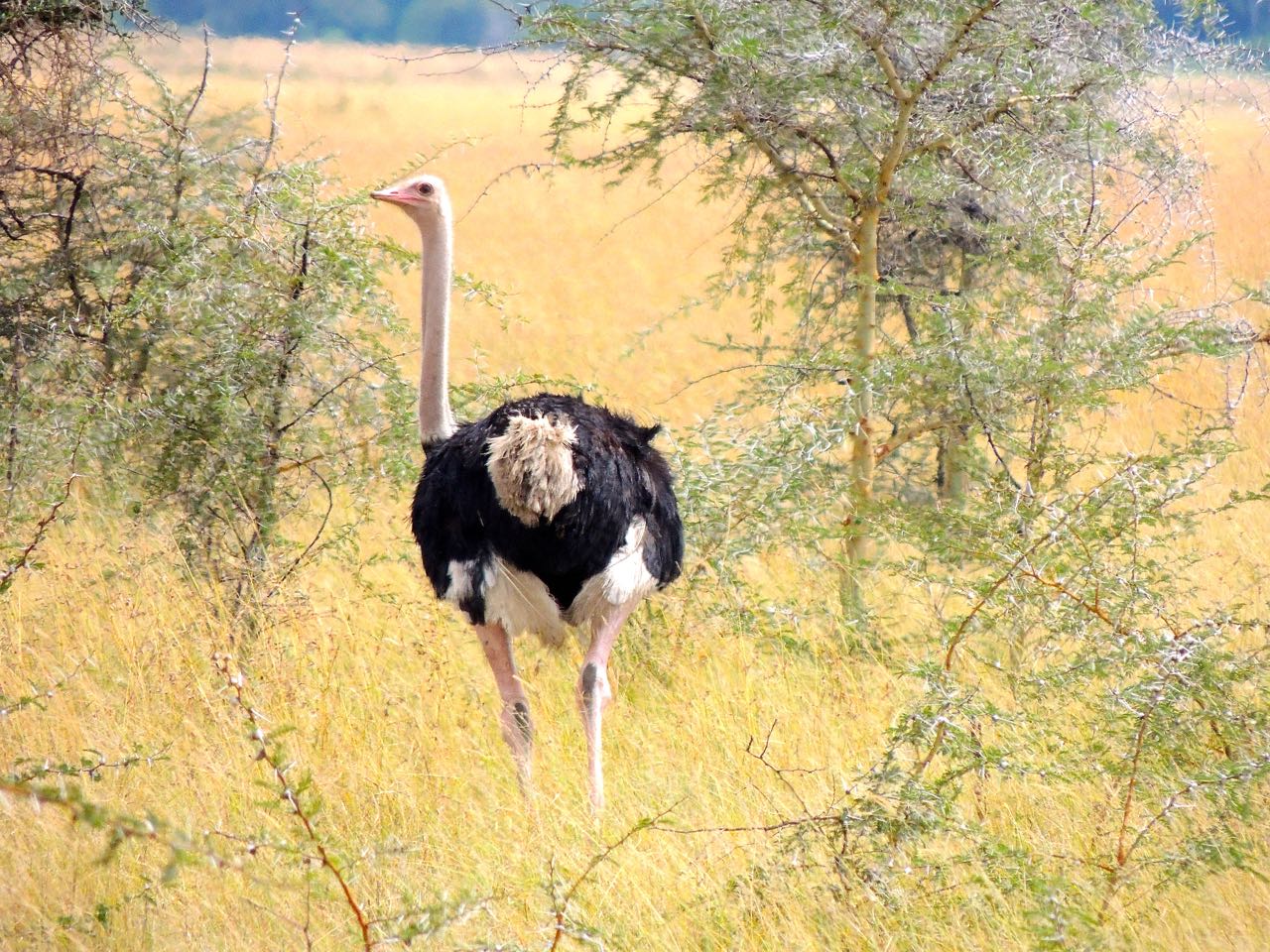 Ostrich - Photo by William Young
Ostrich - Photo by William Young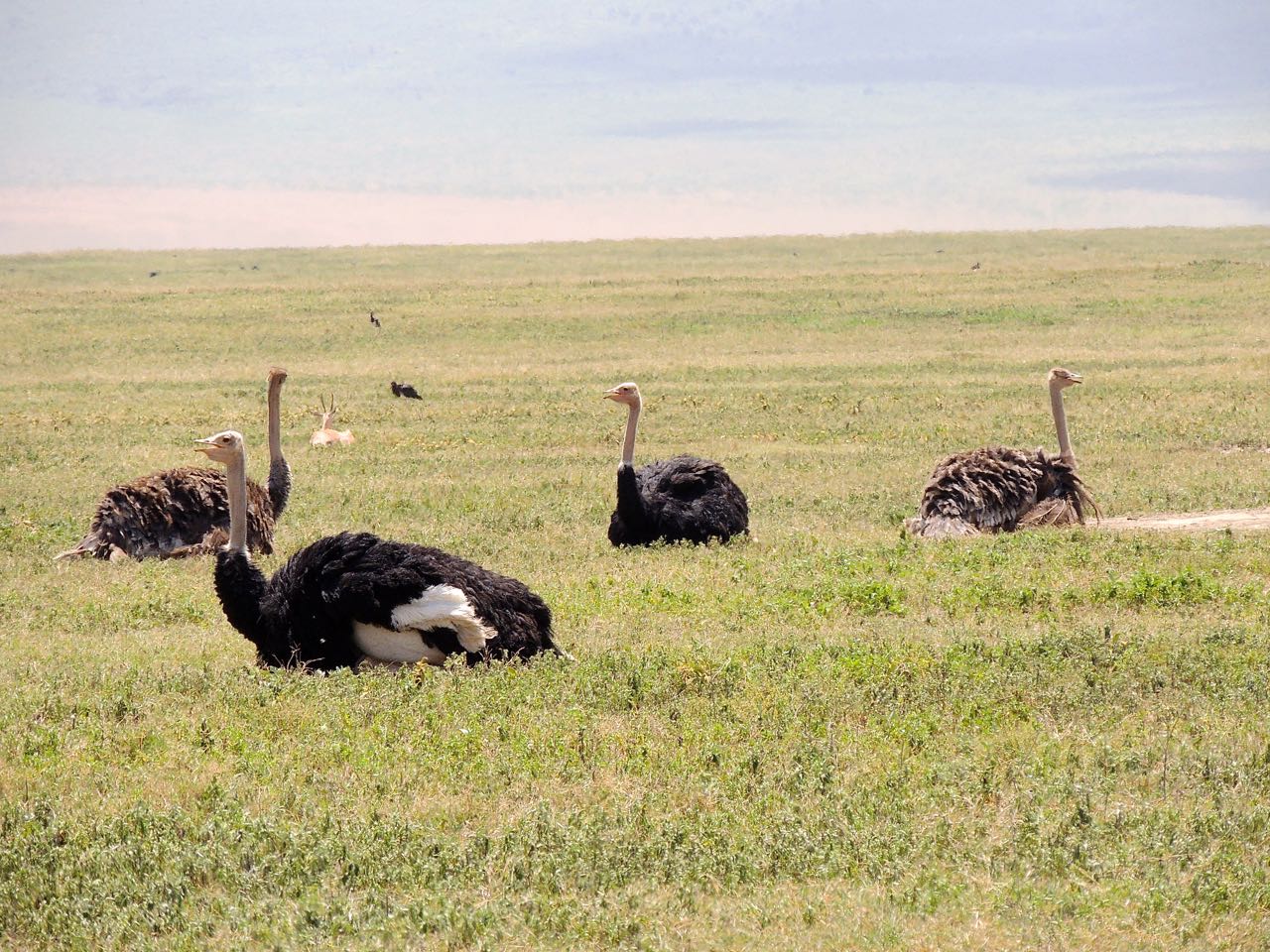 Ostriches - Photo by William Young
Ostriches - Photo by William Young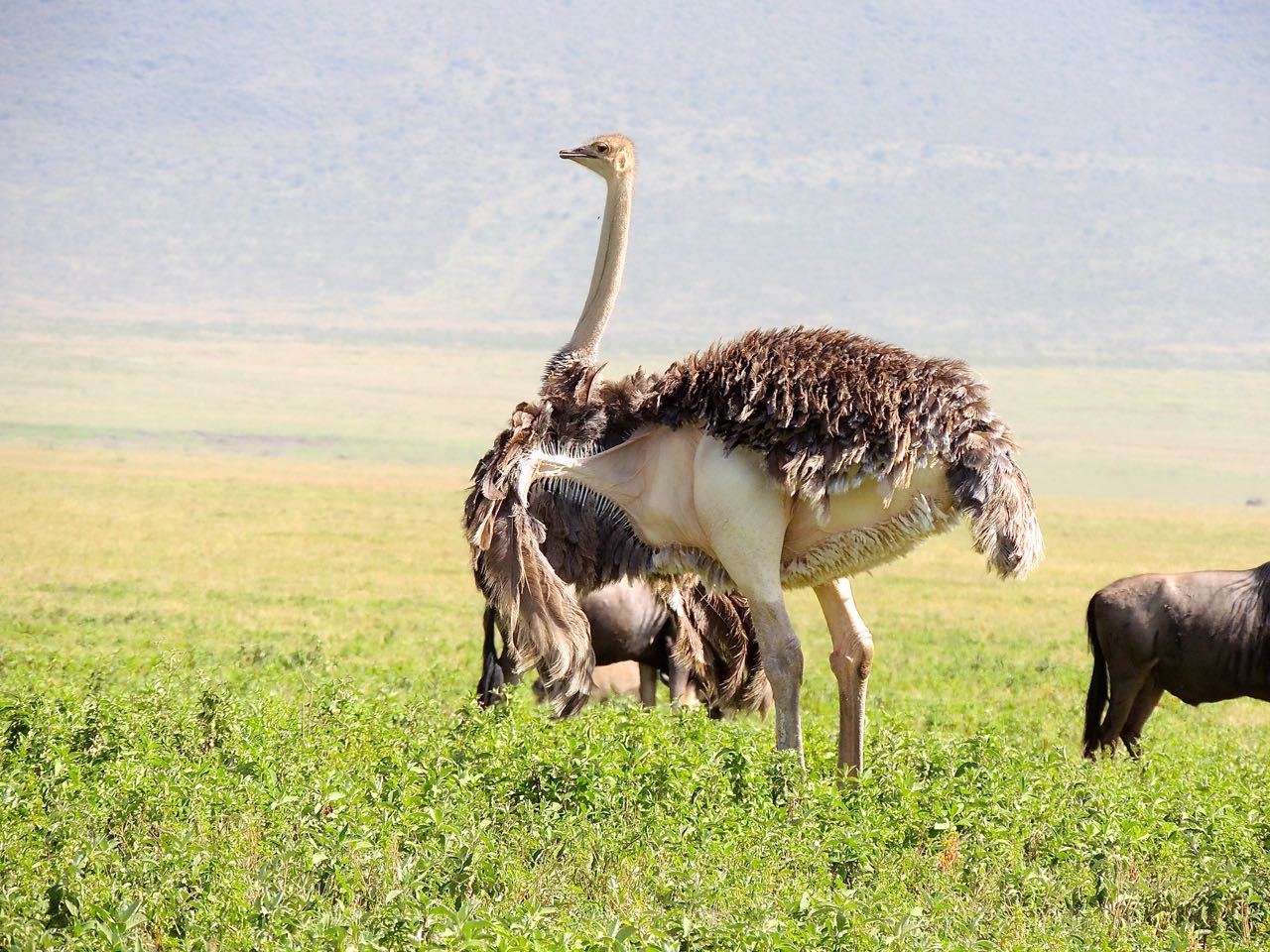 Ostrich - Photo by William Young
Ostrich - Photo by William Young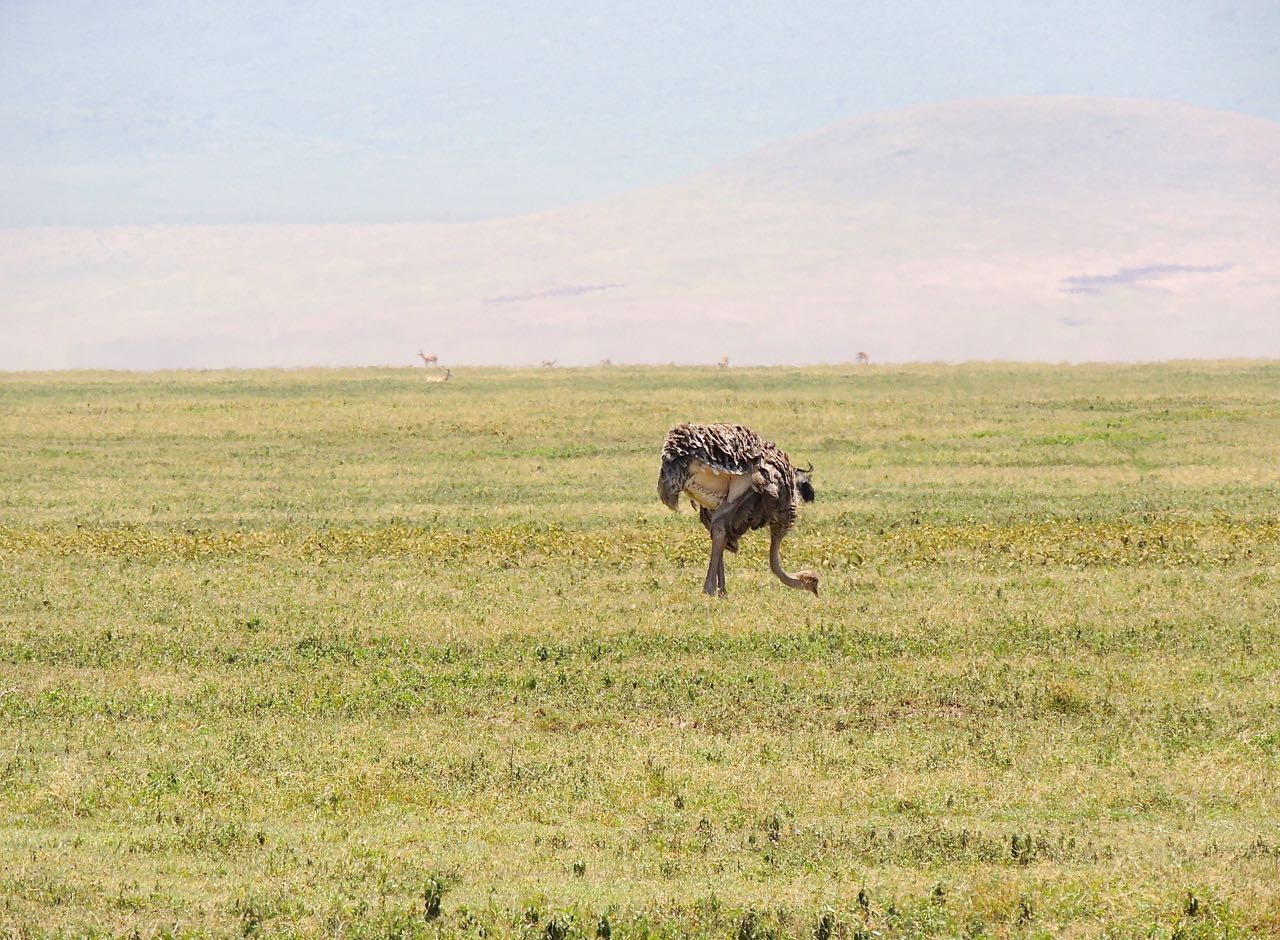 Ostrich - Photo by William Young
Ostrich - Photo by William Young Young Ostrich - Photo by William Young
Young Ostrich - Photo by William Young
GrebesWe saw Little Grebes on only four days. We saw one at Ngorongoro and six at Tarangire. When we got to the lakes around Arusha, we saw hundreds each day. A lot of them were swimming relatively close to the shore so that the little yellow spot near the bill could be seen. It was sometimes difficult to photograph them because they dove so frequently. We saw both breeding and the slightly duller non-breeding birds. In flight, they show white under their wings.
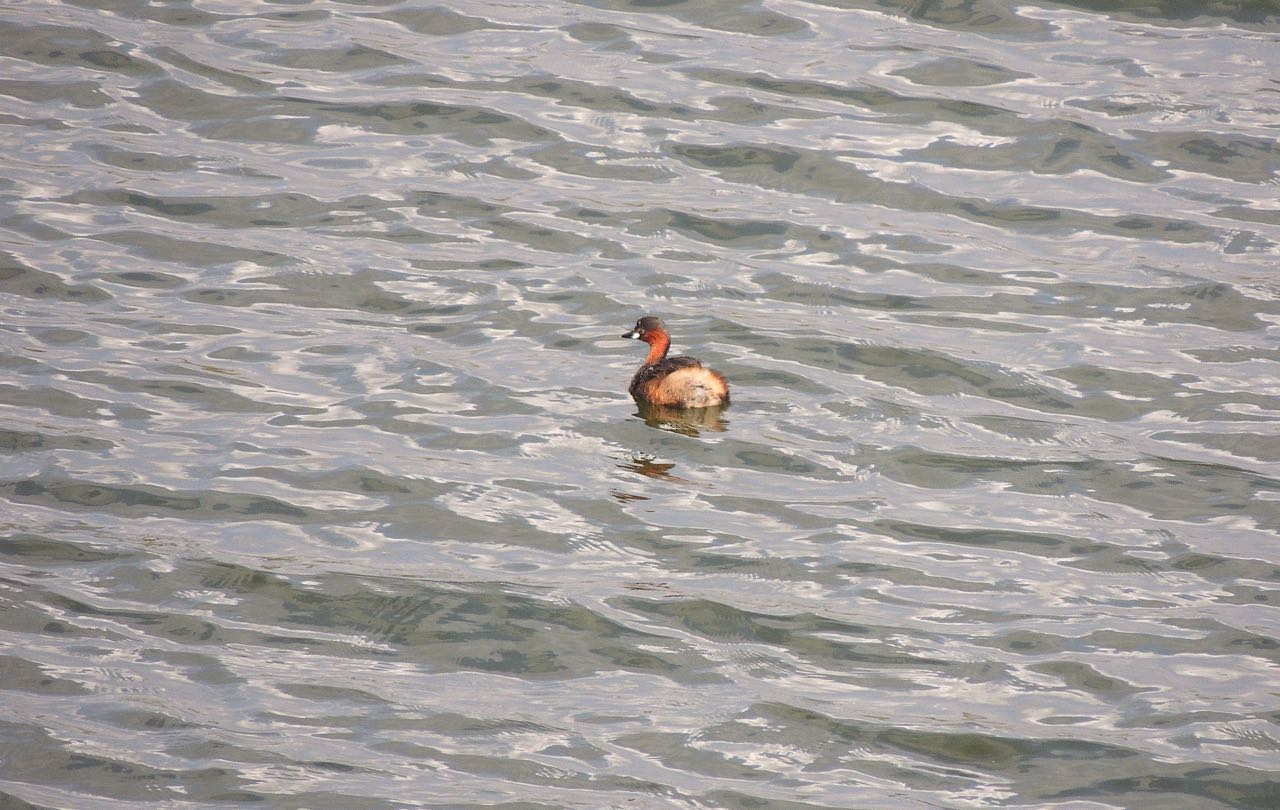 Little Grebe - Photo by William Young
Little Grebe - Photo by William Young
CormorantsThe Long-tailed Cormorant was far more common than the Great. We saw a couple thousand Long-tailed on the boat trip around Lake Victoria. They are about half the size of the Great. The immatures have a lot of white below. We encountered them in only three places other than Lake Victoria, and in each case, only one. We saw one at Kilombero near the end of the trip as well as at Ngorongoro and Lake Manyara. We saw only three Great Cormorants. One was on our trip along the coast around Dar es Salaam, and the other two we viewed at a considerable distance from a hill in Arusha.
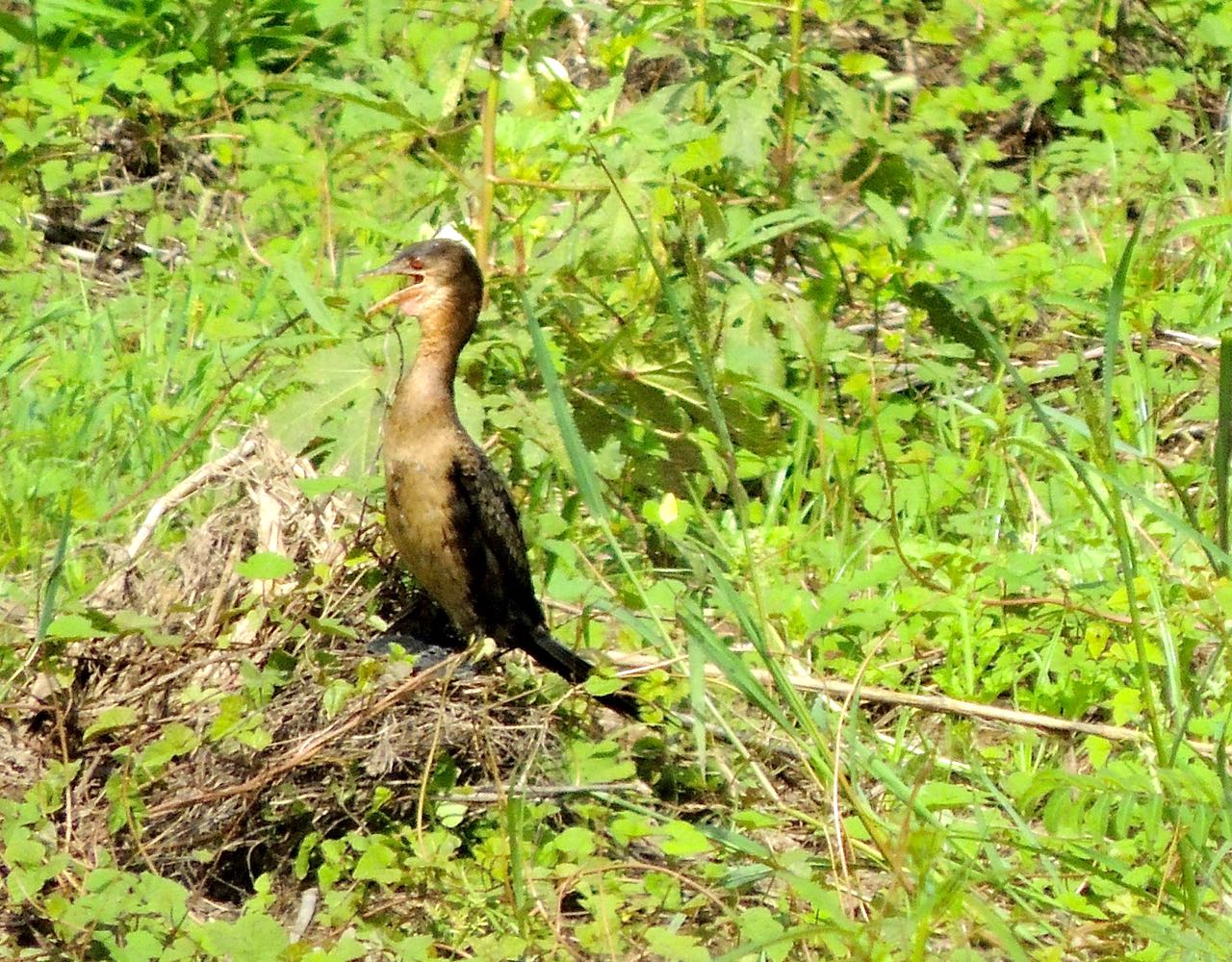 Long-tailed Cormorant - Photo by William Young
Long-tailed Cormorant - Photo by William Young
Herons, Egrets, and BitternsWe saw more than 2,200 Cattle Egrets on 11 days. They were in fields as we drove through agricultural areas as well as in Dar es Salaam. Some were in breeding plumage, showing considerable yellow-orange feathering, especially the ones we saw in Kilombero. At Ngorongoro, there were enormous flocks of Cattle Egrets flying above some of the mammals. We also saw a considerable number at Lake Manyara, and some stood on the backs of hippopotami. We saw Black-headed Herons on 14 days, and we saw about 225 in total. We were able to get close to some. They are about the same size and shape as Grey Herons, but they have a black head and neck. Their underwings have light coverts and a broad black trailing edge, while the Grey Heron's underwings are solid grey. We saw Grey Herons on 9 days, with a total of 34 birds. They look like pale Great Blue Herons, but the markings on their plumage stand out more. Little Egrets were fairly common. We saw 30 along the coast in Dar es Salaam, 35 at Lake Manyara, and about 150 around Lake Victoria. We saw between two and five on four other days. They resemble Snowy Egrets, who are not present in Tanzania. We saw good numbers of Squacco Herons on numerous days. They are light brown and streaked, shaped like a night-heron. The white on their wings can be seen when the bird is standing, but it is more apparent when the bird flies. Squacco Herons were especially common at Kilombero (50) and Lake Manyara (25). They tended to be near the edge of the water or next to reeds where they were well camouflaged.
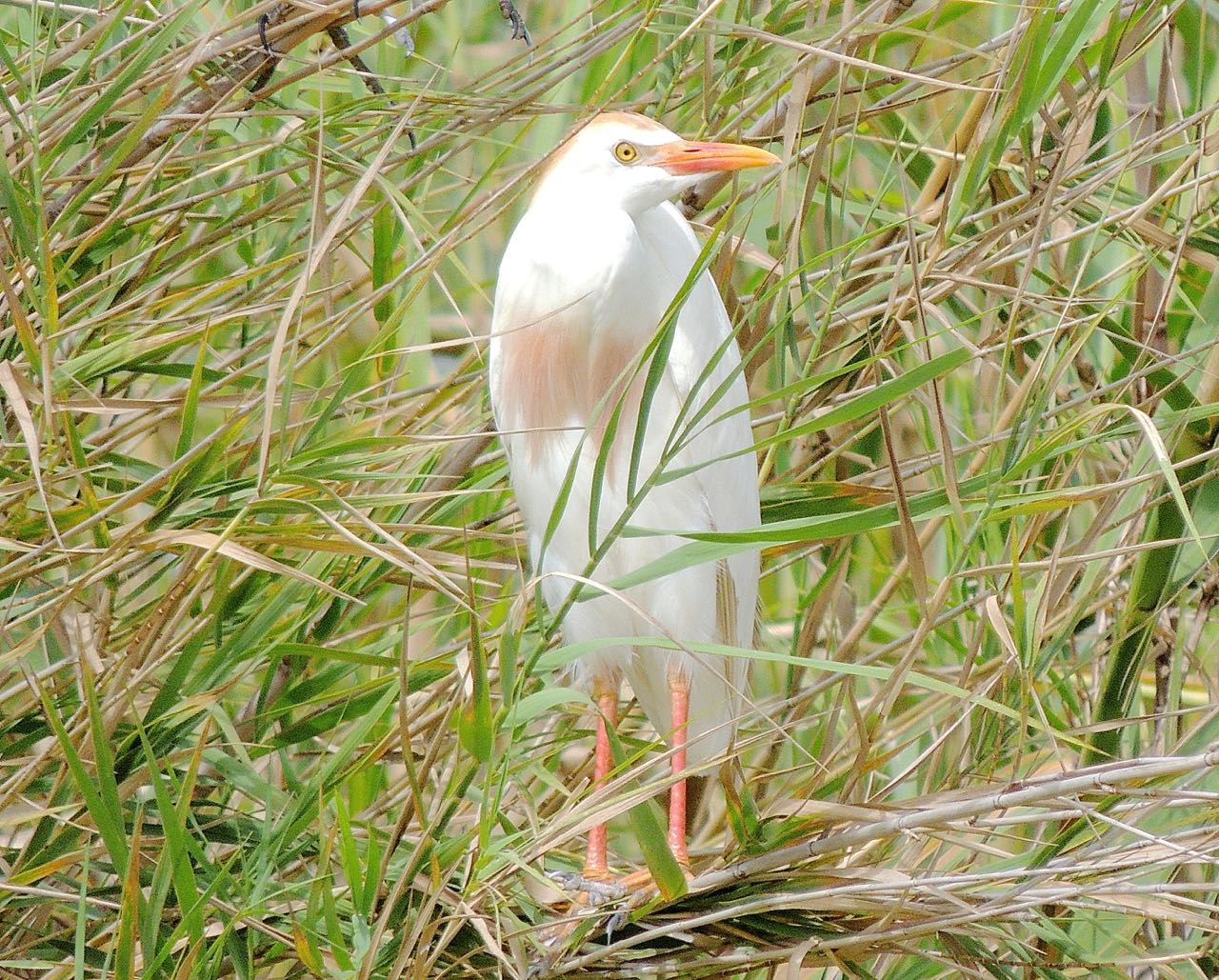 Cattle Egret - Photo by William Young
Cattle Egret - Photo by William Young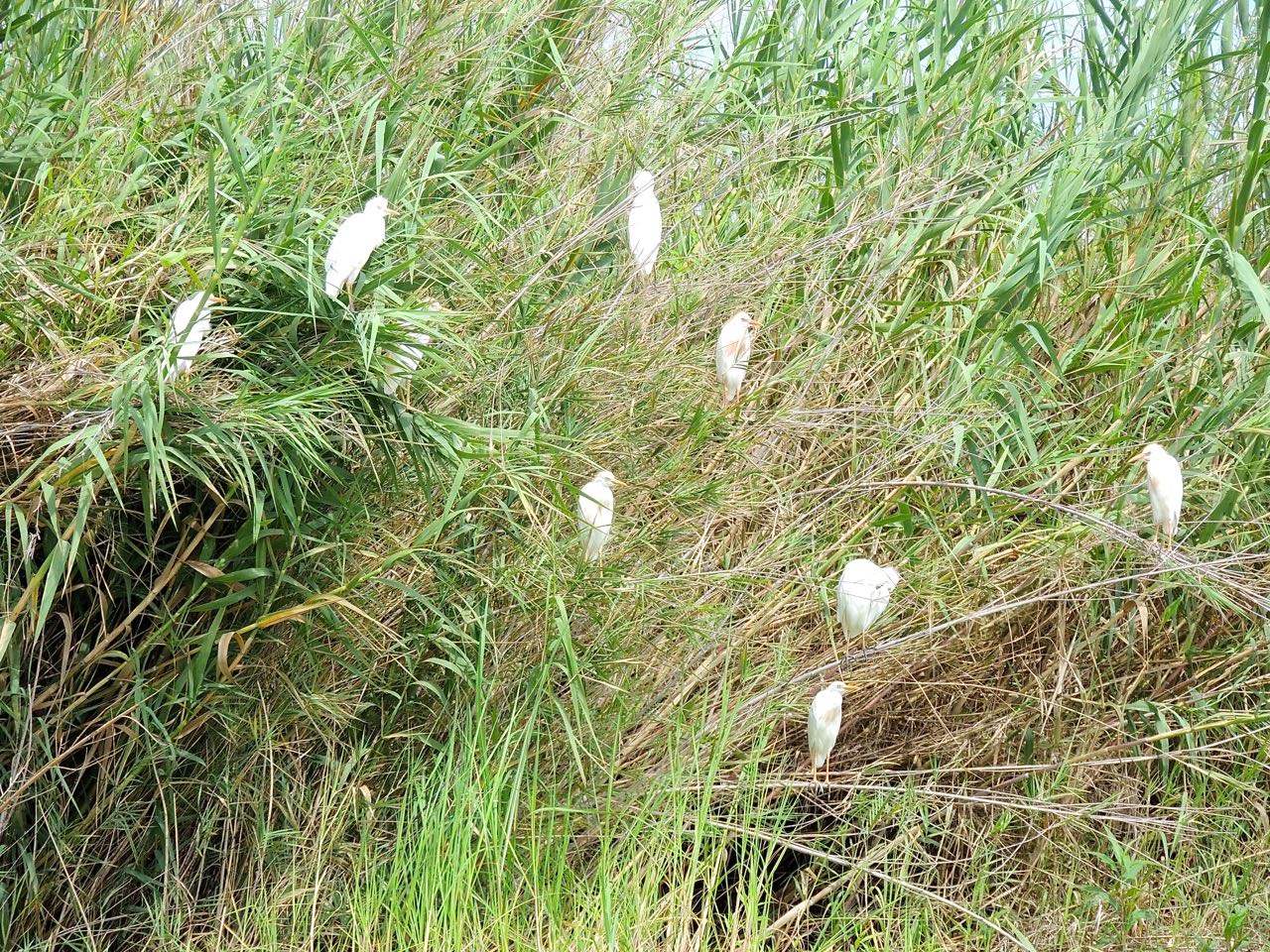 Cattle Egrets - Photo by William Young
Cattle Egrets - Photo by William Young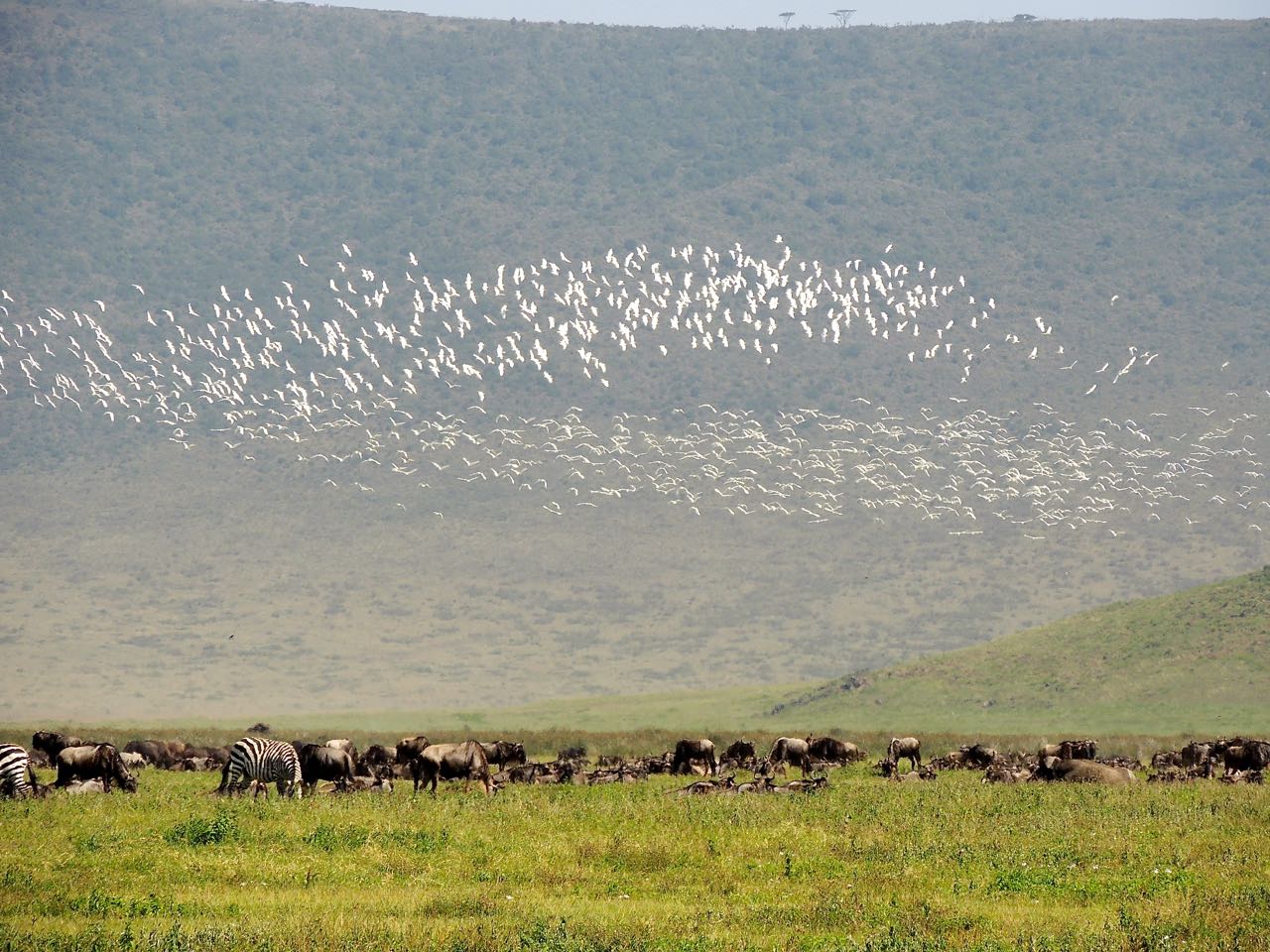 Cattle Egrets over Ngorongoro Crater - Photo by William Young
Cattle Egrets over Ngorongoro Crater - Photo by William Young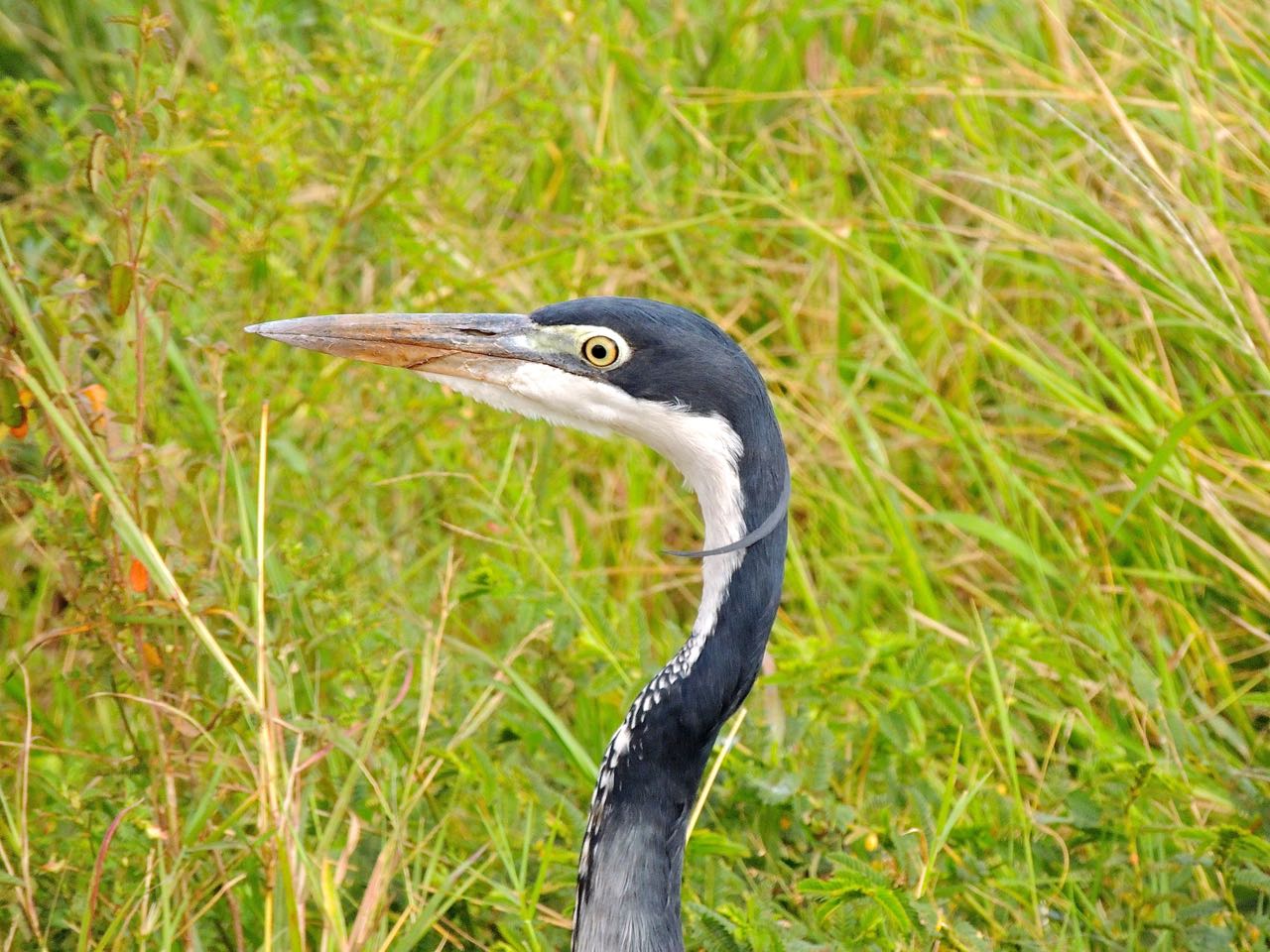 Black-headed Heron - Photo by William Young
Black-headed Heron - Photo by William Young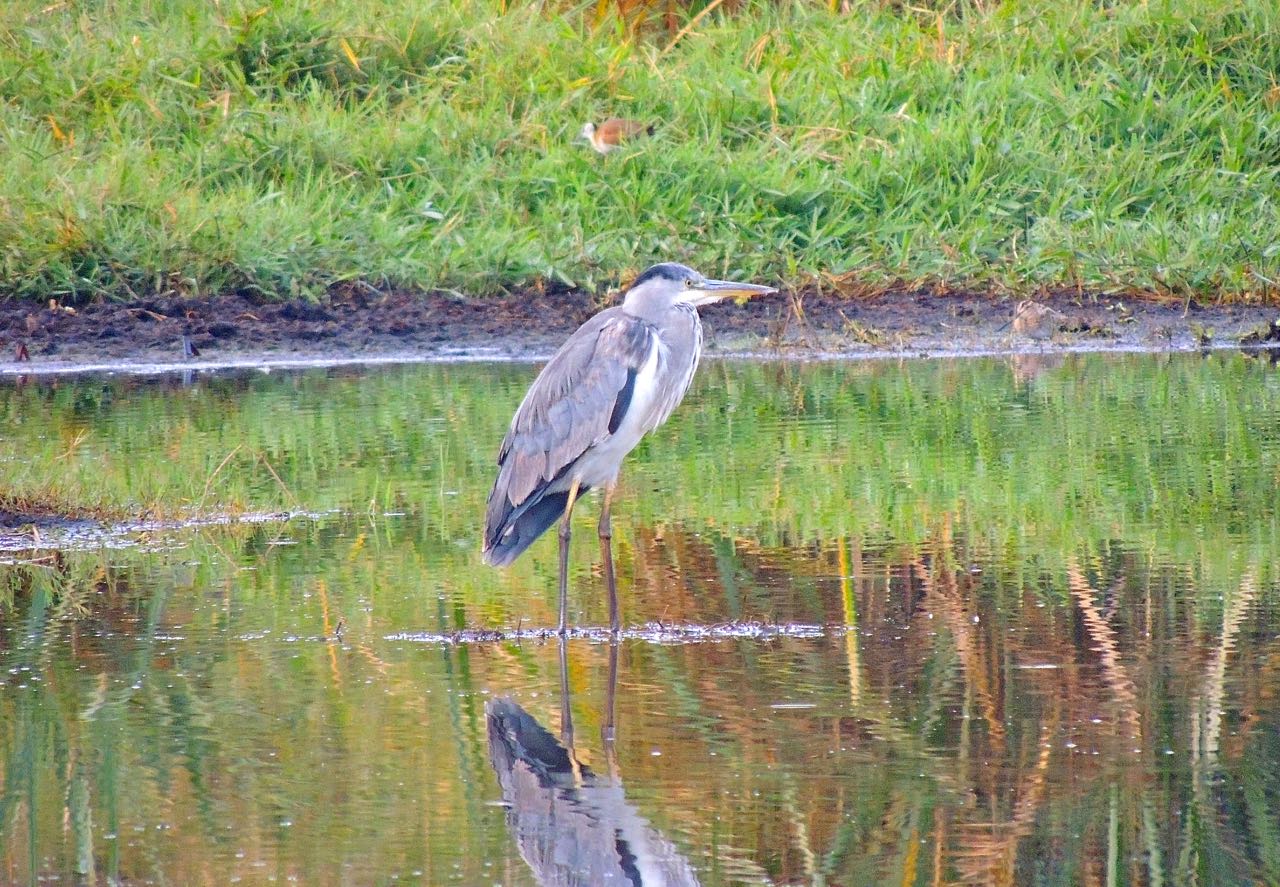 Grey Heron - Photo by William Young
Grey Heron - Photo by William Young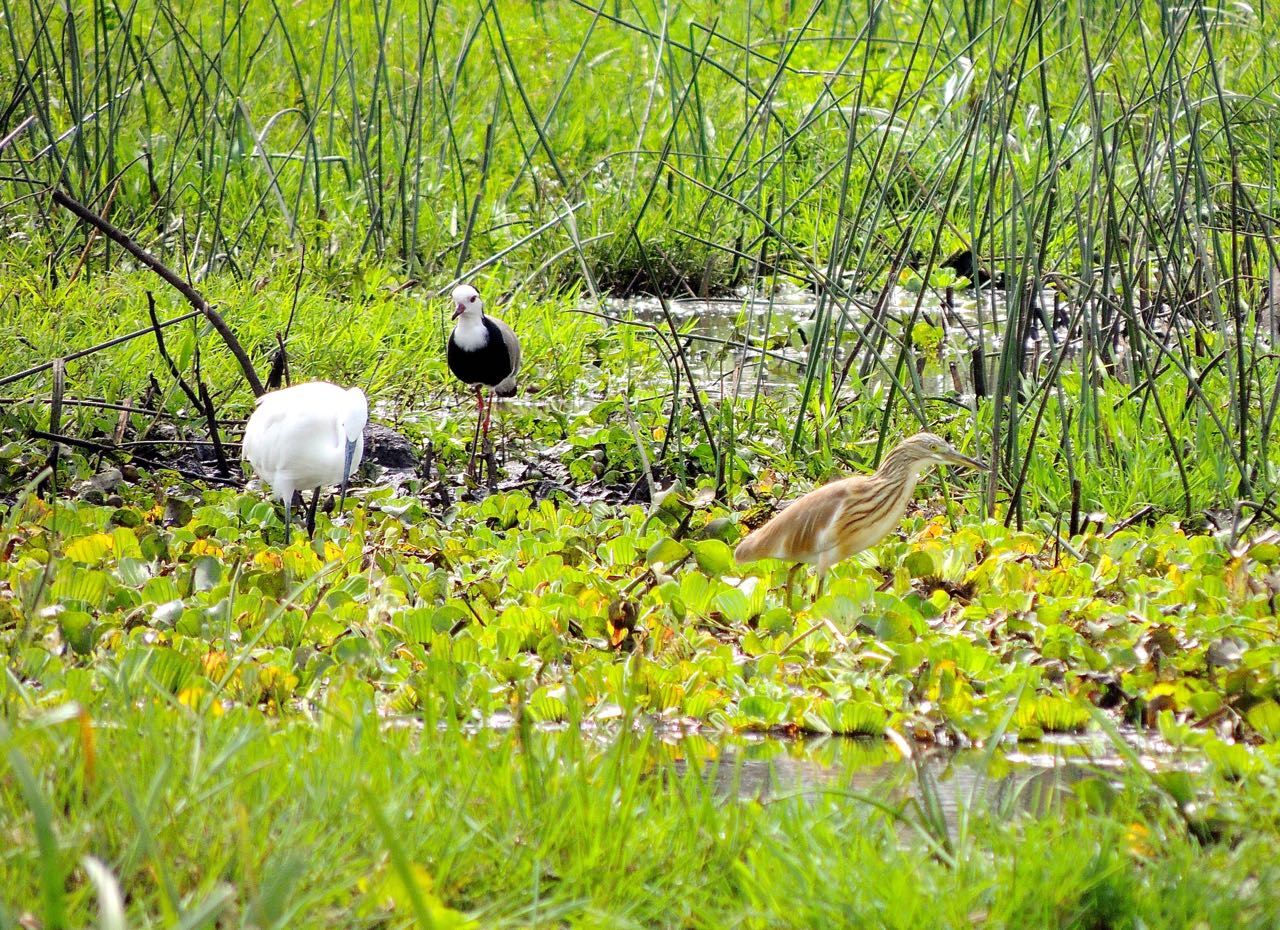 Little Egret, Long-toed Lapwing, and Squacco Heron - Photo by William Young
Little Egret, Long-toed Lapwing, and Squacco Heron - Photo by William YoungWe encountered seven other heron species on a few days or less. At Kilombero, we saw a flying Purple Heron, who has bluish-purple wings and a brown body. We did not see the much larger Goliath Heron, whose plumage is similar. We saw one Striated Heron at Lake Victoria, who looks like a grayish version of a Green Heron. Around Ngorongoro, we found a tree containing 20 Black-crowned Night-Herons, the only ones we saw on the trip. In Dar es Salaam, we saw a dark phase Dimorphic Egret, who has a little white mark at the front of each wing in flight. We saw Great Egrets at Lake Victoria and Mkomazi. We saw a dozen Black Herons in a pond at Manyara and another one during our day in Dar es Salaam. And we saw a total of 17 Intermediate Egrets on three different days. We saw 10 at Tarangire. They have slightly shorter necks than Great Egrets, and their gape line stops below the eye instead of extending past it.
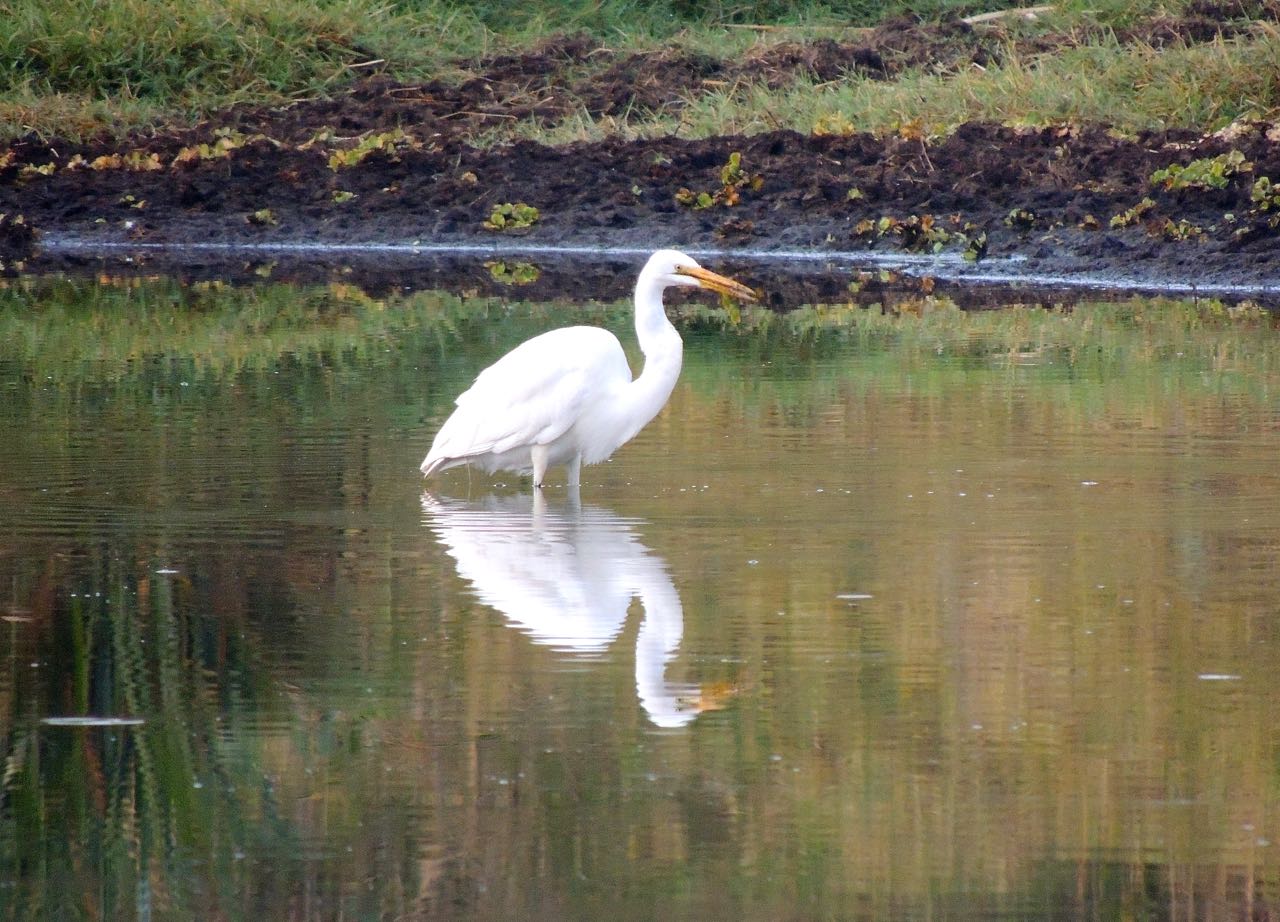 Intermediate Egret - Photo by William Young
Intermediate Egret - Photo by William Young
HamerkopA Hamerkop, whose name comes from an Afrikaans word for hammer head, surprised us on our first day in the Serengeti by being in water right next to the road, about 15 feet from where our vehicle stopped. It was so preoccupied with hunting that it did not seem to notice us. It is a solid brown bird that looks like a heron with a hammer head. At Mikumi, we saw one on the road ahead of us, hammering a frog with its bill. Near the water at Mkomazi, we saw a Hamerkop nest, which is a gigantic ball of sticks that appeared to have a diameter of five or six feet. When they are flying at a distance, Hamerkops have clearly defined wing strokes and look a bit like Aquilla eagles. We saw about 23 of them on eight days.
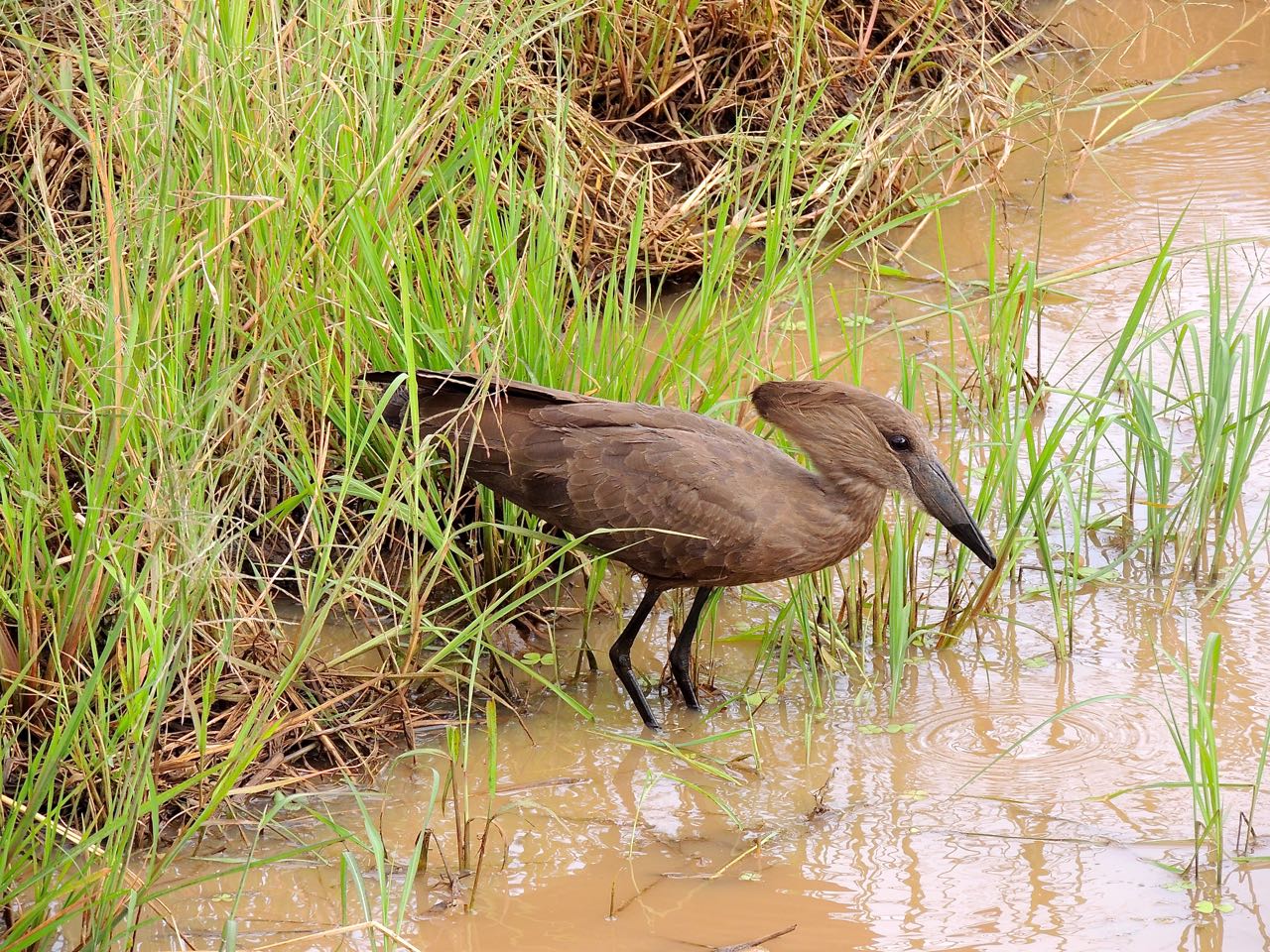 Hamerkop - Photo by William Young
Hamerkop - Photo by William Young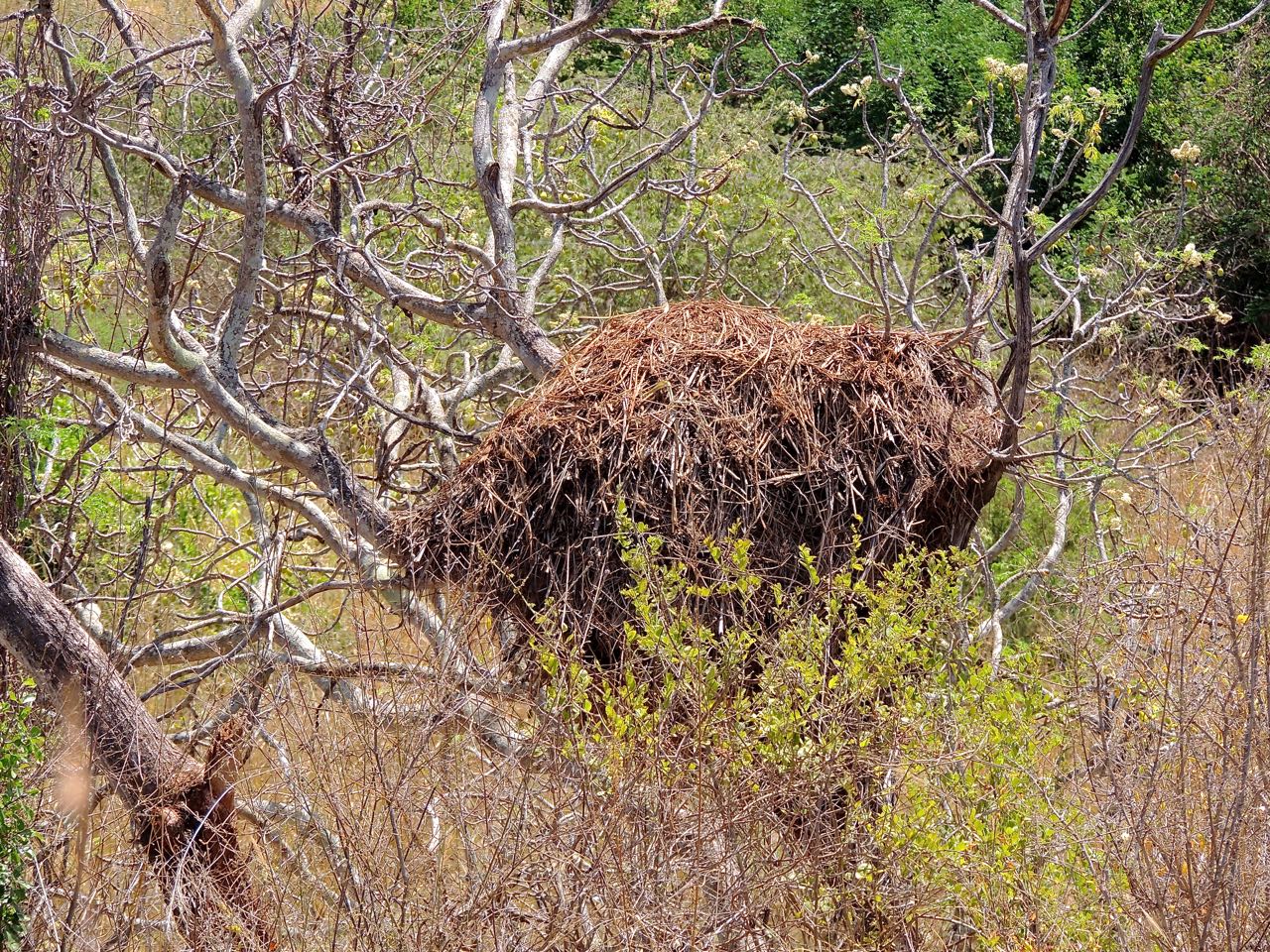 Hamerkop Nest - Photo by William Young
Hamerkop Nest - Photo by William Young
StorksThe storks in Tanzania often congregate in groups, and they freely mix with other species. They are large and easy to see, and we saw an estimated 4,500 storks of six species. About two thirds were Abdim's Storks, and almost all of these were seen on the day we visited Ngorongoro. They seemed to be everywhere we looked while we were in the crater. Their feathers have a purple iridescent sheen. The belly is white, and some of the white shows near the upper edge of the wing when the bird is walking around. They have blue facial skin below the eye, and they have an eyering, the front half of which is red and the back half tan. The ankle joints are red, and they have white feathering on the top of their legs.
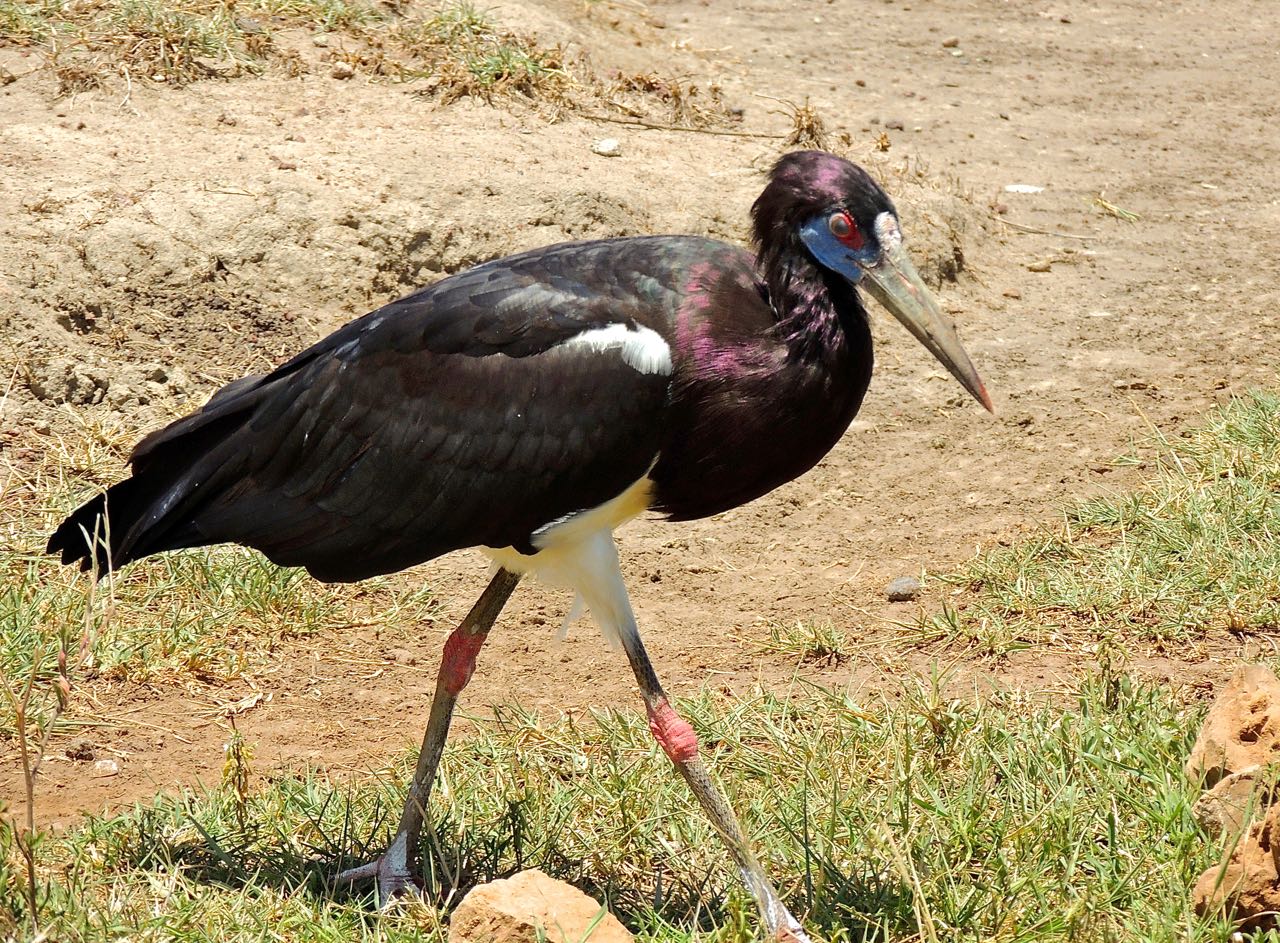 Abdim's Stork - Photo by William Young
Abdim's Stork - Photo by William YoungOne of my favorite birds of the trip was the Marabou Stork, whose unbelievable ugliness makes it endearing. I saw more than 600 Marabous on 12 days in many different circumstances. On Lake Victoria, we stopped at a market run by the Sukuma Tribe, who are fishing people. Among the people busily conducting business at the market were about 50 Marabous, who were taller than most of the children and as tall as some of the adults. They walked through the market area as if they were customers, and the people did not seem to pay much attention to them. At the Rhino Lodge near Ngorongoro, Marabous walked on the front lawn and stood on the chimneys of some buildings. I found a couple of Marabou flight feathers on one of the lawns, and they are 22 inches long. One Marabou who was standing in front of me spread its wings and showed its huge wingspan. The wings are very broad, making a whooshing sound in flight. I tried to give one the Richard Avedon treatment by photographing it in different light and from different angles, but nothing could make it look attractive. Marabous sometimes soar like vultures, and they eat carrion like vultures. We saw them at a zebra kill at Ndutu, eating the remains with the vultures. Some of the vultures are very large, but the Marabous look much larger, and with their long legs, tower over the vultures. Sometimes we saw Marabous pecking at or standing on piles of garbage. At the Rhino Lodge, one of the Marabous found what looked like a small sandwich in a sealed cellophane packet. The Marabou very proficiently shook the packet to open it and get the sandwich out, showing that it knew not to eat the cellophane. At Mikumi, we saw a single one in a field eating something that had died. Marabous look like old men wearing a dirty dark gray jacket with a dirty white fir collar. Their heads are not bald, but have some gnarled hairlike fuzz on top. The neck is pink, and the head is a somewhat darker shade of the same tone. They have large eyes, and their forehead makes them look as if they had just dipped their head into tar. The skin on the neck is wrinkled rather than smooth (which is why they look old), and the texture of the bill is rough rather than smooth — it looks as if it is made from a piece of wood that has not been sanded. The ear holes are slightly below eye level and fairly prominent. At the base of the neck is a large blood-red patch of bare skin; when the bird preens its belly feathers, the spot is clearly visible.
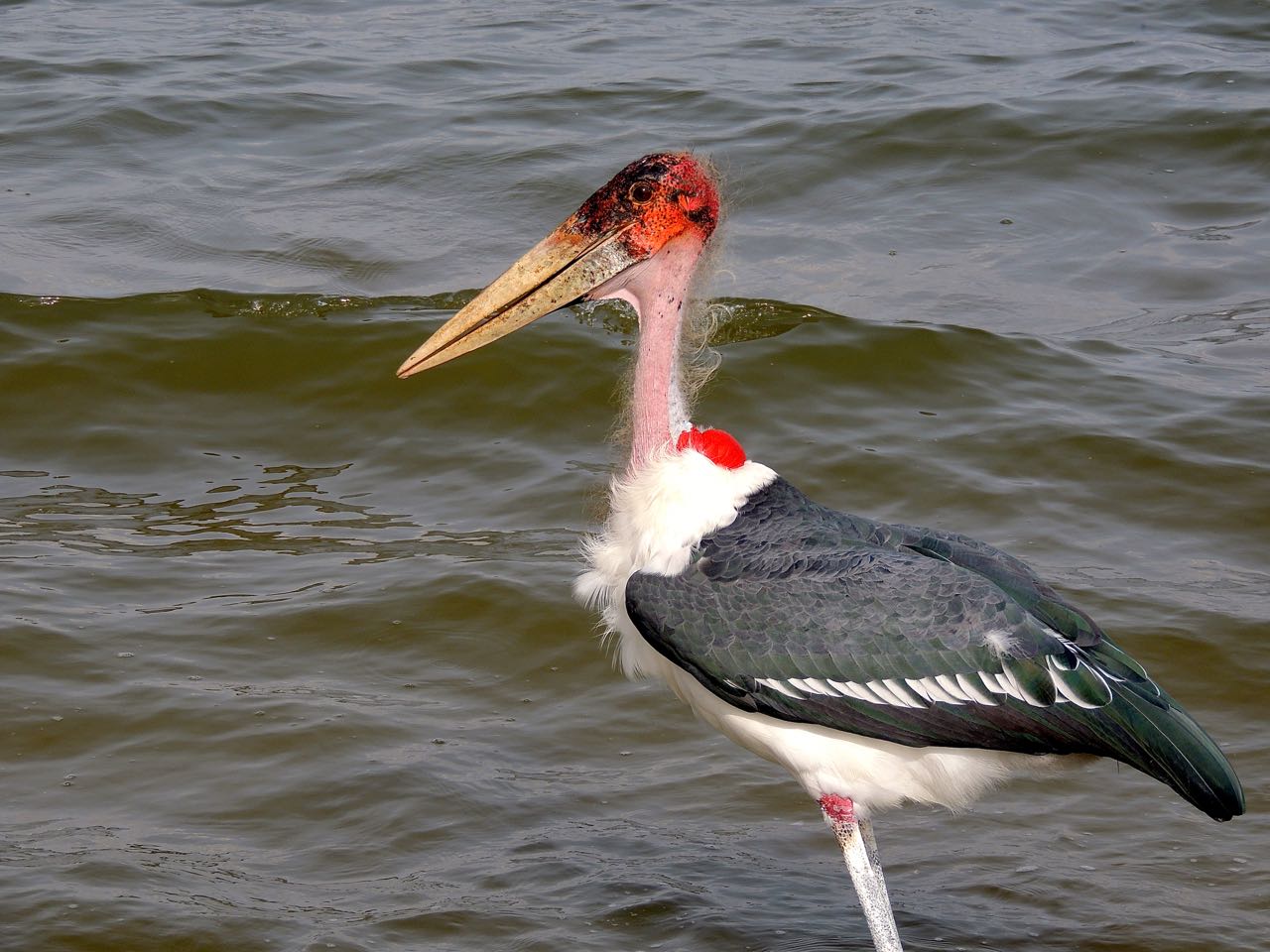 Marabou Stork - Photo by William Young
Marabou Stork - Photo by William Young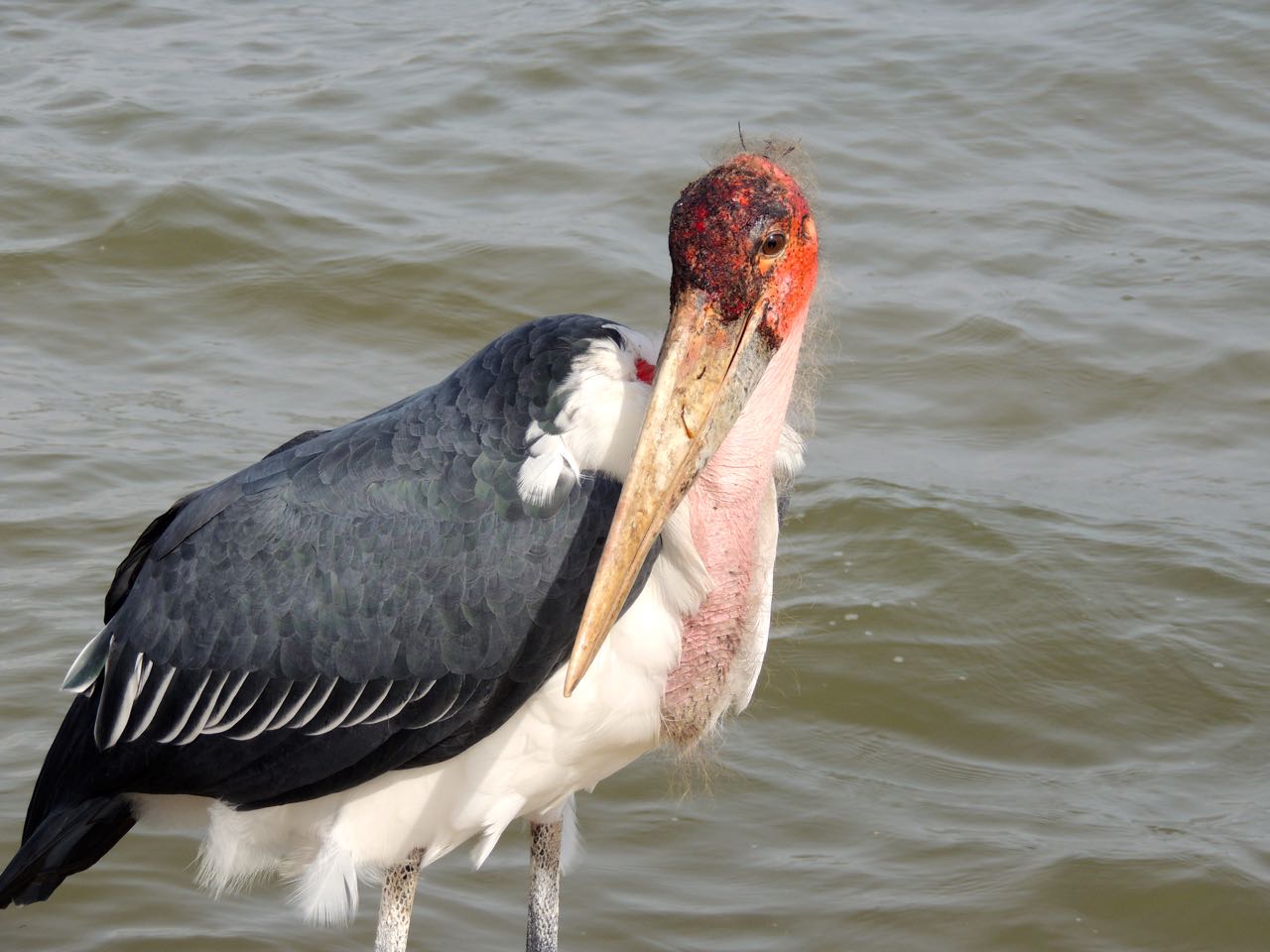 Marabou Stork - Photo by William Young
Marabou Stork - Photo by William Young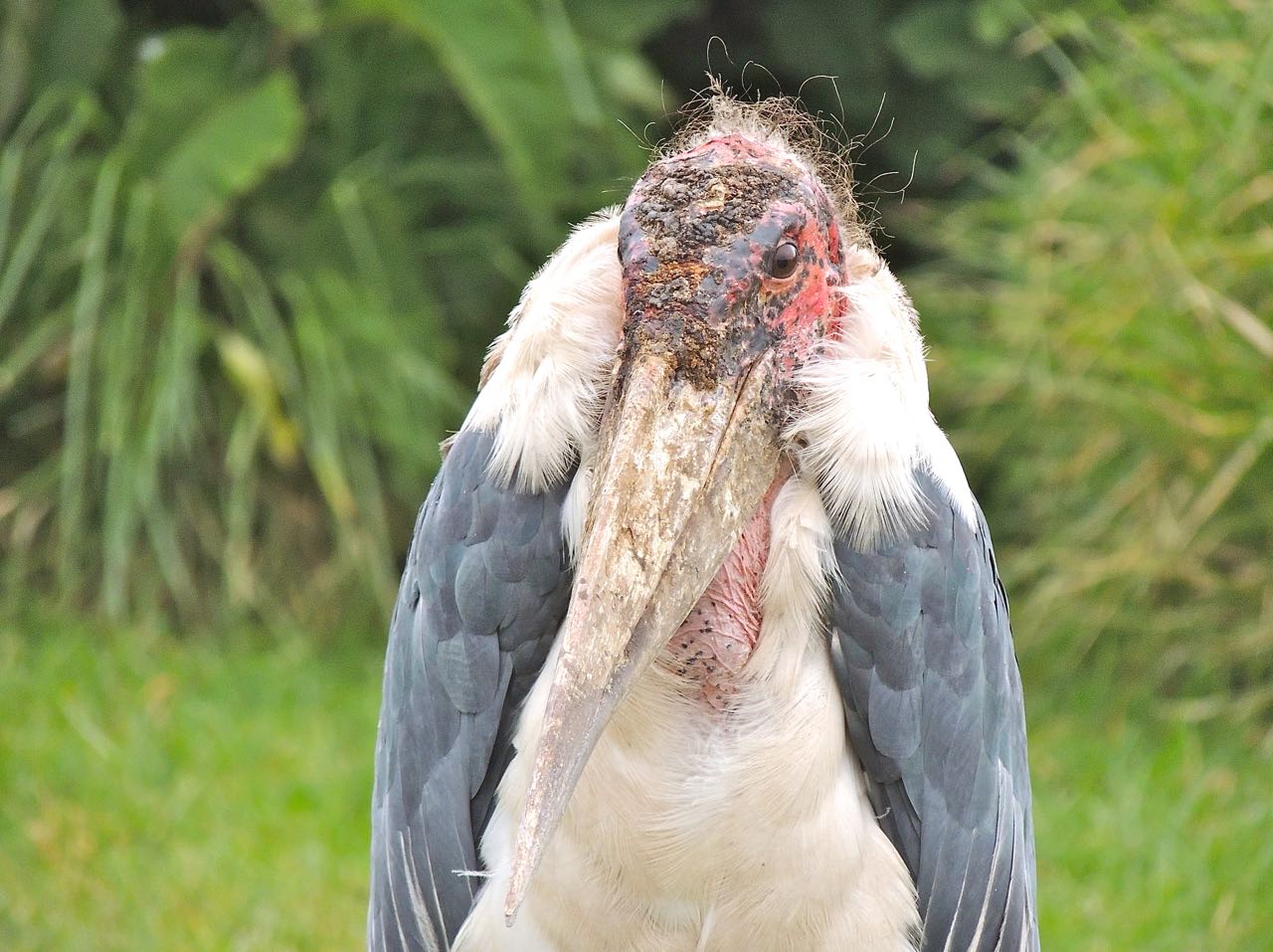 Marabou Stork - Photo by William Young
Marabou Stork - Photo by William Young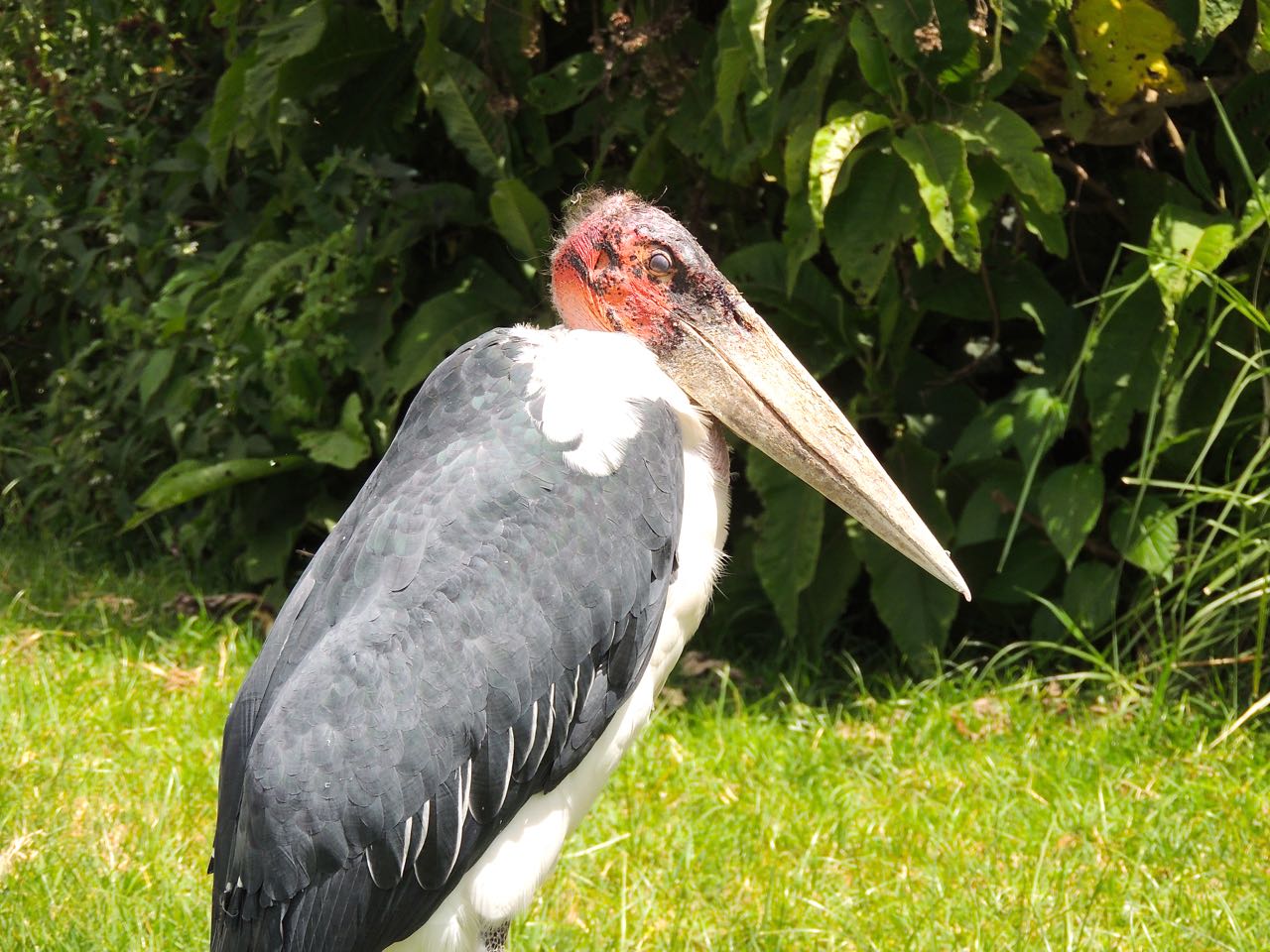 Marabou Stork - Photo by William Young
Marabou Stork - Photo by William Young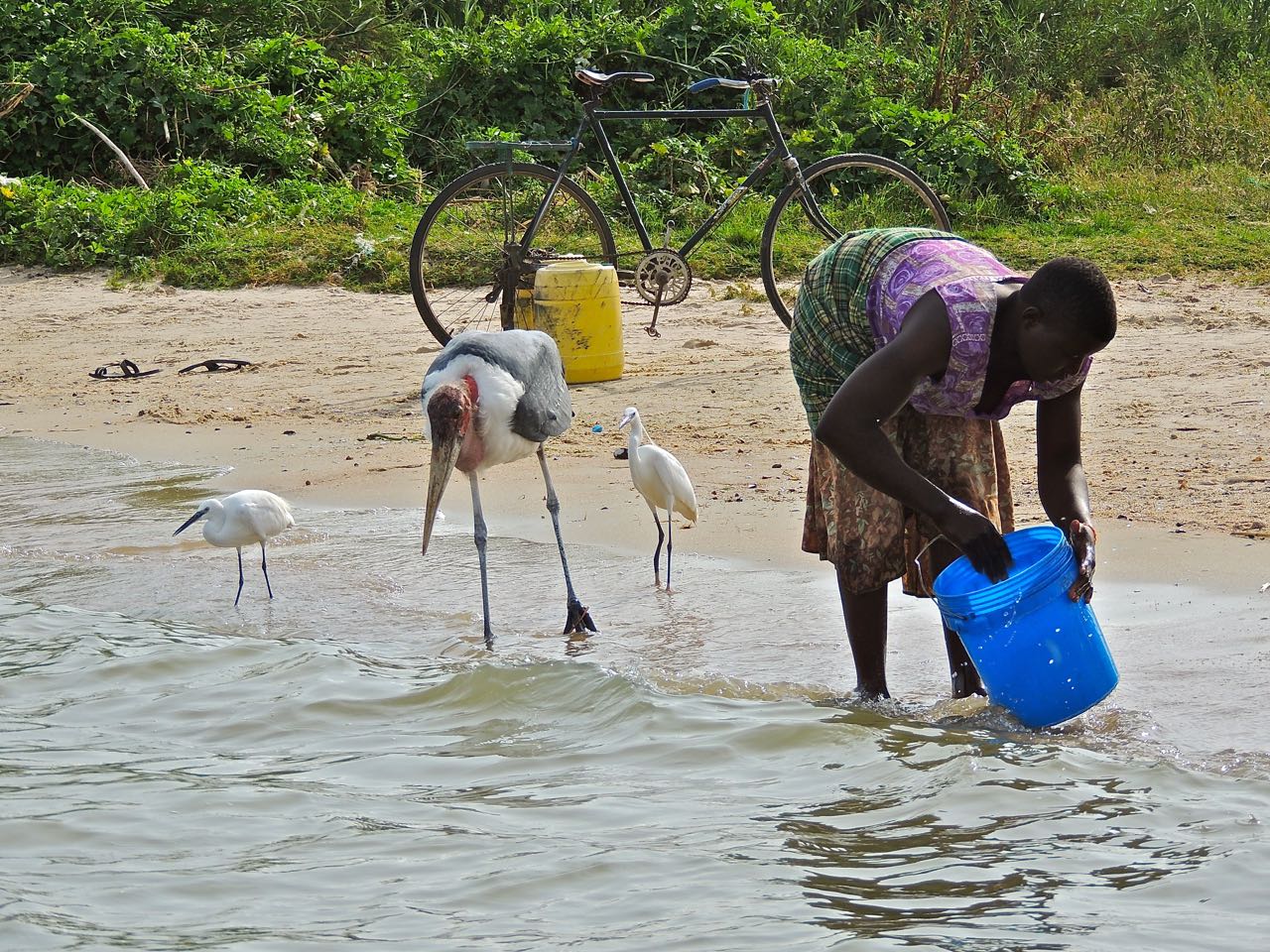 Marabou Stork and Little Egrets at Sukuma Market - Photo by William Young
Marabou Stork and Little Egrets at Sukuma Market - Photo by William Young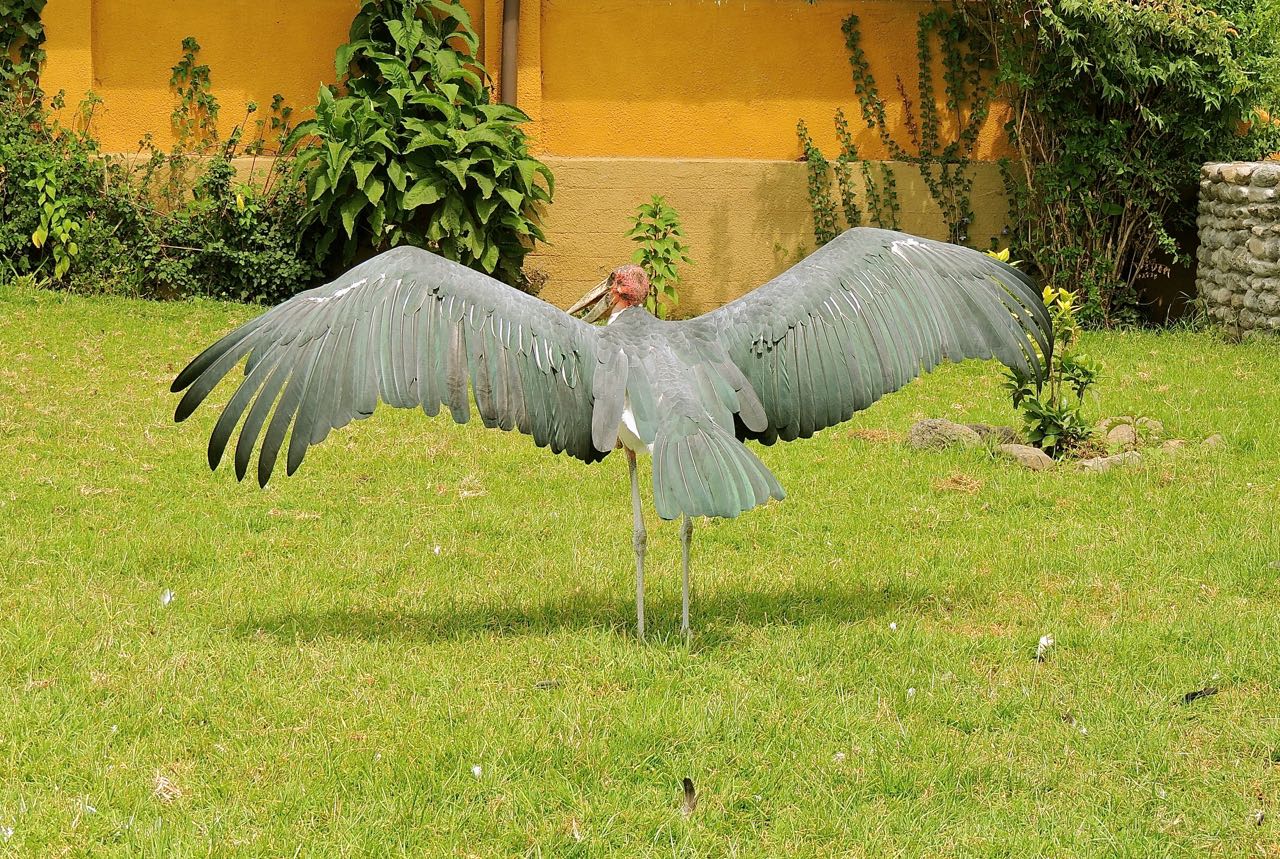 Marabou Stork Wingspan - Photo by William Young
Marabou Stork Wingspan - Photo by William Young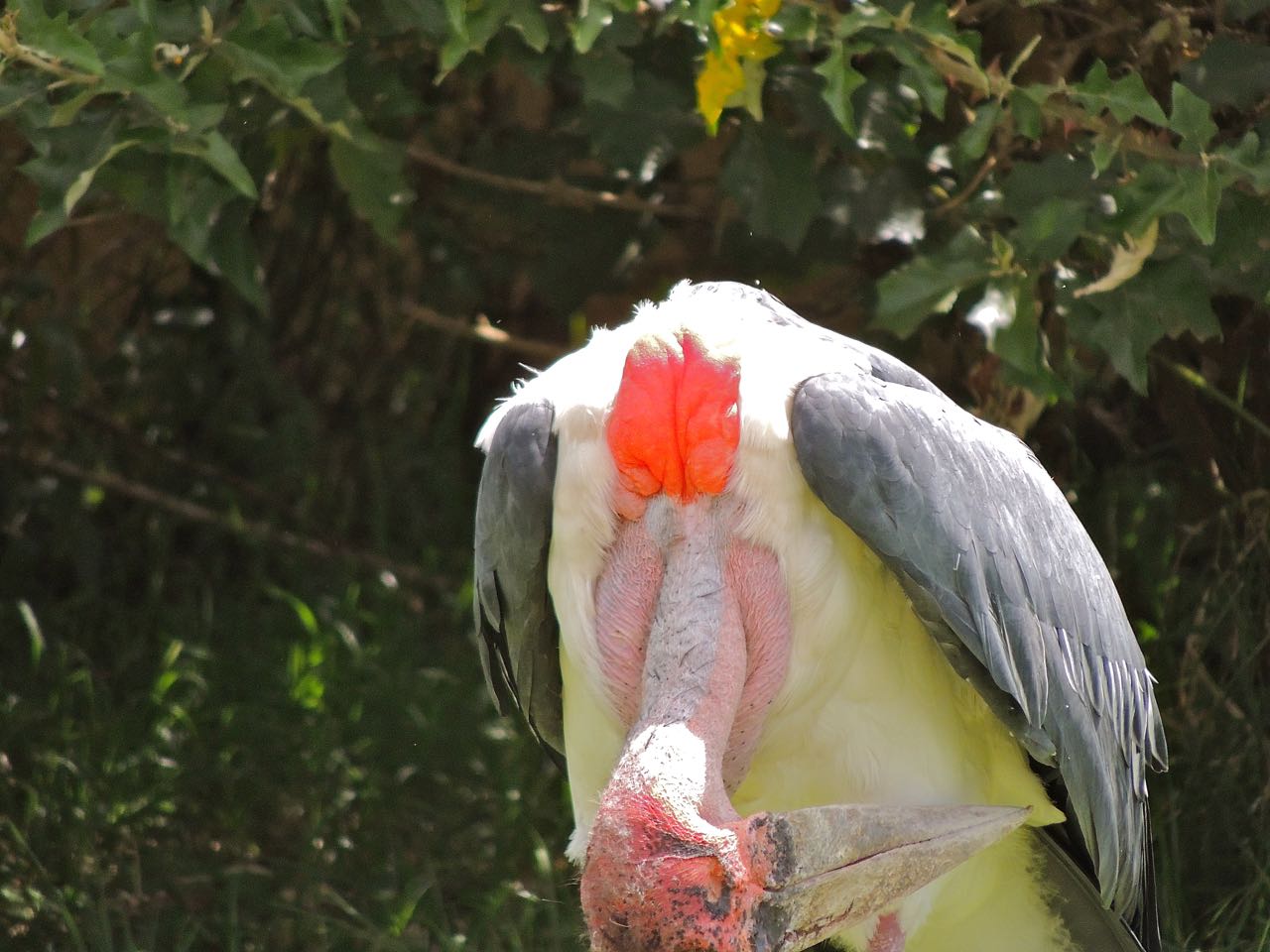 Marabou Stork - Photo by William Young
Marabou Stork - Photo by William Young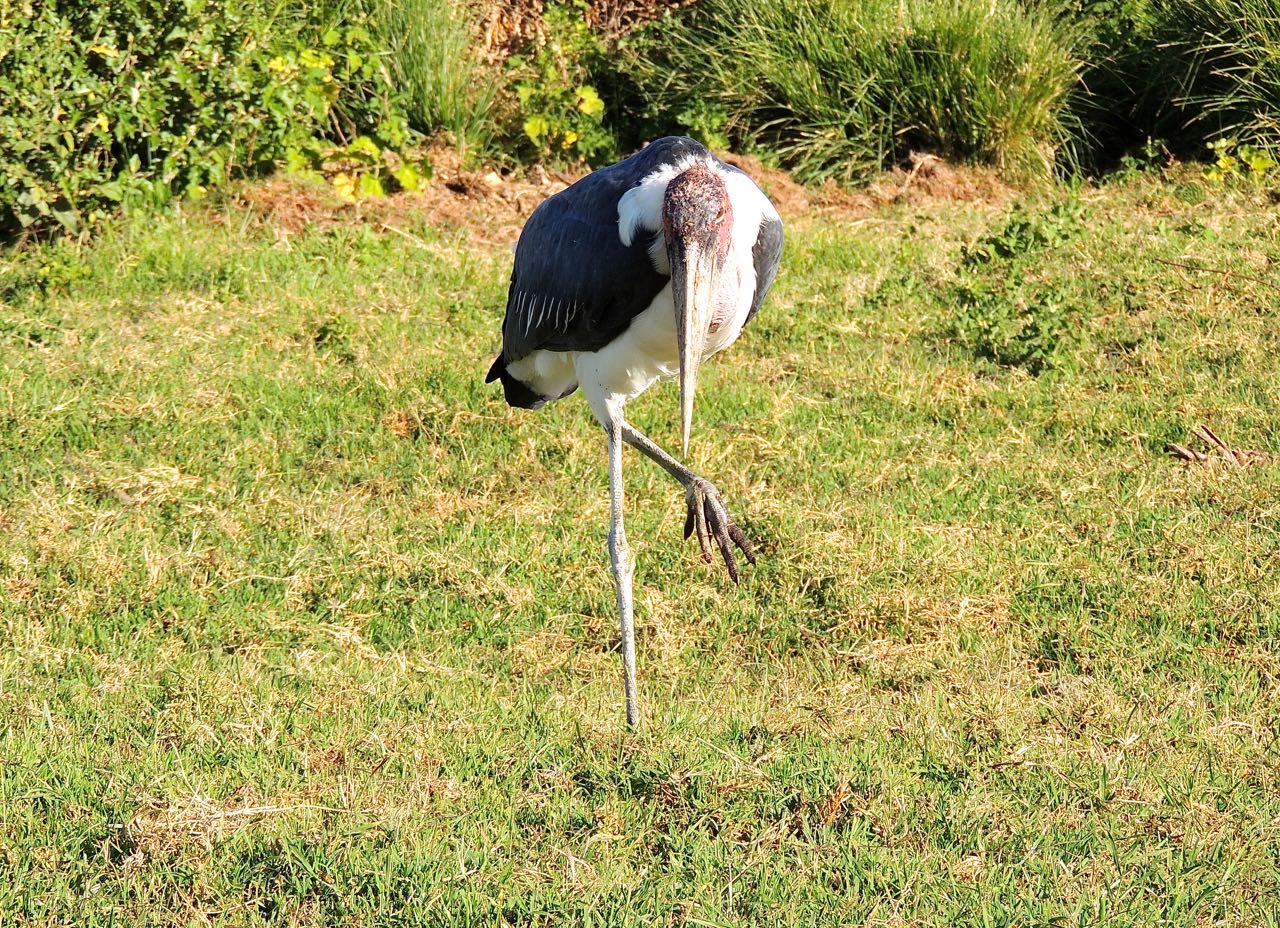 Marabou Stork Foot - Photo by William Young
Marabou Stork Foot - Photo by William YoungEuropean White Storks were common, and we saw about 600. About 500 were in the Serengeti, where they were scattered all over. We also had nice views of them the next day at Ndutu, where some perched on downed branches next to the water. They have a bright red bill and red legs. Their plumage is almost all white except for the broad black trailing edge of their wings. We saw an estimated 260 of the similar Yellow-billed Storks on four days. They have mostly white plumage, a broad black trailing edge to the wings, and red legs like the European White Stork. But the Yellow-billed Stork has a yellow bill with bare red skin on its face and forehead. Its tail is black, and when I saw one of the birds stretch a wing at the Momela camp, I could see a pinkish tinge to the feathering. The pastel feathering makes the Yellow-billed seem more attractive than the hygienic white of the European White.
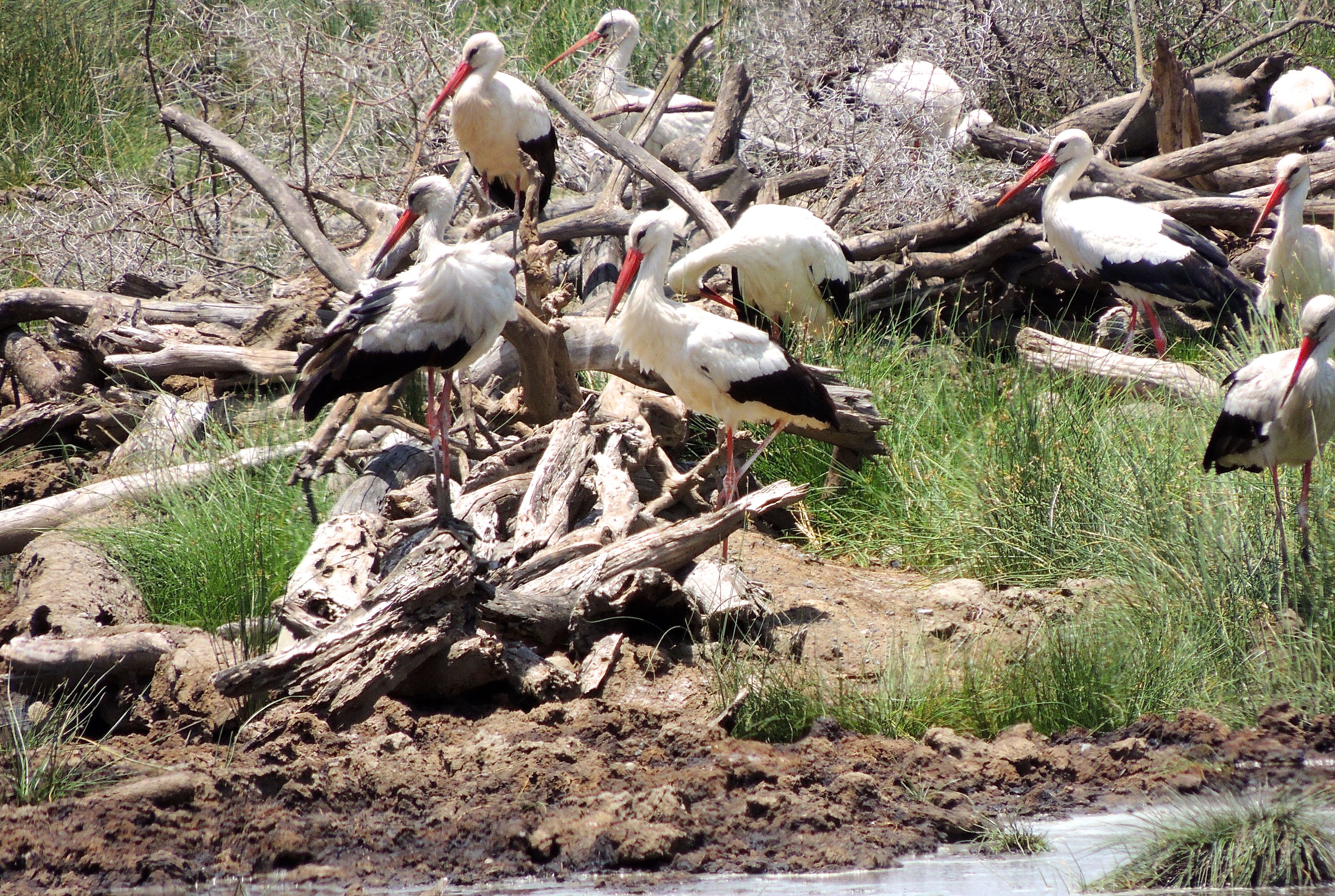 European White Storks - Photo by William Young
European White Storks - Photo by William Young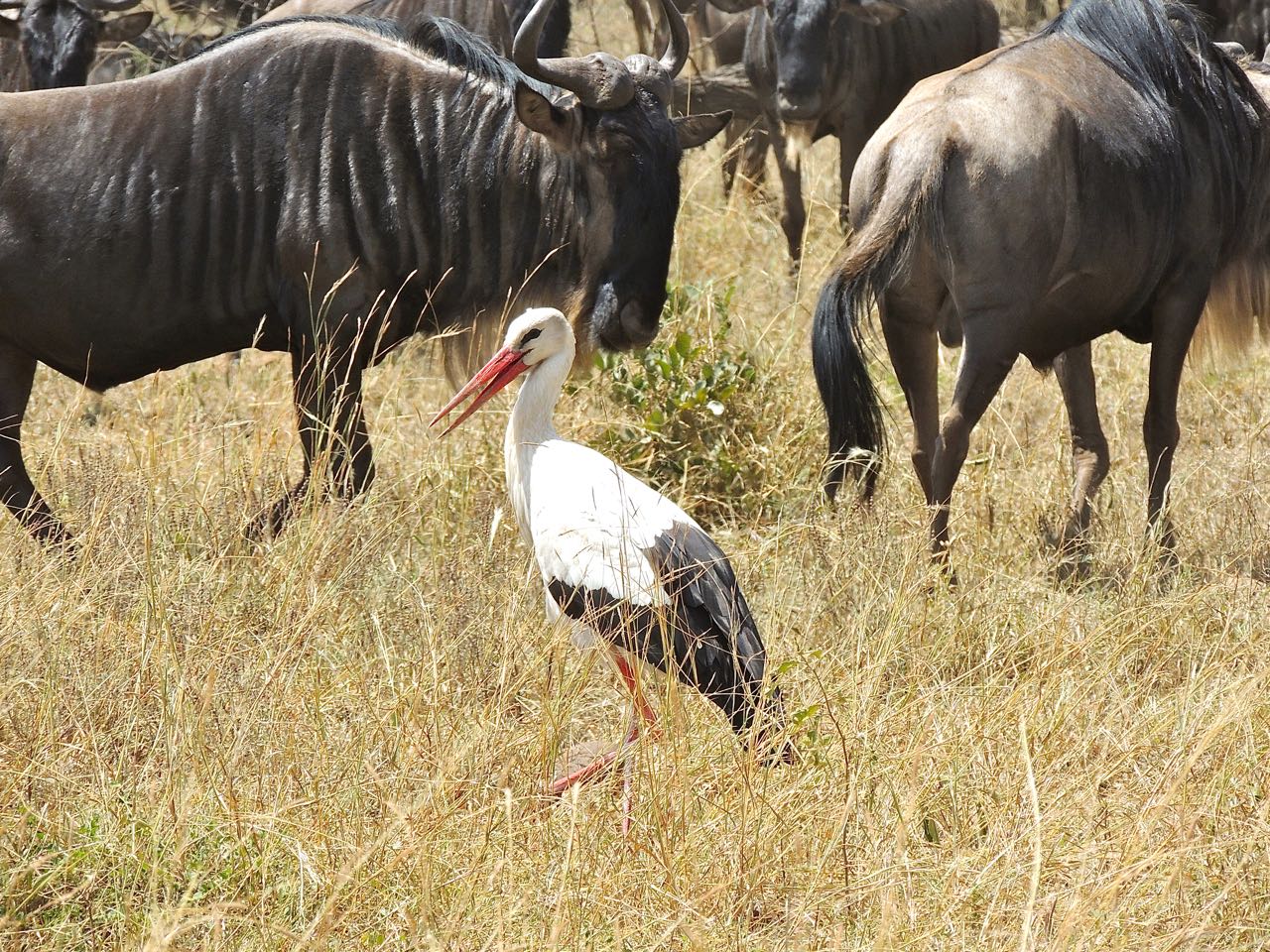 European White Stork and Wildebeests - Photo by William Young
European White Stork and Wildebeests - Photo by William Young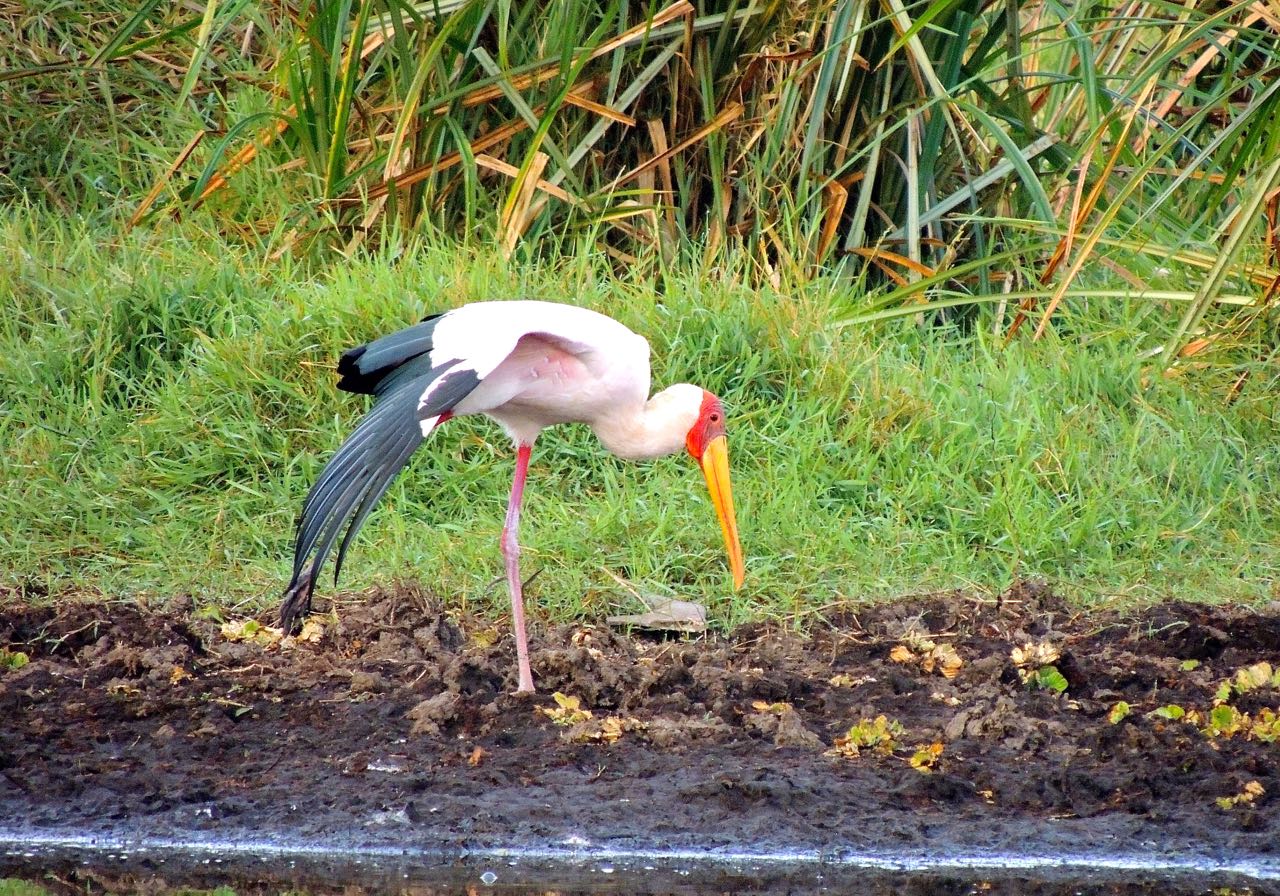 Yellow-billed Stork - Photo by William Young
Yellow-billed Stork - Photo by William YoungIn addition to the Abdim's, we saw two other dark stork species. The African Openbill is a uniformly dark bird, except for the bill which looks as if it is warped or damaged. From certain angles, you can see light shine through it. We saw about 30, with most of them at Tarangire. The Woolly-necked Stork has solid dark wings, but it has a white head, neck, and belly. Its forehead and face are also dark. We did not see any until we got to Dindira Swamp about midway through the trip. We saw 15 there, and we also saw some at a nearby scenic overlook. I photographed one near a large stick nest in a tree near the overlook. Red-billed Buffalo-Weavers were buzzing around the nest, and it appeared that they might have built their nests under the stork nest.
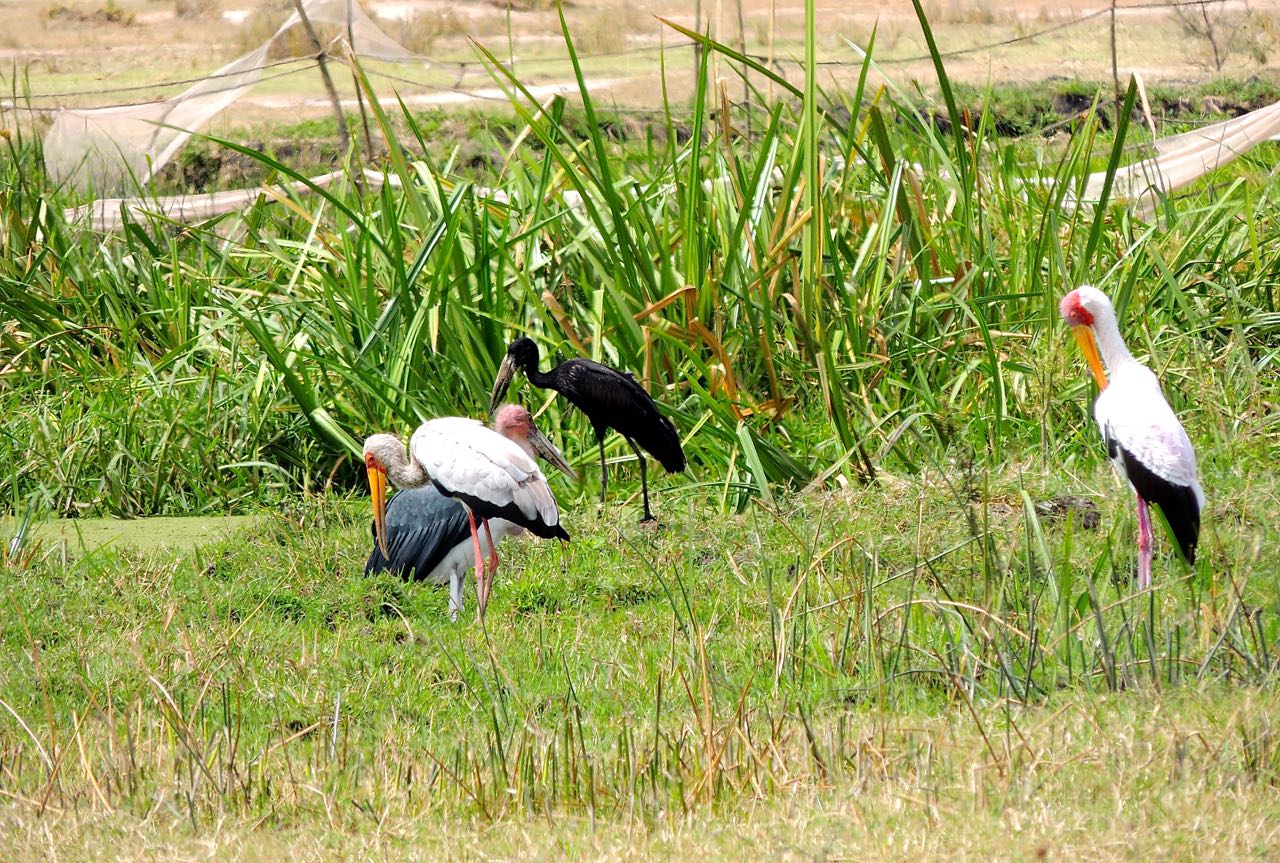 Yellow-billed, Marabou, and African Open-billed Storks - Photo by William Young
Yellow-billed, Marabou, and African Open-billed Storks - Photo by William Young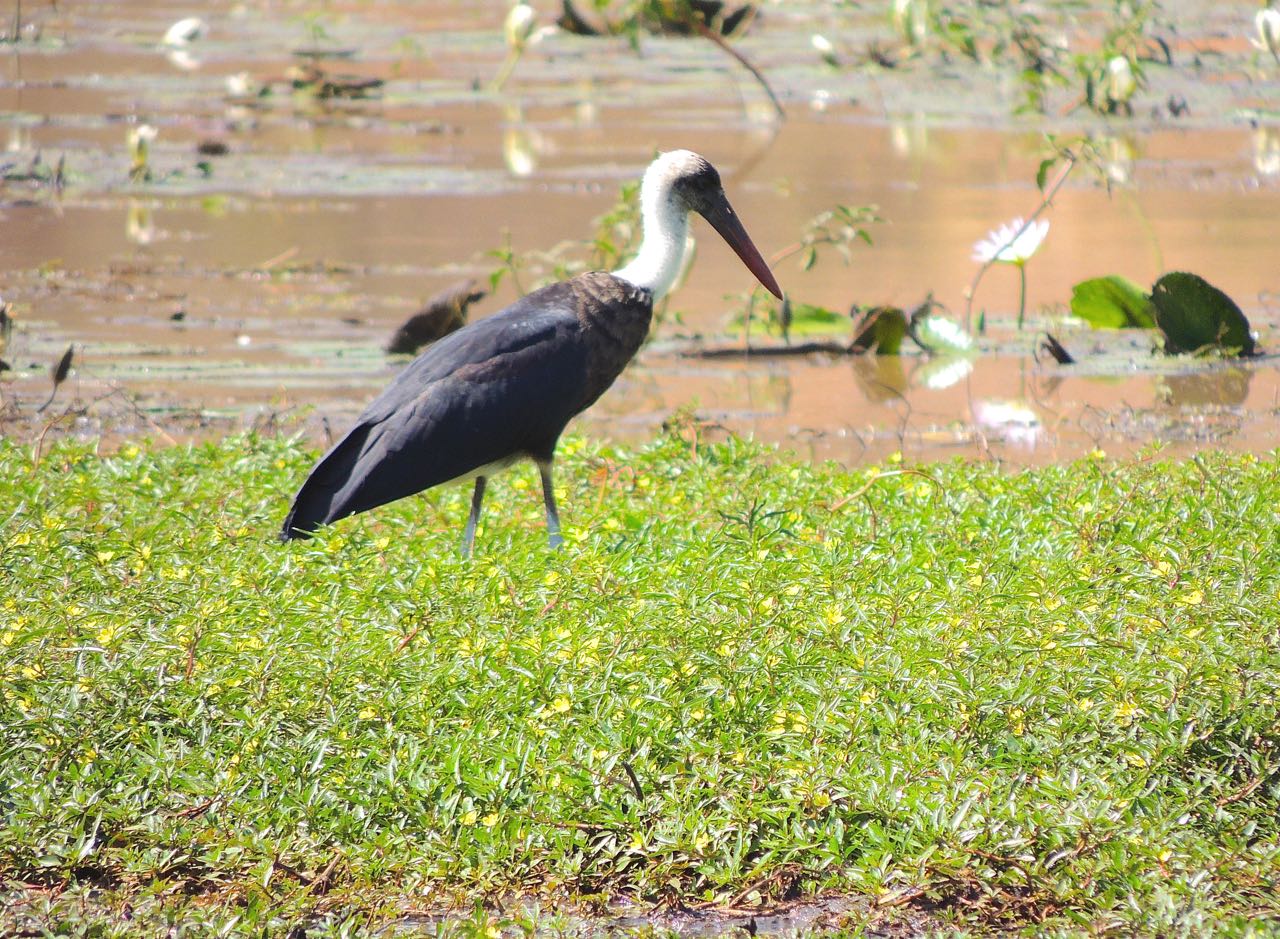 Woolly-necked Stork - Photo by William Young
Woolly-necked Stork - Photo by William Young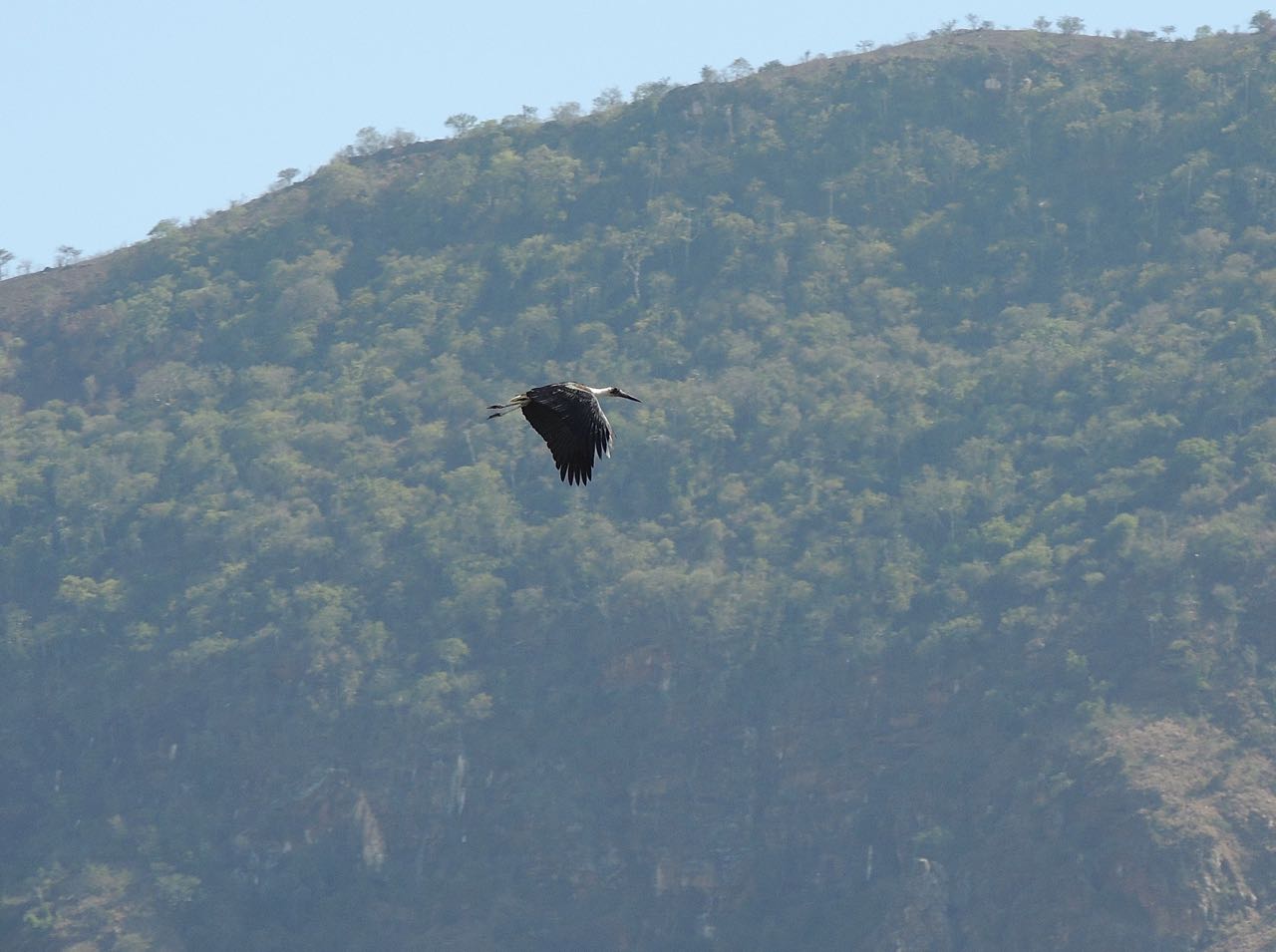 Woolly-necked Stork - Photo by William Young
Woolly-necked Stork - Photo by William Young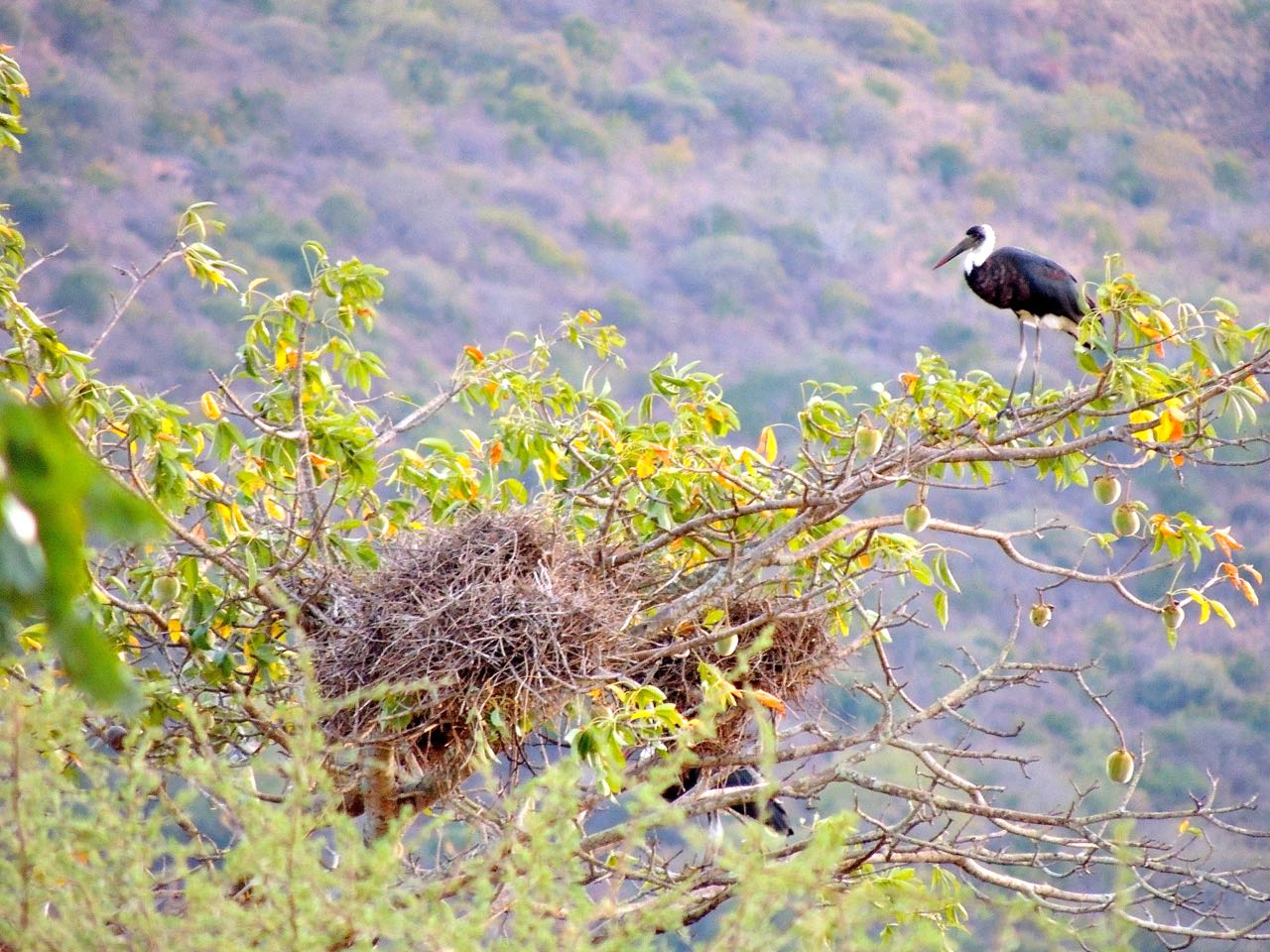 Woolly-necked Stork at Nest - Photo by William Young
Woolly-necked Stork at Nest - Photo by William YoungOne of the most beautiful birds of the trip, to balance the ugliness of the Marabou Storks, was the Saddle-billed Stork. We saw only four during the trip. One was at Dindira with the Woolly-necked Storks and a few European White Storks. We had much better views at Mikumi, where two were not far from our vehicle. Saddle-billed Storks are almost as big as Marabous, but they do not seem as bulky. They have a black head and neck, and the rest of the body is black-and-white, including their upperwings and their underwings. At Dindira, on one who was taking off, and I could see the black-and-white pattern under the wing. The breast is white with a small blood red spot of bare skin in the middle. The bill is red at the base and at the front half. There is a large saddle of yellow skin on top of the base that extends a bit into the black, and they also have two small yellow wattles that hang below the base of the bill and can be difficult to see. The Mikumi pair was a male and a female, with the female having an orange eye and the male a dark eye.
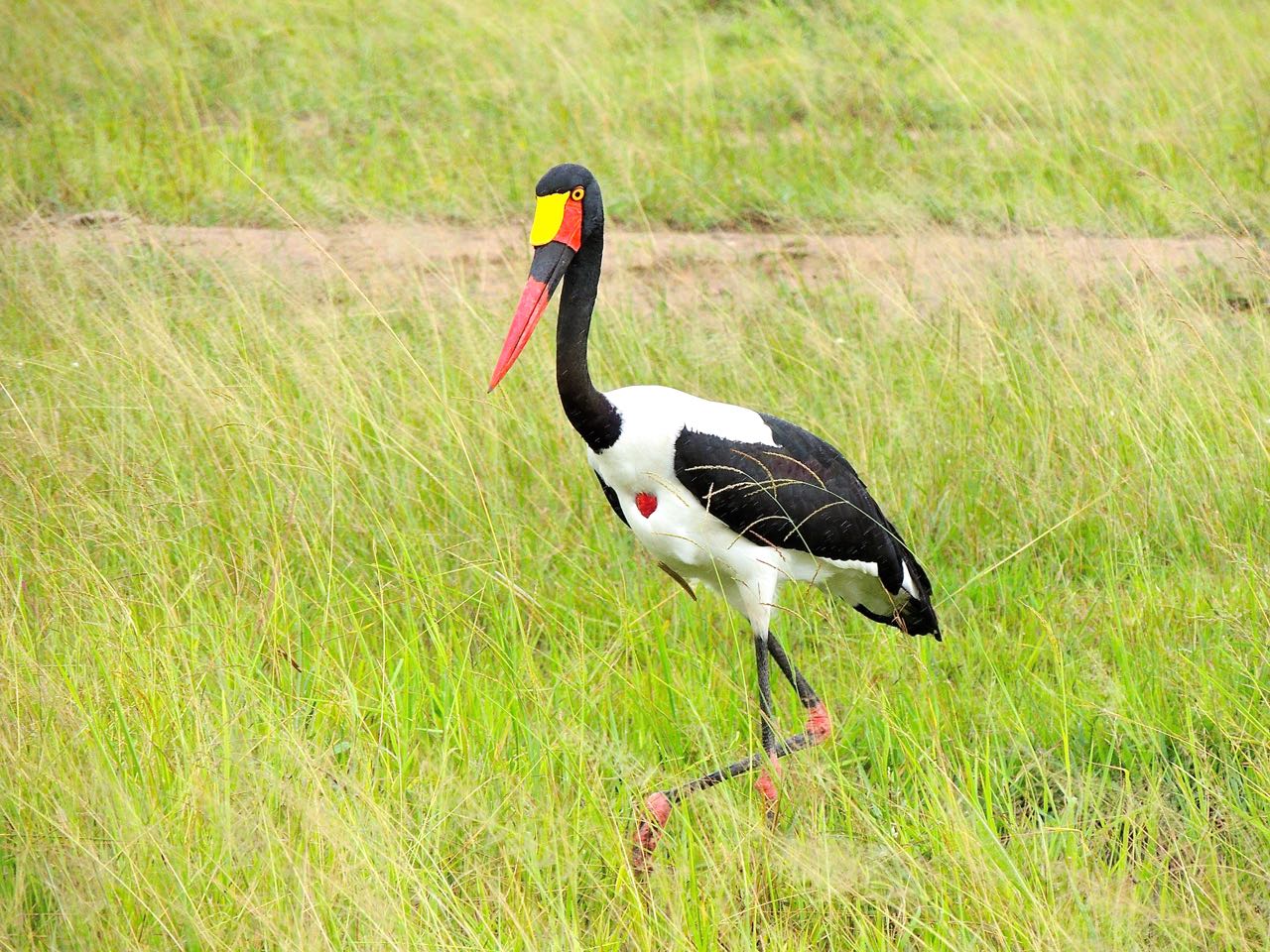 Saddle-billed Stork Female - Photo by William Young
Saddle-billed Stork Female - Photo by William Young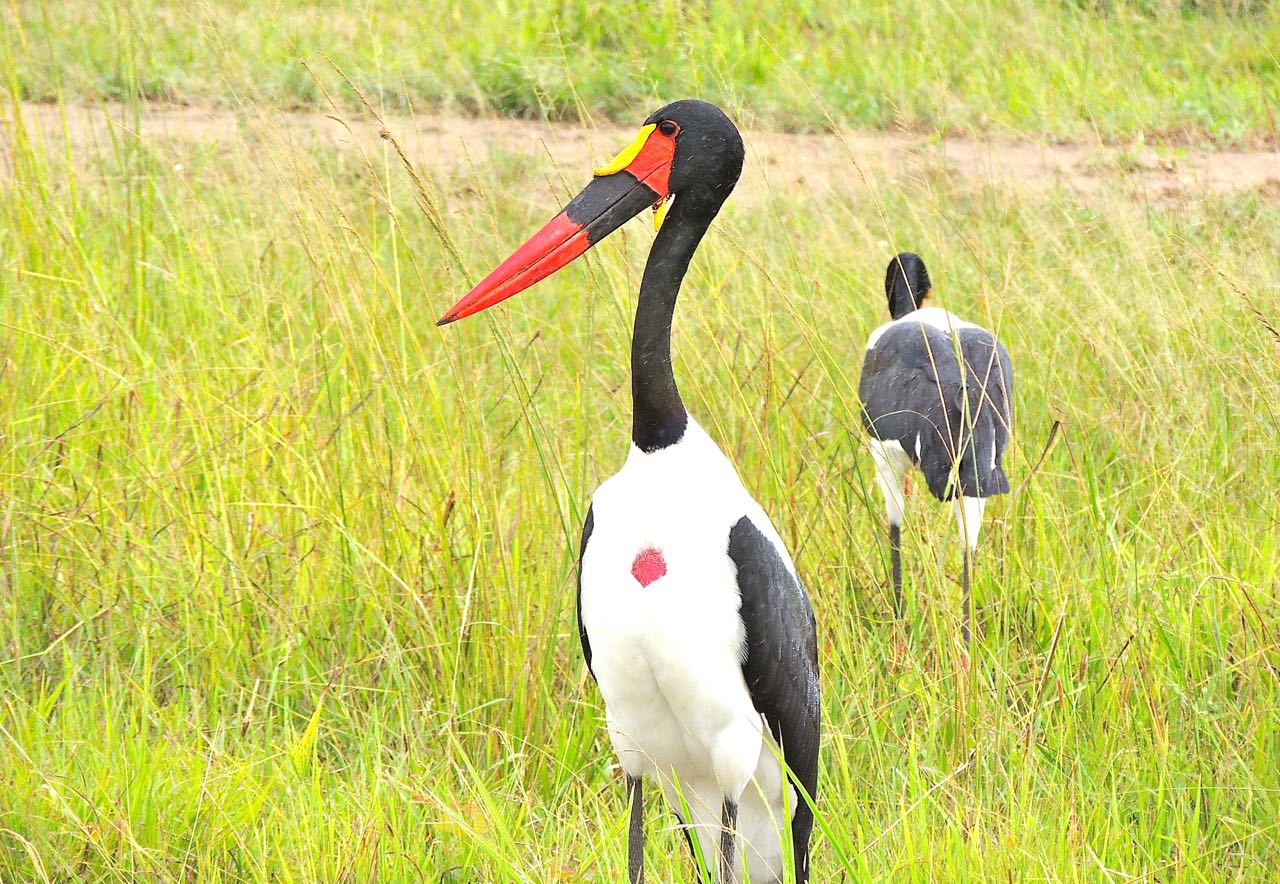 Saddle-billed Stork Male - Photo by William Young
Saddle-billed Stork Male - Photo by William Young
Ibises and SpoonbillIbises were fairly common during the trip. I saw a flyover Sacred Ibis when I was in the airport in Addis Ababa, and we saw some feeding during our day in Dar es Salaam. They look distinctive when flying, appearing almost all white with a black head and neck. We did not see large flocks, but they were not scarce. We saw 80 on ten days. We saw about half as many Hadada Ibis, who are uniformly dark. At Serenity by Lake Victoria, we heard the loud three- or four-note call of the Hadadas. They have a thicker bill than the Glossy, and there is a bit of red on the upper mandible. I had close views of some who were on the roof at the Karibu Heritage House. We saw roughly as many Glossy as Hadada. The Glossy is likewise all dark, but it is much more delicate looking. It has a more slender bill that has no red on it. We saw a lot of them at Lake Manyara near the Hippo Pool. I saw a few African Spoonbills, who are all white with a yellow bill and red legs. Two at Dindira had bare red skin at the base of the bill.
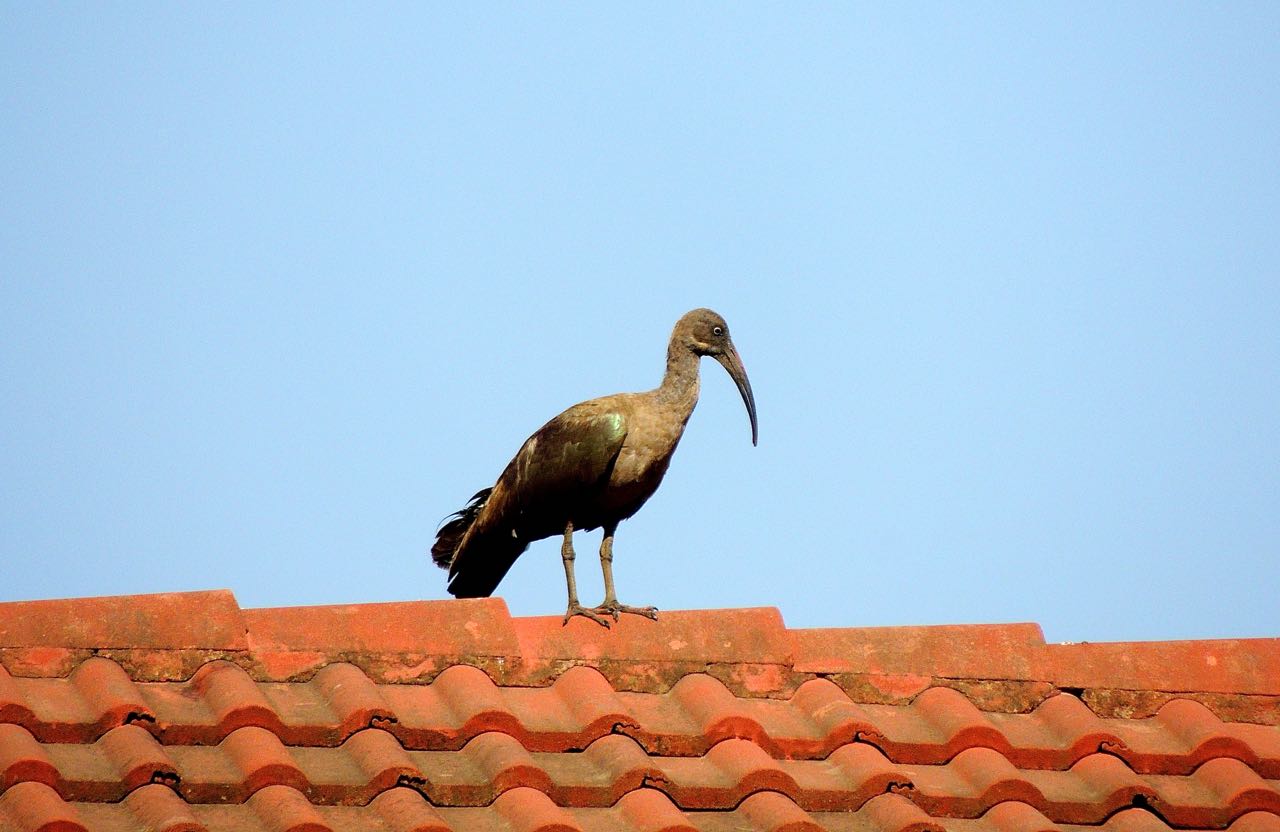 Hadada Ibis - Photo by William Young
Hadada Ibis - Photo by William Young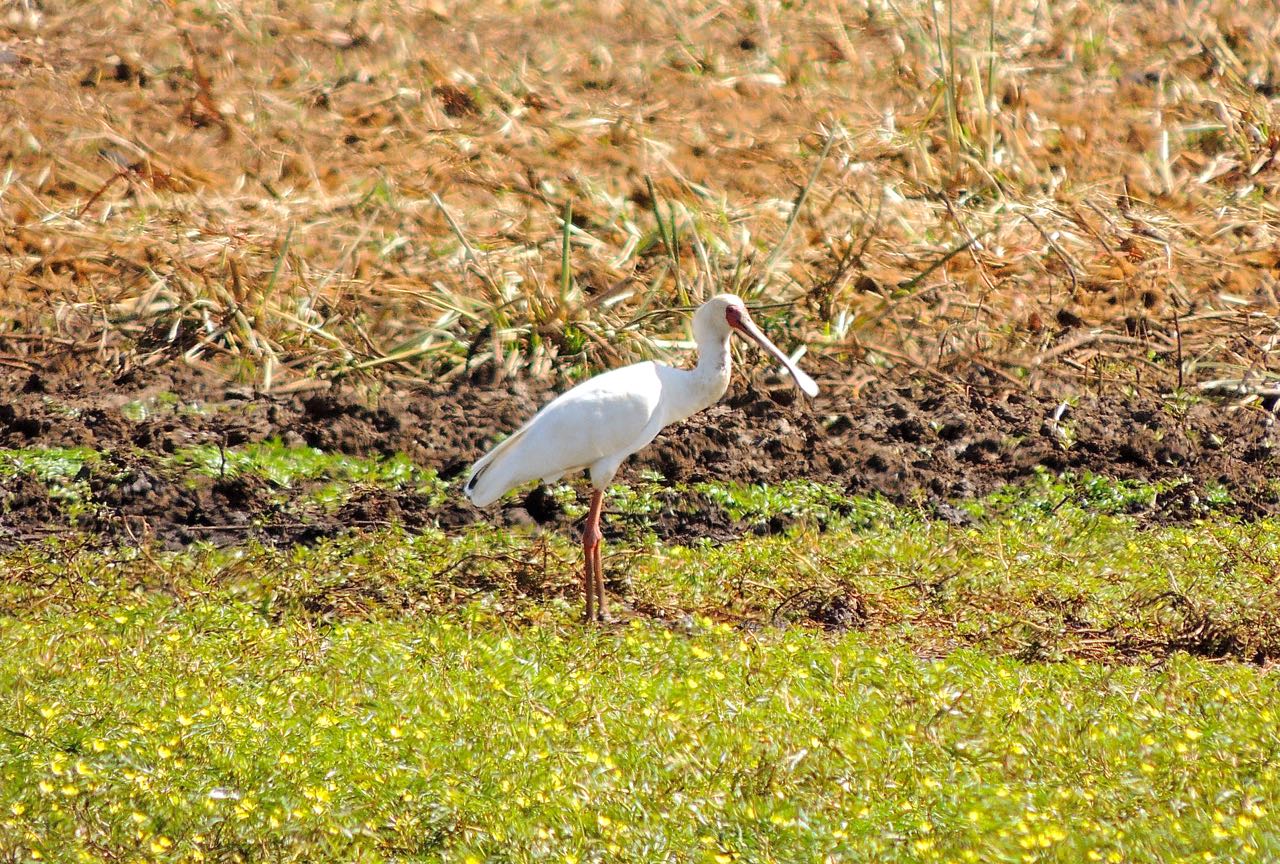 African Spoonbill - Photo by William Young
African Spoonbill - Photo by William Young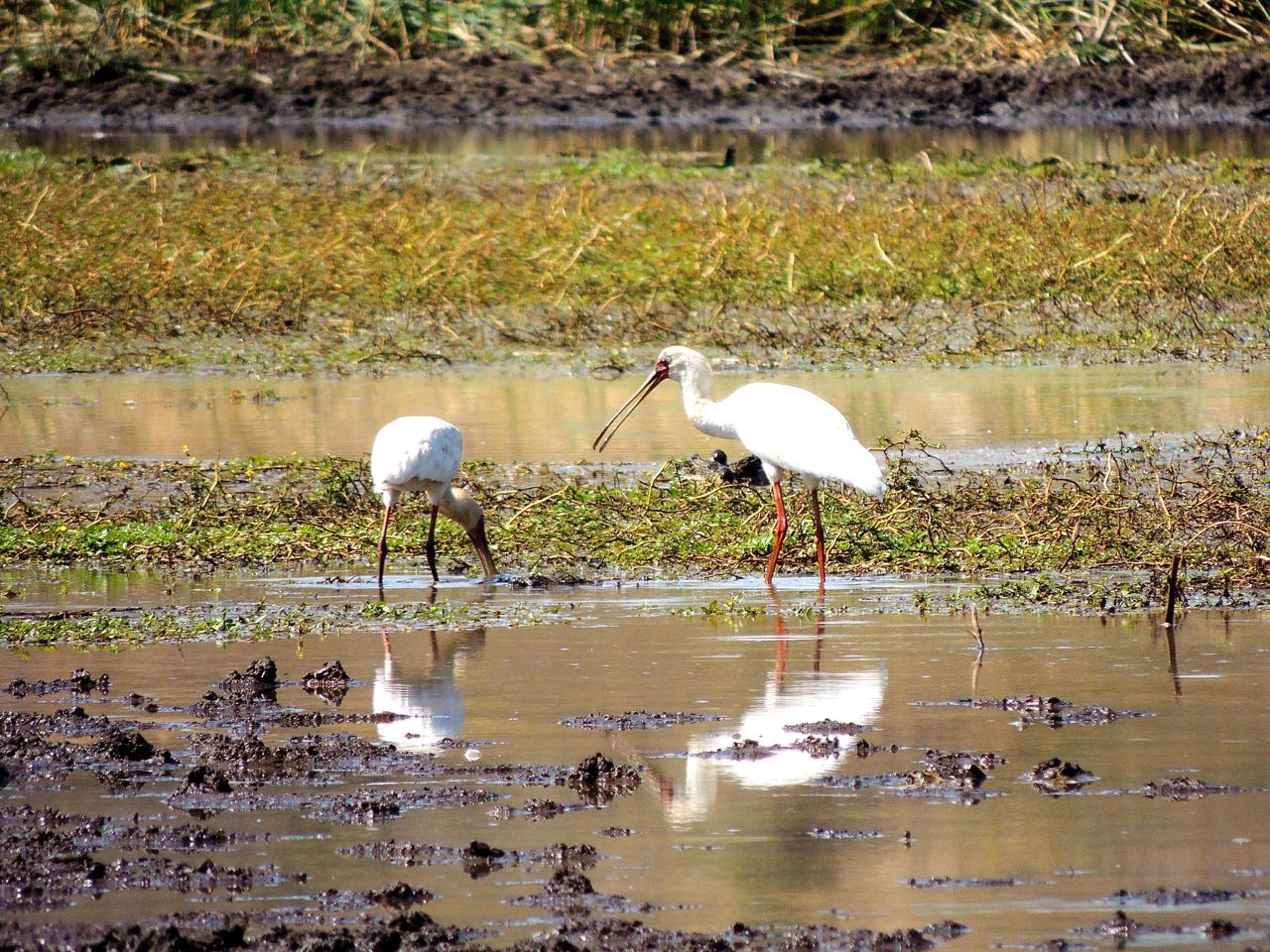 African Spoonbills - Photo by William Young
African Spoonbills - Photo by William Young
FlamingosMost of the Flamingos we saw were in Momela Lake. There were about a thousand Greater Flamingos and 5,000 Lesser Flamingos. The Lessers are smaller and pinker, and they have a solid dark bill rather than a black-tipped light bill like the Greater. We saw large mixed flocks, and sometimes we could see the Greaters standing taller in the crowd. In flight, the flamingos had pink underwings. Sometimes, they floated on the water like swans. They spend a lot of time bent over with their bills in the water. On our day in Dar es Salaam, we drove past a flock of about 15 Lessers. And we saw a distant flock of about 200 Greaters at Ndutu. We did not see flamingos often, but when we did, we tended to see a lot of them.
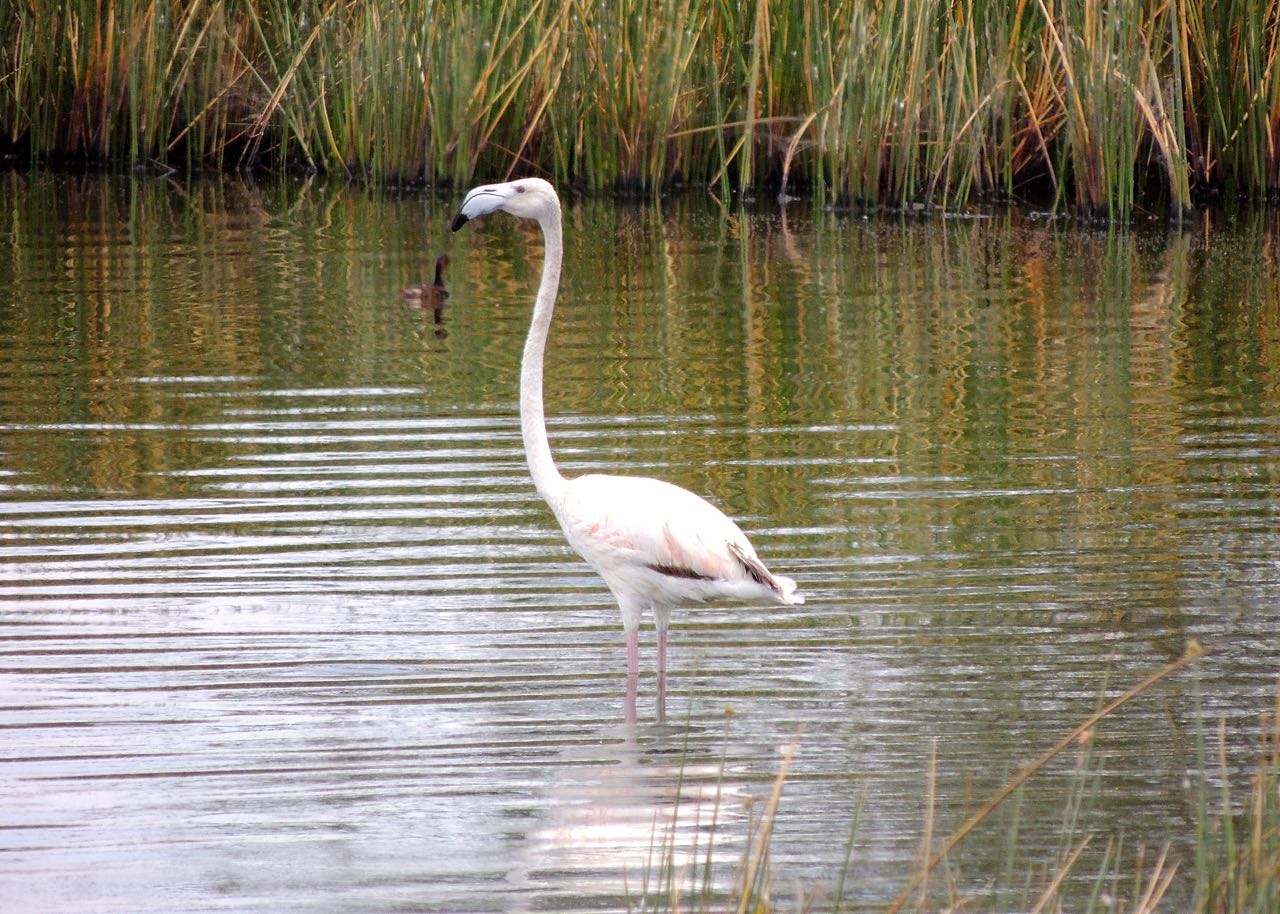 Greater Flamingos - Photo by William Young
Greater Flamingos - Photo by William Young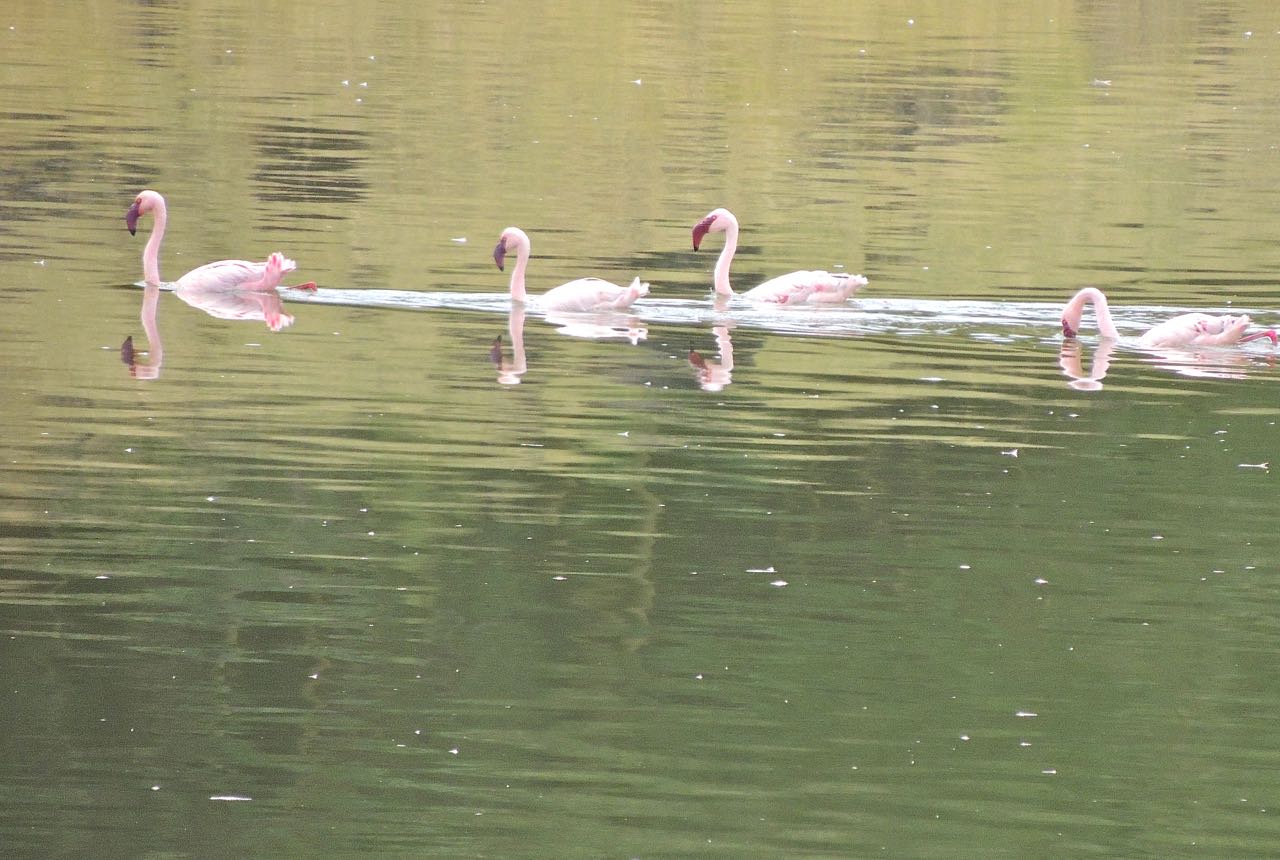 Lesser Flamingos - Photo by William Young
Lesser Flamingos - Photo by William Young
Geese and DucksThe waterfowl in Tanzania were somewhat of a disappointment. We saw ten species, but we tended not to see them often, even in waterholes and other bodies of water. We saw more than 100 Egyptian Geese on 9 days, and they were fairly common. At Ndutu, we saw one with goslings. Egyptian Geese are large and tan, with black around the eye, a pinkish bill, and white on the face. They do not look attractive. Nor do the much larger Spur-winged Geese, who are black and white, with bare red skin on the face making them look like supersized Muscovy Ducks. The Comb Duck also has black and white plumage, but it has a dark bill with a large knobby protrusion on the upper mandible — a bit like the knobby protrusion on the lower mandible of the Musk Duck in Australia. We saw four at Tarangire, but because they were sleeping, I could not see their bills well. I had a close look at a young one at Dindira, who had a dirty brown head rather than a dirty white head like the adults. Some of the smaller ducks were not all that attractive either. We saw 10 African Black Ducks at Silale Swamp at Tarangire, and they looked rattier than American or Australian Black Ducks. We saw Hottentot Teals, who are small and have a light cheek, and they too look plain and dirty. In Arusha, we saw Maccoa Ducks, who are in the same genus as the Ruddy Duck. The bill looks more gray than blue, and the plumage appeared to be a washed-out brown. We saw them on two days in the same place, but we saw more and had better looks the second day.
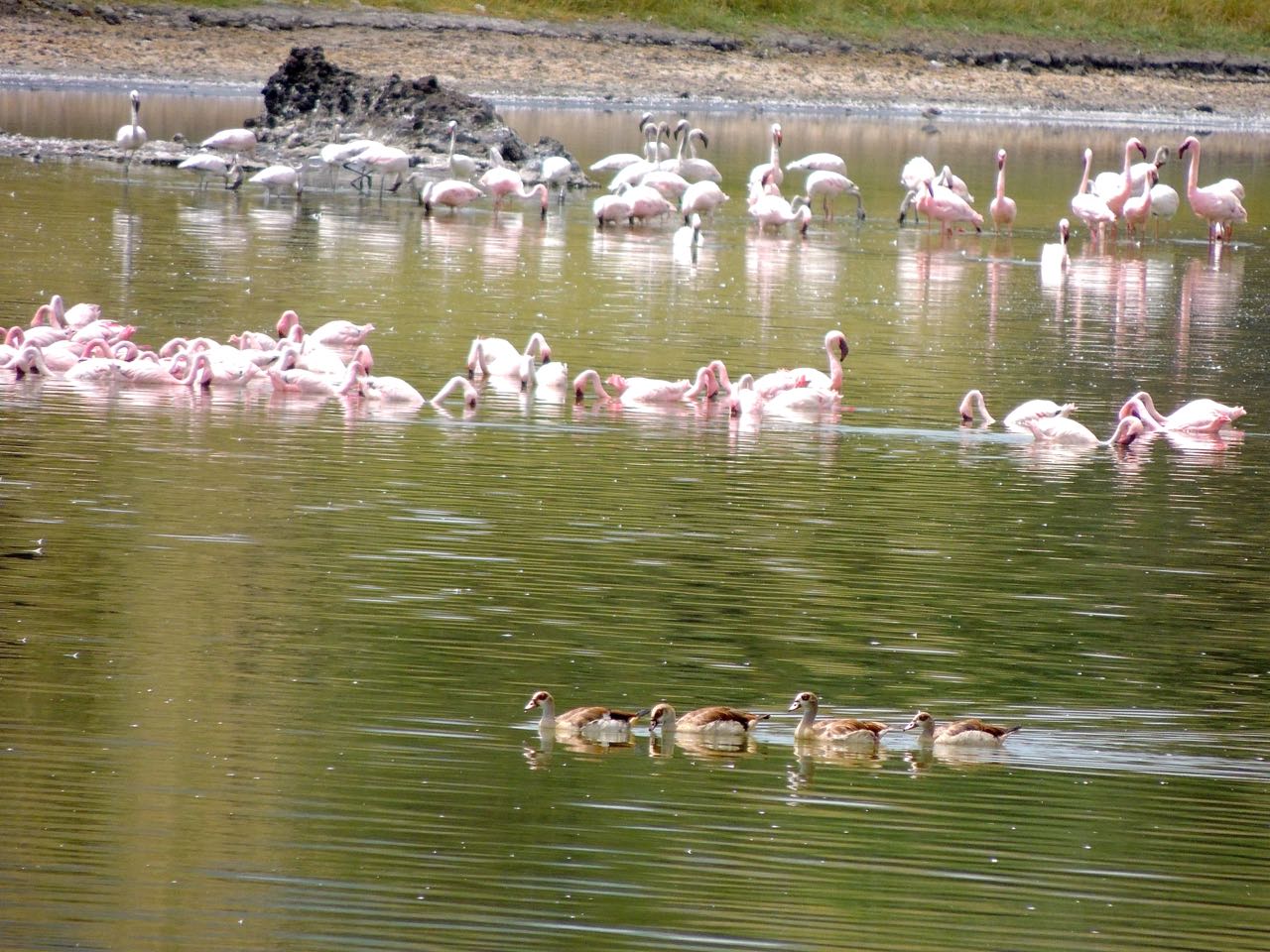 Egyptian Geese and Lesser Flamingos - Photo by William Young
Egyptian Geese and Lesser Flamingos - Photo by William Young Spur-winged Goose - Photo by William Young
Spur-winged Goose - Photo by William Young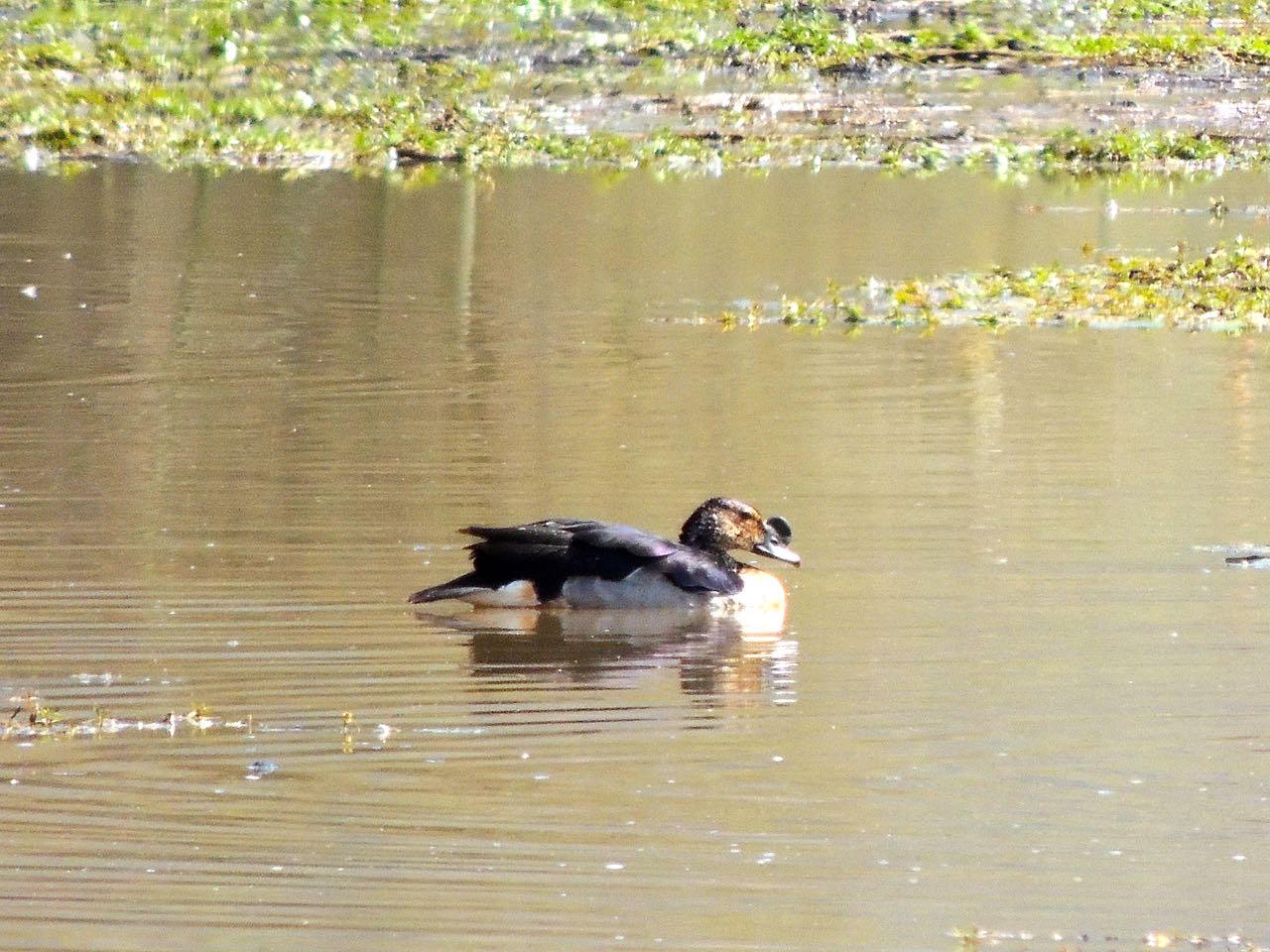 Comb Duck - Photo by William Young
Comb Duck - Photo by William Young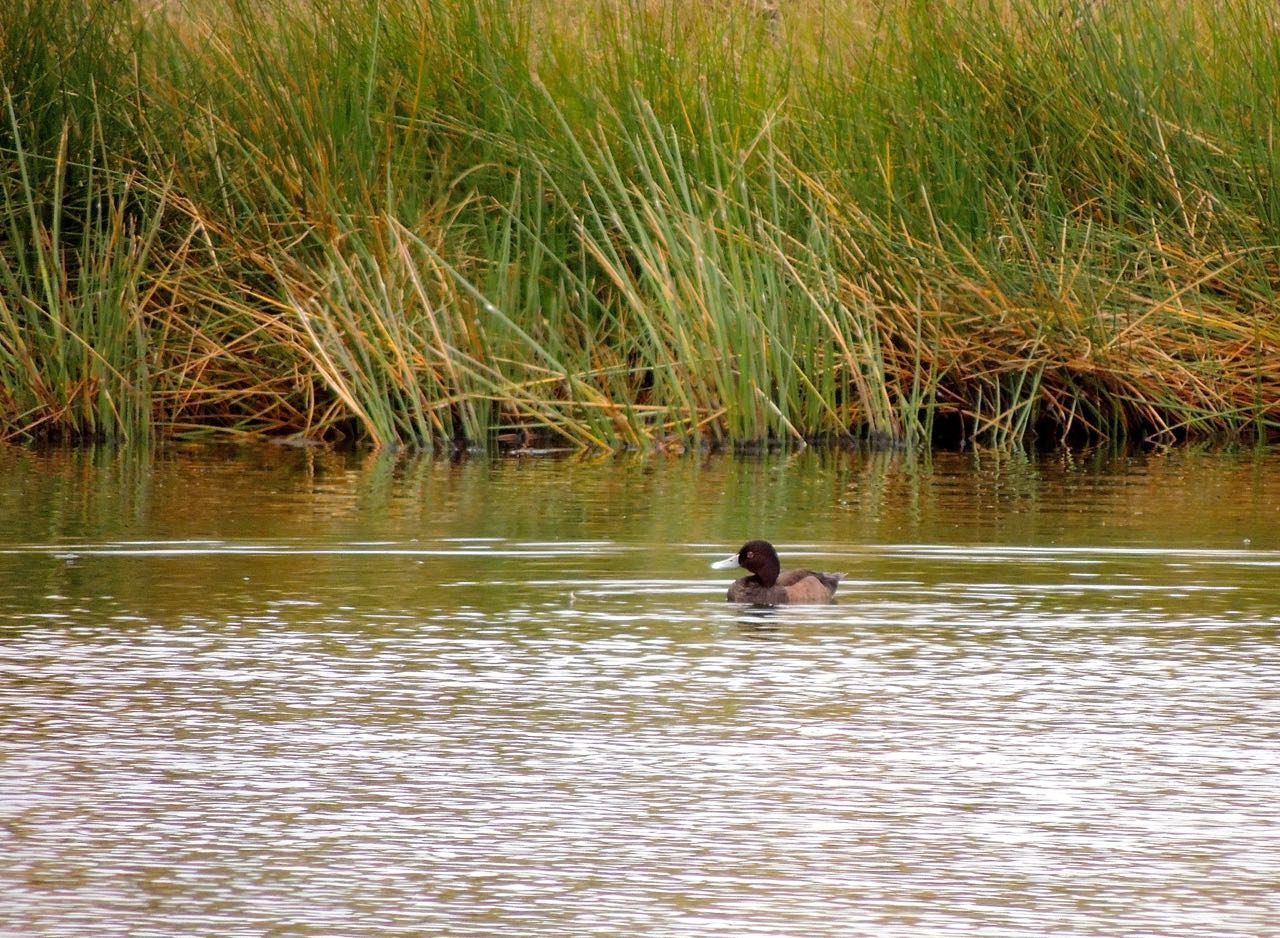 Maccoa Duck - Photo by William Young
Maccoa Duck - Photo by William YoungNot all the ducks were dingy. At Dindira Swamp, we saw about a hundred White-faced Whistling-Ducks, who are handsome. They make a distinctive three- or four-note whistling call. Their bodies look gray, with a brown neck and a whitish face. The head looks triangular. Six Red-billed Ducks swam around Dindira, and in the right light, they are quite beautiful, with their brown body, white cheek, and bright red bill. We had seen larger groups of them at Ndutu and Ngorongoro, but we had better views at Dindira. Cape Teal have a limited palette to work with, but their pinkish-red bill, if seen in good light, makes them look handsome. They are small and have a greyish-brown body. We had our best looks at them at the lakes around Arusha. A surprise was seeing a pair of Northern Shovelers at Ngorongoro, not far from where we saw a rhinoceros.
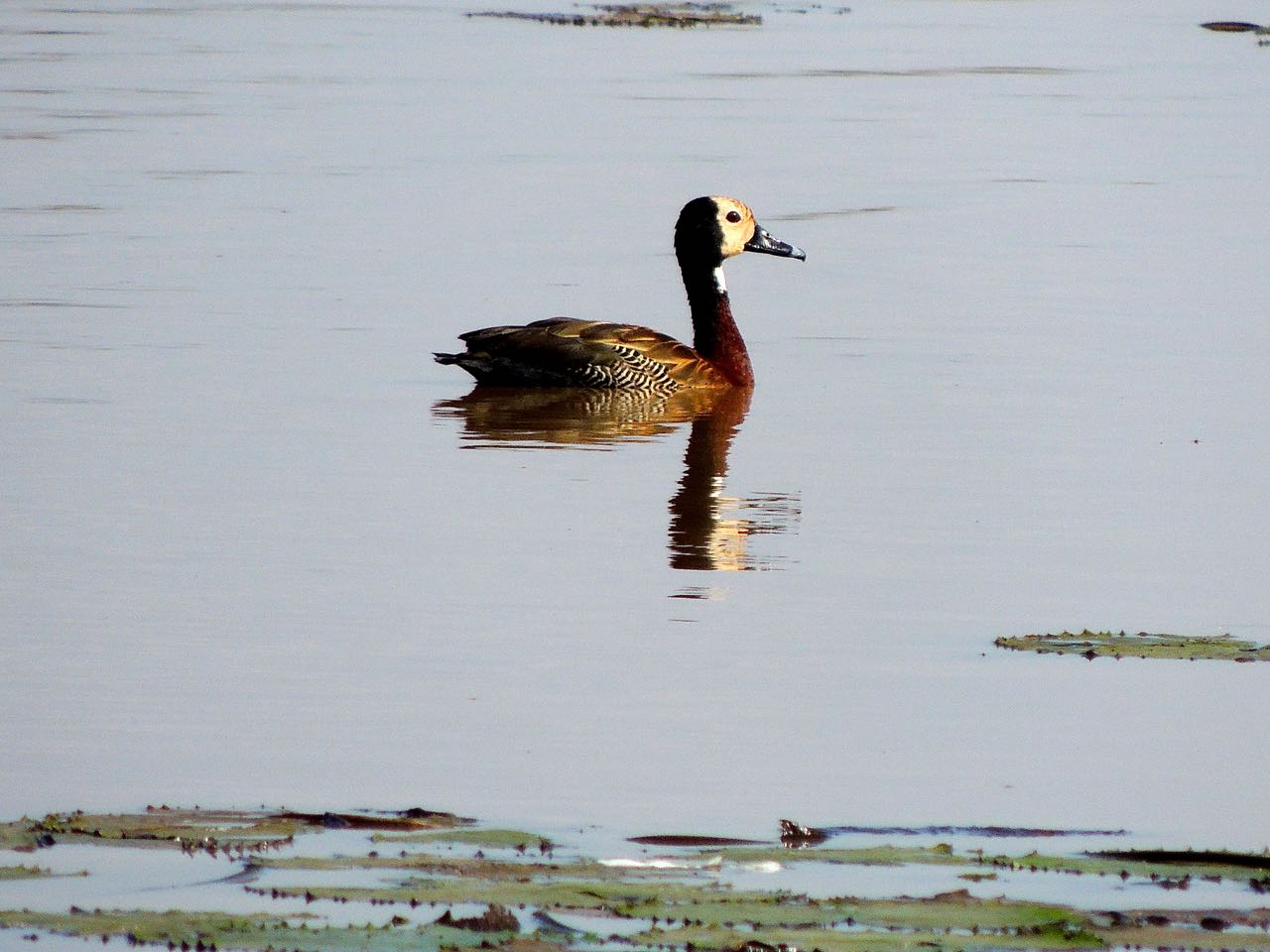 White-faced Whistling-Duck - Photo by William Young
White-faced Whistling-Duck - Photo by William Young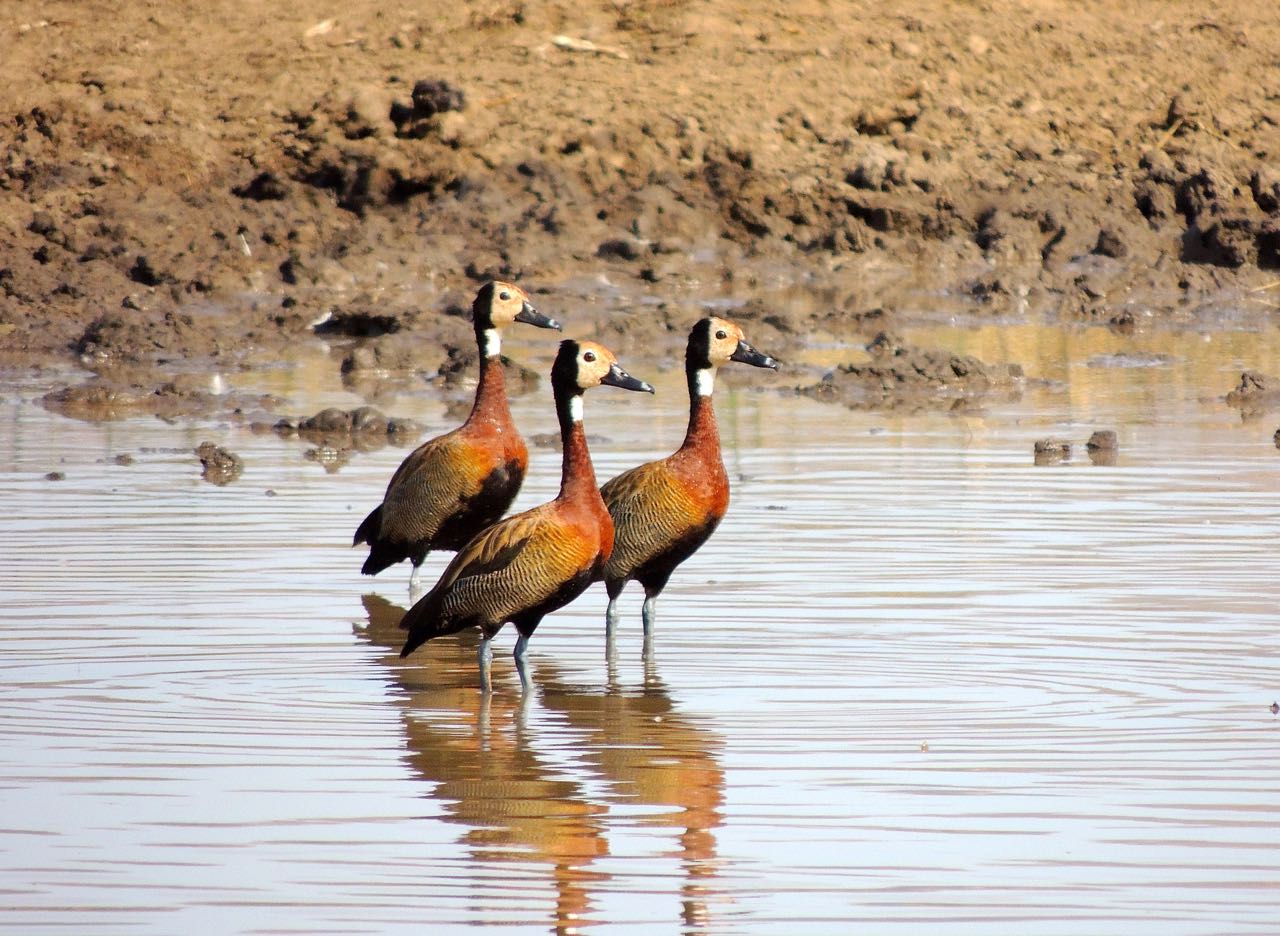 White-faced Whistling-Ducks - Photo by William Young
White-faced Whistling-Ducks - Photo by William Young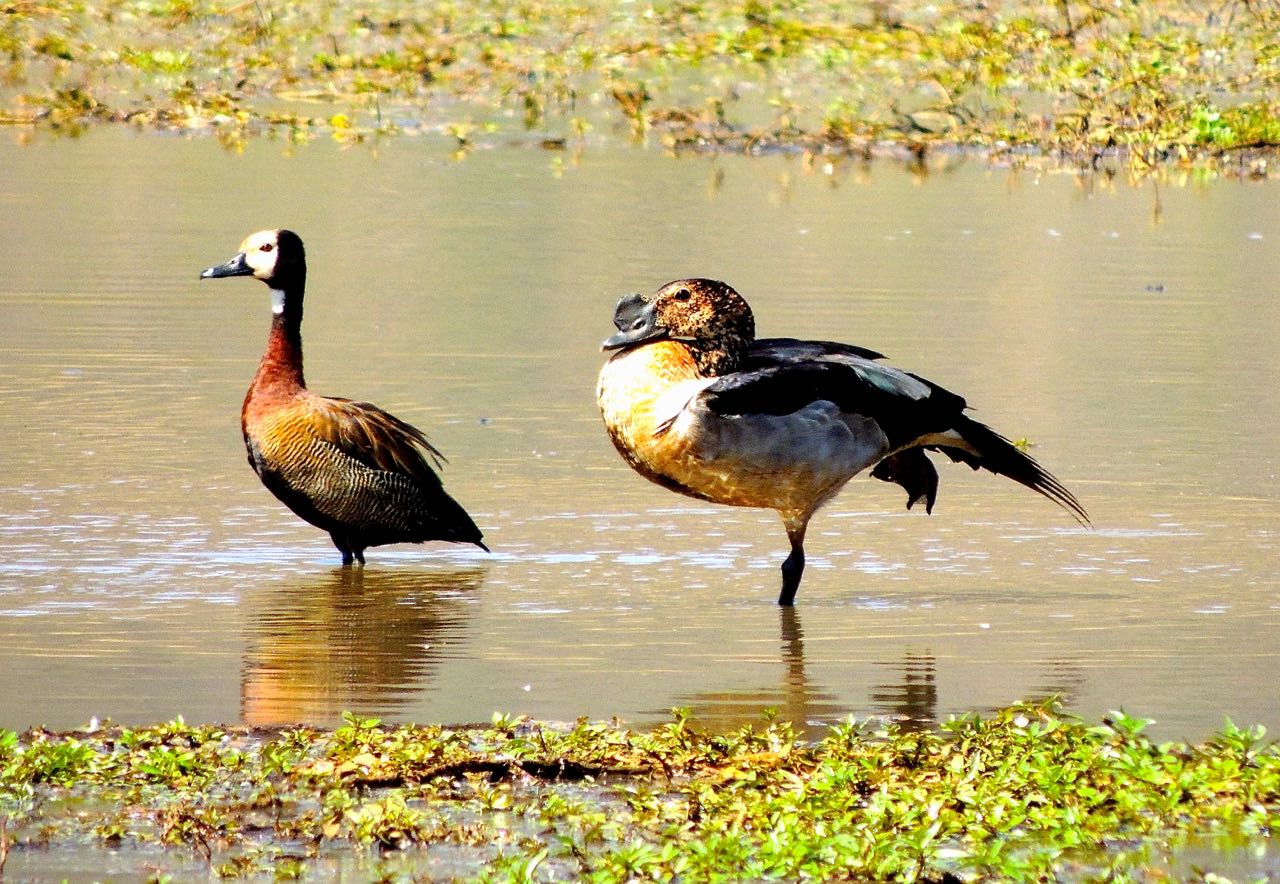 White-faced Whistling-Duck and Comb Duck - Photo by William Young
White-faced Whistling-Duck and Comb Duck - Photo by William Young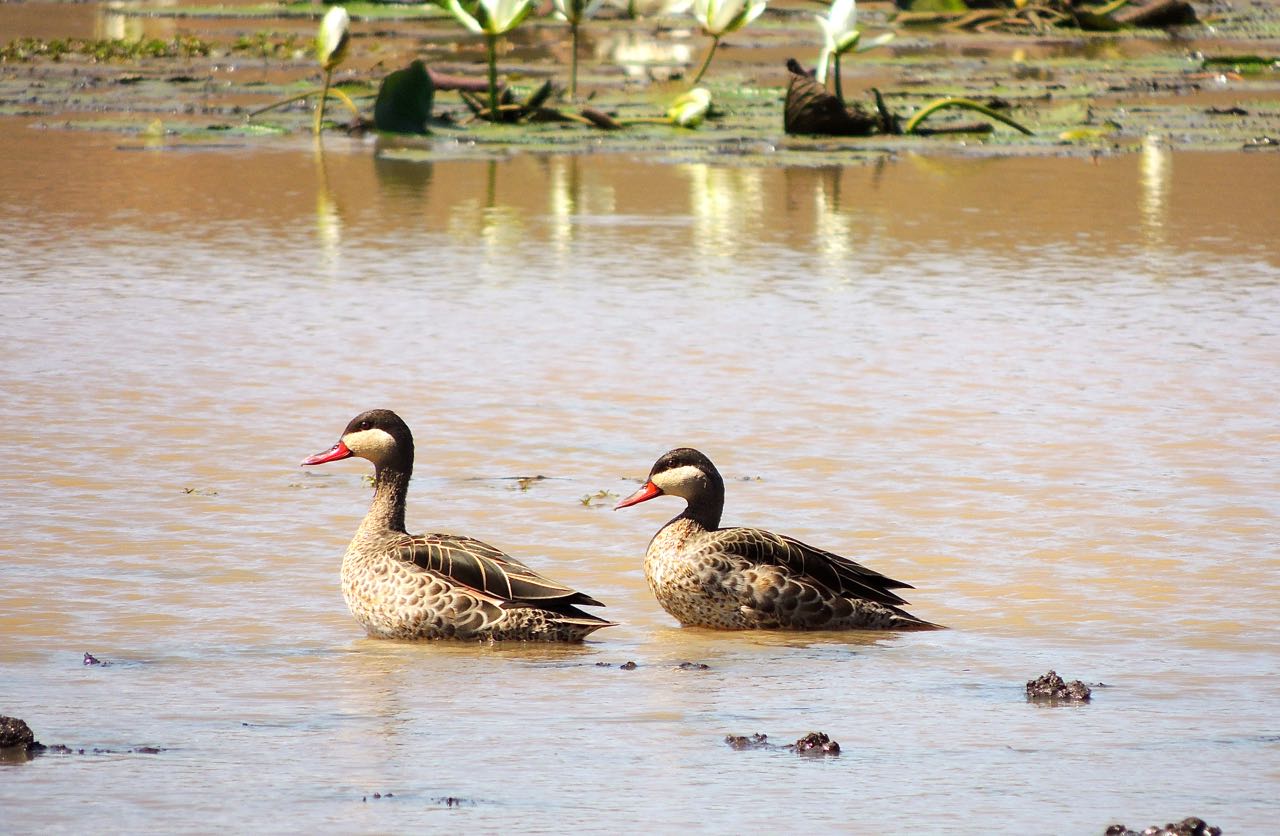 Red-billed Ducks - Photo by William Young
Red-billed Ducks - Photo by William Young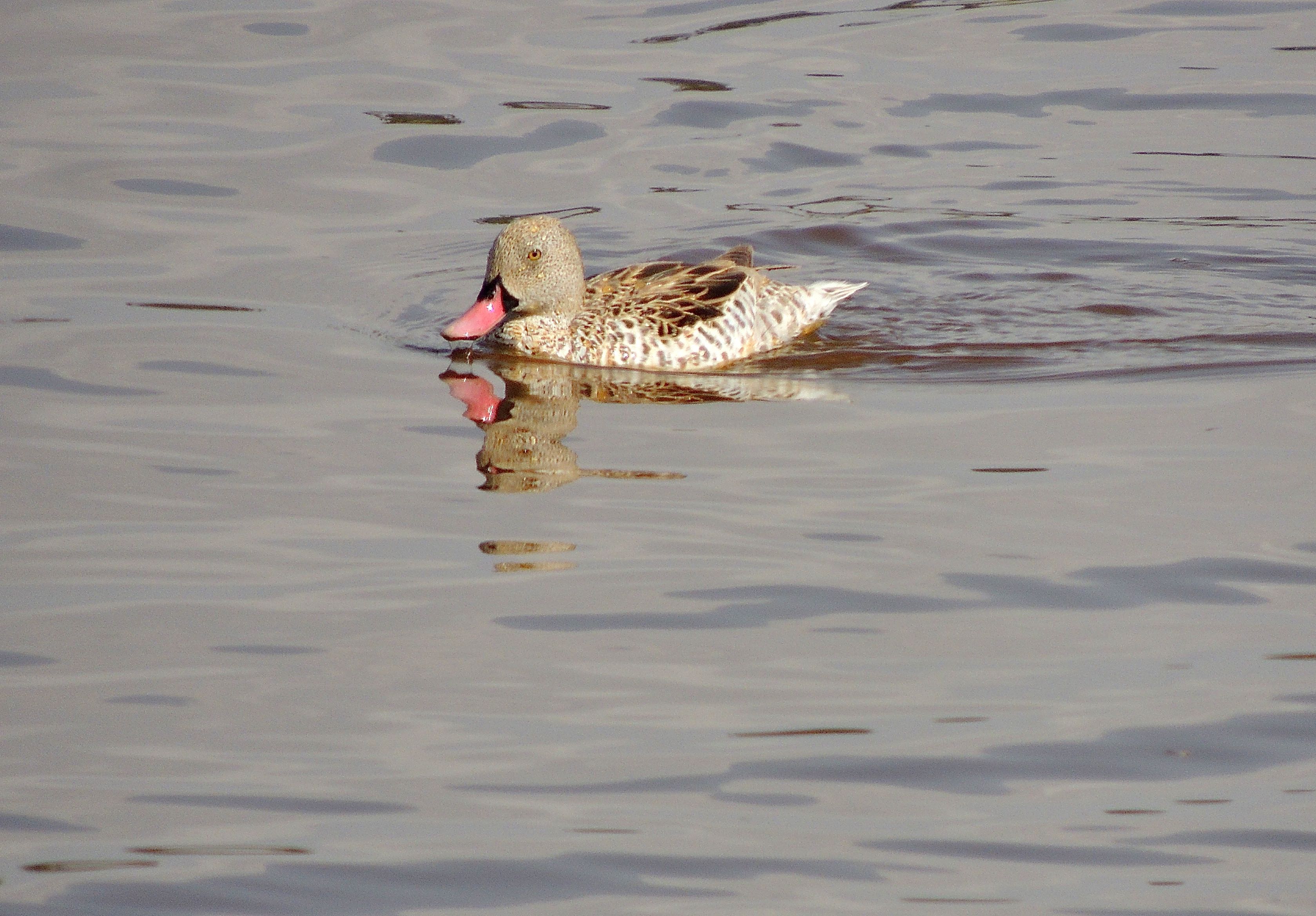 Cape Teal - Photo by William Young
Cape Teal - Photo by William Young
SecretarybirdSecretarybirds are big, tall, and have a lot of character. They appear to be wearing black leggings as they stomp around. They mostly stay on the ground. Their wings are long and broad, and they resemble some of the larger herons or storks when they fly. One stood next to a Black-headed Heron, who looked tiny in comparison. They have black feathers sticking out of the back of their head, and we saw one walking around in a crazed manner with these feathers erect. One explanation of the name is that the black feathers are like the pens carried by secretaries. We also saw one who appeared to be going after some prey — the scientific species name is serpentarius, and they kill a lot of snakes by stomping on them.
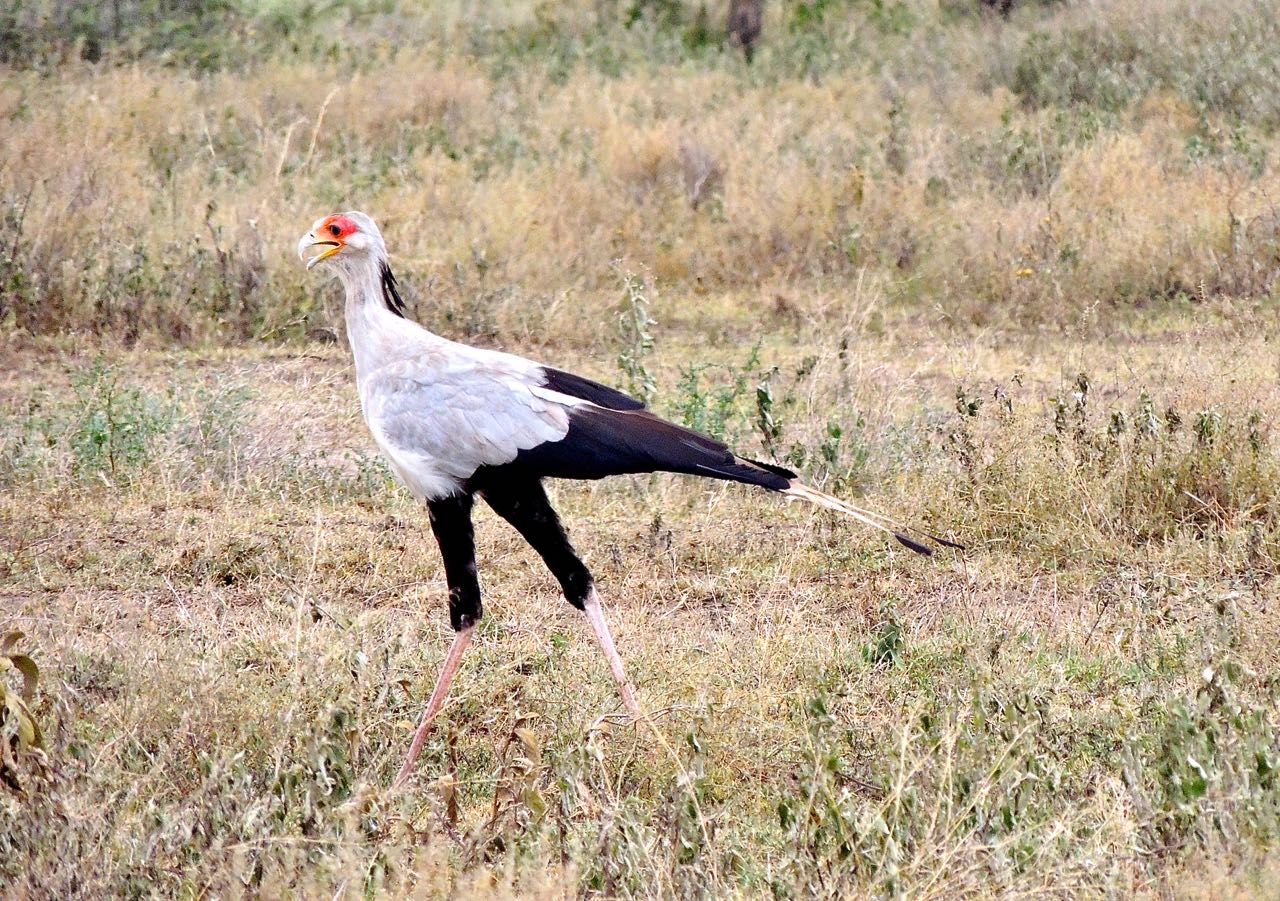 Secretarybird - Photo by William Young
Secretarybird - Photo by William Young Secretarybird - Photo by William Young
Secretarybird - Photo by William Young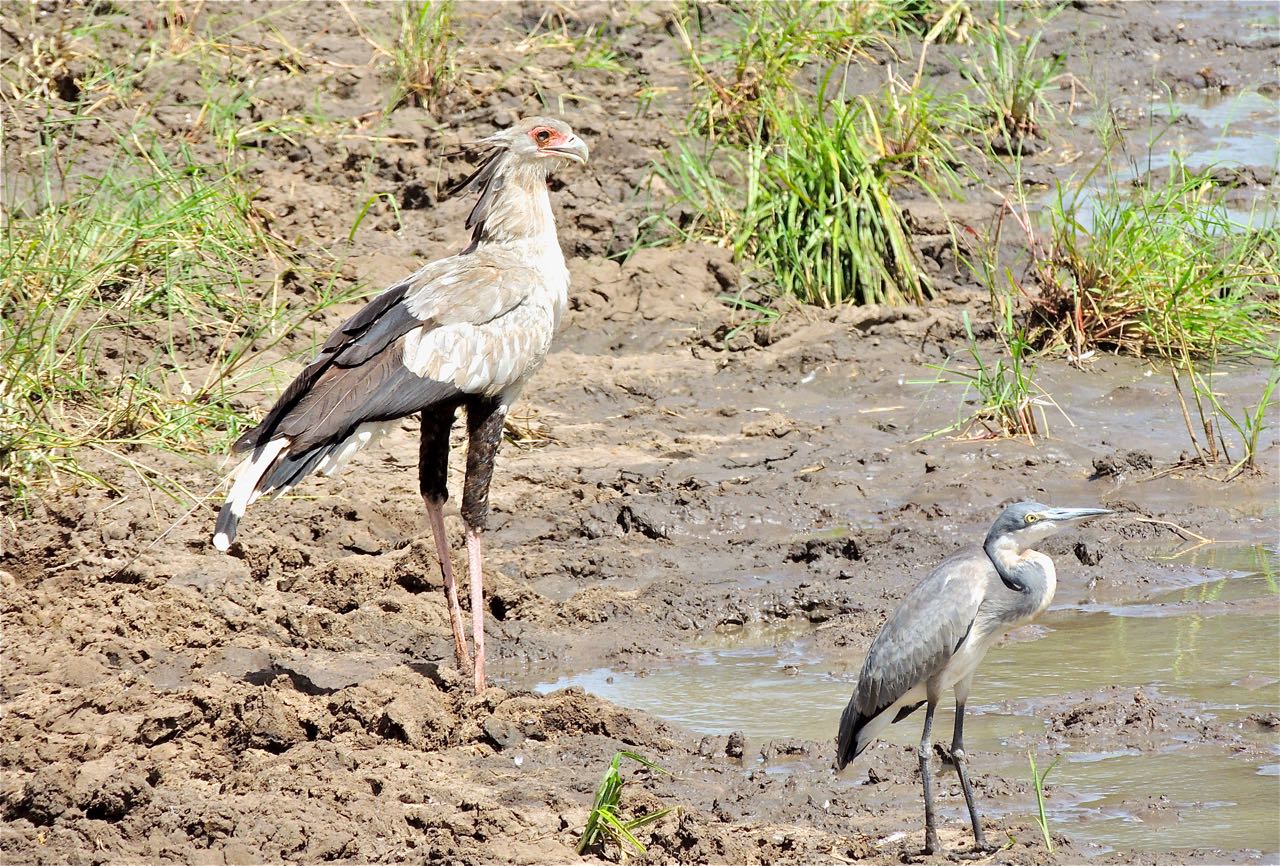 Secretarybird and Black-headed Heron - Photo by William Young
Secretarybird and Black-headed Heron - Photo by William Young
OspreyWe saw one Osprey perched in a distant tree at Mikumi. The bird later flew in our direction, allowing a closer look.
Hawks, Eagles, and KitesWe saw about 45 species of raptors (counting falcons, Osprey, and Secretarybird). The most common was the Black Kite. It has long wings and a slightly forked tail. If you see one at close range, there are different shades of dark feathers in the plumage, but from a distance, the bird can appear all dark. At our lunch site at Ngorongoro, Bernard warned us to protect our food, because Black Kites swoop down and try to steal food when you are not looking. I saw this species in Australia, which has no species of vultures, and Black Kites fill the scavenger niche. I saw them on ten days, including in Addis Ababa, but we saw most of the 530 on the drive from the airport in Mwanza to our accommodations at Serenity. The Common Black-shouldered Kite was fairly common. We saw them on seven days, but only singles or pairs. It is basically the same bird as the White-tailed Kite in North America and the Australian Kite. It is a sleek white-and-gray kite with some black on the wings, and it sometimes hovers like a kestrel. Martin saw a Bat Hawk at Serenity whom I did not see.
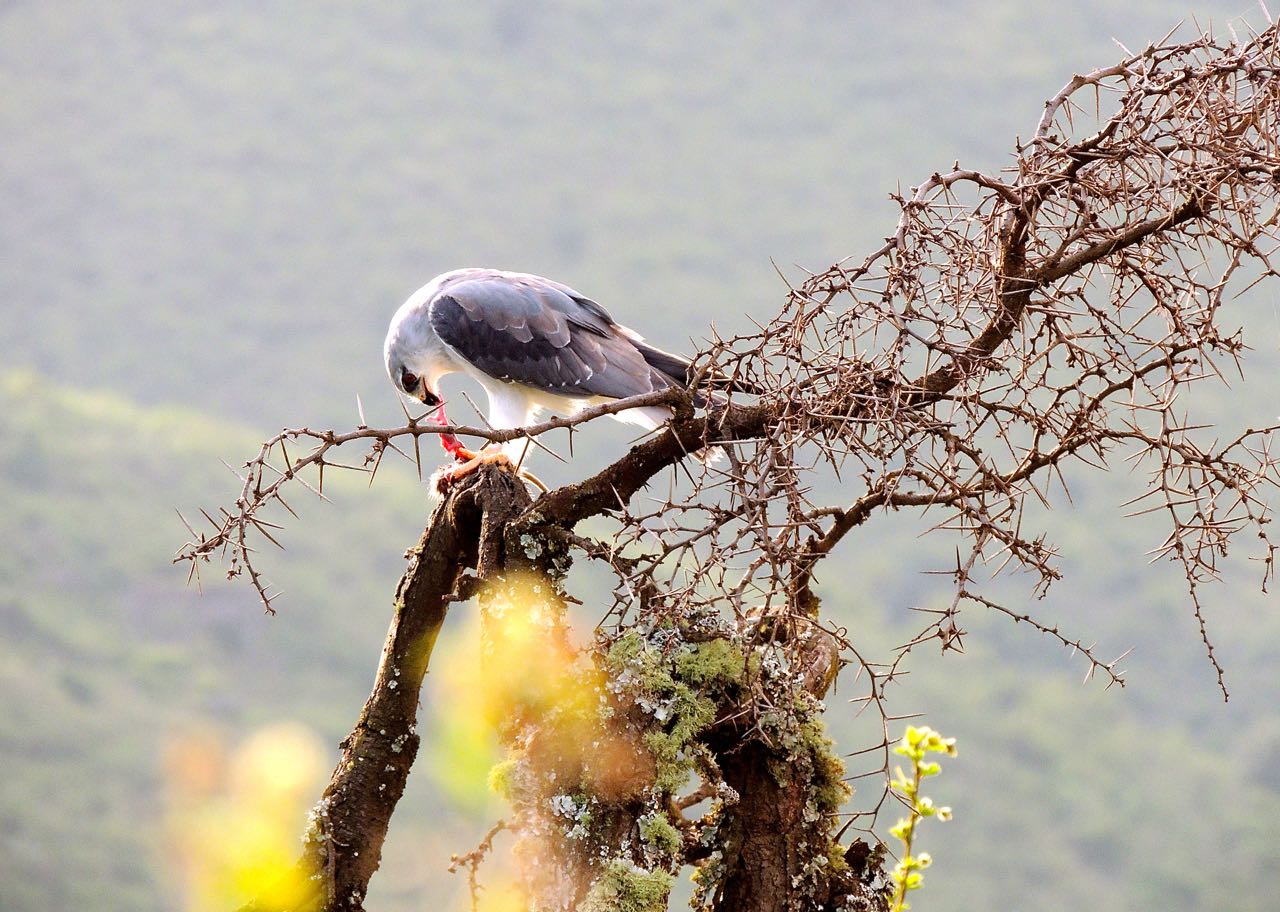 Common Black-shouldered Kite - Photo by William Young
Common Black-shouldered Kite - Photo by William Young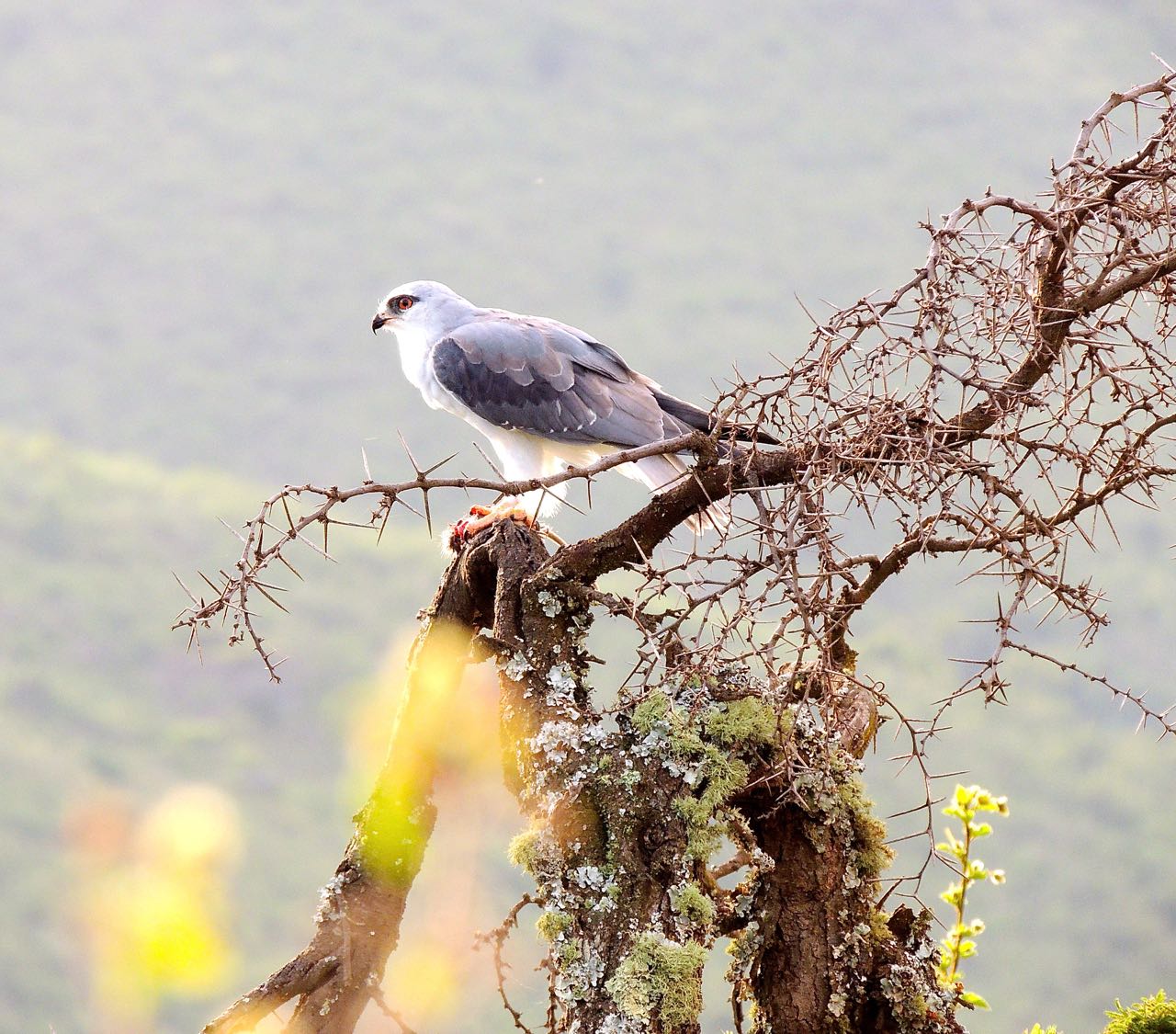 Common Black-shouldered Kite - Photo by William Young
Common Black-shouldered Kite - Photo by William YoungThe African Fish-Eagle is beautiful and reminded me of the Brahminy Kite (who is in the same genus) in Australia. It is a stocky black-and-chestnut bird with a white head, neck, breast, and tail. We saw single birds on five days, and occasionally we would hear their loud piercing call.
Some of the vultures in Africa are huge. The Rüppell's Griffon and African White-backed Vulture are both about 40 inches, with the Rüppell's being slightly larger. The adult Ruppell's has white edging to the feathers on its back, which the White-backed does not, which is confusing. The adult Ruppell's bill is light on the front half, while the bill of the adult White-backed is all dark. Immature Rüppell's have an all dark bill. In flight, the immatures of the two species are difficult to tell apart, but the adults are slightly different, because the White-backed has more white on its underwing coverts. As with all the large vultures, they have broad wings for soaring and a short tail. On the ground, they move by taking fast hops, which is endearing when done by a songbird, but comical when done by a huge vulture. We saw an estimated 58 White-backed and 47 Rüppell's, and we saw the White-backed on twice as many days. Lappet-faced Vultures are the largest vulture in Tanzania. They often dictate what vultures and other scavenging creatures can do at a kill site, because they are the birds most capable of ripping open flesh. They are almost entirely black, with white leggings. The head is featherless, mostly red-and-blue, and the front half of the bill is light colored. The species name comes from the fold of pink skin (a lappet) hanging from its neck. When they soar, they have a diagnostic small patch of white at the bottom of the belly. At a zebra kill at Ndutu, I saw a couple of them standing about 50 yards from where the other vultures and Marabou Storks were eating, and they looked as if they were kissing. I also saw three of the smaller vultures. The most common vulture on our trip was the Palm-nut Vulture. We saw two on our day in Dar es Salaam, showing distinctive black-and-white underwings. One was perched at Dindira, and we could see the bare red skin around the eye. The bill is large. The following day, we saw a perched immature, who is mostly brown. We saw 16 on eight days, mostly singles or pairs. I saw only a couple of White-headed Vultures, and one was in Addis Ababa. We also saw one in the Serengeti, and its head looked pinkish. The bird is mostly black, with white on the belly and some on the underwing. We saw our first Egyptian Vulture while waiting outside the park at Lake Manyara. It has a white body and white underwing coverts. We saw an immature at Tarangire whose plumage looked buffy.
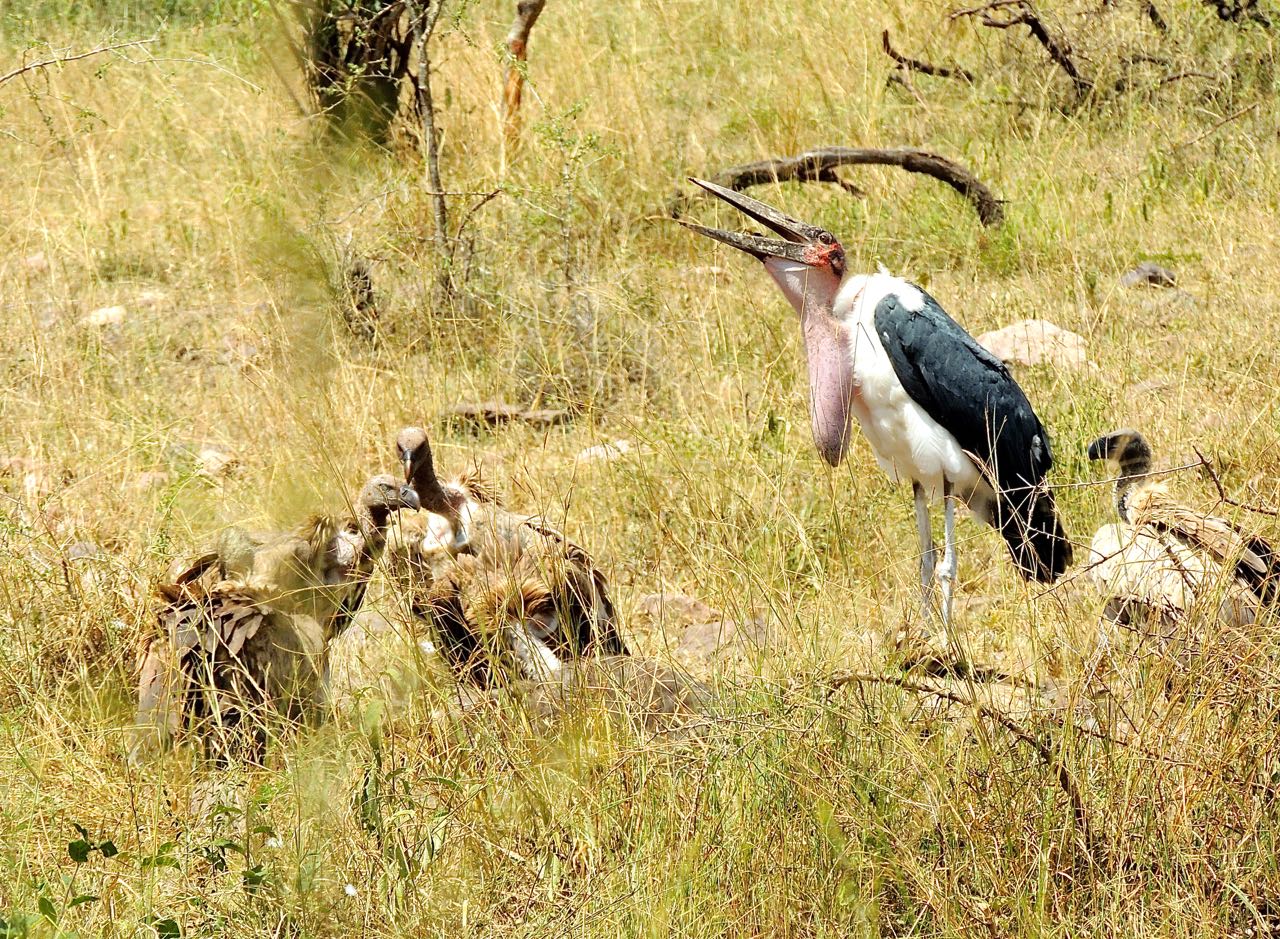 Rüppell's Griffon Vultures and Marabou Stork - Photo by William Young
Rüppell's Griffon Vultures and Marabou Stork - Photo by William Young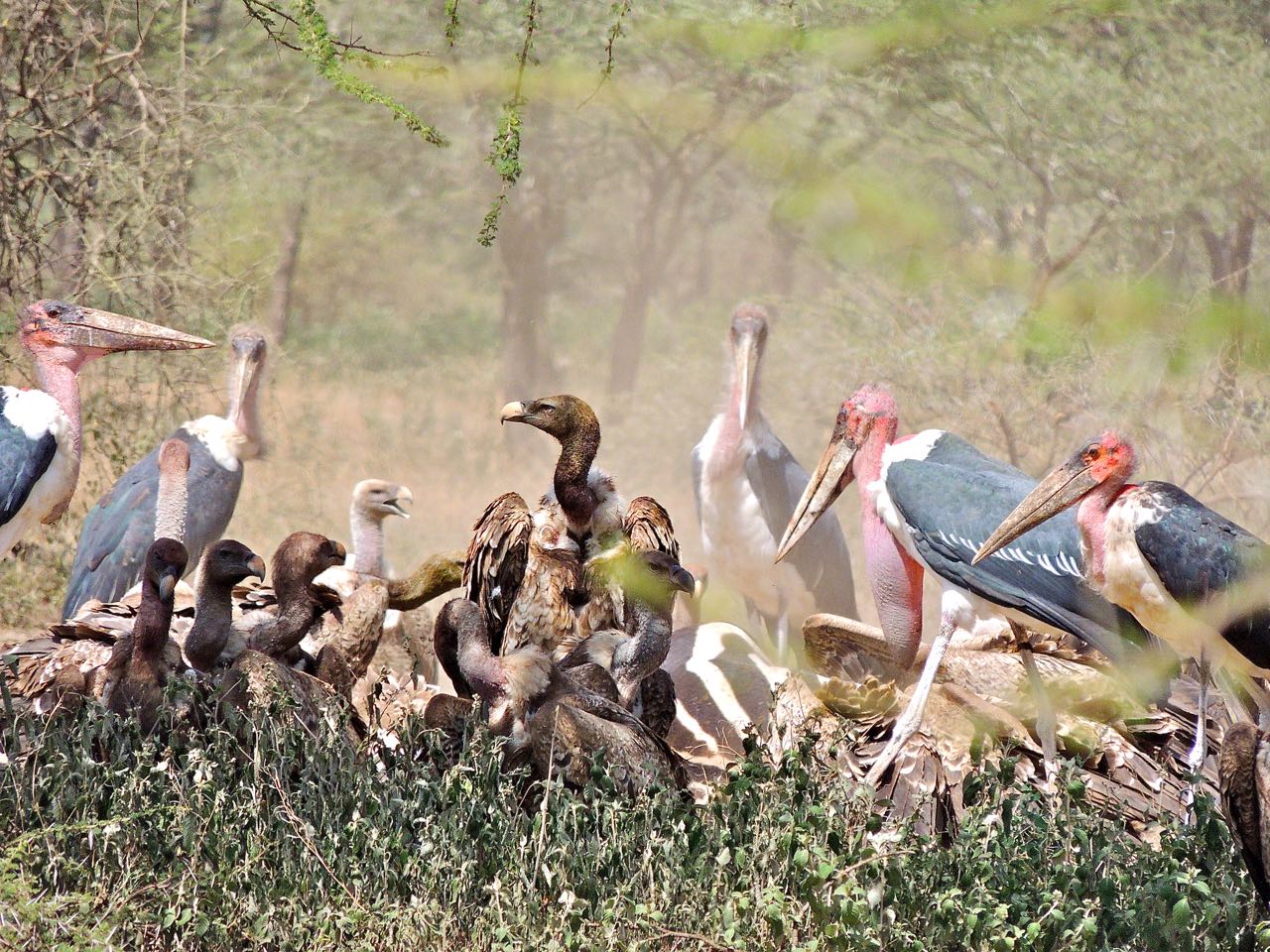 Rüppell's Griffon Vultures and Marabou Storks at a Zebra Kill - Photo by William Young
Rüppell's Griffon Vultures and Marabou Storks at a Zebra Kill - Photo by William Young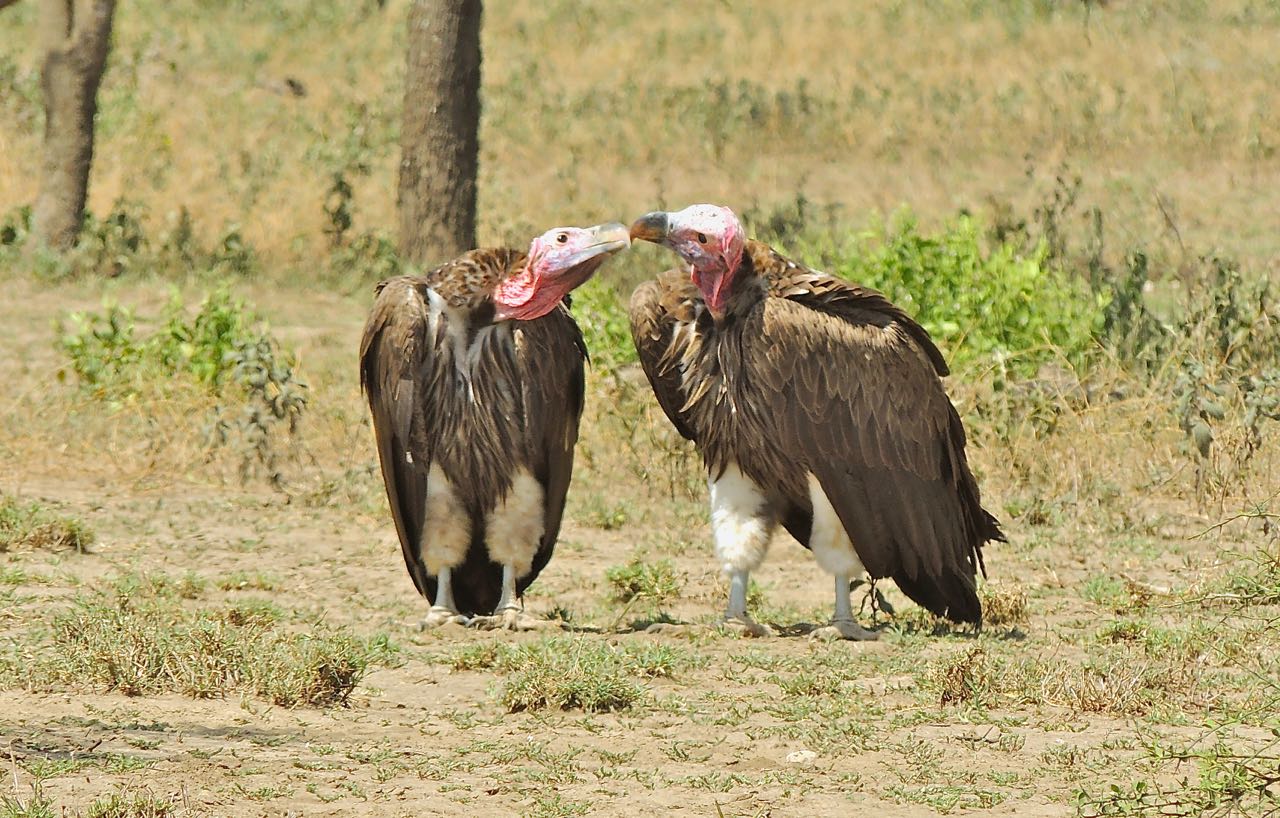 Lappet-faced Vultures - Photo by William Young
Lappet-faced Vultures - Photo by William Young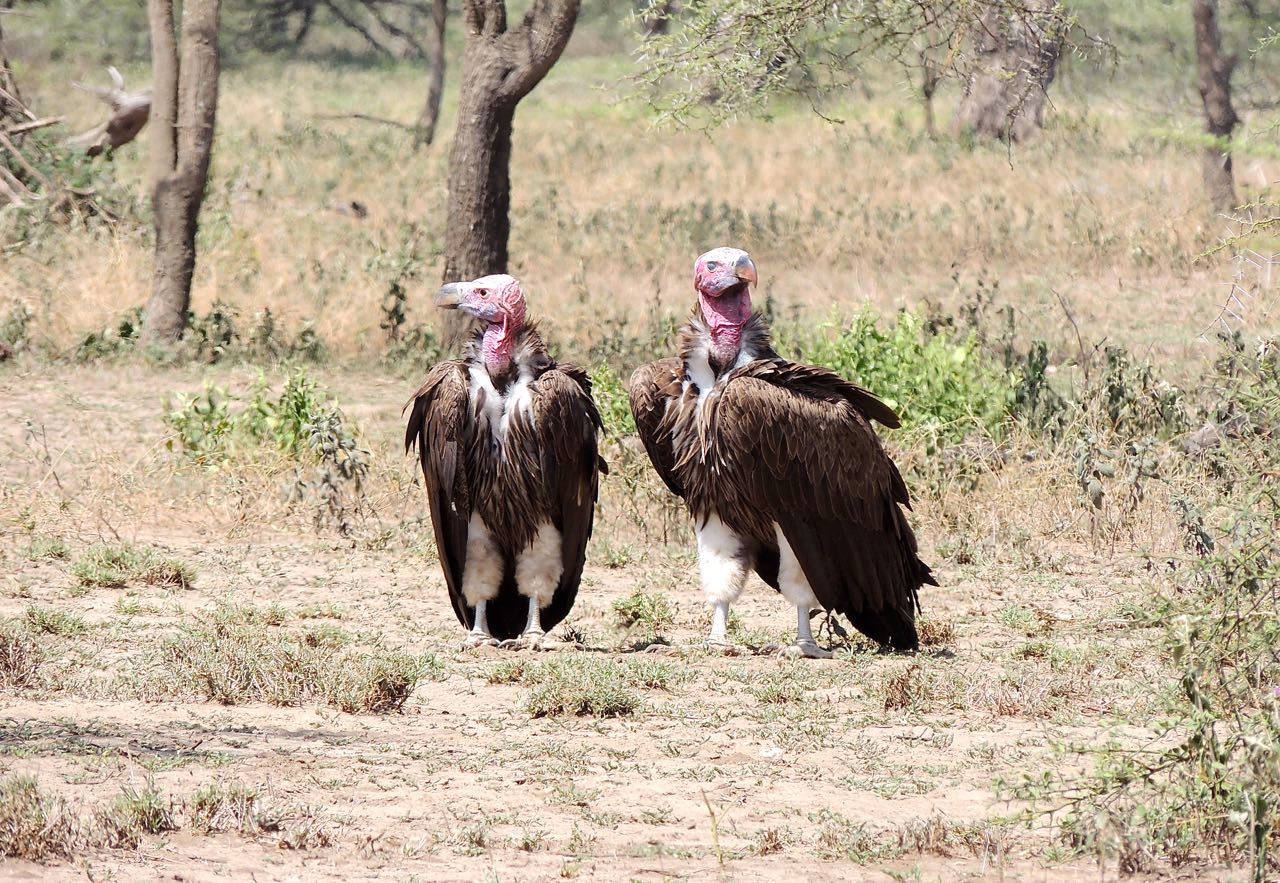 Lappet-faced Vultures - Photo by William Young
Lappet-faced Vultures - Photo by William YoungBataleurs were fairly common. The adult male's body is stocky, looking like a black-and-gray parrot with some brown on the back. The bill is bright red. In flight, the underwings are almost all white, and the very short tail is red, which is a striking combination with the black body. We saw 28 on 12 days. We saw a pair at relatively close range in a tree at Dindira with an immature Black-breasted Snake-Eagle. The first Black-breasted Snake-Eagle I saw was on the first day in the Serengeti. It was fairly large, with a dark breast that cleanly ended in a straight line next to a white belly. The immature is brown on the back and white below. I saw single birds on four different days. The Stevenson field guide calls this species the Black-chested Snake-Eagle. In the same genus is the Brown Snake-Eagle, who is solid chocolate brown. Like the Black-breasted, it has intense yellow eyes. We had a good view of one perched in a Baobab tree near our camp at Naitola. At Amani, we saw a Southern-banded Snake-Eagle on two different days — probably the same bird. It appeared to be an immature, and it was slightly smaller than the other two snake-eagle species we saw. It was gray on the back, and the underparts were rufous with irregular narrow white bands.
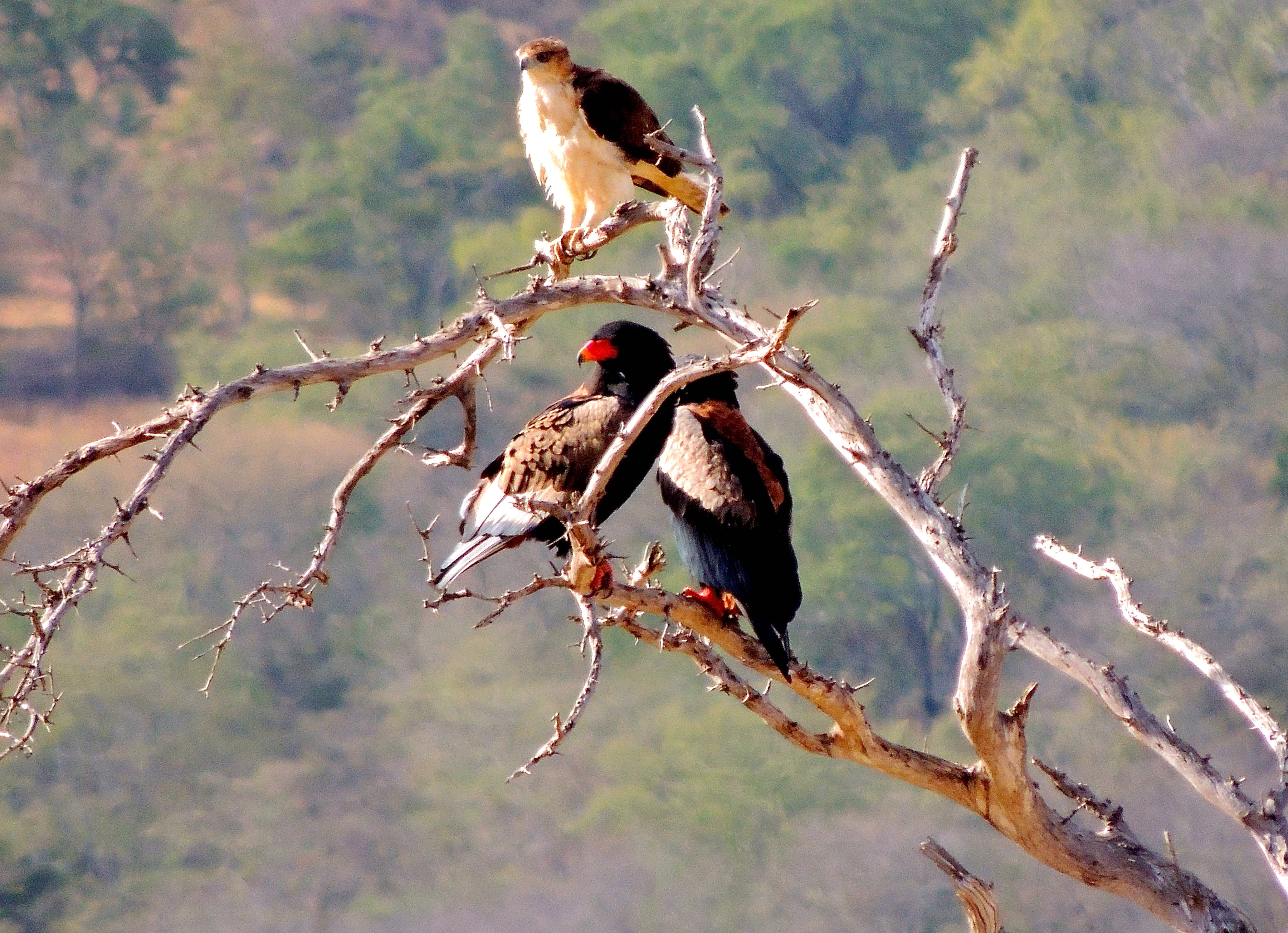 Black-breasted Snake-Eagle Immature (above) and Bataleurs - Photo by William Young
Black-breasted Snake-Eagle Immature (above) and Bataleurs - Photo by William Young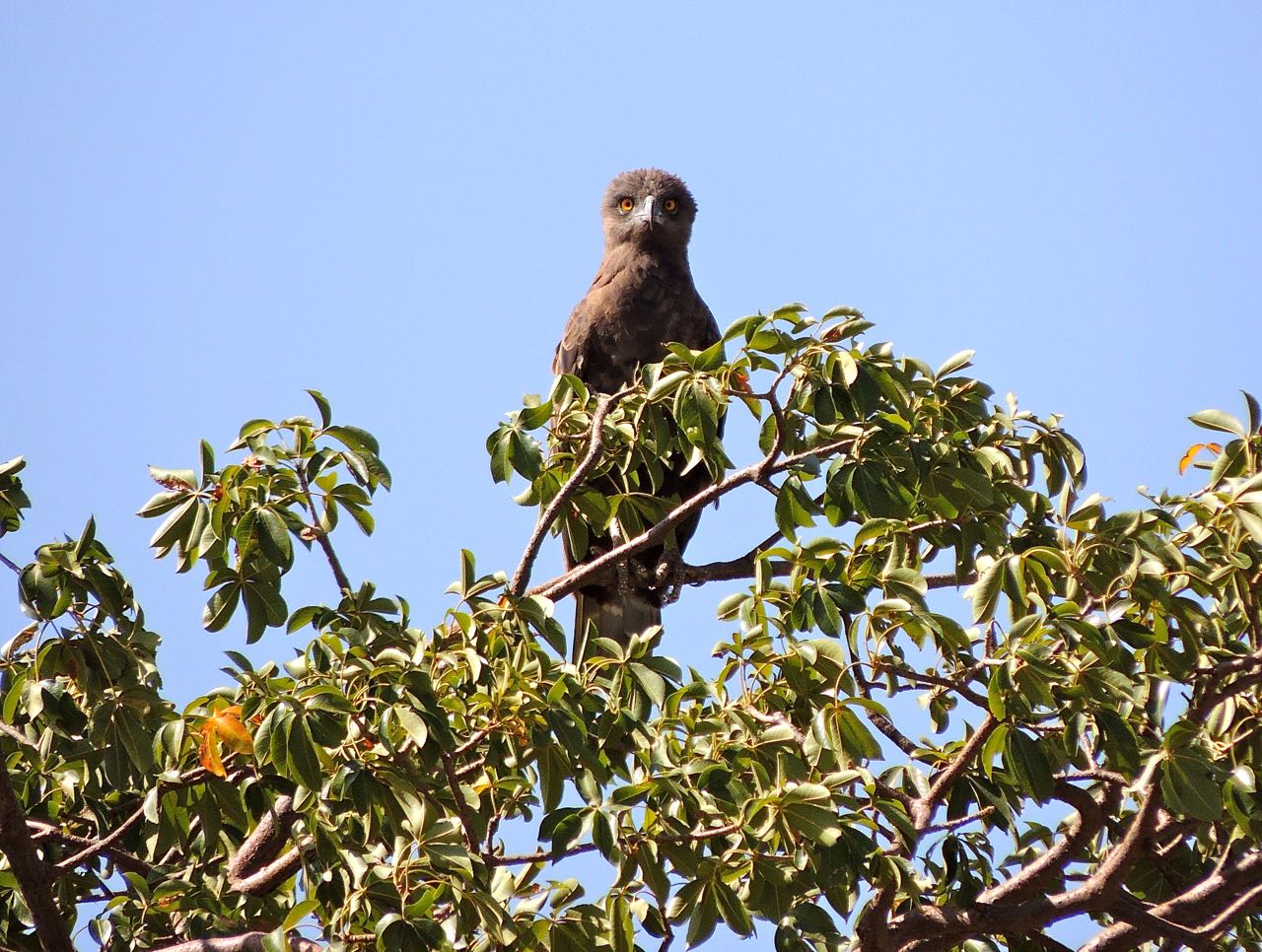 Brown Snake-Eagle - Photo by William Young
Brown Snake-Eagle - Photo by William YoungWe saw a lot of harriers of four different species on the trip. Some are difficult to identify. The adult female and young of the Pallid and Montagu's Harriers have white rumps. The adult males of both these two species are gray, with the Pallid being lighter, and the Montagu's having a horizontal black mark on each upperwing in flight. The female Pallid is chocolate brown on the back and lighter brown below. The adult African Marsh-Harrier is also chocolate brown, with a little bit of white on the head. We observed one eating the remains of a roadkill Thomson's Gazelle. The adult Eurasian Marsh-Harrier was the only one of the four who had a buffy head. Sometimes, a lot of bird species in a wetland area would flush at the same time because one or more harriers were cruising around. Combined, we saw 77 of the four species, ranging from 11 Europeans to 32 Montagu's. We also saw African Harrier-Hawks, who are not closely related to the harriers. The first one I saw was near our campsite at Momela, and I identified it immediately from the distinctive barred underwings with a thick black trailing edge. The bird perched in a nearby tree where we could see the yellow skin around the eye and the black spots on its mostly gray body. At Udzungwa, we saw a young harrier-hawk who did not have as pronounced an underwing pattern and was not nearly as easy to identify.
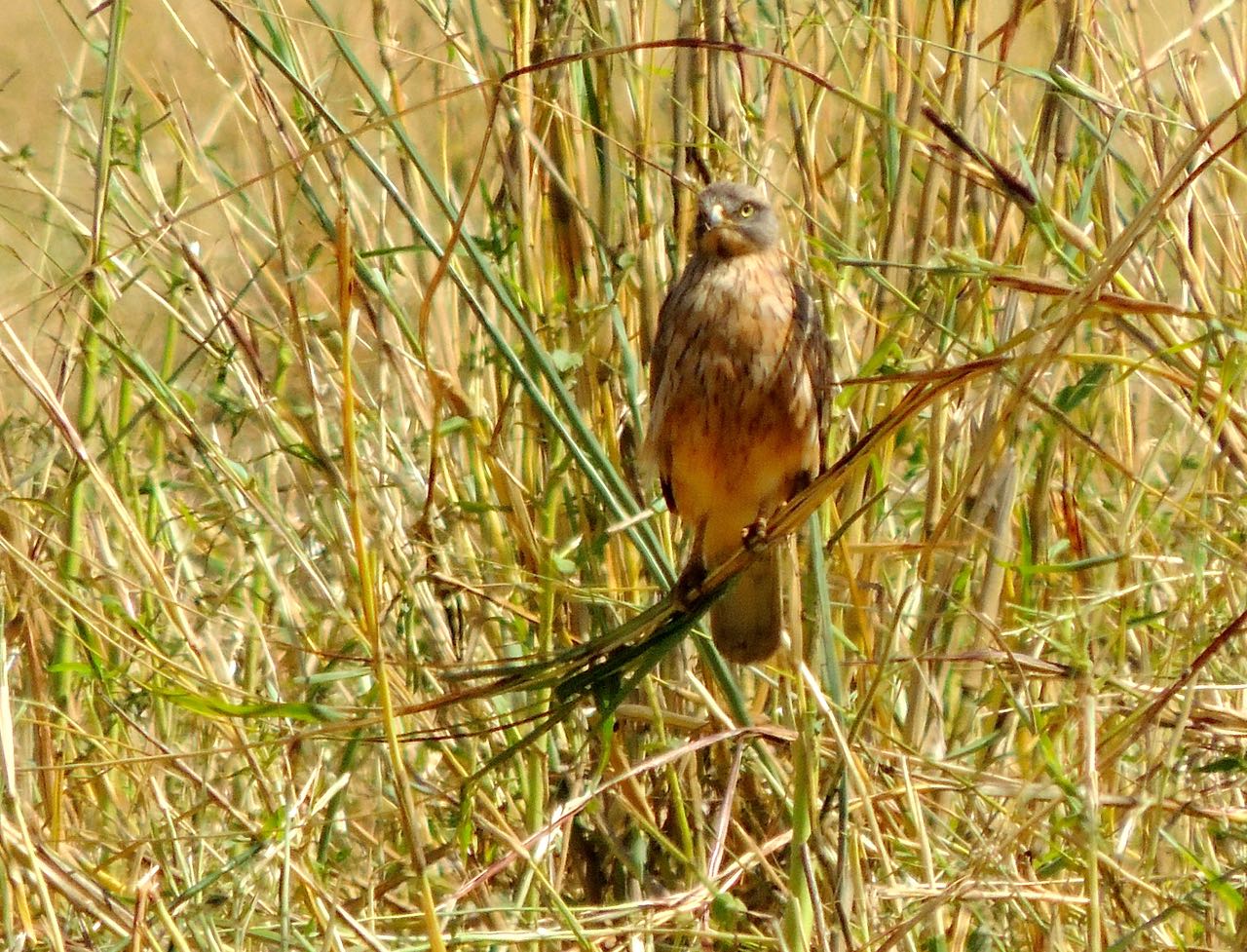 Pallid Harrier - Photo by William Young
Pallid Harrier - Photo by William Young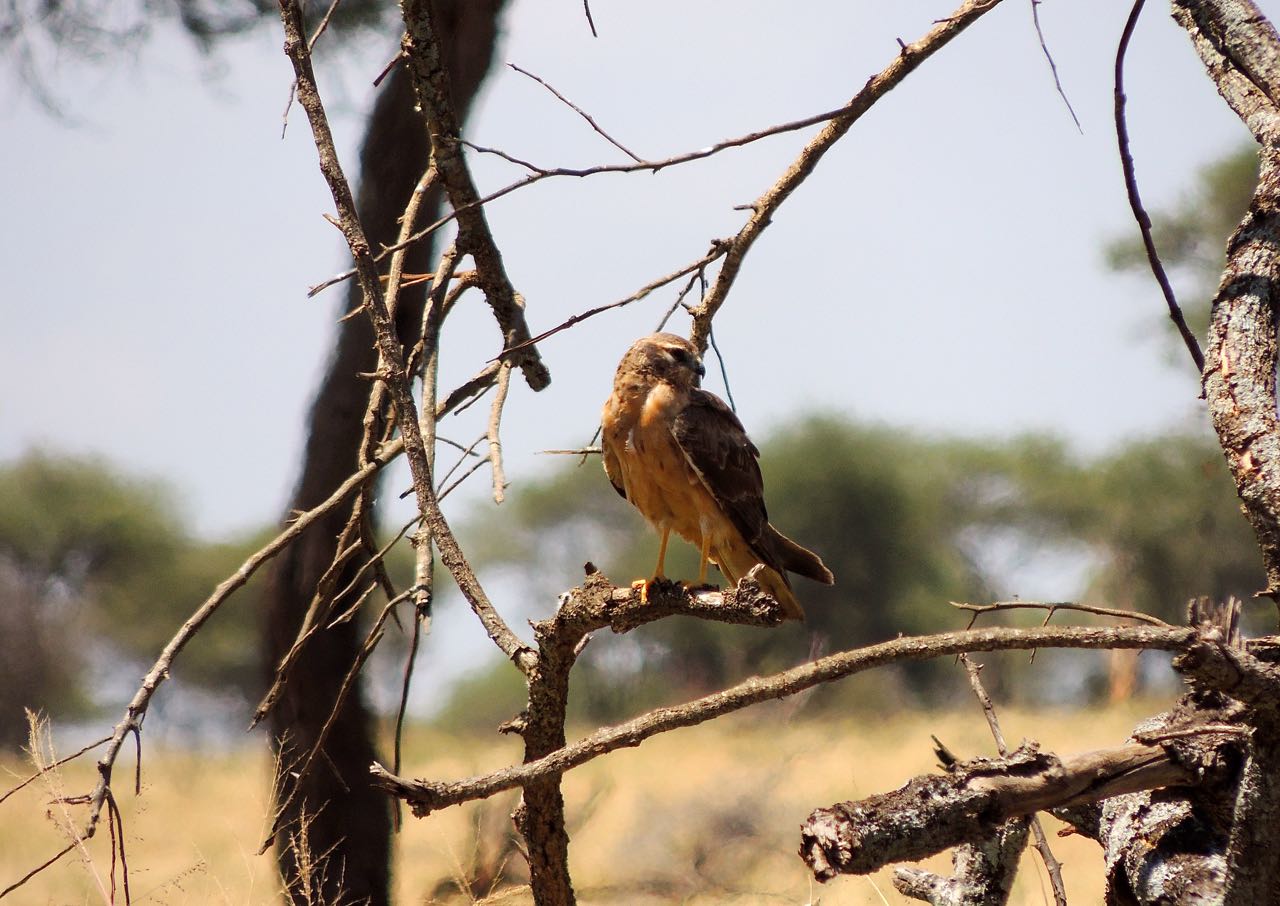 African Marsh-Harrier - Photo by William Young
African Marsh-Harrier - Photo by William Young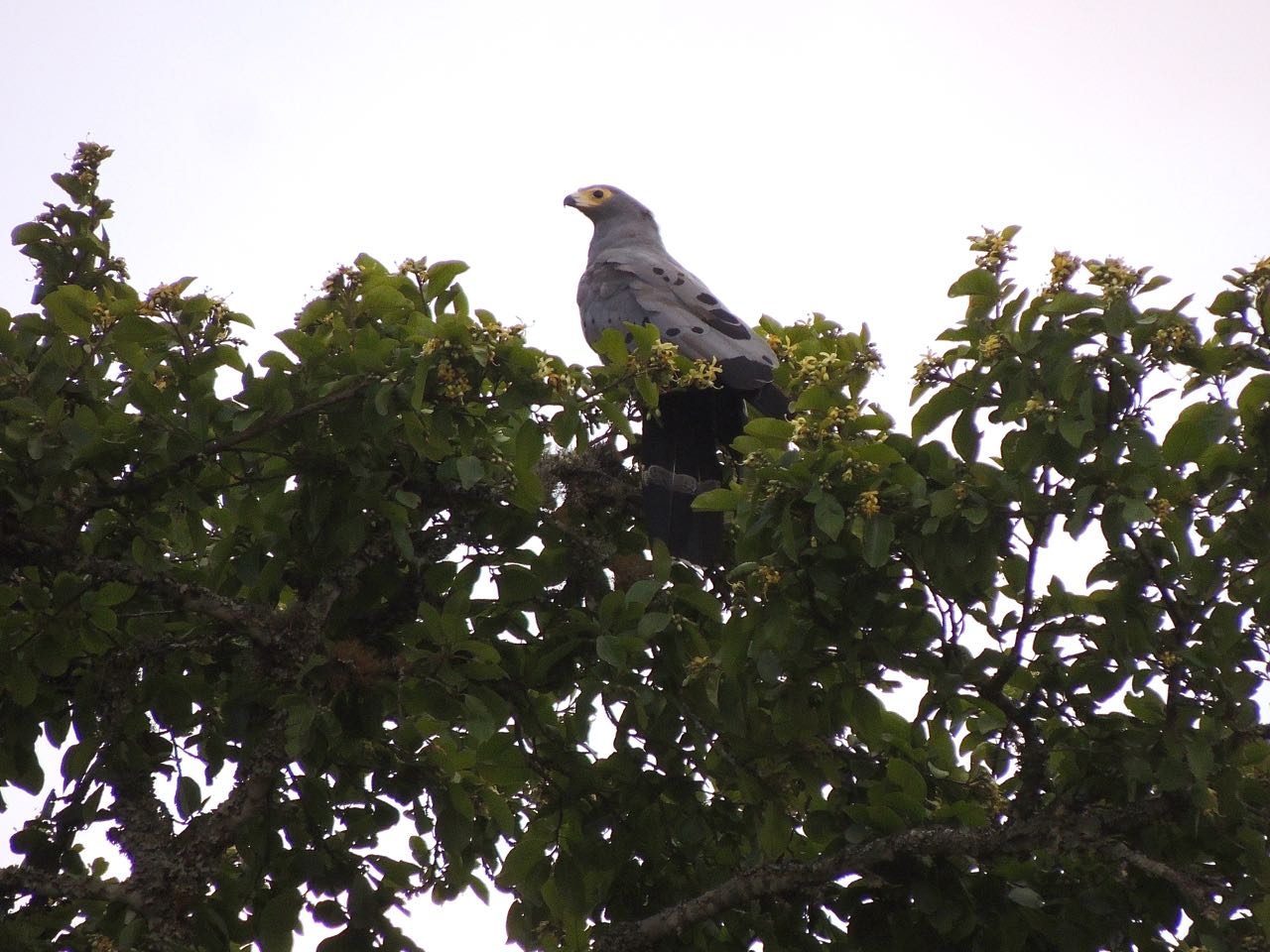 African Harrier-Hawk - Photo by William Young
African Harrier-Hawk - Photo by William YoungThe chanting-goshawks, Gabar Goshawk, and Lizard Buzzard all look similar. We had numerous good looks at Eastern Chanting-Goshawks at our Ndutu campsite, where they perched in the trees near our tents. They are gray above, have a gray-and-white barred belly, a yellow cere, and bright red legs. I could sometimes hear their loud chanting vocalization. We saw nine on six days. Gabar Goshawks are similar, but they have a red cere and are only a little more than half the size. We saw a perched melanistic Gabar at Ndutu, and it had white bars on its undertail; in its slightly open wings, I could see some white on the underwing. We had seen this bird fly, and it can move very quickly. At Amani, we found a perched Lizard Buzzard, who was very similar to the Gabar Goshawk, but had white on the throat. We had a difficult time seeing the vertical black line on the throat.
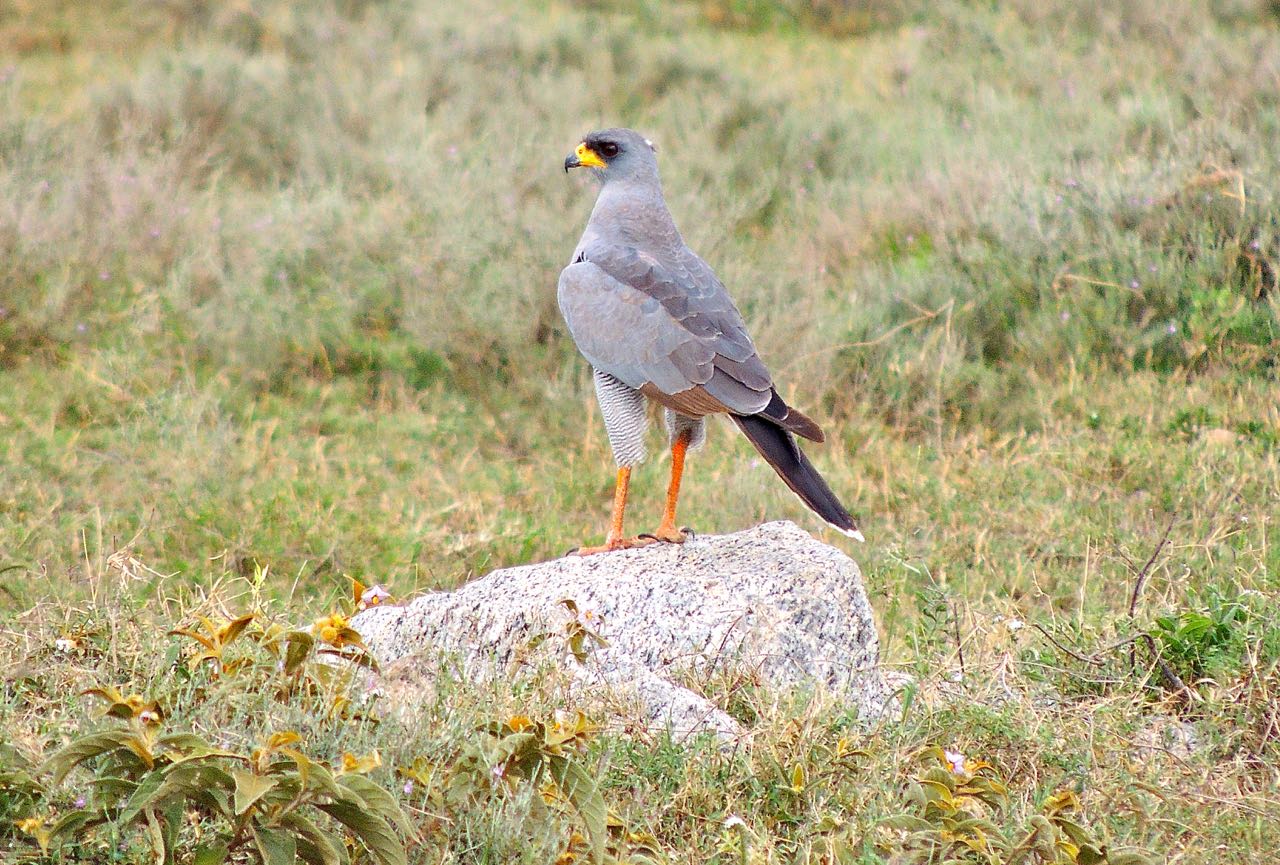 Eastern Chanting-Goshawk - Photo by William Young
Eastern Chanting-Goshawk - Photo by William Young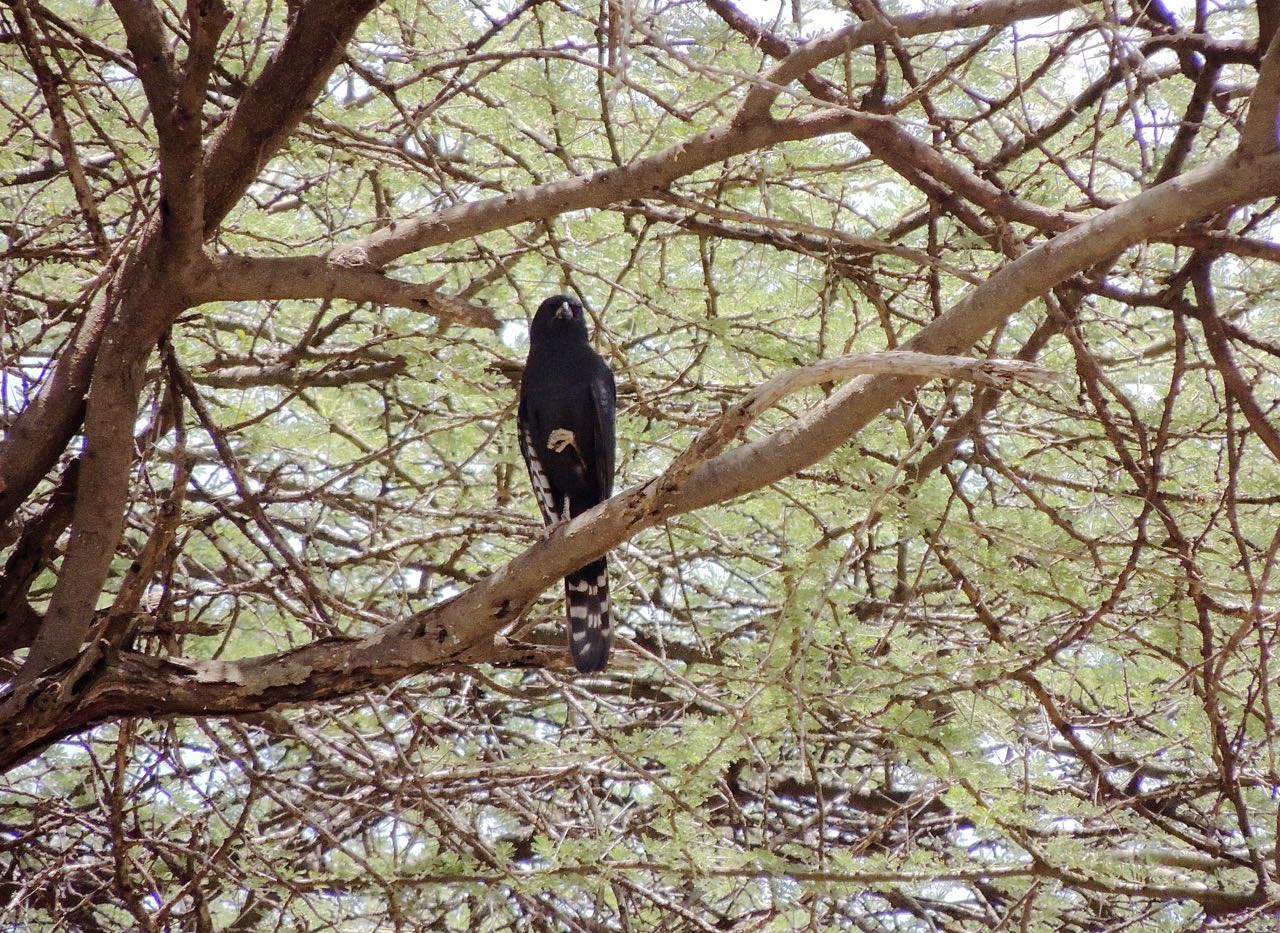 Gabar Goshawk - Photo by William Young
Gabar Goshawk - Photo by William YoungWe saw only two accipiters and two buteos. We saw a Shikra, a small accipiter, in the Serengeti. And at Amani, we saw a Great (Black) Sparrowhawk, who is about twice as large. I could see the black marks on the flanks as it flew over. We saw a European Buzzard on three different days. The adult had a dark brown back and a reddish brown tail. Much more common were Augur Buzzards. The adults are distinctive, looking totally white below, except for a narrow black trailing edge to the wing and a short red tail. I had great looks at a perched one at our camp at Ndutu. We also saw a black phase bird, whose body and underwing coverts were black instead of white.
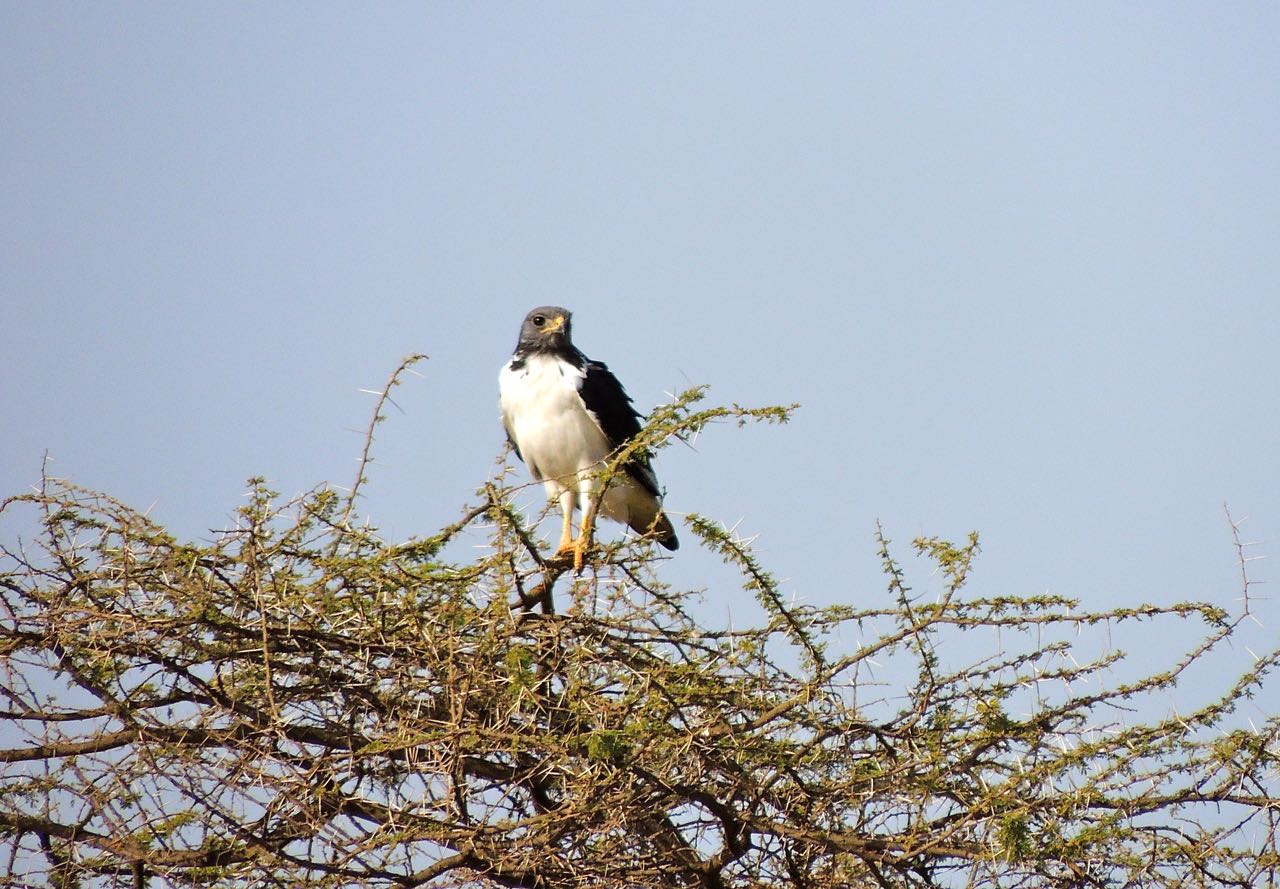 Augur Buzzard Adult - Photo by William Young
Augur Buzzard Adult - Photo by William Young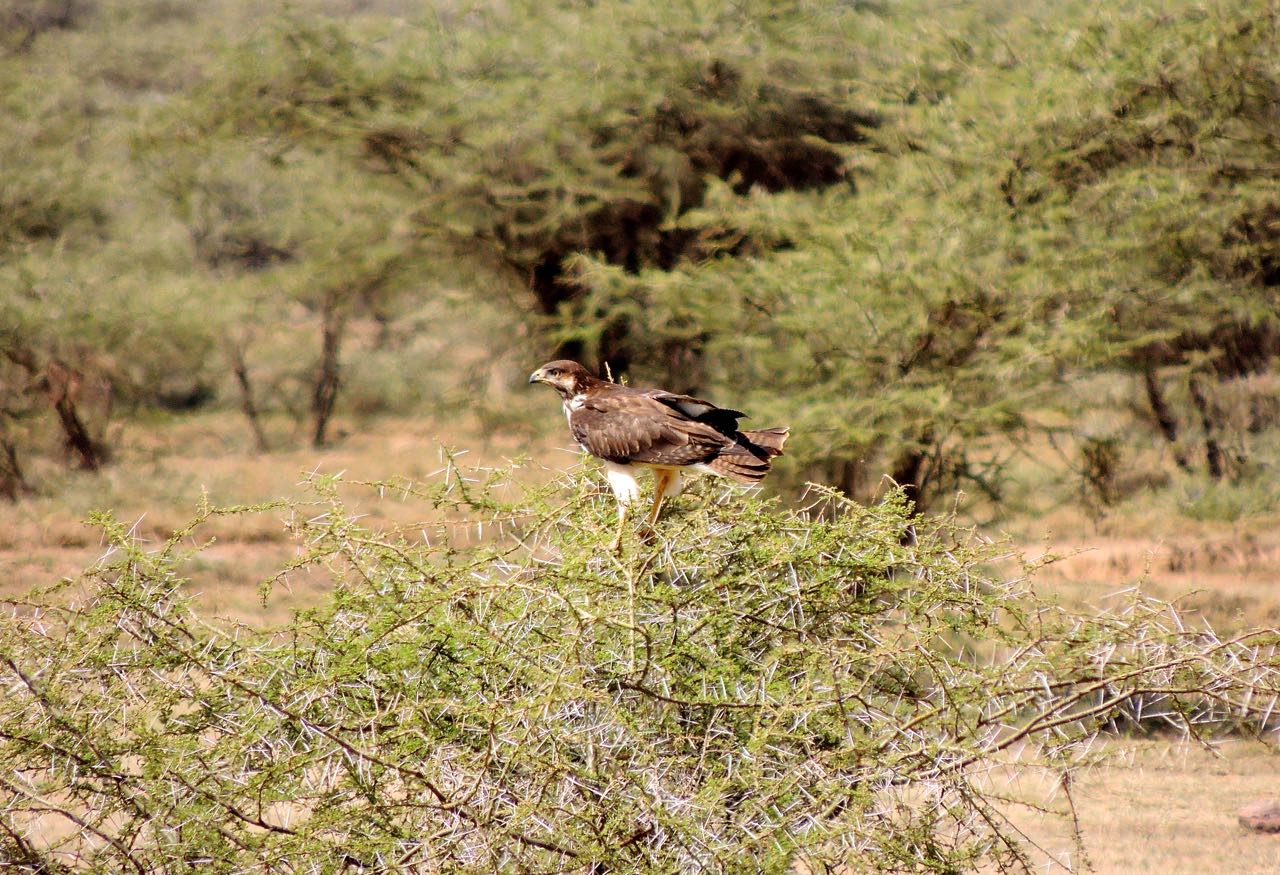 Augur Buzzard Immature - Photo by William Young
Augur Buzzard Immature - Photo by William YoungWe saw many different species of eagles. Many Aquila eagles (the genus that contains the Golden Eagle) look alike and can be difficult to tell apart. We saw 13 Tawny Eagles on five days. They have uniformly dark underwings. The Steppe Eagle is a little darker and has a horizontal white line extending the length of the underwings. The Wahlberg's Eagle is smaller than the other two and is uniformly brown below. At Arusha, we saw a perched Lesser Spotted Eagle, who is plain brown with a trace of light spotting on the back. This bird was probably an immature, because it had a dark eye. On the way to Arusha, we saw a Verreaux's Eagle, who is the darkest of the Aquila eagles, with black plumage. We saw one flying, and it has white patches near the end of its wings. The much smaller Long-crested Eagle (not an Aquila) has similar dark plumage with white wing patches. We saw six on five days, including a couple perched ones. The first one was where we stopped for lunch at Serengeti National Park, and I could see the long crest flapping in the breeze. Very little white shows on perched birds. At Tarangire, we saw a perched adult African Hawk-Eagle, who had a dark back, black streaks on its white breast, and a black terminal tail band. In the Serengeti, we saw both a perched immature and a perched adult Martial Eagle. The adult has small dots rather than streaks on its breast. The immature's breast has no spots, but has a tinge of red. The only African Crowned Eagle we saw was a high soaring bird at Amani. It appeared to have more white near the tips of its wings than on the rest of the underwing.
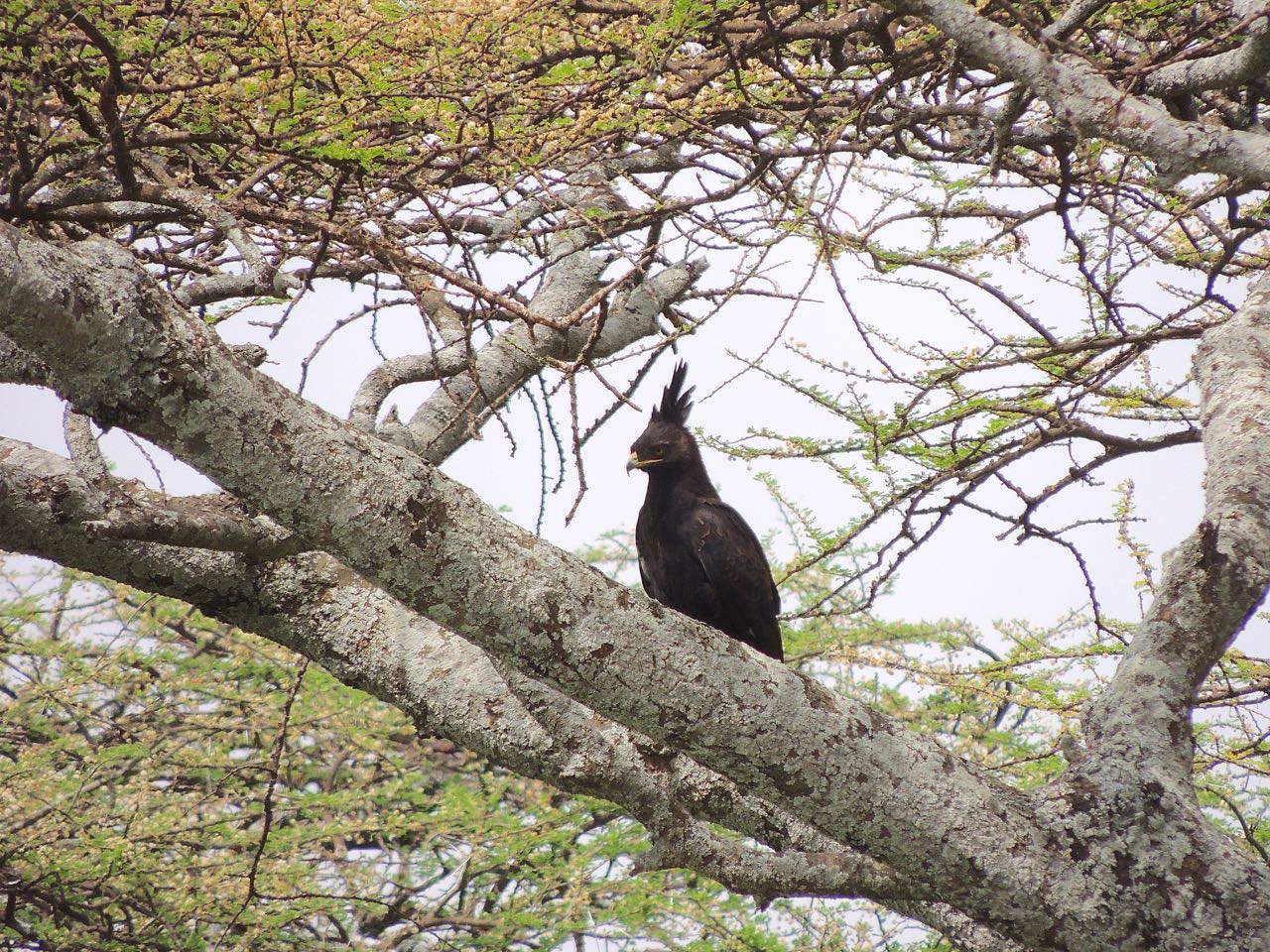 Long-crested Eagle - Photo by William Young
Long-crested Eagle - Photo by William Young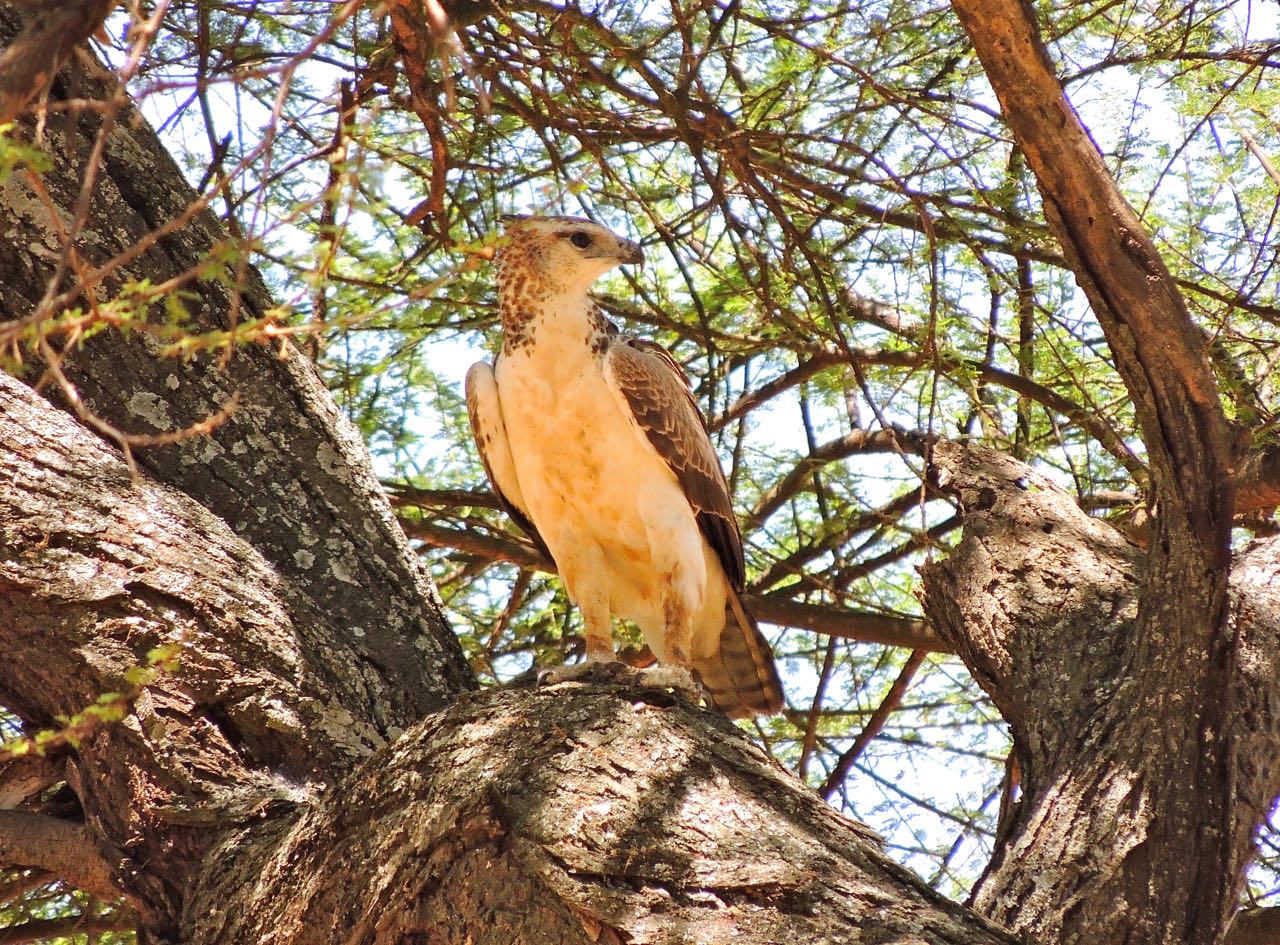 Martial Eagle - Photo by William Young
Martial Eagle - Photo by William Young
FalconsWe saw good numbers of three falcon species. African Pygmy-Falcons are only eight inches, with a light gray back, white underparts, rufous back, barred undertail, and red legs. We had good looks at a couple near the Ndutu campsite. We saw a tree at Mikumi with ten perched Amur Falcons. Later, we saw another tree with five. They did not appear to be very big, and when one flew, we could see the white underwing coverts on their black wings. Bernard speculated that these two groups of falcons were migrating and had stopped at Mikumi to rest. The greatest number of any falcon species we saw was an estimated 173 Lesser Kestrels seen on 9 days. We saw very large numbers the day we drove from Arusha to the Beasley's Lark area. During some stretches of road, there seemed to be one on every utility wire, and some wires had more than one. They have a long angular appearance, and the adult males have a plain back.
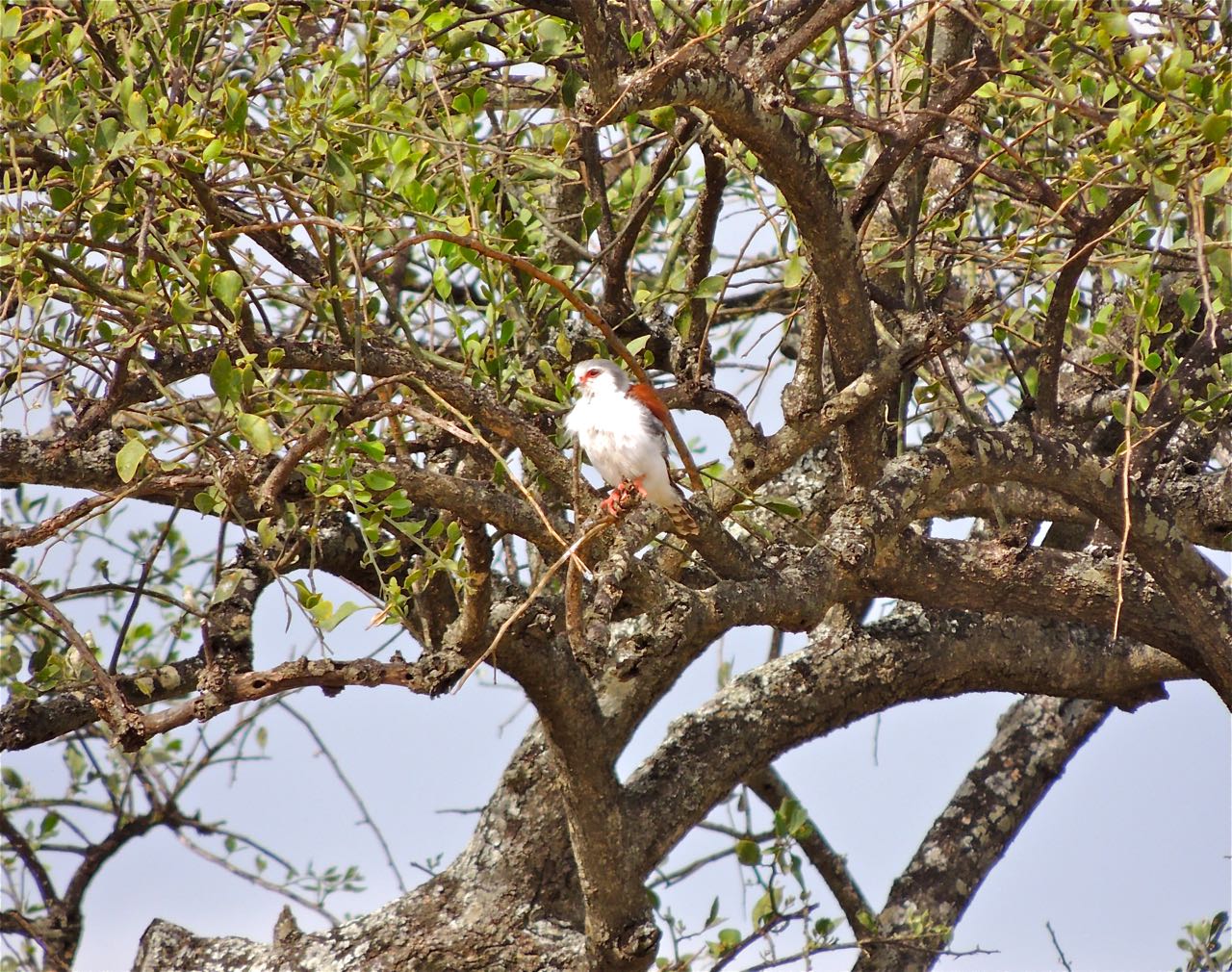 African Pygmy-Falcon - Photo by William Young
African Pygmy-Falcon - Photo by William YoungWe encountered seven other falcon species. I saw two Peregrines, and Martin saw another. We saw a perched Eurasian Hobby near the entrance at Mikumi on our last full day of birding. Later that morning, an Eleanora's Falcon zoomed by us. At Ndutu, we saw a Common Kestrel, who did not have a plain back like the Lesser. The day before in the Serengeti, we had prolonged looks at a cooperative Greater Kestrel, who has a light eye and a light brown body covered with little dark bars. We saw it pounce on prey and return to an area where we could watch it. On one of our drives to the Serengeti, we saw a perched Sooty Falcon, who looked sleek. We could see the dark outer half of its wings when it flew.
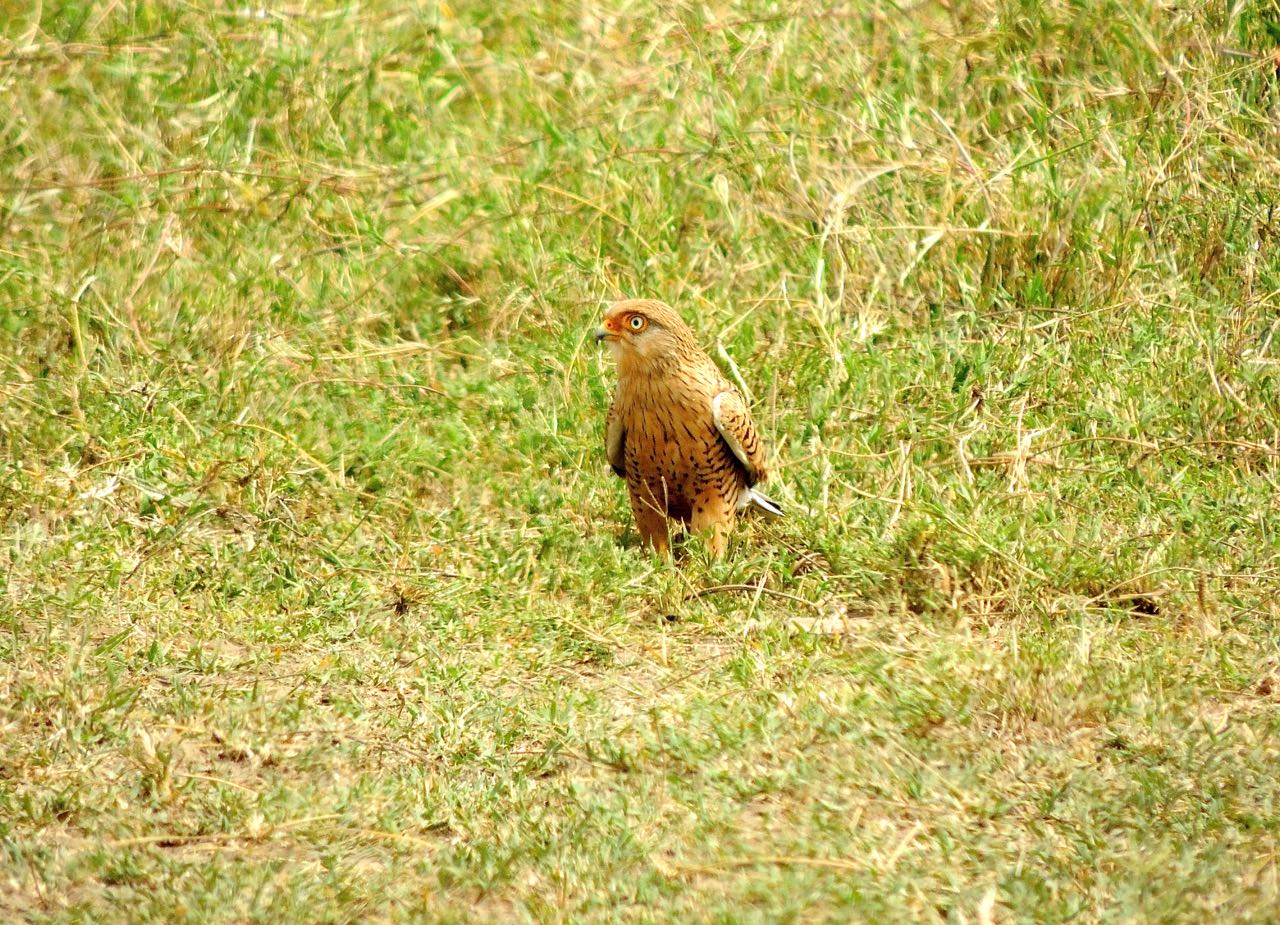 Greater Kestrel - Photo by William Young
Greater Kestrel - Photo by William Young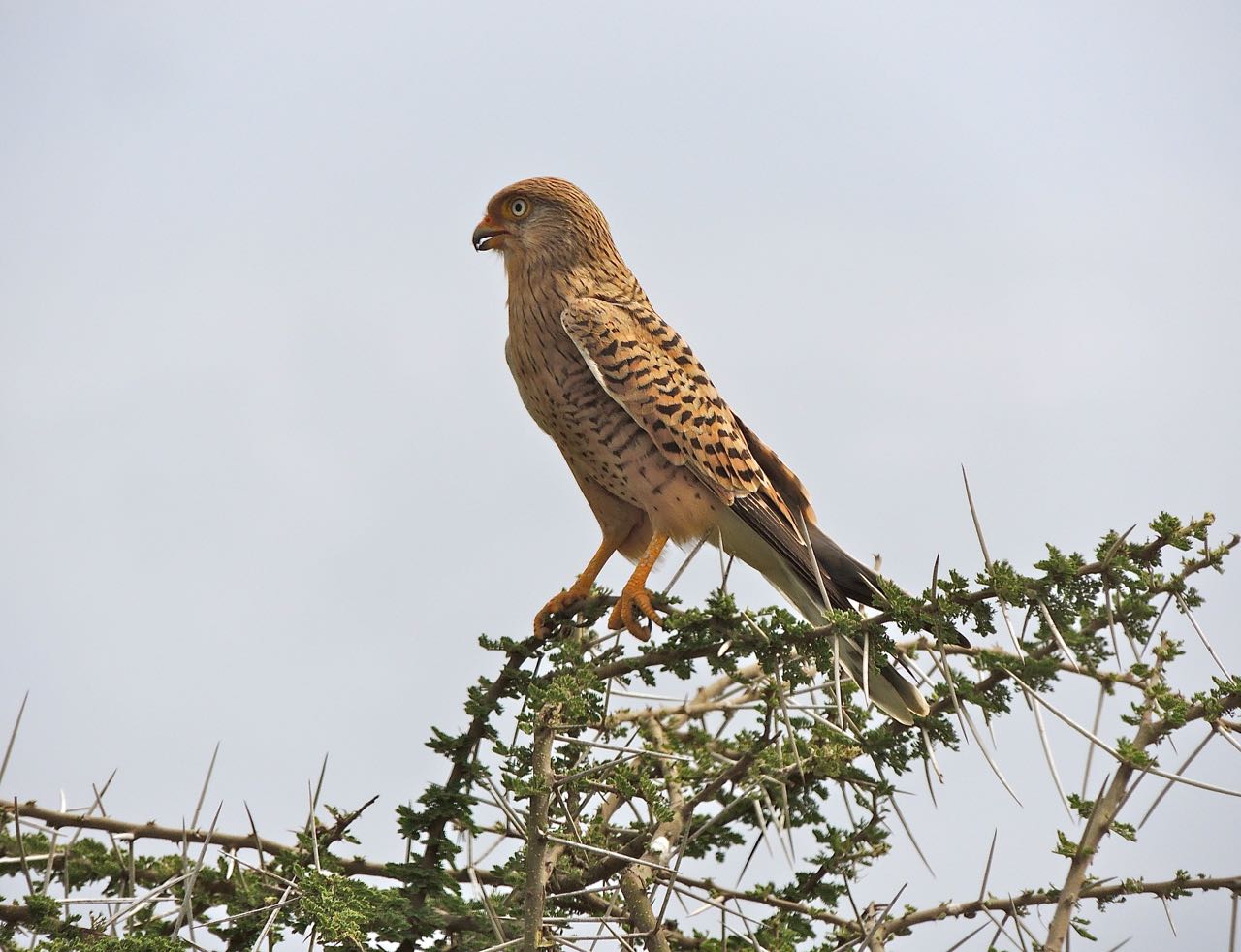 Greater Kestrel - Photo by William Young
Greater Kestrel - Photo by William Young
Pheasants, Grouse, and AlliesIn the Serengeti, we saw a half dozen Coqui Francolins on the first day (including a female with three chicks by the side of the road) and a pair on the second. The adults are small and round with a lovely tan facial pattern. On one of our days near the Naitola campsite, we saw a pair of Crested Francolins. They also looked small and round, and they had a white supercilium. The Hildebrandt's Francolins looked much larger and are mottled below. We heard their calls, which the Stevenson field guide describes as: "...a wooden crescendo of rapid notes tunk-unk-unk-unk with the first loudest. May continue for long periods breaking into an insane bout of screaming, often given in duet." That is a fairly accurate account of what we heard. Tanzania's three species of spurfowls are in the same genus (Francolinus) as the francolins. The Grey-breasted Spurfowl is an endemic found only in a small area from Mwanza to the Serengeti. The three we saw in the Serengeti had a streaked gray breast and a red throat. We saw 46 Yellow-necked Spurfowl, with the most around the Naitola campsite and fewer around Mkomazi. They are handsome, with red skin around the eyes and a bare yellow throat. They have grayish legs and a similar colored bill. We did not see any Red-necked Spurfowl until the final full day of the trip at Mikumi. We saw ten, and some were close to our vehicle. Most of their bare parts are bright red — bill, skin around eyes, neck, and legs. The back is dark grayish-brown, and the underparts are black, streaked with gray. Two Common Quail flew near the entrance to Tarangire. They looked much smaller than the francolins. Helmeted Guineafowl were very common, and we saw 88 on nine days. Their huge black body with tiny speckles is much larger than a francolin's. They have blue skin on the neck, red skin on the face, and a horny casque.
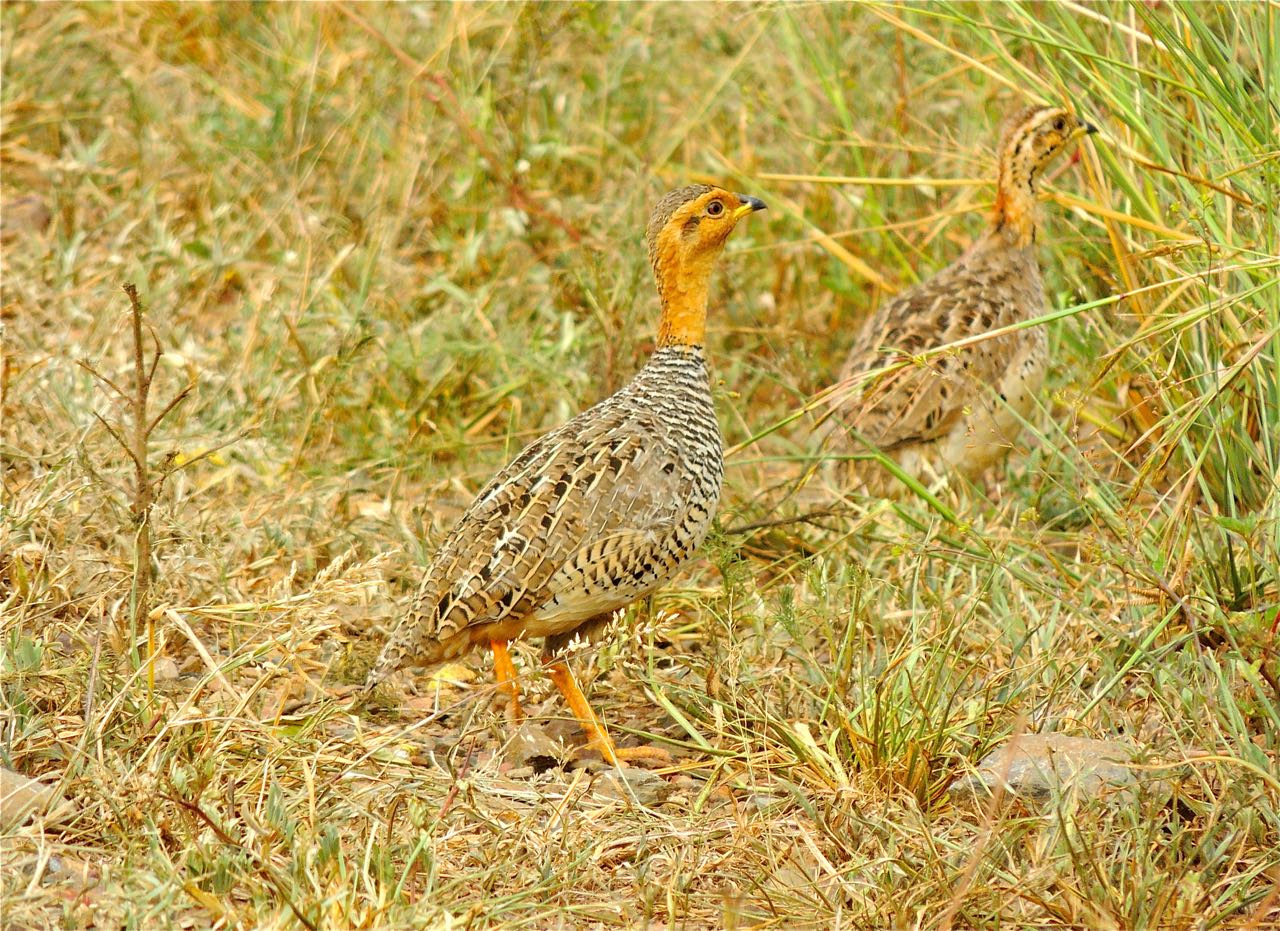 Coqui Francolin Male and Female - Photo by William Young
Coqui Francolin Male and Female - Photo by William Young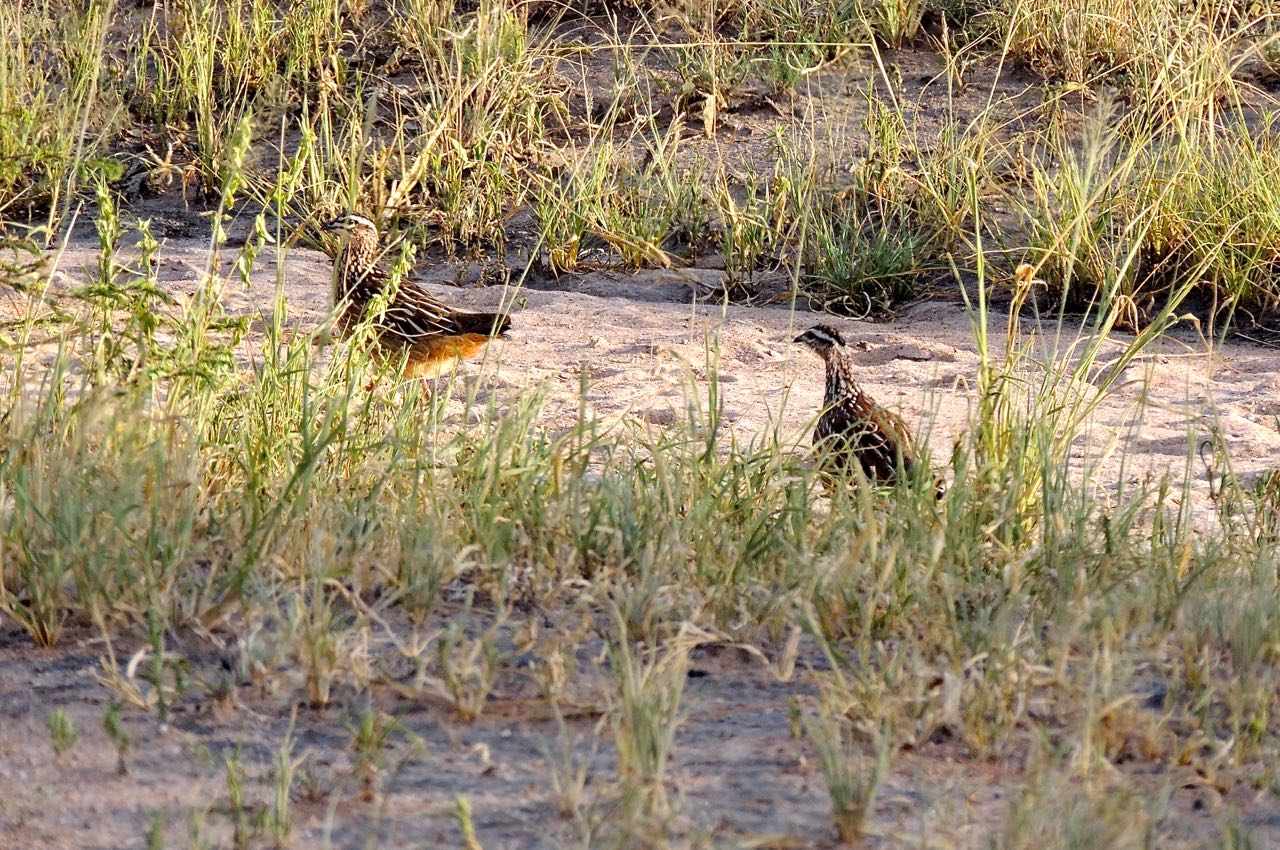 Crested Francolins - Photo by William Young
Crested Francolins - Photo by William Young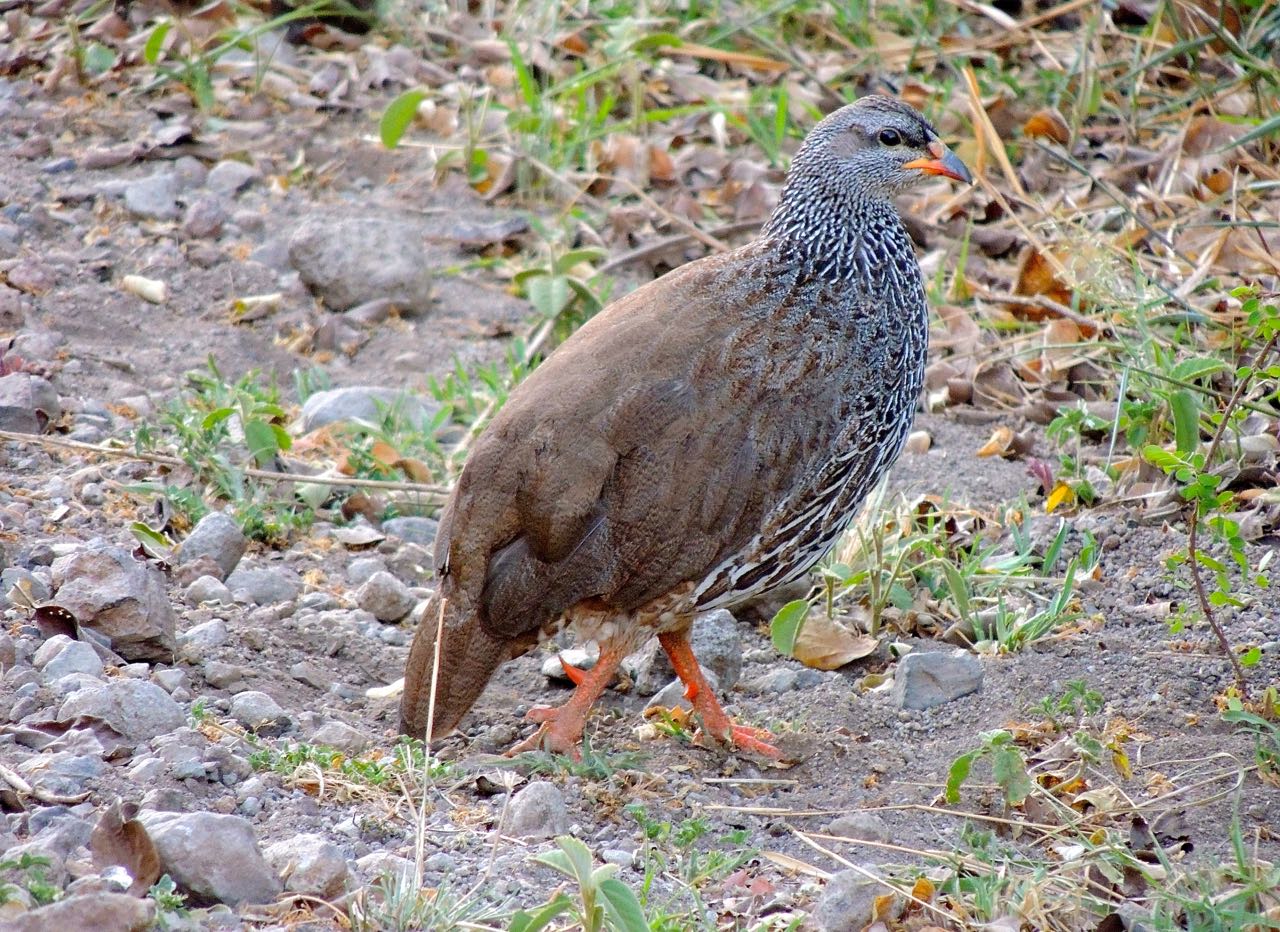 Hildebrandt's Francolins - Photo by William Young
Hildebrandt's Francolins - Photo by William Young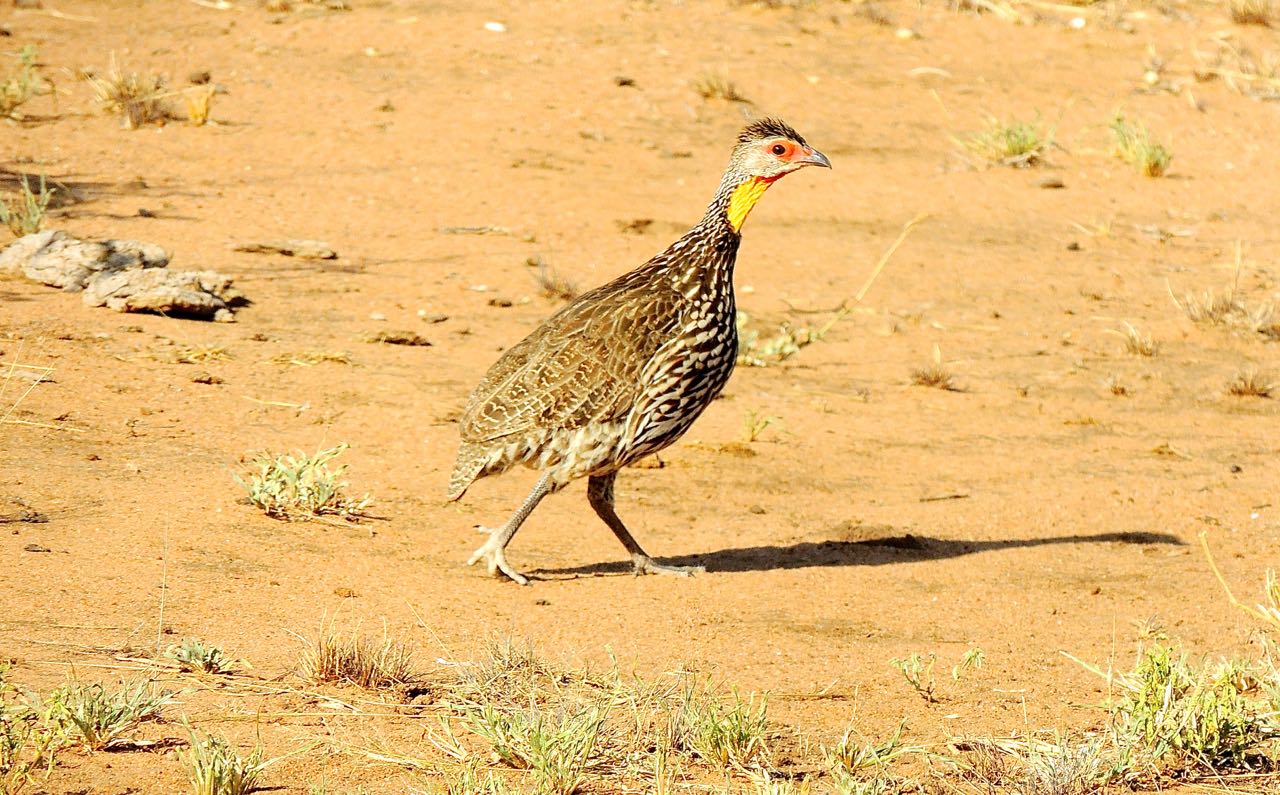 Yellow-necked Spurfowl - Photo by William Young
Yellow-necked Spurfowl - Photo by William Young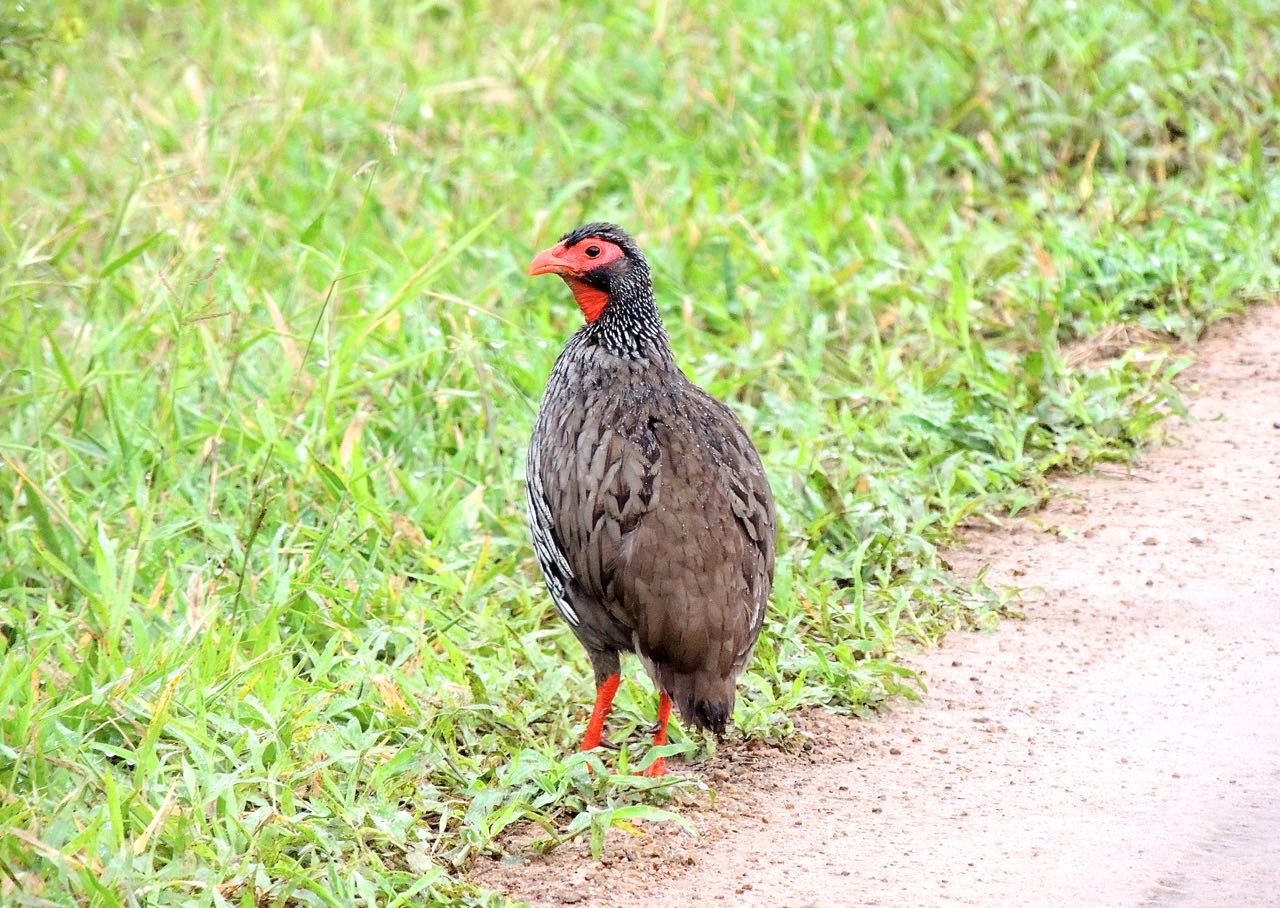 Red-necked Spurfowl - Photo by William Young
Red-necked Spurfowl - Photo by William Young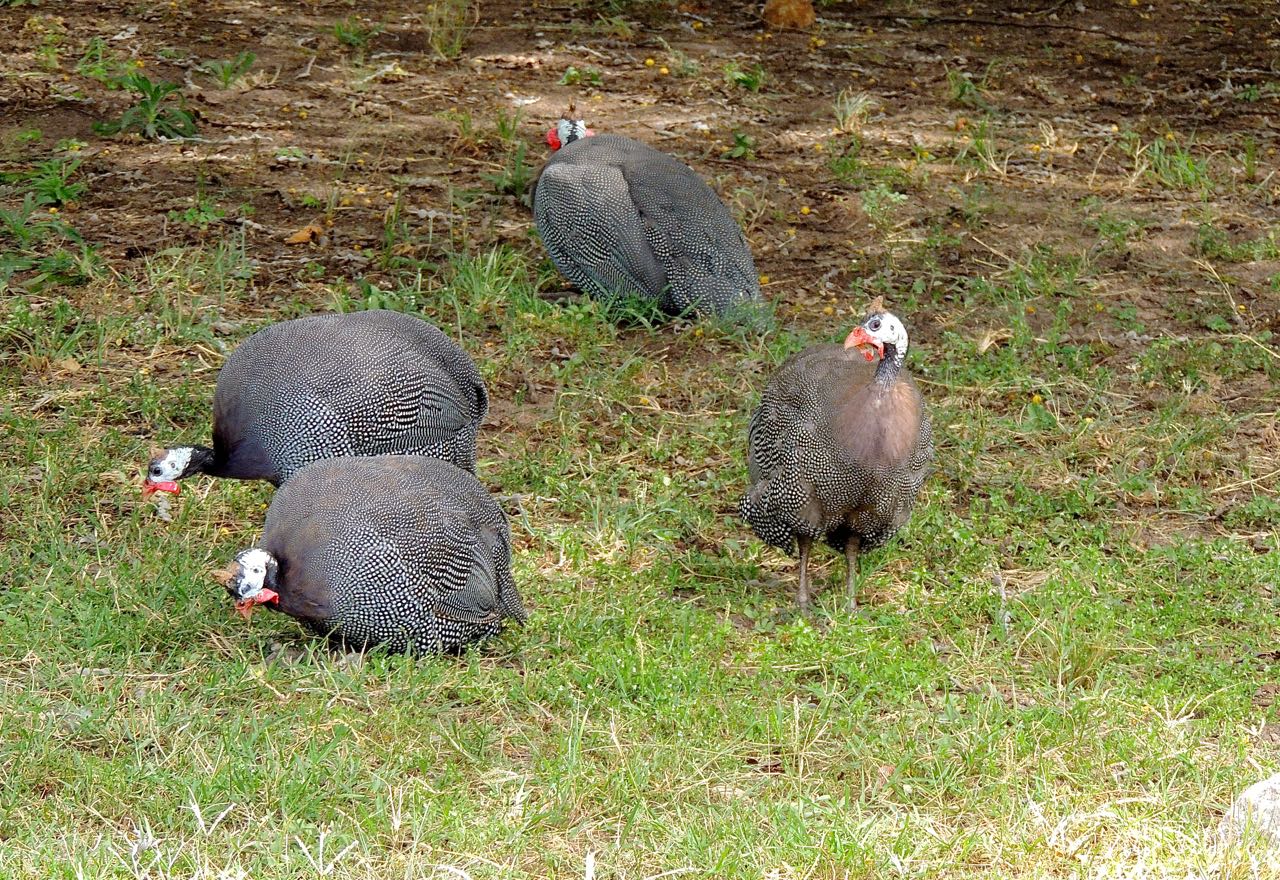 Helmeted Guineafowl - Photo by William Young
Helmeted Guineafowl - Photo by William Young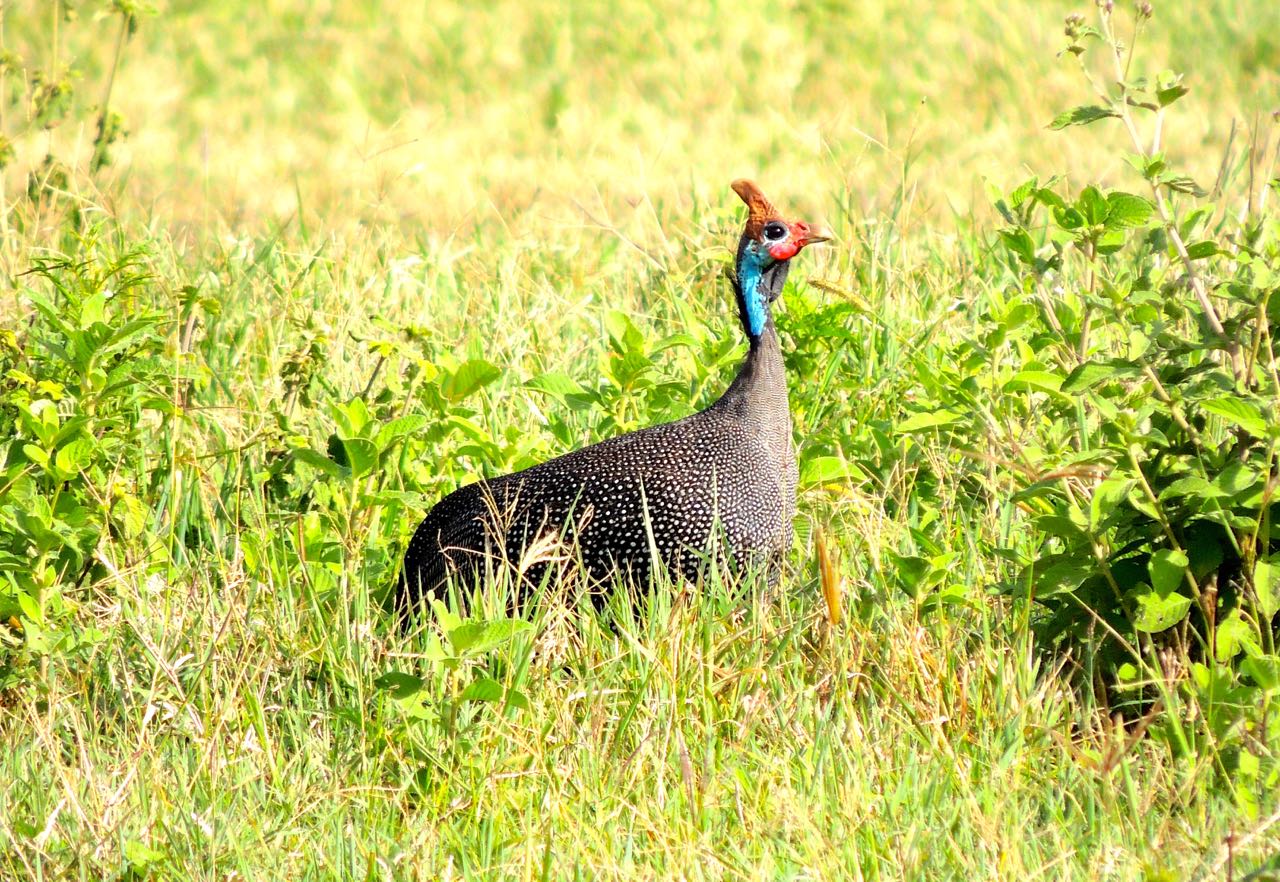 Helmeted Guineafowl - Photo by William Young
Helmeted Guineafowl - Photo by William Young
CraneThe Grey Crowned Cranes were much more beautiful than they appear in the field guide. We saw some of these stunning birds glistening in the sunlight with their tight little bunch of feathers in the back of the head. They have a black crown and throat, a white cheek, a light eye, bare red skin near the ear, and a red wattle hanging from the chin. The neck is light gray and becomes a series of plumes that blend in with the darker gray feathers on the back. The wings have a large white section that is visible near the rump when the bird is resting, with some loose yellow feathers at the end. Their flight is slow and stately, and the wings look white with a wide chocolate trailing edge. We saw 69 on five days. At Ndutu, we saw some in full breeding plumage in the water in front of a large group of bathing zebras. To observe breathtaking scenes such as this were one of the reasons I wanted to visit Africa.
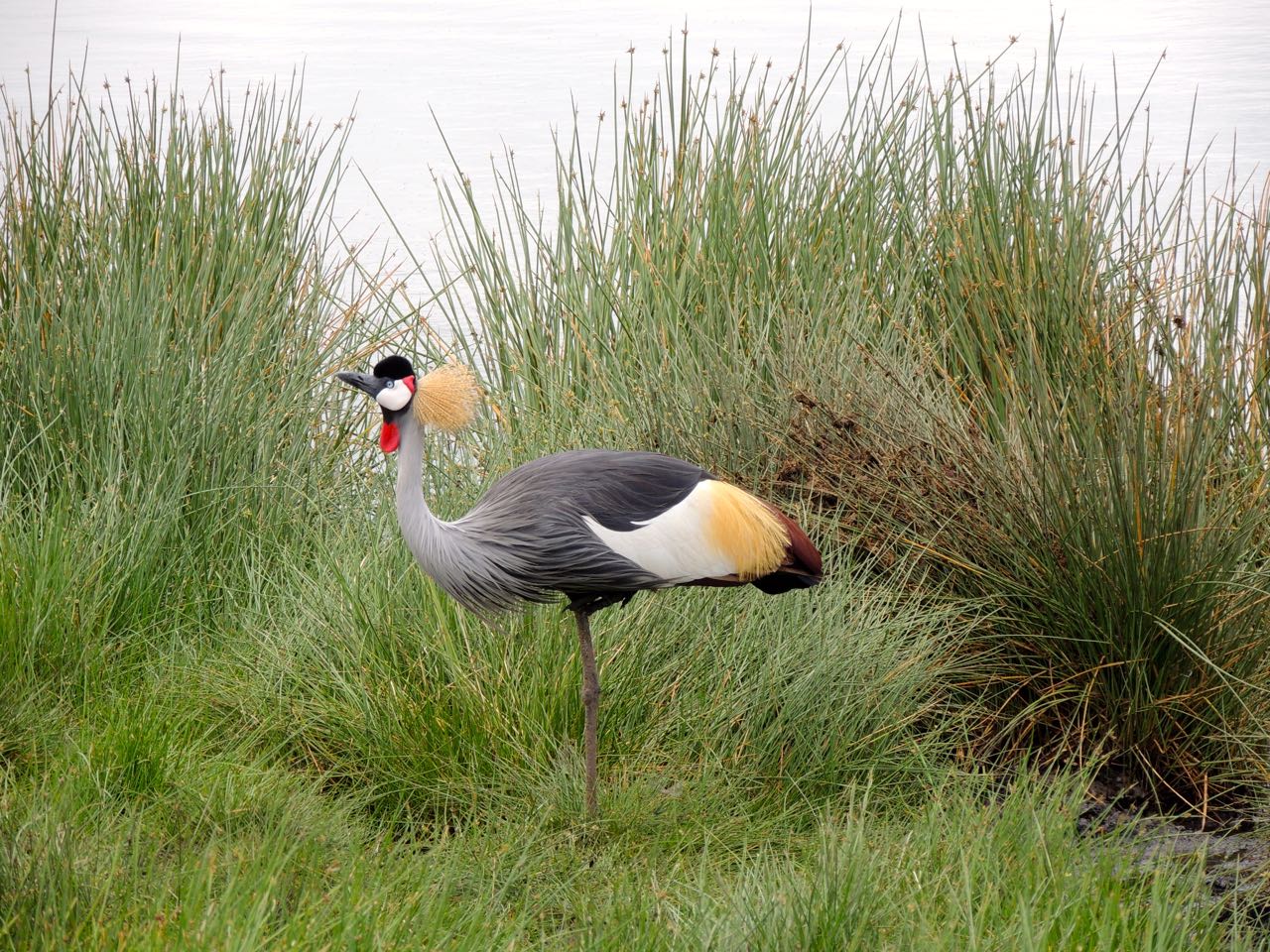 Grey Crowned Crane - Photo by William Young
Grey Crowned Crane - Photo by William Young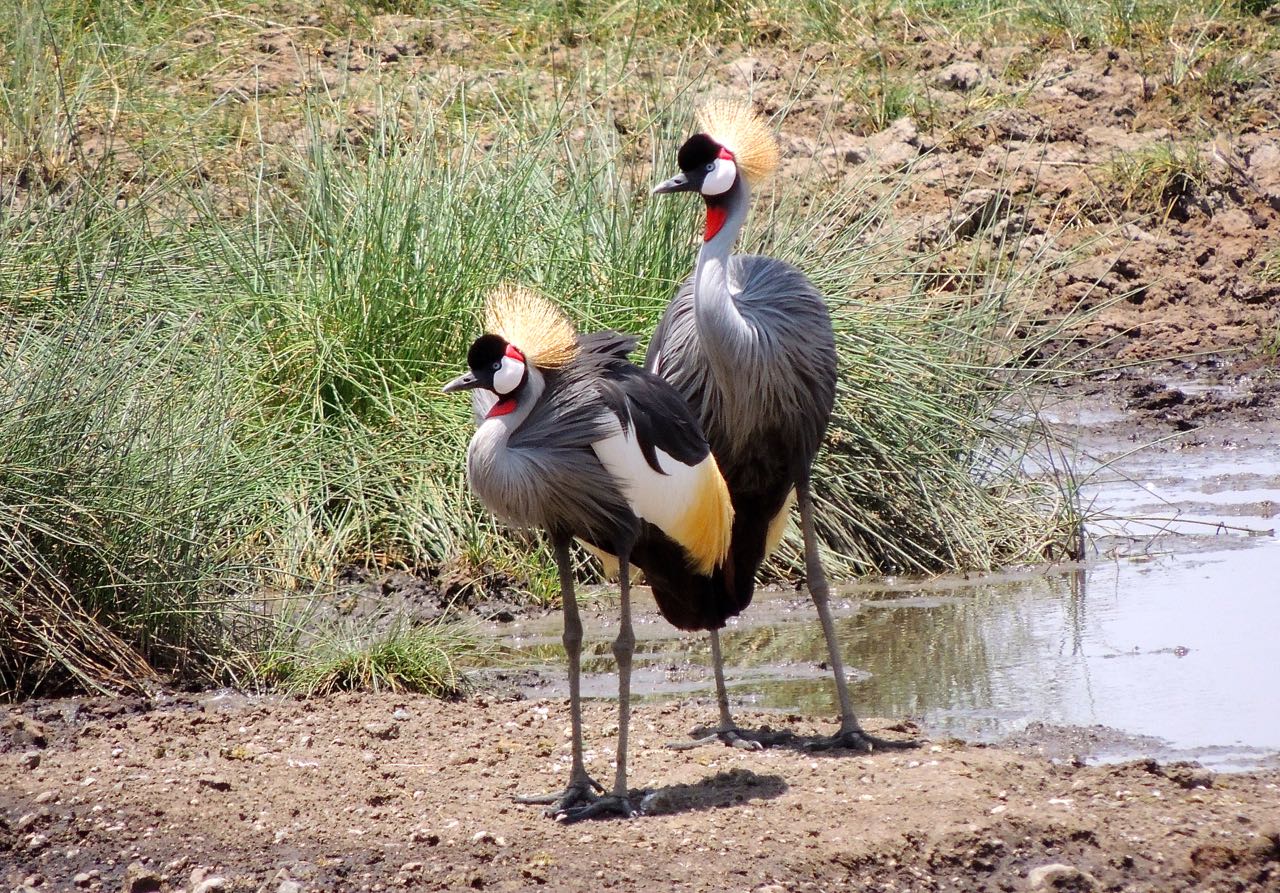 Grey Crowned Cranes - Photo by William Young
Grey Crowned Cranes - Photo by William Young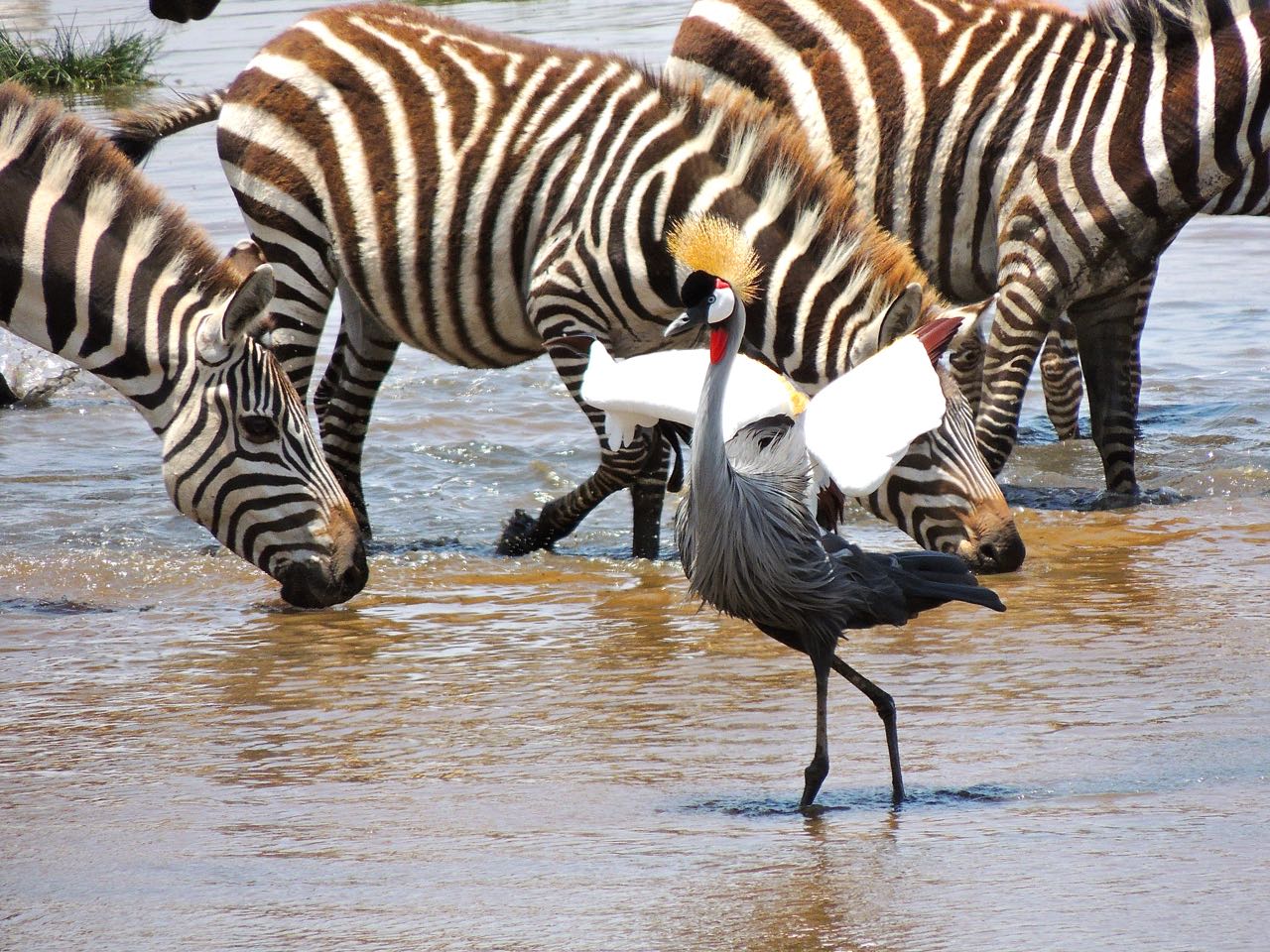 Grey Crowned Crane and Plains Zebras - Photo by William Young
Grey Crowned Crane and Plains Zebras - Photo by William Young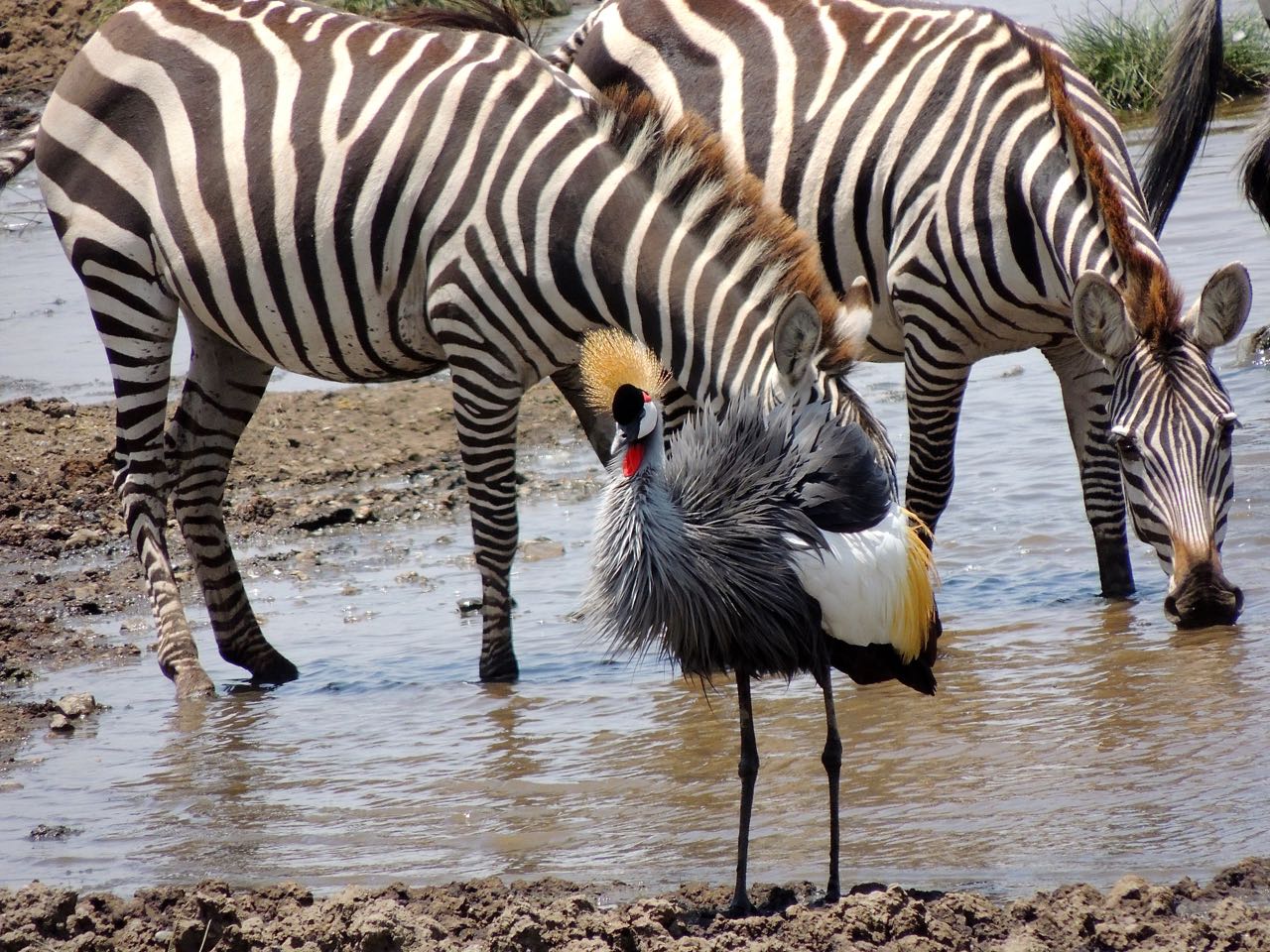 Grey Crowned Crane and Plains Zebras - Photo by William Young
Grey Crowned Crane and Plains Zebras - Photo by William Young
RailsBlack Crakes were not difficult to see, considering they are rails. We saw them easily at the wetland near our tents at the Momela campsite. They are solid black, with red legs and a yellow-green bill. At Ngorongoro, we saw them walking on the back of bathing Hippopotami, who did not seem to mind being used as stepping stones. Also walking on the Hippopotami was a Common Moorhen. We saw another 20 moorhens at Tarangire. We saw one Purple Swamphen at Lake Manyara, and it looked really big. I had seen this species in Australia. It is purple, with a red bill and red legs.
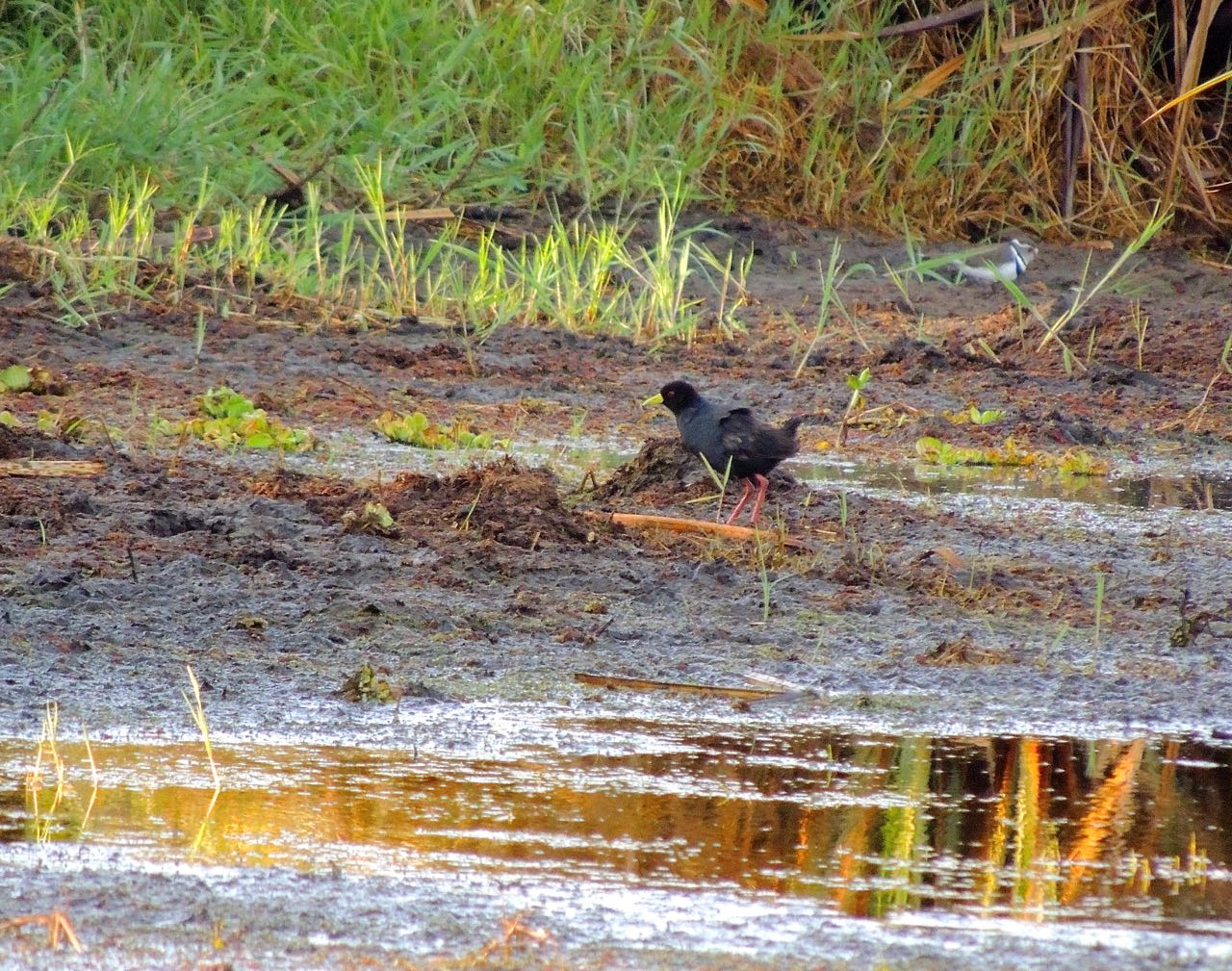 Black Crake and Three-banded Plover - Photo by William Young
Black Crake and Three-banded Plover - Photo by William Young
BustardsWe saw five species of bustards and had good looks at each. Kori Bustards are the heaviest flying birds in the world. We saw 17 on four of the five days of the trip between the Serengeti and Ngorongoro. They look imperious, because they tend to keep their bill pointing up at about a 30 degree angle while strutting around in the fields. They have a gray neck, black necklace, brown back, and black-and-white patterning on the side of their folded wings. One of the males had his throat poach partially inflated for a sexual display, but he did not seem to be doing much. We saw a female who was being followed by a chick. Another female was sitting on a nest close to the road, and we could see her big yellow eye. The nest was within a circle of rocks that was open at the back to allow the bustard to extend beyond it. I could not tell if there was any nest constructed beneath the large sprawling bird or if the bird and the rocks provided all of the needed protection for the eggs. I found a Kori Bustard feather, and it has beautiful patterning which helps to camouflage the birds. In the Serengeti, we saw a Denham's Bustard, which is only four inches smaller (46 vs. 50 inches) than the huge Kori. It has a dark gray throat, and its neck has rufous which extends to its back. Their wings are much darker than the Kori's, and they have more black-and-white on the folded wing. Bernard had never before seen one.
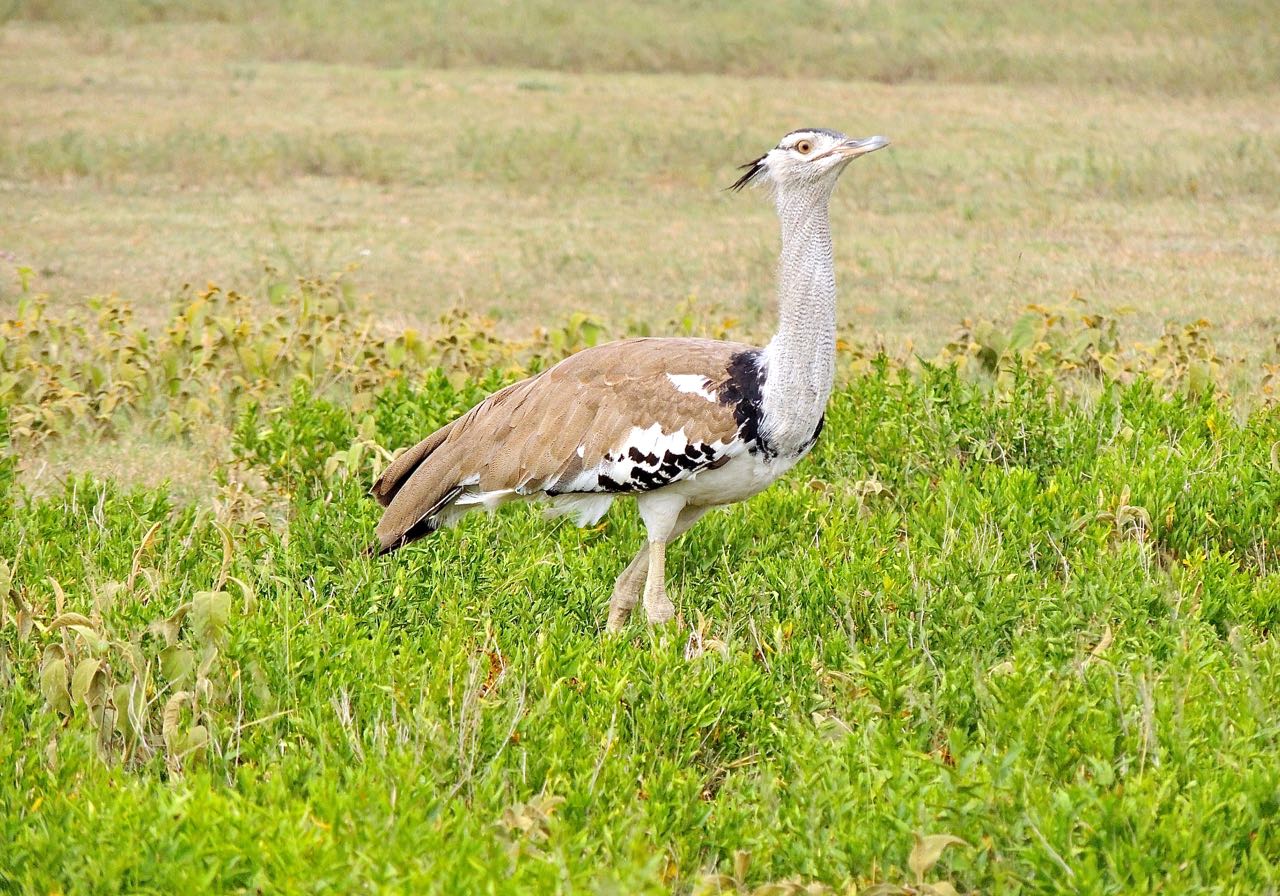 Kori Bustard - Photo by William Young
Kori Bustard - Photo by William Young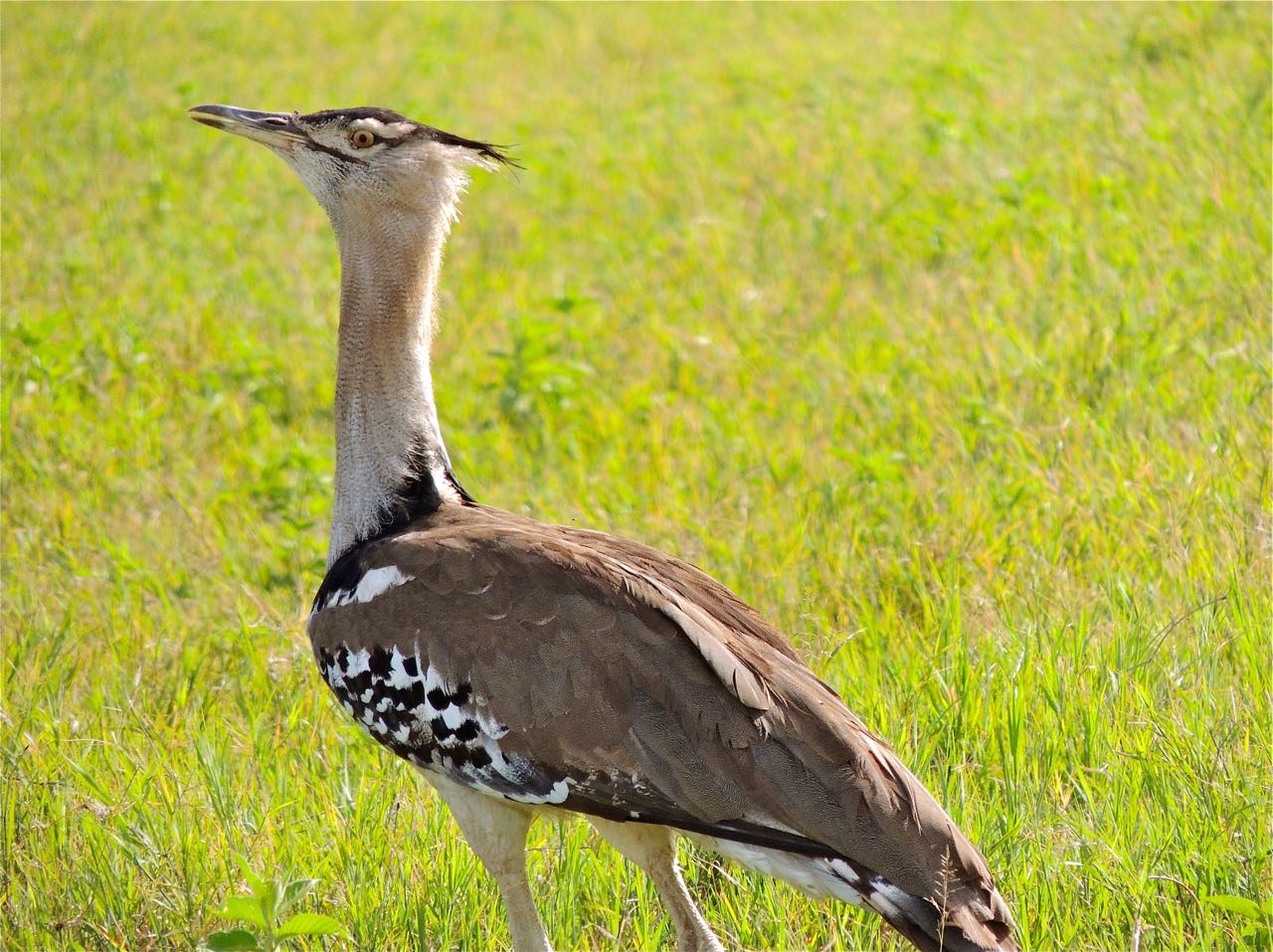 Kori Bustard - Photo by William Young
Kori Bustard - Photo by William Young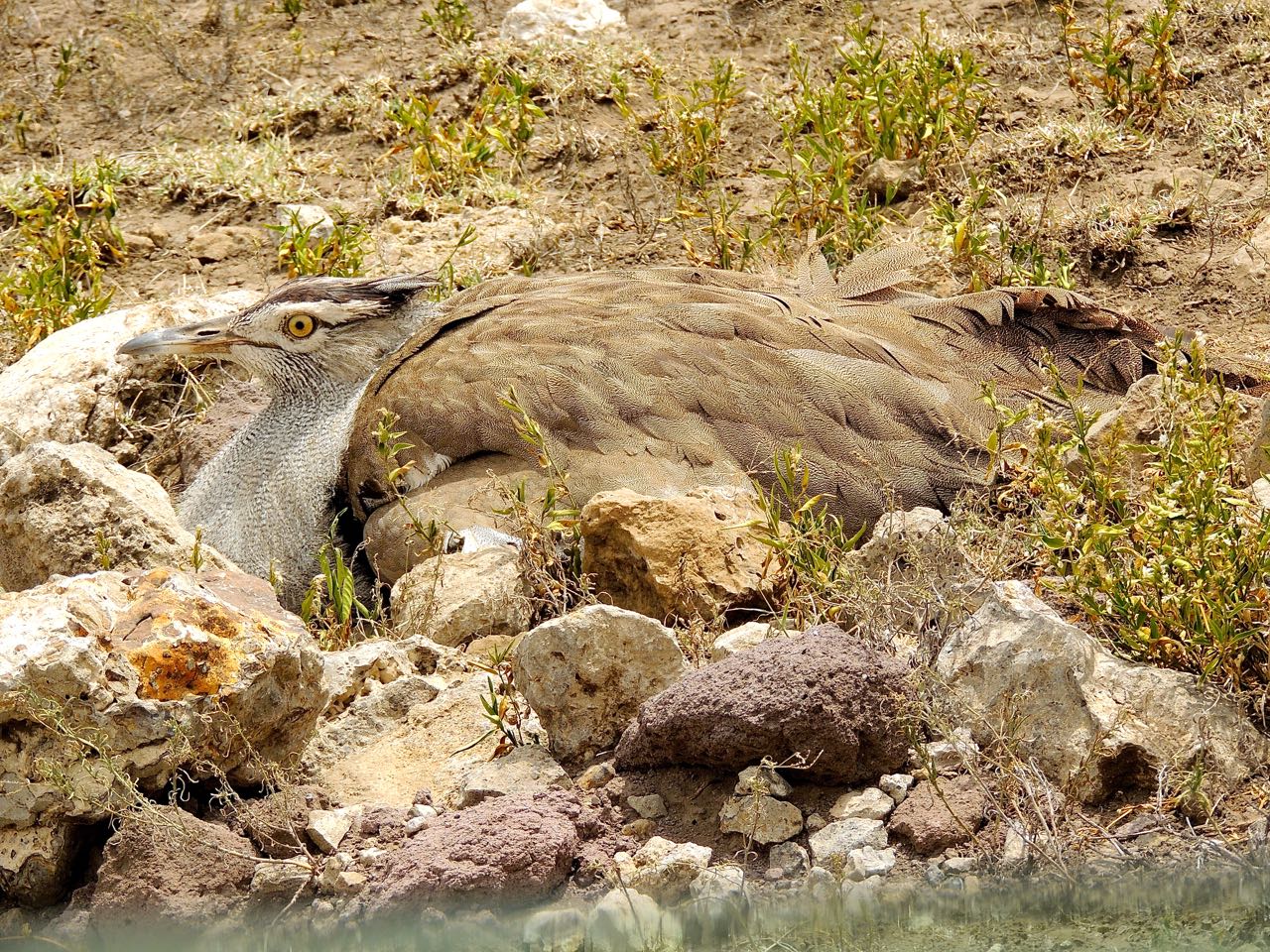 Kori Bustard on Nest - Photo by William Young
Kori Bustard on Nest - Photo by William Young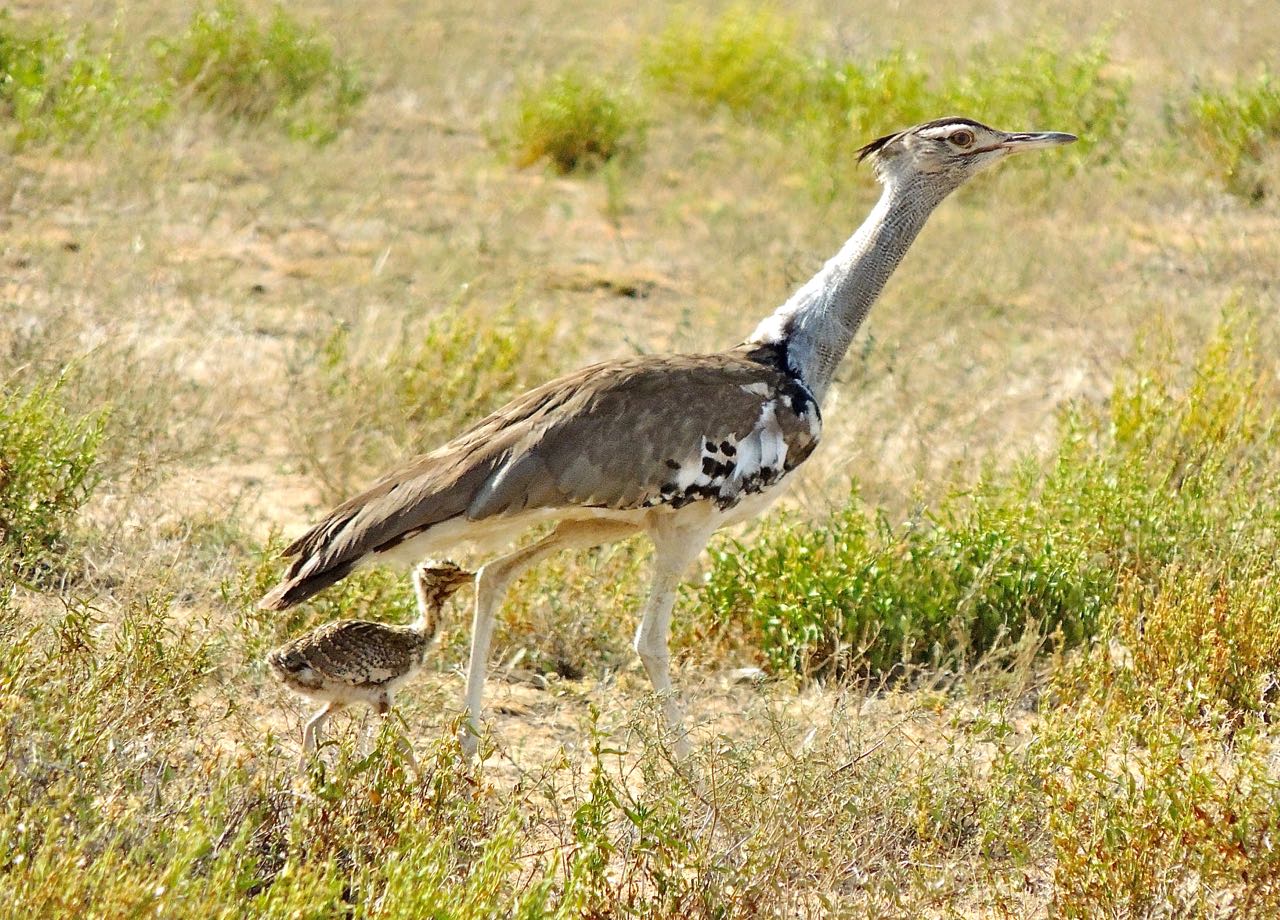 Kori Bustard and Chick - Photo by William Young
Kori Bustard and Chick - Photo by William Young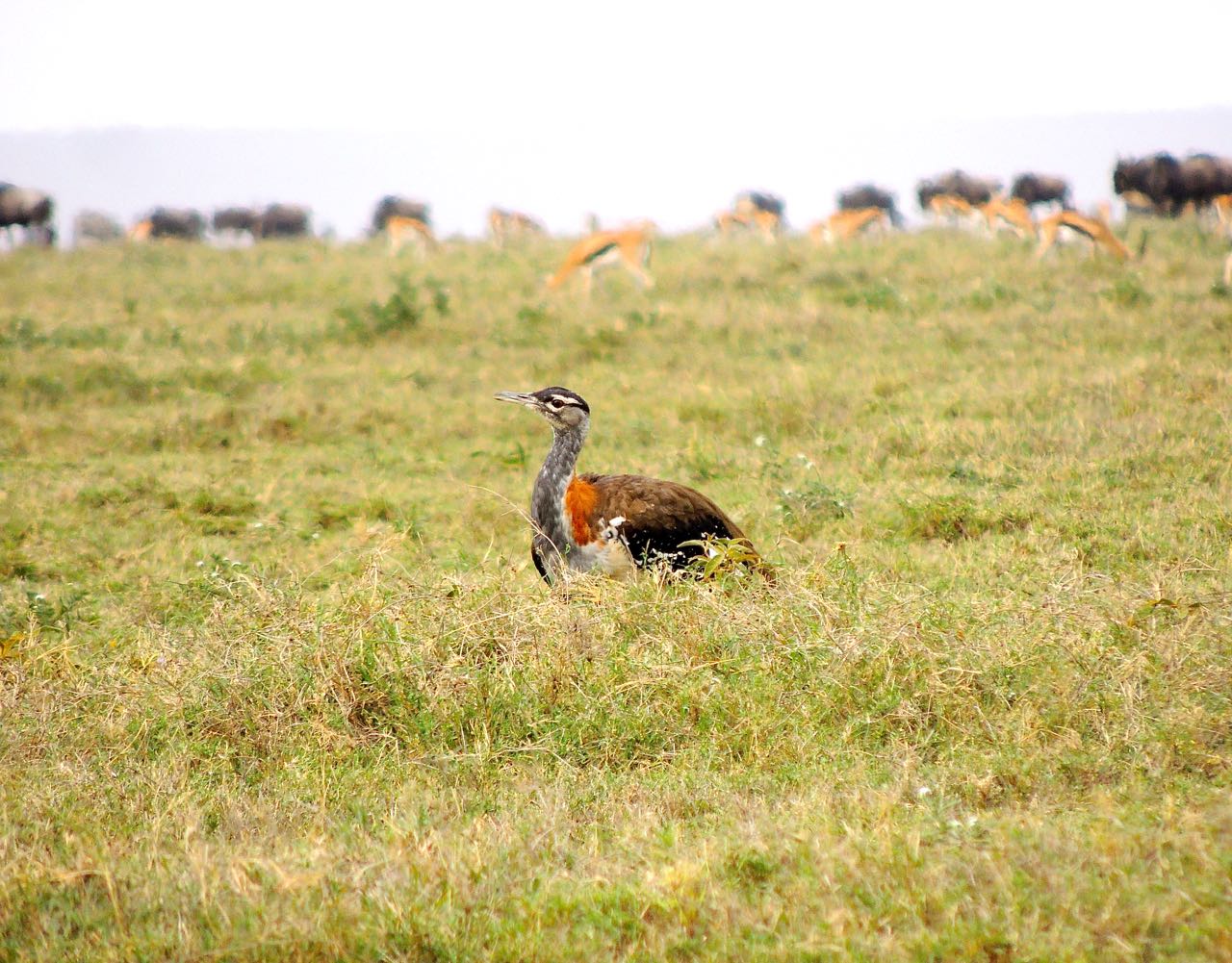 Denham's Bustard - Photo by William Young
Denham's Bustard - Photo by William YoungThe three other bustard species were smaller. We saw nine White-bellied Bustards on three days, with eight in the Serengeti and one near our Naitola campsite. They have a grayish neck and a black-and-white face. We saw one Buff-crested Bustard at Mkomazi, and it had a rounded tan head and a black belly. We saw six Black-bellied Bustards on our final day at Mikumi, and some were very cooperative. One walked across the road near where we had stopped. It had beautifully patterned buff-and-black feathers on its back and wings. Its leg and bill were light colored, and the black on the belly extended up the neck to the chin. The black on the belly was deeply saturated and inky.
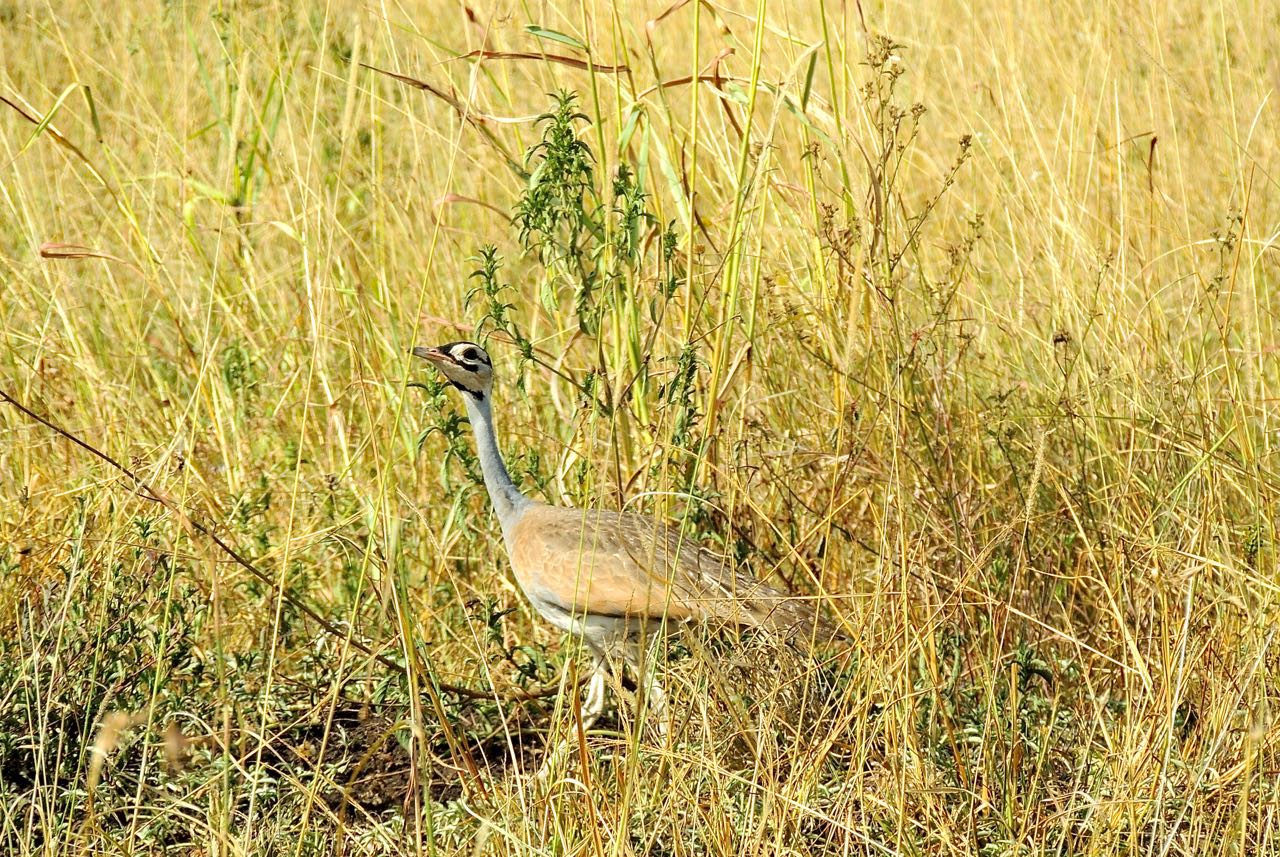 White-bellied Bustard - Photo by William Young
White-bellied Bustard - Photo by William Young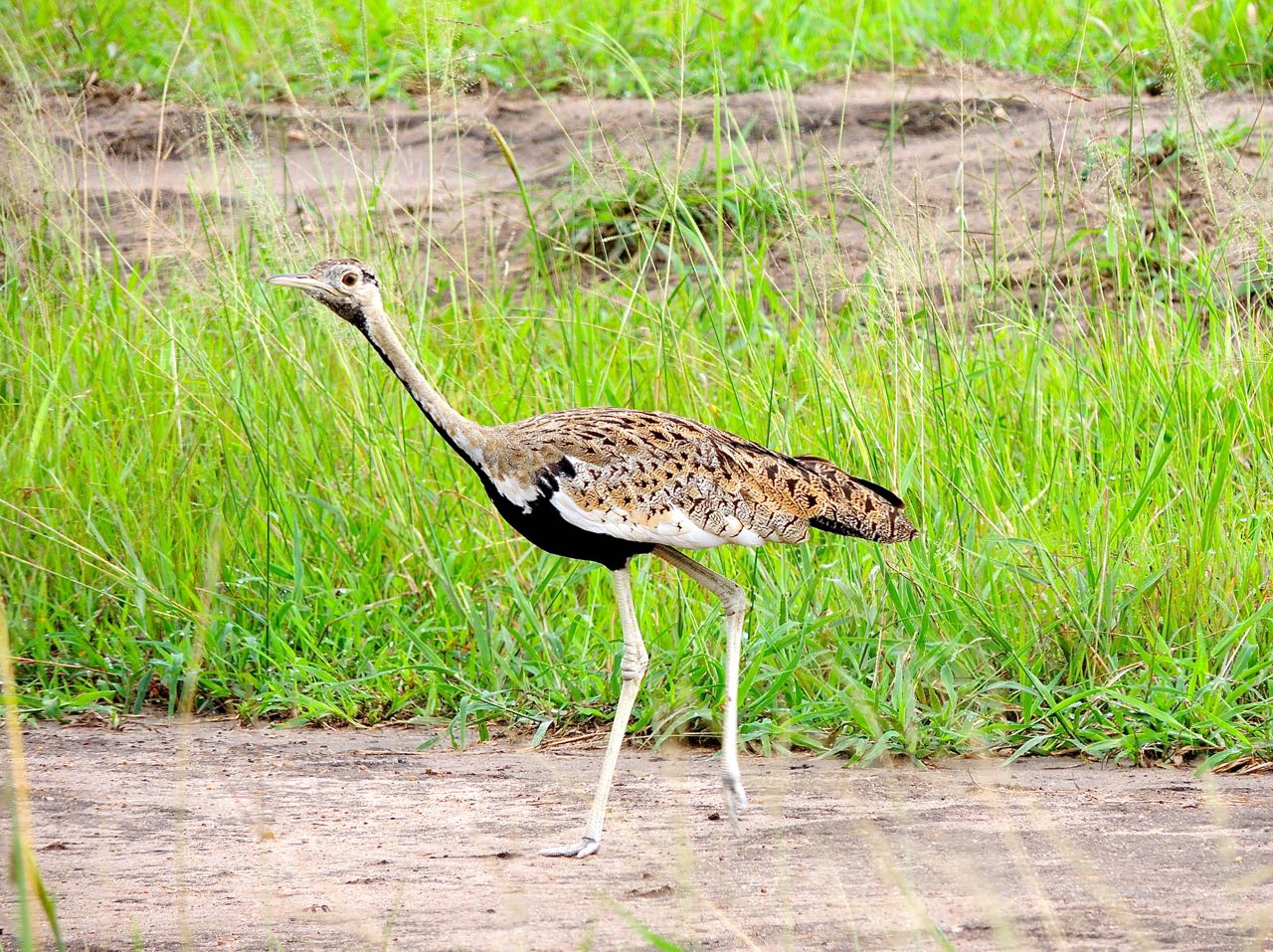 Black-bellied Bustard - Photo by William Young
Black-bellied Bustard - Photo by William Young
JacanasI saw 20 African Jacanas on five days. They have rufous bodies, white on the chin and throat, and a black eyeline that runs down their neck. They have long legs which stick out behind them when the bird is flying. Sometimes, I could see their long Freddy Kruger toes. Martin saw the much smaller Lesser Jacana, but I did not.
Painted-SnipeThe Greater Painted-Snipe was another species whose beauty surprised me. The two we saw at Dindira Swamp were grayish, with gold on their wings that glistened in the sun. They constantly bob while looking for food. Extending up from the white belly are two white stripes that form a V on their back. They also have a broad white eyeline that runs through their large eyes. The tail is gray, with gold bars.
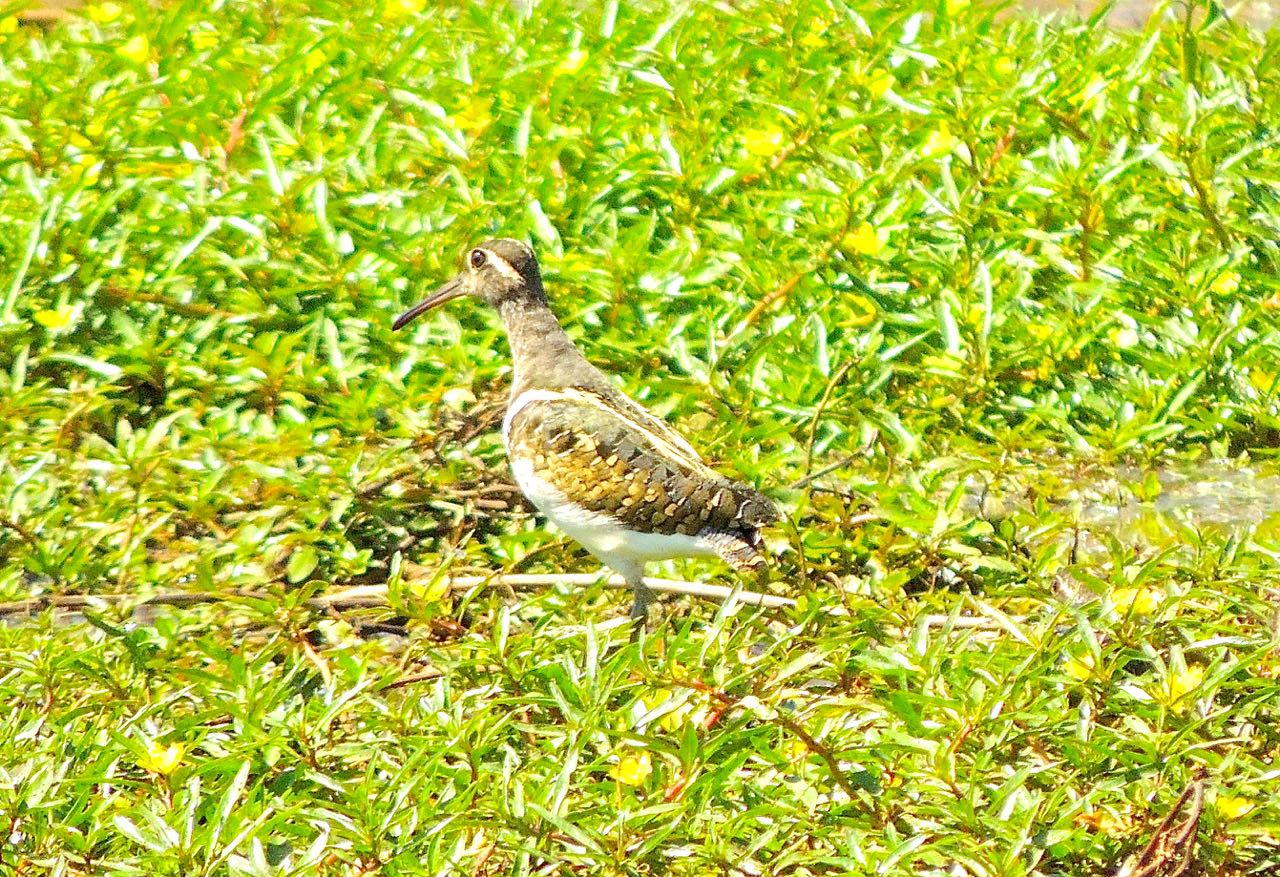 Greater Painted-Snipe - Photo by William Young
Greater Painted-Snipe - Photo by William Young
Crab PloverWe saw about 50 Crab Plovers on our day in Dar es Salaam. They are large white birds with light colored legs and a thickish black bill. The black eye stands out on the white head. They feed actively, and they look a bit like albino thick-knees. They have some black on the back and wings. They are the only species in their family.
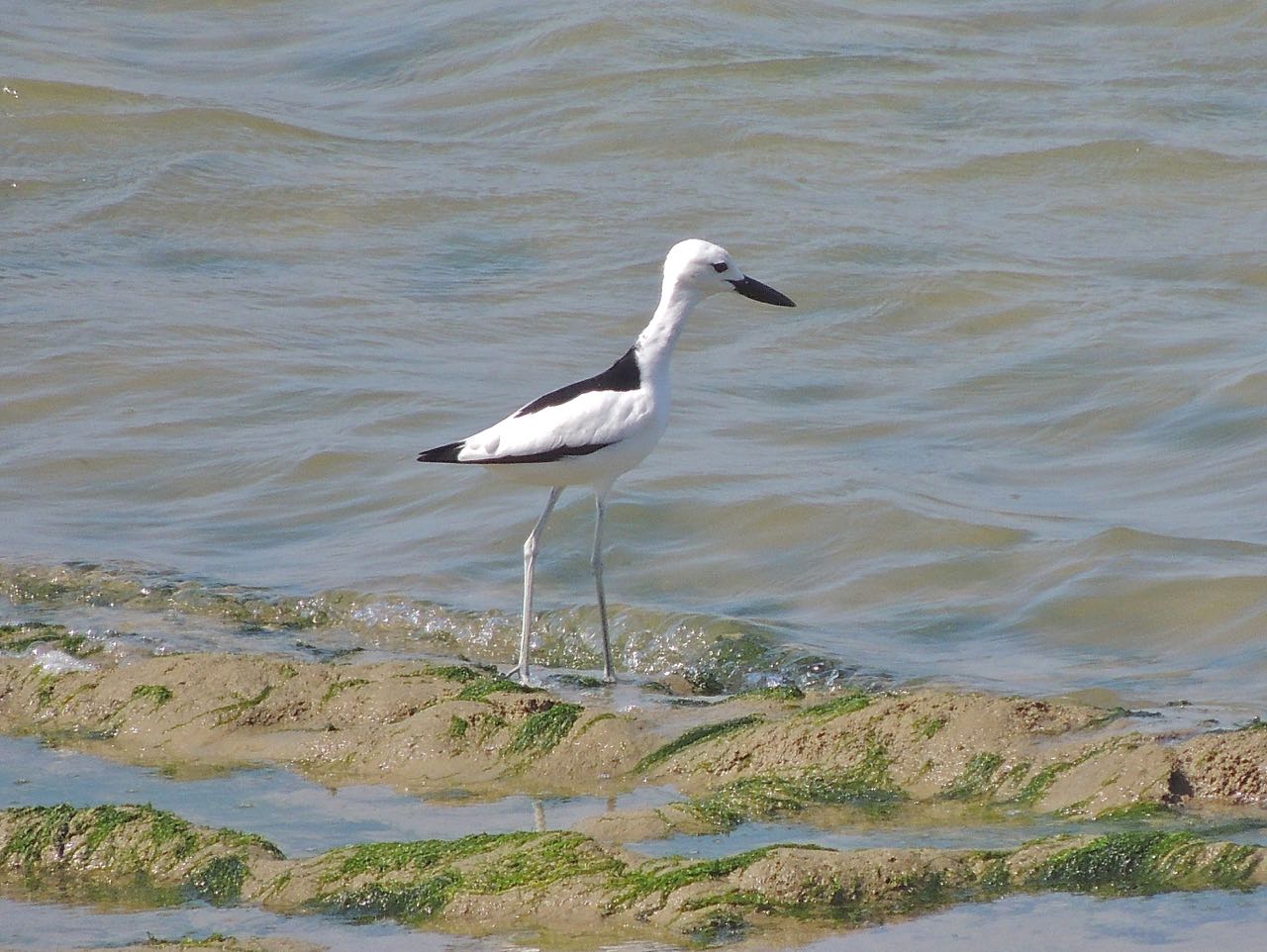 Crab Plover - Photo by William Young
Crab Plover - Photo by William Young
StiltWe saw more than 50 Black-winged Stilts on 8 days. They are the same size and shape as the Black-necked Stilt in North America, but the adults have an all-white head and neck. It was odd sometimes to see them feeding in areas fraught with danger, such as where we were seeing crocodiles and large herds of zebras.
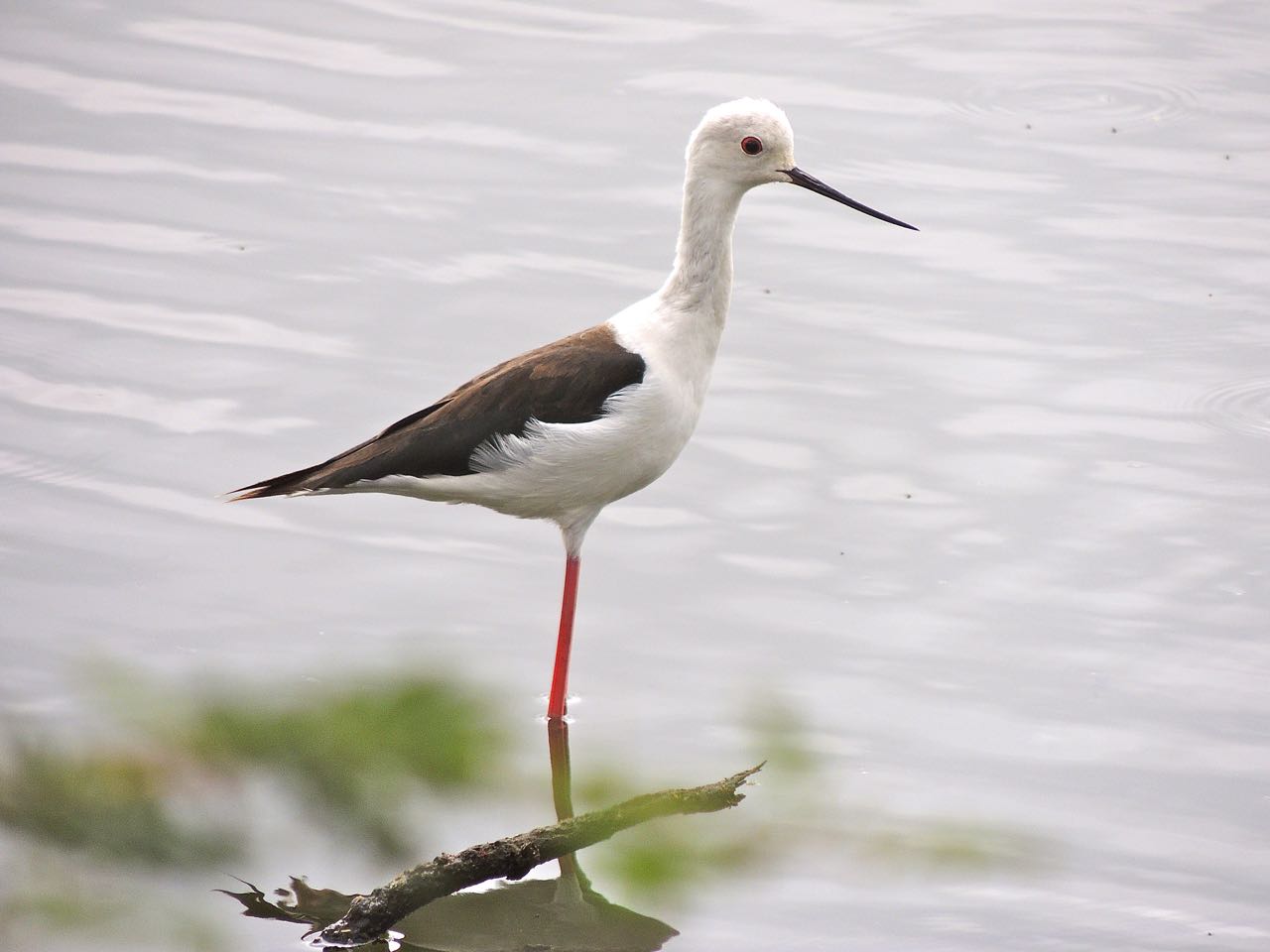 Black-winged Stilt - Photo by William Young
Black-winged Stilt - Photo by William Young
Thick-kneesWe saw thick-knees on only four days. We saw seven Spotted Dikkops in the Serengeti. They have big yellow eyes, yellow legs, and the base of their bill is yellow. The throat is white, but they are entirely spotted on their back. They tend not to move much, which might help with their camouflage. After we saw a couple, we soon realized that more birds were present who were blending in with their background. They behave as if they think they are invisible, and when they lose faith, they scramble away. We saw Water Dikkops on three days. We saw a pair while we were walking near Dindira Swamp. They have a broad gray horizontal bar on their wing, bordered in black. Near where they were, we saw a brown speckled egg that looked as if it had been split open rather than stepped on — the yolk was intact. On our final day at Mikumi, we saw about 30 on the edge of a pond which had Hippopotami in it. One was resting in a position in which I had not before seen. The part of the leg on this bird that is thick is its ankle rather than its knee. Ankles bend backwards, and knees bend forward. I have seen birds bending with their ankle joints pointing backwards, but I had never before seen a bird resting on this joint with its legs pointing forward. It was painful to look at.
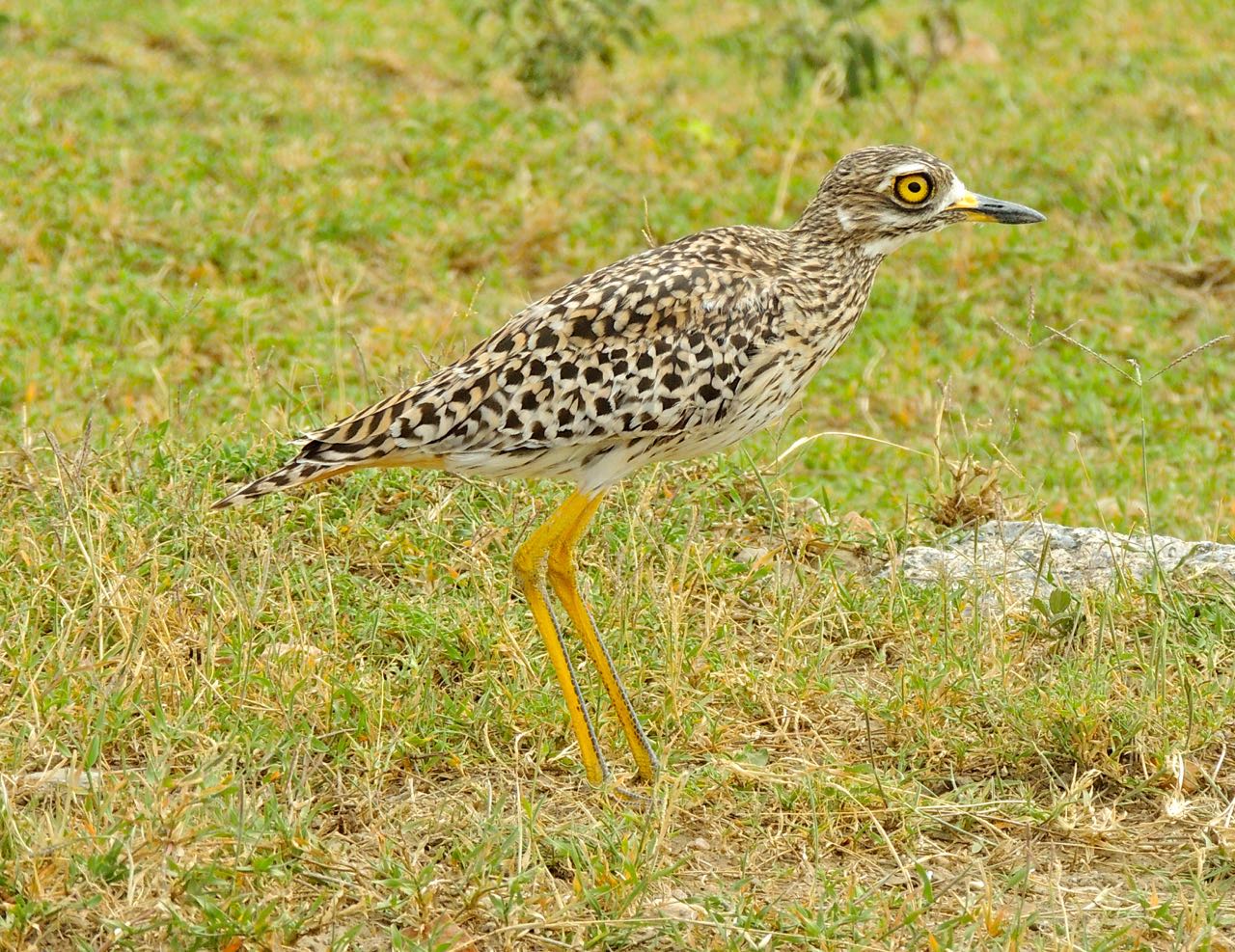 Spotted Dikkop - Photo by William Young
Spotted Dikkop - Photo by William Young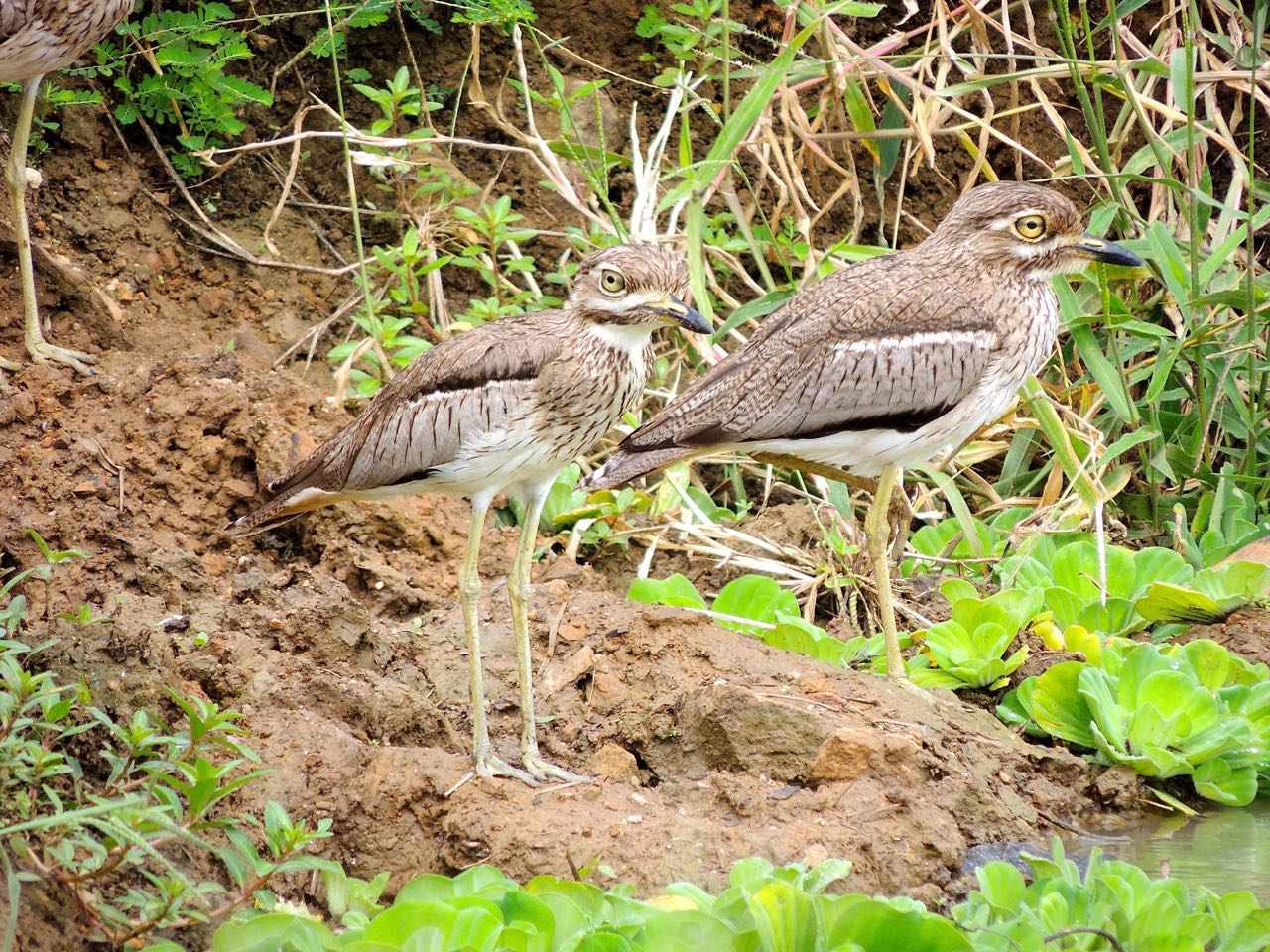 Water Dikkops - Photo by William Young
Water Dikkops - Photo by William Young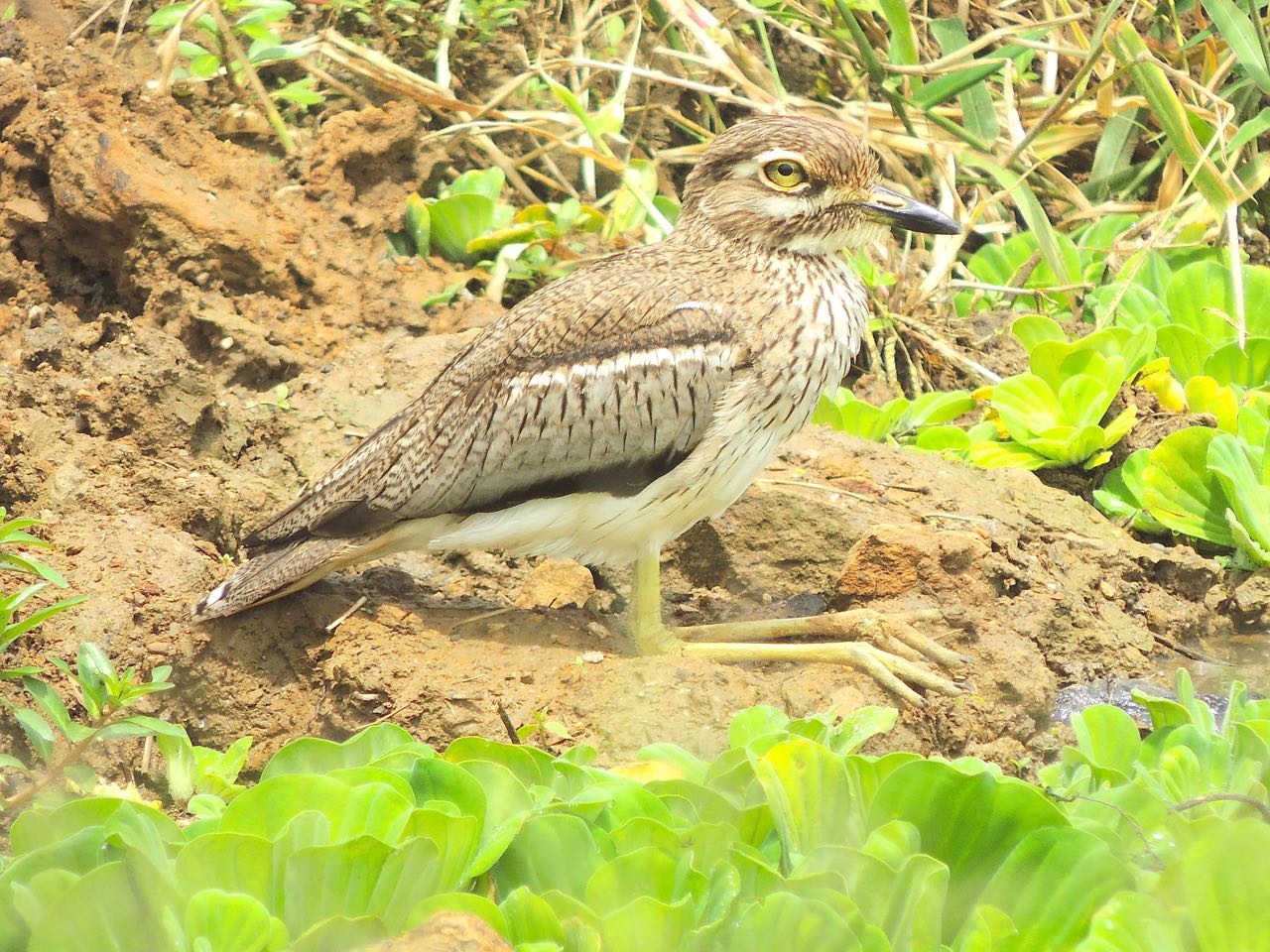 Water Dikkop - Photo by William Young
Water Dikkop - Photo by William Young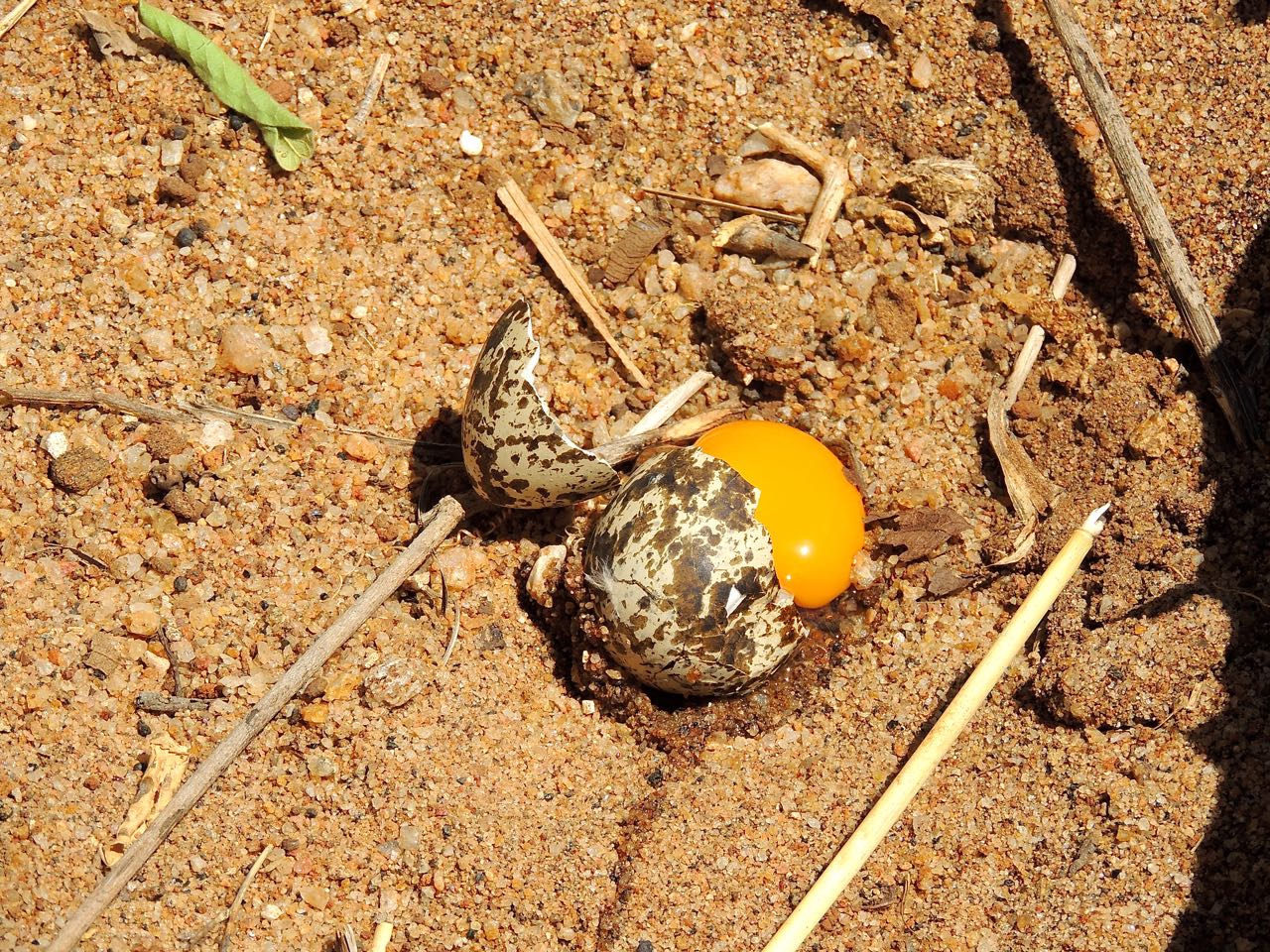 Water Dikkop Egg - Photo by William Young
Water Dikkop Egg - Photo by William Young
Coursers and PratincolesI saw Collared Pratincoles on only three days, but there were between 120 and 200 each time. A lot were at the Hippo Pond at Lake Manyara. They have short legs and long wings, and their flight is tern-like. They are dark, but their rump is whitish. Sometimes when spooked, more than a hundred would swirl around. They sometimes behaved like shorebirds. We saw a lot at the Hippopotamus Pool at Mikumi. In the Serengeti, we saw two Temminck's Coursers. They look delicate and plover-like, with a rufous cap and a black eyeline. We also saw two at Ndutu. We saw 19 Double-banded Coursers, with about 15 around the Naitola campsite. They have a broad black breastband, and above that, a black ring that goes across the breast and all the way around the neck. At Ndutu, we saw one who sat on a pile of dried animal dung. They have black eyes and a black line through the eyes. They are light-colored and blend in with the dried dirt on which they sit and move.
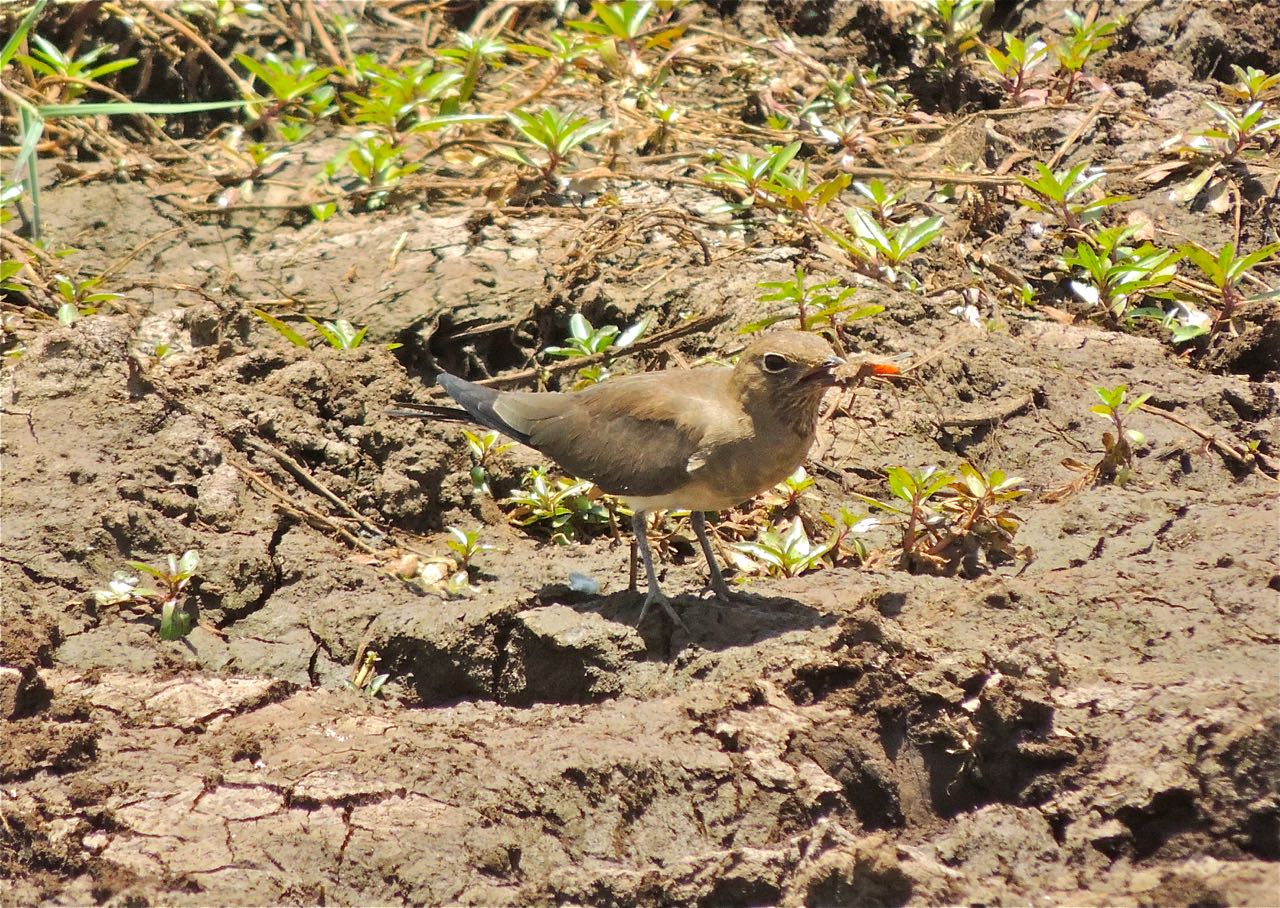 Collared Pratincole - Photo by William Young
Collared Pratincole - Photo by William Young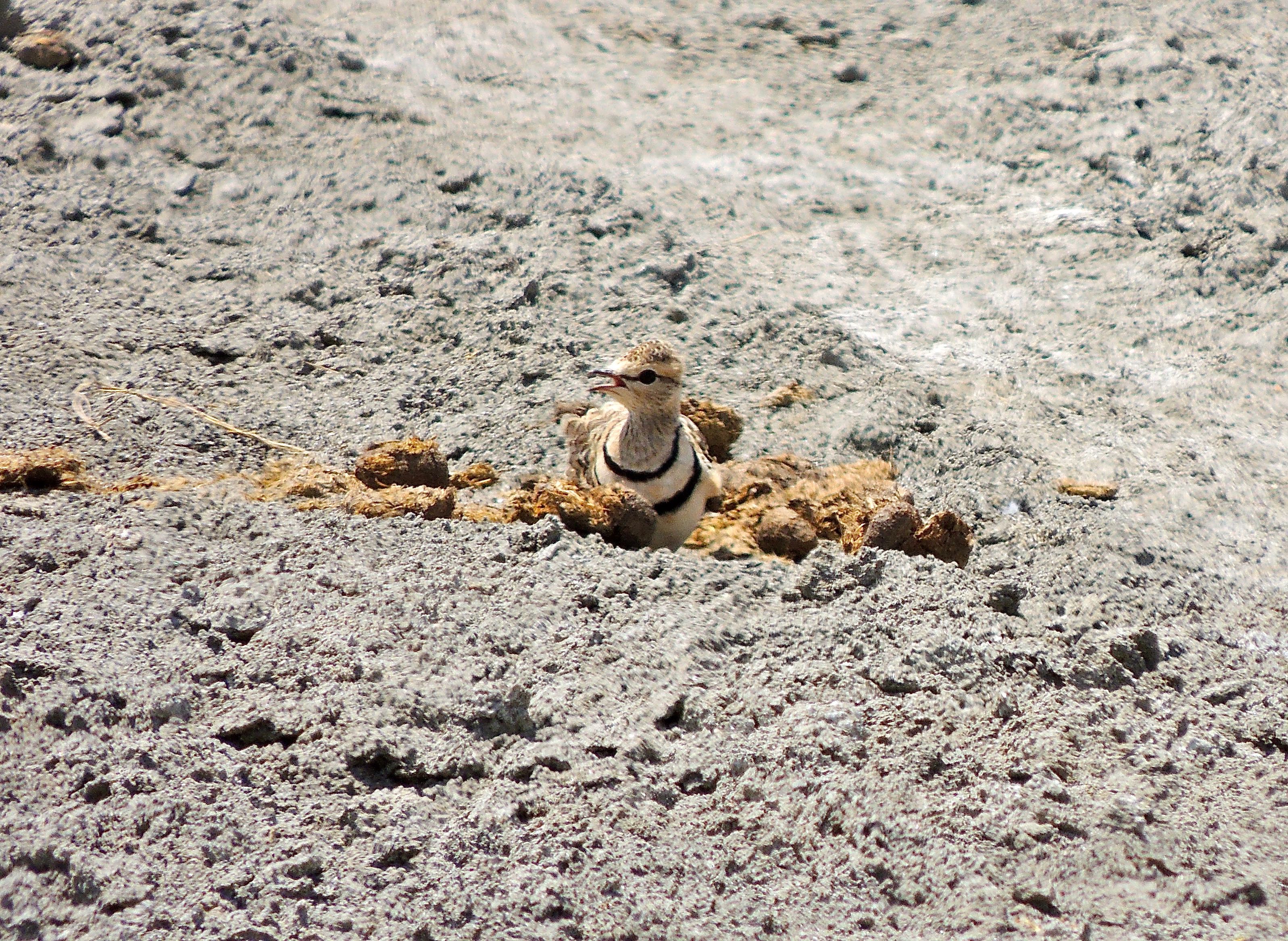 Double-banded Courser - Photo by William Young
Double-banded Courser - Photo by William Young
Plovers and LapwingsPlovers were seen and heard in good numbers on the trip. The count for Crowned Lapwings was 472 on 12 days, but there could have been more. Around our camp at Ndutu, we estimated 420 from March 2 through 4. They have a loud rasping call that reminded me of the related Masked Lapwing in Australia, and we heard it frequently after the sun set when we could not see the birds. They are brown with a white belly and a black-and-white head pattern that makes them appear to wear a white crown. They stand very tall. We saw more than 700 Blacksmith Lapwings, who are a lovely combination of black, white, and gray. At Dindira Swamp, I heard their distinctive tink-tink-tink call that sounds like a lightweight hammer hitting a small anvil. On the section of the trip from the Serengeti to Ngorongoro, we saw 95 Black-winged Lapwings. We had close looks at them at Ngorongoro, and we could see the red eyering, which is diagnostic for separating this species from the similar Senegal Lapwing, whose eyering is yellowish. On our trip to Lake Victoria, we saw eight Long-toed Lapwings, who are lovely. The head and throat are white. They have a bold red eyering and a red bill whose front third is black. The crown, neck, and breast are black, the back is brown, and the belly is white. Their long legs are red, and the bird appears somewhat delicate. In the same general area, we saw three Spur-winged Plovers fly over. Their plumage has a complex black, white, and brown pattern, and they have a black head. At Kilombero, we saw a pair of White-headed Lapwings fly over. They have distinctive black shoulders and black wingtips in flight. In the Serengeti, we saw an African Wattled Lapwing, whose wattles are shorter than those of the Masked Lapwing in Australia. They make the bird look as if it is wearing a fake blond mustache. It is brown, with a streaked cheek and throat.
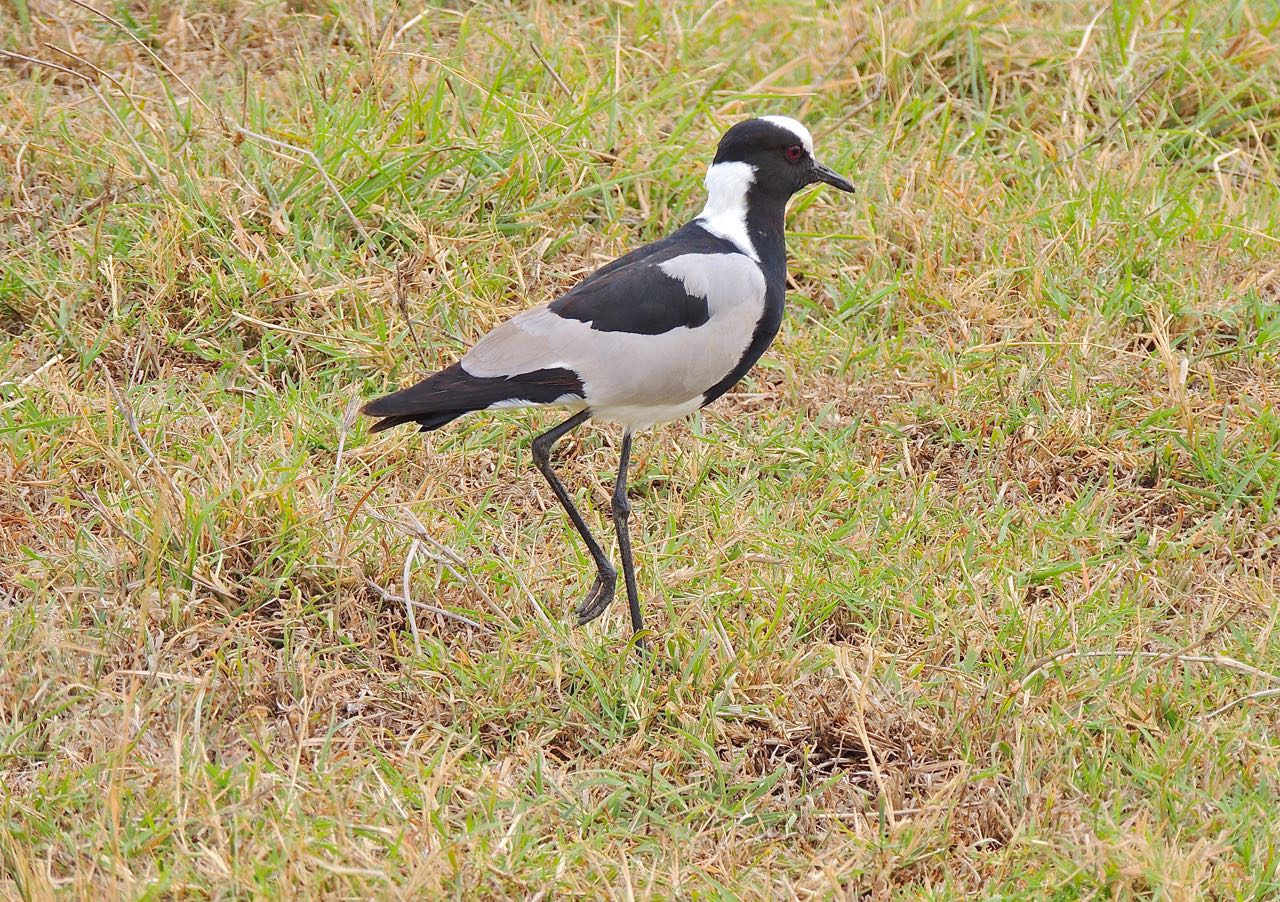 Blacksmith Lapwing - Photo by William Young
Blacksmith Lapwing - Photo by William Young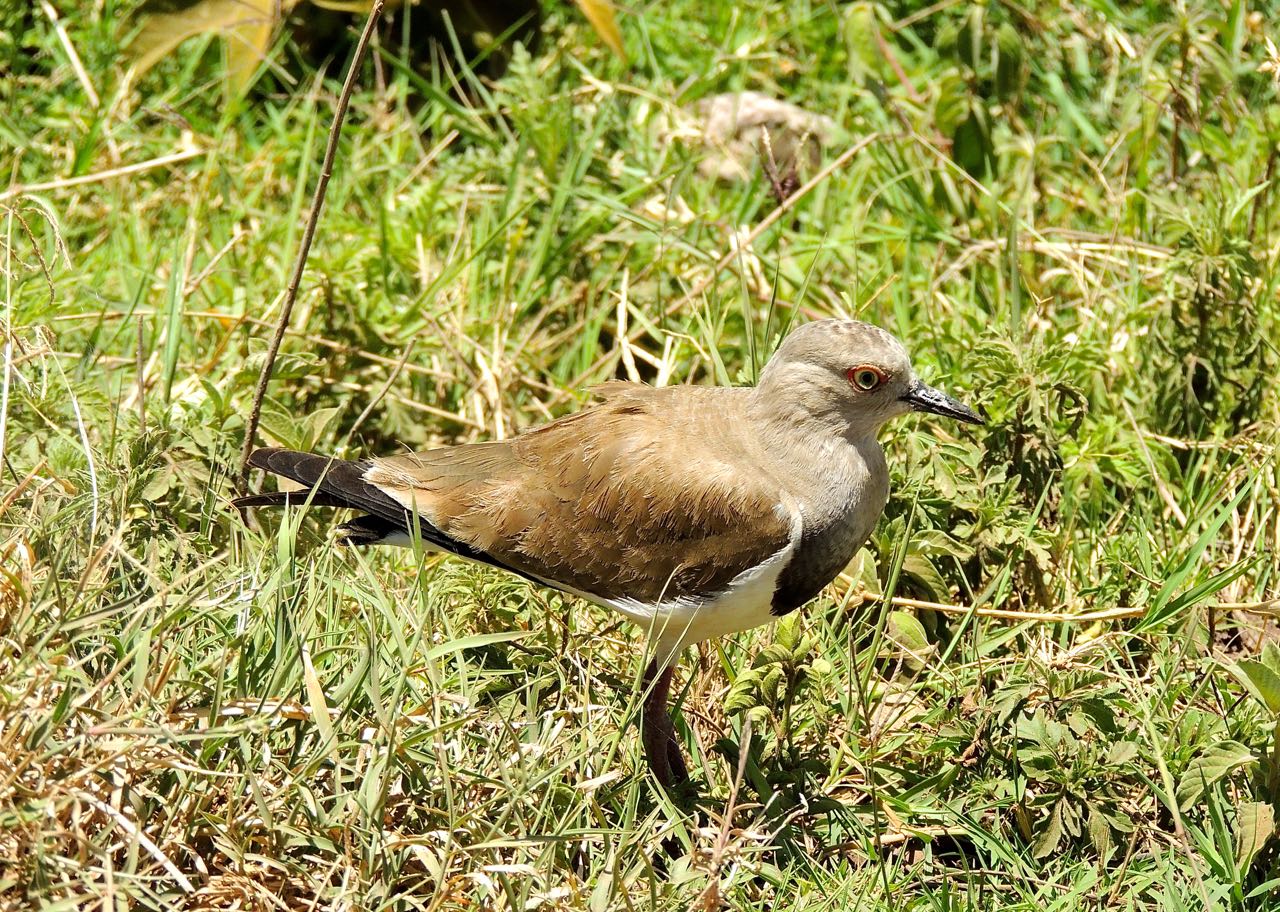 Black-winged Lapwing - Photo by William Young
Black-winged Lapwing - Photo by William Young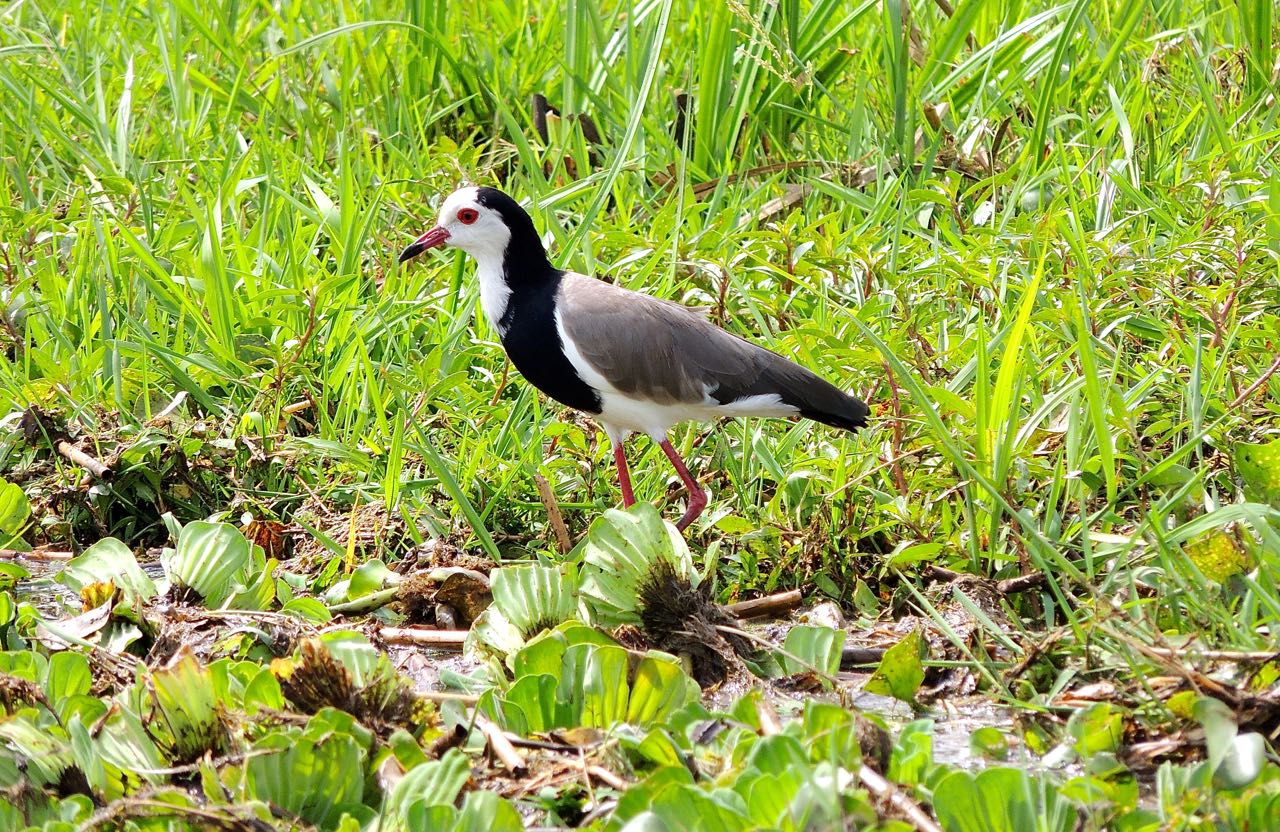 Long-toed Lapwing - Photo by William Young
Long-toed Lapwing - Photo by William Young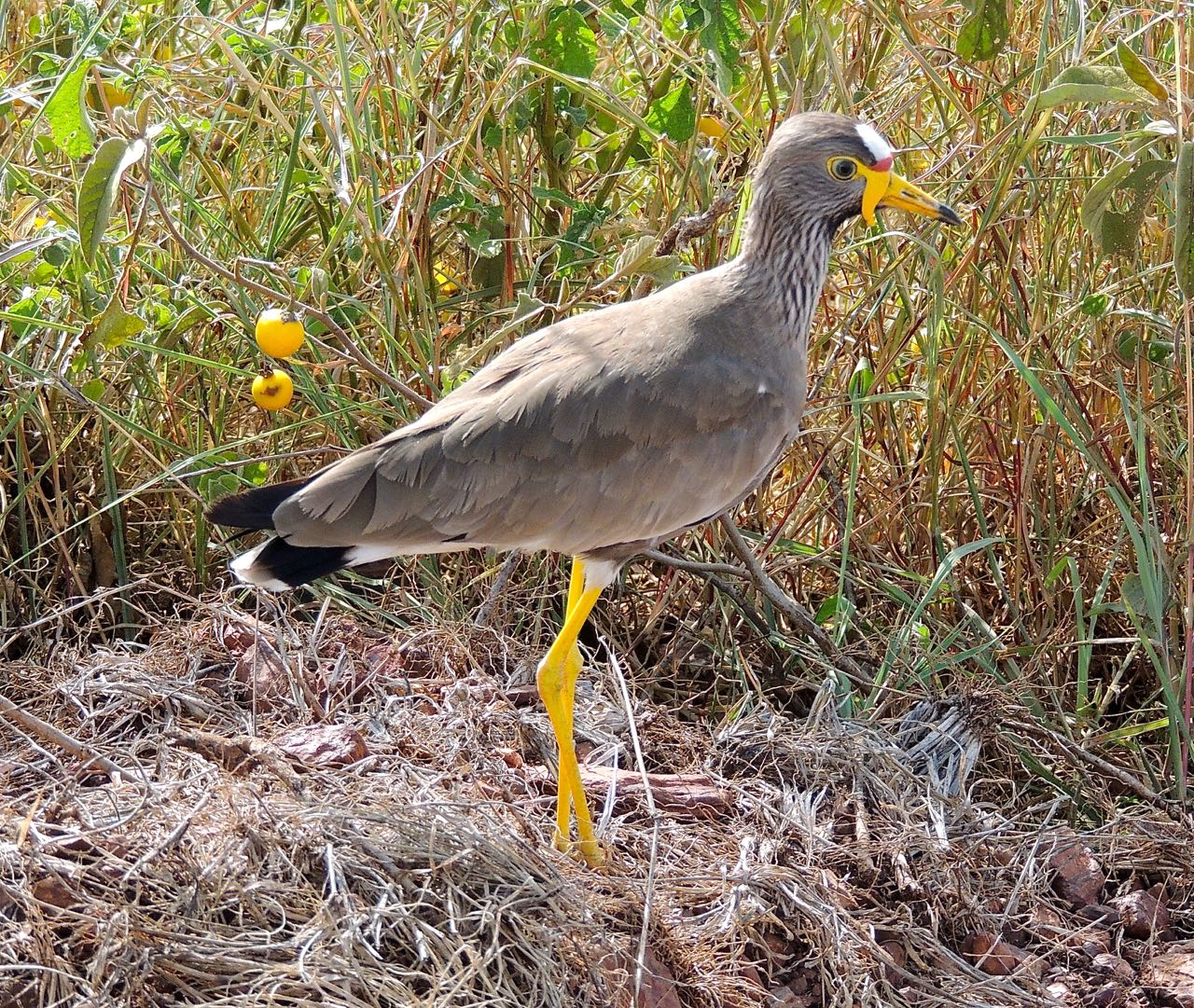 African Wattled Lapwing - Photo by William Young
African Wattled Lapwing - Photo by William YoungThe other plovers we saw were smaller. We saw a Grey Plover in Dar es Salaam, which is the same species as the Black-bellied Plover. We saw a couple of Greater Sand Plovers at Ndutu, who resemble the slightly smaller Lesser Sand Plover. Martin saw a Lesser at the Arusha lakes that I did not. We saw 13 Common Ringed Plovers on three days. We saw them in Dar es Salaam, Ndutu, and near the Momela campsite. They reminded me of Semipalmated Plovers, who are in the same genus. We saw 16 Three-banded Plovers, who are oddly named. They have only two black bands on the breast, separated by a white band. They look distinctive, with a red eyering, gray face, and white crown. We saw them at our Momela campsite, as well as in the Serengeti and at Ndutu.
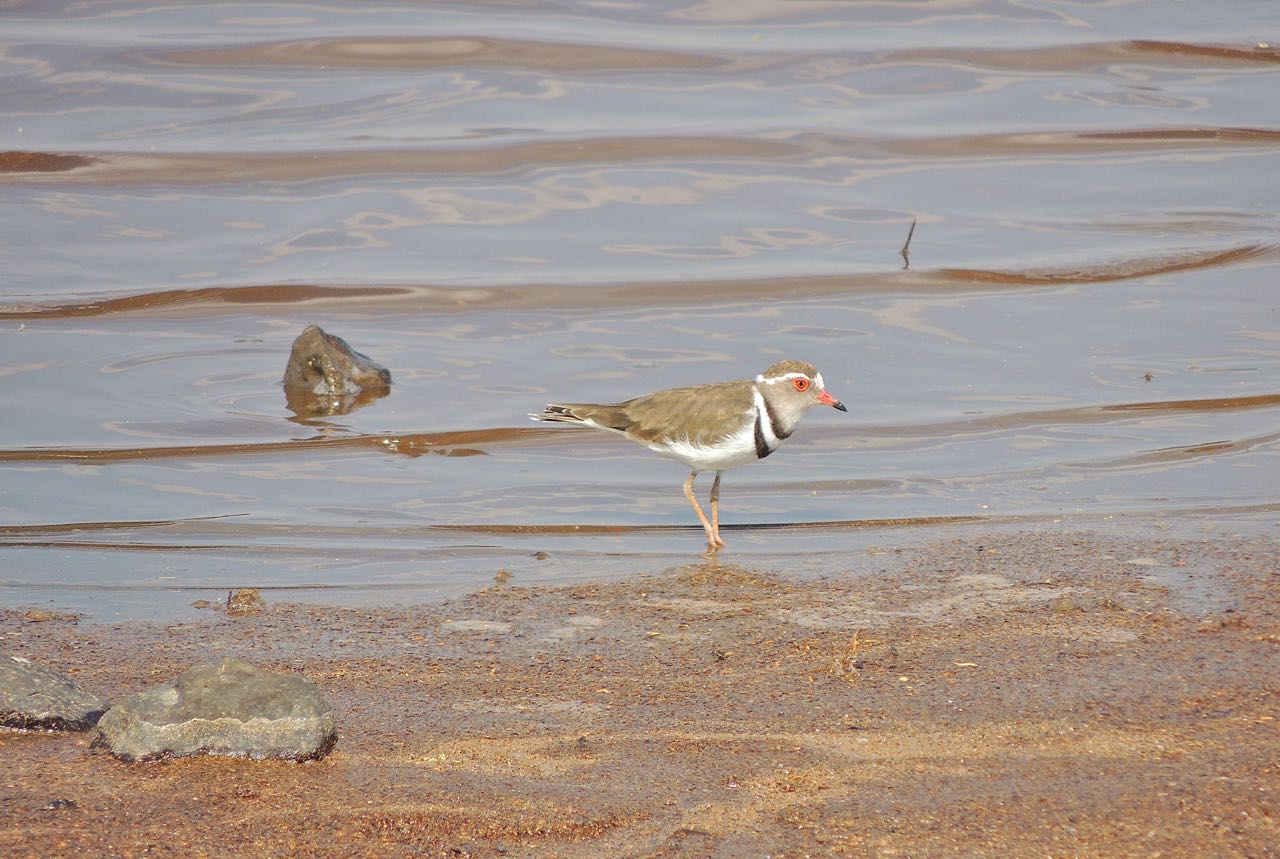 Three-banded Plover - Photo by William Young
Three-banded Plover - Photo by William Young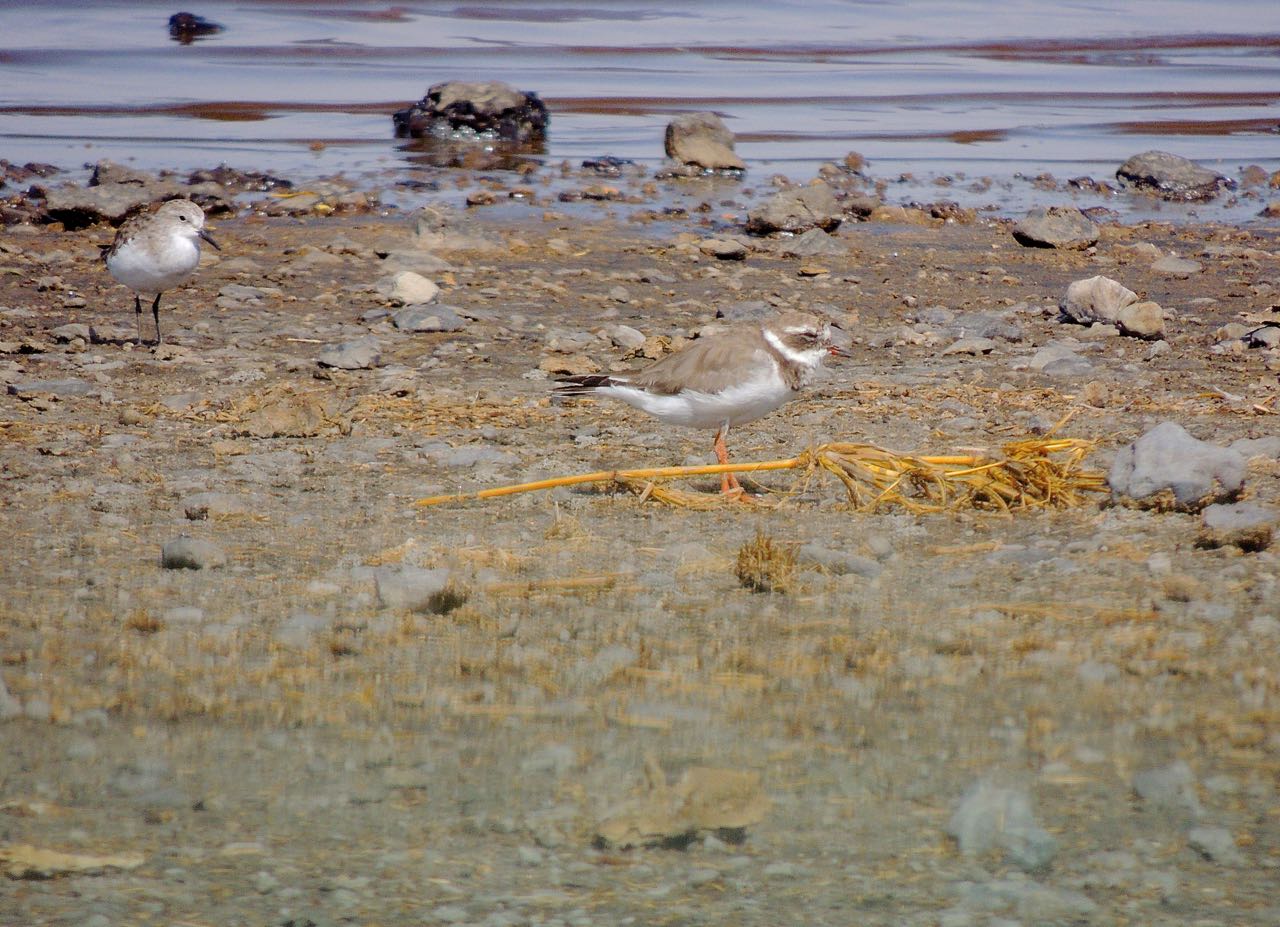 Little Stint and Common Ringed Plover - Photo by William Young
Little Stint and Common Ringed Plover - Photo by William Young
Sandpipers and AlliesOf the 17 species we saw in this family, we saw more than eight of only four species. I saw an estimated 111 Ruffs. At Ndutu, we saw about 70 relatively close together. They are easy to identify, with their light head and salmon legs. There were another 30 in the lakes around Arusha. We saw 19 Little Stints in five areas, with never more than a half dozen on any given day. They were the smallest shorebird we saw, and they also have a light head. We saw 55 Wood Sandpipers on eight days, with ten each day on the lakes around Arusha and 20 at Dindira Swamp. They look similar to a Solitary Sandpiper and have yellowish legs. The Green Sandpiper was much less common than the Wood. We saw only three on two days. They have darker legs than the Wood and less spotting on the back. They teeter when feeding. The Common Sandpiper lived up to its name and was relatively easy to identify. We saw 21 on seven days. They have a plain brown back and white underparts, with a white slash near the shoulder. They remind me a lot of Spotted Sandpipers without spots (Spotless Sandpipers?) because they constantly bob their tails. I saw one who was standing on a wood railing near the Hippopotamus Pool at Mikumi. Another one in the Serengeti was feeding on the backs of hippos.
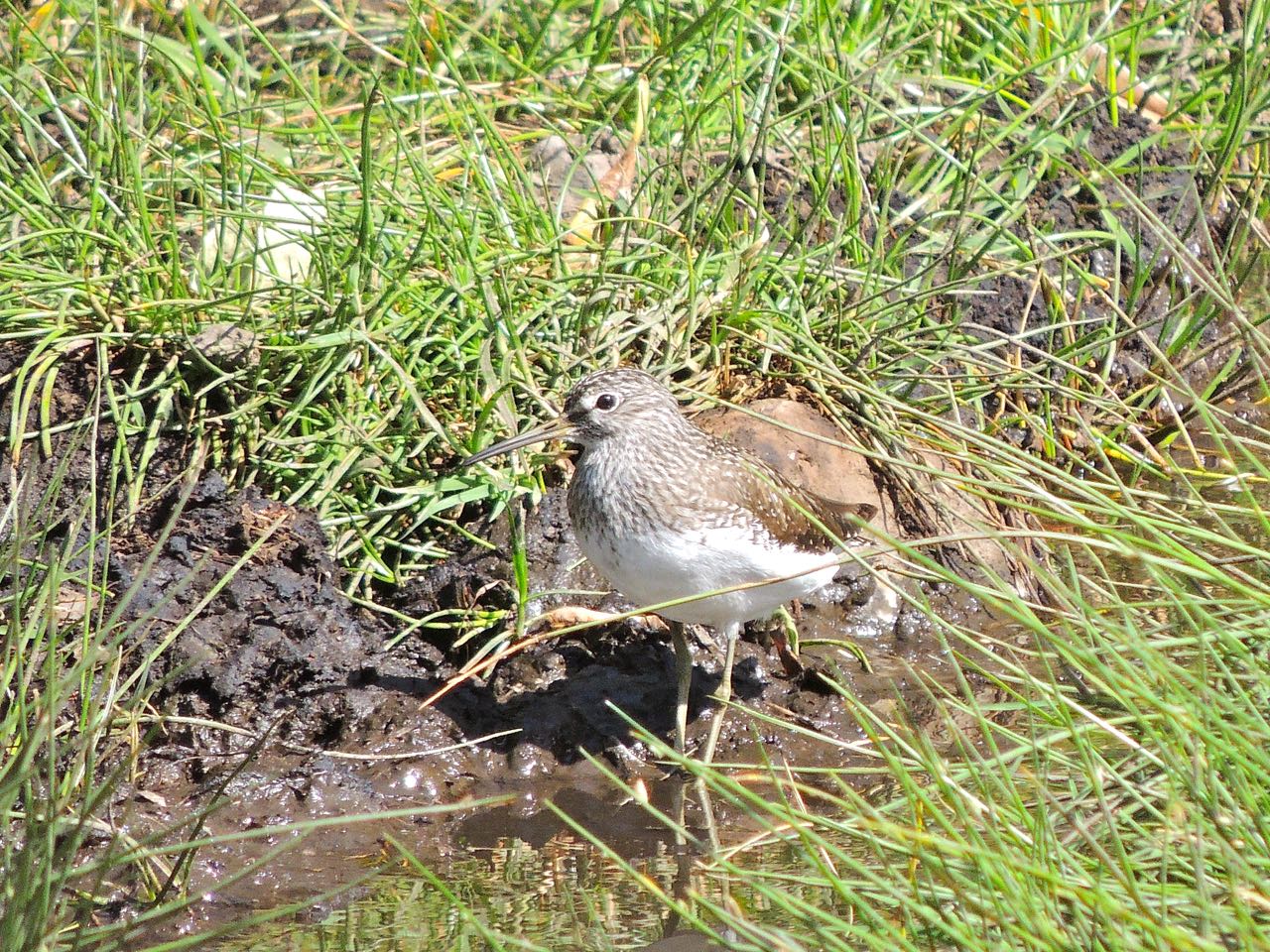 Green Sandpiper - Photo by William Young
Green Sandpiper - Photo by William Young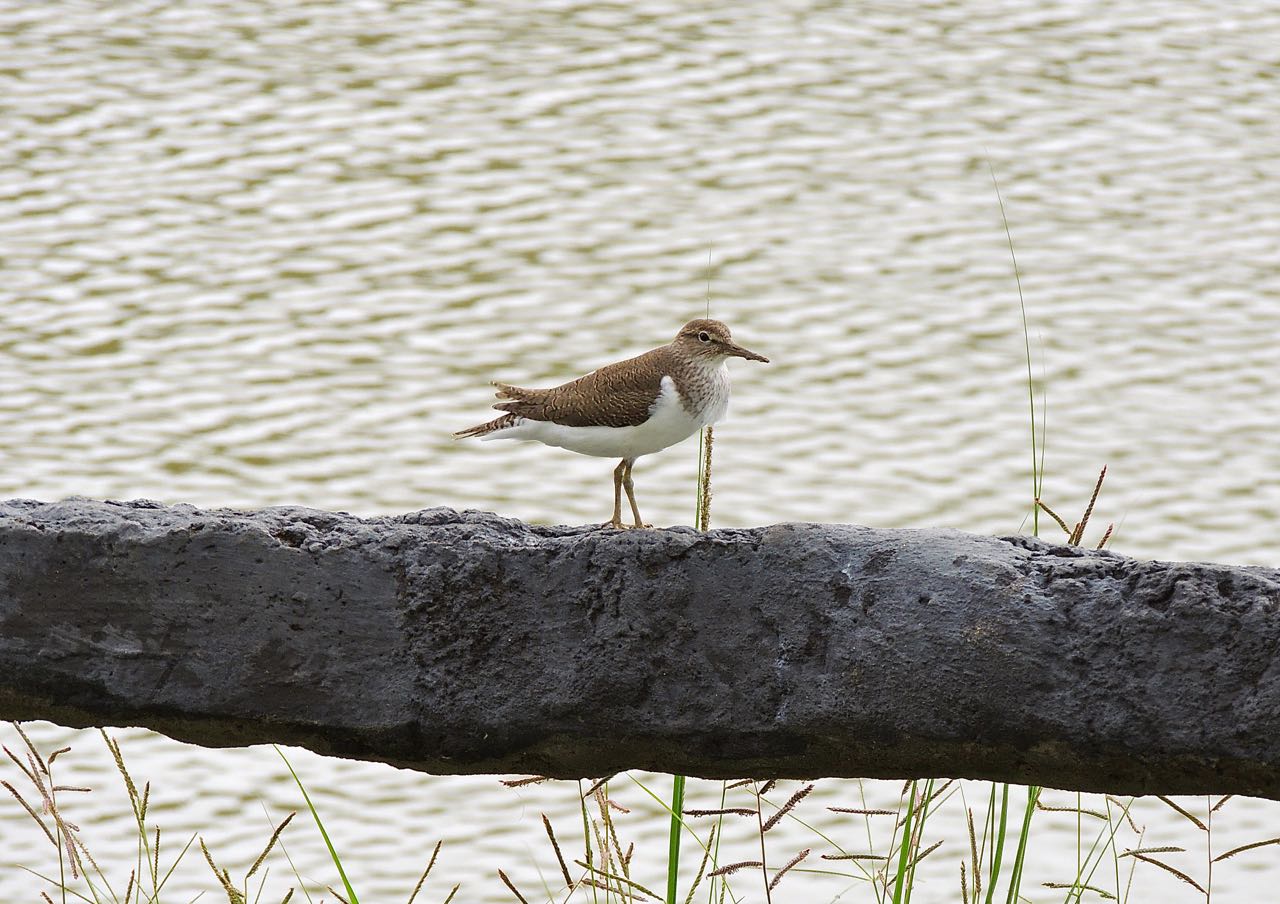 Common Sandpiper - Photo by William Young
Common Sandpiper - Photo by William YoungWe saw a lot of the shorebirds on our outing in Dar es Salaam. We saw a couple of Eurasian Curlews, four Whimbrels, a Black-tailed Godwit, two Common Redshanks, a Sanderling, and three Terek's Sandpipers. The Terek's have upcurved bills and walk quickly while crouched, like Groucho Marx. Martin added a Ruddy Turnstone to the list, because he discovered one in a photo he had taken of other shorebirds we were looking at. We saw one Marsh Sandpiper in the Serengeti, who reminded me of a Lesser Yellowlegs. It was feeding in an area where a large number of zebras were bathing. We saw eight Common Greenshanks in two places, and they resembled Greater Yellowlegs. I saw six Curlew Sandpipers on three days, including five in the Arusha lakes. We saw an African Snipe in the wetland area near our tents at Momela, and I could see the snipe stripes. Later in the day, we saw a Common Snipe on the shore of one of the Arusha lakes. The two snipe species look alike, but the Common has more white on its belly.
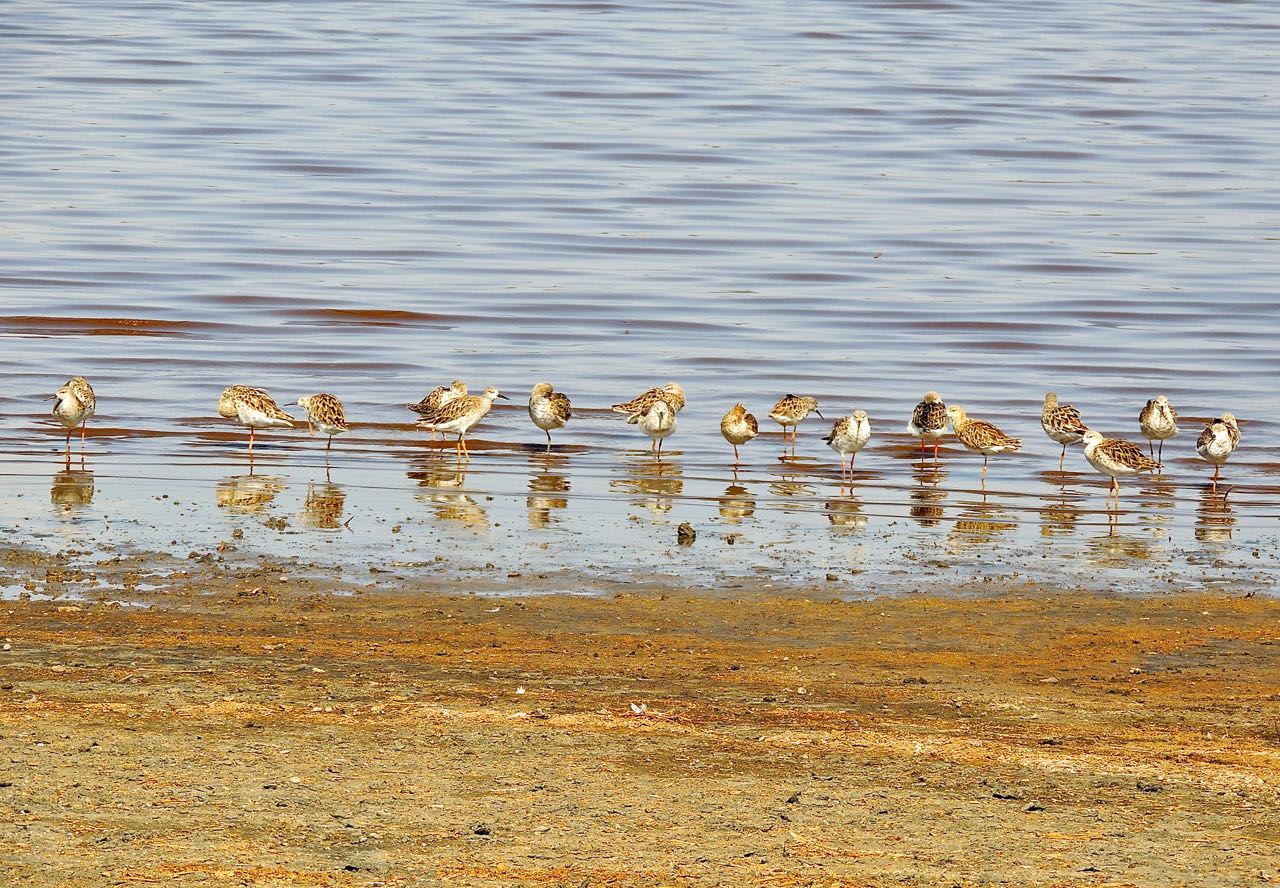 Ruffs - Photo by William Young
Ruffs - Photo by William Young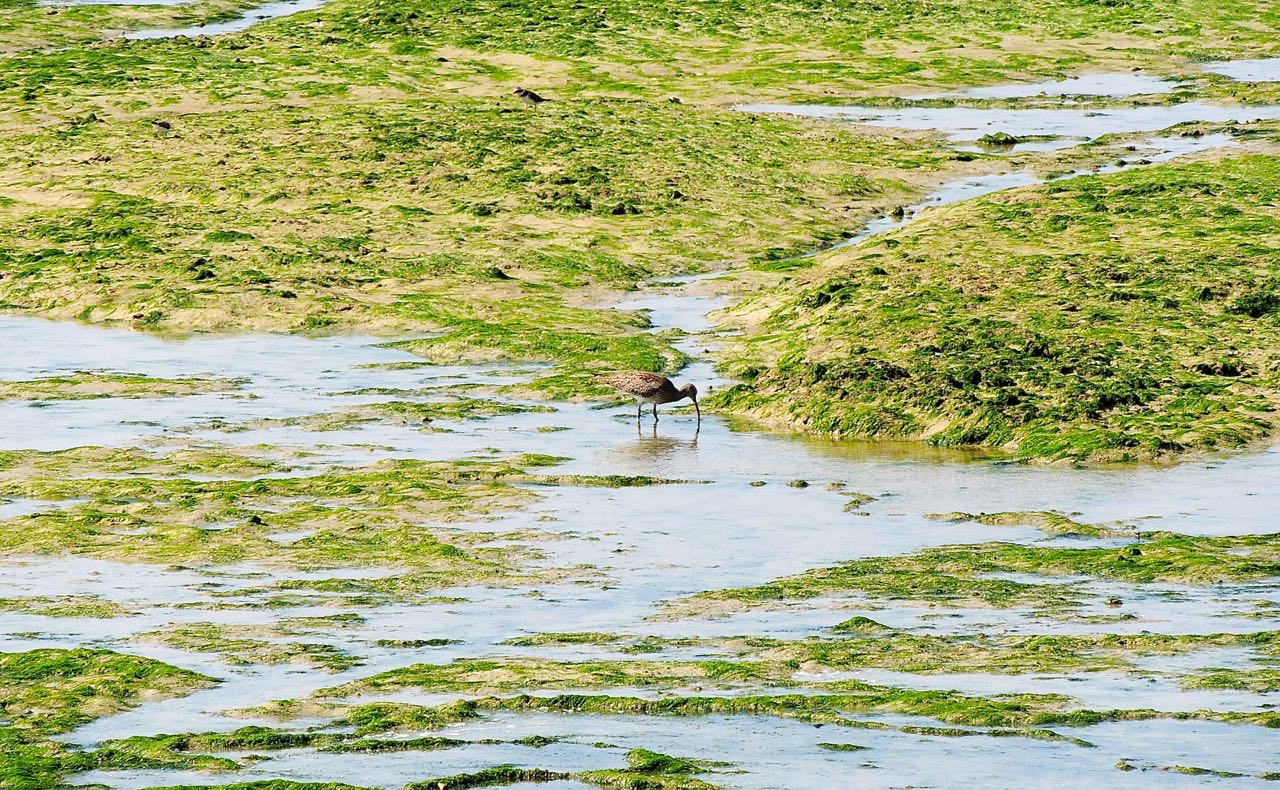 Eurasian Curlew - Photo by William Young
Eurasian Curlew - Photo by William Young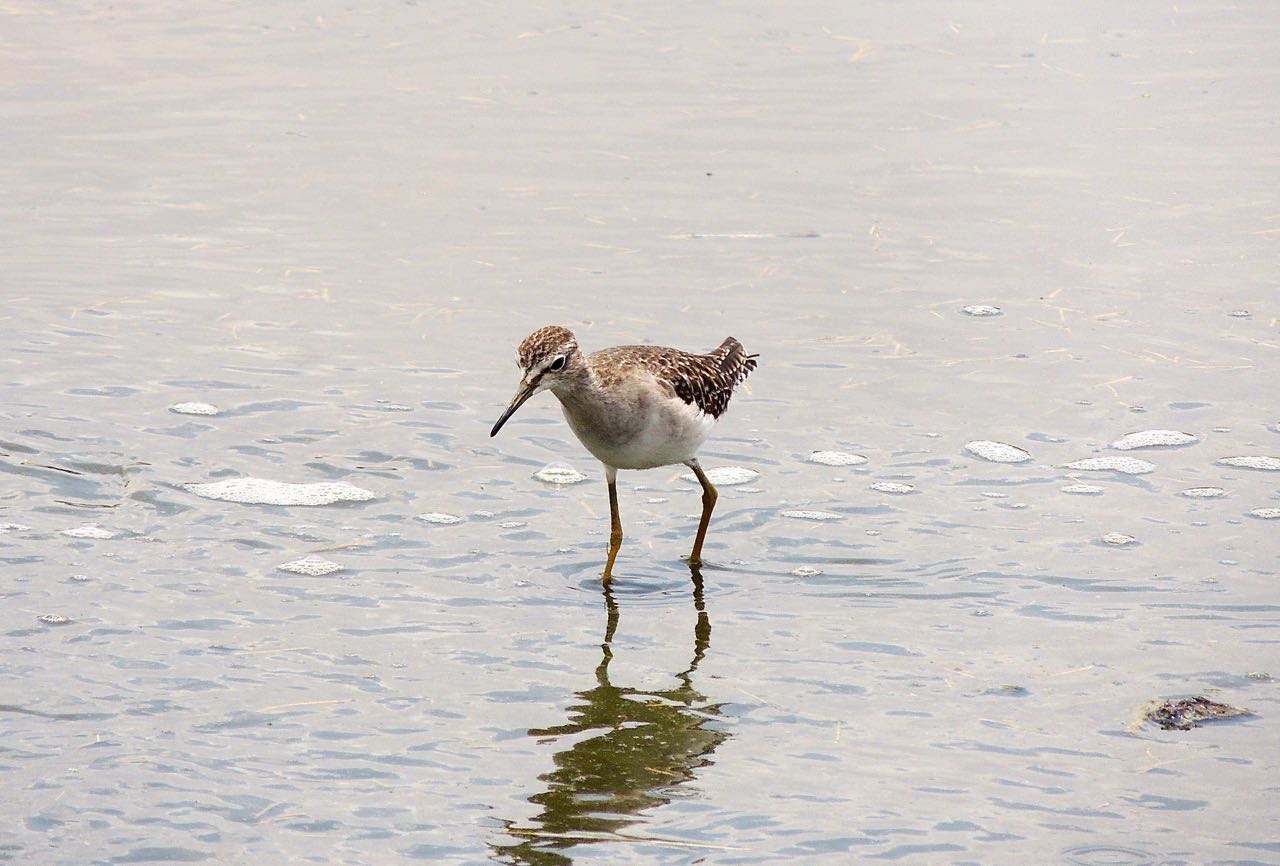 Marsh Sandpiper - Photo by William Young
Marsh Sandpiper - Photo by William Young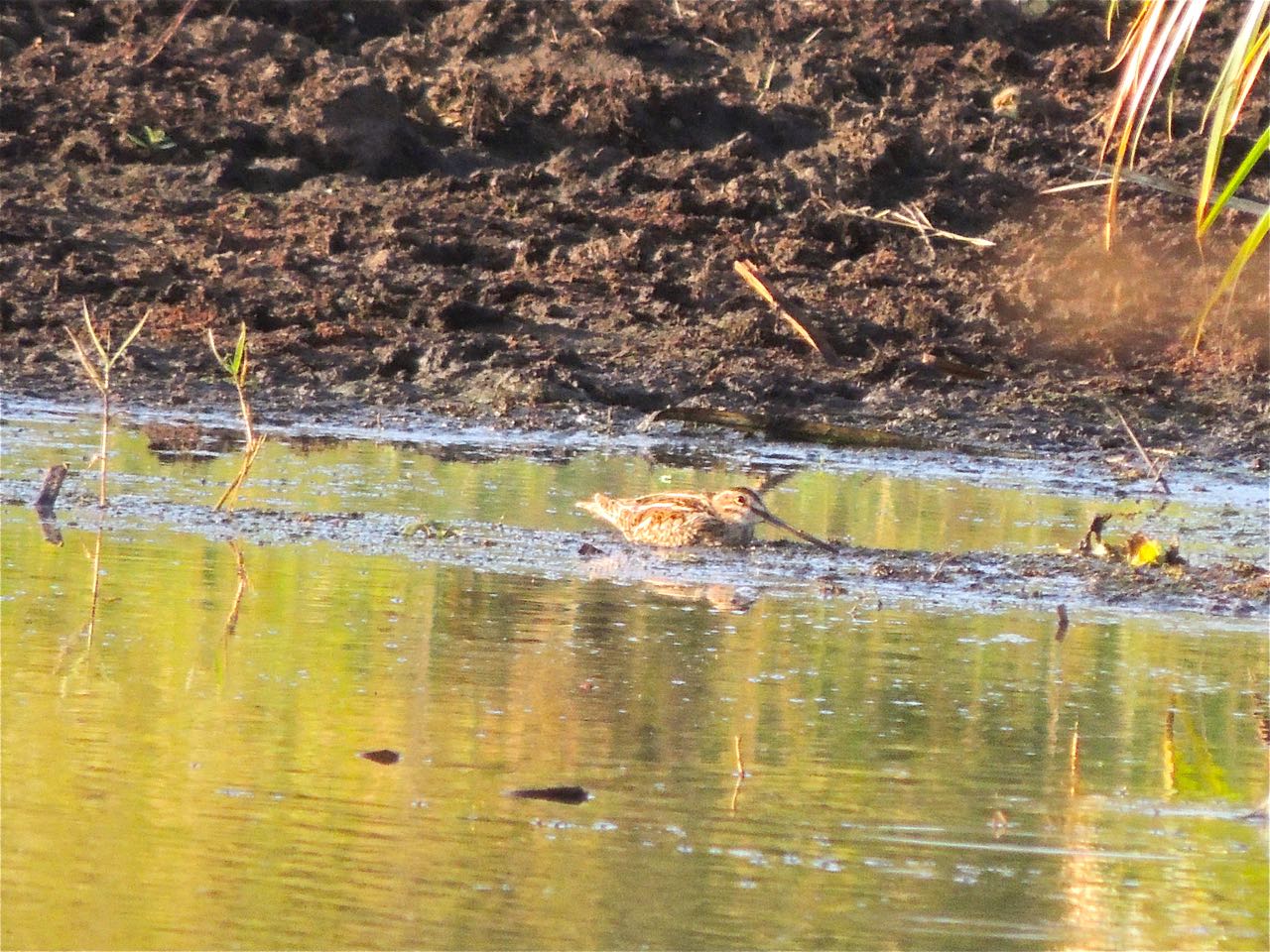 African Snipe - Photo by William Young
African Snipe - Photo by William Young
Gulls and TernsThe only gulls we saw were four Lesser Black-backed Gulls in Dar es Salaam. The same day, we saw a Caspian Tern and two Saunder's Terns, who look like Least Terns. Martin saw distant Sooty Terns in the same area which I did not see. We saw five Gull-billed Terns there and two when we were at Lake Victoria. On the Lake Victoria boat trip, a Gull-billed Tern appeared to be walking on water. It was standing on a water hyacinth, an introduced species that has caused problems for people who fish the waters. On that same boat trip, we saw an estimated 200 White-winged Terns. Many were not in breeding plumage, and their plumage looked gray rather than white. Some were in breeding plumage, and their body looked blackish. We saw about 20 Whiskered Terns on each of three days — in Dar es Salaam, around Serenity, and at Tarangire. We also saw a few White-winged Terns at Serenity.
SandgrouseSandgrouse look like inflated doves with large eyes and short legs, and they are well camouflaged. We saw a pair of Chestnut-bellied Sandgrouse on the desert road to Ndutu. The male has patterned feathers on his back to blend in with the scenery. The breast is light chestnut, with a thin black vertical line serving as a border on each side. In the same desert, we saw flocks of flying Yellow-throated Sandgrouse and some on the ground. The male is plain, with a tan throat and a black neckband. Some of the brown wing feathers are edged in black, while others are edged in rufous. The female lacks the black neckband, but her feathers have a blizzard of white-and-golden spots. Both sexes have a gray bill and white supercilium. We saw Black-faced Sandgrouse at our Naitola campsite. They have the busiest looking plumage of the three sandgrouse, with a black face, a black-edged white border to the breast, both a black and a white supercilium, and what look like broken concentric circles on the wings. The bill is reddish, and they have bare yellow skin around the eyes.
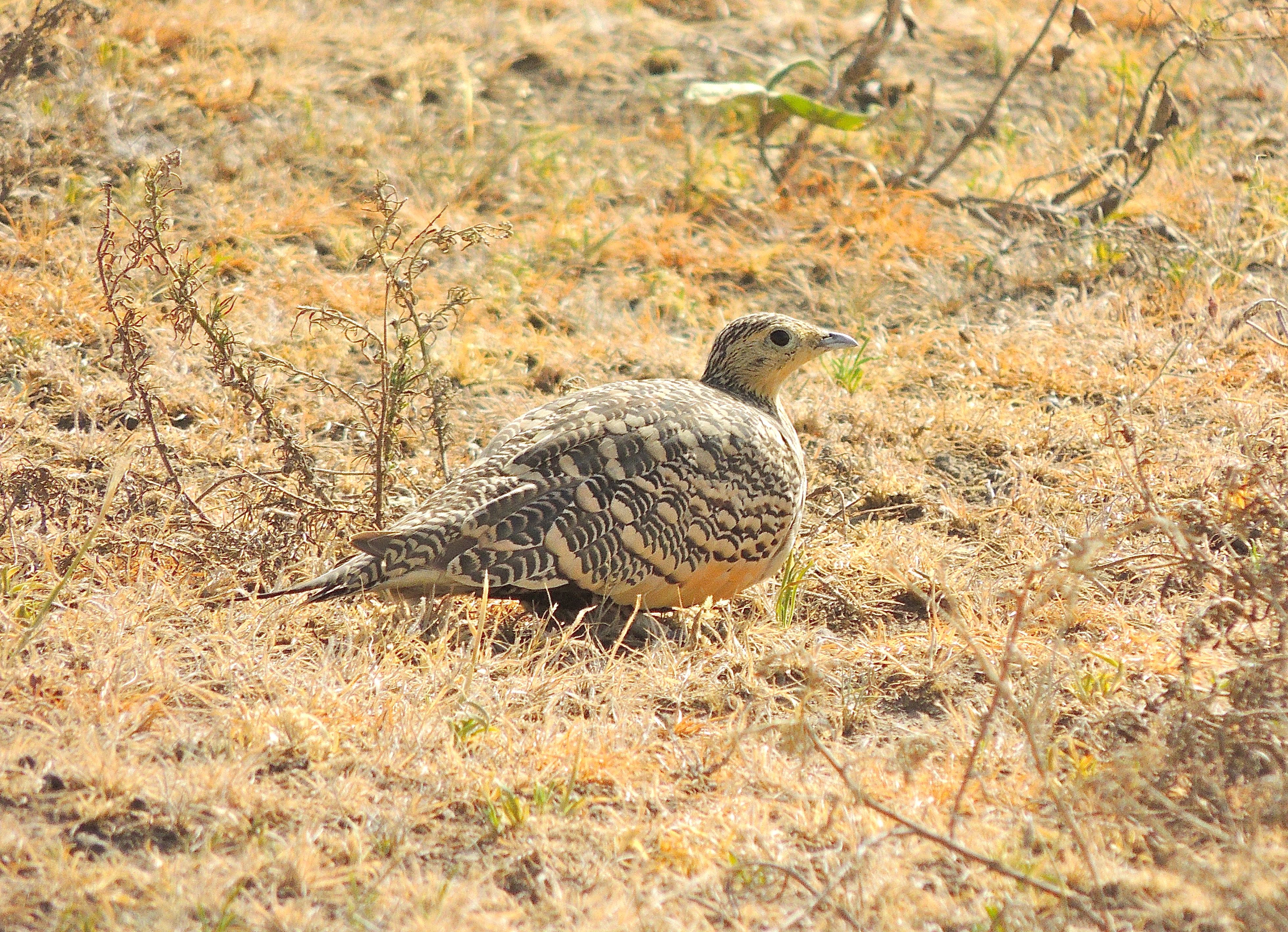 Chestnut-bellied Sandgrouse - Photo by William Young
Chestnut-bellied Sandgrouse - Photo by William Young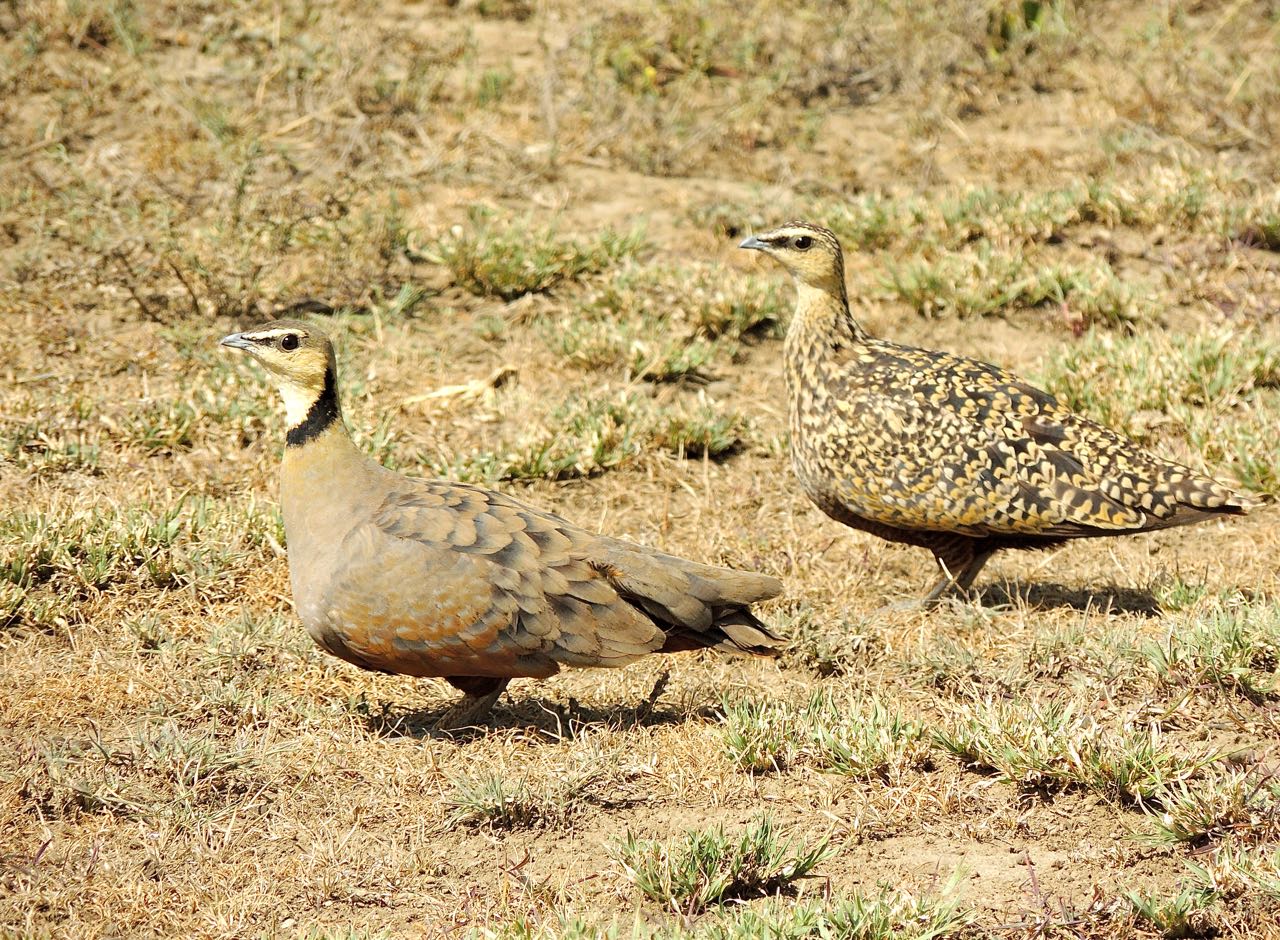 Yellow-throated Sandgrouse - Photo by William Young
Yellow-throated Sandgrouse - Photo by William Young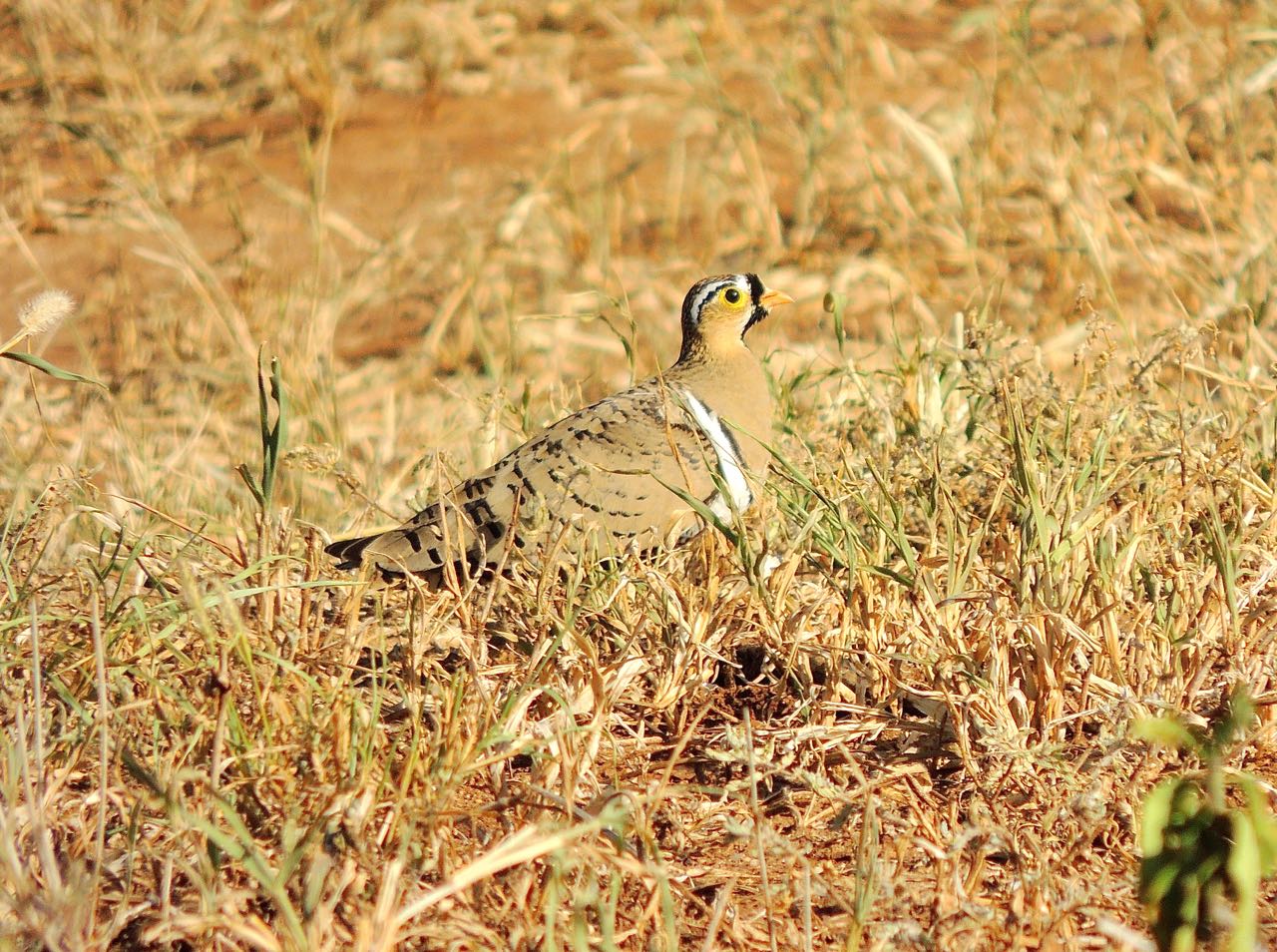 Black-faced Sandgrouse - Photo by William Young
Black-faced Sandgrouse - Photo by William Young
Pigeons and DovesPigeons and doves were an almost constant presence during the trip. We saw about 100 Rock Pigeons, who are an introduced species. They were mostly in the cities and towns we drove through. We saw eight Speckled Pigeons on six days. They are a little bigger than a Rock Pigeon, and I had a good look at one perched on a roof at Serenity. They have a gray head and underparts, rufous on the throat, and a big patch of red skin around the eye. The eye is yellow-orange, and the bill is dark, with a whitish knob near the base. We saw 18 African Green-Pigeons on seven days. Some were at Ngorongoro, our campsite at Dindira, Amani, and Udzungwa. They have a lime-green breast, red feet, and an orange bill with a gray tip. They did not seem especially active. We saw an estimated 161 African Mourning Doves and 118 Ring-necked Doves, but there could have been a lot more. We heard them in many places, even when we were not seeing them. In one of the BBC's Tweet of the Day features, David Attenborough describes the call of the Collared Dove, who is in the same genus, as resembling a bored football fan chanting U-nit-ed, U-nit-ed. The Ring-necked Dove sounds similar. Bernard said that some people in Africa think the three-note call sounds like Work Hard-er, Work Hard-er, while others think the bird says Drink Lag-er, Drink Lag-er. The call of the Mourning Dove is longer and more complicated. It sounded to me like Don't read Philosophy or Don't do Arithmetic. The two species look alike, with the Mourning Dove having red skin around its pale eye, and the Ring-necked having a dark eye not surrounded by red skin. The Ring-necked is a bit smaller, but both have a grayish head, a wine-colored breast, and a black band on the neck. The African Mourning Dove does not closely resemble the Mourning Dove in North America. At the Mbalageti Luxury Camp, I saw two Mourning Doves fighting, which is not consistent with their (incorrect) peaceful image. I saw an active Mourning Dove nest in the Karibu Heritage House gardens.
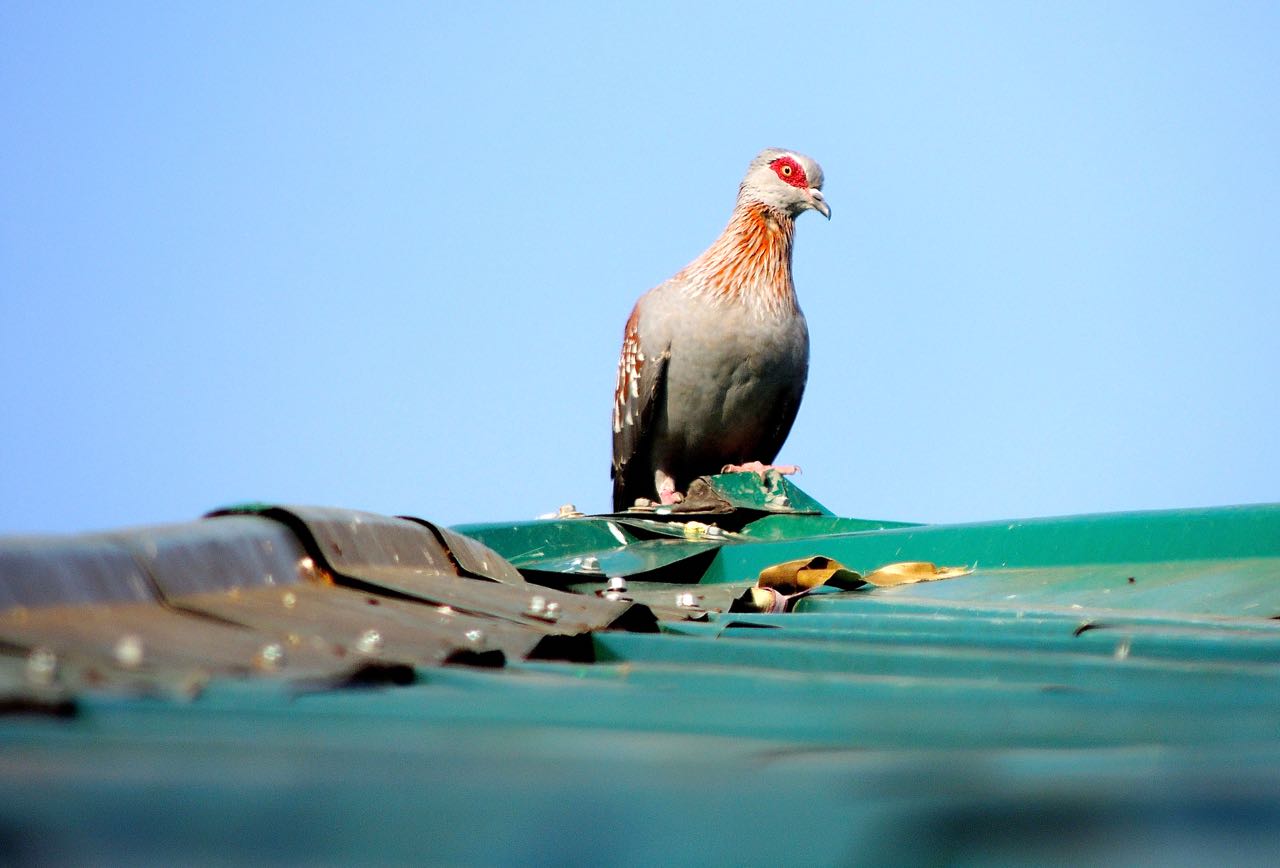 Speckled Pigeon - Photo by William Young
Speckled Pigeon - Photo by William Young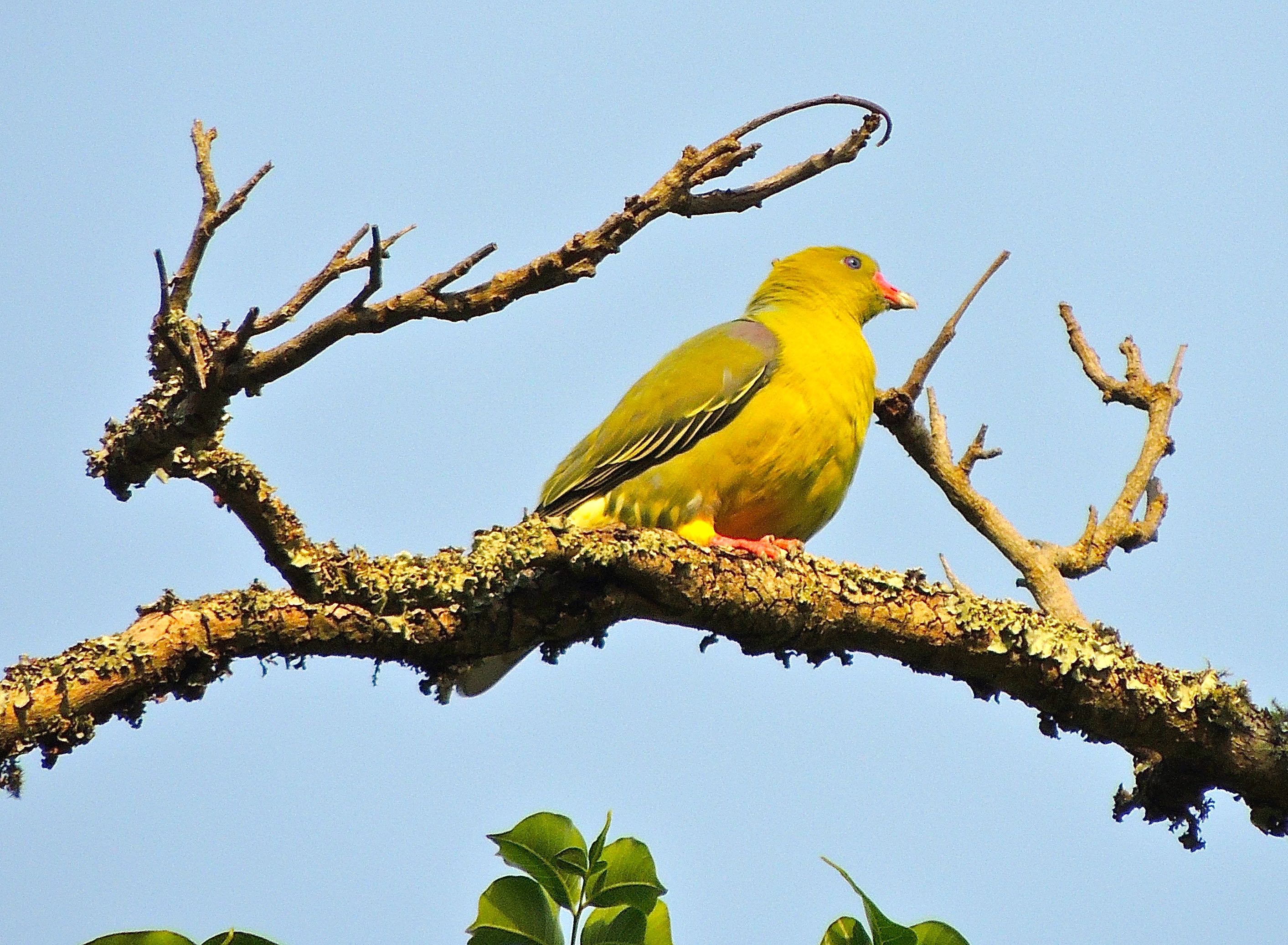 African Green-Pigeon - Photo by William Young
African Green-Pigeon - Photo by William Young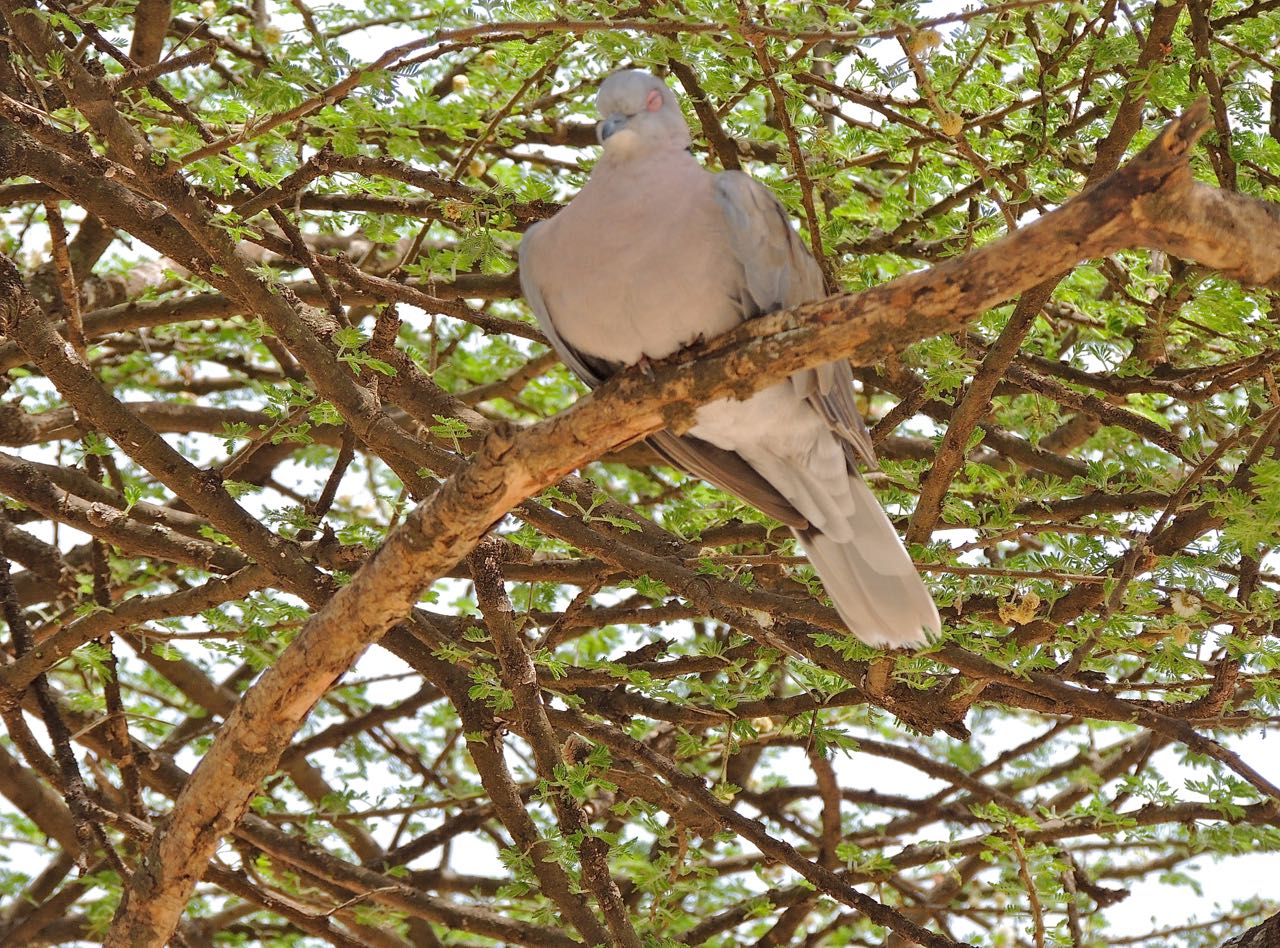 African Mourning Dove - Photo by William Young
African Mourning Dove - Photo by William Young Ring-necked Dove - Photo by William Young
Ring-necked Dove - Photo by William YoungLaughing Doves have a wine-colored head and breast and a brown back. They look as if they have a strip of fine black mesh just below their throat. We saw some drinking at a waterhole at Ndutu National Park, and they looked a lot smaller than the light-headed Ring-necked Doves who were next to them. We also saw about 10 at Tarangire. We saw about 100 Emerald-spotted Wood-Doves during our days at Mkomazi and the Dindira campsite. They look like a slightly larger Common Ground-Dove from North America, with green rather than black flecks on the wings. Their outer wings show rufous when they fly. The Blue-spotted Wood-Dove looks similar, but has cobalt blue spots instead of emerald. We saw only three on the trip. One was on the road to Amani, and the other two were at Udzungwa. We saw a half a dozen Tambourine Doves, with five at Amani. They have a plain brown back and white underparts, but there does not seem to be a clear demarcation between the two colors. The edge on the breast is ragged, and there is white over the bill and eyes. The Namaqua Dove might be the prettiest dove I saw. We saw 17 on 7 days, mostly in pairs. I got close to a pair on the ground near our tents at Ndutu. They are small and delicate. The male has a black forehead, throat, and breast. The black stops at the front of the eyes, and the rest of the head is gray. The base of the bill is purple, and the outer half is yellow. They have red feet and a long pointed tail. The female is much plainer.
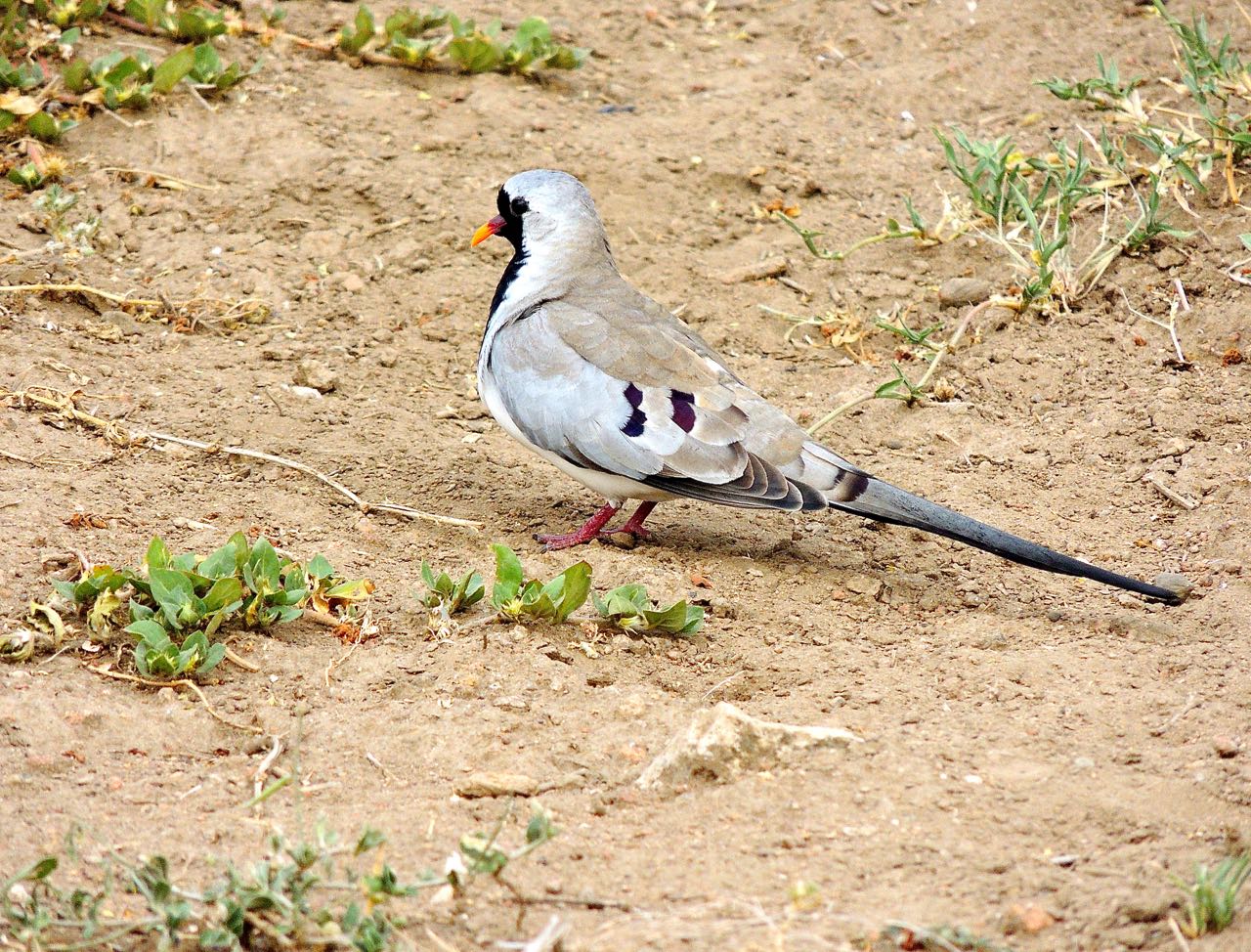 Namaqua Dove Male - Photo by William Young
Namaqua Dove Male - Photo by William Young
Old World ParrotsWe saw four species of parrots, but they were not common. We saw two dozen Fischer's Lovebirds the day we went to the park at Ndutu, and I had good looks at them in the trees near the entrance to the park. They are small and green, with yellow breast feathering that gradually morphs into red when it reaches the area above the bright red bill. They also have a huge white eyering that makes them look very observant. The birds had a nest in a tree in the parking lot. It had holes on both sides of the tree so that the birds could enter or exit on either side. We saw Yellow-collared Lovebirds at our Naitola Campsite. They are similar to the Fischer's, but have a black hood, which makes the red bill and white eyering stand out more. They seemed shy and rarely allowed a close approach. Their flight is fast, and they vocalize when flying. The only four Brown Parrots we saw were in the Serengeti. They have brown wings, a green belly, and a yellow slash on their wings. They are larger than the lovebirds. We saw Red- (Orange-) bellied Parrots around our Naitola campsite and around Mkomazi. We saw a pair up in a tree. The male is gray on the head, throat, and wings, with an orange breast and a green belly. The female looks the same, but without the orange breast. We saw the birds in good light, and they look misnamed on two counts: the color on the male is clearly orange rather than red, and it is on his breast rather than his belly. Both the male and female have beady red eyes and a gray bill.
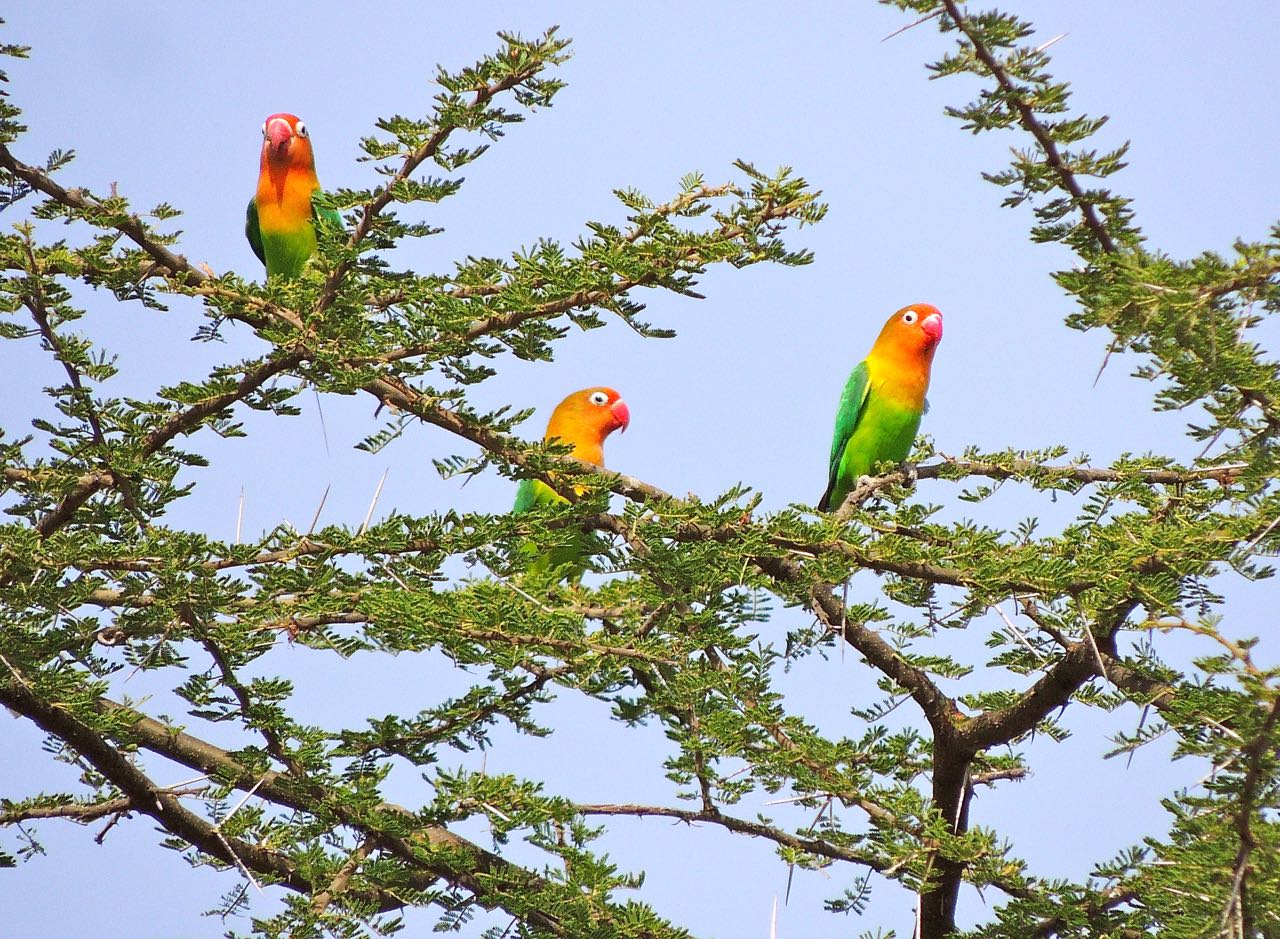 Fischer's Lovebirds - Photo by William Young
Fischer's Lovebirds - Photo by William Young Fischer's Lovebird Nest - Photo by William Young
Fischer's Lovebird Nest - Photo by William Young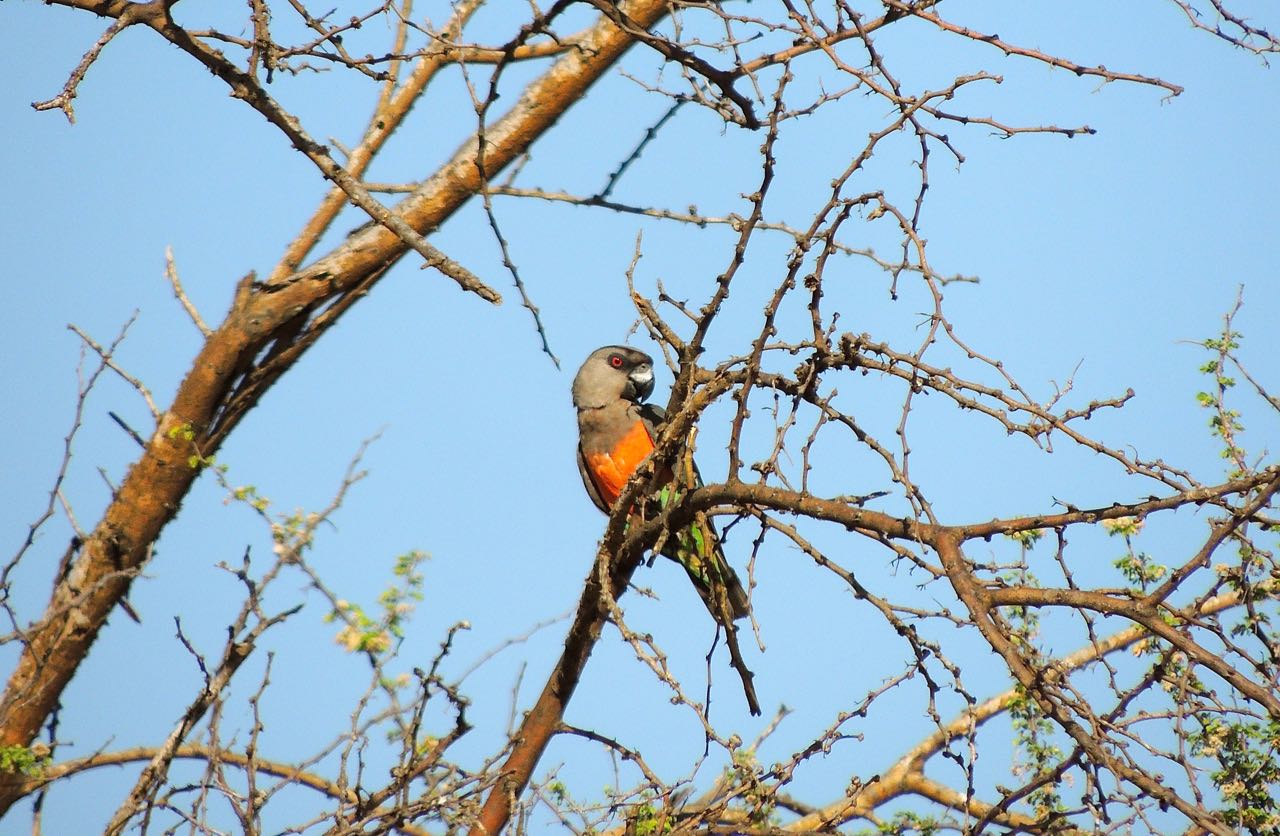 Red-bellied Parrot - Photo by William Young
Red-bellied Parrot - Photo by William Young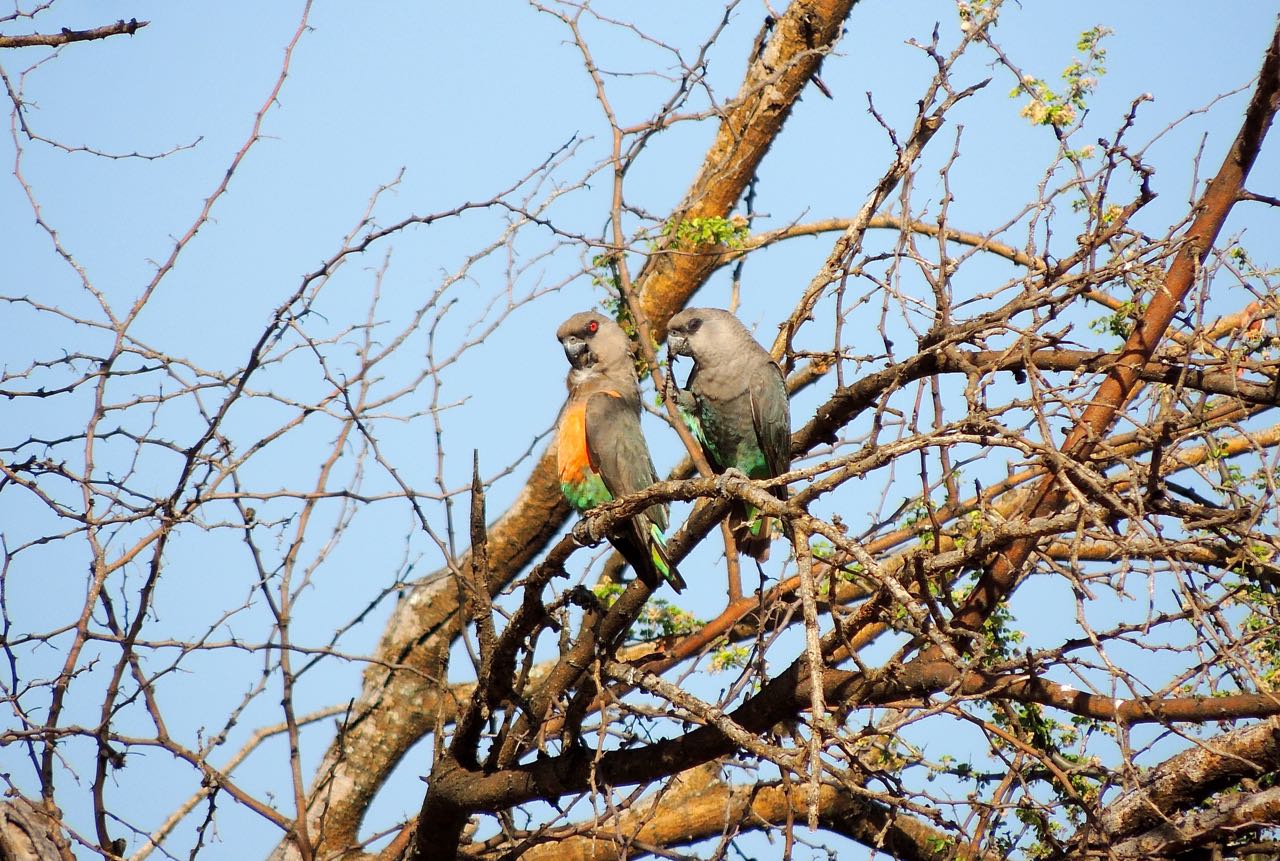 Red-bellied Parrots - Photo by William Young
Red-bellied Parrots - Photo by William Young
TuracosThe turacos and go-away-birds were among my favorites on the trip. We saw a Hartlaub's Turaco near our campsite at Momela. It is a large green bird with a blue cap and blue wings. When the bird flies, its wings show large areas of bright red. I had a better look at a perched Fischer's Turaco in Amani. It has a green forehead, throat, and breast, a reddish crest, a red eyering, a white line both above and below the eyes which meet in a vee near the bill. Its belly, wings, and undertail are blue. I could see a trace of red on the folded wing. We heard Fischer's Turacos at Udzungwa but did not see them. Turacos are stunning birds, and they are among the only green birds in the world whose feathers contain green pigment.
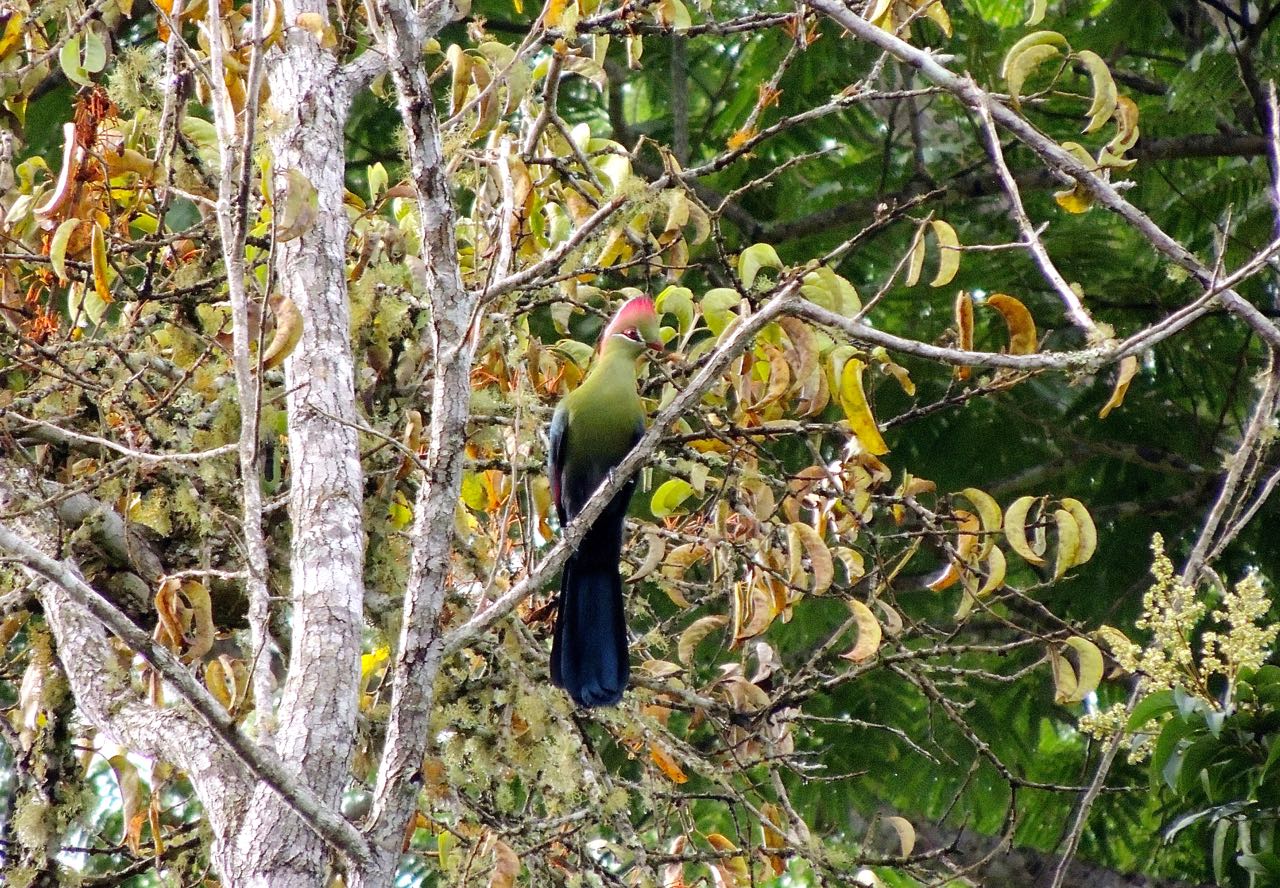 Fischer's Turaco - Photo by William Young
Fischer's Turaco - Photo by William YoungLess attractive but more endearing are the go-away-birds. We saw many Bare-faced Go-away-birds at the Mbalageti Luxury Camp, including right outside my cabin. They are large gray birds, with buff underparts, a black face, and a white head, neck, and breast. Their gray crest is shaped like a helmet worn by the Coldstream Guards in London. Sometimes, they erect the crest when they perch, making them look tall and thin. We saw about 50 White-bellied Go-away-birds at the camp at Naitola. They are mostly gray, with a white belly. They have a ridiculously tall crest that sometimes is erect. They tend to move around a lot and not stay in the same spot for long. They behaved a bit liked mousebirds. One of their common vocalizations is a single note that sounds like a combination of a bleat and a quack. I heard it frequently at Naitola, and it was one of my favorite sounds on the trip.
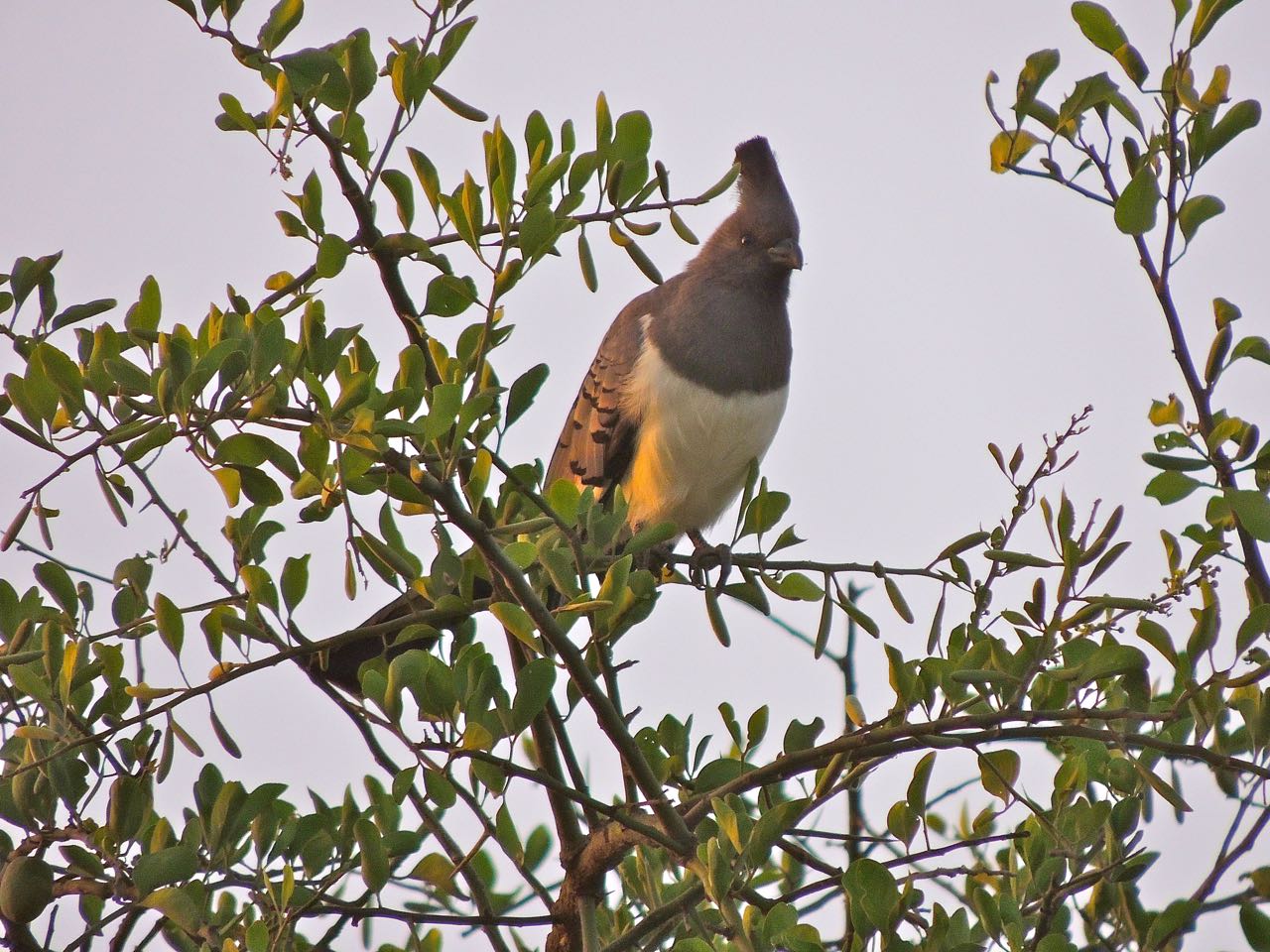 White-bellied Go-away-bird - Photo by William Young
White-bellied Go-away-bird - Photo by William Young
CuckoosCuckoos are stealthy birds. They often perch in an unobtrusive place and take stock of what is going on around them. We saw or heard ten species, but we saw only one or two of six of the species. The most commonly seen and heard species was the White-browed Coucal. We saw 24 on 14 days, and there were probably more around. We had nice looks at them at Ngorongoro and could see the black mask, white throat, white eyebrow, brown back, and black tail. Their neck is black with white streaks. We saw 8 when we were at Hondo Hondo, and there were probably more around. At Mikumi, we saw African Black Coucals, who are mostly black with rufous wings. They had barring on the undertail and in the area next to the rufous on the wings. We saw 6 Klaas's Cuckoos on four days. Three were near our campsite at Ndutu, two were at Tarangire, and one was near the Arusha lakes. The male is green on the back, white below, and faintly barred on the flanks. We saw our only two Diederick Cuckoos on our day in Dar es Salaam. They came down low and flitted in the brushy area next to the road. They are like the Klaas's, but have red eyes and more pronounced barring on the flanks. We saw six African Cuckoos on five days. They closely resemble the Common Cuckoo, with a gray head, gray throat, and barred underparts. We saw a couple at our camp at Naitola, and there was one hanging around my tent at Angalia. At Amani, we saw the slightly smaller Asian Lesser Cuckoo. While walking near our campsite at Ndutu, we saw a Black Cuckoo, who is dark and looks like a falcon when flying. In the same area, we saw a Great Spotted Cuckoo perched on top of a bush. It was an adult, with white spots on its black back, a buff throat, and a long black tail edged in white. At Ngorongoro, we saw a perched Jacobin (Black-and-white) Cuckoo. It was black above and white below, and it appeared to have a narrow white edge on its tail. At Udzungwa, we saw a Levaillant's Cuckoo, who is also black-and-white. It has a slight crest and shows white on the wings in flight.
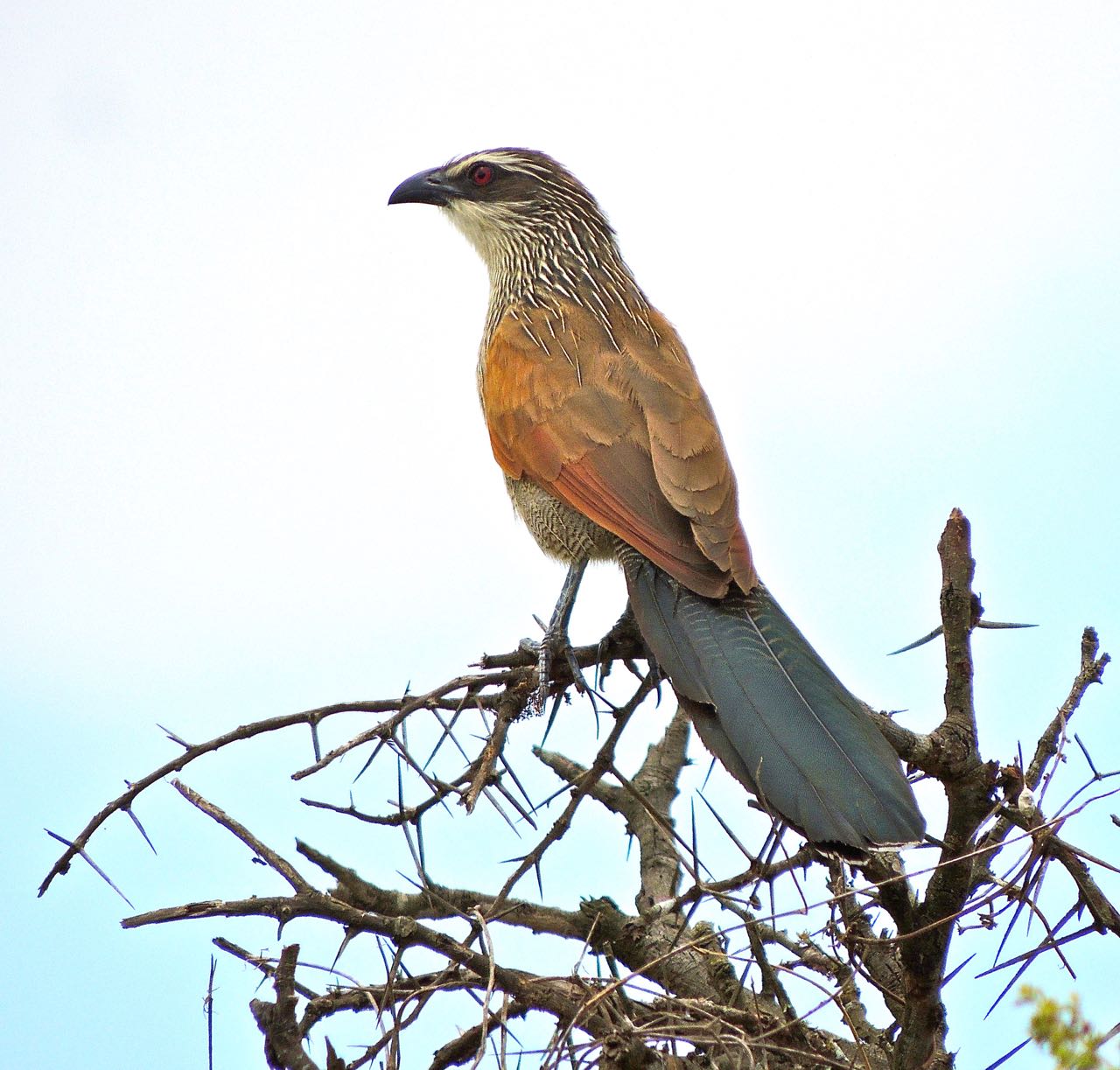 White-browed Coucal - Photo by William Young
White-browed Coucal - Photo by William Young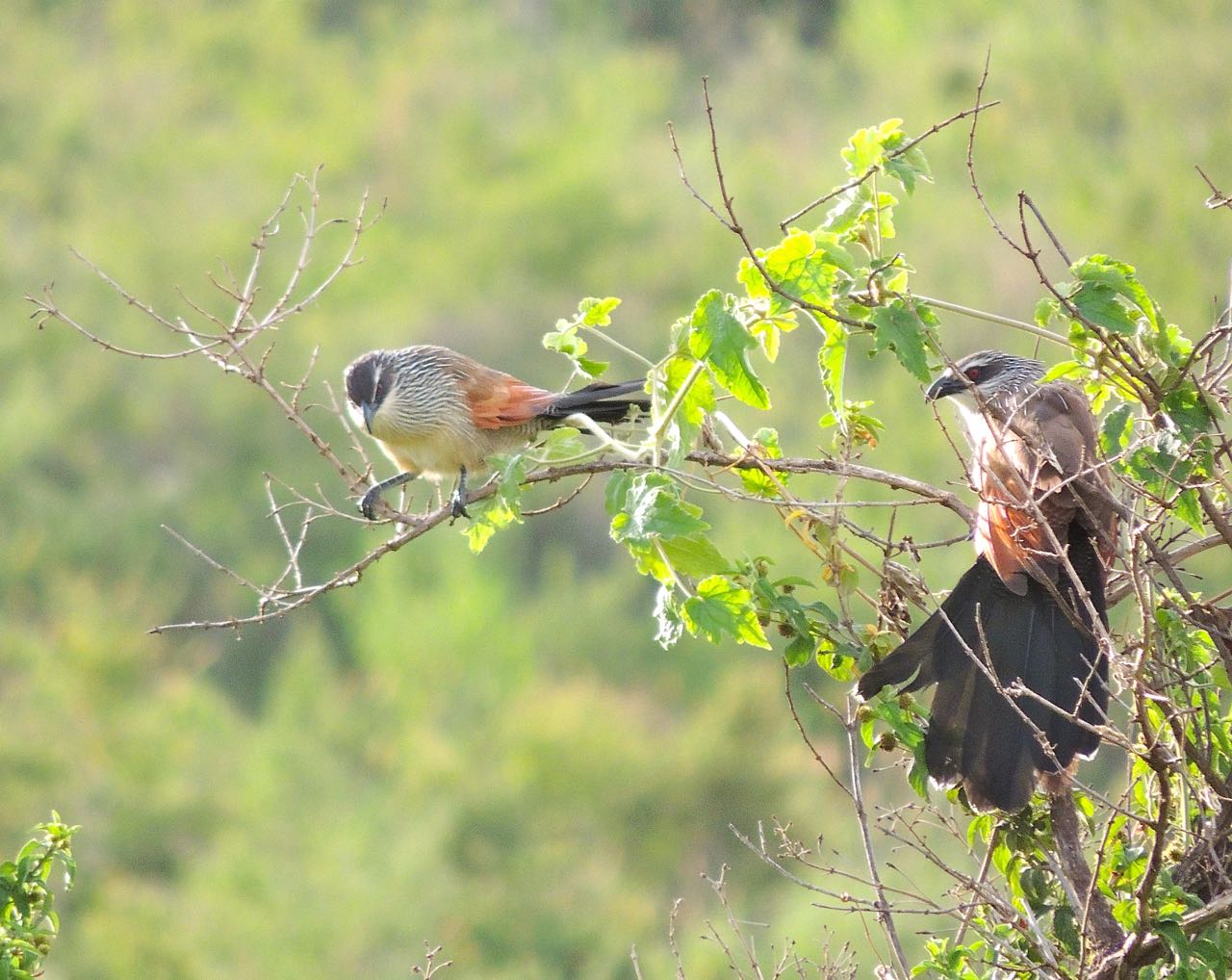 White-browed Coucals - Photo by William Young
White-browed Coucals - Photo by William Young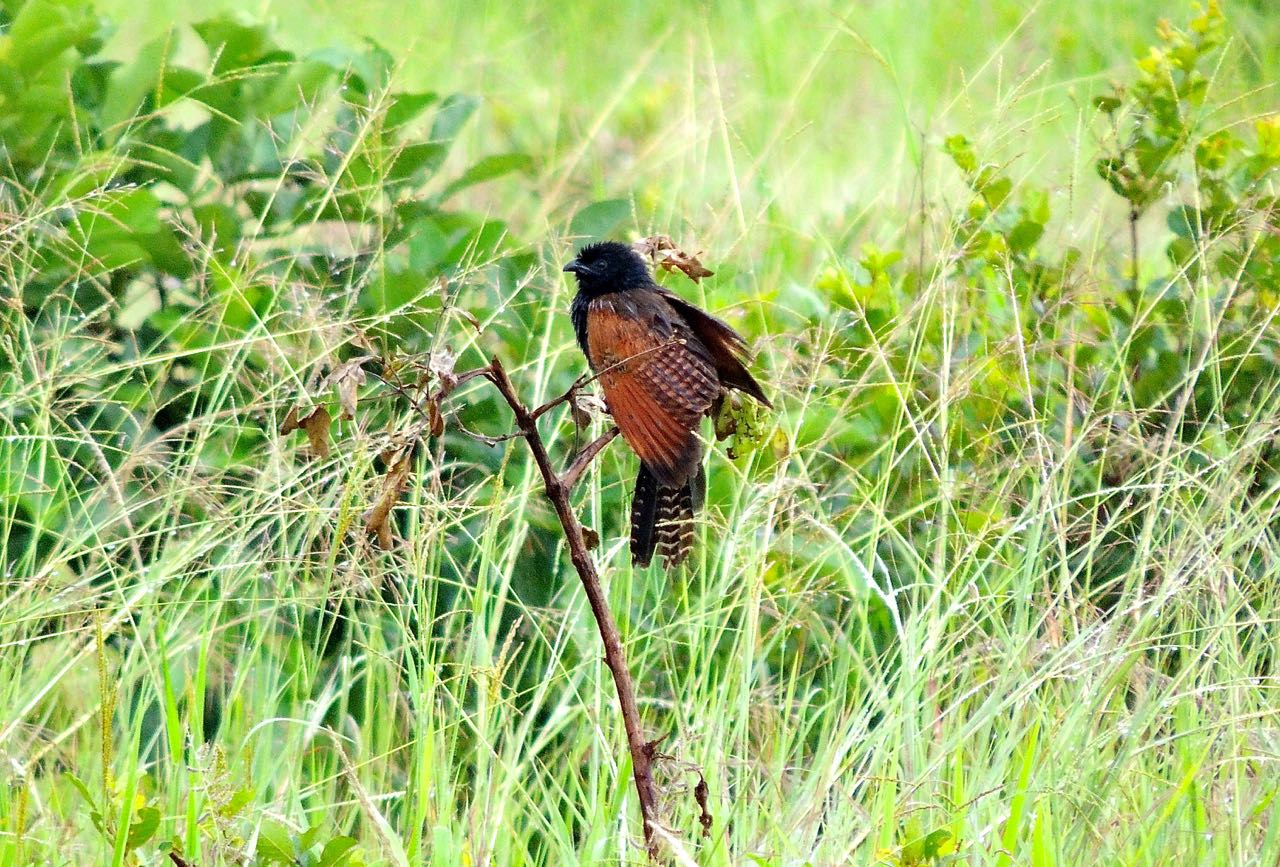 African Black Coucal - Photo by William Young
African Black Coucal - Photo by William Young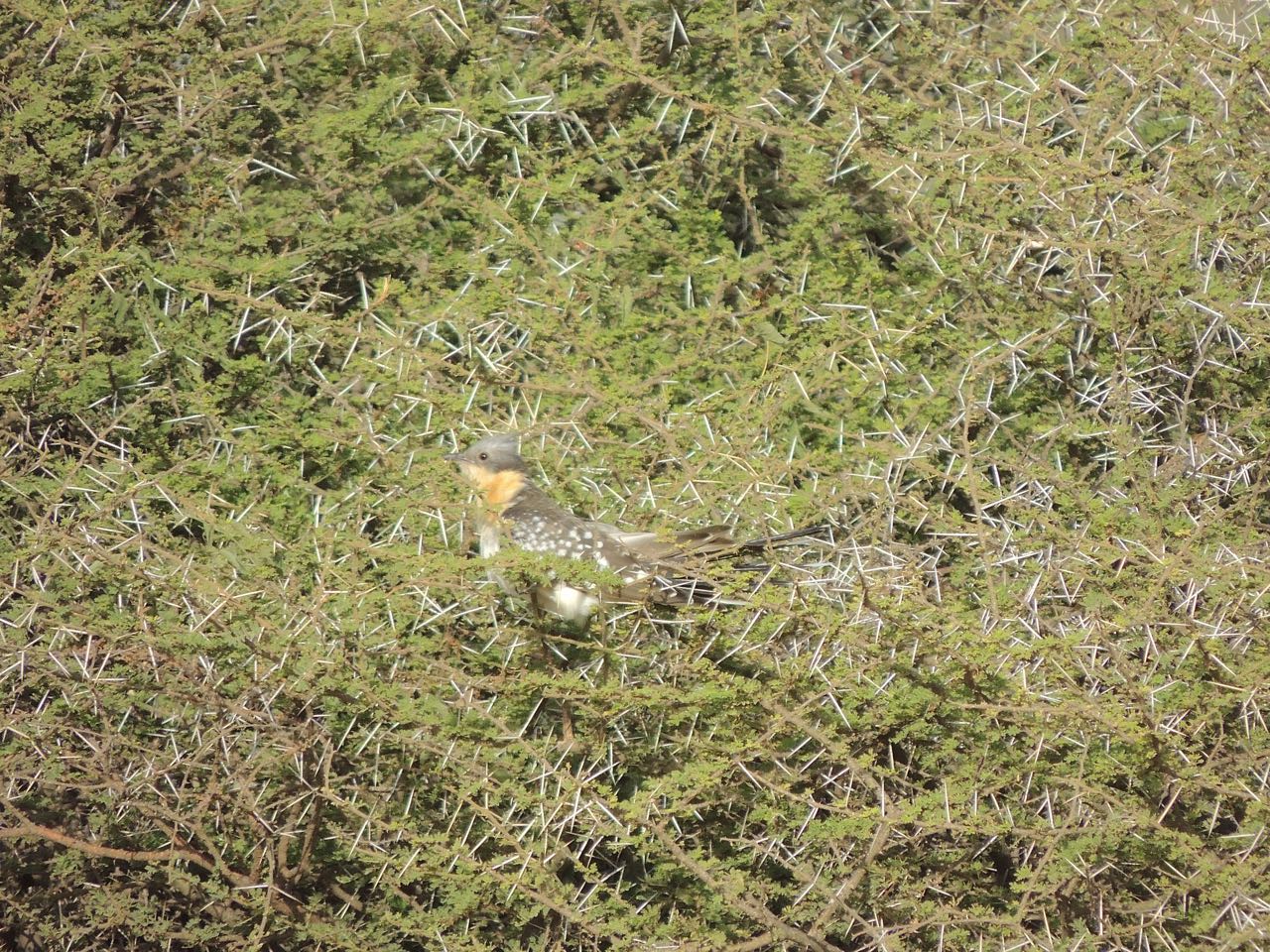 Great Spotted Cuckoo - Photo by William Young
Great Spotted Cuckoo - Photo by William Young
OwlsWe saw seven owls on the trip, four of whom were Verreaux's Eagle-Owls. The first was at about 7 a.m. outside Martin's cabin at Serenity. Martin was looking at the owl before I came out of my nearby cabin, and he said it made a crashing noise as it tried to perch on a small branch. We later saw two more in a Baobab tree near the Naitola campsite. It is a really big owl, with ear tufts and a gray facial disc bordered in black. The rest of the plumage looks brown. One of the most striking features is the pink eyelids, which we could see clearly. It looks much more like a Great Horned Owl than the image in the Stevenson field guide. Martin and I also inadvertently flushed one who was right above our heads in a tree we were walking under at our campsite at Hondo Hondo. At the Ndutu campsite, I had heard an Eastern Chanting Goshawk chanting near my tent. When I went to investigate in a rocky outcrop, I stumbled on a group of three Spotted Eagle-Owls, who are much smaller than the Verreaux's. They had smaller ear tufts, but they had a facial disc bordered in black. We saw a Pearl-spotted Owlet nestled deep in a tree near our tents at Naitola. It has big white eyebrows over its big yellow eyes. It has spots on its back, but I could not see the faint spots on its head. I heard the bird calling during the night and wee hours of the morning when we were at the camp. Likewise, I heard a three-note call from my cabin at Serenity that I am fairly certain was by a Southern White-faced Owl.
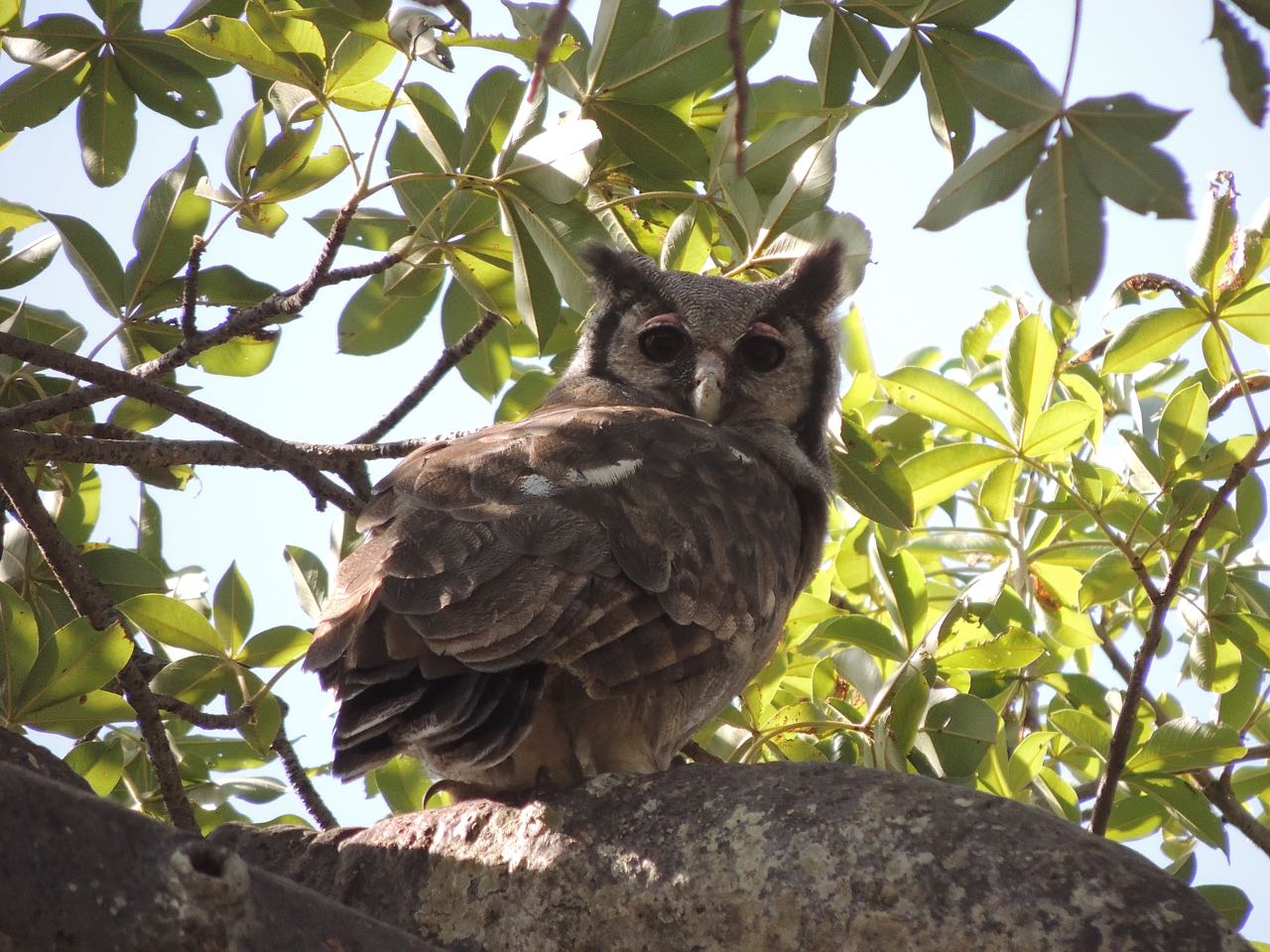 Verreaux's Eagle-Owl - Photo by William Young
Verreaux's Eagle-Owl - Photo by William Young
NightjarsWe saw a Mozambique (or Square-tailed) Nightjar the night we went spotlighting from our Naitola campsite. It was sitting in the road, and we could see some white in the wings of the perched birds. We saw no other nightjars on the trip.
SwiftsSwift species are difficult to tell apart. The differences in shape, size, and coloration are often subtle. The most common species on the trip was the African Palm-swift. It is uniformly dark, with long thin wings and a forked tail which is generally kept shut, tapering to a long narrow point. We saw them on roughly half the days of the trip. There were some Scarce Swifts at the Rhino Lodge. They also are uniformly dark, but they have slightly broader wings and a shorter tail than the palm-swifts. From an elevated outlook near our Naitola campsite, we saw about a half a dozen Mottled Spinetails, who have a white rump and white on the throat. From another overlook near the Dindira campsite, we saw five Nyanza Swifts, who have white on the throat and lighter windows in their wings that can be seen in good light. At Ngorongoro, we saw some similar but darker Black Swifts mixed in with some Little Swifts, who are smaller and chunkier, and they have an unforked tail. I also had seen Little Swifts when we were taking our luggage from the airport to the car in Mwanza.
MousebirdsThe Speckled Mousebird was one of only four birds we saw or heard on at least 18 days of the trip, with the other three being Barn Swallow (24), Common Bulbul (21), and Superb Starling (also 18). It did not seem as if we were seeing them so frequently, but a small group of them often seemed to be around in most places we visited. They are long brown birds with a white cheek, black face, a Don King-style crest, and a scraggly tail. On our day in Dar es Salaam, we saw one perched near the top of a tree, with its tail bent at an odd angle. I had nice views of them in the gardens at the Karibu Heritage House. At Simon King's house in Arusha, we saw some at a nest. They don't seem to stay still for long, and their vocalization is a series of less than pleasant sounds rather than a song. We saw 27 Blue-naped Mousebirds in five locations. They are sleeker, with a solid gray body and a black-tipped red bill. They have red skin around the eye. They fly quickly, and sometimes, they would land in trees and seem to disappear. A photograph I took of one near our tents at Naitola shows the blue on their neck, but that fieldmark can be difficult to see in the field unless the light is good. They are less common but more handsome than the Speckled.
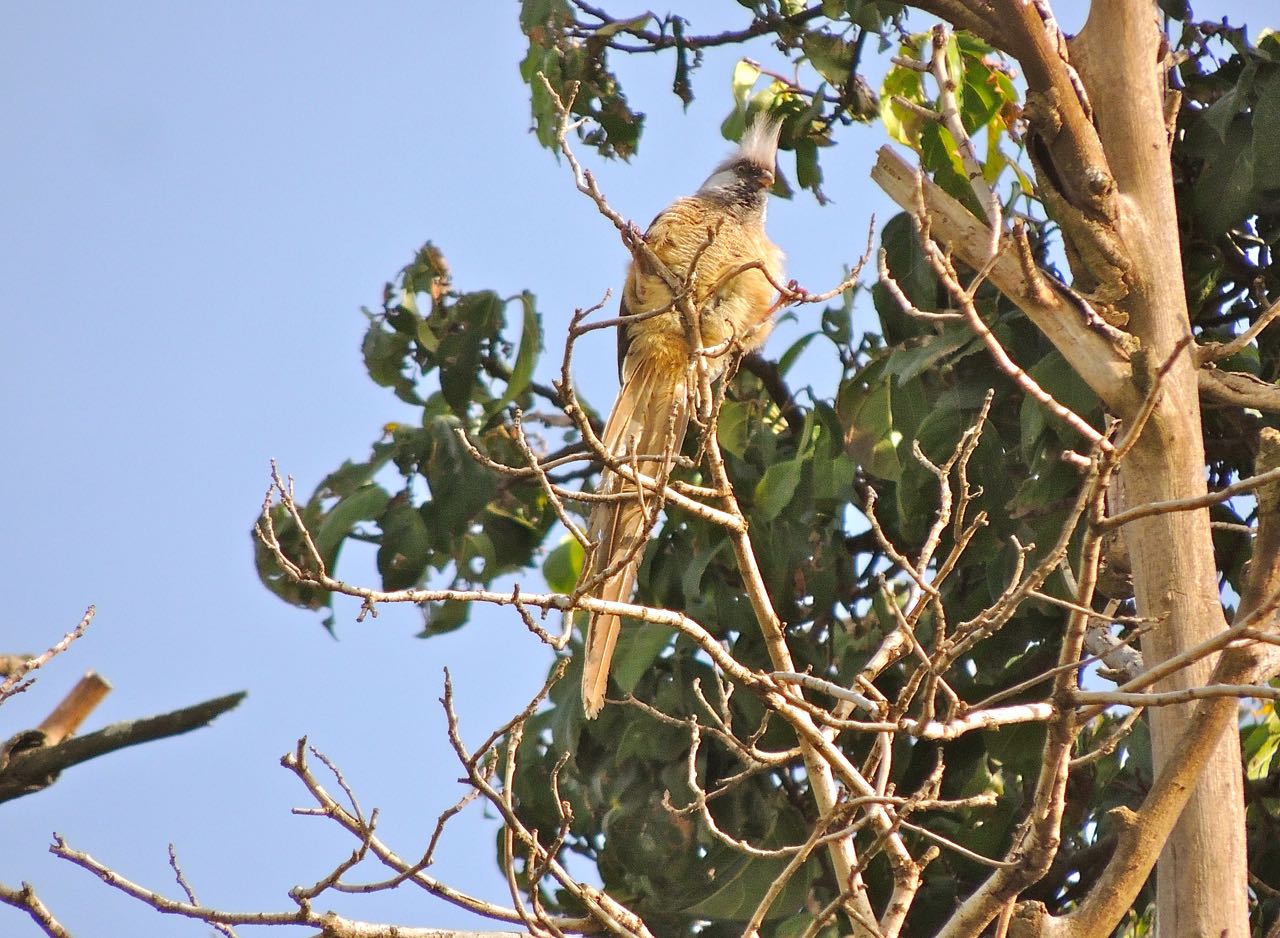 Speckled Mousebird - Photo by William Young
Speckled Mousebird - Photo by William Young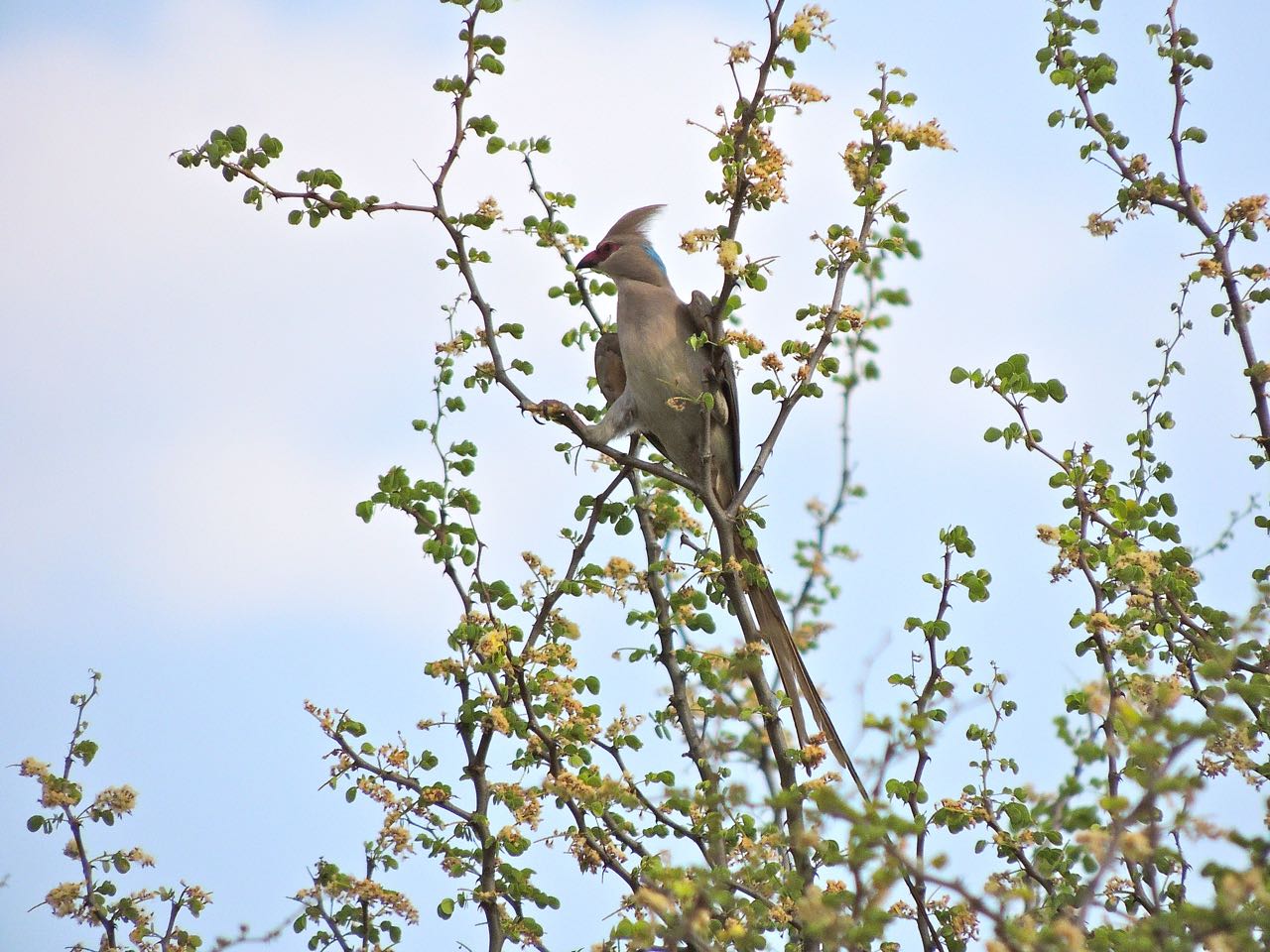 Blue-naped Mousebird - Photo by William Young
Blue-naped Mousebird - Photo by William Young
KingfishersPied Kingfishers were abundant around Lake Victoria, where we saw about 200. They are the largest of the six kingfisher species we saw. They are black-and-white, with a large bill. The Malachite Kingfisher was the smallest kingfisher we saw. We had nice looks at them at Serenity and on the Lake Victoria boat ride. They have a bright red bill, cinnamon underparts, and a cobalt blue back — a stunning little jewel of a bird. The first kingfisher we saw was a Brown-hooded Kingfisher, perched on a wire on our Dar es Salaam outing. We saw them on eight other days, including during the walk near the Momela campsite. They have a red bill, a light brown head and underparts, and brown on the back. Their wings flash blue when they fly. The Grey-headed Kingfisher is similar. It has a gray head and breast, cinnamon flanks and belly, a white throat, and a red bill with a black base and tip. We saw a Striped Kingfisher perched on a wire as we drove toward the Hondo Hondo campsite. It is smaller than the previous two. It is brownish and striped below, with a thick white band on its neck. Its short tail is blue. At the Naitola campsite, we saw Woodland Kingfishers, who along with the Malachite are the handsomest of the bunch. They are a lovely shade of light blue, and when they fly, they flash electric blue plumage on their wings. One of the things that most surprised me about African birds is how many of them flash bright blue plumage in flight. In addition to kingfishers, rollers do it, as do some species of starlings.
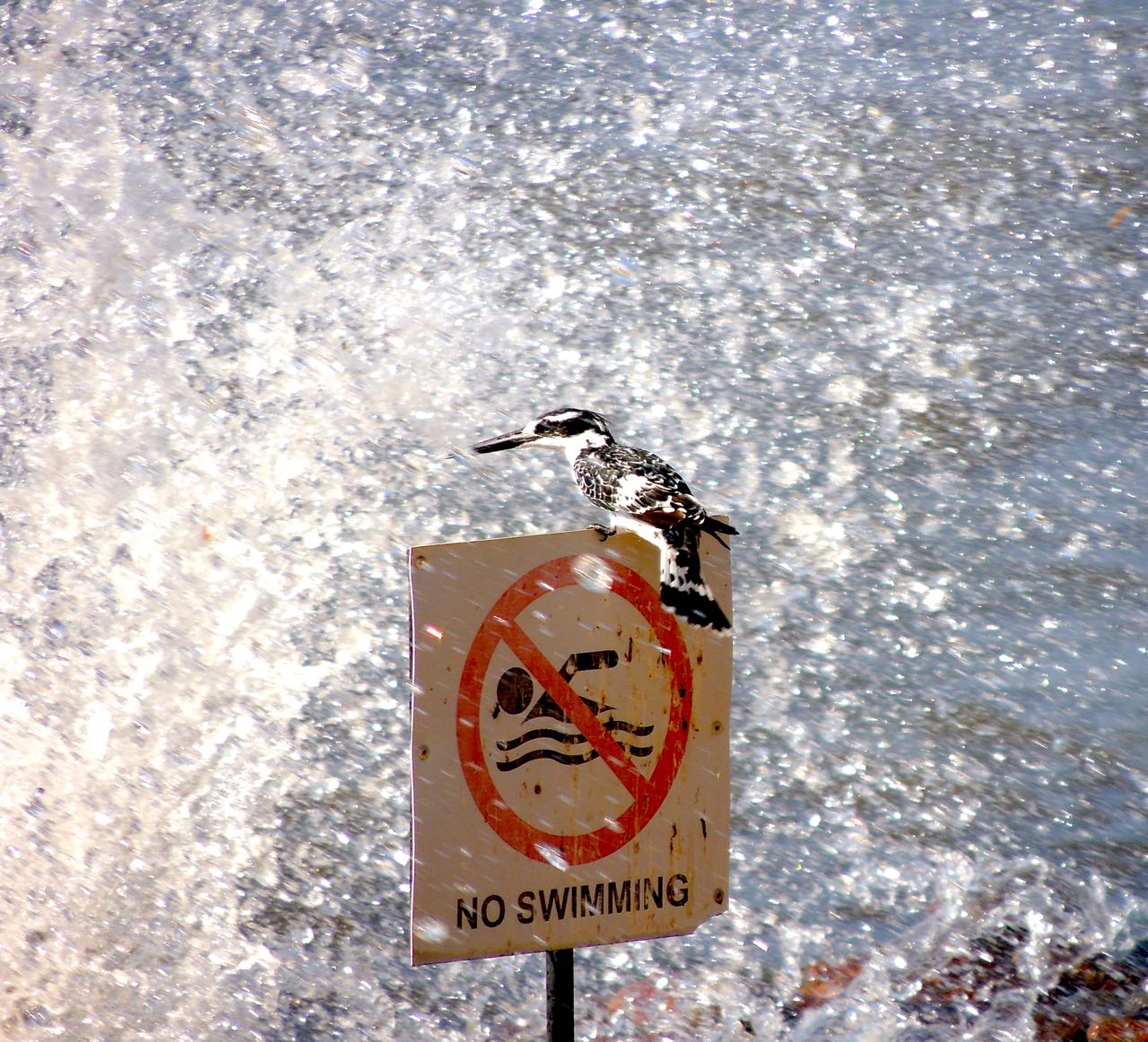 Pied Kingfisher - Photo by William Young
Pied Kingfisher - Photo by William Young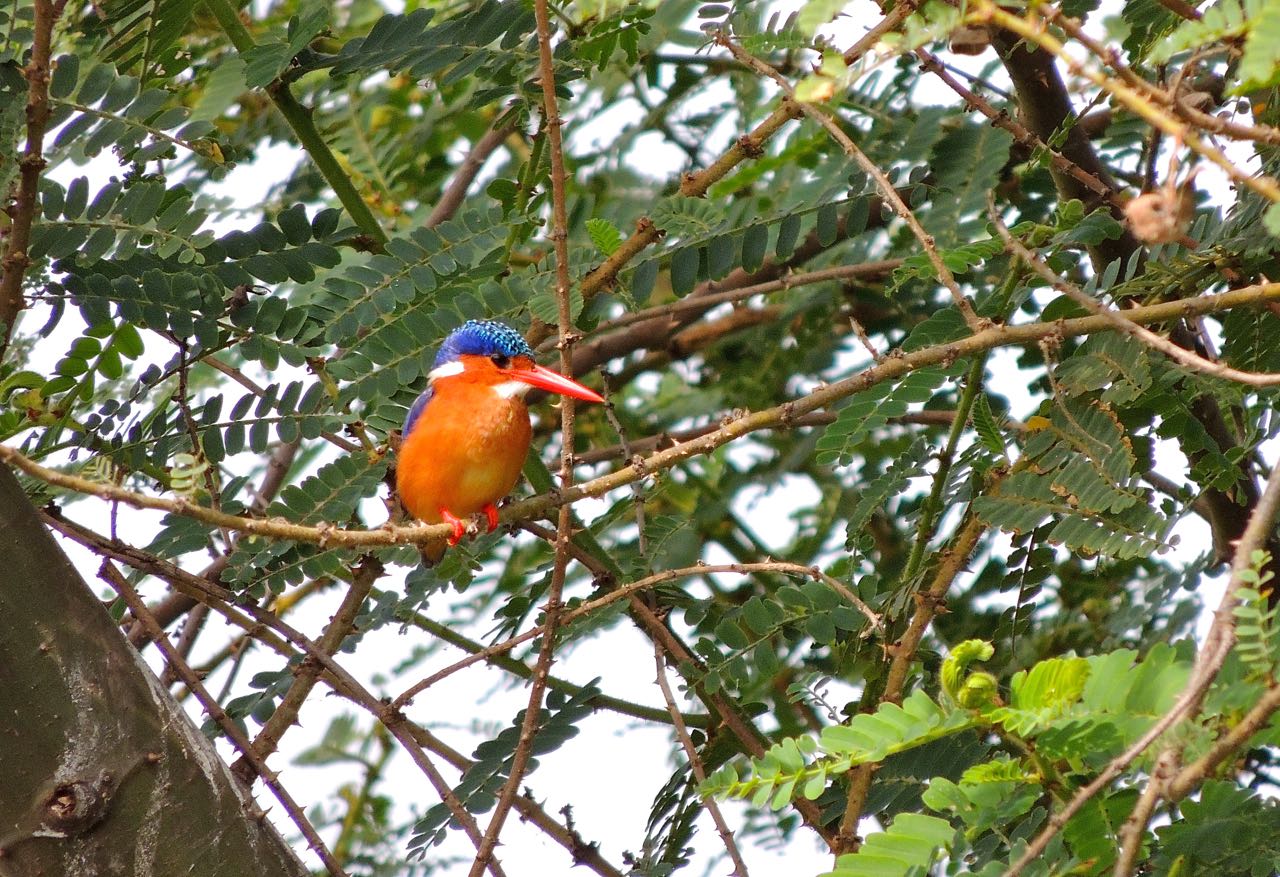 Malachite Kingfisher - Photo by William Young
Malachite Kingfisher - Photo by William Young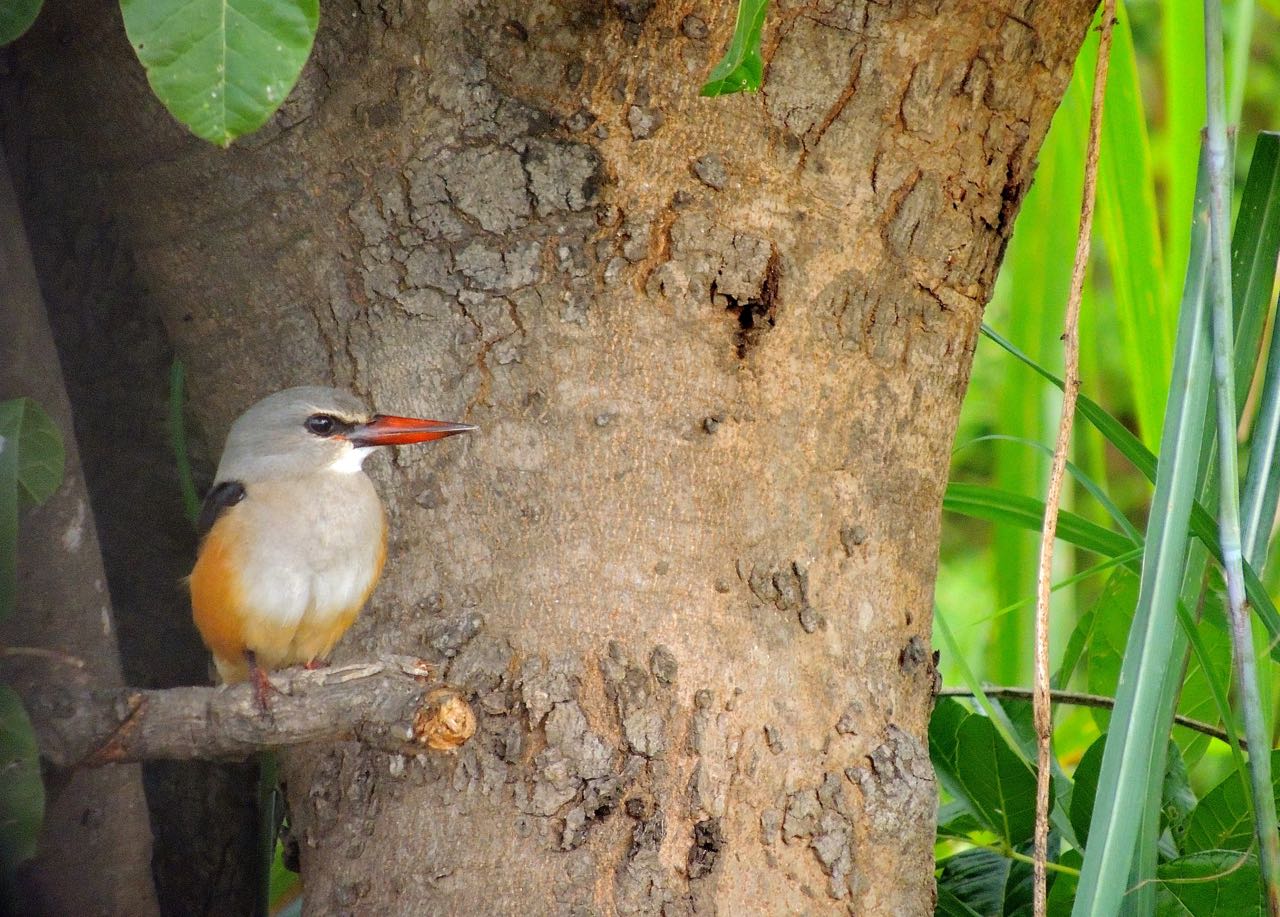 Grey-headed Kingfisher - Photo by William Young
Grey-headed Kingfisher - Photo by William Young
Bee-eatersThe Bee-eaters were one of my favorite families of birds in Africa. Someone who had traveled in Africa had told me that it is difficult to find a bee-eater species who is not beautiful, and he was correct based on the seven species we saw. Perhaps the most beautiful is the Northern Carmine Bee-eater. We were lucky to see ten on our outing in Dar es Salaam and another dozen at the park at Mkomazi. I have tried to match the color of the body with shades of pink on a color chart, and the closest one is called "watermelon". The wings are red, with some brown. The face and throat are turquoise, and a broad black stripe goes through its orange eyes. The bill is black, but the feet are light. The tail is the same color as the wings, and there is a long central tail feather.
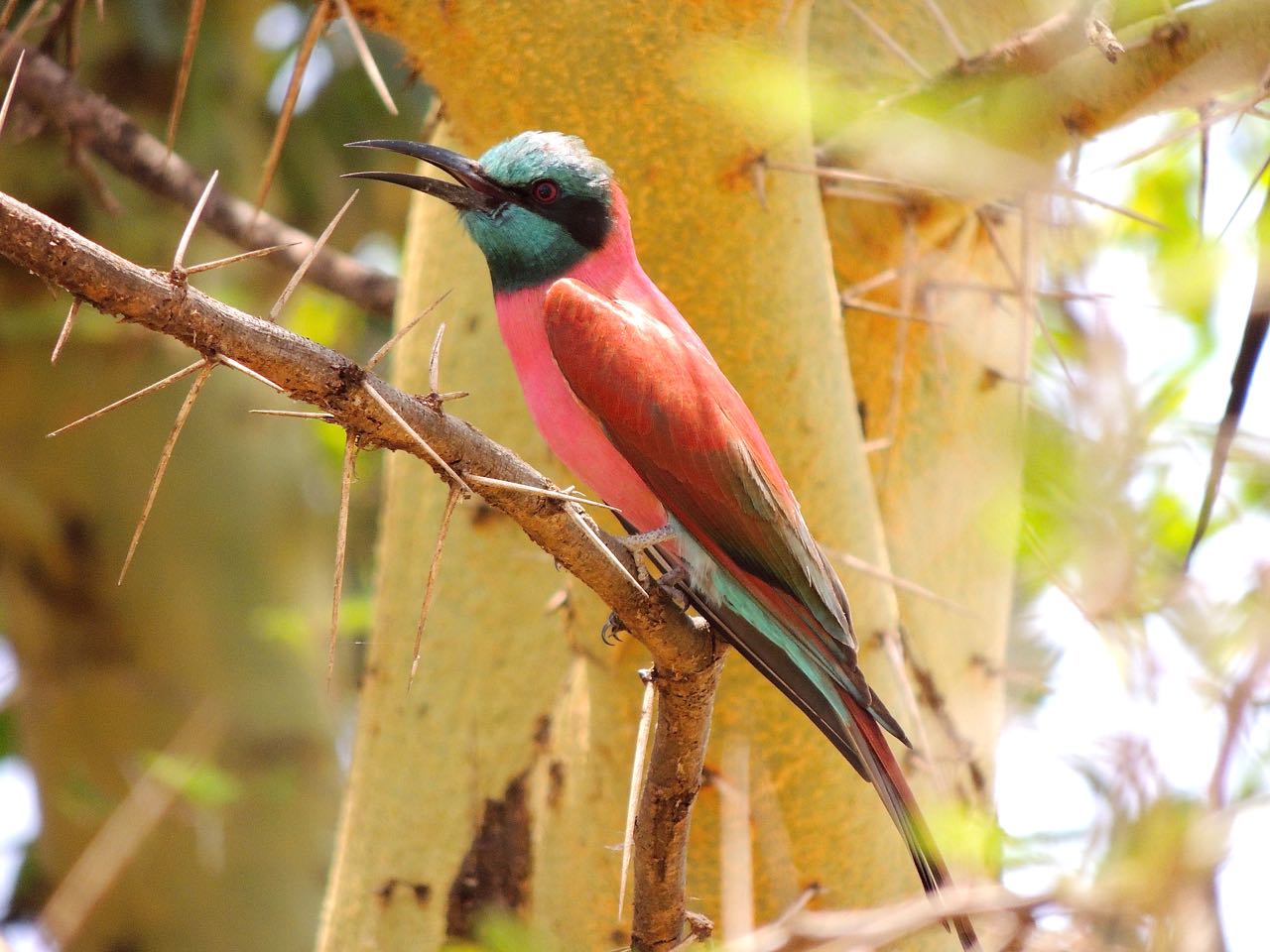 Northern Carmine Bee-eater - Photo by William Young
Northern Carmine Bee-eater - Photo by William Young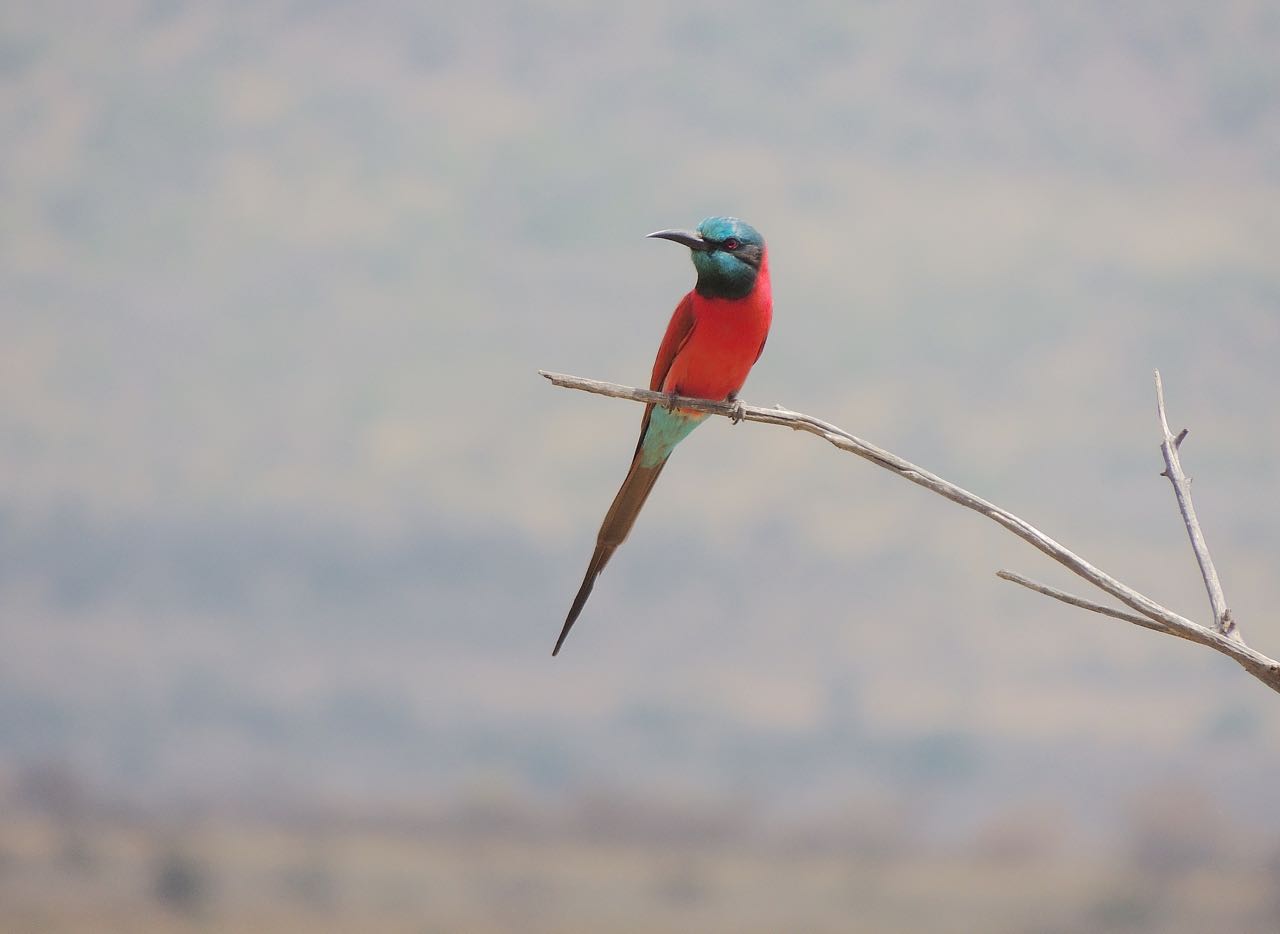 Northern Carmine Bee-eater - Photo by William Young
Northern Carmine Bee-eater - Photo by William YoungIn Dar es Salaam, we saw a Little Bee-eater perched on a wire. I walked under it, and it did not fly. It is smaller than the other bee-eaters. It has a green back, a yellowish throat, cinnamon underparts, and a black eyeline. We saw 33 on ten days, with the last sightings toward the end of the trip in Udzungwa. We saw our only Cinnamon-chested Bee-eater at Arusha National Park. It looks like a slightly larger version of the Little Bee-eater. On our boat ride in Lake Victoria, we saw eight White-throated Bee-eaters, our only ones of the trip. Its vocalization sounds like someone blowing a whistle. It has a black crown, white supercilium, black eyeline, and a long central tail feather. We also saw Blue-cheeked Bee-eaters on the boat trip and a lot more around the Dindira campsite. I got extremely close to one, and the cheek looks green rather than blue. They have a turquoise supercilium, a rufous throat, and a red back. We saw a lot of them at Dindira Swamp, with some soaring like hawks, some flycatching, and others flying over the water like swallows. Bee-eaters seem to be multi-talented. We had beautiful looks at White-fronted Bee-eaters near our Momela campsite. They have a bright red throat, cinnamon underparts, green wings, and a white forehead. We also heard them vocalizing. In terms of sheer numbers, the most common Bee-eater was the European, most of whom would probably be heading north relatively soon. We encountered 155 on 13 days. At Mikumi, I photographed one in a tree. It has a yellow throat, aqua underparts, a white forehead, and a brown head. Even accounting for overcast weather, the coloration of the European did not seem as electric as the other bee-eaters.
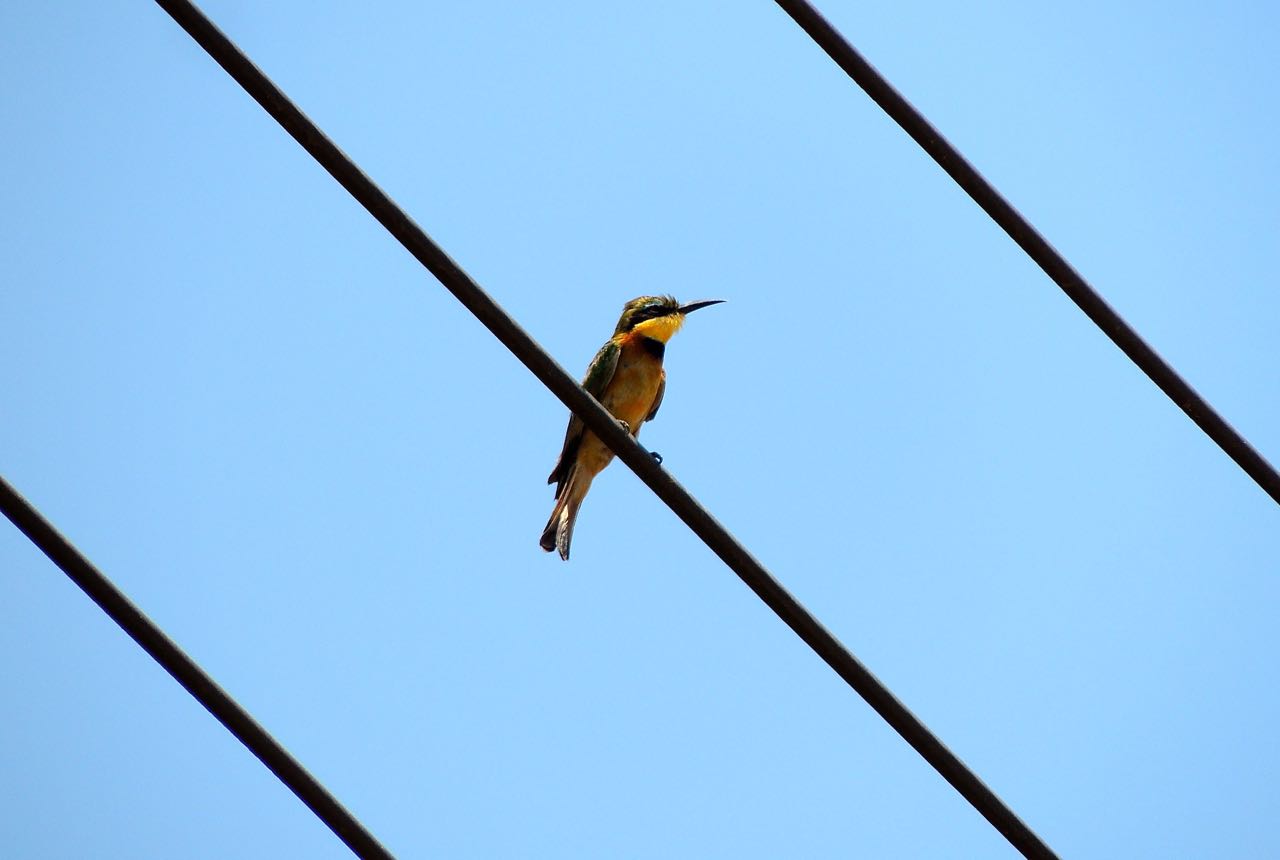 Little Bee-eater - Photo by William Young
Little Bee-eater - Photo by William Young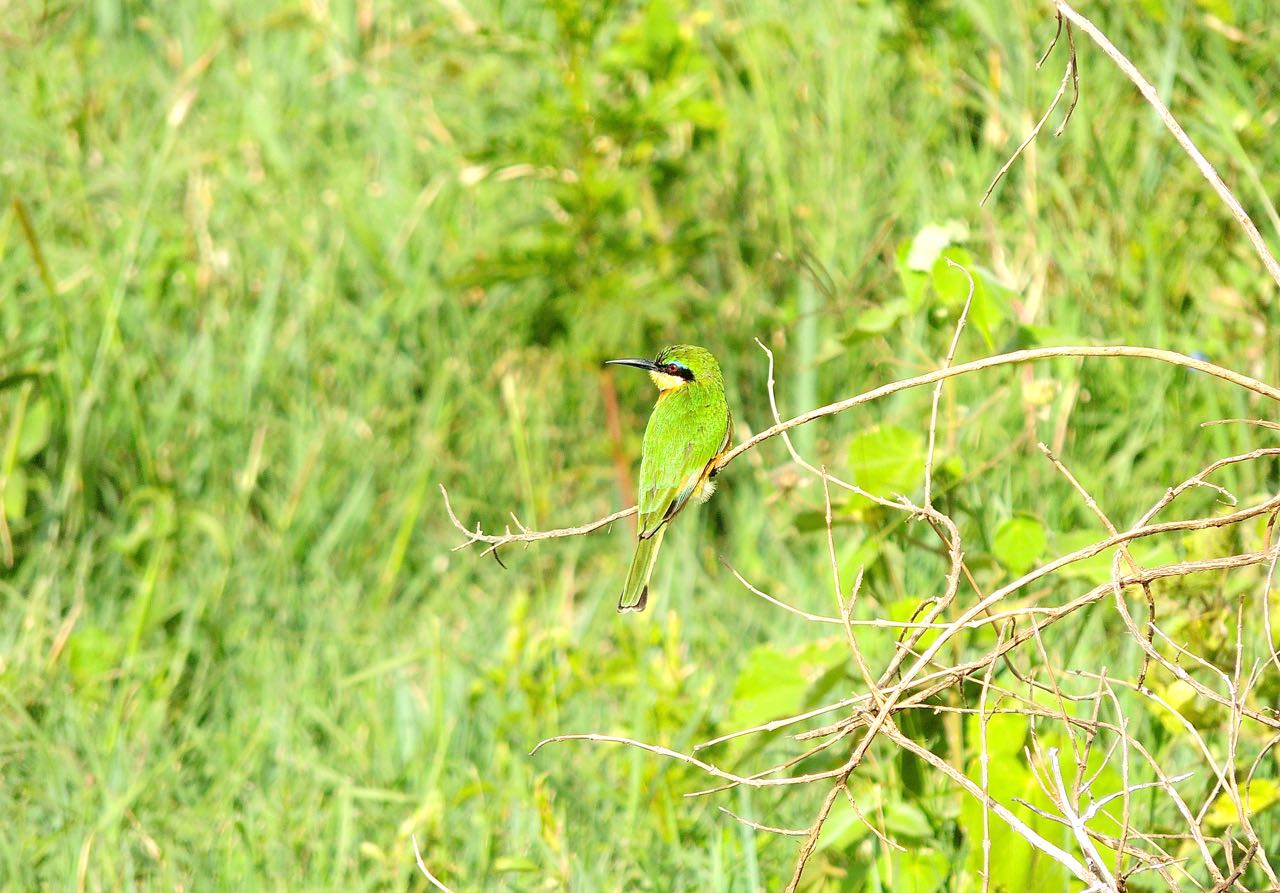 Little Bee-eater - Photo by William Young
Little Bee-eater - Photo by William Young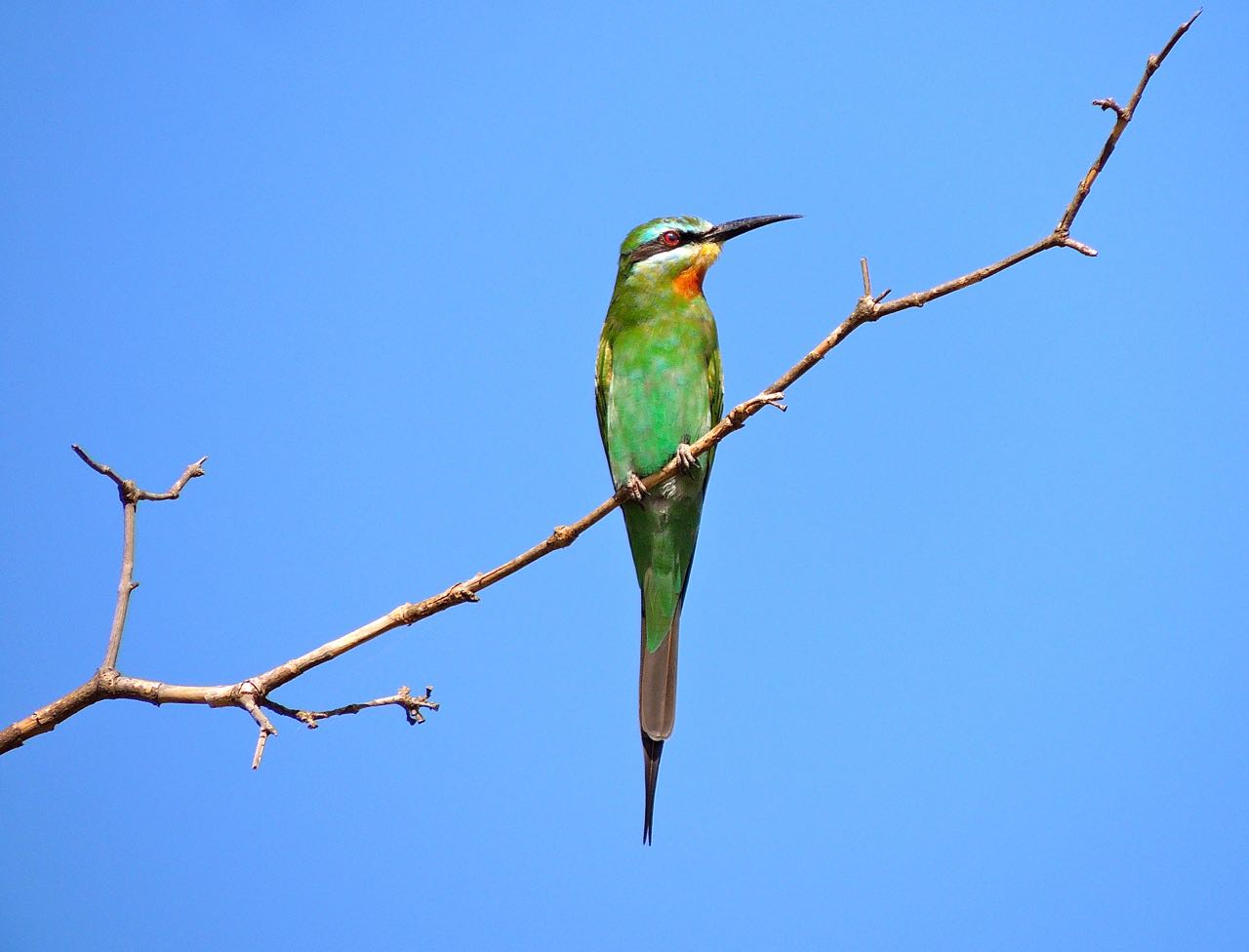 Blue-cheeked Bee-eater - Photo by William Young
Blue-cheeked Bee-eater - Photo by William Young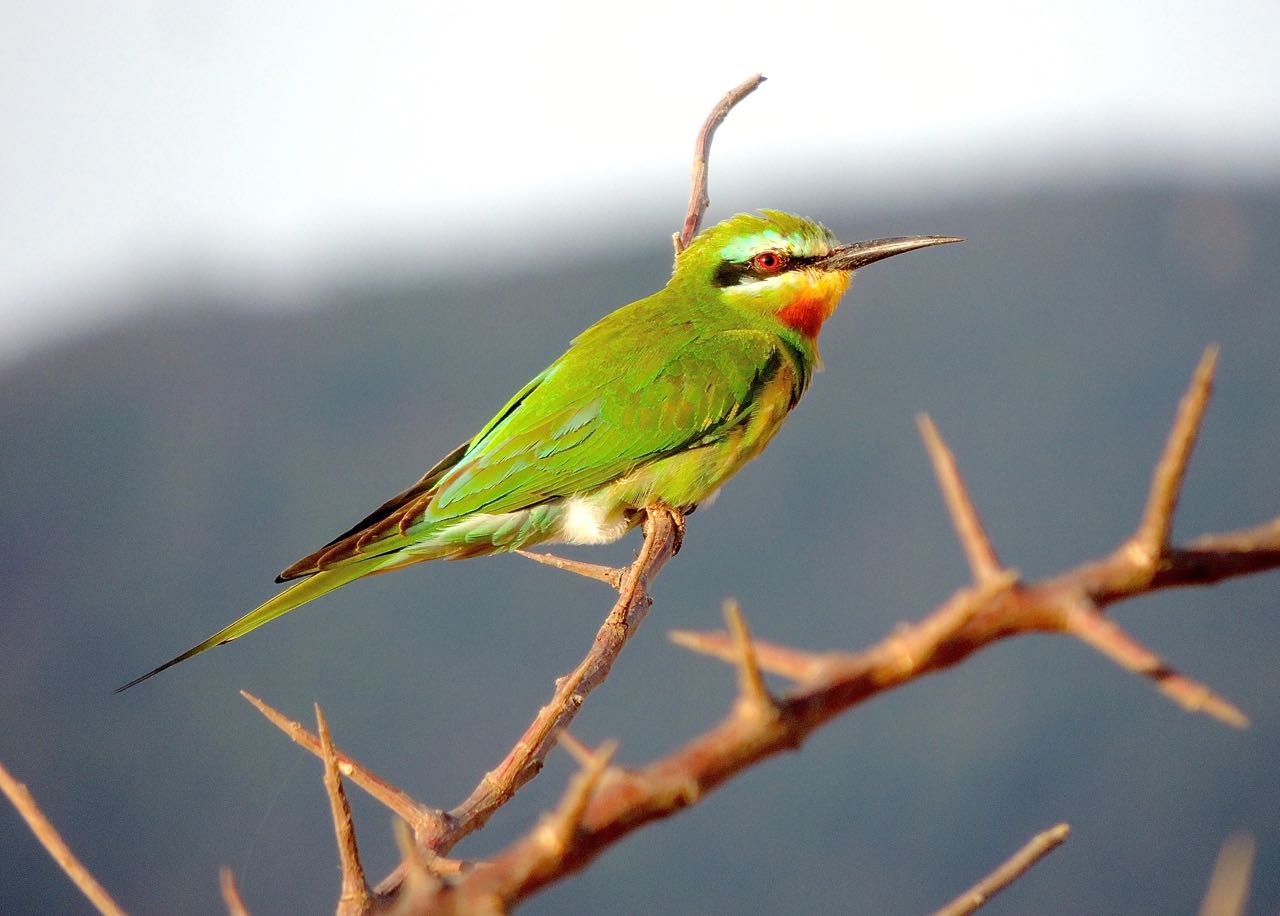 Blue-cheeked Bee-eater - Photo by William Young
Blue-cheeked Bee-eater - Photo by William Young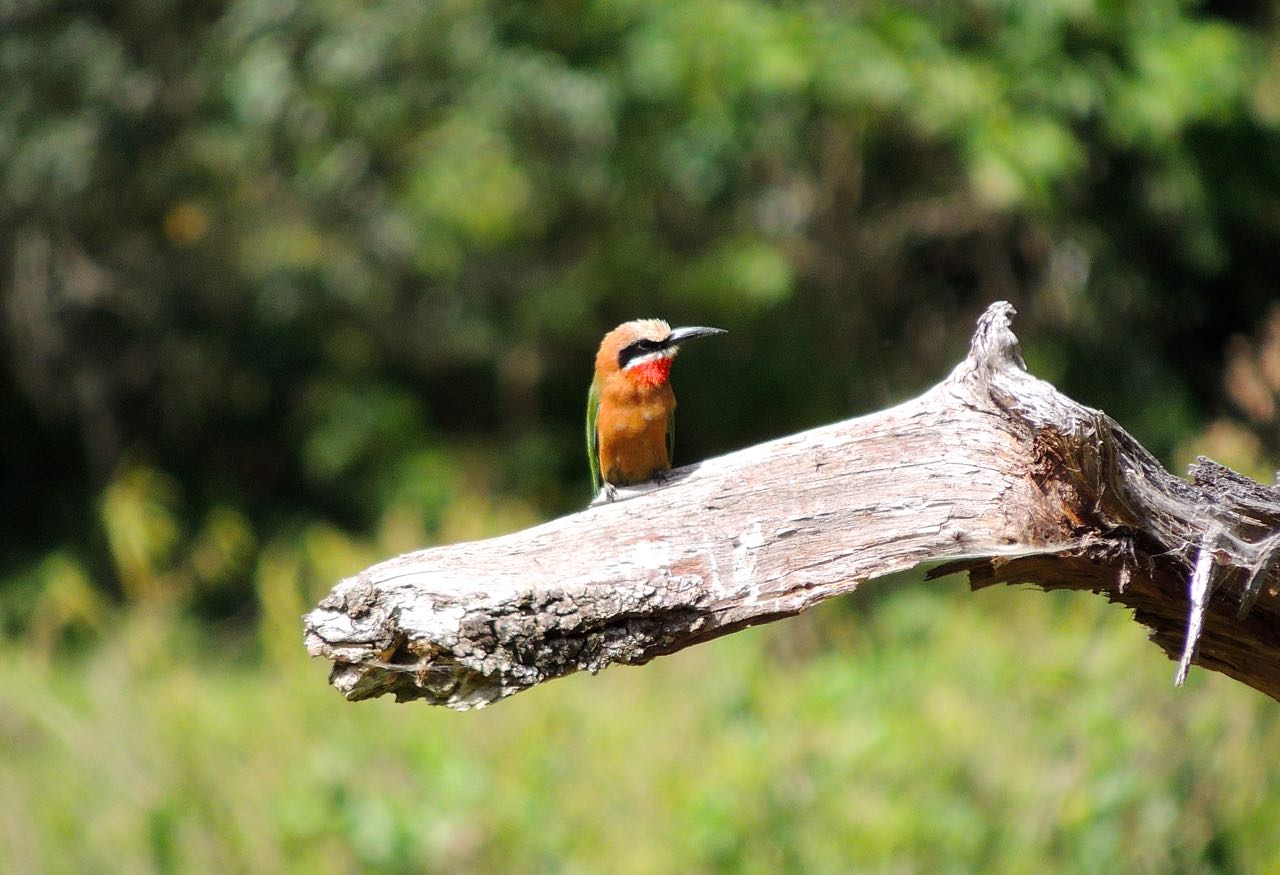 White-fronted Bee-eater - Photo by William Young
White-fronted Bee-eater - Photo by William Young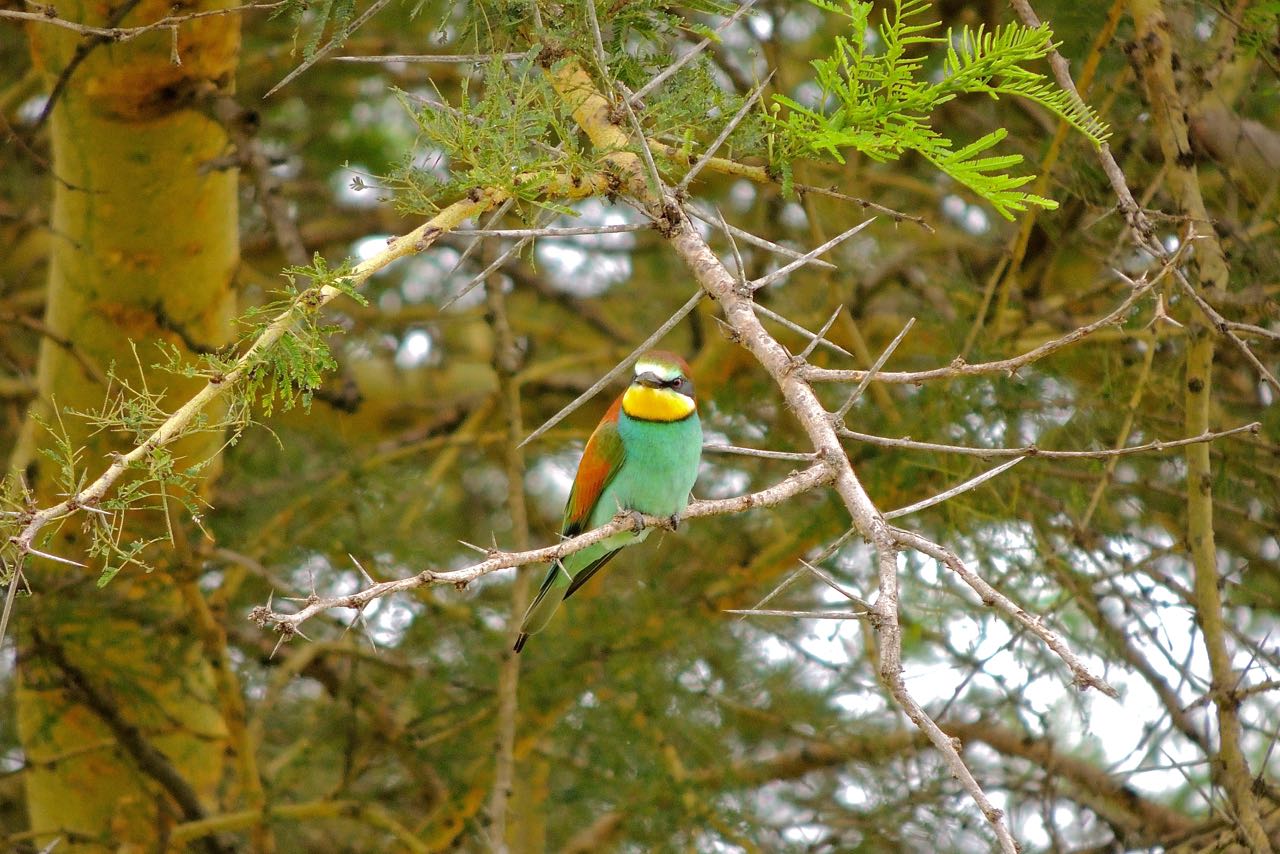 European Bee-eater - Photo by William Young
European Bee-eater - Photo by William Young
RollersEuropean and Lilac-breasted Rollers were abundant on the trip. We saw an estimated 268 of the European and about 124 of the Lilac-breasted. We counted European Rollers while we were driving through the Mkomazi park. I don't know how many we missed, but we counted 85. We could hardly drive for five minutes without seeing one. They are pretty birds, with an aqua breast, a cinnamon back, and darker blue on the wings which is startling when the bird flies. Lilac-breasted Rollers have the same stunning effect when they fly. They do not seem as hefty as the European. They have a lovely lilac breast, a reddish cheek, and aqua underparts. Their vocalization, which I heard at the Dindira campsite, is a non-birdlike croak. The Europeans were probably going to be migrating north shortly after we left, but the Lilac-breasted Rollers stick around. On our first day in Dar es Salaam, we saw a Purple (Rufous-crowned) Roller in the same area where we saw the Carmine Bee-eaters. It flashed the startling blue wing feathers when it flew, but the perched bird had much drabber and more subtle plumage than the other two roller species. It has a dark bill and a white supercilium. Near the Momela campsite, we saw our only Broad-billed Roller in a tree next to the road. It is a mostly dark bird, with a yellow bill that is broader than the ones of the other rollers we saw.
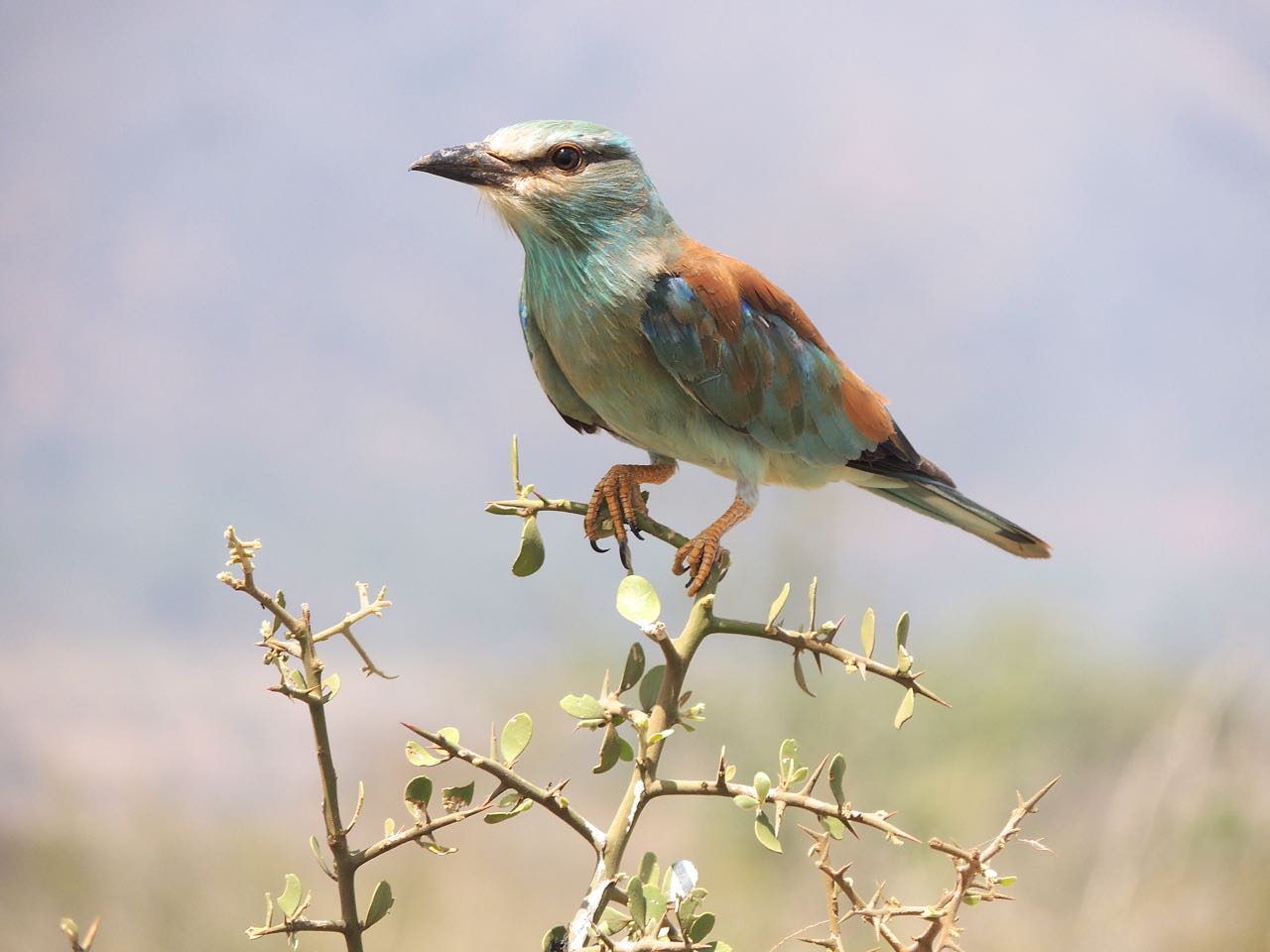 European Roller - Photo by William Young
European Roller - Photo by William Young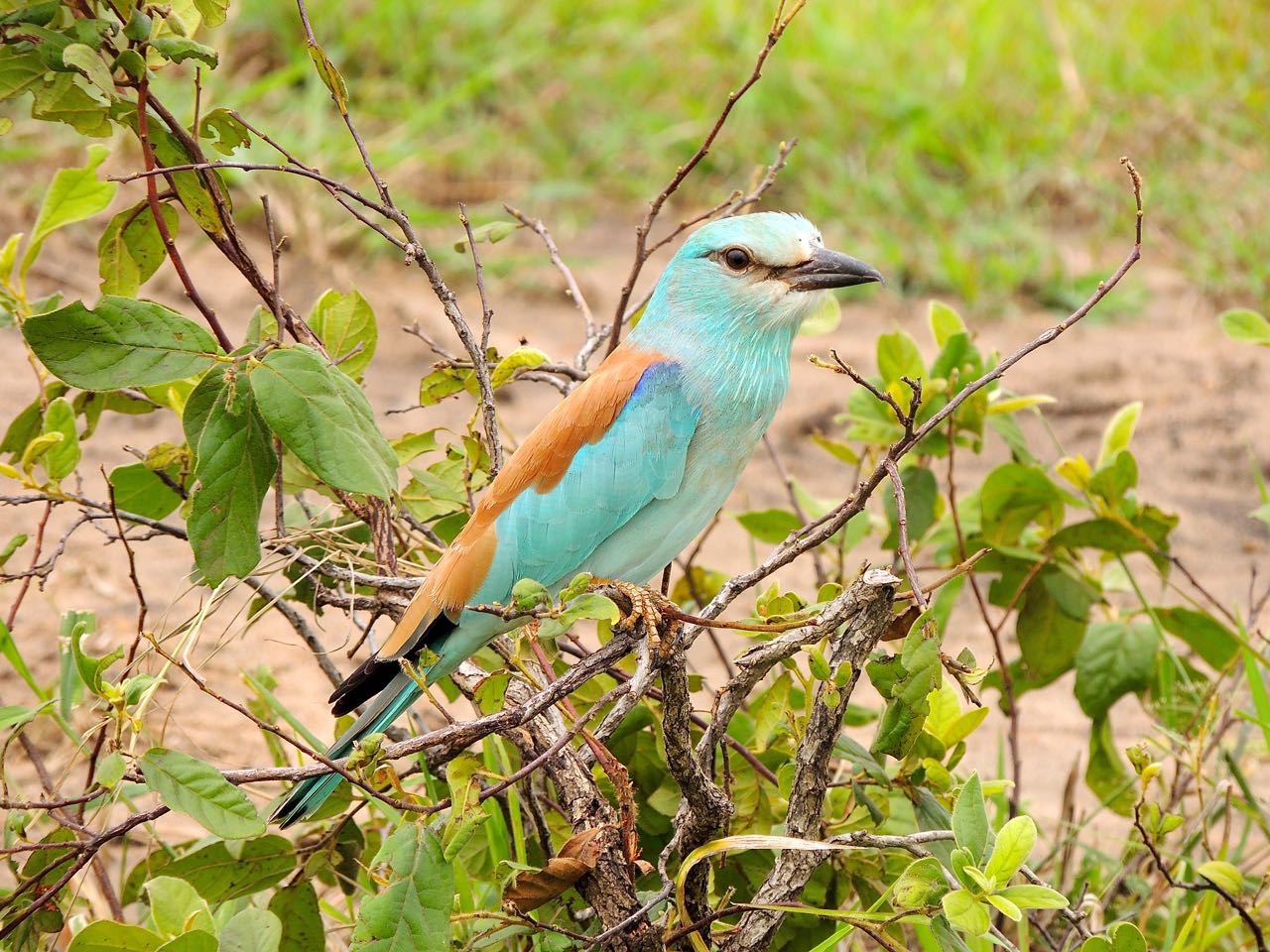 European Roller - Photo by William Young
European Roller - Photo by William Young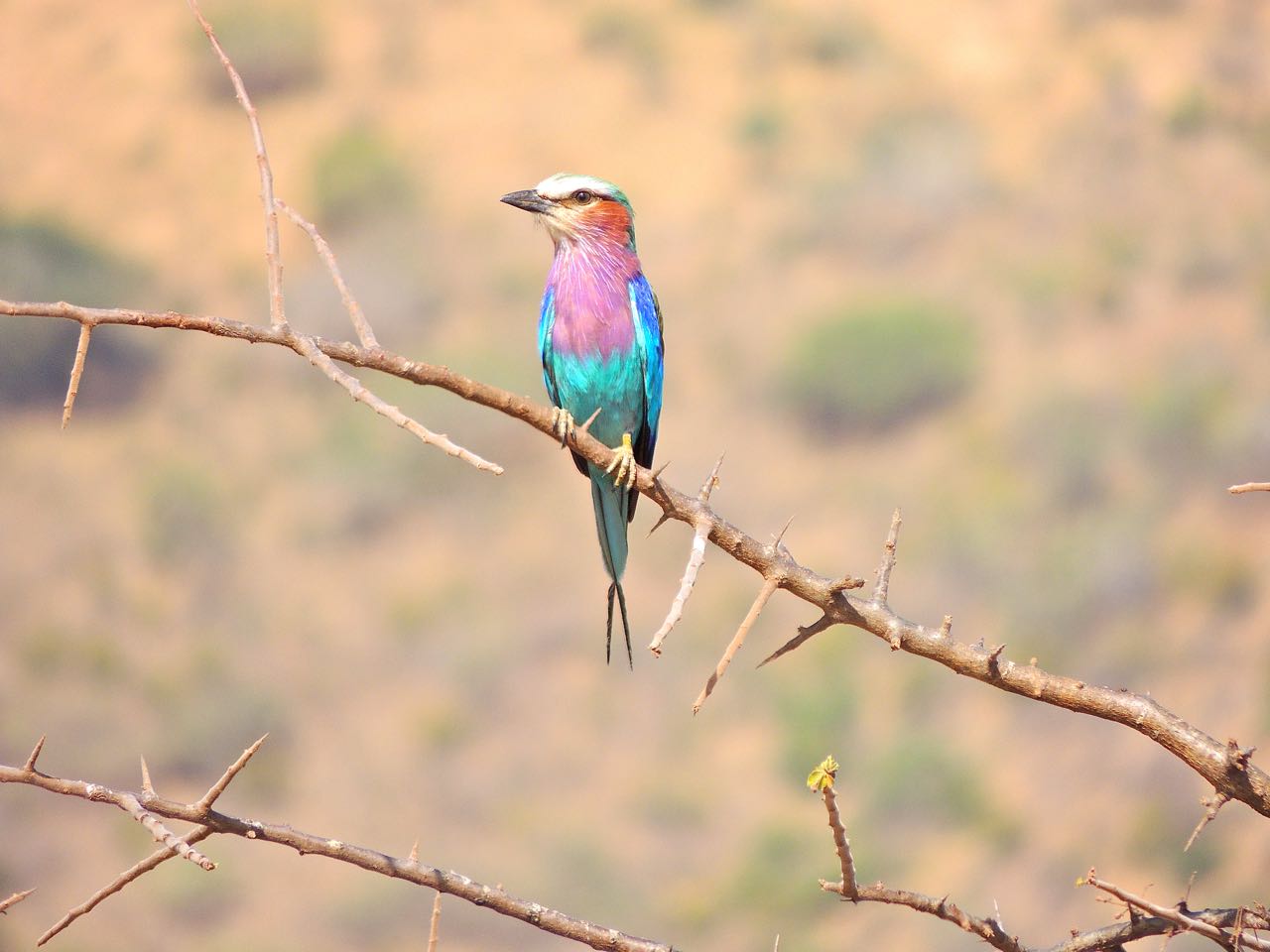 Lilac-breasted Roller - Photo by William Young
Lilac-breasted Roller - Photo by William Young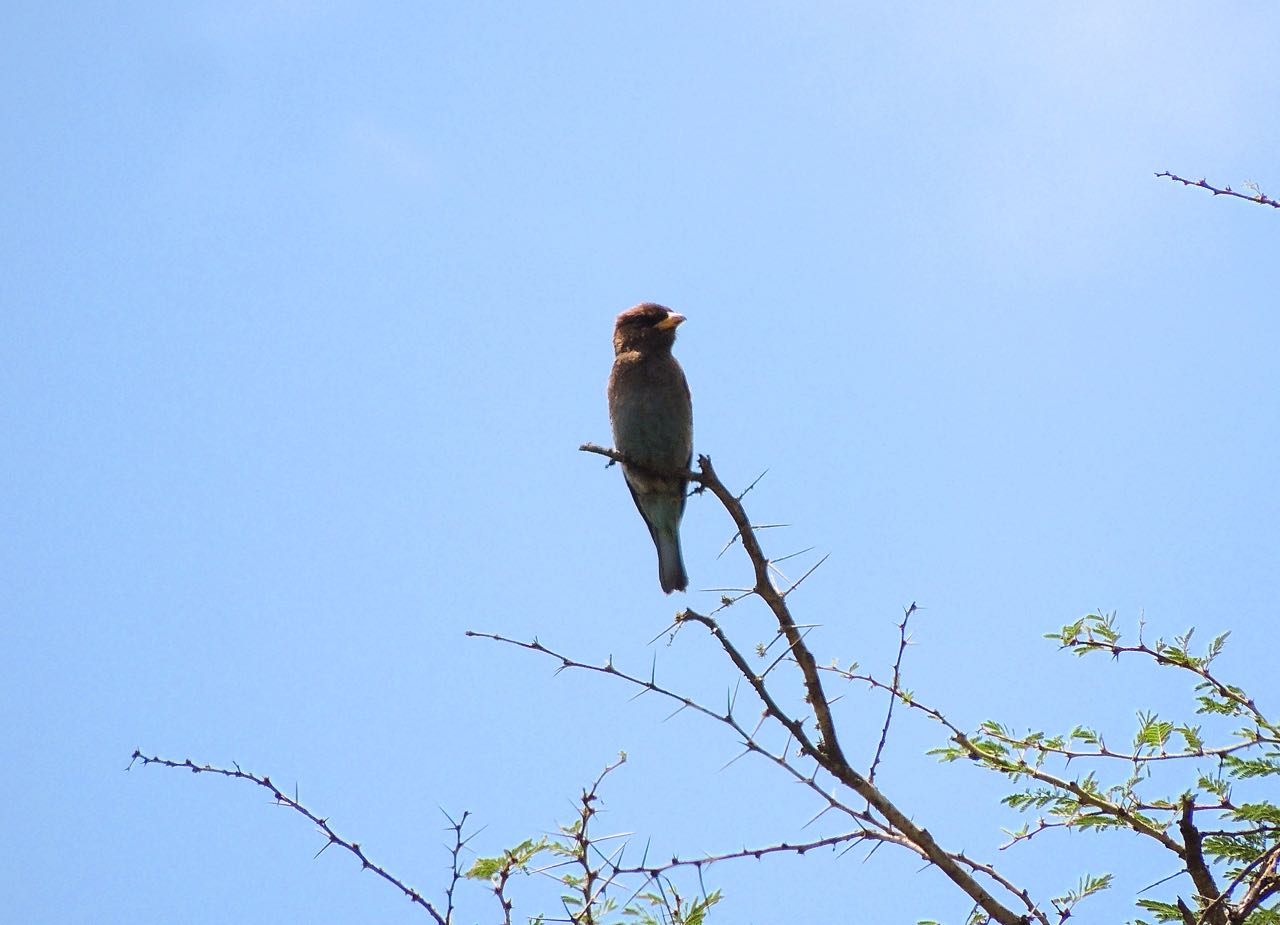 Broad-billed Roller - Photo by William Young
Broad-billed Roller - Photo by William Young
HoopoesI saw a Hoopoe while we were driving from the Naitola campsite. I could see the hammerhead appearance while it was briefly perched in a tree before flying off. On the way back, we encountered what might have been the same bird. I followed it back through the scrub and had a better look at it perched before it flew off. The ones we saw seemed shy, and I wish I could have studied them more.
Woodhoopoes and Scimitar-billsWe saw Green Woodhoopoes near our tents at Naitola. They are long, narrow, dark green birds with a red bill. We saw a half a dozen Violet Woodhoopoes near the Momela campsite. They were in good light, and the head looked dark purple. Abyssinian Scimitarbills were behind our tents at the Ndutu campsite. They have a red bill. In the same area, we saw a flyover Common Scimitarbill, who has a dark bill.
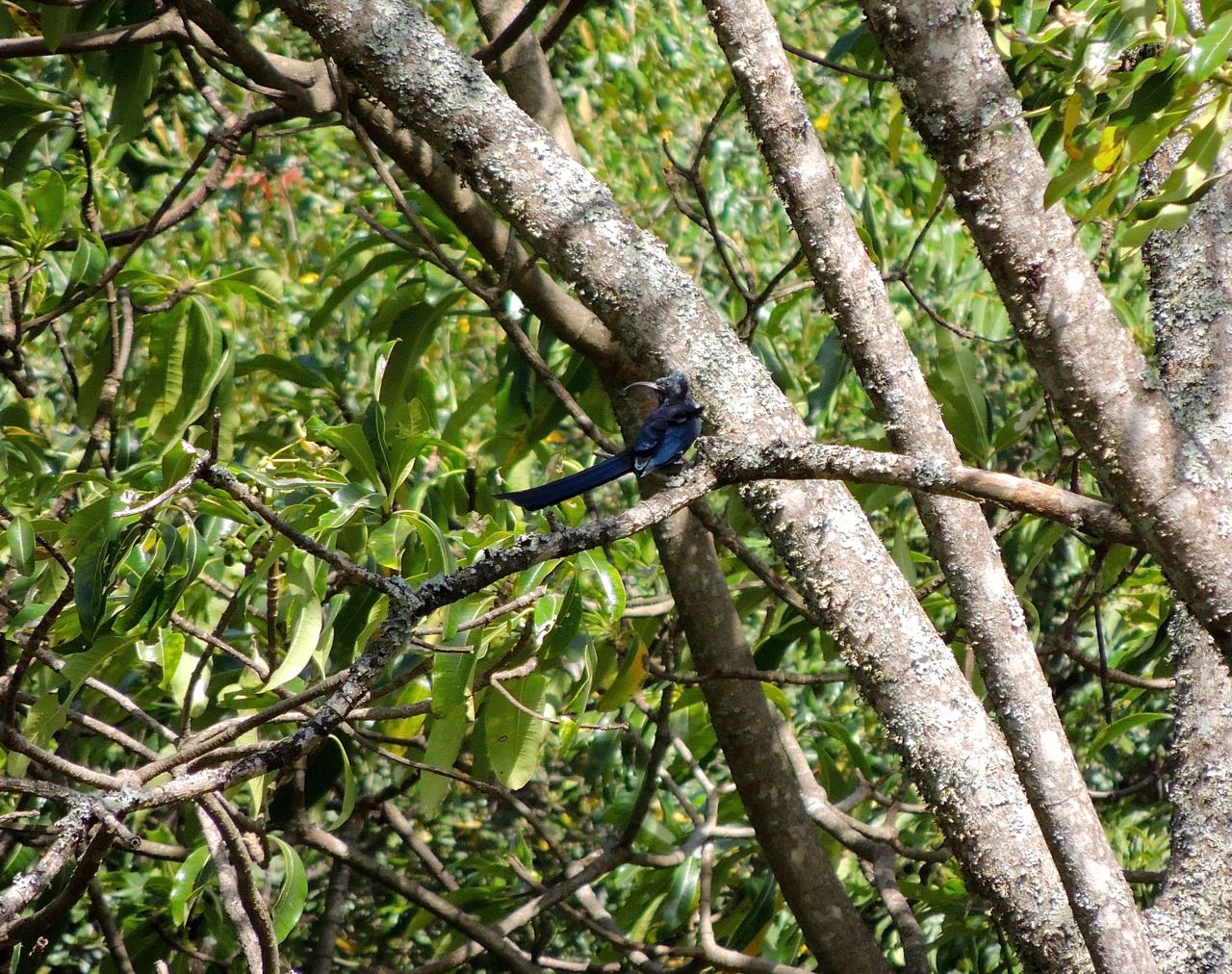 Violet Woodhoopoe - Photo by William Young
Violet Woodhoopoe - Photo by William Young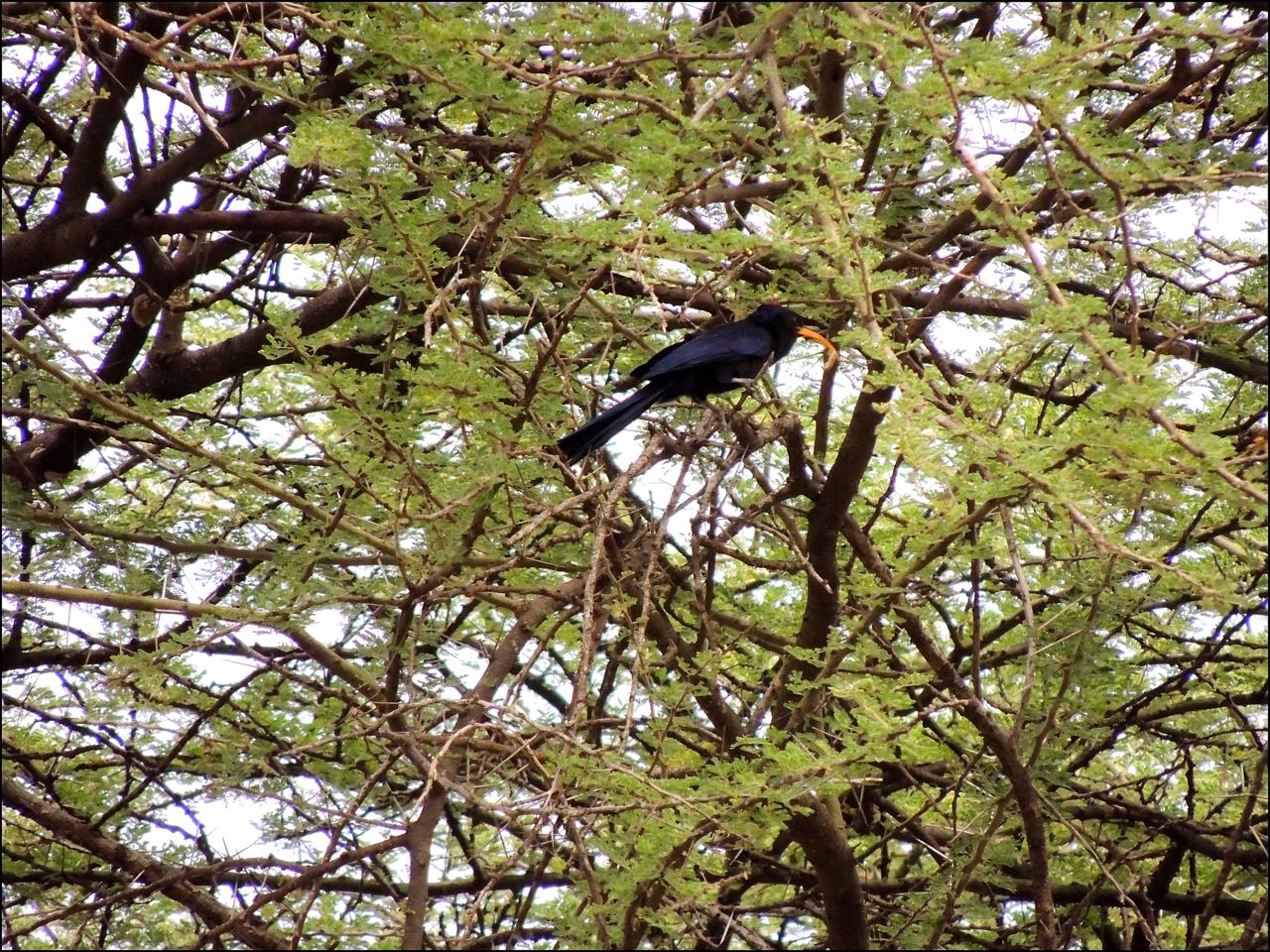 Abyssinian Scimitarbill - Photo by William Young
Abyssinian Scimitarbill - Photo by William Young
Ground-HornbillsThe Southern Ground-Hornbill looks prehistoric. As with other hornbills, who are in a different family, they nest in trees. I saw four in Tarangire in a tree at a nest hole. We saw a male holding in his bill a wad of grass and sticks which contained a dead snake. We later saw him stuff the whole lot into a nest hole, presumably leaving it to the female and young to separate the snake from the other material. We could hear the young calling from inside. He had a large, light eye surrounded by bright red skin that is too large to be called an eyering. The bare red skin continues down the side of his face, under his bill, and onto his throat. The bright red throat skin almost looked like an external heart. His bill was black at the base and lighter on the tip, and it had a small black casque on top. There were bristles around his eyes. The feathering above and around the red skin looked like brown hair that had just been washed and styled. The rest of the body looked as if it belongs to a Turkey Vulture. In flight, ground-hornbills have large broad wings, and almost the entire outer half is white — something you don't expect after seeing one walking on the ground, which was where we usually saw them. The first ones we saw were in the Serengeti, walking among the thousands of zebras and wildebeest. One male appeared to be inflating his throat sac as he strutted around. We saw 25 on four days. The last one we saw was crossing a busy road as we drove from Mikumi to the airport in Dar es Salaam at the end of the trip.
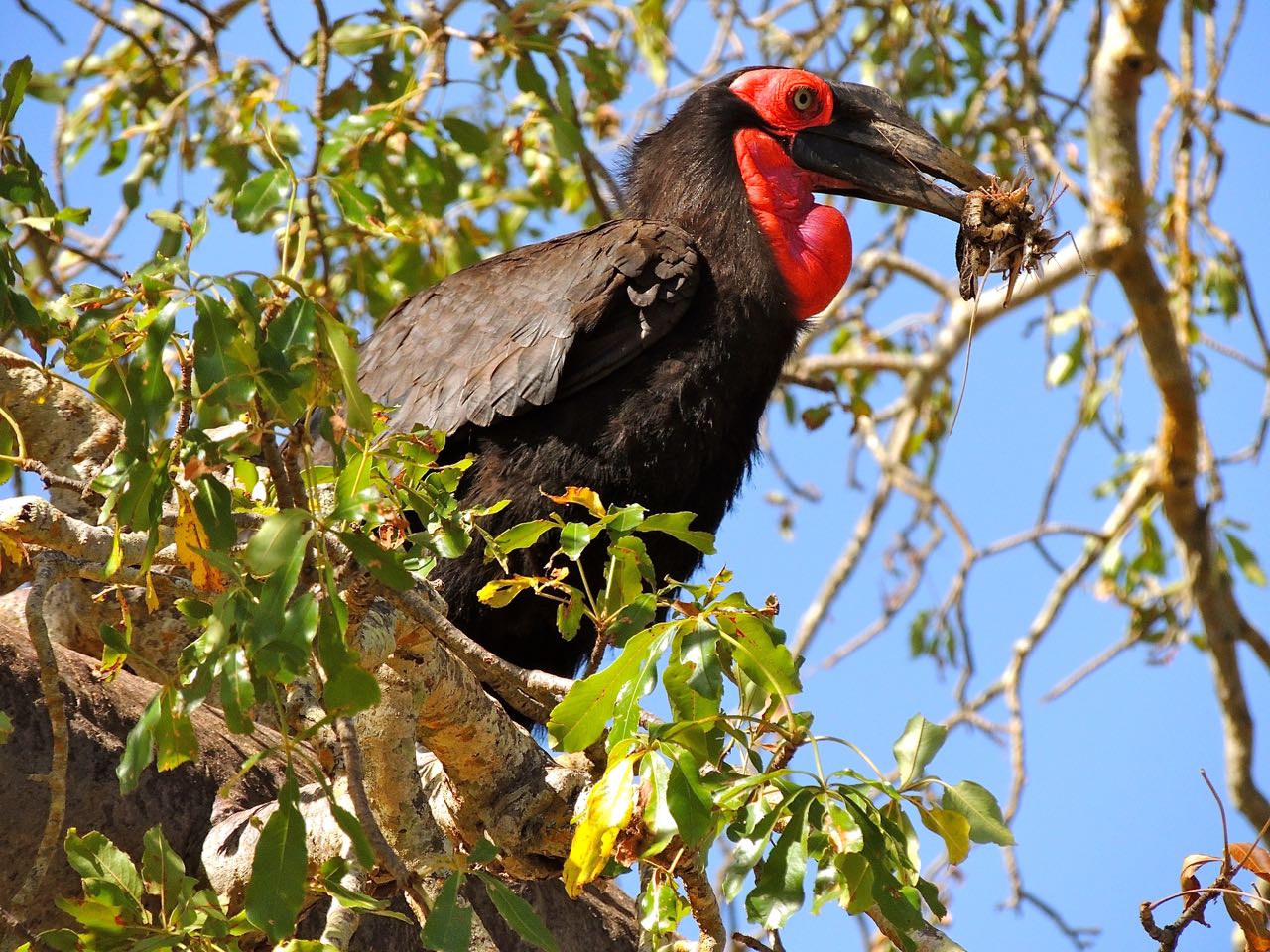 Southern Ground-Hornbill Male - Photo by William Young
Southern Ground-Hornbill Male - Photo by William Young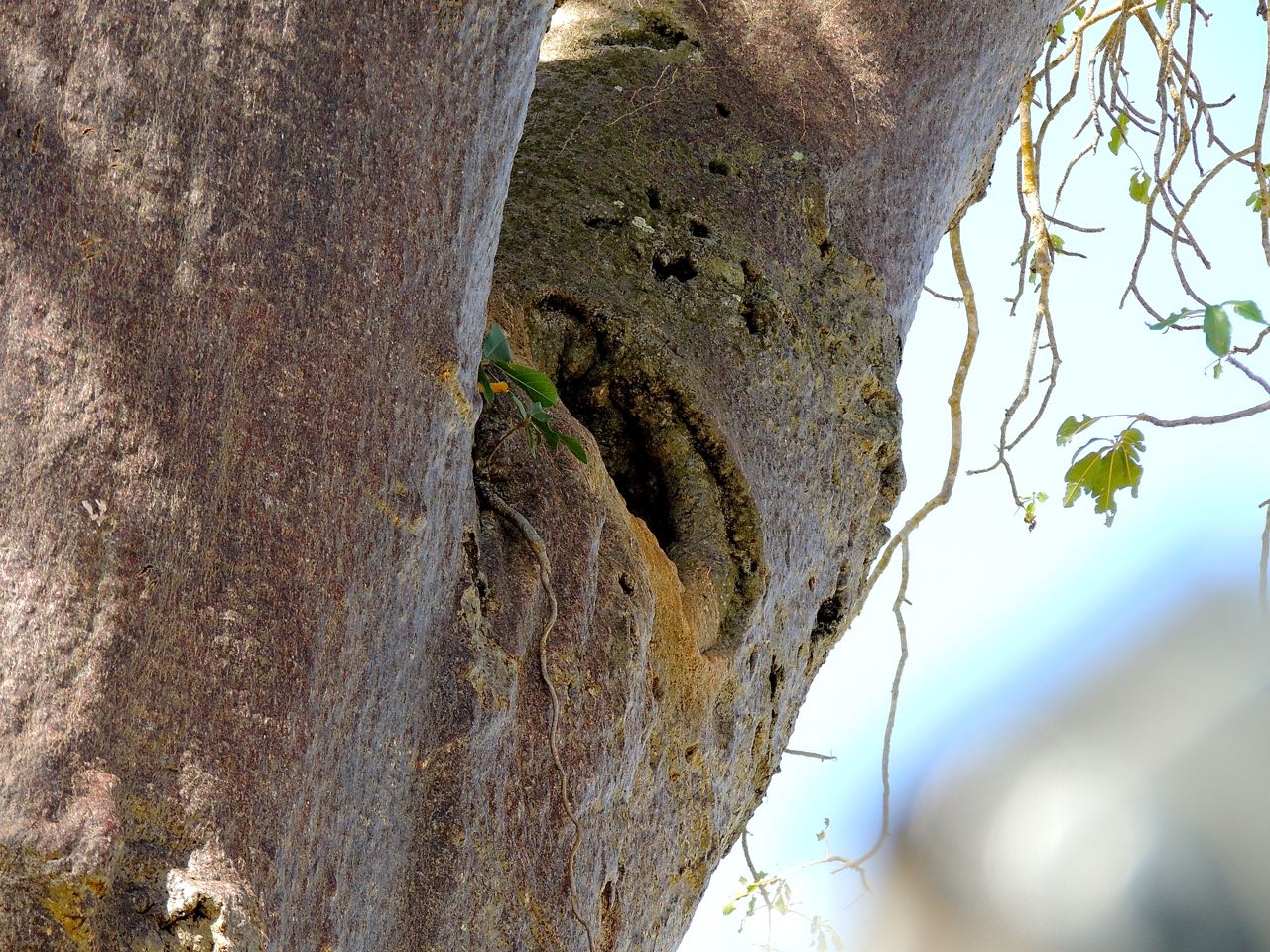 Southern Ground-Hornbill Nest - Photo by William Young
Southern Ground-Hornbill Nest - Photo by William Young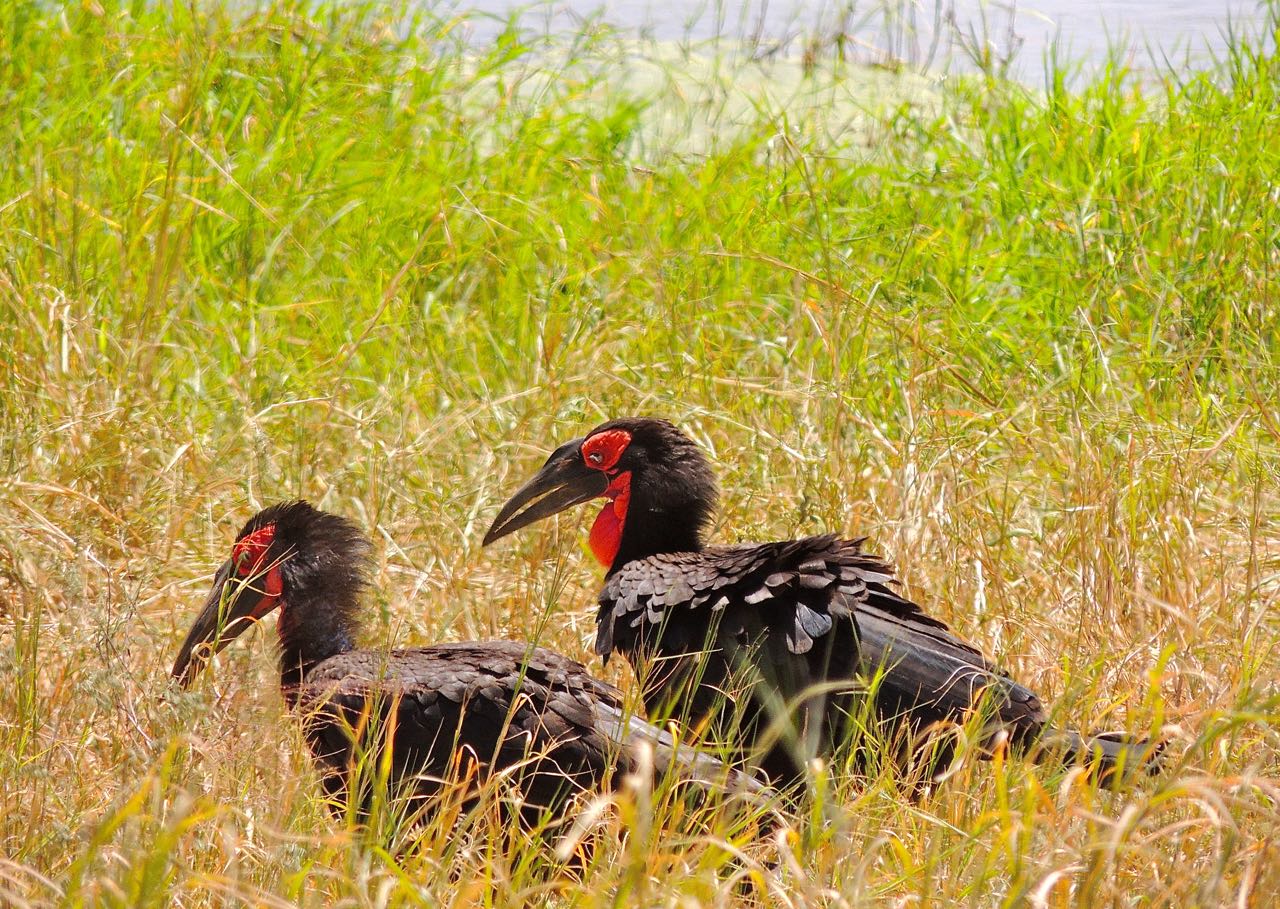 Southern Ground-Hornbills - Photo by William Young
Southern Ground-Hornbills - Photo by William Young
HornbillsHornbills were one of my favorite families of Tanzanian birds. We saw them throughout the trip, and we saw at least 12 of each of the six species we encountered, and at least 20 of five of them. They sometimes were in groups, and I watched as they interacted with each other. The African Grey Hornbill was the most common. We saw an estimated 76 on nine days. We saw them on the first full day of our safari and heard them at Angalia the morning we left to drive back to Dar es Salaam. They were quite noisy at that campsite. The males are gray-brown birds with a white belly, a very long supercilium, and a small white triangle at the base of their long curved bill. The female is similar, but has a pale bill with red at the tip. Von der Decken's Hornbills were common at the Naitola campsite. The male reminded me of a classical musician at a concert. He had a black back (suit coat), white underparts (dress shirt), some bare red skin on the throat (bow tie), and loose white feathering on the head (flowing white hair). Bare black skin is around the dark eye. The bill is bright red, with the front third being cream-colored. The females are similar, but their bills are uniformly dark. The Red-billed Hornbill looks similar, but is sleeker. The male has a solid red bill. They were also at Naitola. I saw 21 on five days. The closest look I had was of two on the ground at the entrance to the park at Mkomazi.
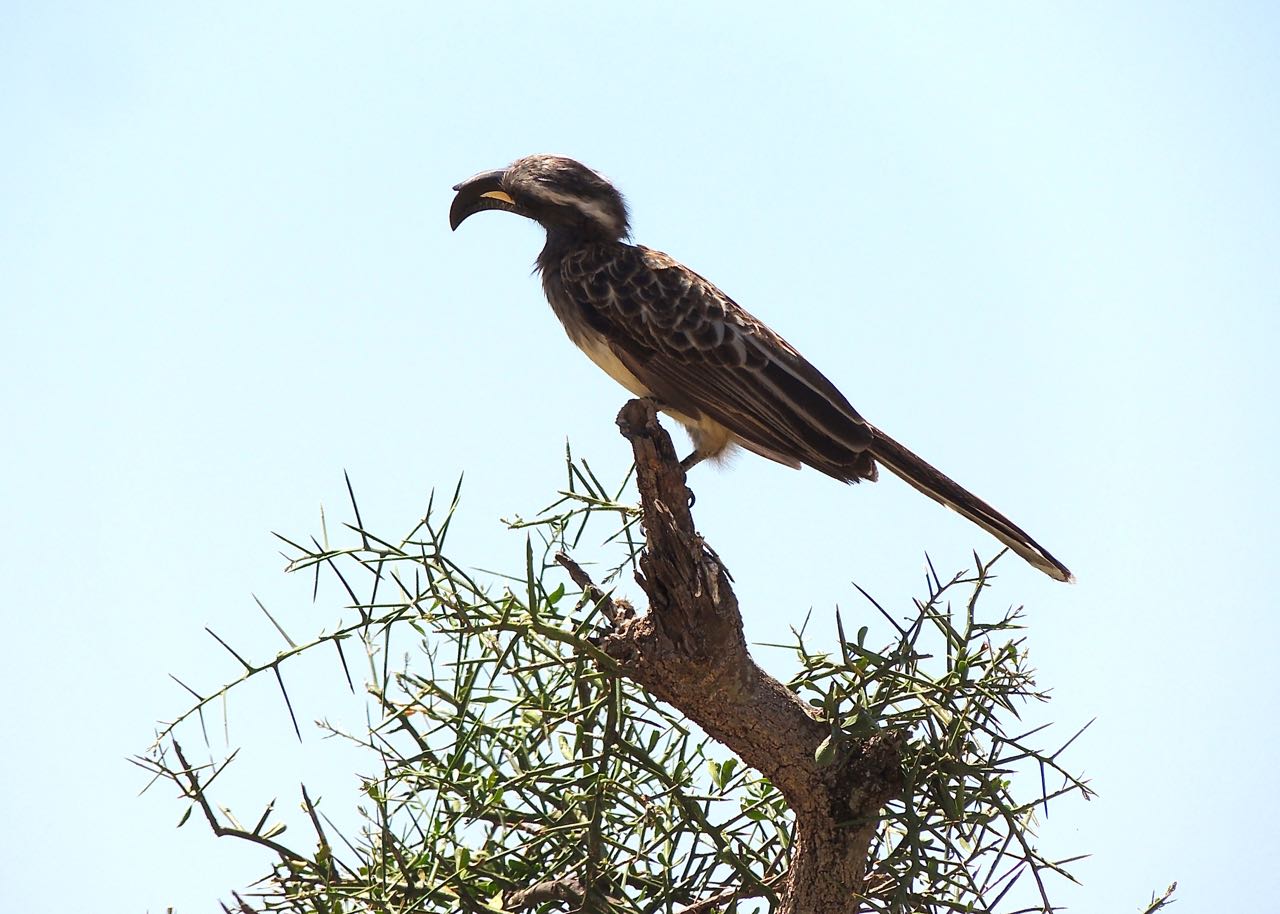 African Grey Hornbill - Photo by William Young
African Grey Hornbill - Photo by William Young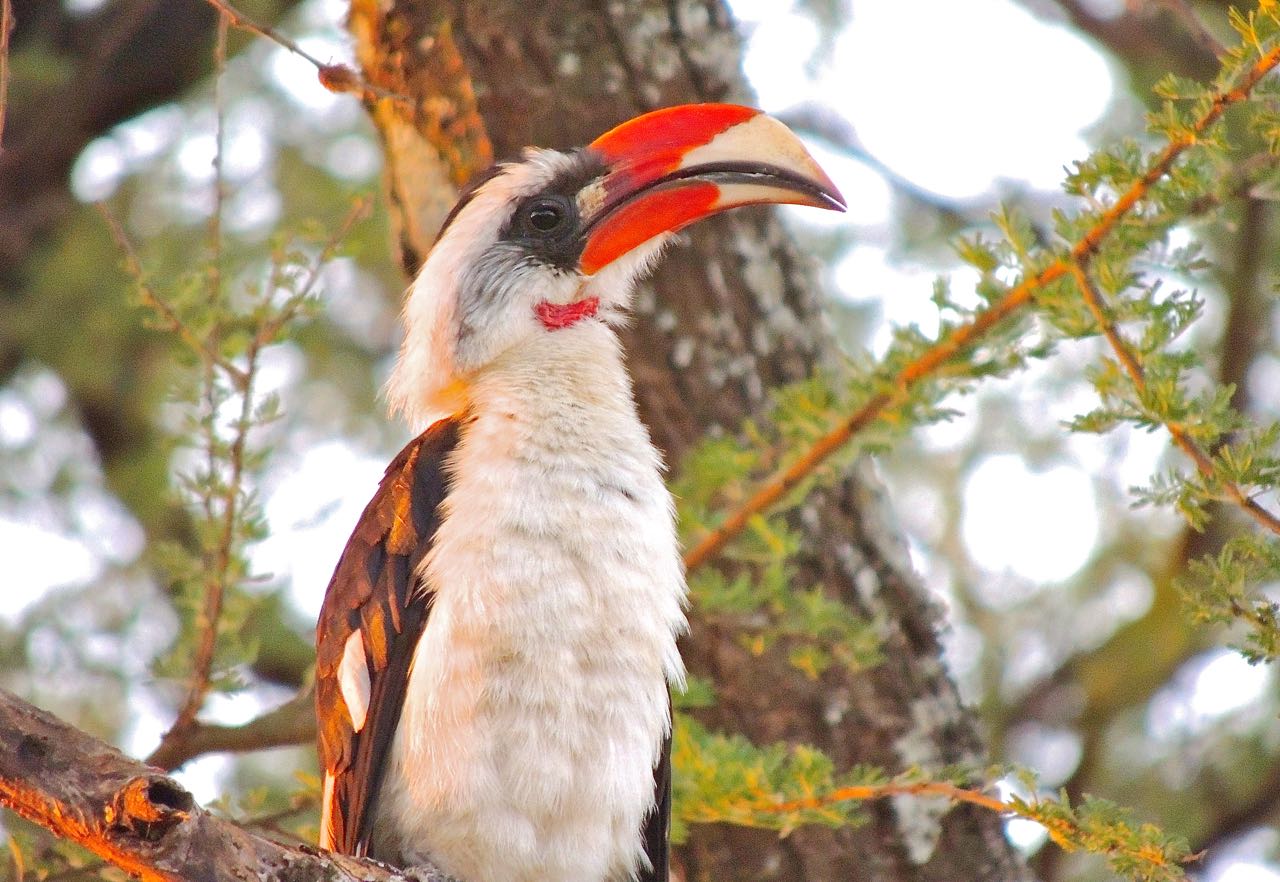 Von der Decken's Hornbill - Photo by William Young
Von der Decken's Hornbill - Photo by William Young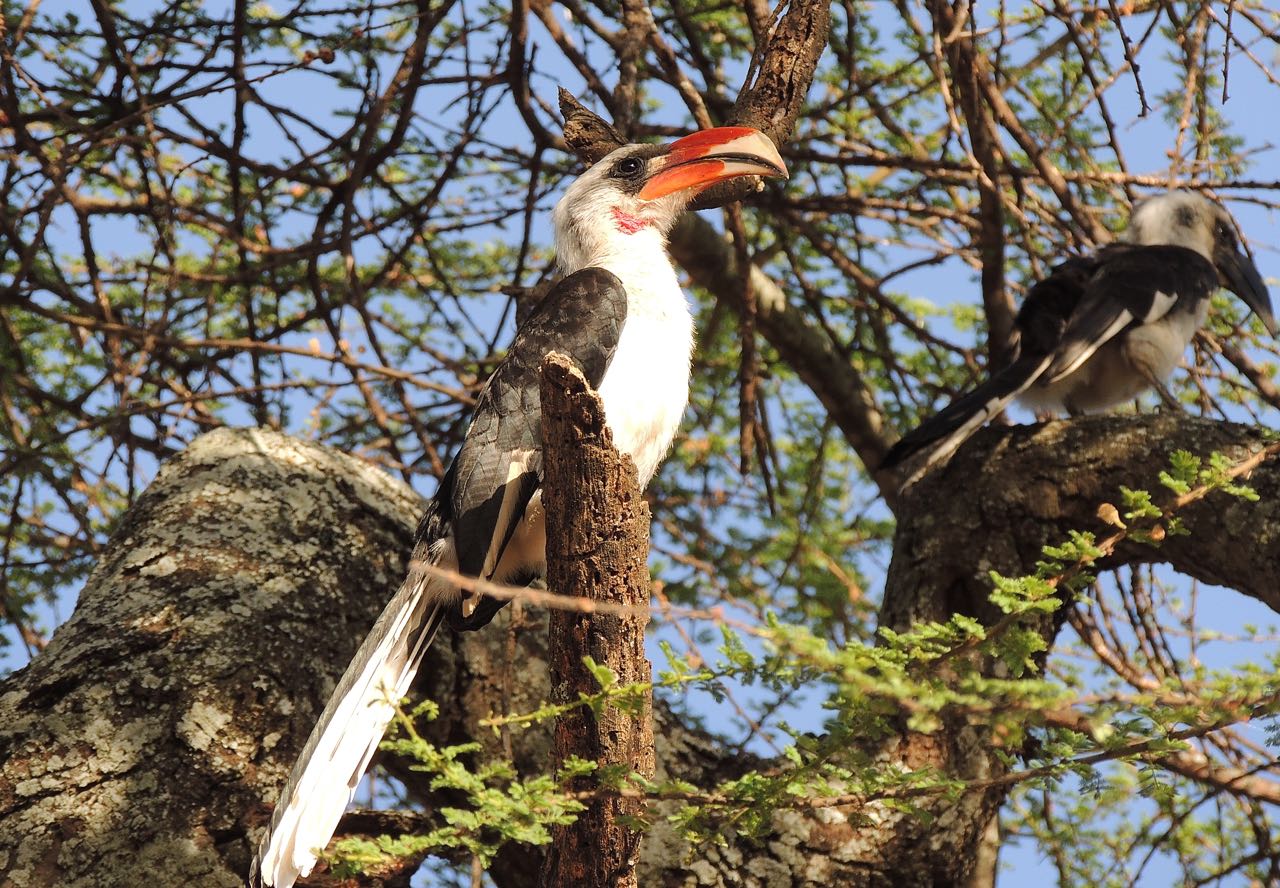 Von der Decken's Hornbills - Photo by William Young
Von der Decken's Hornbills - Photo by William Young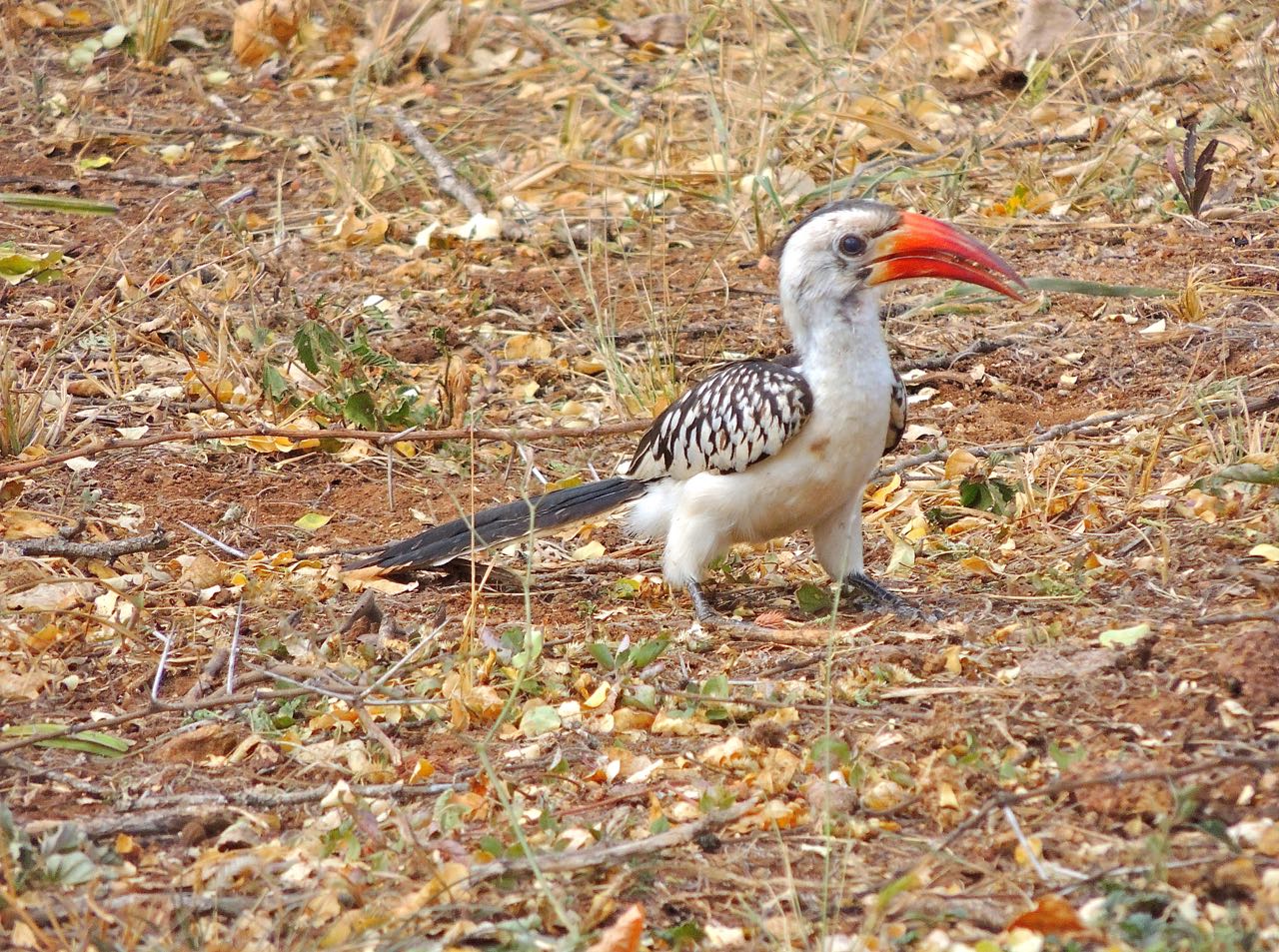 Red-billed Hornbill - Photo by William Young
Red-billed Hornbill - Photo by William YoungI had a great look at a Crowned Hornbill at Lake Manyara. It is black with a white belly, a yellow eye, and a long curved bill with ridges. We saw 12 on four days, with the greatest numbers being in Udzungwa. We missed seeing a pair of Silvery-cheeked Hornbill while eating breakfast at Dindira, because there was a canvas overhang that prevented us from seeing up into the tree where the birds were. When we got to Amani, they were all over the place. We ended up seeing 49, most of them at Amani. They are large and black, with broad white tips on their tail feathers. The bill is light brown, with a huge tan casque on top that looks a bit like a boomerang. If one looks closely, one can see silvery specks on the cheeks. We saw 20 Trumpeter Hornbills on three days, with 15 on one day in Udzungwa. They look like the Silvery-cheeked, but they have more white on the belly and less white on the tip of the tail feathers. The Trumpeter Hornbill sounds like it is playing a tin trumpet. A group of Silvery-cheeked Hornbills sounds like the Temple City Kazoo Orchestra warming up.
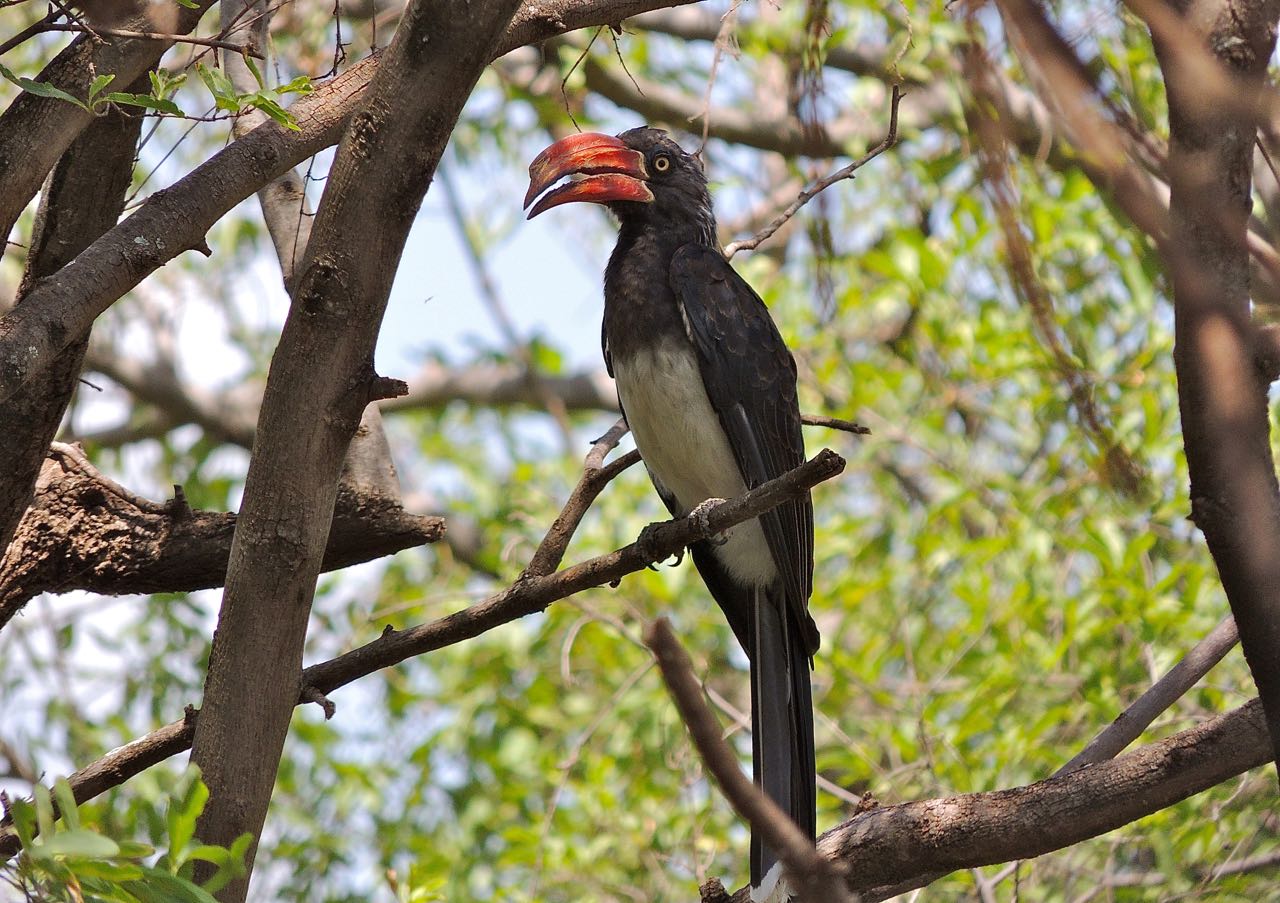 Crowned Hornbill - Photo by William Young
Crowned Hornbill - Photo by William Young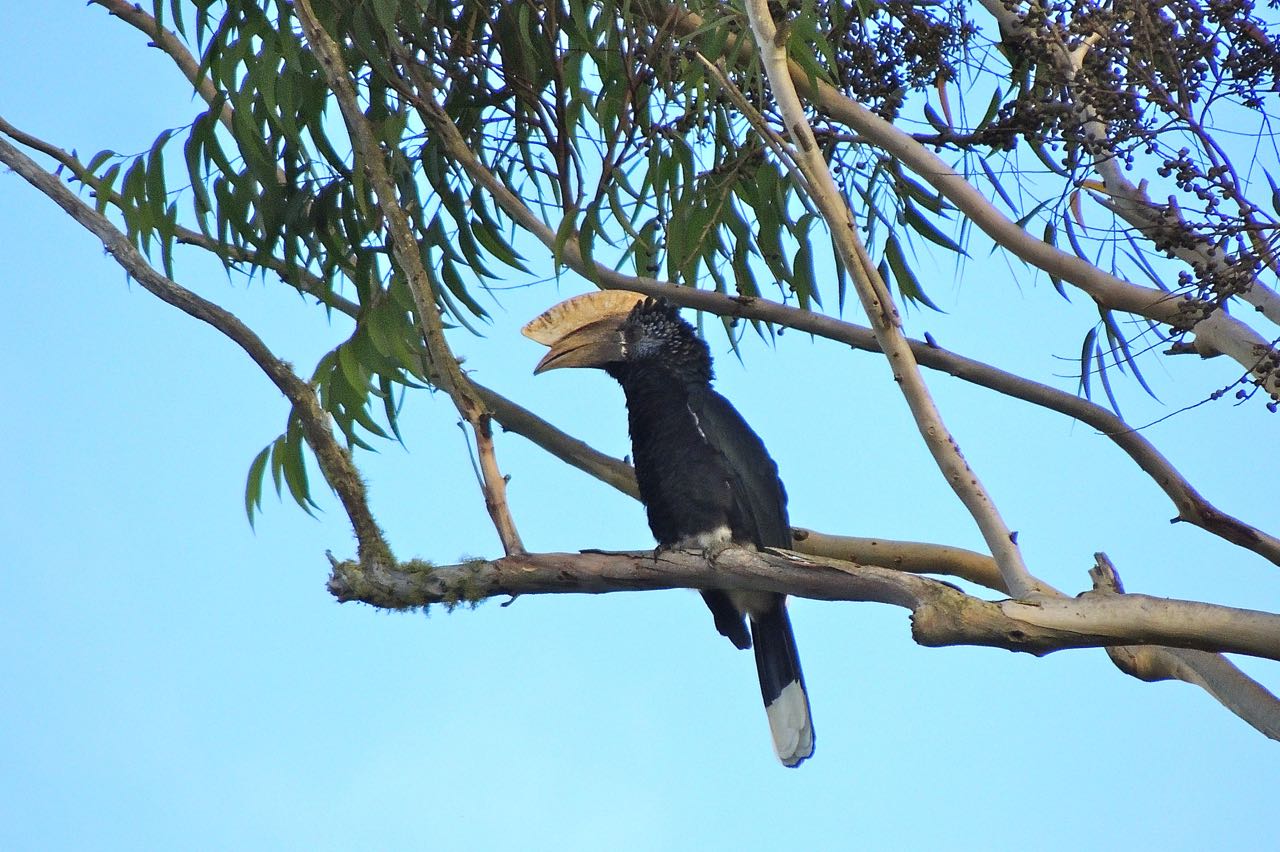 Silvery-cheeked Hornbill - Photo by William Young
Silvery-cheeked Hornbill - Photo by William Young
African BarbetsWe saw nine species of barbets and heard another. We heard Red-fronted Tinkerbirds near the Arusha campsite, but we never saw one. They sound like Saw-whet Owls. On the lawn at Serenity, we saw a pair of Red-and-yellow Barbets, the species on the cover of the Stevenson field guide, but we saw no others for the rest of the trip. The D'Arnaud's Barbet and Usambiro Barbet used to be part of the same species. They look alike, except that the D'Arnaud's has a light bill, and the Usambiro has a dark bill. Near the entrance to Mkomazi, we saw a D'Arnaud's, and its stripy appearance reminded me of the Barred Antshrikes I saw in the Neotropics. It held its tail at nearly a right angle when it was perched. We saw a couple of Usambiro Barbets in the Serengeti. As we were preparing to leave the Mbalageti Luxury Camp, I spotted a Spot-flanked Barbet in a tree near our vehicle. It is black-and-white, with a broad white supercilium, a black vee on its throat, and spots on its flanks. We saw a couple more in the same trees. Their black wing feathers have yellow edges. Of the four Red-fronted Barbets we saw, three were near our campsite at Ndutu. They have a big white supercilium, red on their forehead, and very busy plumage. We saw some going in and out of a nest hole. At Amani, we saw a few Yellow-rumped Tinkerbirds, who are a lot smaller than most Barbets. They are only about four inches, with a black cap, parallel white lines enclosing a black cheek, and a wide bill. We saw 32 Green Barbets over three days at Amani. They are all green and sound like a Gray Squirrel in the US, uttering a long series of chopping sounds. We saw 19 White-eared Barbets at Amani, who are mostly brown, with a wide supercilium that looks as if it were drawn with an unsteady hand. We also saw eight in Arusha National Park. In the same trees were Brown-breasted Barbets, who have bright red heads and a clean wide brown band on the breast. We saw six interspersed with the eight White-eared Barbets.
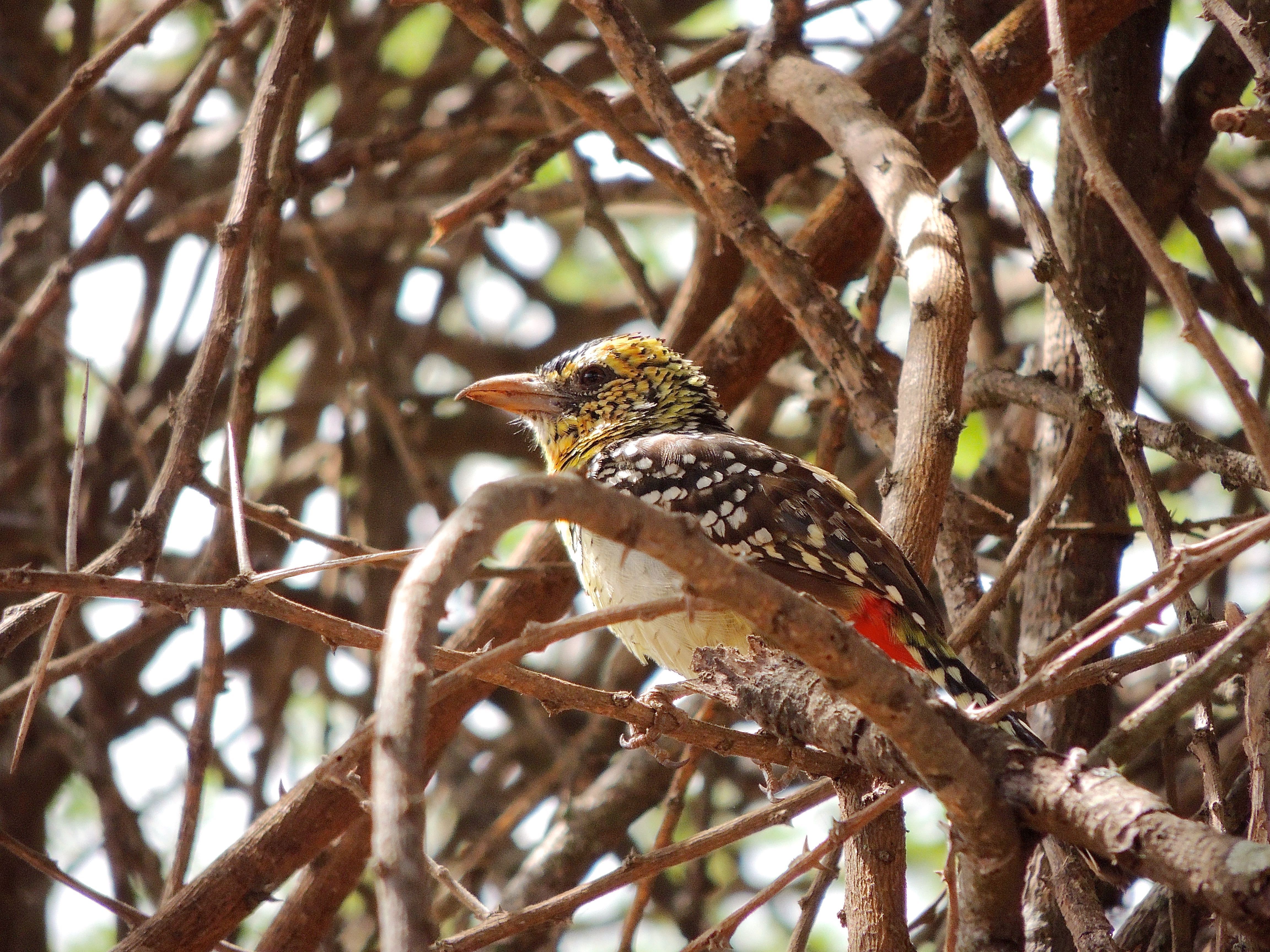 D'Arnaud's Barbet - Photo by William Young
D'Arnaud's Barbet - Photo by William Young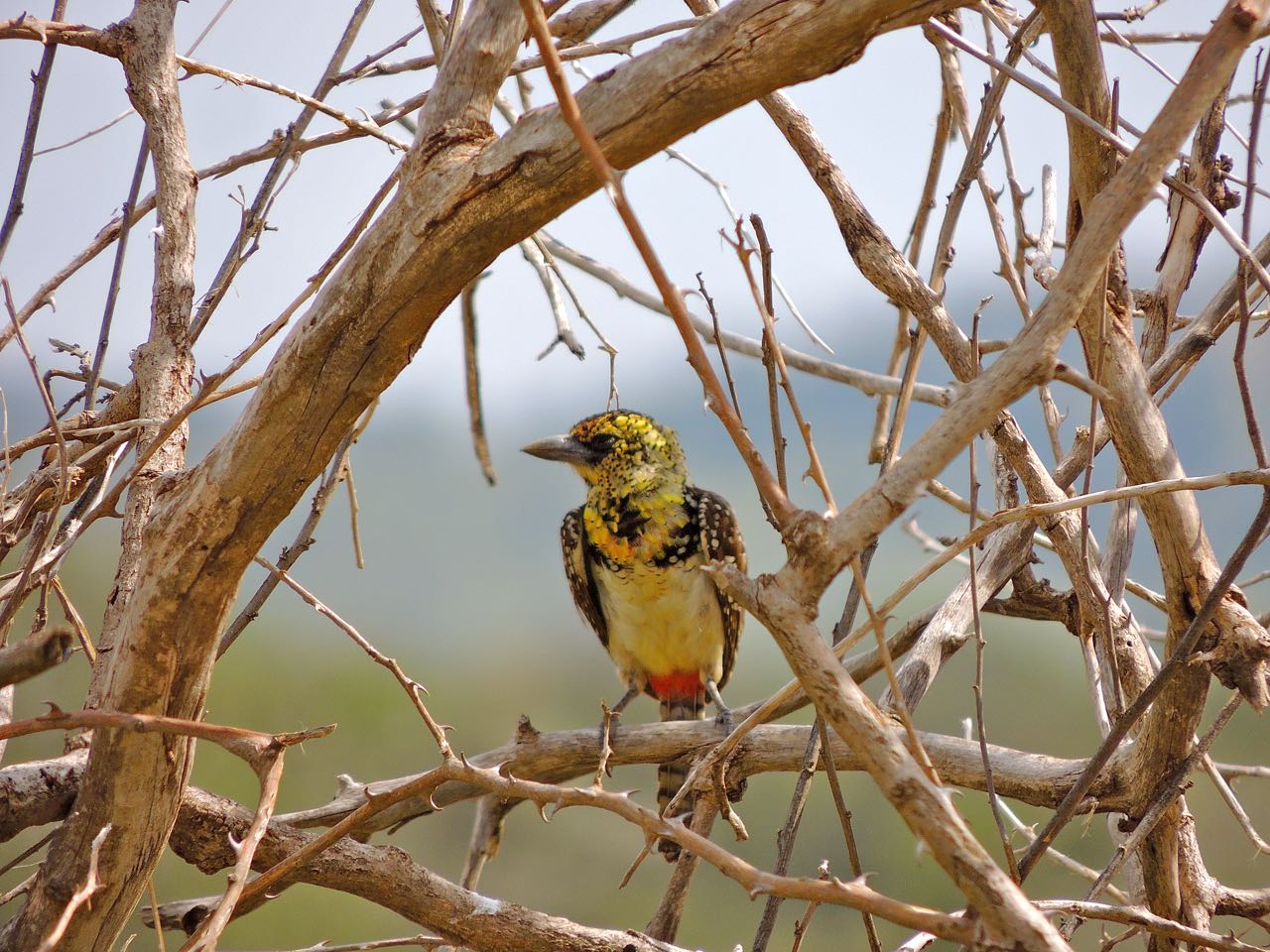 Usambiro Barbet - Photo by William Young
Usambiro Barbet - Photo by William Young
HoneyguidesMartin saw a Brown-backed Honeyguide at the Momela campsite, but I did not see it.
WoodpeckersWe saw only eight woodpeckers from three species on the trip. We saw a female Grey Woodpecker at Simon King's house in Arusha. It has red on the rump and belly. We also saw one well on the boat ride on Lake Victoria. The male has a red head. When we stopped to repair our vehicle on the day we spent in the Serengeti, we saw a Cardinal Woodpecker, who is small, with a red cap and a patterned back. Near the entrance to Mkomazi, we saw another who was excavating a nest hole. We could see dark streaking on its belly and cheeks. Nearby, we saw a Nubian Woodpecker, who has a streaked olive back and spots on the breast.
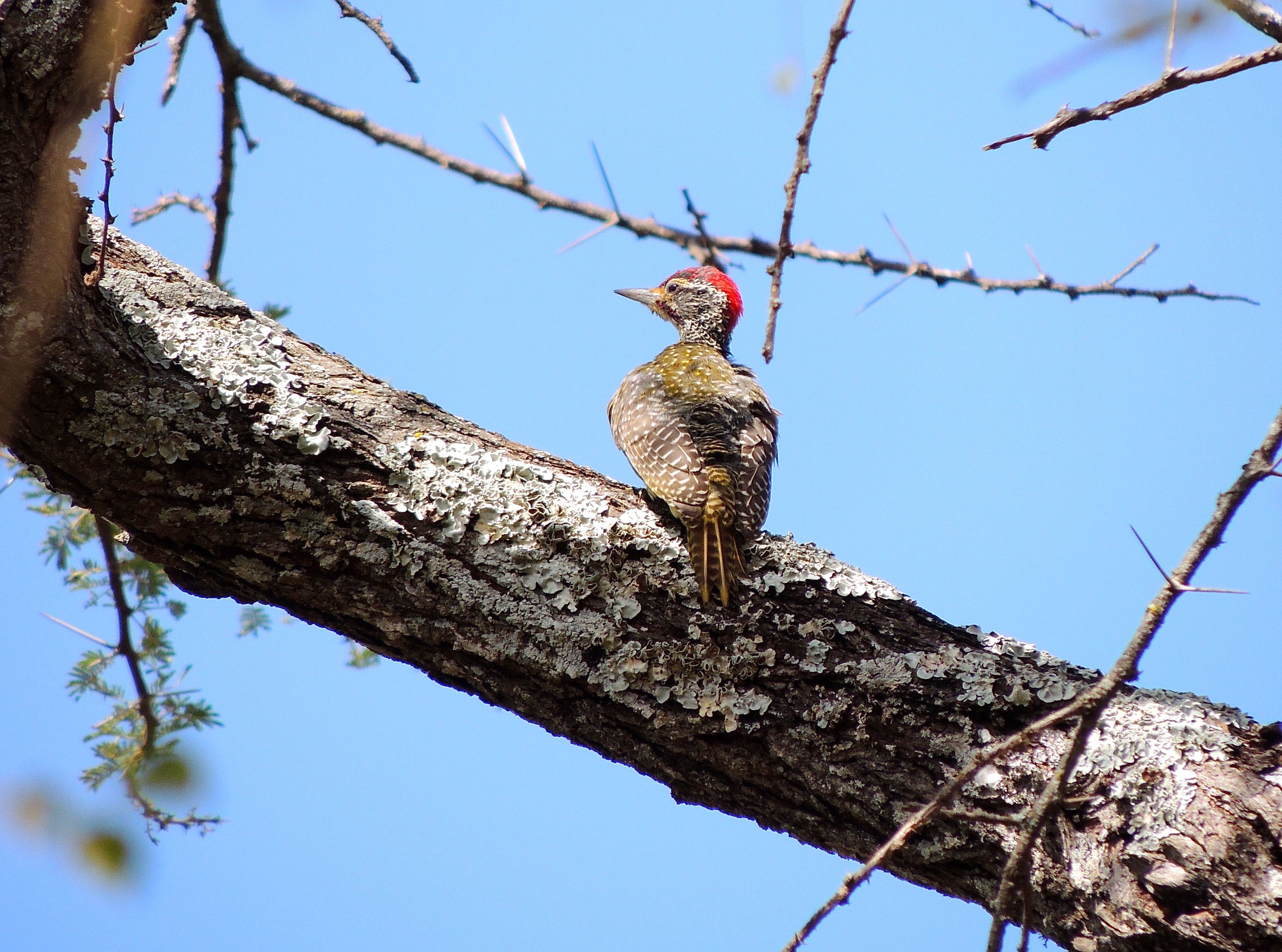 Cardinal Woodpecker - Photo by William Young
Cardinal Woodpecker - Photo by William Young
African BroadbillsWe saw one African Broadbill at Amani. It is a small brown-and-white bird about the size of a sparrow, but chunkier. While walking through the forest that day, we heard their call, which sounds like a high-pitched croak.
LarksWe saw six species of larks, with five seen fewer than ten times and on three-or-fewer days. Larks tend to stay on the ground and be well camouflaged, so they can be difficult to see. The unquestioned star from this group was the Beesley's Lark. It is an endemic confined to a very small area near Arusha. We went to a large expanse of land operated as a Beesley's Lark Conservation Area. The Beesley's used to be considered part of the same species as the Spike-heeled Lark. Only about a thousand of them exist. A Maasai accompanied us in the search for them. It took about 90 minutes of walking though dry, overgrazed land that had a lot of topsoil blowing around. I wore a surgical mask, and it turned brown, both inside and out. In this area, we could see Mount Kilimanjaro, which had snow on it; most of the top was covered by clouds. Looking in another direction, we saw Mount Meru, which looked more impressive. We found about seven Beesley's Larks. They have a pattern on their back that looked as if it has white grout between brown tiles. They stand upright and have rufous underparts. The tail is short, and there is striping on the throat.
Beesley's Lark - Photo by William YoungOne of the easiest larks to identify is the Red-capped Lark. We saw nine on three days. They stand erect and have a bright rufous beret. When we drove toward Ngorongoro, we saw a few Rufous-naped Larks, the only larks found at that 7,000 foot altitude. We saw another at Ngorongoro and worked out the identification from the tan underparts and the face pattern. We saw three Fawn-colored Larks in the Serengeti. They have a white supercilium, a black eyeline, and rufous on the part of the wings adjacent to the flanks. At the parking area when we went to see the Beesley's Lark, a Singing Bushlark was at the top of a nearby bush. We also got a good look at one near the campsite at Ndutu. It has a white supercilium that connects with a lower white line to form a brown ear patch. The Fischer's Sparrow-Lark was far and away the most common lark species we saw. The male looks like a Passer sparrow, with a big white ear patch surrounded by black. The crown and nape are chestnut. We saw an estimated 283 on nine days. Most were seen in the portion of the trip between the park at Ndutu and our visit to Lake Manyara. They are small birds who flit in the brush and the dust. We sometimes saw them in the road ahead of us, but they generally were in fields and did not provide close looks.
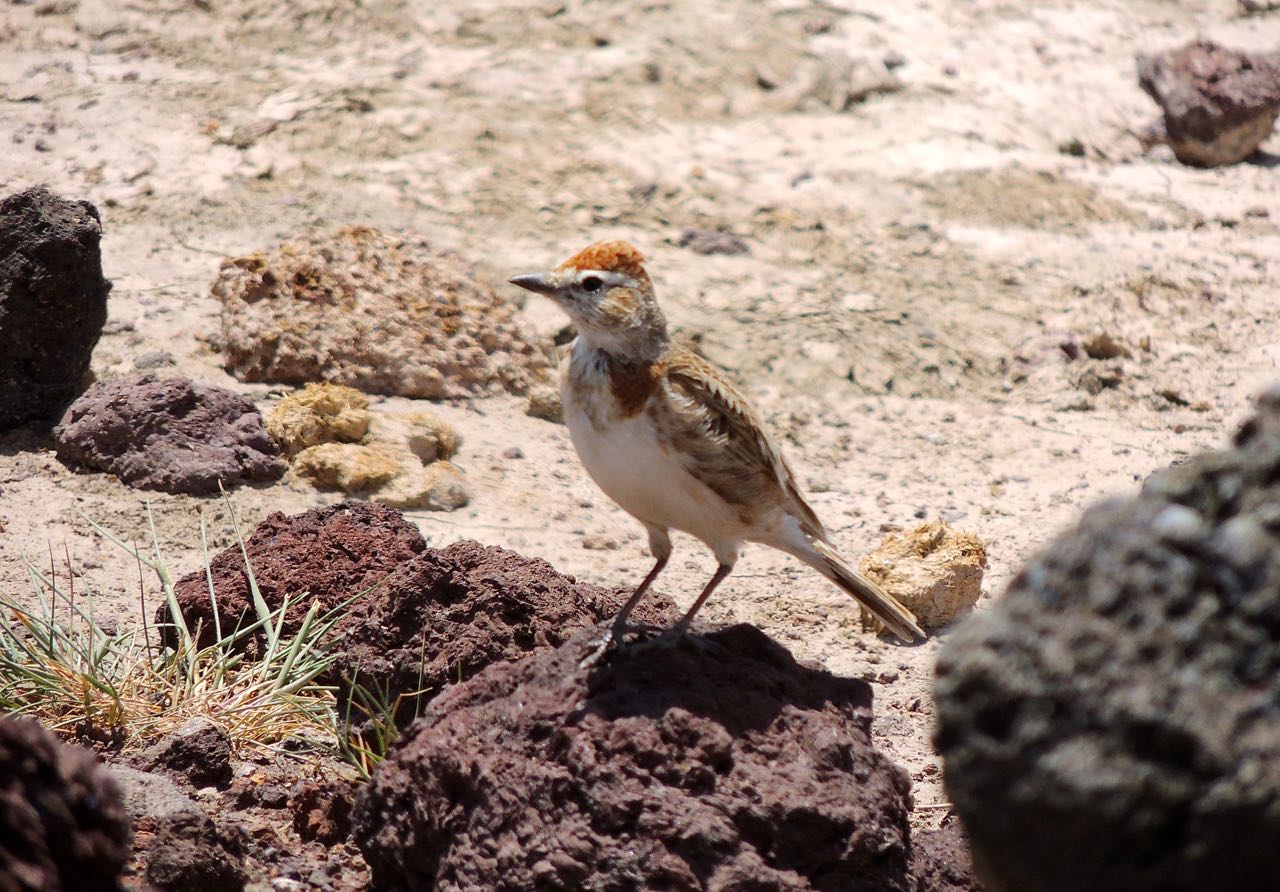 Red-capped Lark - Photo by William Young
Red-capped Lark - Photo by William Young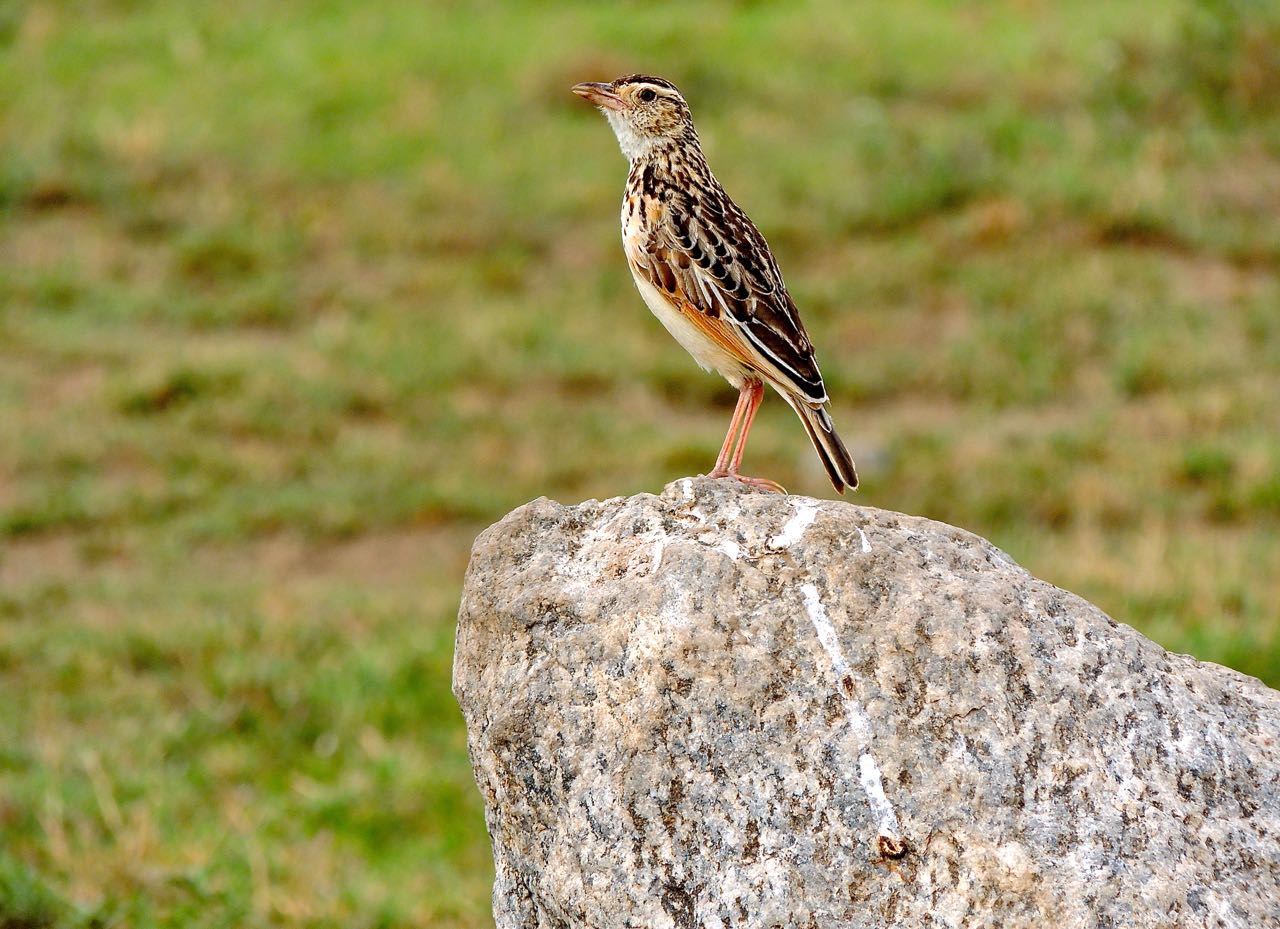 Fawn-colored Lark - Photo by William Young
Fawn-colored Lark - Photo by William Young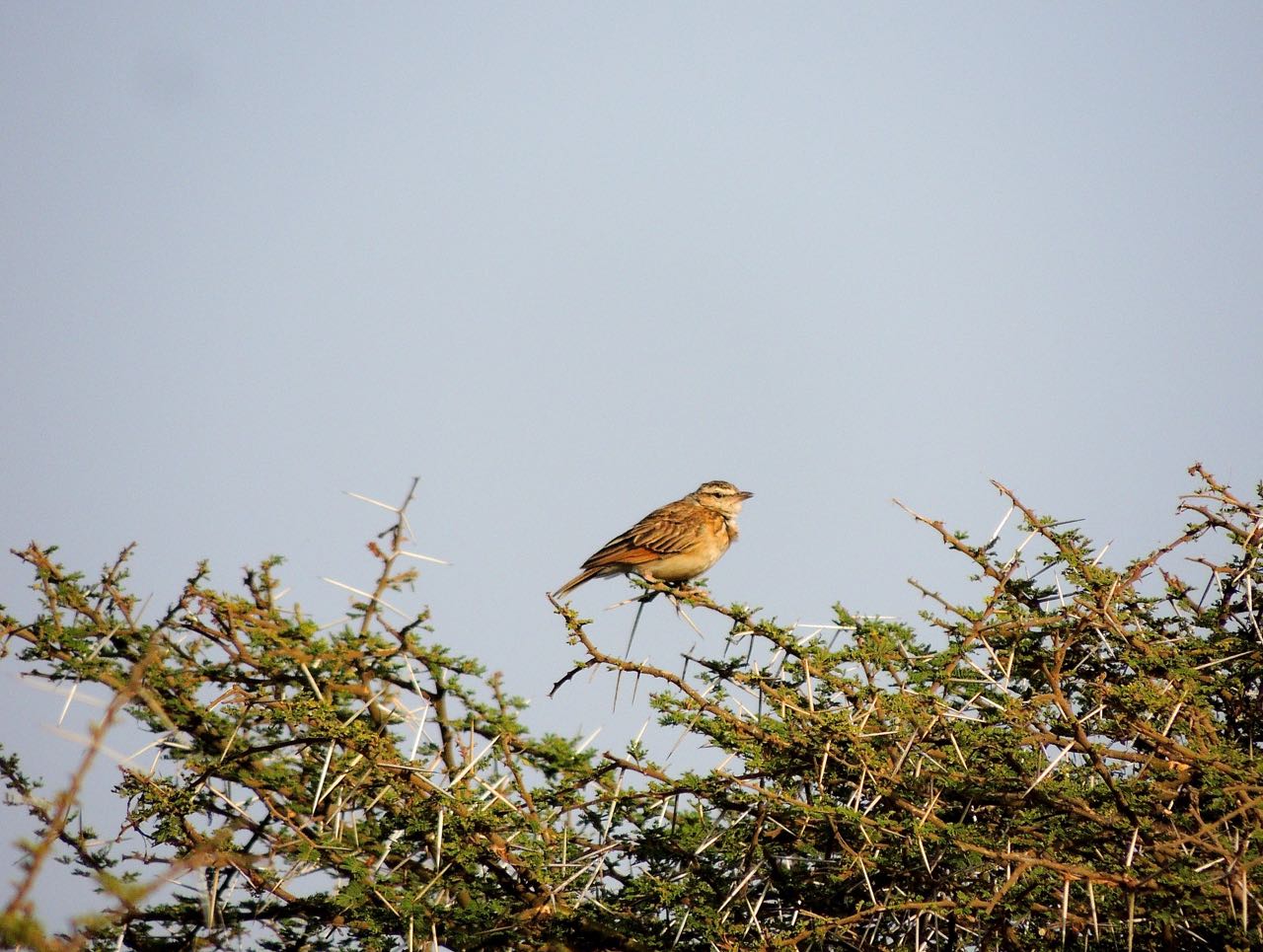 Singing Bushlark - Photo by William Young
Singing Bushlark - Photo by William Young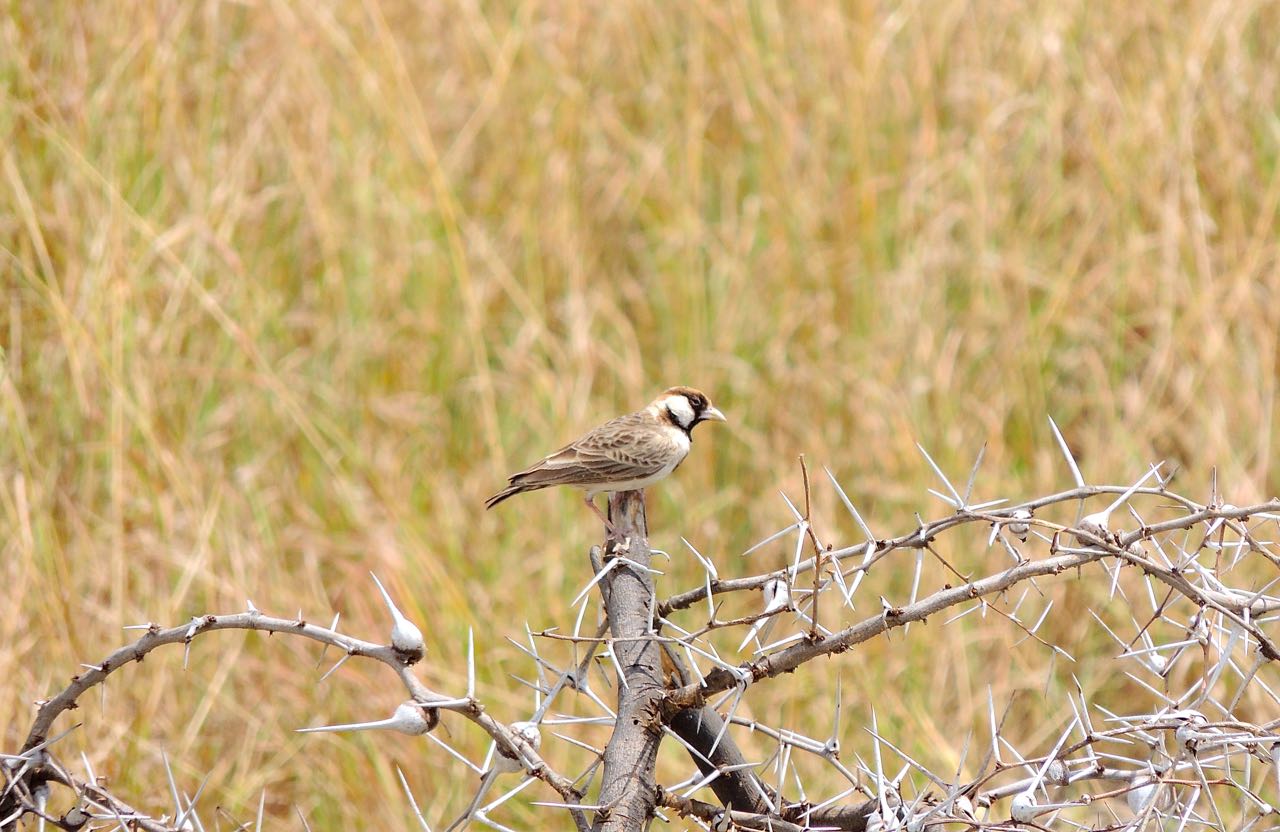 Fischer's Sparrow-Lark - Photo by William Young
Fischer's Sparrow-Lark - Photo by William Young
SwallowsSwallows can be difficult to identify, because many look alike, but one seldom gets a chance to take long looks at them. Most views are of birds flying quickly while hawking insects. Of all the birds we saw, Barn Swallows were seen on the greatest number of days and in the greatest numbers. Tanzanian Barn Swallows looked whiter below than the Barn Swallows near where I live in Virginia. When we were returning to Serenity from our boat trip on Lake Victoria, we saw about 10 Angolan Swallows mixed in with a swarm of Barn Swallows. Their tail is less deeply forked, and they look grayer below. A few Mosque Swallows were flying near the park entrance at Ndutu. They look like Barn Swallows with reddish brown underparts and a similarly colored rump. We saw 82 Red-rumped Swallows on seven days. Some perched in a tree near the entrance gate at Ngorongoro, and a lot flew around the campsite at Naitola. They have an all black undertail, rufous underparts, and rufous underwing coverts. The only Lesser Striped Swallow of the trip was perched near the entrance gate at Mikumi. It has a brown cap and heavy streaking below. We also saw a couple of Wire-tailed Swallows there, but I had better looks at some while we walked along the road outside Hondo Hondo. They have a brown cap, a blue back, and appear very white below. The long wire extensions on the tail are so thin that they can be difficult to see. We saw nine in three days, all at Amani.
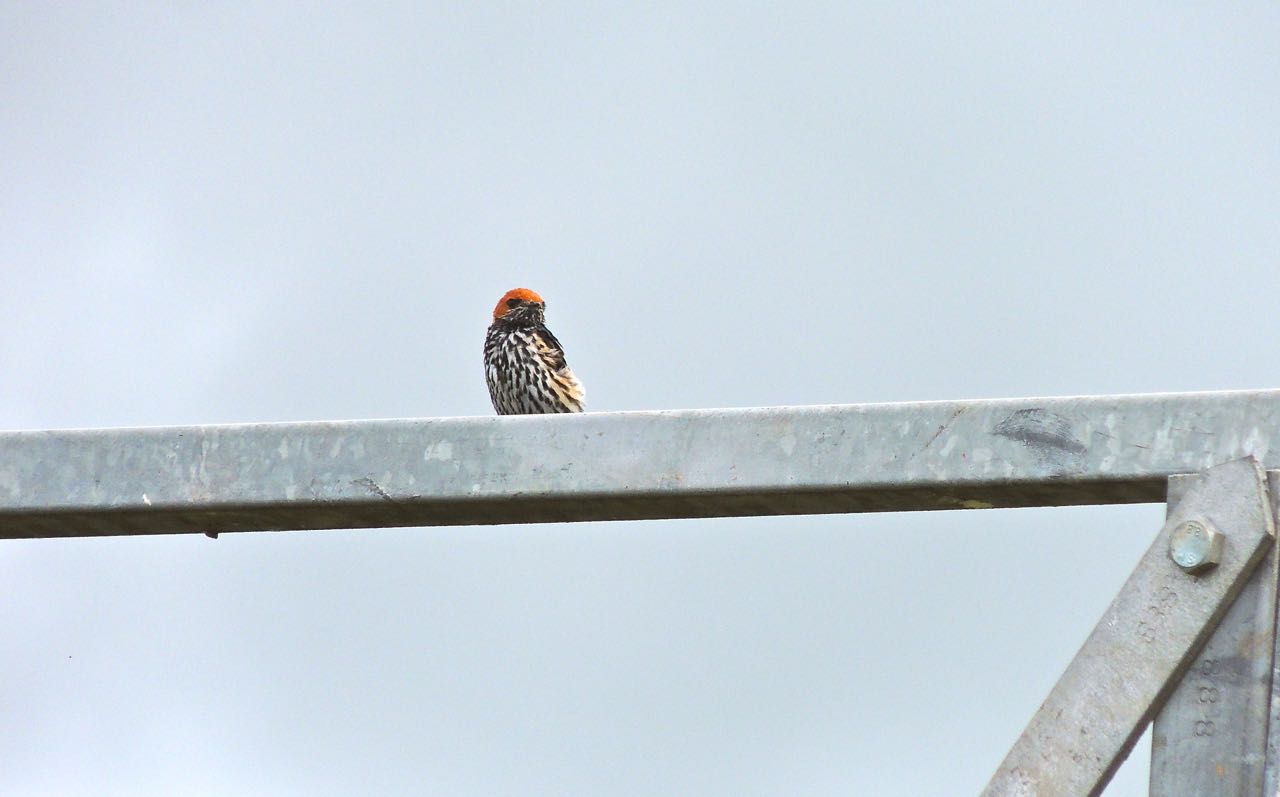 Lesser Striped Swallow - Photo by William Young
Lesser Striped Swallow - Photo by William YoungThe Black Saw-wings are handsome birds, considering they are all one color. They have long curved wings and swoop with panache. Rock Martins are also all dark, but they are more chocolate brown than black. Their tail is shorter and has only a slight fork, and they look chunkier than the saw-wings. We saw 52 on seven days, with the greatest number around the campsite at Ndutu. Martin, appropriately, was very good at identifying some of the martins. At the Arusha lakes, we saw 80 Sand Martins. They are the same species as the Bank Swallow in North America. They have a clean brown breastband and short tail. The next day in the same place, we saw 15, along with 30 Plain Martins, who have a smudge of brown from the beak to breast, unlike the clean band of the Sand Martin. In the Serengeti, we saw 7 Banded Martins, who are like Sand Martins, but have a vee-shaped breastband instead of a clean one. At the Rhino Lodge, Martin pointed out some Northern House Martins, who are whitish below and have a short tail.
Pipits and WagtailsWe saw only two pipit species on the trip. We saw 16 Grasveld Pipits on five days. Eleven were at the Ndutu campsite, and the other four were at the Beesley's Lark area. They have a white throat, white supercilium, and a trace of rufous on the flanks. The eye is dark, and the bill is two-toned, with the upper mandible being dark and the lower yellow. On our day in Dar es Salaam, we saw a female Golden Pipit perched on a wire. A small black mark on the wing is a useful fieldmark. She was otherwise brown on back and yellowish underneath.
 Grasveld Pipit - Photo by William Young
Grasveld Pipit - Photo by William Young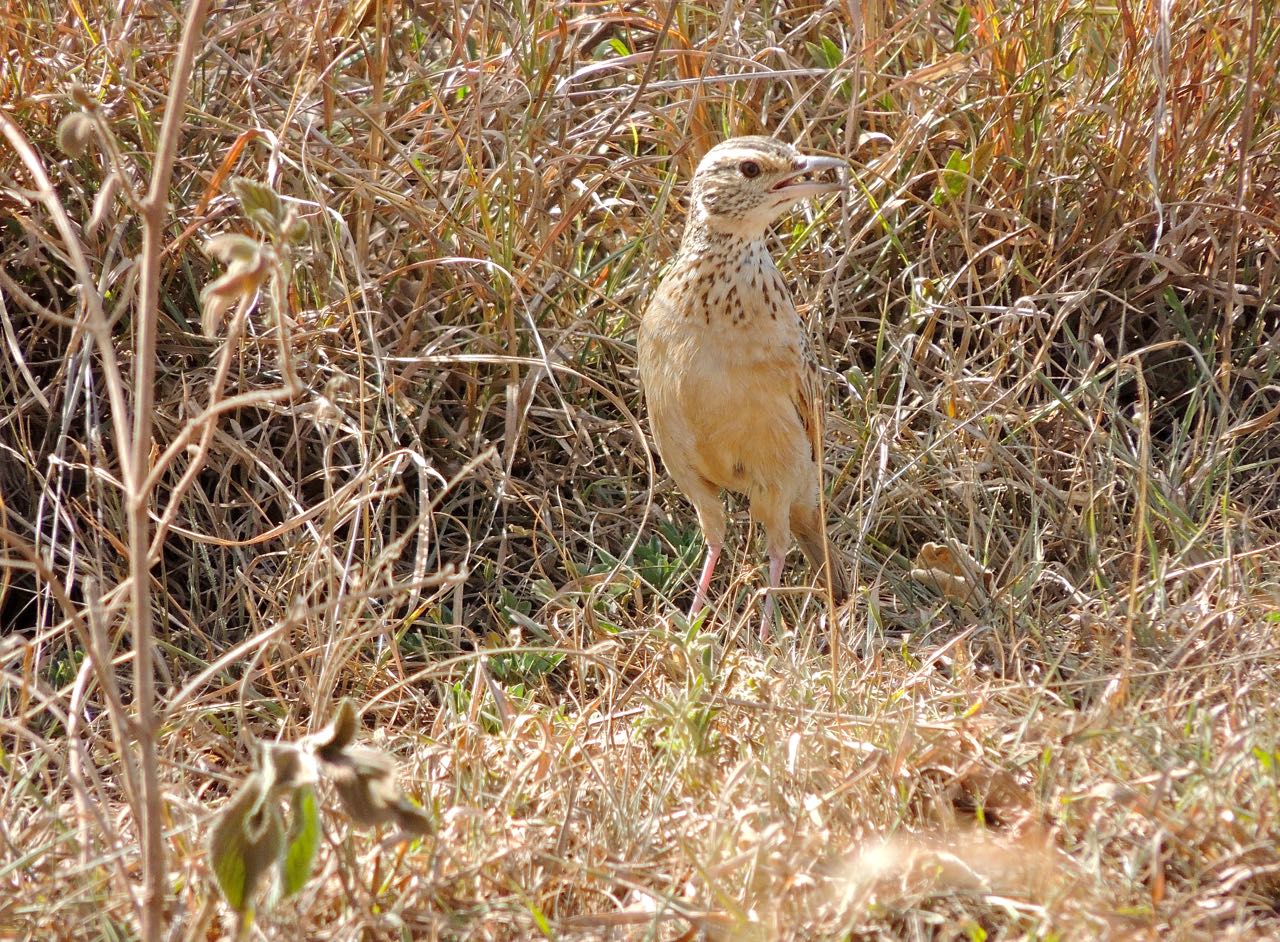 Grasveld Pipit - Photo by William Young
Grasveld Pipit - Photo by William YoungThe longclaws are beautiful birds who look like meadowlarks. The Yellow-throated Longclaw looks like an Eastern Meadowlark. It has yellow underparts, a black vee on the breast, a brownish back, and white outer tail feathers. The meadowlark has a white supercilium and white undertail coverts, while the longclaw's are both yellow. We saw 12 in two days, all in Mikumi. The Pangani Longclaw looks similar, but its throat is much more orange, and its belly is white. We saw one at Arusha and three more around Dindira Swamp. Pangani is a coastal town in Tanzania about a hundred miles north of Dar es Salaam. The only Rosy-breasted Longclaw we saw was at Ngorongoro. It looks a lot like the Pangani, only with rose and pink where the orange and yellow are.
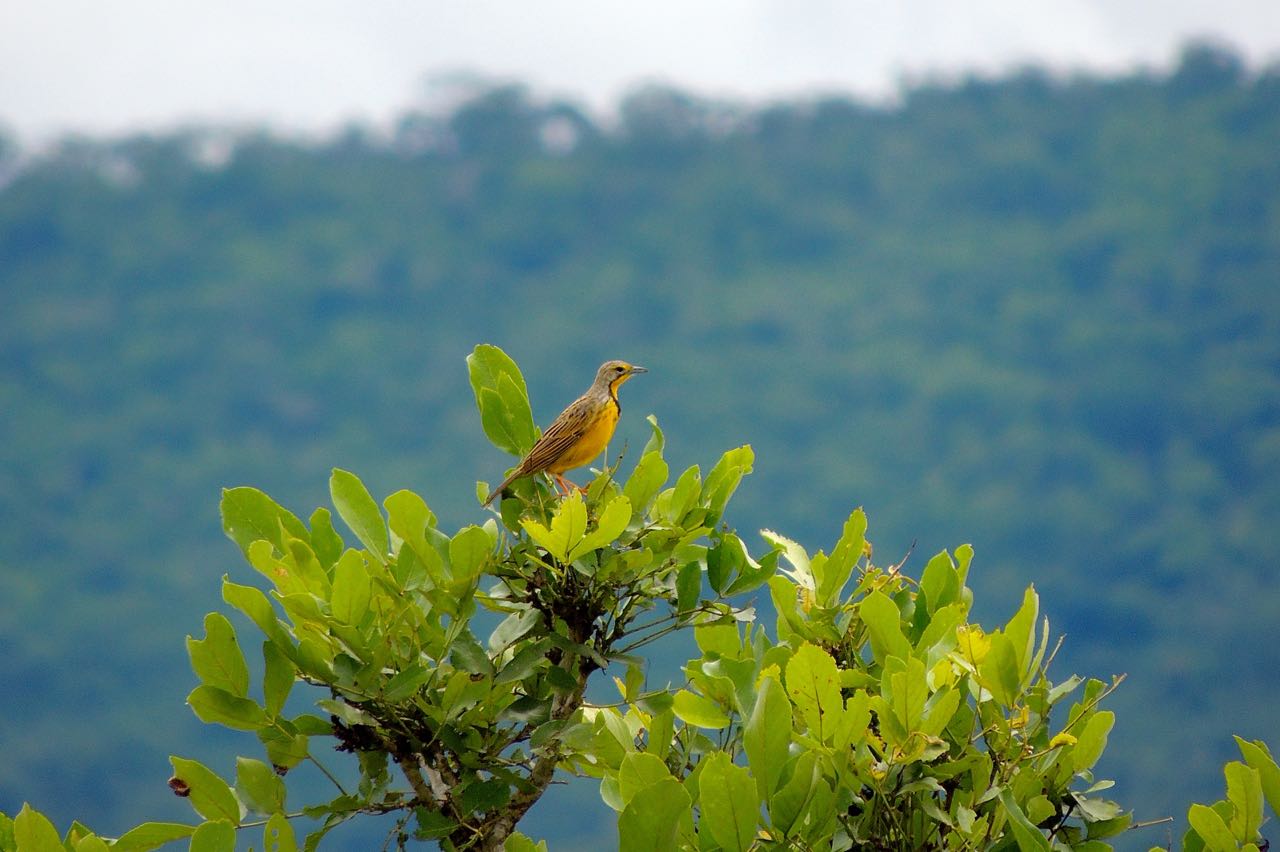 Yellow-throated Longclaw - Photo by William Young
Yellow-throated Longclaw - Photo by William Young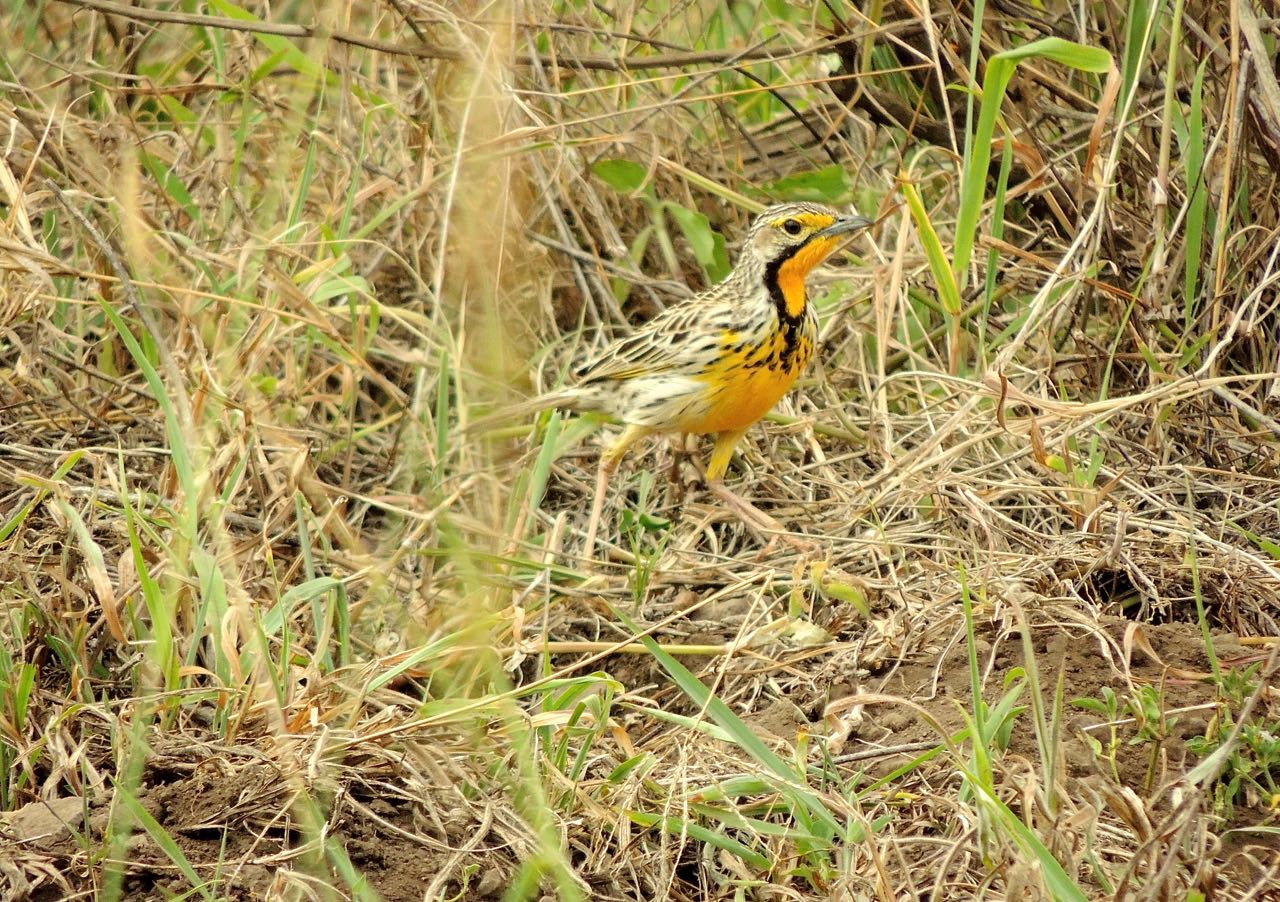 Pangani Longclaw - Photo by William Young
Pangani Longclaw - Photo by William Young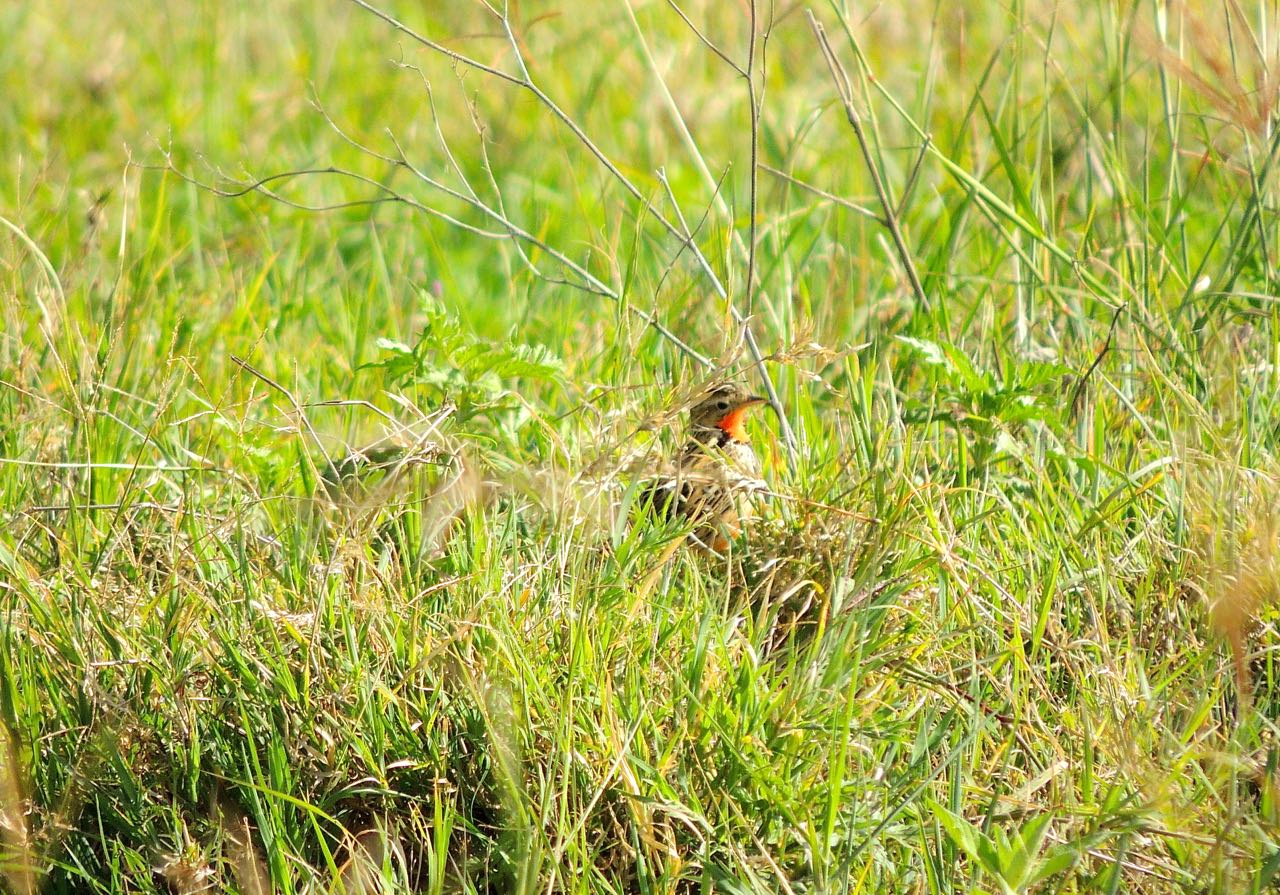 Rosy-breasted Longclaw - Photo by William Young
Rosy-breasted Longclaw - Photo by William Young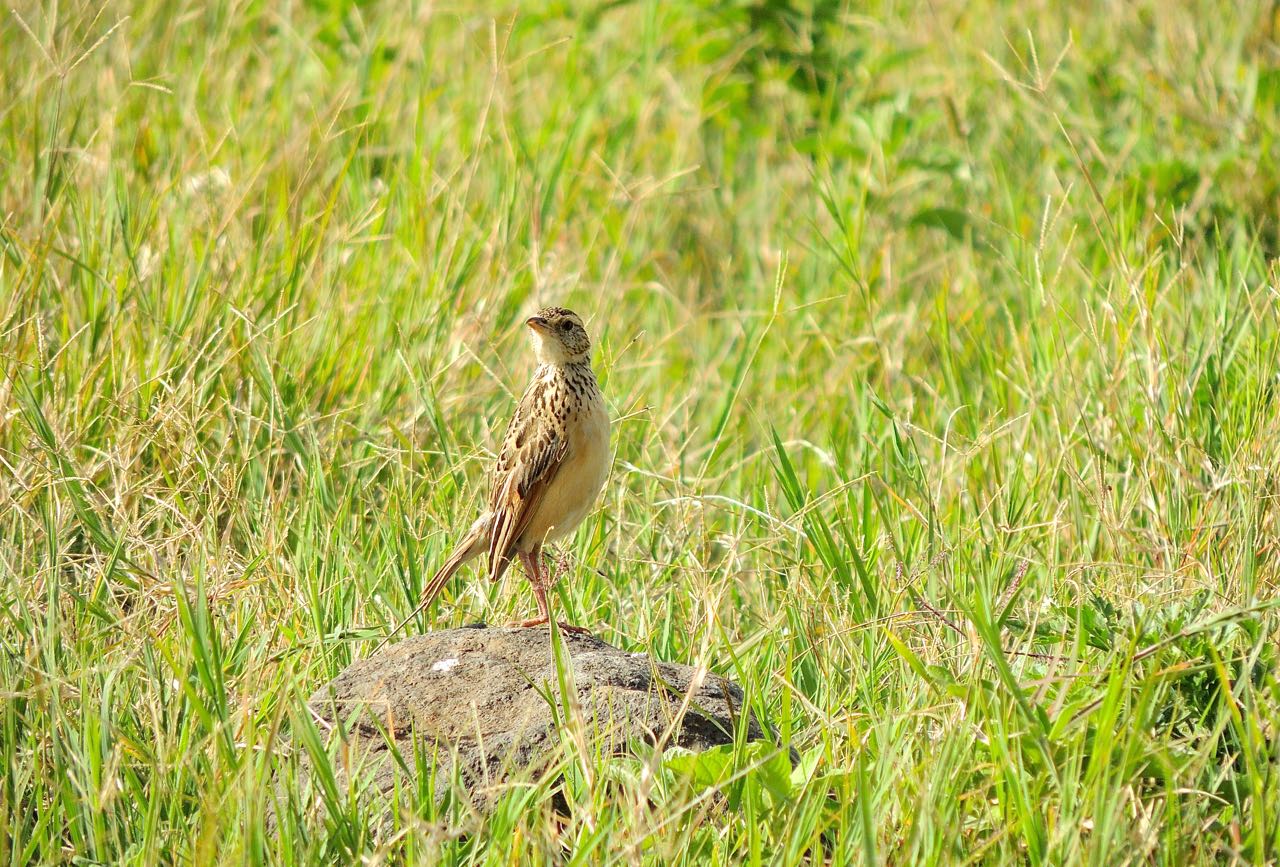 Rosy-breasted Longclaw - Photo by William Young
Rosy-breasted Longclaw - Photo by William YoungWagtails are friendly little birds who hop around in the open, wagging their tails. We saw 146 Yellow Wagtails on nine days. The greatest number was 100 at Ngorongoro. The race we saw there had a gray head, white supercilium, and yellow underparts. They were also hopping on the grounds near my room at Serenity. The ones at Dindira Swamp had a yellow head rather than gray. African Pied Wagtails were common, and we saw 71 on 8 days. They were common in the same area near my room at Serenity. They are black-and-white, with a black breastband, a white supercilium, and a white slash on the wings. In Amani, we saw a pair of Mountain Wagtails, who look like Pied Wagtails with slightly longer tails.
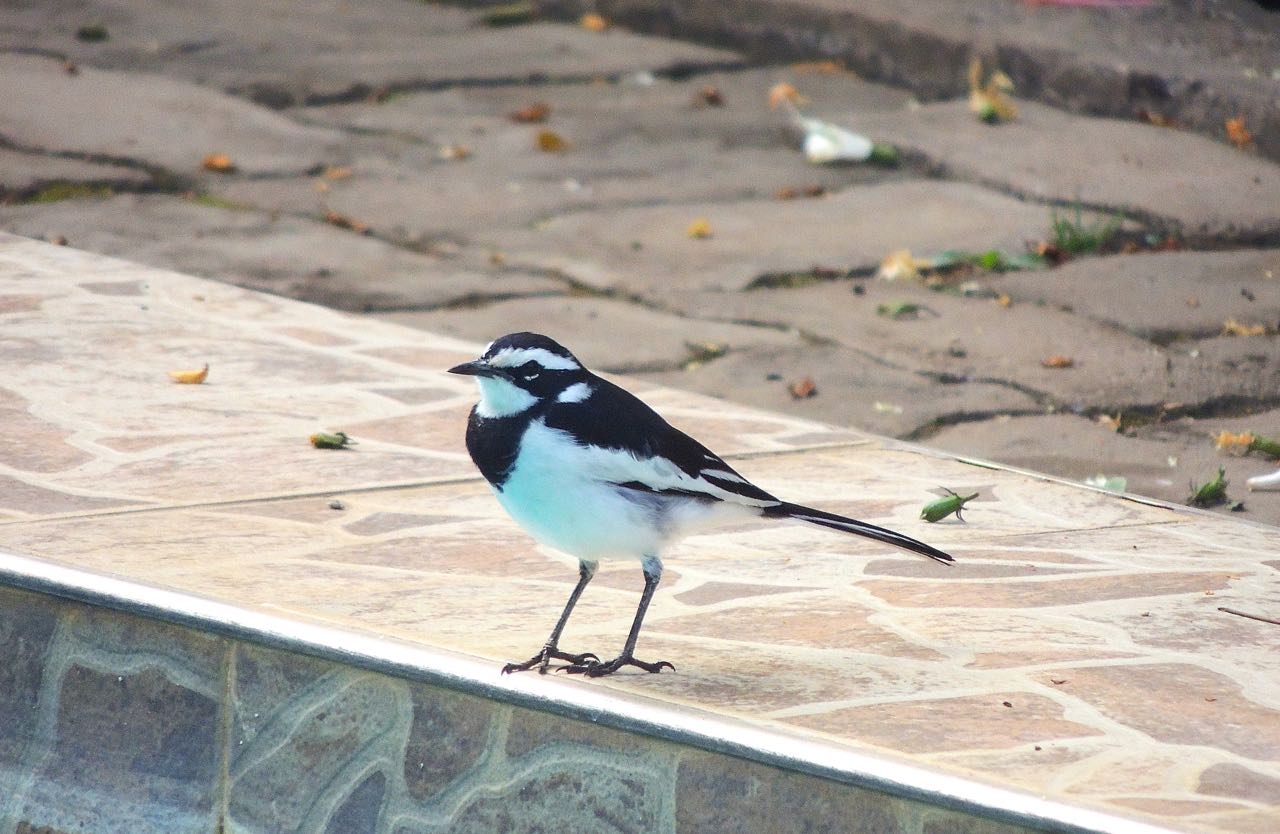 African Pied Wagtail - Photo by William Young
African Pied Wagtail - Photo by William Young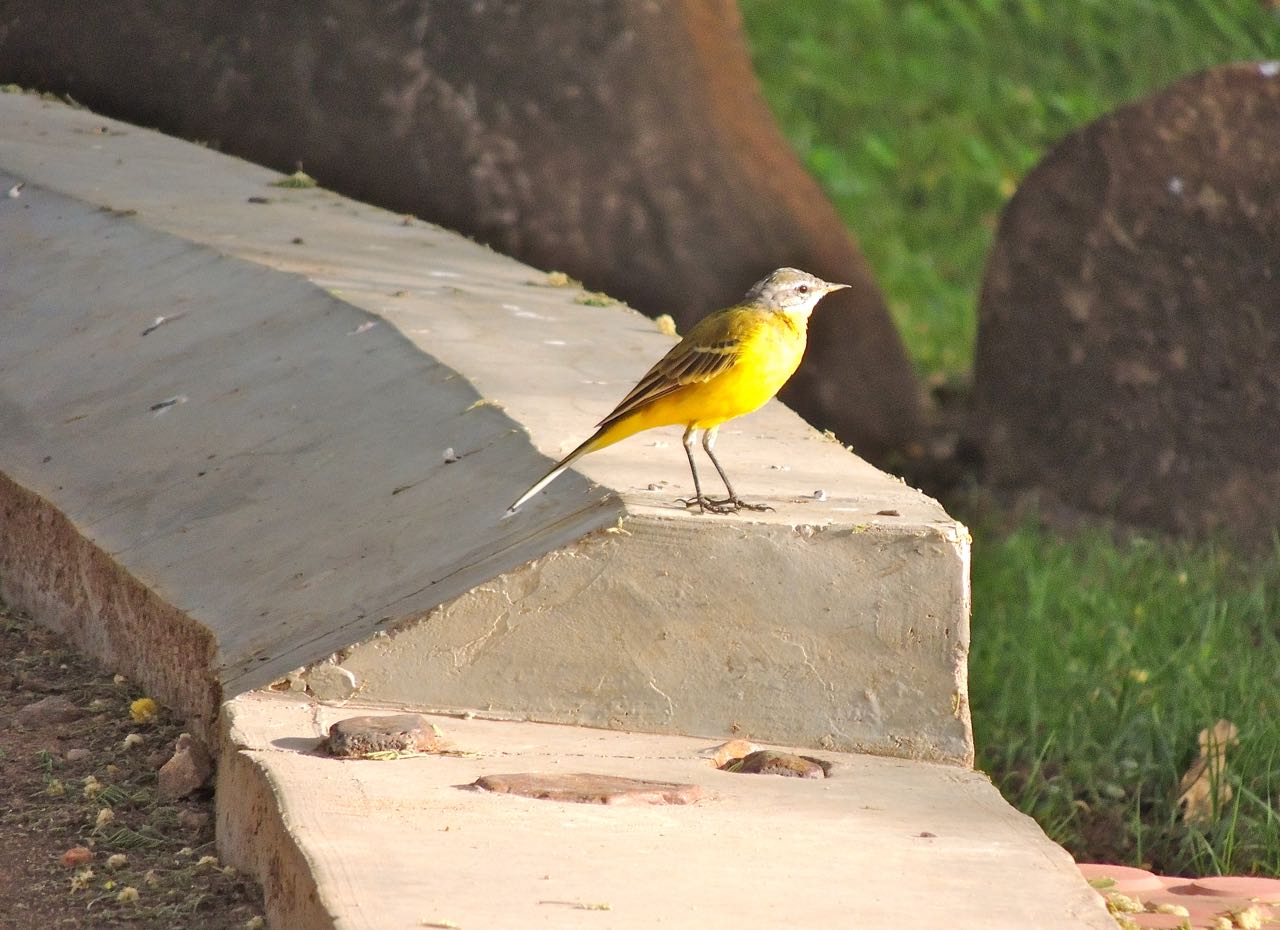 Yellow Wagtail - Photo by William Young
Yellow Wagtail - Photo by William Young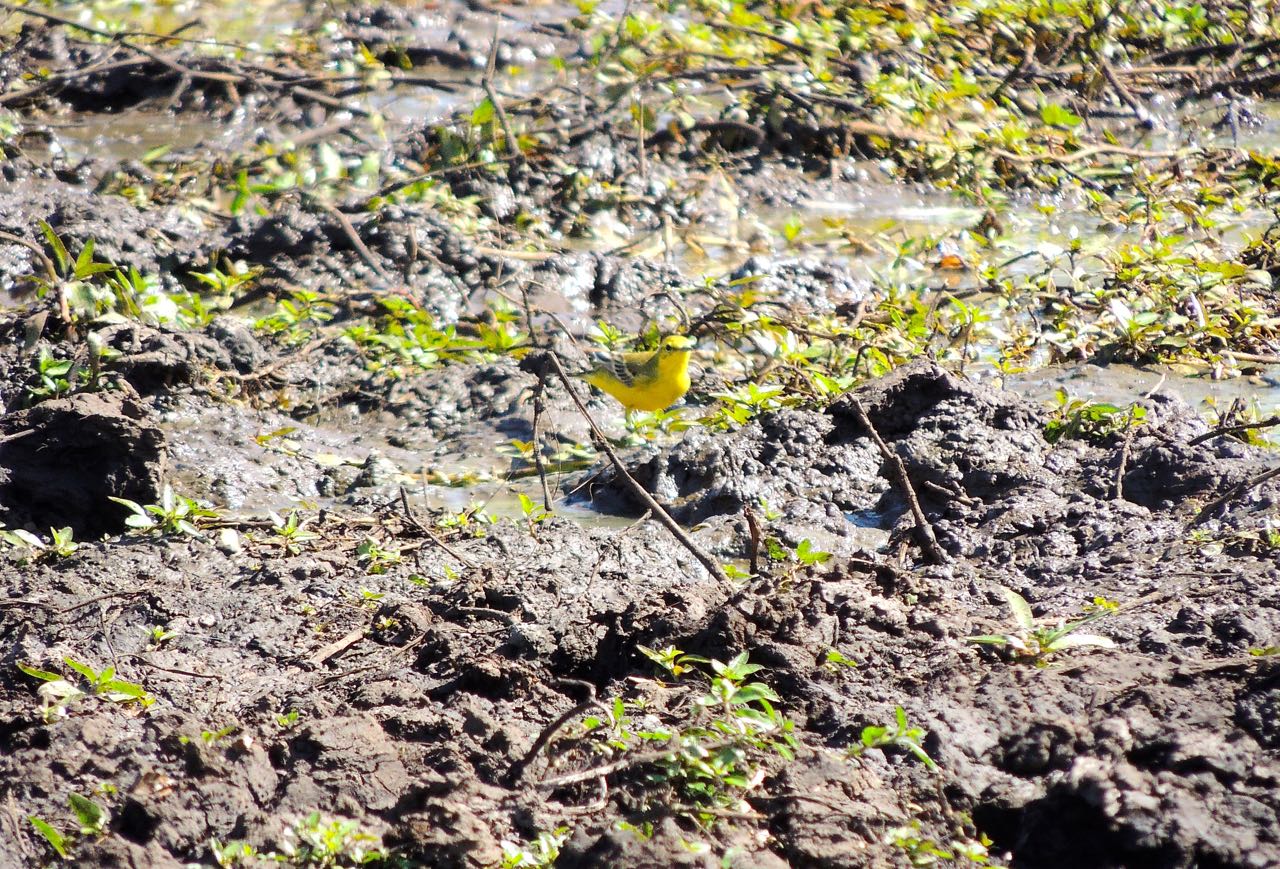 Yellow Wagtail - Photo by William Young
Yellow Wagtail - Photo by William Young
CuckooshrikesWe saw a Grey Cuckoo-shrike high in a tree at Amani. It was about the size of a European Starling, and it was all gray. We saw it on a gray and cloudy day, so the sighting was not one of the more memorable ones of the trip.
BulbulsCommon Bulbuls are indeed common. We saw 255, but there could have been a lot more. We saw only Barn Swallows on more days of the trip. These bulbuls are brown with grayish bellies. Their yellow vent makes them fairly easy to identify. One seldom gets close looks at them in the open, so I had trouble creating a mental picture of them. The other bulbuls and greenbuls are difficult to identify. They are mostly olive birds who forage in green foliage. Most of our sightings were in Amani. The Stripe-cheeked Greenbul is olive with a dark gray cheek with stripes, and it has the trace of light feathering near the bill. The Shelley's Greenbul has a gray head and a white eyering, and it hops on the trunks of trees. The Little Greenbul is all olive and smaller than the previous two. I heard a Cabanis's Greenbul, and I saw some of them moving on the forest floor, but I never got my binoculars on them. Martin saw a Tiny Greenbul that I did not. We saw three Yellow-bellied Greenbuls near the Momela campsite. They seemed large, with yellowish underparts and an olive head and back.
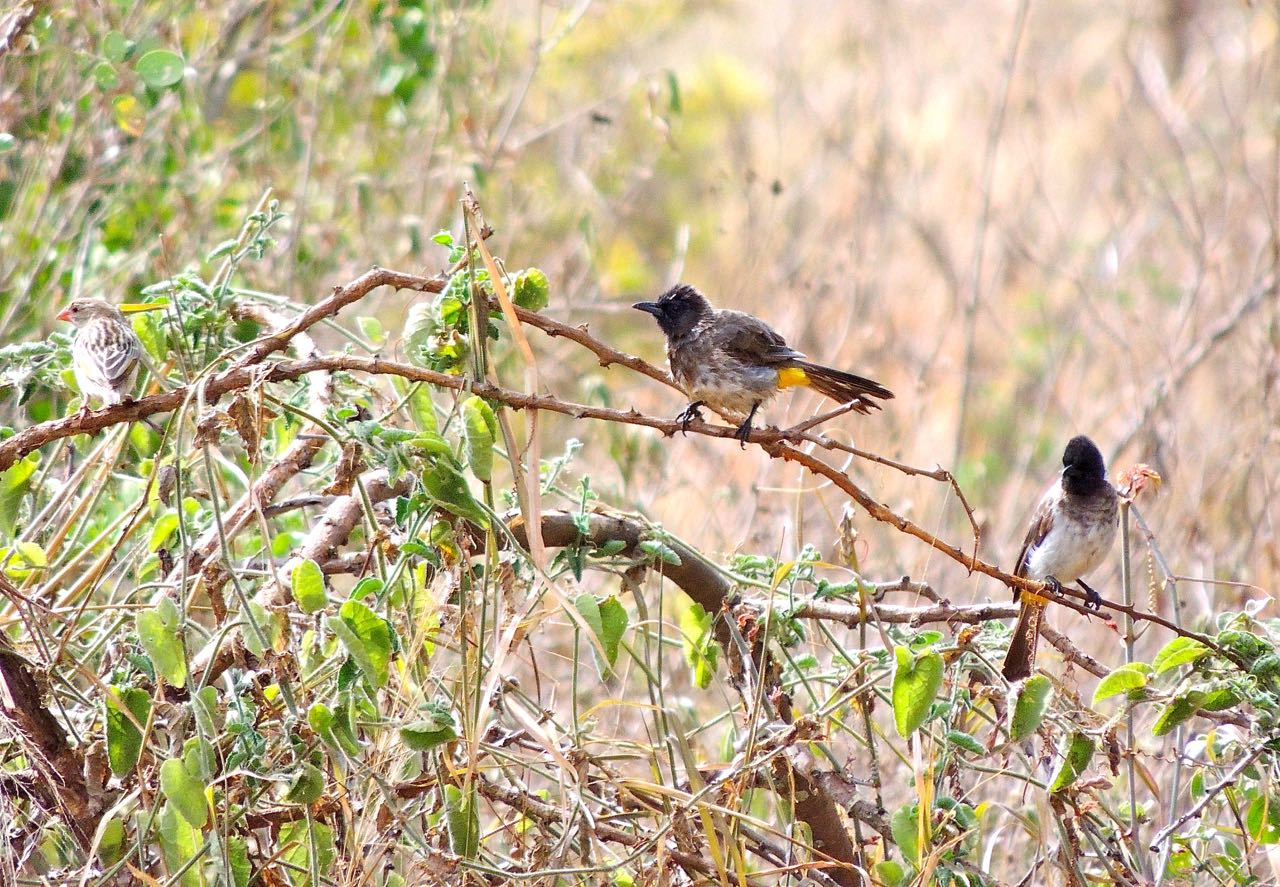 Red-billed Quelia and Common Bulbuls - Photo by William Young
Red-billed Quelia and Common Bulbuls - Photo by William Young
ThrushesWe saw only seven thrushes from three species on the trip. Four were Olive Thrushes (Turdus Olivaceus), who are like American Robins with a gray breast. I saw a young one near my cabin at Serenity who had a spotted breast like a young American Robin. In Amani, we saw an Usambara Thrush, who has a red bill and was once considered a race of the Olive Thrush. It was skulking on the forest floor. We had nice looks at a Red-tailed Ant-thrush at Amani. It has a gray-brown head, rufous belly and tail, and a brown back. It is a colorful bird for having such a limited palette of colors.
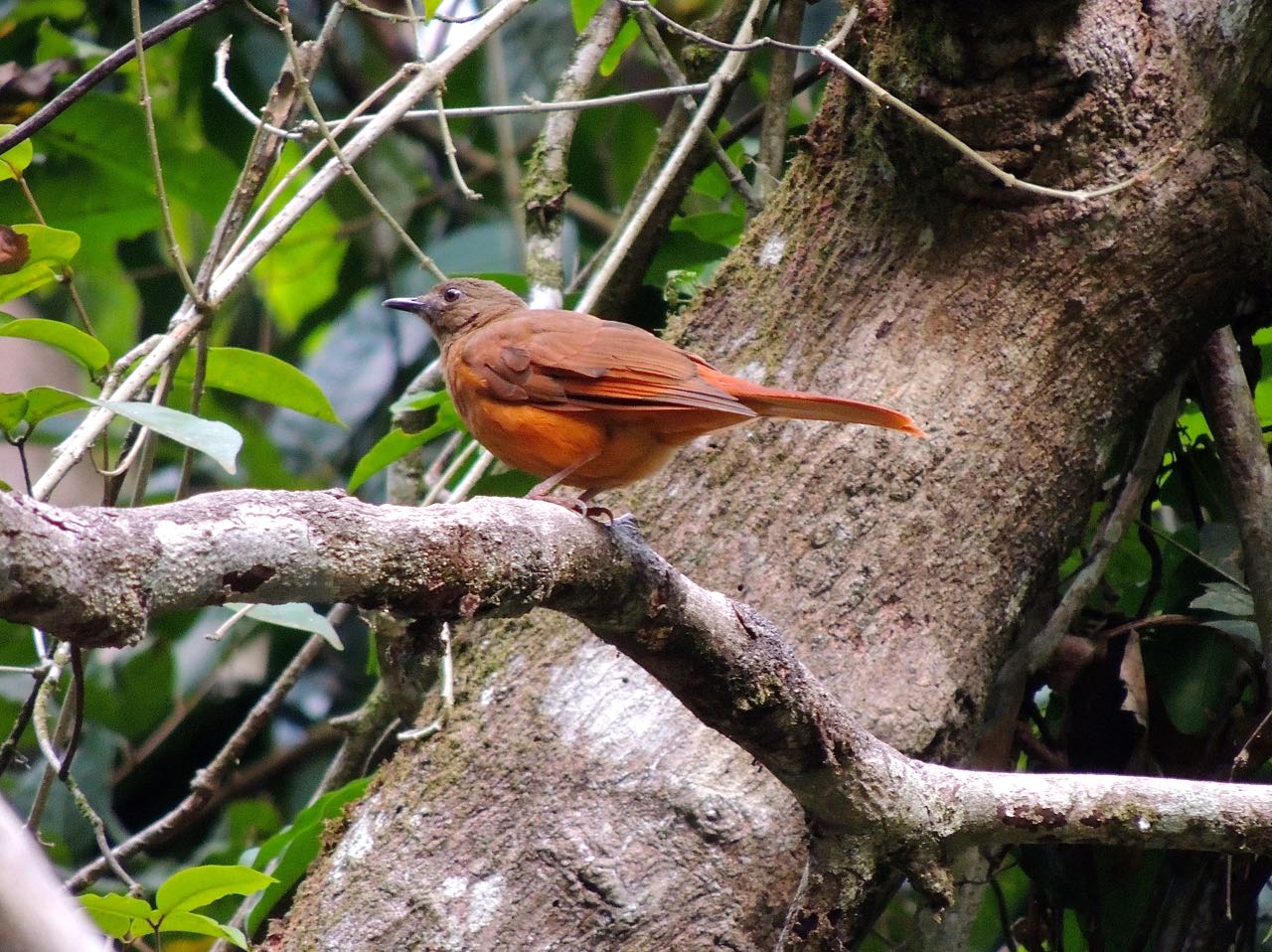 Red-tailed Ant-thrush - Photo by William Young
Red-tailed Ant-thrush - Photo by William Young
Old World FlycatchersThe Old World Flycatchers include birds called flycatchers, thrushes, robins, chats, and wheatears. This family has experienced a lot of taxonomic reclassifications and now includes the European Robin. There are African species called flycatchers who are not in this family, which can be confusing.
Wheatears were common during the first five days of the trip before we reached the higher altitudes at Ngorongoro. The name "wheatear" is a corruption of "white arse", because the Northern Wheatear has a white rump. A lot of Northern Wheatears were in the field outside our tents at Ndutu. The male's plumage looks like a Loggerhead Shrike's. When they came close to our tents, I could see that the breast has a peachy tinge. Much less common were Isabelline Wheatears. We saw only two on one day at Serengeti National Park. They are pale brown, like some female wheatears. Isabelline is a color that is pale creamy brown or the color of parchment. The campsite at Ndutu had Pied Wheatears. The males have a bright white cap. The young ones are not so clearly marked. We also saw about 20 when we were looking for the Beesley's Lark. In that same area were about 200 Capped Wheatears. They have a white supercilium and throat, a black mask and breast, and a dark brown back. We saw another 50 on our trip to the park at Ndutu.
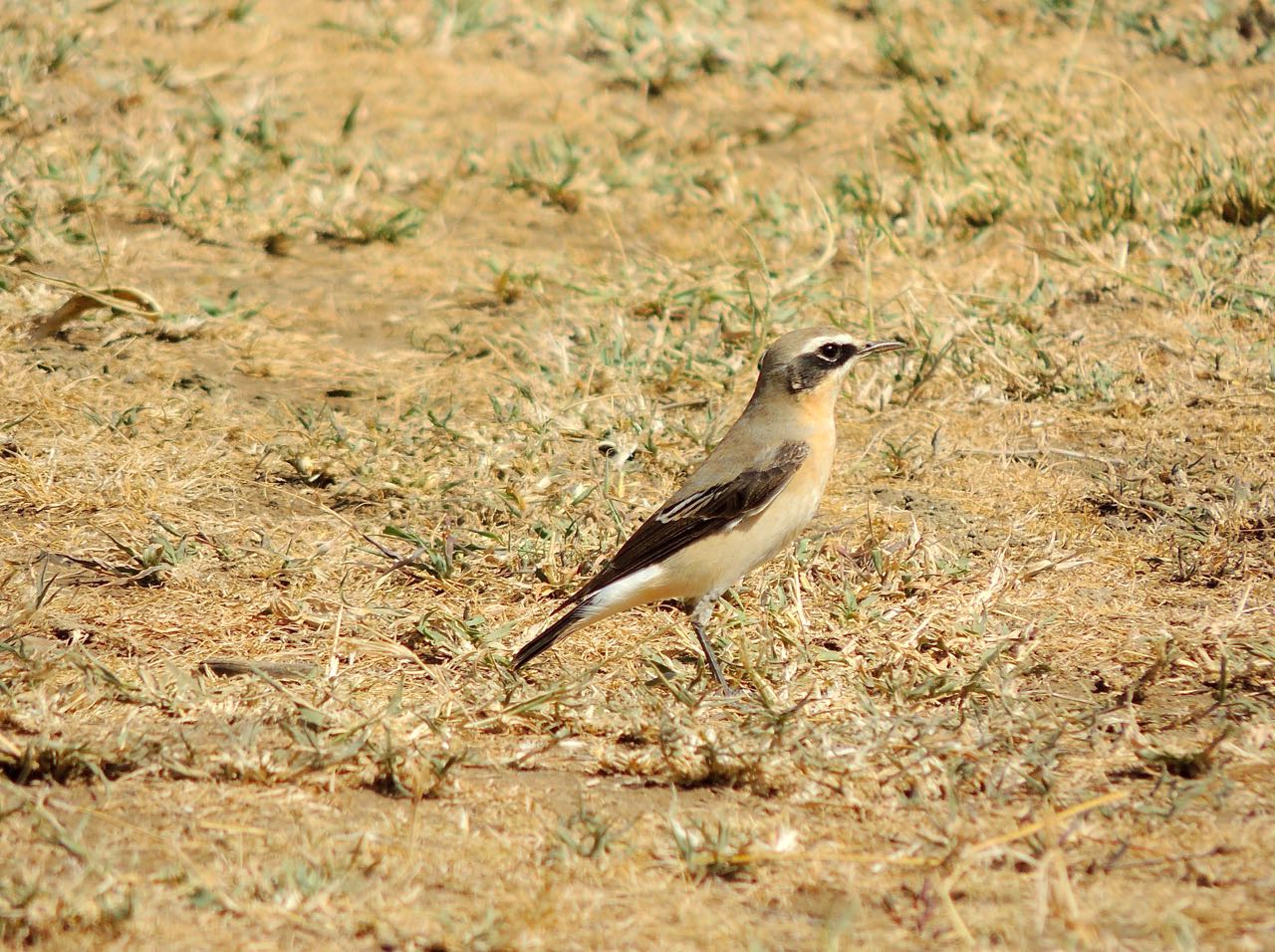 Northern Wheatear - Photo by William Young
Northern Wheatear - Photo by William Young Pied Wheatear - Photo by William Young
Pied Wheatear - Photo by William Young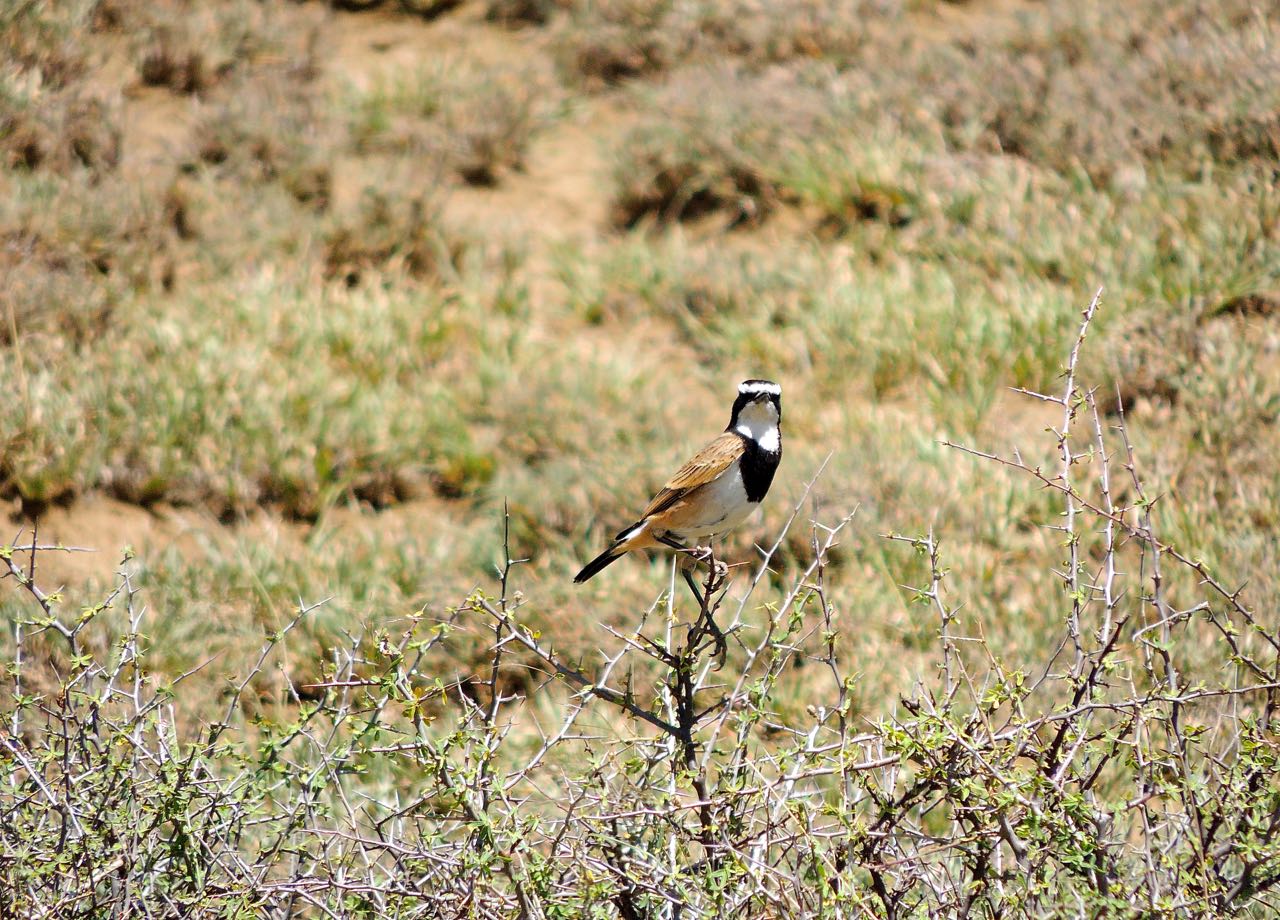 Capped Wheatear - Photo by William Young
Capped Wheatear - Photo by William YoungSome Tanzanian birds called flycatchers are small brown birds without many prominent fieldmarks. Unless they are in good light, seeing what color they are can be difficult, because a lot of them are shades between dull gray and light brown. Serenity had a lot of Swamp Flycatchers. We saw about 25 in our two days there. Many were young birds who were classic LBJs, looking like small Eastern Phoebes. We saw 12 African Grey Flycatchers over seven days, but never more than three on a day. The adults are plain gray-brown birds. Near Tarangire, we saw an Ashy Flycatcher in a tree next to an African Grey, and it looked paler. In Arusha, we had a close look at a pair of African Dusky Flycatchers, who look gray and are only about four inches long. One was an immature who was covered in spots. The Spotted Flycatcher is a slightly larger gray-brown bird with faint spots/streaks on its breast. We saw 8 in our three days around Mkomazi and 15 around Mikumi.
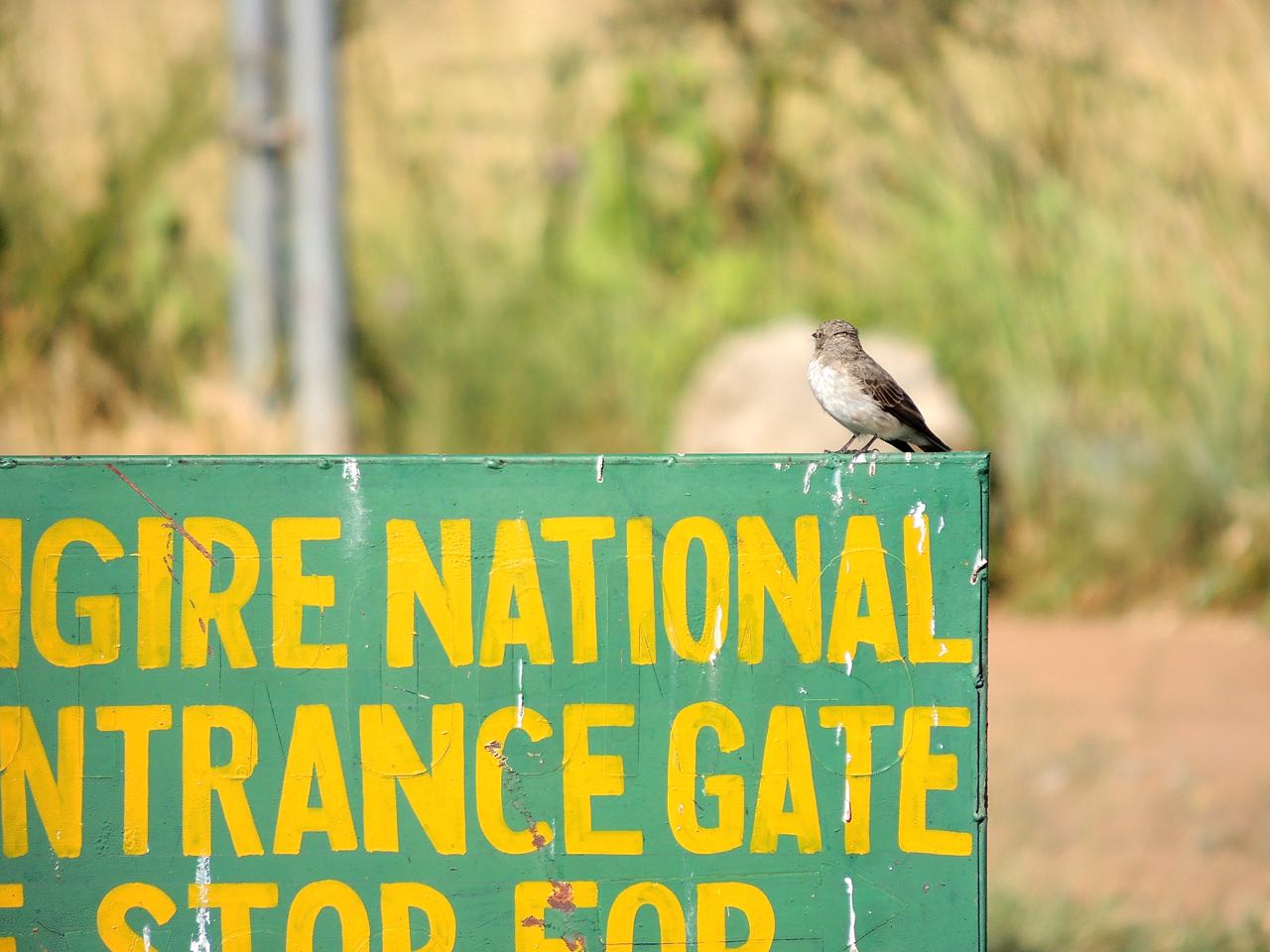 African Grey Flycatcher - Photo by William Young
African Grey Flycatcher - Photo by William Young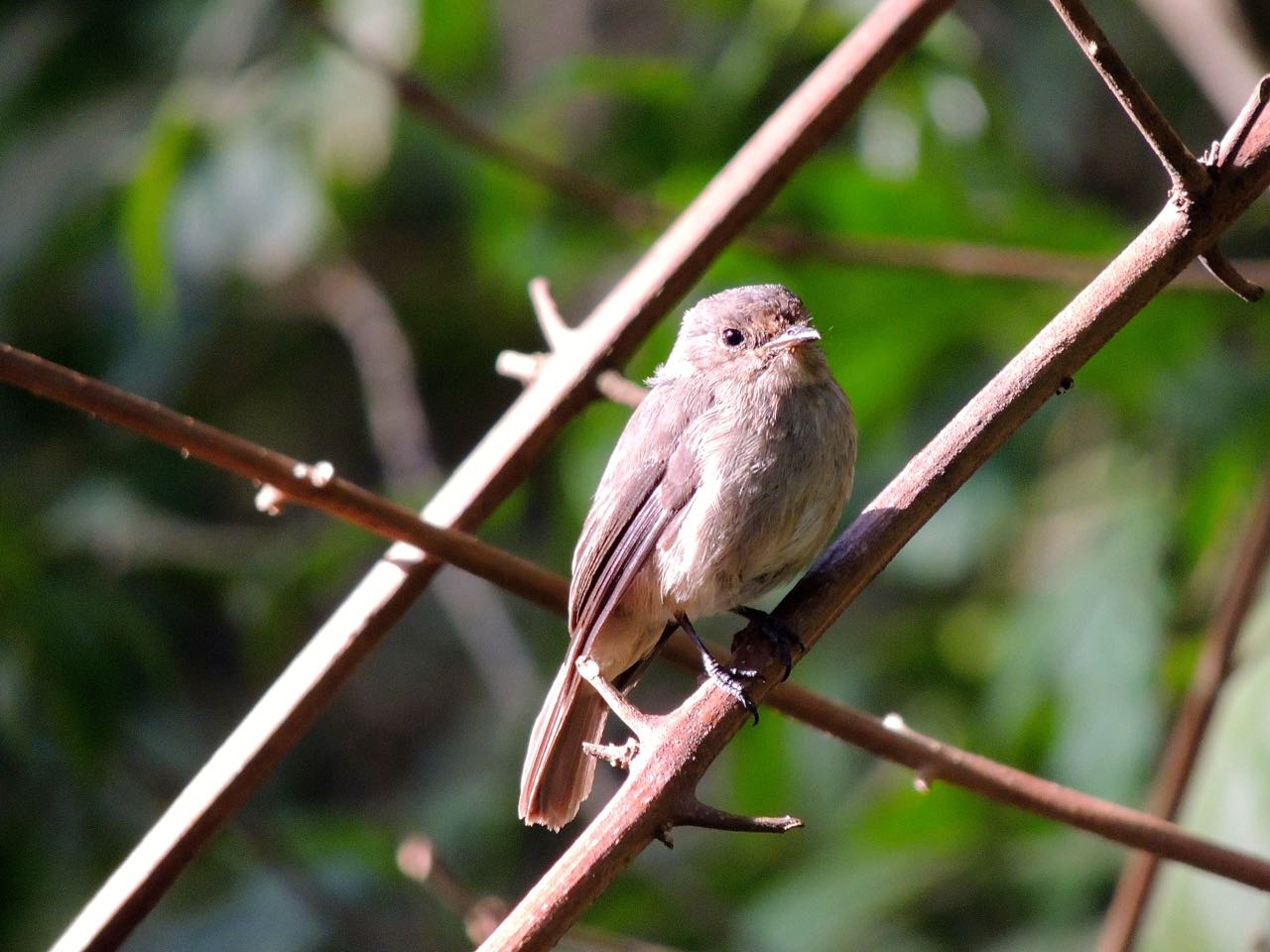 African Dusky Flycatcher - Photo by William Young
African Dusky Flycatcher - Photo by William Young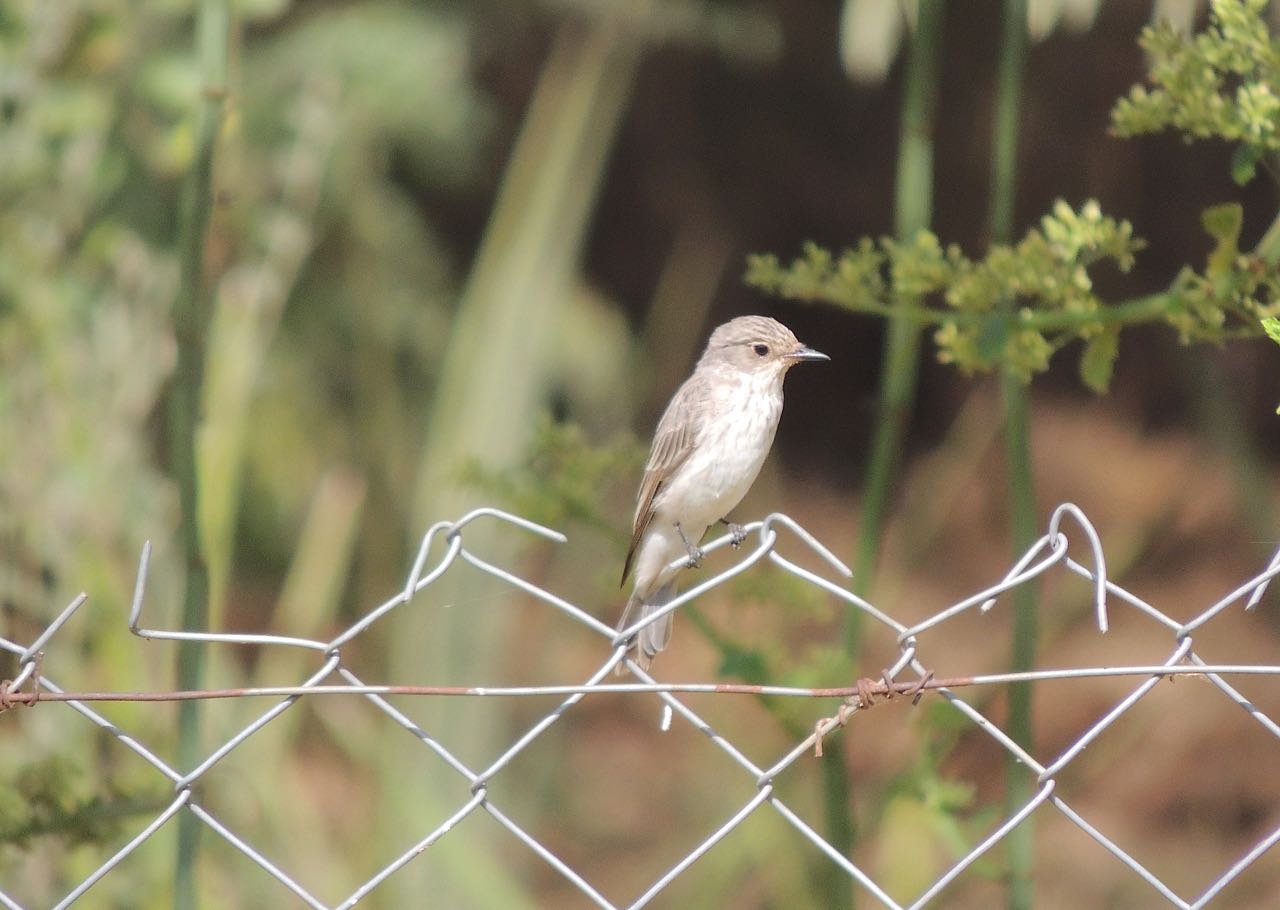 Spotted Flycatcher - Photo by William Young
Spotted Flycatcher - Photo by William YoungA few flycatchers we saw were different from the ones above. On the road between Serenity and the boat dock at Lake Victoria, we saw Silverbirds, who have a gray back and rufous underparts. Later that day, we saw some in the Serengeti. At the Rhino Lodge, we saw a few White-eyed Slaty-Flycatchers, who are slaty-gray with a prominent white eyering. At the Dindira campsite, Southern Black Flycatchers were near our tents. They are jet black, with a dark eye and a slight notch in the tail. Their posture is very erect. At Ngorongoro, we saw ten Northern Anteater-Chats, who look all black when on the ground but show a white outer half of the wing when they fly. Common Stonechats were common on the road to Ngorongoro. We saw 40 foraging near the side of the road. The males are black-and-white, with some rufous around the breast.
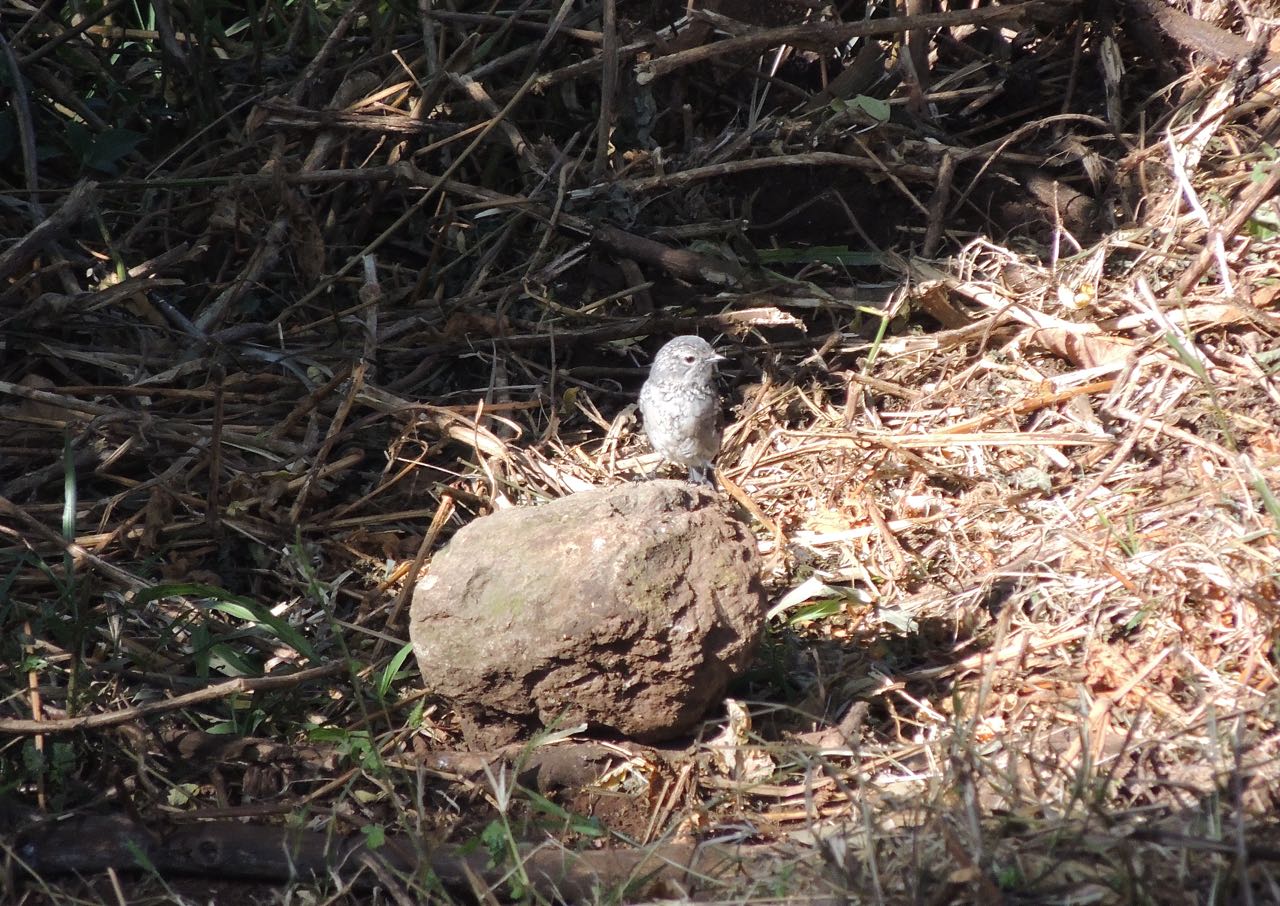 White-eyed Slaty-Flycatcher - Photo by William Young
White-eyed Slaty-Flycatcher - Photo by William Young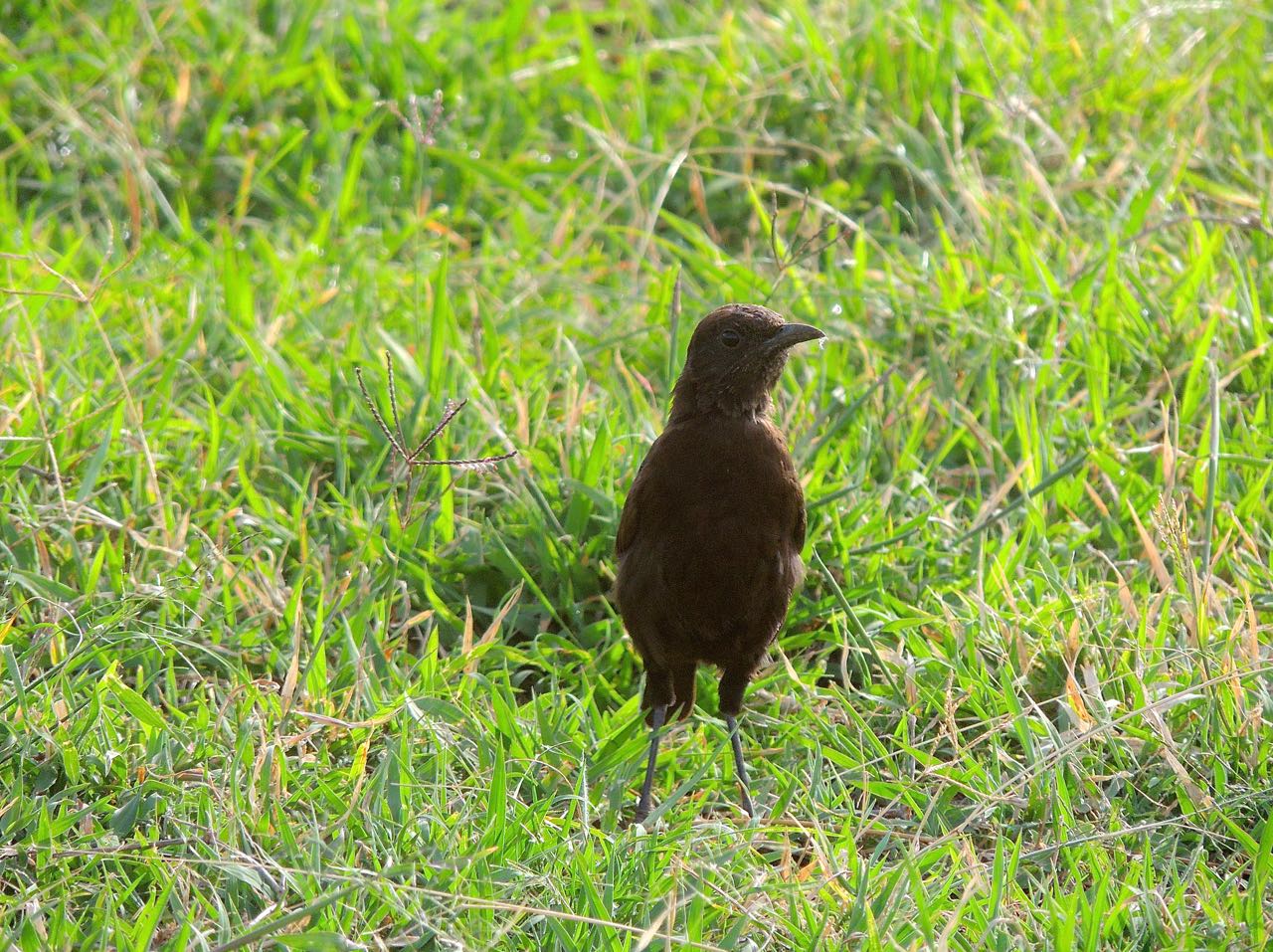 Northern Anteater-Chat - Photo by William Young
Northern Anteater-Chat - Photo by William YoungWe saw 10 Common Rock-Thrushes over three days in the area directly in front of our tents at Ndutu. They have a dark back, gray hood and throat, and orange-brown underparts. They were in the same area with Northern Wheatears and Grasveld Pipits, and all three species seemed sturdy on their legs and stood erect as they surveyed their surroundings. In the fields near the entry road to the Hondo Hondo campsite, I saw a couple of Collared Palm-thrushes in the trees. They are fairly large, with a rufous tail and a buffy throat that appears to be enclosed in parentheses. We saw Spotted Morning-Thrushes (Spotted Palm-Thrushes) near the reception area at Serenity and near our rooms. They have a white supercilium and a rufous tail, and they spent most of their time on the ground. We saw a couple of Cape Robin-Chats near the entry gate at Ngorongoro. They are gray birds with an orange-brown throat, a white supercilium and malar stripe, and a black mask. At times, the birds came down and looked for food around an upside down cracked red bucket. We saw three White-browed Robin-Chats on three days. They are much larger than the similar Cape Robin-Chat. Their underparts are entirely orange-brown, and they lack the white malar stripe. We observed one feeding actively in a tree at Amani. We saw White-browed Scrub-Robins near our tents at Ndutu, and we had good looks at them at our Naitola campsite. They have a brown back, white underparts with a lot of black spotting, a white supercilium, and a rufous tail. We saw one at Naitola who hopped into the dining area and grabbed a large white grub. It then took the grub over the wall to eat it. At Lake Manyara, we saw a female White-throated Robin (Irania), who had a grayish back, was buffy below, and frequently cocked her tail.
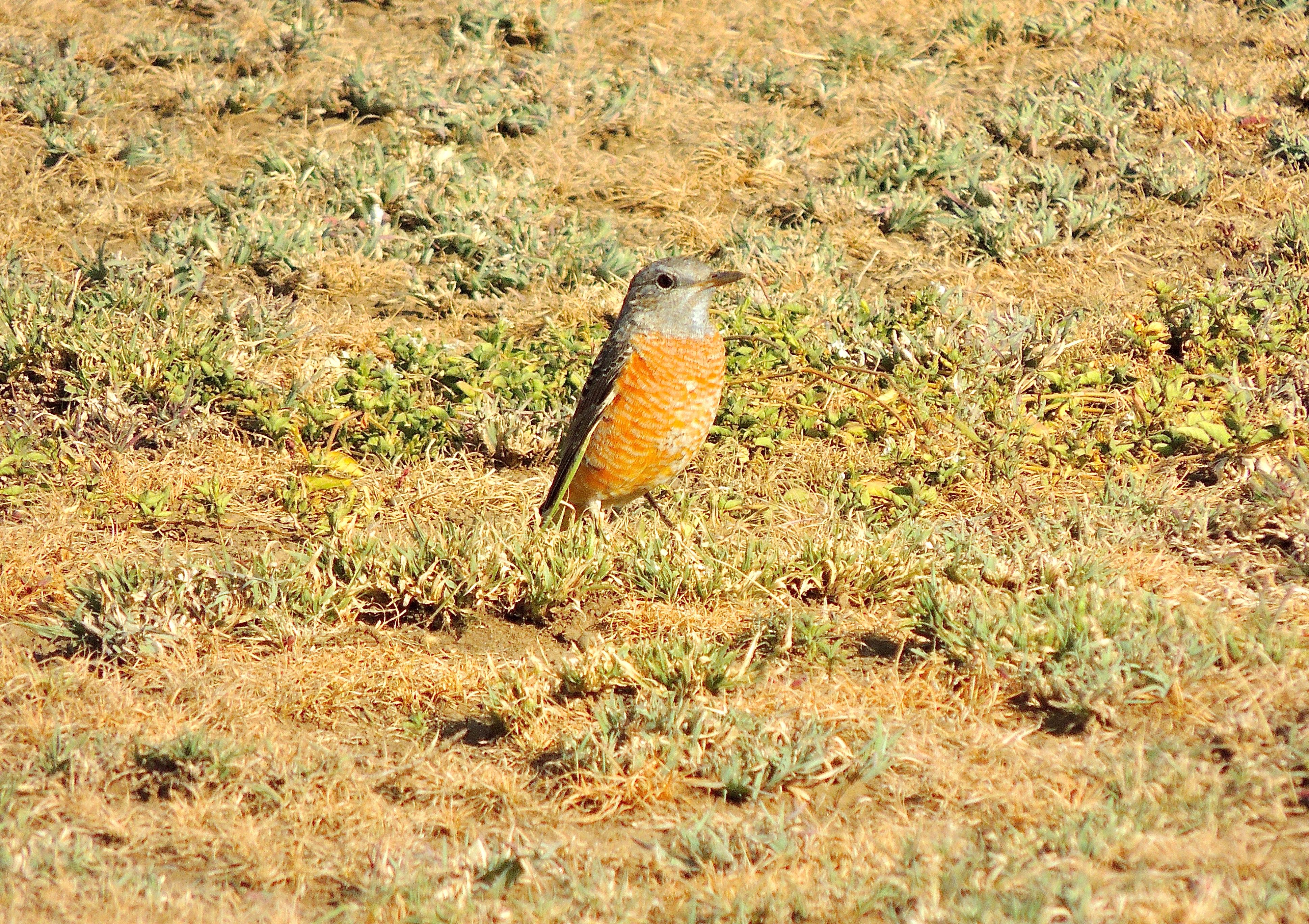 Common Rock-Thrush - Photo by William Young
Common Rock-Thrush - Photo by William Young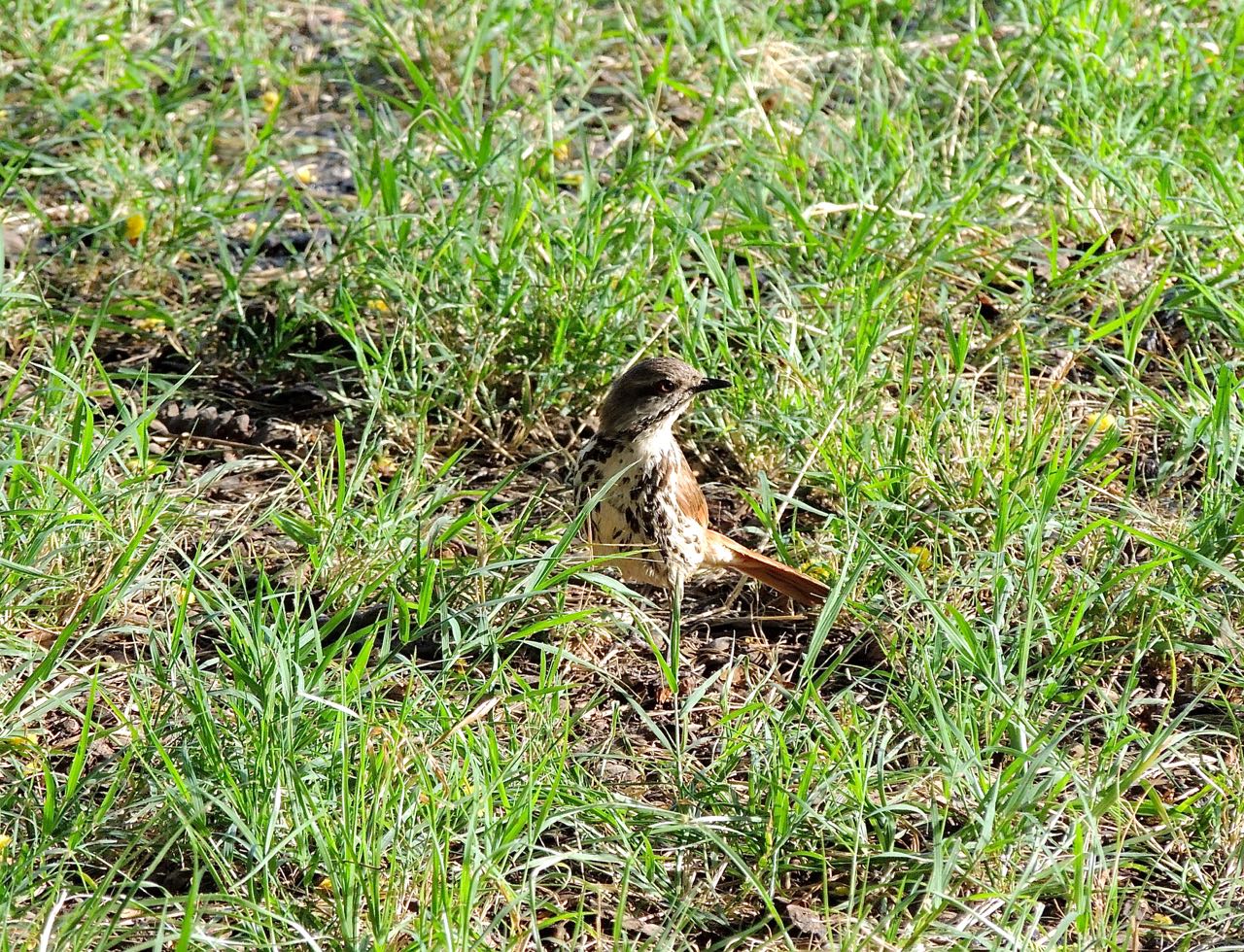 Spotted Morning-Thrush - Photo by William Young
Spotted Morning-Thrush - Photo by William Young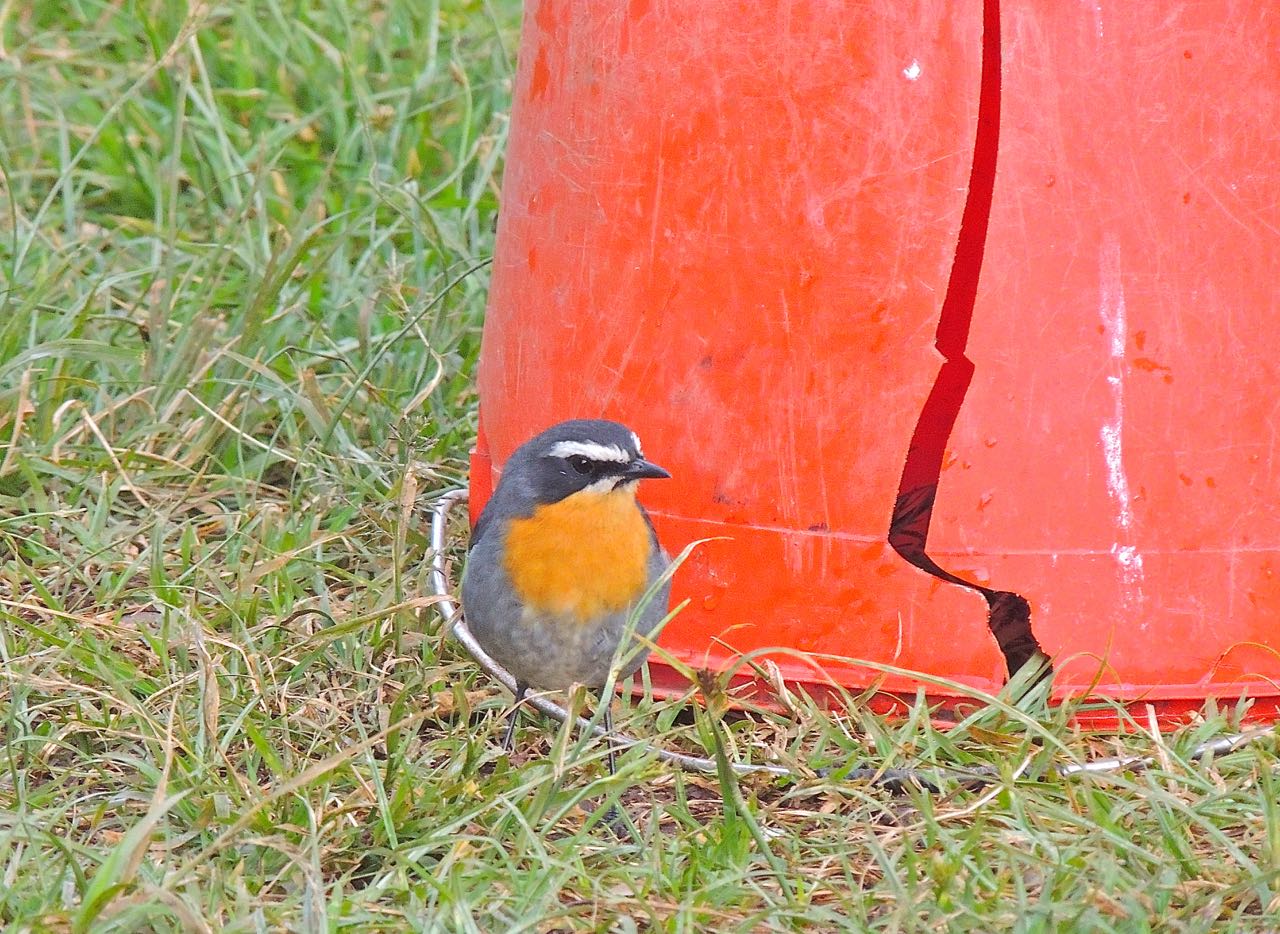 Cape Robin-Chat - Photo by William Young
Cape Robin-Chat - Photo by William Young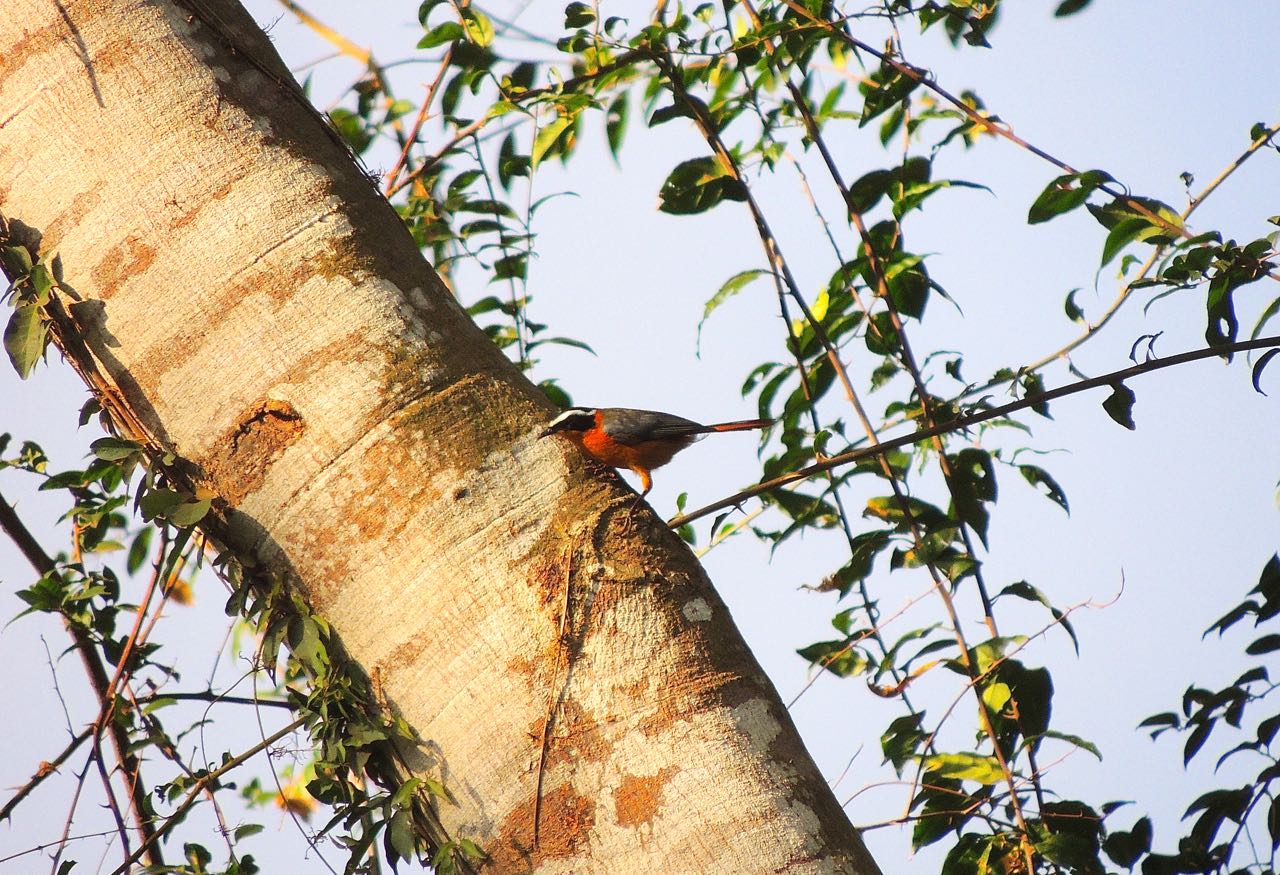 White-browed Robin-Chat - Photo by William Young
White-browed Robin-Chat - Photo by William Young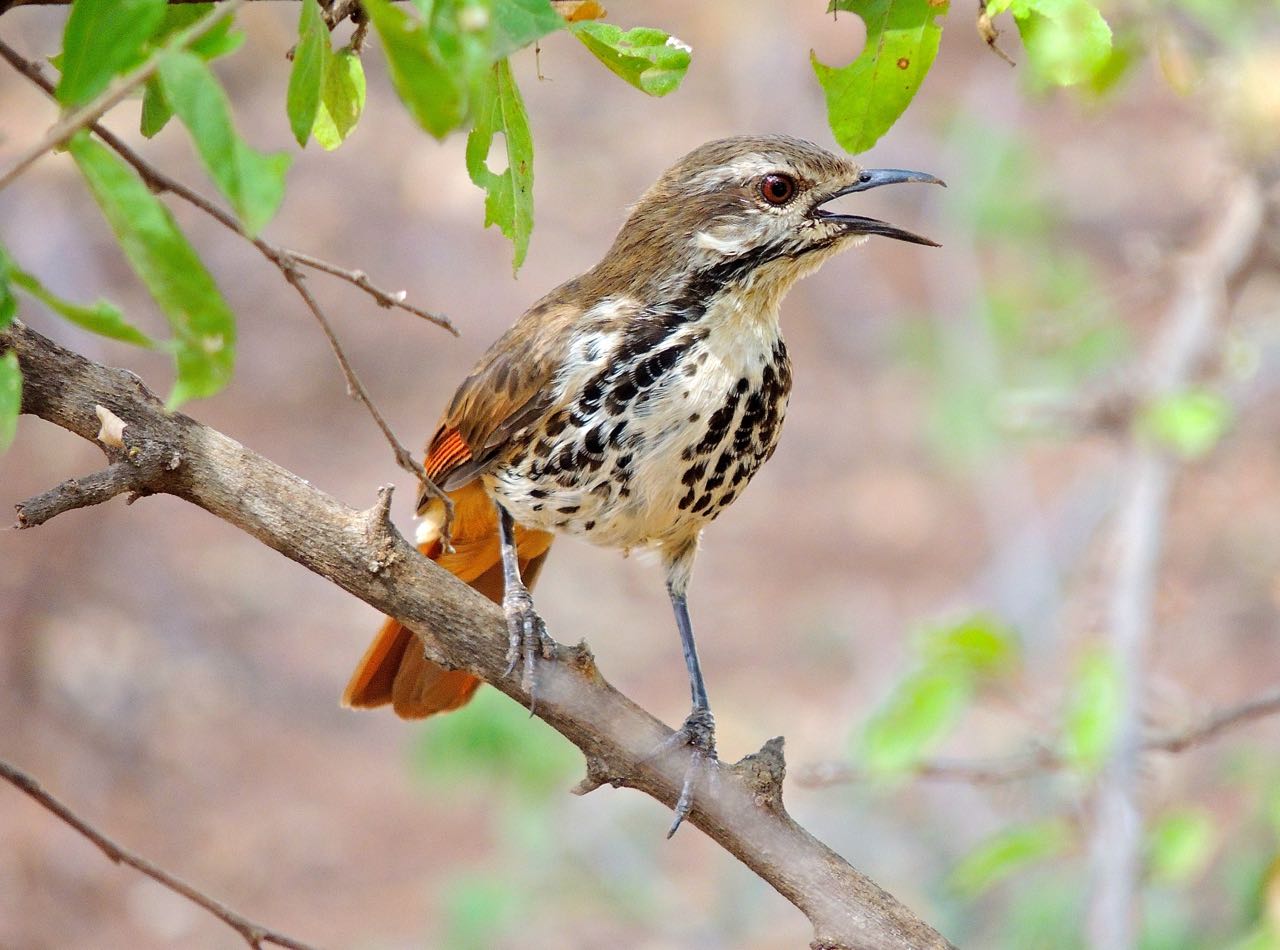 White-browed Scrub-Robin - Photo by William Young
White-browed Scrub-Robin - Photo by William Young
Cisticolas and AlliesCisticolas are birds whose names are much more exciting than their appearance. Their names contain adjectives such as Croaking, Zitting, Stout, Rattling, Wailing, Churring, and Siffling. They are the ultimate LBJs, and their propensity to hang around in the reeds makes identifying them challenging. At Mikumi, we saw 14 Zitting Cisticolas, who are quite small. In the same place, we saw the larger Winding Cisticola. We had previously seen one at the Arusha lakes. It is a natty little bird, with rufous on the wings, a rusty cap, and a patterned back. We saw a Short-winged (Siffling) Cisticola in Kilombero, and it looked almost featureless. Much more exciting in that area was a rare endemic called the Kilombero Cisticola, who is so newly-split that it does not yet have a scientific name. We saw a couple skulking in grass, but I got one great look. The bird has a rufous cap, gray on the flanks, and bars under the tail. The field guide describes its vocalization as being similar to a gate in need of oiling. At Mkomazi, we saw six Croaking Cisticolas. They have a plain face and buff on their sides and near the base of the tail, which has white tips. At the Arusha lakes, we saw a Stout Cisticola, who looked fairly large. At Mikumi, I heard the wing snapping of a Desert Cisticola. Martin and Bernard had previously seen the bird, but I did not.
The Tawny-flanked Prinia is a gnatcatcher-like bird. It is brown, with a white supercilium, rusty flanks, and a long thin tail. We saw six on four days, and they seemed to forage in the open. We saw three in Amani and two in Udzungwa. We saw two Yellow-breasted Apalises in the rocks behind our tents at Ndutu. This species has a long thin tail. It has a yellow breast with a black mark near the bottom. In the same area, we saw a pair of Grey-backed Camaropteras preparing to mate. They are chunky and short-tailed, and their song is loud. We saw a Yellow-bellied Eremomela in the same area and four more in the trees at the park entrance at Tarangire. They have a gray head and back, a light gray throat, and a yellow belly. The Long-billed Tailorbird (Apalis) is probably the rarest bird we saw on the trip. There are only about 150 in world, most in a small area of the Usambaro Mountains. This endemic is fussy about its habitat, which must be brushy, near water, and in a very limited altitudinal range. It is dark on the back, with a brown cap, white underparts, and red legs. It has a long bill and looks a bit like one of the Neotropical gnatwrens.
African WarblersThe Moustached Grass-warbler looks enormous for a warbler. We saw one chattering from the top of a bush at the Arusha lakes. It has a white eye and a brown-and-white facial pattern. We saw a couple more flying in the same area. Near the Momela campsite, we saw a Red-faced Crombec, a small round bird with virtually no tail — quite a contrast from the Moustached Grass-warbler who is in the same family. The crombec was brown on the back and cinnamon below.
Leaf-WarblersWillow Warblers were fairly common. Martin was good at identifying them, because he sees a lot of them near his home in England. They are plain birds with olive backs and a supercilium over black eyes. The underparts ranged from white to lemon-yellow.
Reed-Warblers and AlliesI saw a Great Reed-warbler in the rain at Udzungwa. It was a large brown warbler sitting on a reed. It had a white throat and buffy underparts, and its most distinctive aspect was its overall size. Martin and Bernard had seen one near the Hippo Pool at Lake Manyara. Olivaceous Warblers foraged around the campsite at Dindira. They are pale brown, with a slight supercilium. I saw a Sedge Warbler feeding in the trees at Serenity. It is a little darker than the Olivaceous, and it has a more visible supercilium.
Sylvid WarblersAt the Naitola campsite, we saw a Common Whitethroat, who is white on the throat and has a gray head. At the Angalia campsite, we saw a Barred Warbler, who nests in Northern Europe. It has a brown back and a light breast with barring.
Vangas, Helmetshrikes, and AlliesWe saw four White-crested Helmet-Shrikes at the Naitola Camp. They have dark wings with a white slash. They are white below and have yellow skin around the eye. We saw 15 more around Dindira. We saw four Chestnut-fronted Helmet-shrikes at Amani. They are small dark birds with a red bill and red feet, and they appear to have rufous over the bill. We saw three female Black-and-white Shrike-Flycatchers. The females are rufous-and-white, and they have a crest.
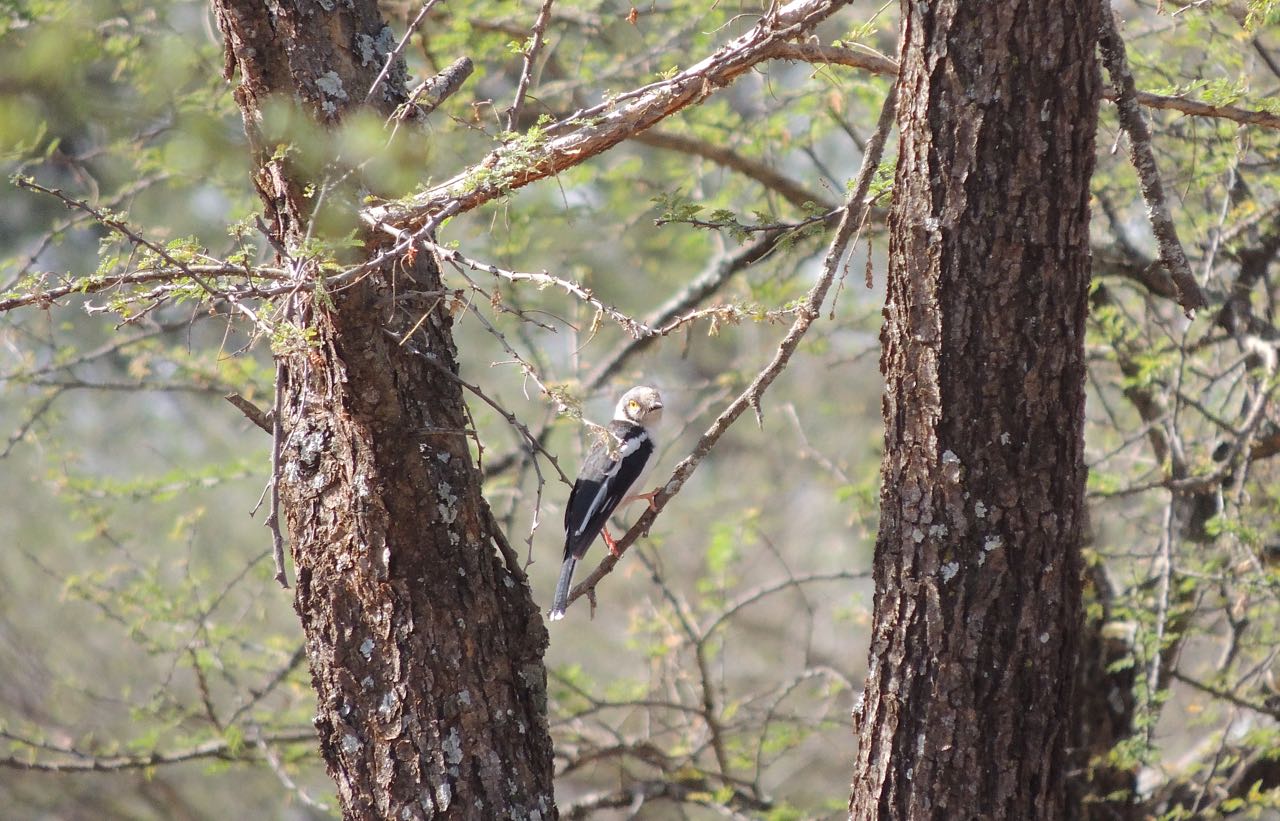 White-crested Helmet-Shrike - Photo by William Young
White-crested Helmet-Shrike - Photo by William Young
Wattle-eyes and BatisesWe saw a male Chinspot Batis in the rocky area behind our tents at Ndutu and a female near the Momela campsite. I could see the rufous spot on the female's chin. The male does not have the spot. The Chinspot Batis is small and has a yellow eye. Batises have a striking pattern of black, white, and gray plumage, sometimes complemented with rufous. A lot of them look similar. We saw two other species at Amani. The Forest Batis has red eyes, and its breastband appeared to be a little thicker. The Pale Batis, which is also called the East Coast or Mozambique Batis, has a slightly thinner breastband and a yellow eye. I would not have identified either of these birds had we not had an experienced guide with us. Also at Amani was a pair of Black-throated Wattle-eyes, who have a black back, a white belly, and a red crescent of bare skin over each eye.
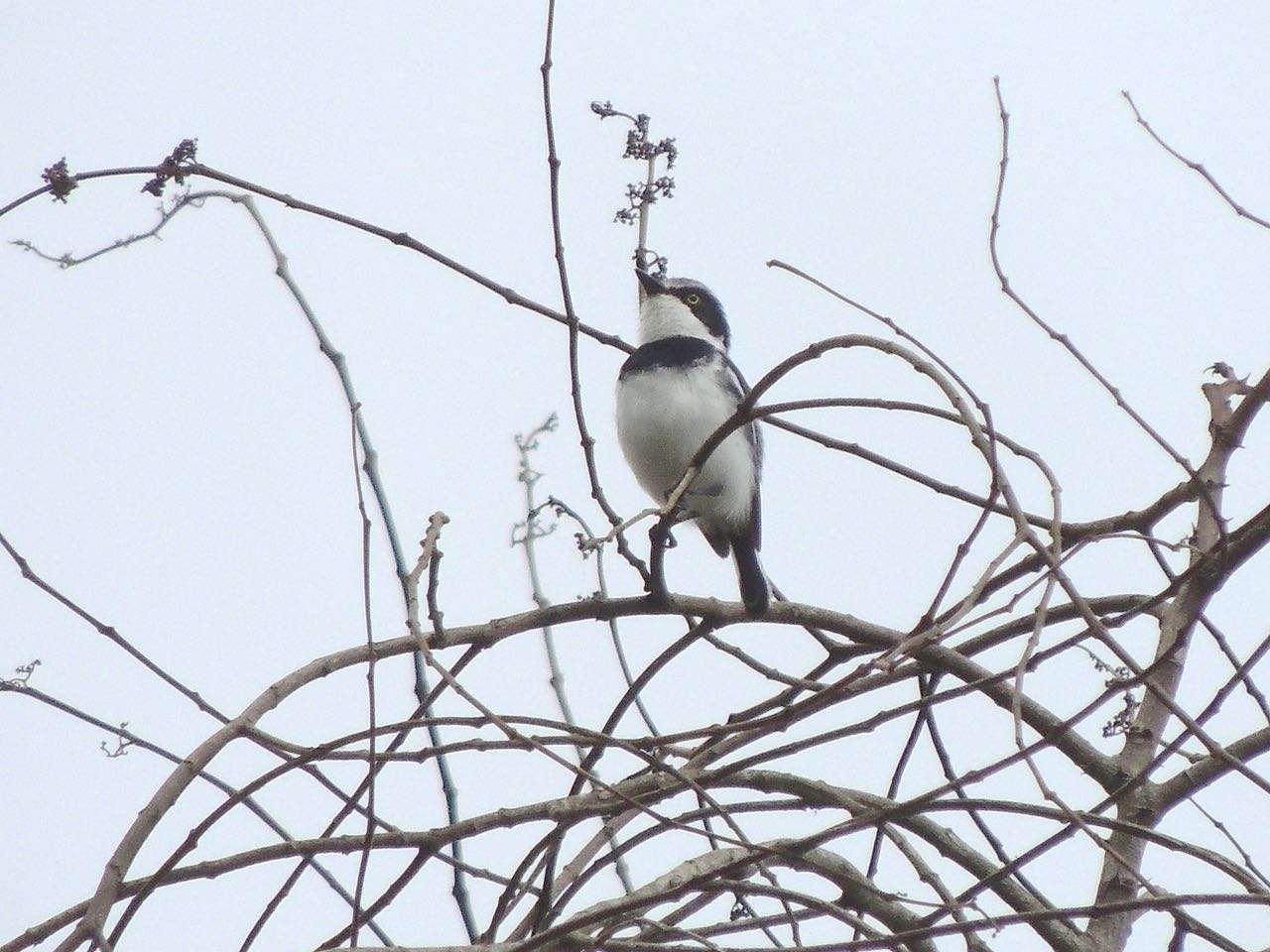 East Coast Batis - Photo by William Young
East Coast Batis - Photo by William Young
Monarch FlycatchersThe name of the African Crested Flycatcher is confusing. The Stevenson field guide calls it a Blue-mantled Crested Flycatcher. Another source calls it the Blue-mantled Paradise-Flycatcher. Regardless, it has a black hood and crest, grayish back, and white belly. African Paradise-Flycatchers were foraging in various places and sometimes sitting on branches and wires. I saw a male with the ridiculously long tail at Serenity. The rest were females, seen at Serenity, Amani, and the Dindira campsite. Both sexes have a black hood and a brown back.
Fairy FlycatchersI saw one White-tailed Crested-Flycatcher at Amani. It was preening on a branch. It is a black-backed bird, and the crest is rounded rather than pointed.
Ground Babblers and AlliesAt Amani, the local took us to look for a Pale-breasted Illadopsis, who is a real skulker. I could see the bird moving in the underbrush, but I never got a good enough look at it to see definitive fieldmarks. We could hear it vocalizing -- the call sounds as if has the pattern 1-2-3 2-3.
Laughingthrushes and AlliesArrow-marked Babblers are dark below, while Northern Pied Babblers are light below, with irregular dark markings on the flanks. Neither species was easy to get close to, with small groups hopping around in foliage and vocalizing. Both species are 8 to 9 inches long. I saw the Arrow-marked on two days — ten at the Naitola campsite and six at Udzungwa. I saw Northern Pied Babblers at Naitola, Tarangire, and Mikumi. At Naitola, the two species were in the same area, and they seemed to be chasing each other.
SunbirdsMany sunbirds are beautiful if seen in good light, but they are often difficult to see well. They occupy a similar niche in Africa to the hummingbirds in the New World. The first one we saw was the Red-chested Sunbird, who was in flowering bushes at Serenity. It has a green head, blue back, and a red bar across the breast. The last sunbird, and last new bird for the trip, was a Scarlet-chested Sunbird in a bare tree at the Angalia campsite. It looks mostly black, but it has a brilliant scarlet chest and throat — the red patch is much bigger than on the Red-chested. In fact, this was the last life bird I saw with my Zeiss 10x40 binoculars. Rather than giving Bernard a tip at the end of the trip, I gave him my binoculars. I have gotten good use from them, and he can enjoy them more than I would.
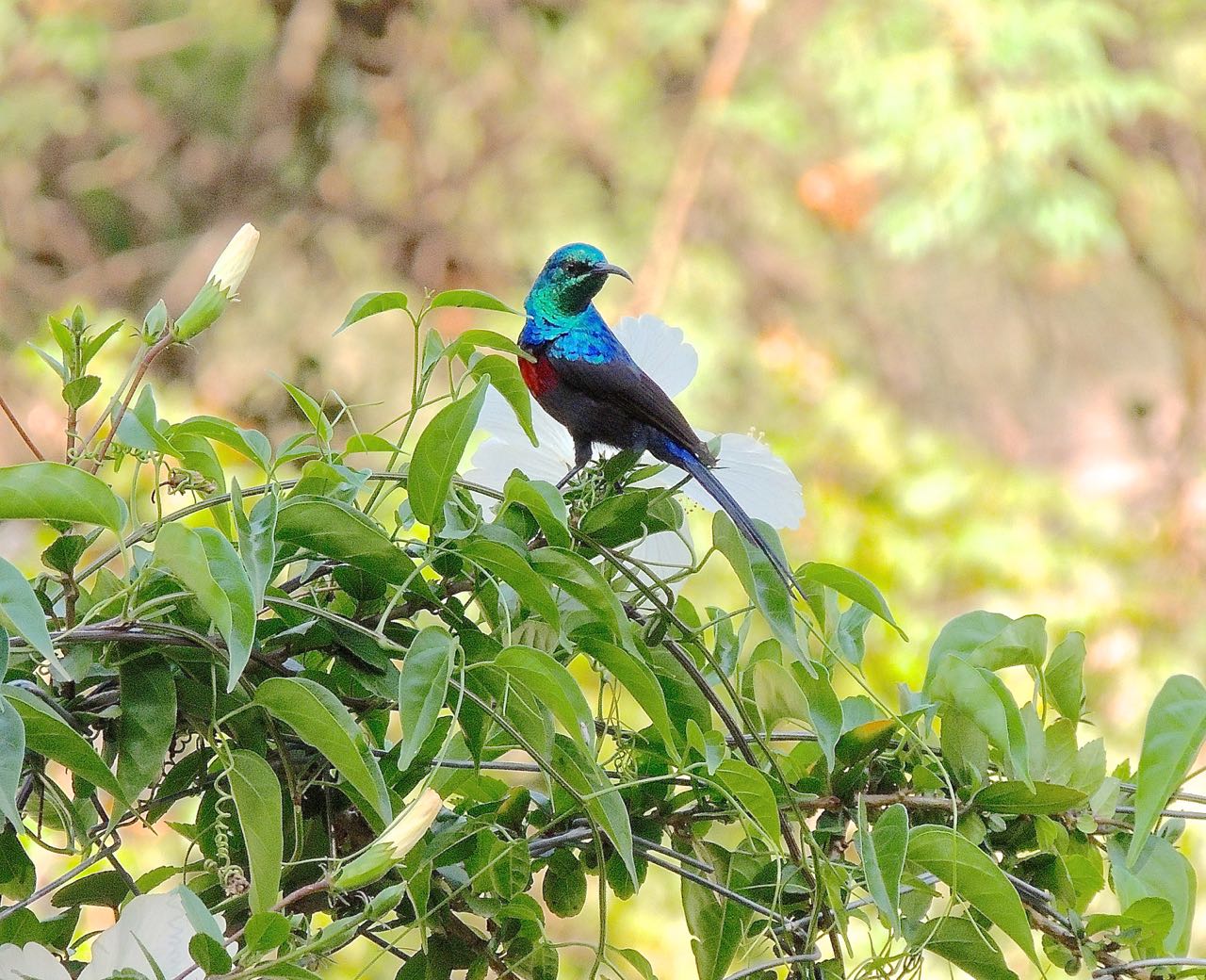 Red-chested Sunbird - Photo by William Young
Red-chested Sunbird - Photo by William YoungWe saw 21 Eastern Olive-sunbirds, all during our stay in Amani. They look like the females of some species of sunbirds. We saw 20 Variable Sunbirds on five days. I had nice looks at a few in the gardens at the Karibu Heritage House. In good light, they have an iridescent green head, a clean purple band across the breast, and a bright yellow belly. Behind the campsite at Ndutu were Beautiful Sunbirds. The male has a long tail, a green back, and yellow-and-red on the breast. He glistened in the sunlight. At Olduvai Gorge, we saw a Kenya Violet-backed Sunbird, who has a purple back and is snow white below. In the loading area at the Rhino Lodge, I saw an Eastern Double-collared Sunbird, who has a green back and a red bar on the breast, with yellow on each end of it. In the same area, I saw an Amethyst Sunbird, who looks dark and has purple on the throat. We saw a pair of Amethyst Sunbirds at Mikumi. At Amani, we saw a couple of Collared Sunbirds, who are green on the back and yellow below. We saw nine of the endemic Banded Sunbird, who is green on the back, grayish below, and has a narrow reddish breastband. Amani also has Common Purple-banded Sunbirds. We saw ten there, as well as a Purple-banded Sunbird nest hanging from a wire near the building where we slept. Among my favorite species on the trip was the Golden-winged Sunbird we saw at Ngorongoro. We saw four, including one perched on a bare branch near the entrance gate. He was a non-breeding male who was black, with golden wings, a long tail, and a long curved bill.
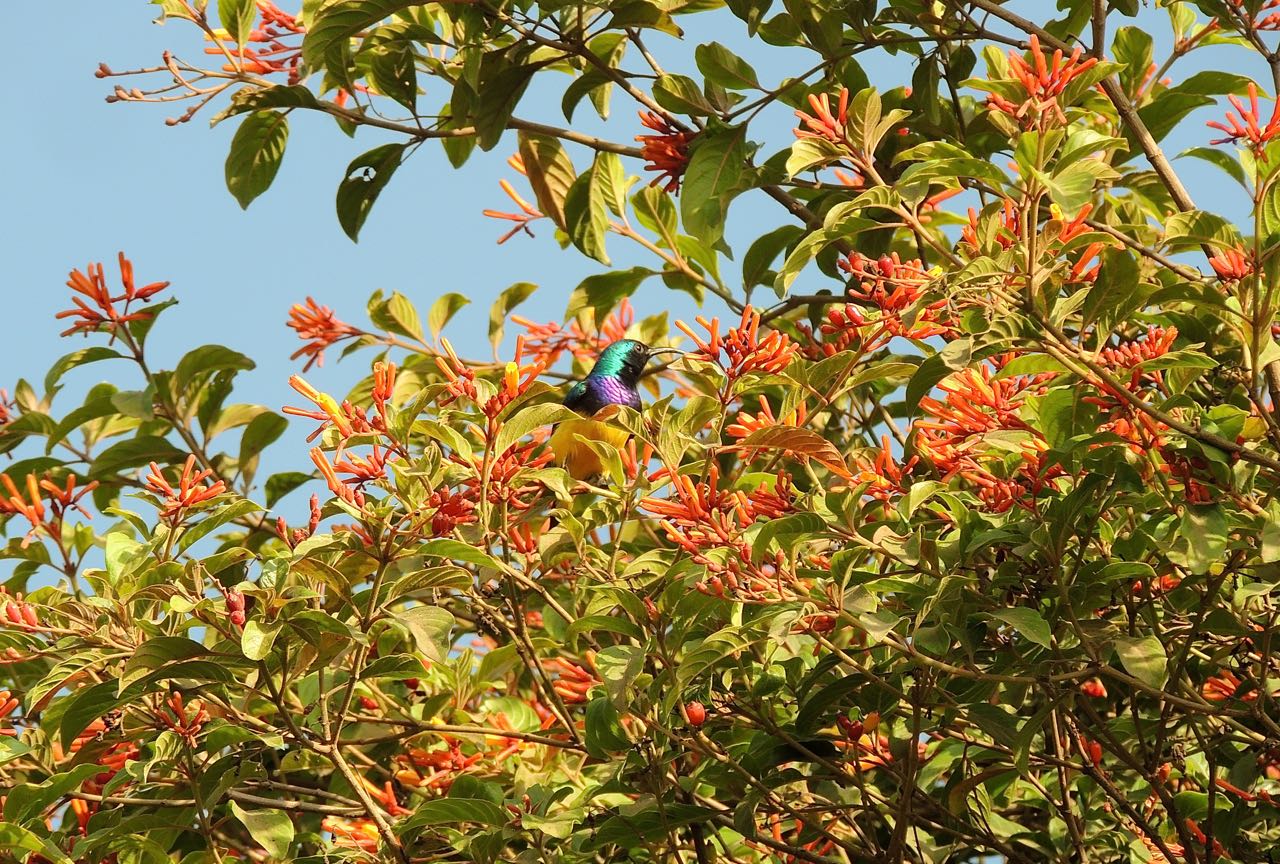 Variable Sunbird - Photo by William Young
Variable Sunbird - Photo by William Young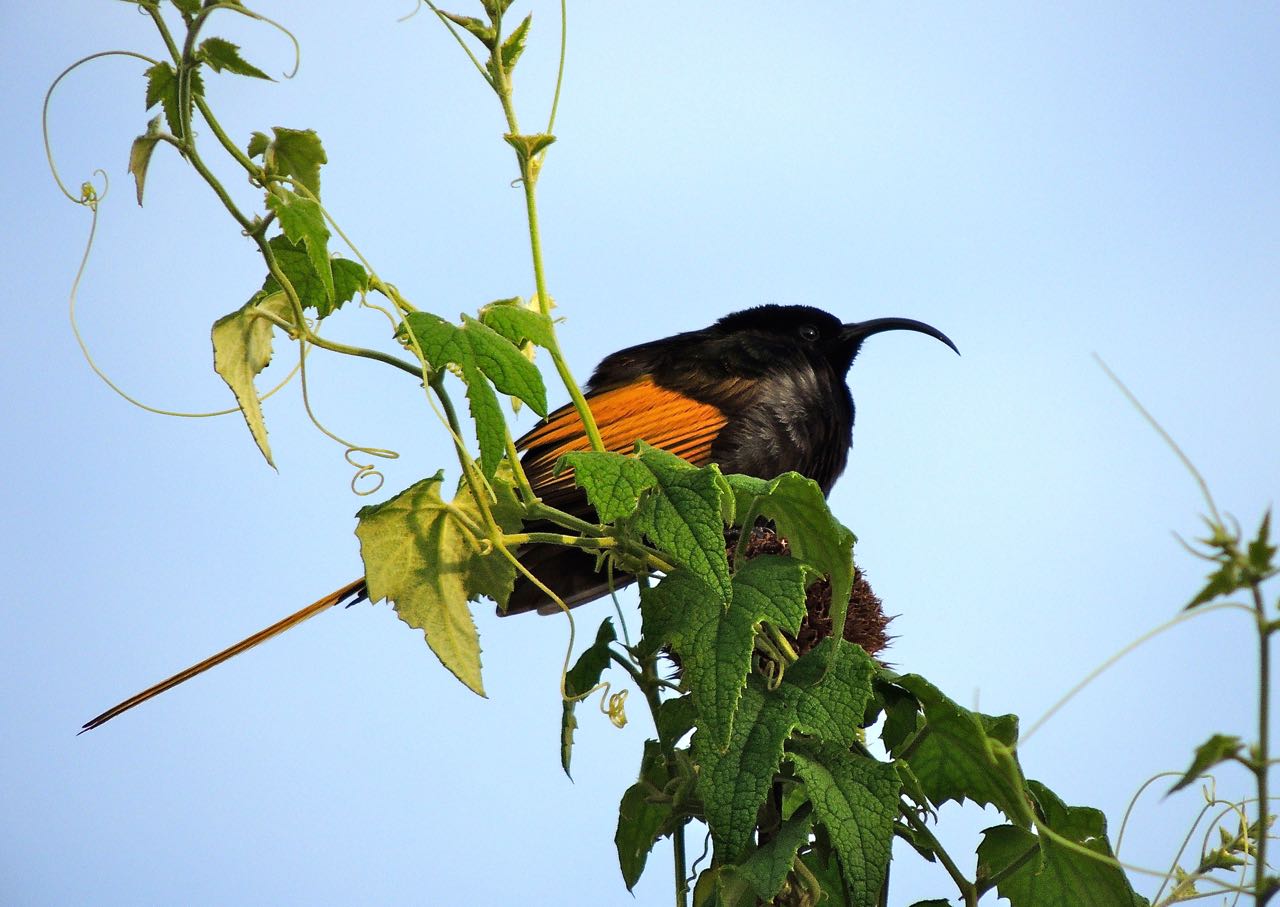 Golden-winged Sunbird - Photo by William Young
Golden-winged Sunbird - Photo by William Young
White-eyesI saw 11 African Yellow White-eyes around Amani. They are tiny green-and-yellow birds who forage in green leaves, so they can be difficult to see. Occasionally, one would pop into the open. The white eyering is prominent, but not as prominent as on some of the other white-eye species in the Stevenson guide. Martin saw an Abyssinian White-eye at Olduvai Gorge, but I did not see it.
Old World OriolesThe majority of the Orioles we saw were at Amani. We saw nine Green-headed Orioles, who have an olive head and a yellow collar. We also saw six of the seven African Golden Orioles we found on the trip, and one day, a few were feeding in the open in the same tree. They are bright yellow, with yellow edging on their black wings. I thought I heard one sing a song that sounded like o-ri-ole. We saw our only Eurasian Golden Oriole at Amani; its wings are black, without the yellow edges. We had nice looks at a couple of Eastern Black-headed Orioles at the Naitola campsite. They have a black head, yellow breast, and a prominent red bill.
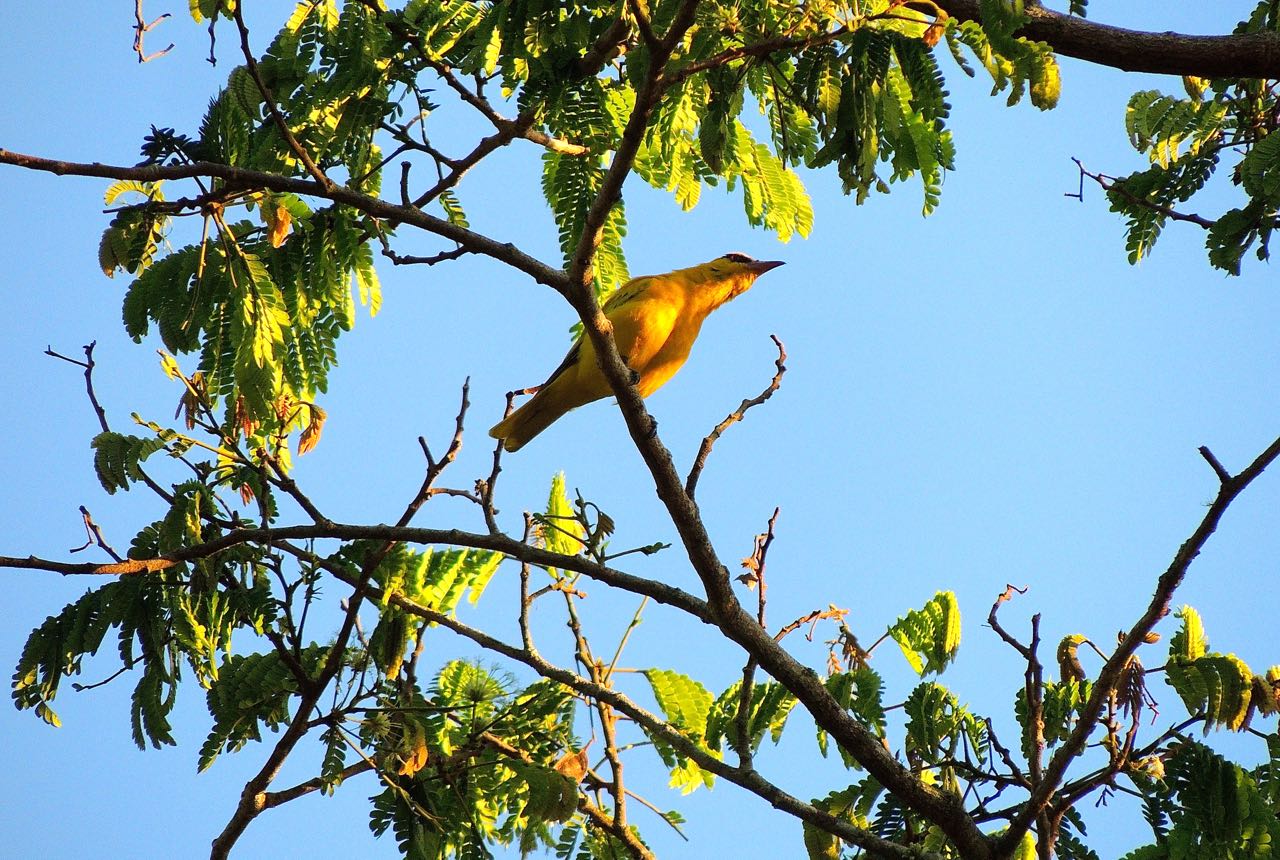 African Golden Oriole - Photo by William Young
African Golden Oriole - Photo by William Young
ShrikesShrikes tend to be birds of open areas, and Tanzania has a lot of open areas. We saw six species in the genus Lanius, which is Latin for "butcher". Even though we saw more than a few hundred shrikes, I did not see impaling prey. They often perch in the open.
We saw 173 Long-tailed Fiscals on nine days, with about 65 around Mkomazi and about 100 around Mikumi. They are black-and-white with long tails, and the black on the head covers the dark eye. We saw an immature with a creamy rump, and it was wiggling its tail back and forth. A few times, we saw groups of them in a tree together. I think of shrikes as solitary hunters rather than social birds. The Northern White-crowned Shrikes were very social. We saw 67 on nine days. We saw six at the picnic area at Serengeti National Park, and a couple were on a branch nestled next to each other. I also do not to think of shrikes as scavengers, but we saw a White-crowned Shrike on the ground eating scraps of food. They have a brown back, brown-tinged white underparts, a white crown, and a black line through the eye. I have become more sensitive to bird eyes since I started to do photography. Because so many shrikes have dark feathering around dark eyes, they can be difficult to photograph. Magpie Shrikes can be especially difficult, because they are mostly black, with white on their wings. We saw 82 in five days, with most of them around the Naitola campsite. They are sleek with long tails. In the Serengeti, I saw a Grey-backed Fiscal, who looks like a Loggerhead Shrike with a long tail.
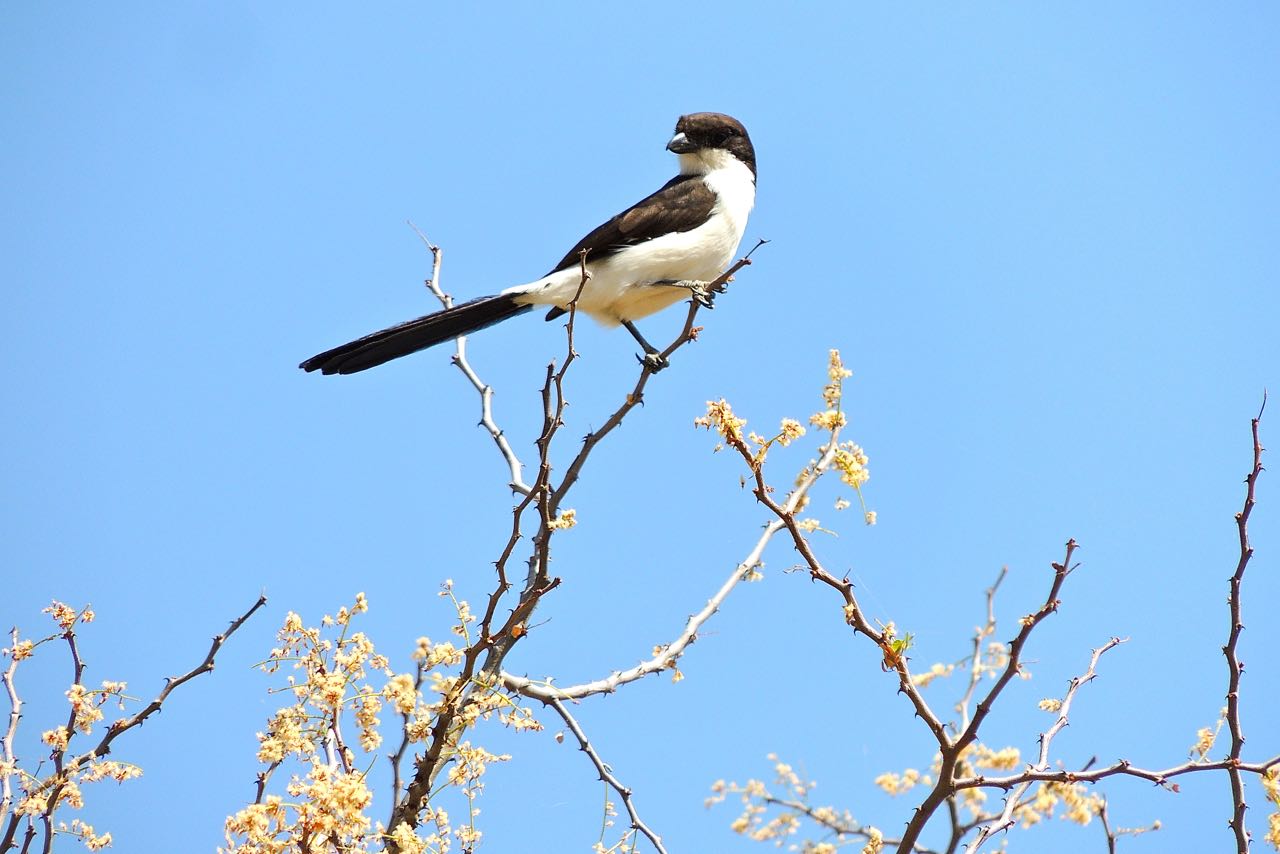 Long-tailed Fiscal - Photo by William Young
Long-tailed Fiscal - Photo by William Young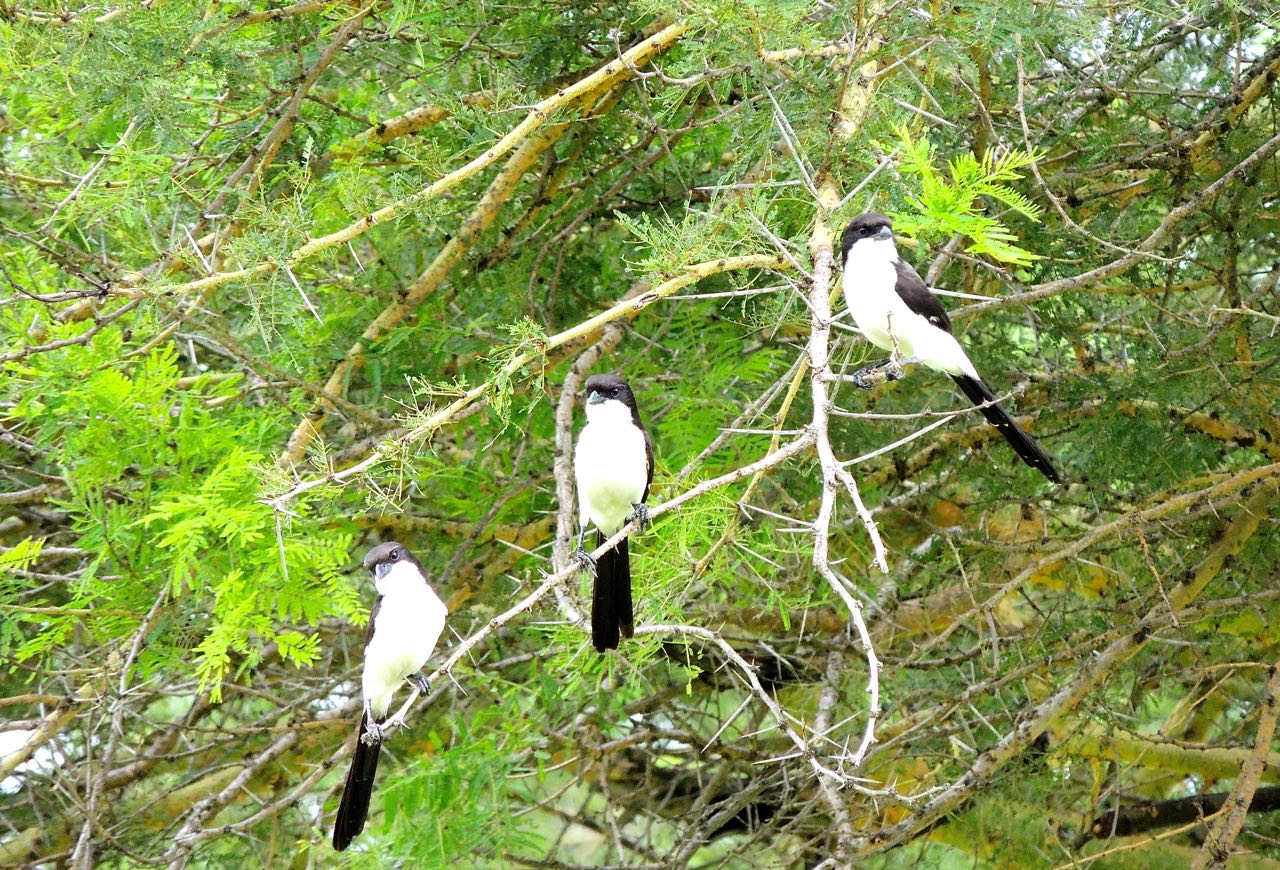 Long-tailed Fiscals - Photo by William Young
Long-tailed Fiscals - Photo by William Young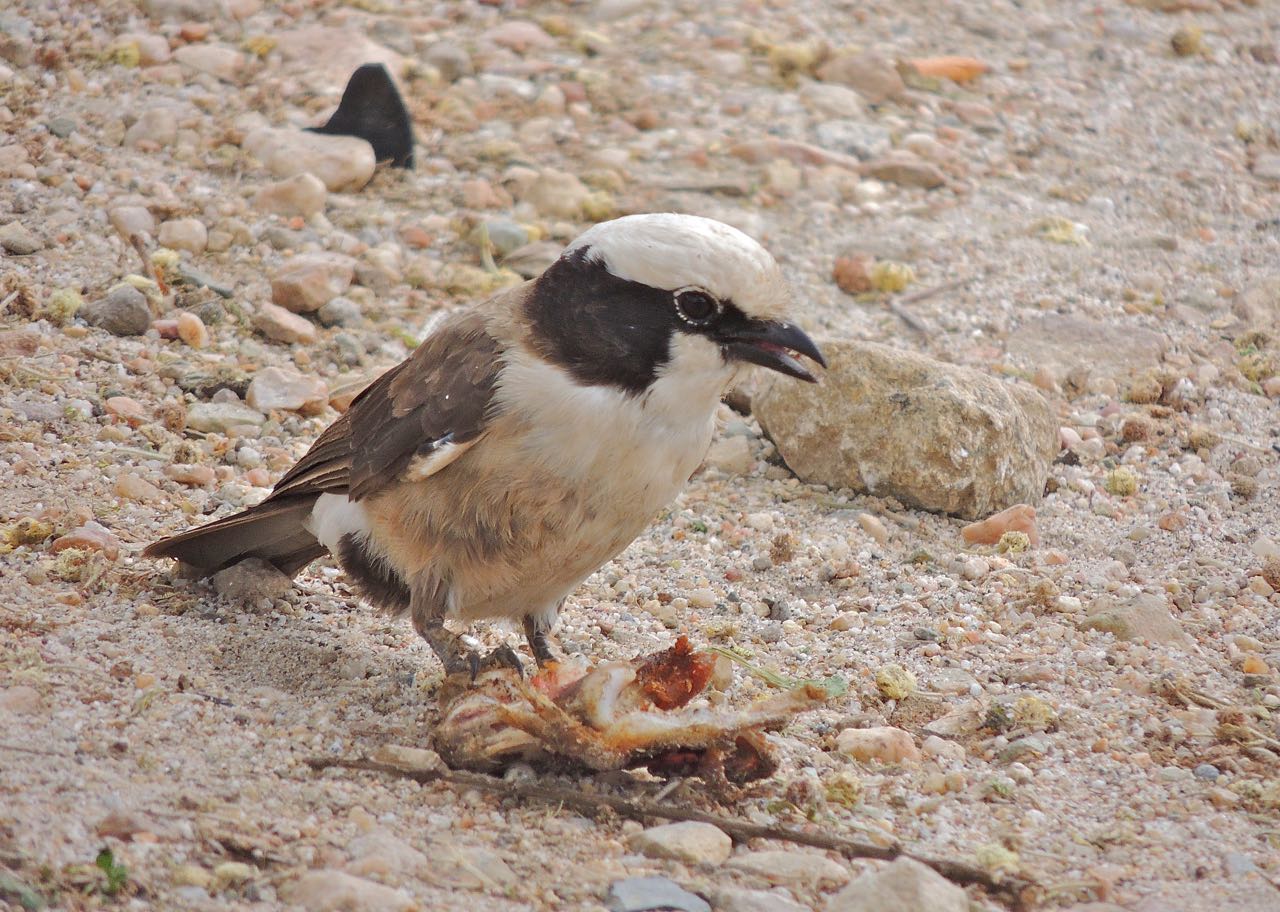 Northern White-crowned Shrike - Photo by William Young
Northern White-crowned Shrike - Photo by William Young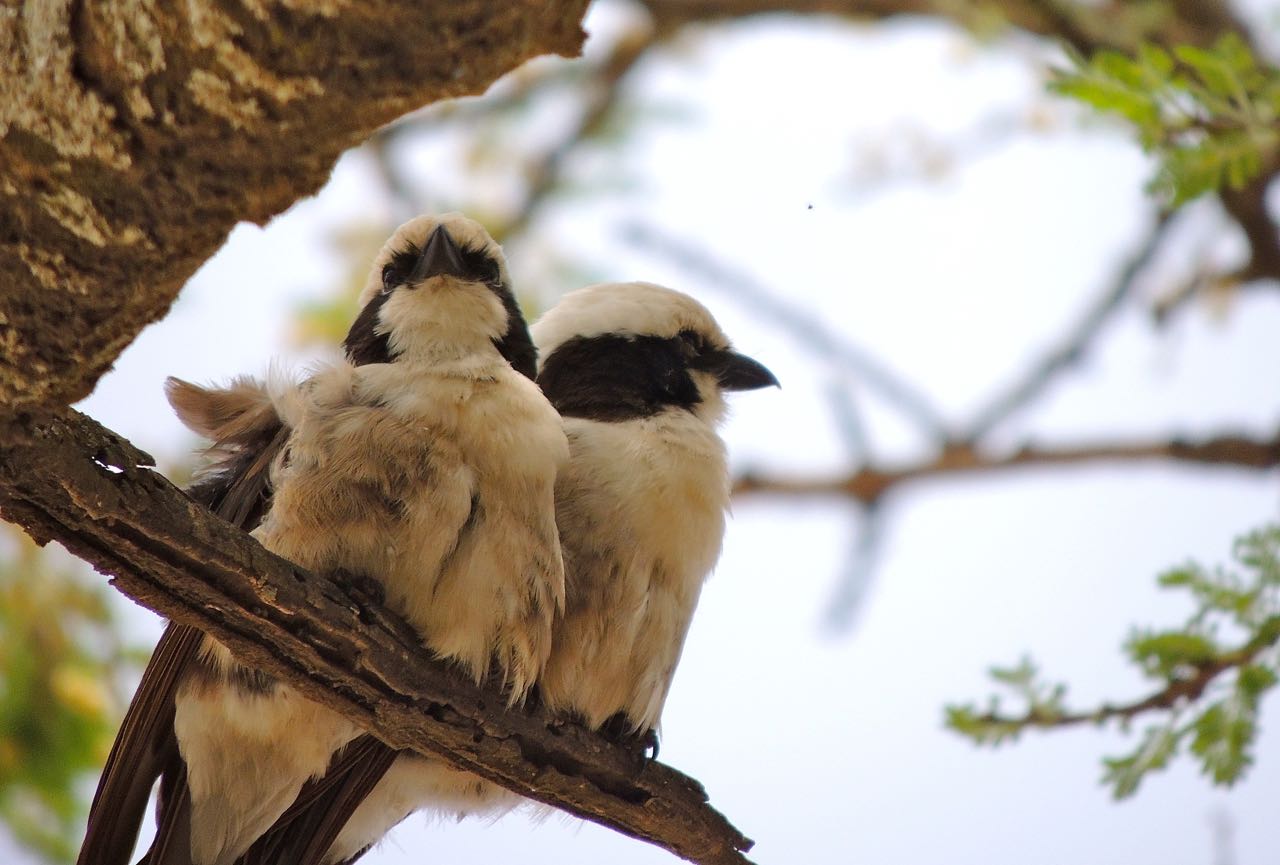 Northern White-crowned Shrikes - Photo by William Young
Northern White-crowned Shrikes - Photo by William Young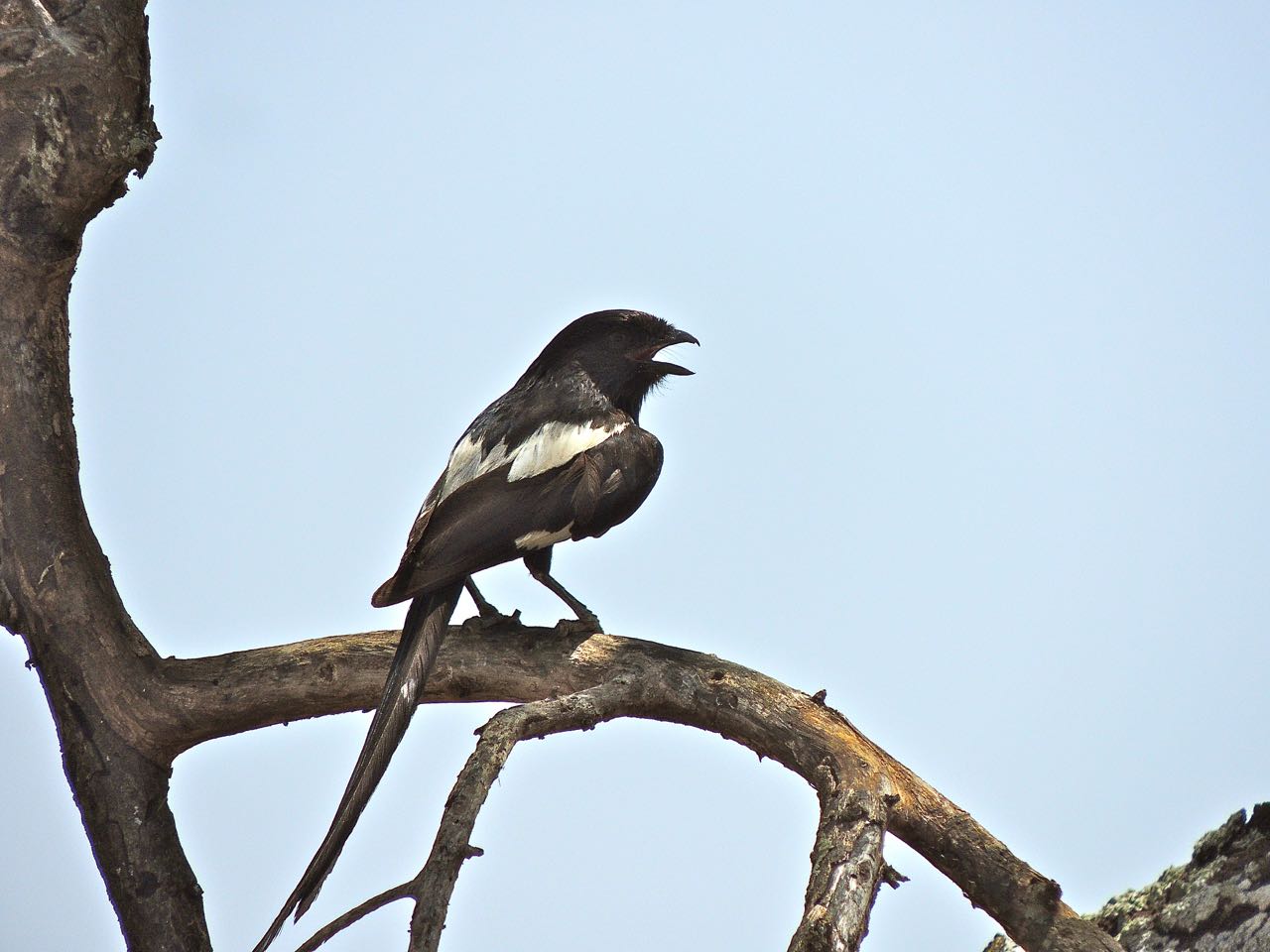 Magpie Shrike - Photo by William Young
Magpie Shrike - Photo by William Young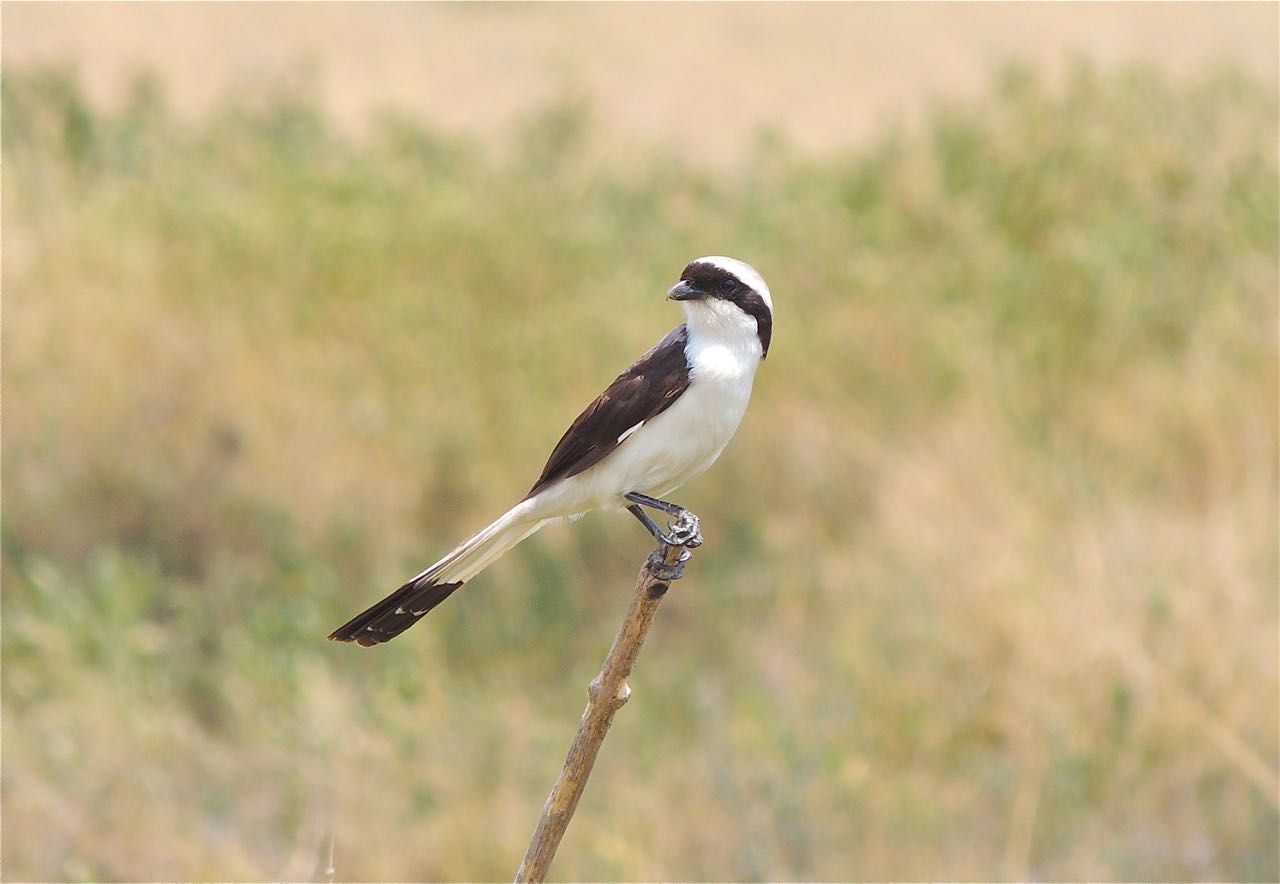 Grey-backed Fiscal - Photo by William Young
Grey-backed Fiscal - Photo by William YoungWe saw 61 Common Fiscals, with most being in Arusha National Park. They are another black-and-white shrike, with some white on the black wings. We saw four Taita Fiscals at the Ndutu campsite. They look like Common Fiscals, with a gray back instead of a black one. We saw 17 Isabelline Shrikes on six days. The first one was sitting on a bush near our tents at Ndutu. It has a light brown cap and a rufous tail. We saw another dozen when we were in Mkomazi. We saw eight Red-backed Shrikes in three days – six in Mikumi. They might have been the prettiest shrike we saw, with a gray back, rufous wings, and pinkish underparts.
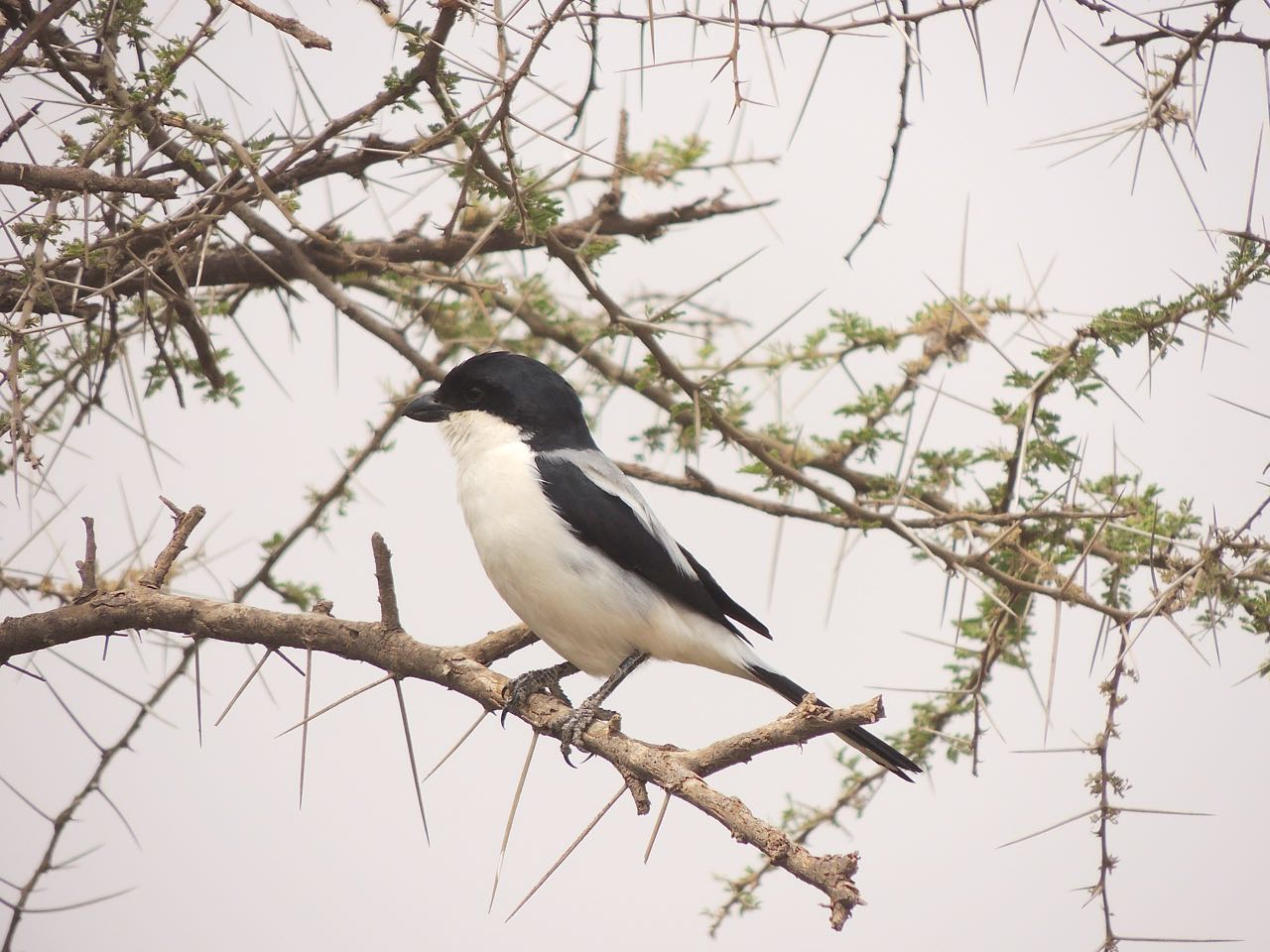 Taita Fiscal - Photo by William Young
Taita Fiscal - Photo by William Young
Bushshrikes and AlliesBushshrikes mostly forage in trees and bushes, so one tends not to get prolonged looks at them. At Serenity, we saw a pair of Black-headed Gonoleks feeding in the trees. They are jet black above with a light eye. Their underparts are Scarlet Tanager red. Some Tropical Boubous fed in the bushes near the loading area at the Rhino Lodge. They are black on the back and white below, with a pinkish tinge to the white. Slate-colored Boubous were near our tents at Ndutu, and they are solid black. We saw two Black-backed Puffbacks at Amani and one at Simon King's house in Arusha. They have a black back, white on the wings, and white underparts. Brown-crowned Tchagras are skulking birds, and I saw only two. One at Arusha had a rufous back, a brown cap, and a broad white supercilium. At Amani, we saw a couple of Black-fronted Bush-Shrikes, who have an olive back, yellow underparts, and a black mask. Near the entrance to Mkomazi, we saw a Rosy-patched Bush-Shrike walking on the ground. It had a black malar stripe and a red rump. We saw four Brubrus on three days. A few were at the entrance to the park at Ndutu. They have a black back, a white eyestripe, and some rufous on the flanks. Their call is a single burry note, and I heard it in numerous places.
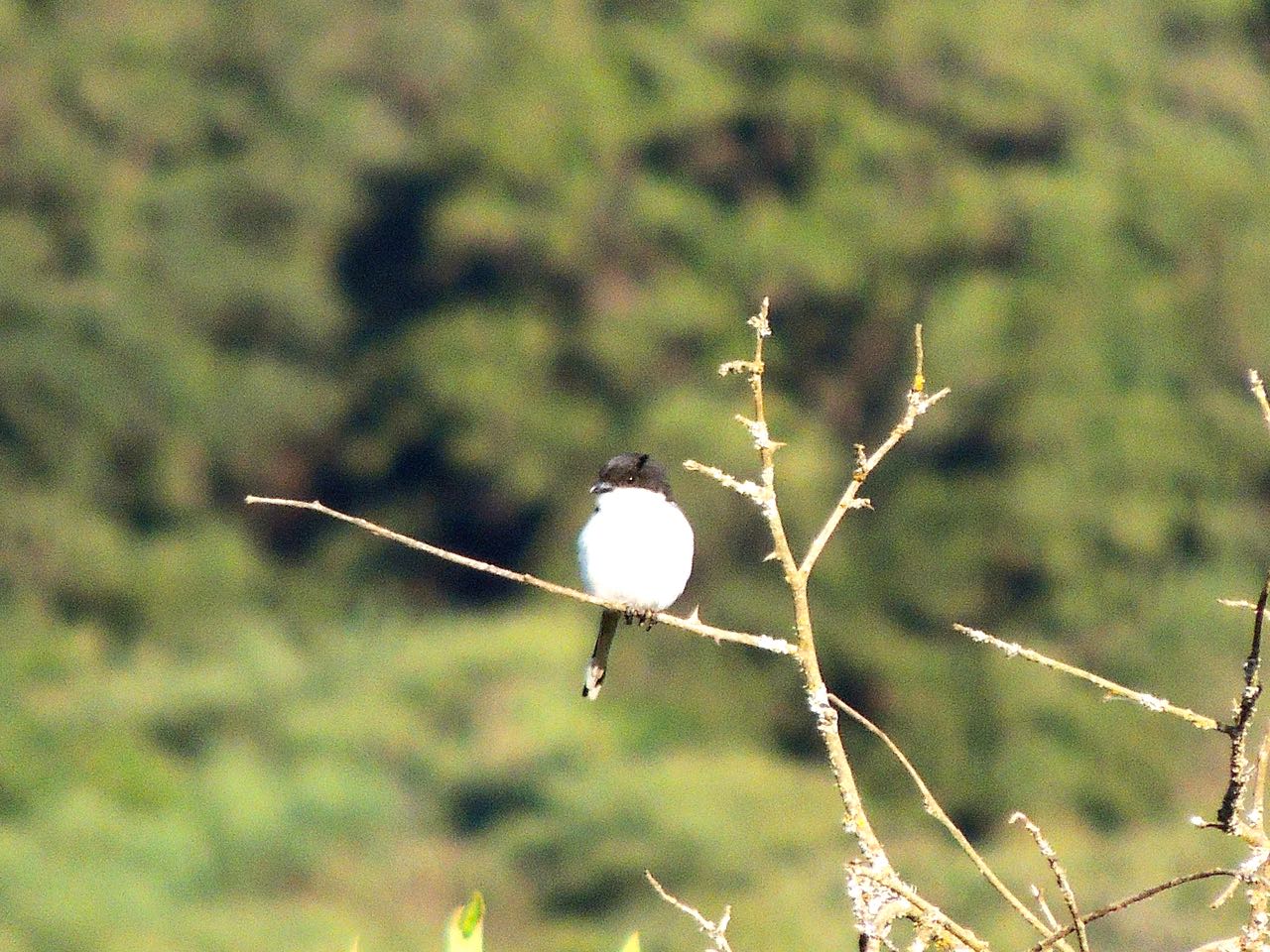 Tropical Boubou - Photo by William Young
Tropical Boubou - Photo by William Young
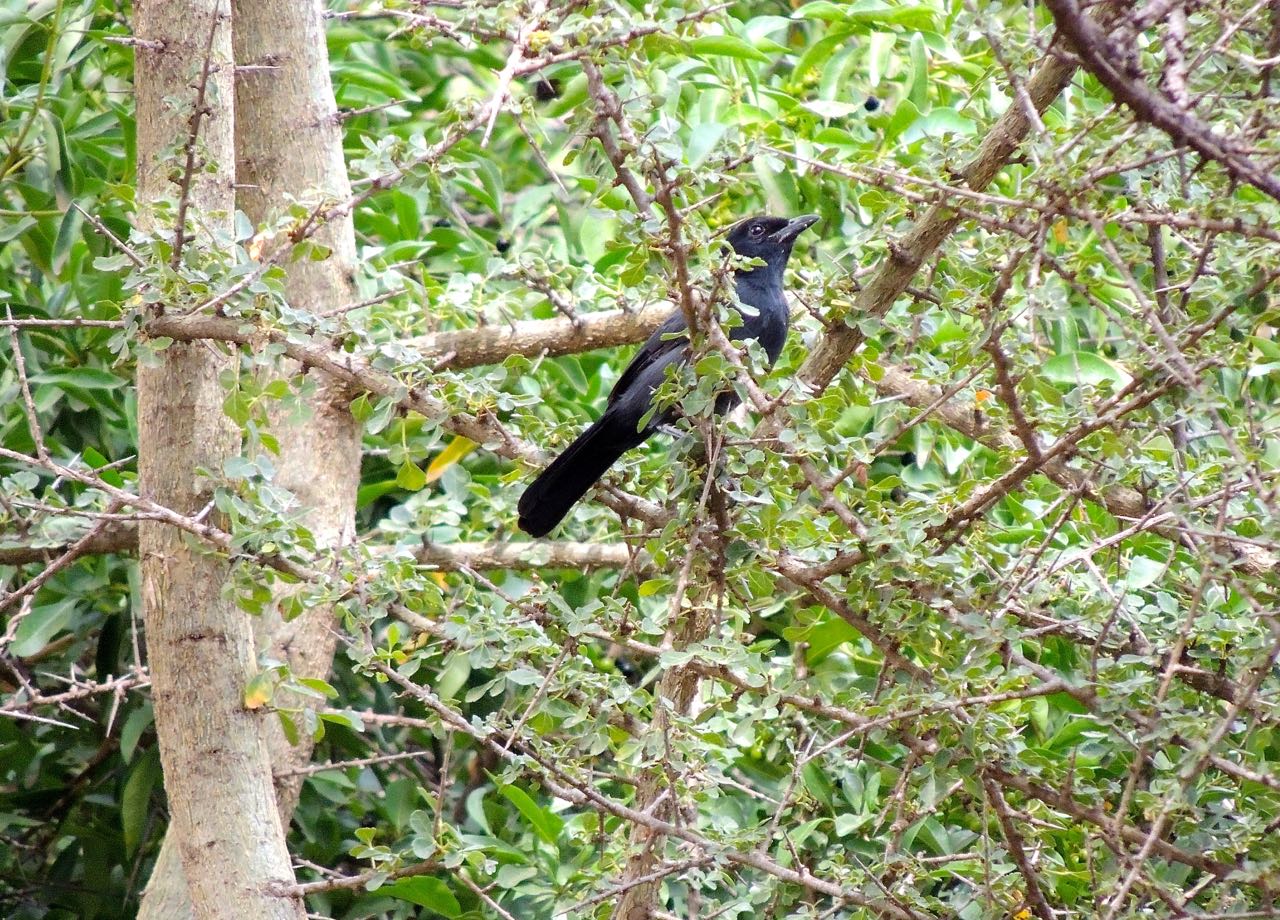 Slate-colored Boubou - Photo by William Young
Slate-colored Boubou - Photo by William Young
DrongosBoth Tanzanian drongo species have a forked tail, so these names are not helpful in separating them. The Fork-tailed Drongo is larger. When perched, both appear to be all black birds. They show light feathering on the wings in flight. We did not see any Square-tailed Drongos until we were in Amani, Udzungwa, and Mikumi. I heard one Fork-tailed Drongo give a call that sounded like kid-dick. I also saw one flycatching. Our local guide at Amani said the Fork-tailed Drongo species might be split.
Crows, Jays, and MagpiesCorvids were fairly common in a lot of areas we visited. House Crows are black and dark gray. We saw about 175, with large numbers in Dar es Salaam, on the road to Dar es Salaam, and on the drive from Mwanza to Serenity. I saw a similar number of Pied Crows, who are more attractive with their black-and-white plumage. They have a white collar and white belly, and they often fly in tandem. I saw my first ones in Addis Ababa, and we saw a lot while we were driving in and out of Amani. Some were sifting through garbage when we were waiting to get on the boat in Kilombero. White-necked Ravens were not as common as crows, but we saw an estimated 67 on 10 days. Some were at the camp in Ndutu, and their bill is really big – the upper mandible has a hump on it. Unlike the Chihuahuan Raven of North America whose neck feathers have a white base that shows when the wind blows, the white on the neck of the White-necked Raven is a bar that can be seen without wind. We saw them in areas where there were people and human-made structures, such as tall metal towers.
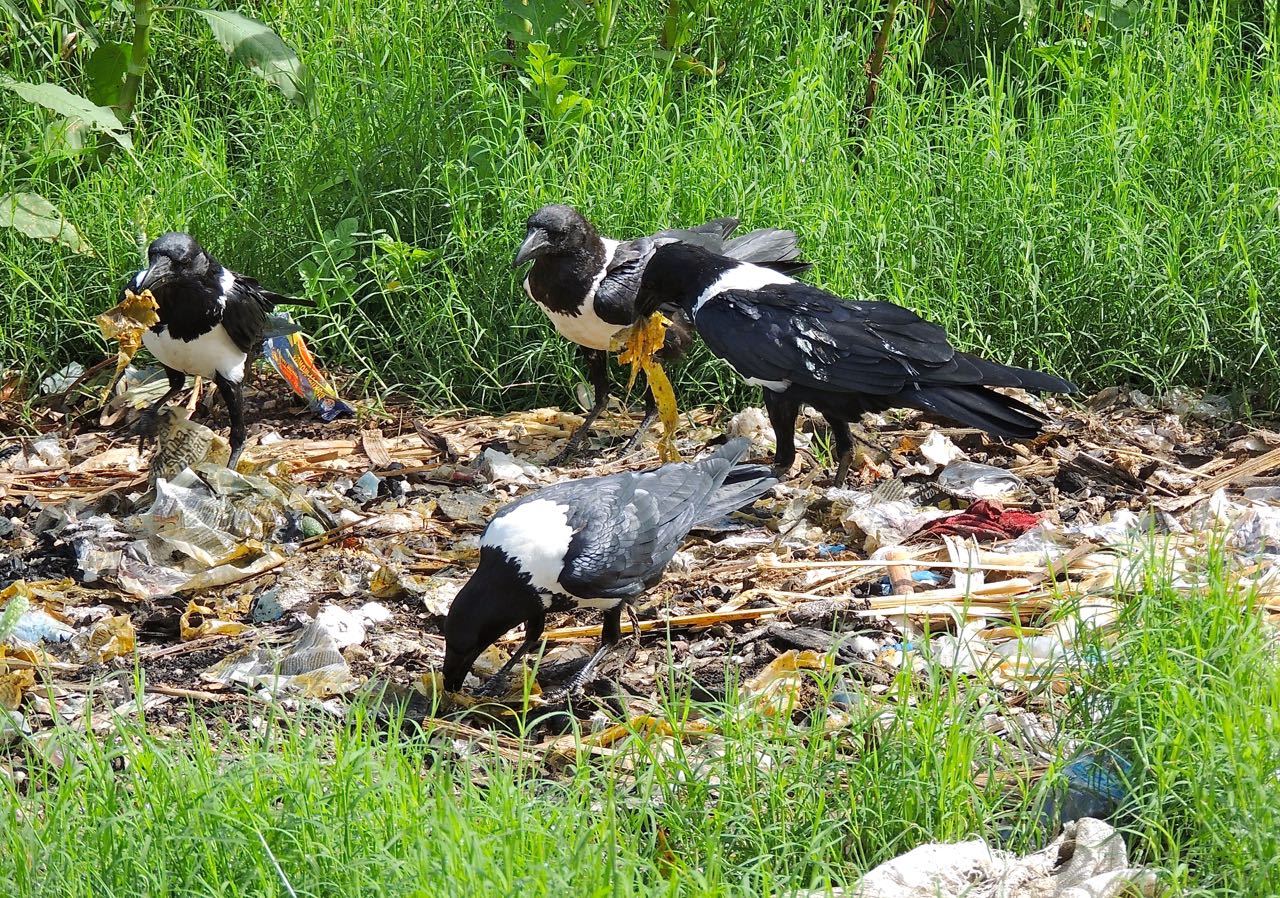 Pied Crow - Photo by William Young
Pied Crow - Photo by William Young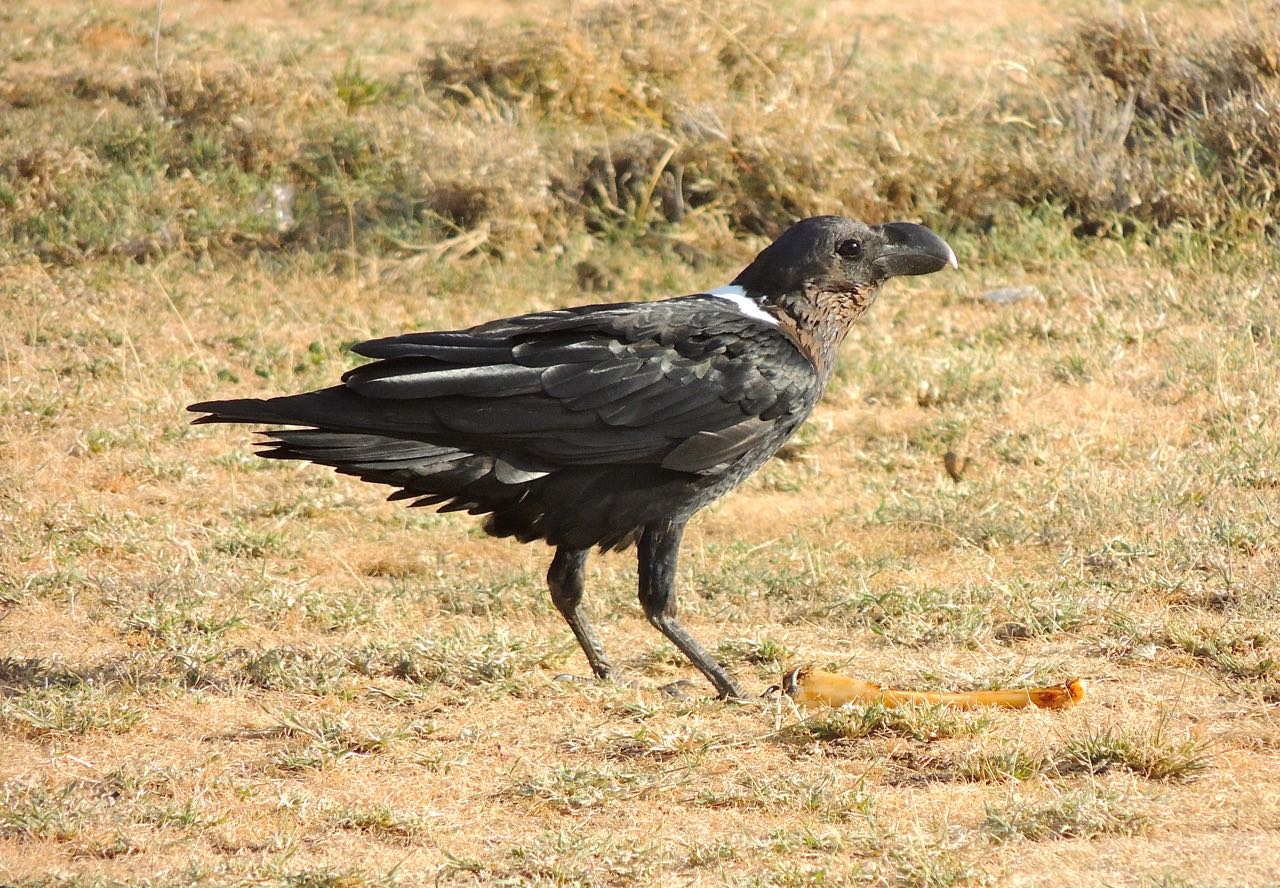 White-necked Raven - Photo by William Young
White-necked Raven - Photo by William Young
OxpeckersB. Kliban drew a cartoon called "Bus Station Pest" which shows one person at a bus station sticking his finger into the ear of another. I thought of the pest when watching an oxpecker sticking its bill into the ear of a Cape Buffalo. The two oxpecker species look alike. We never saw more than ten in a day of either species. The adult Red-billed Oxpecker has an entirely red bill and a yellow eyering, while the Yellow-billed Oxpecker has a red tipped yellow bill and no eyering. We saw oxpeckers on giraffes, rhinos, hippos, buffalos, and other mammals, and they might be seen anywhere there are large mammals. One of the few times we saw them elsewhere was at Mikumi, where two Yellow-billed Oxpeckers were on a tower drinking water that had collected from the rain the previous evening.
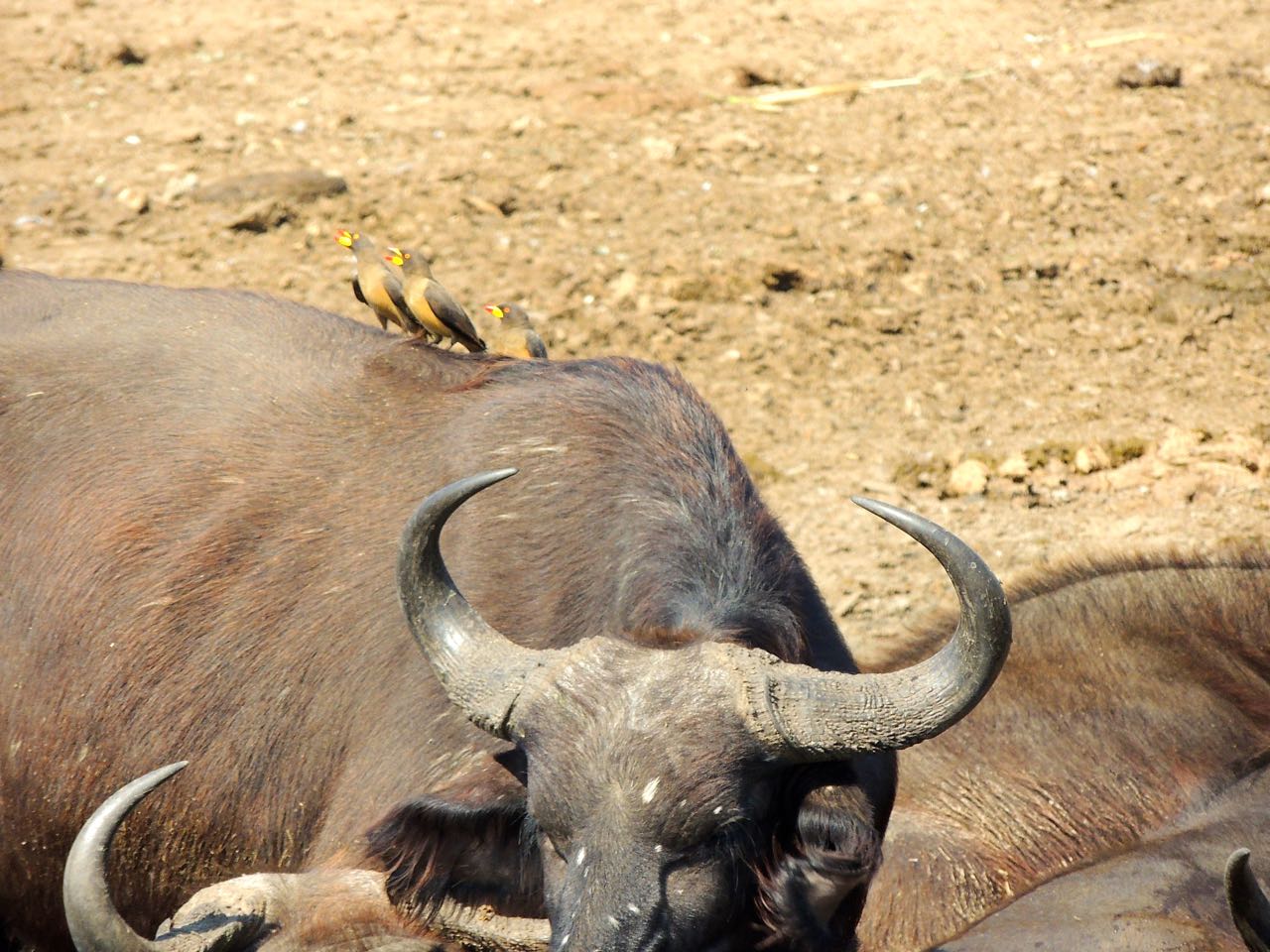 Yellow-billed Oxpeckers on African (Cape) Buffalo - Photo by William Young
Yellow-billed Oxpeckers on African (Cape) Buffalo - Photo by William Young
StarlingsI have heard numerous people say they wish one of the beautiful African species of starlings had been introduced to the United States rather than the dreary European Starling. It would have been good if no species of starling from anywhere had been introduced. At any rate, the Superb Starling is both a beautiful and a plentiful bird in Tanzania. We saw an estimated 855 on 18 days. In the parks, we saw about 150 in the Serengeti, 200 at Ndutu, and 250 at Tarangire. They have an iridescent blue crown and upper breast, with a white band separating the blue from the orange-brown underparts. Their face is black, which provides strong contrast with the white eye. When they fly, they have a short-tailed appearance and show a startling flash of electric blue. The Hildebrandt's Starling looks similar, but has a red eye and lacks the white breastband. We saw 38 on five days, including some who were looking for scraps from our table when we were eating lunch at Serengeti National Park. The day before in a different part of the park, we saw 10 Rüppell's Glossy Starlings, who have iridescent purple plumage, a long tail, and light eyes. They look like the Common Grackle in North America. The Greater Blue-eared Starling is all dark, with a shorter tail. They have darker black feathering on the ear. At Mikumi, we saw 15 of the similar Southern Blue-eared Starling, who is smaller than the Greater. When we were on a hike in Udzungwa National Park with a guide who did not know much about birds, we were taken into an area of rain forest that was so dense that we could hardly walk through the underbrush, let alone see birds above us. We heard a bird singing whom the guide called a "starling bird". It was a Black-bellied Glossy-Starling, but we never saw it. The seven Kenrick's Starlings we saw near the campsite at Momela are all dark, but not glossy. They have a dark eye and look a bit like American blackbirds. The Ashy Starling is light brown, and the only iridescence I could see was on the wings. It has a light eye and a long tail. It is a Tanzanian endemic, and we saw 13 at the Naitola campsite.
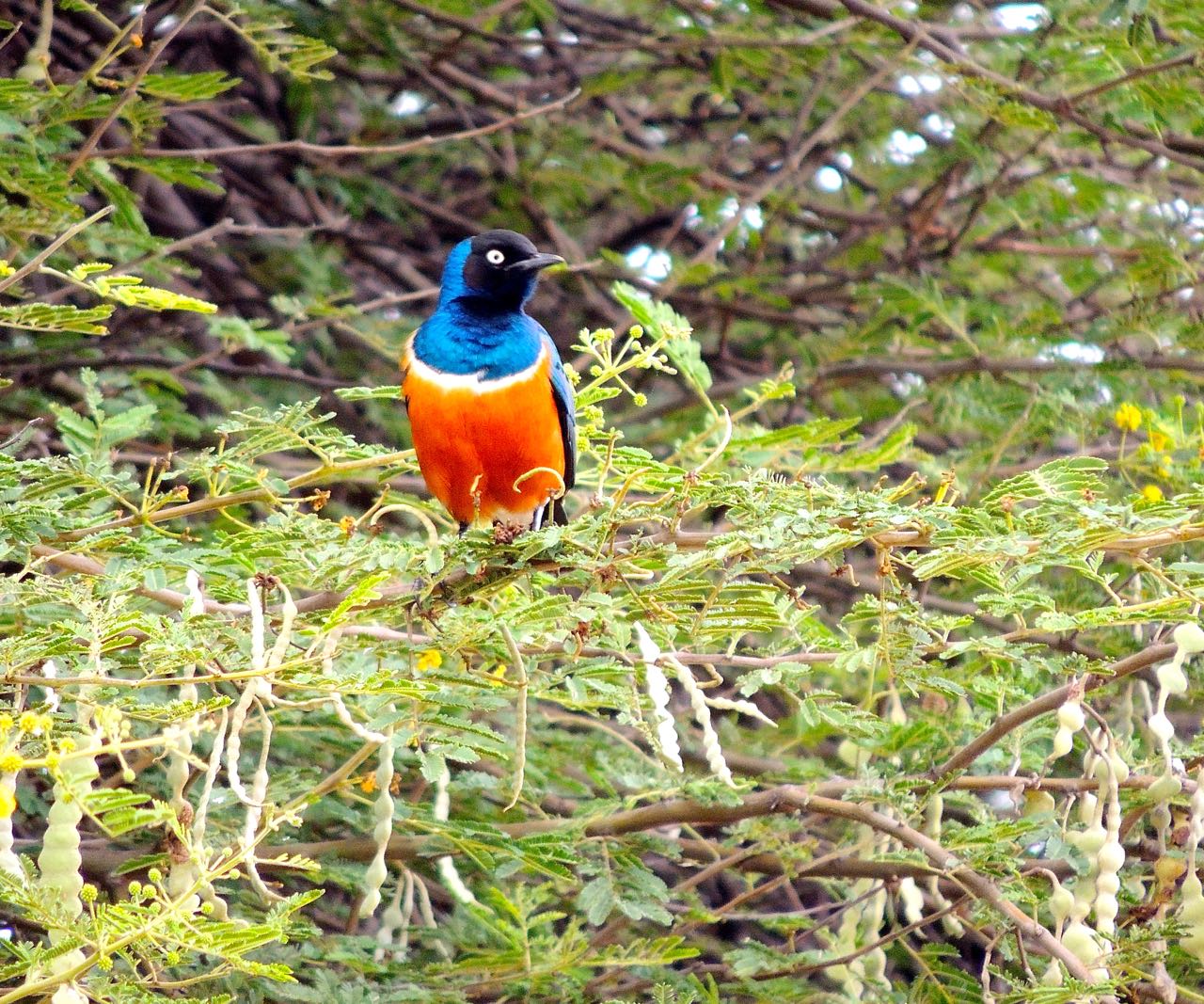 Superb Starling - Photo by William Young
Superb Starling - Photo by William Young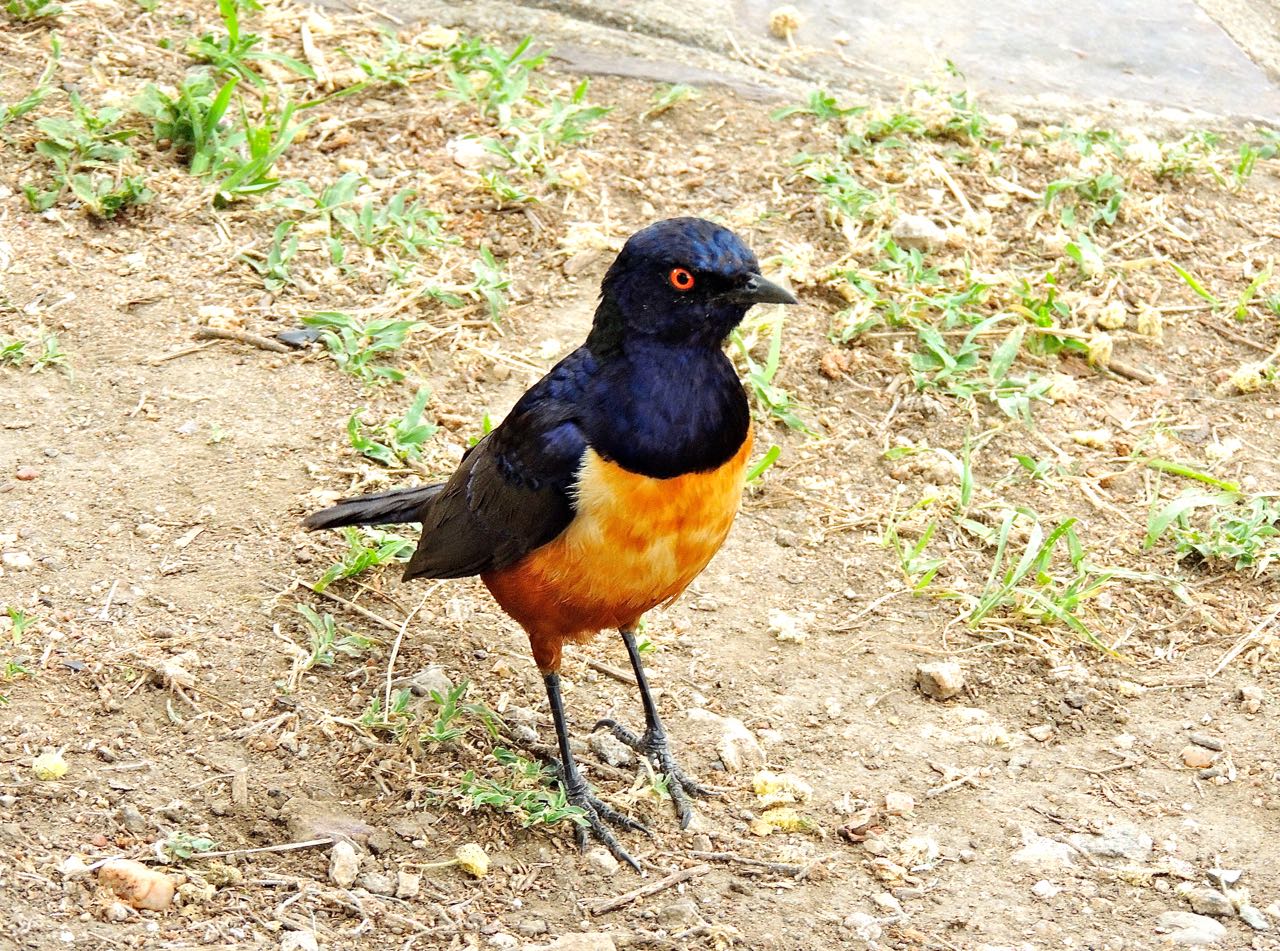 Hildebrandt's Starling - Photo by William Young
Hildebrandt's Starling - Photo by William Young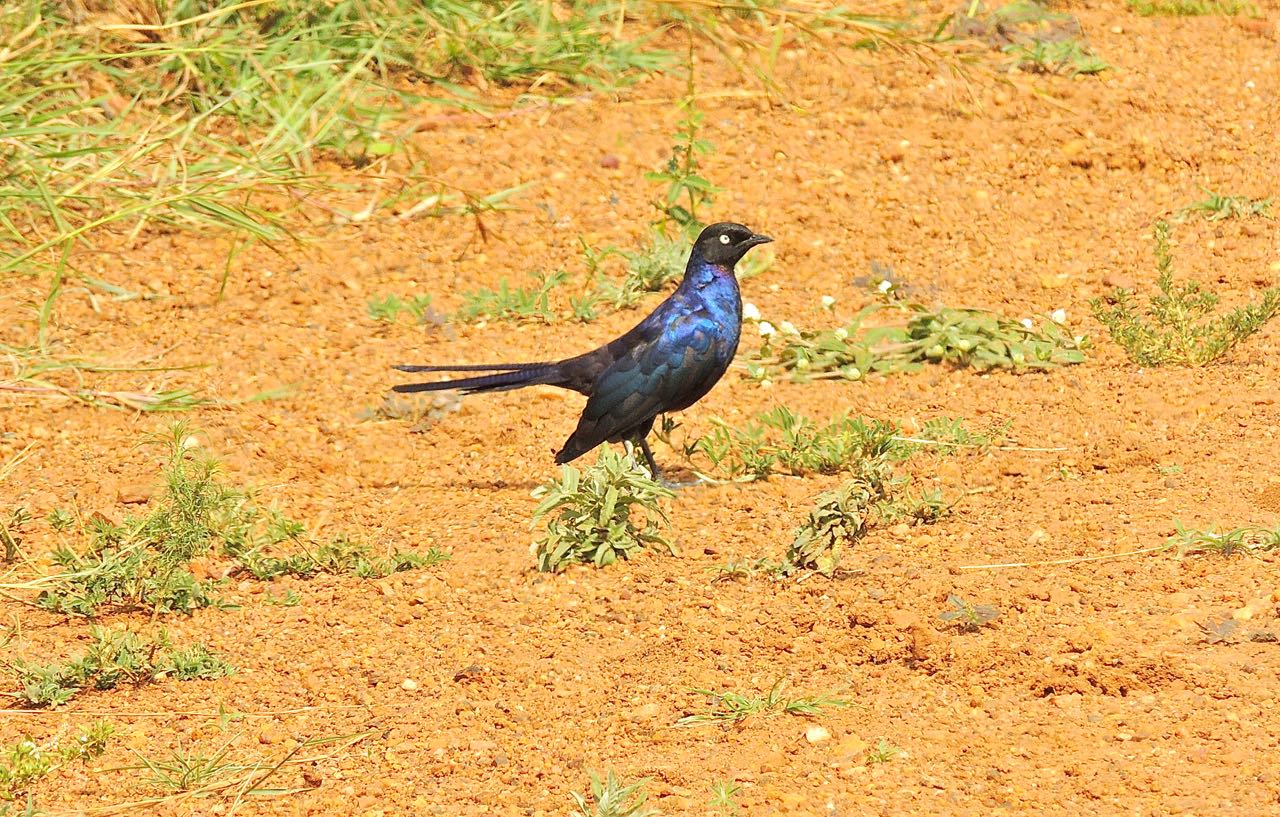 Rüppell's Glossy Starling - Photo by William Young
Rüppell's Glossy Starling - Photo by William Young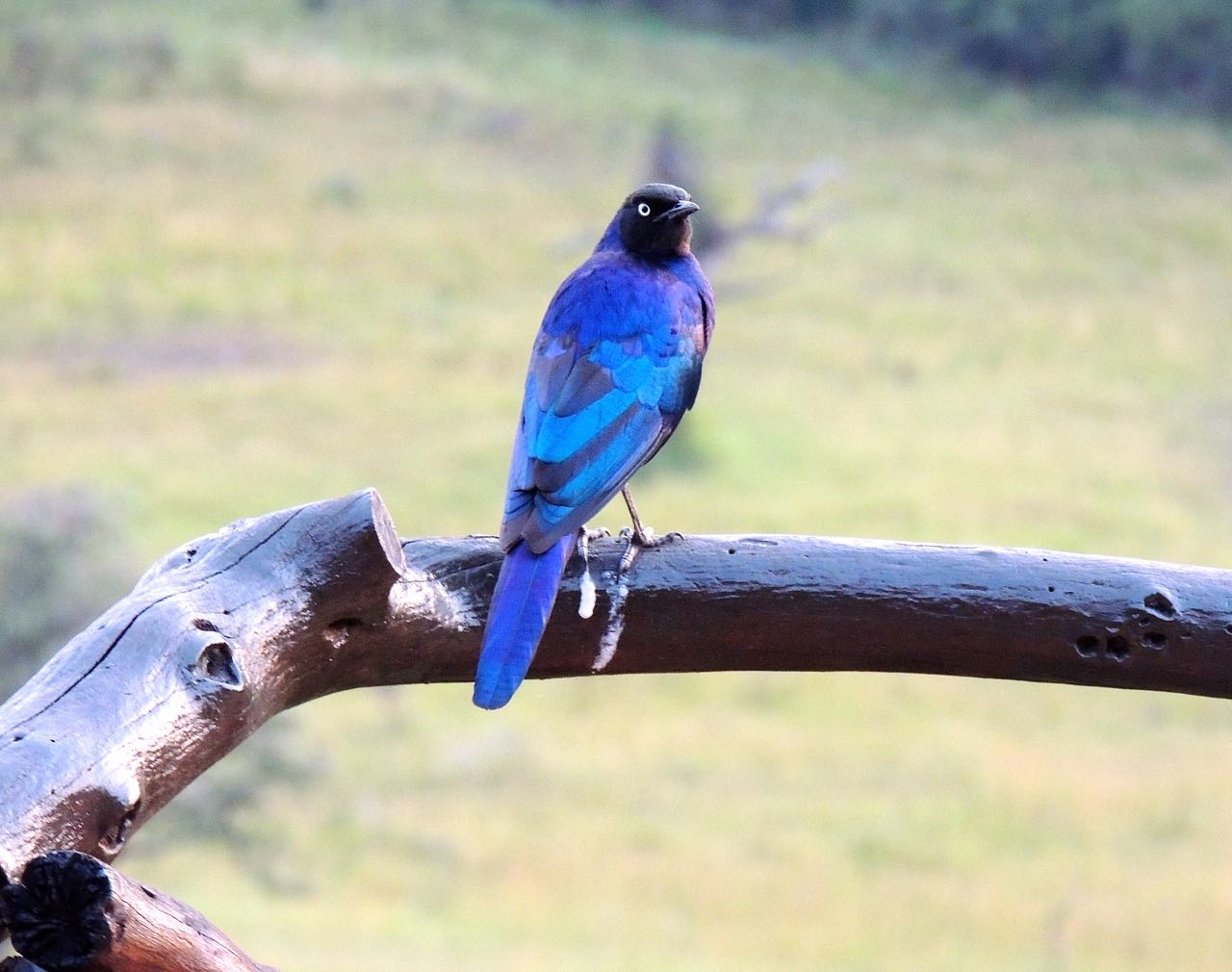 Greater Blue-eared Starling - Photo by William Young
Greater Blue-eared Starling - Photo by William Young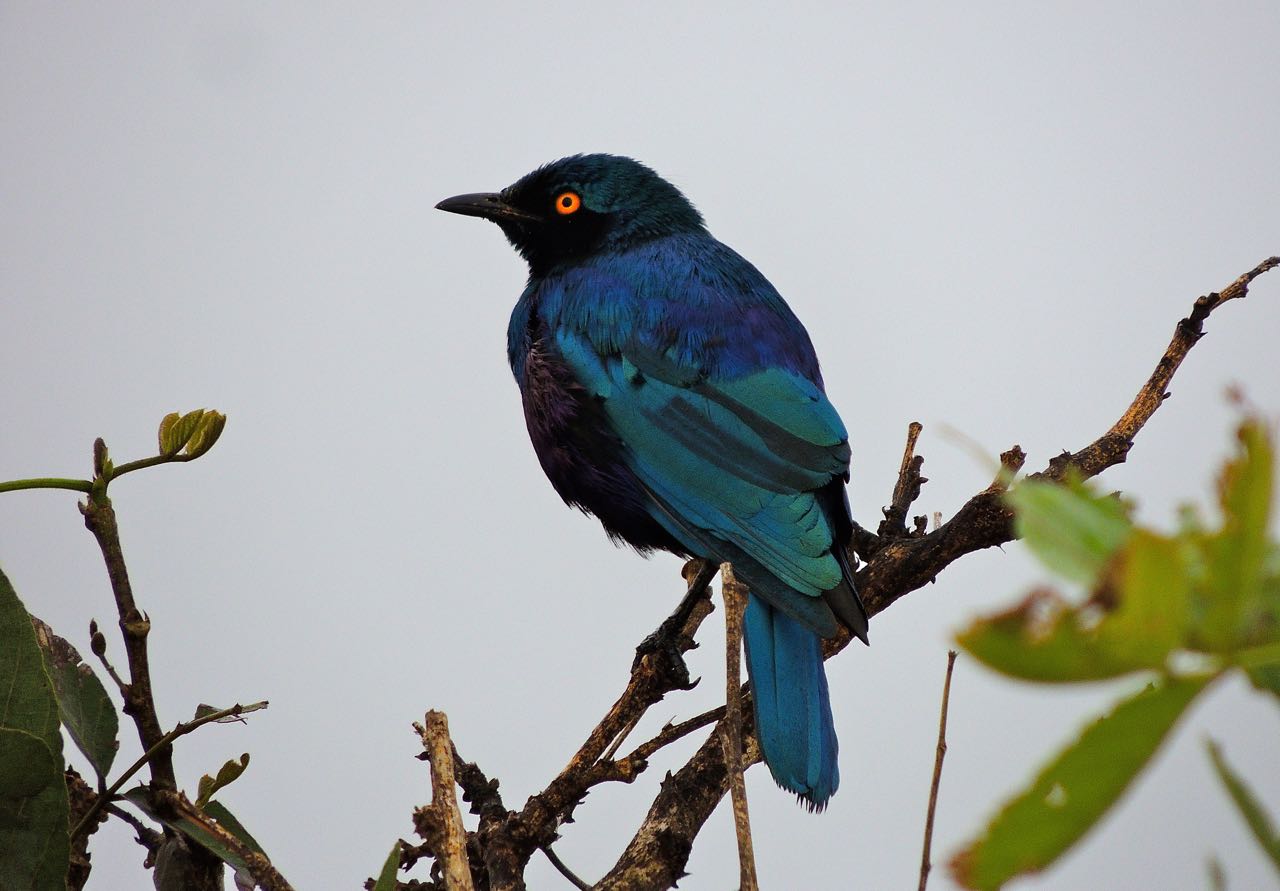 Southern Blue-eared Starling - Photo by William Young
Southern Blue-eared Starling - Photo by William Young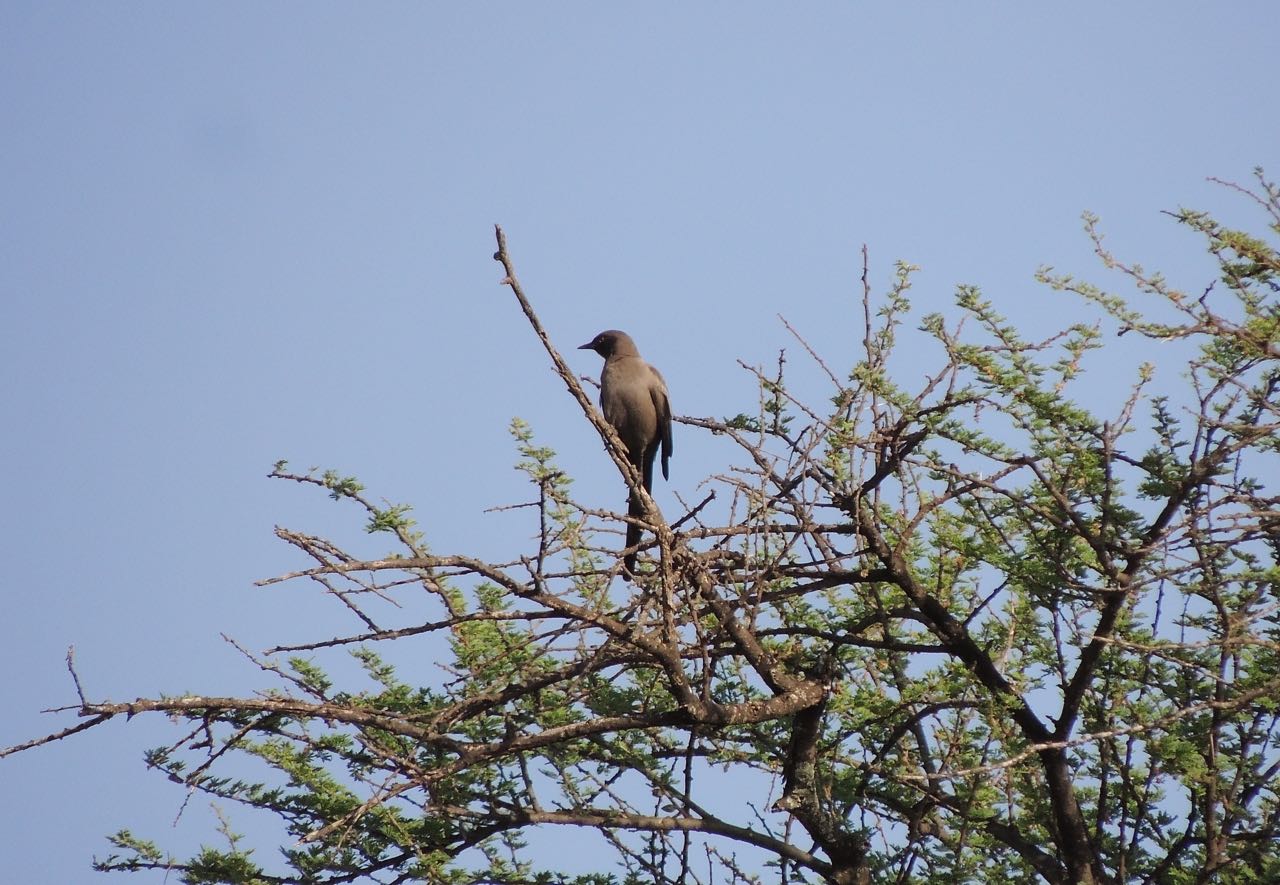 Ashy Starling - Photo by William Young
Ashy Starling - Photo by William YoungWe saw two species of starlings with chestnut wings. I saw a couple of Red-winged Starlings outside my room at the Rhino Lodge. They are all blue-black, with chestnut primaries. The Waller's Starling is a slightly smaller and shorter-tailed version of the Red-winged, and there were three at Amani. We saw 257 Wattled Starlings, including 100 at Serengeti National Park and 150 at Ndutu National Park. We saw one tree full of them, and we also saw some behaving like oxpeckers on the wildebeest. They are gray, with black wings and a white section at the top of the folded wing. I did not get many good looks at the bald yellow head or the hanging black wattles. Near Dindira Swamp, we saw an Amethyst (Violet-backed) Starling, who is quite small. It has a violet back and white underparts. We also saw Fischer's Starlings there — 14 in two days. They are gray, with a white belly and a black line between the eye and the bill.
Old World SparrowsHouse Sparrows are an introduced species in Tanzania, and we saw an estimated 720 on 12 days. We saw most of these in the period from our last day in Amani through our second day in Udzungwa, which included our ill-fated drive to Uluguru. A flock of eight Chestnut Sparrows landed in a tree while we were at an overlook near Dindira Swamp. The males are solid chestnut, and the females could pass for an American sparrow. We saw Kenya Rufous Sparrows at our campsite at Ndutu. The male looks like a House Sparrow with a rufous rather than a brown swirl around the ear. We saw Common Grey-headed Sparrows on 11 days, but never very many. We saw one on a roof at Serenity and a half a dozen on the ground when we were having lunch in Serengeti National Park. They are gray birds with brown wings.
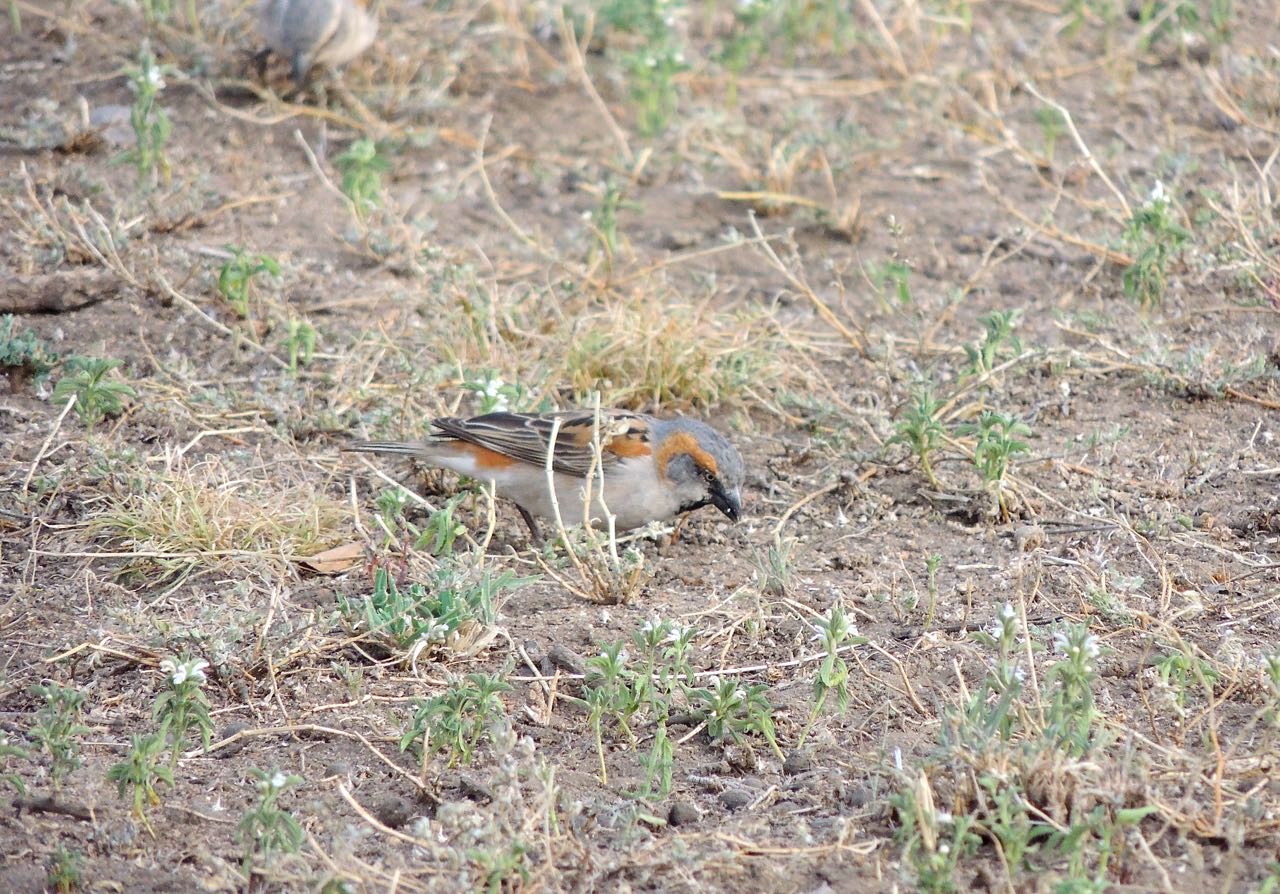 Kenya Rufous Sparrow - Photo by William Young
Kenya Rufous Sparrow - Photo by William Young
Weavers and AlliesThe weavers are a large and complex group. Many weaver species look alike, are difficult to differentiate, and occupy a limited range or habitat. We saw 35 species, with none being seen on more than eight days. We also saw a great many weaver nests hanging from trees, and some were quite large.
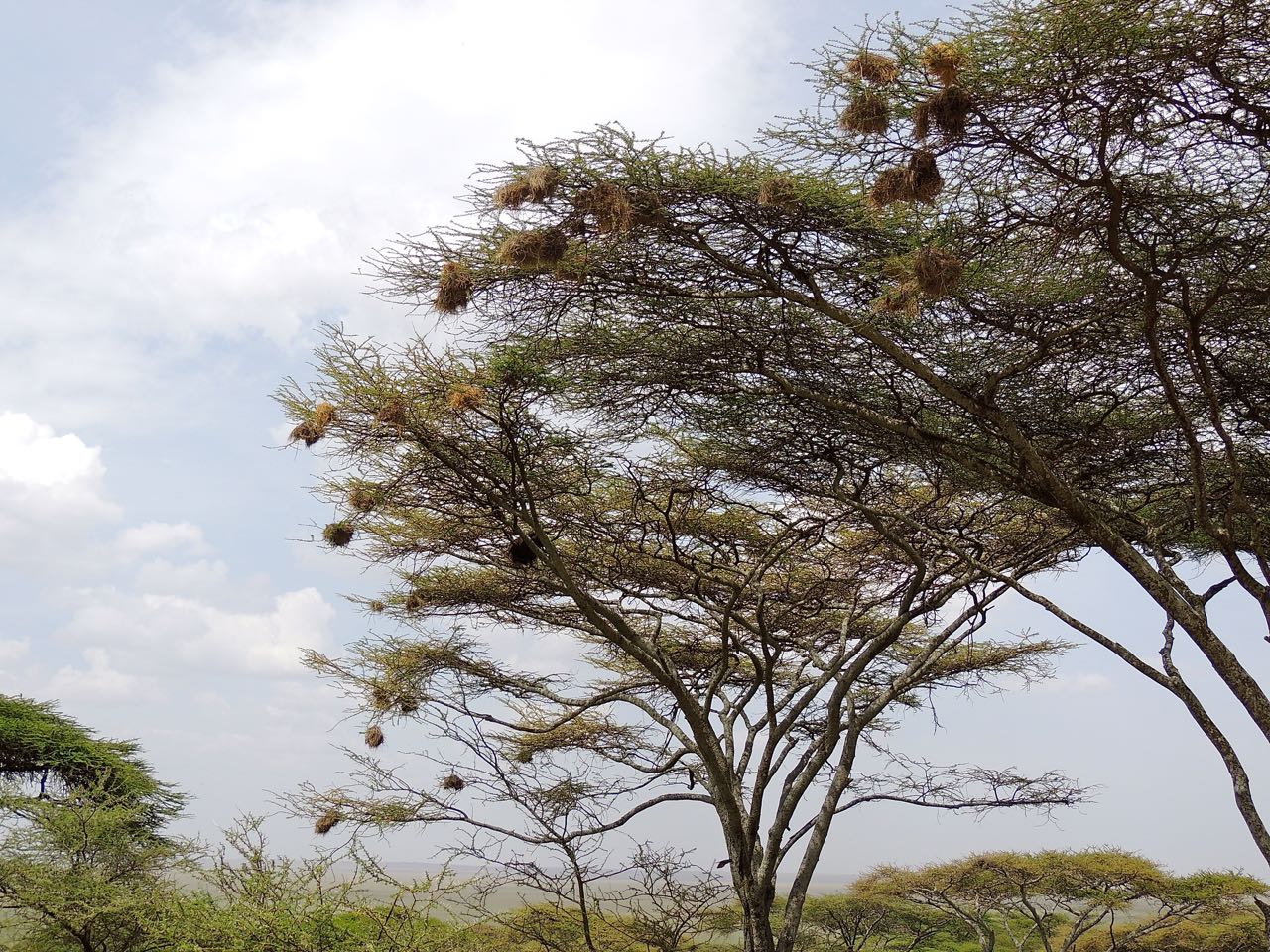 Weaver Nests - Photo by William Young
Weaver Nests - Photo by William YoungThe weaver we saw in the greatest number was the Red-billed Quelea, who is the world's most abundant wild bird species. It is found entirely in sub-Saharan Africa, and the world population is thought to be up to 10 billion. We saw an estimated 275 on seven days, but it did not seem as if we saw that many. They travel in dense flocks that are quite large and sometimes contain other bird species. The first ones we saw were near the entrance to Mkomazi. They have peach-colored underparts, a red bill, black mask, red eyes, and a rosy crown, throat, and breast. They are small and fly quickly. We also saw many at Udzungwa and Mikumi. We saw good numbers of some of the large weavers. The Red-billed Buffalo-Weaver is a mostly black bird with a red bill. A lot were in the Serengeti and at Mikumi. We saw 89 White-headed Buffalo-Weavers, who are beautiful. They sometimes would come to areas where we ate lunch. They are white, with a black bill, brown wings, and a red vent and rump. They also have a touch of red on their shoulder. The colors look especially vibrant when they fly. We saw 89 on seven days, with the greatest numbers in the Serengeti and in the Tarangire area. Rufous-tailed Weavers are mottled-brown with a rufous tail. In the Serengeti, we saw their huge nests in many places. The nests in the top of one tree seemed to form a question mark. We saw an estimated 89 of them, and it was the only weaver species we recorded on at least eight days. On our first day in the Serengeti, we saw about 50 Grey-capped Social Weavers, the only ones we saw on the trip. They are small, dark-brown birds, with gray caps and short tails. Similarly small is the Speckle-fronted Weaver. We saw 14 on three days and had especially good looks at some at one of our lunch spots in the Serengeti. They have a black forehead with little white speckles, a rufous crown and neck, and a black malar stripe. We saw a couple of White-browed Sparrow-Weavers, including one on the ground near the entrance to the park at Mikumi. In size, they are about midway between the Speckle-fronted Weaver and the Buffalo-Weavers. They are brown above, white below, and have a broad white supercilium. At Amani and Kilombero, I saw a Thick-billed (Grosbeak) Weaver, who is almost entirely chocolate brown. There are a couple of white spots on the forehead and the wings which can be difficult to see. The one at Kilombero was making a nest.
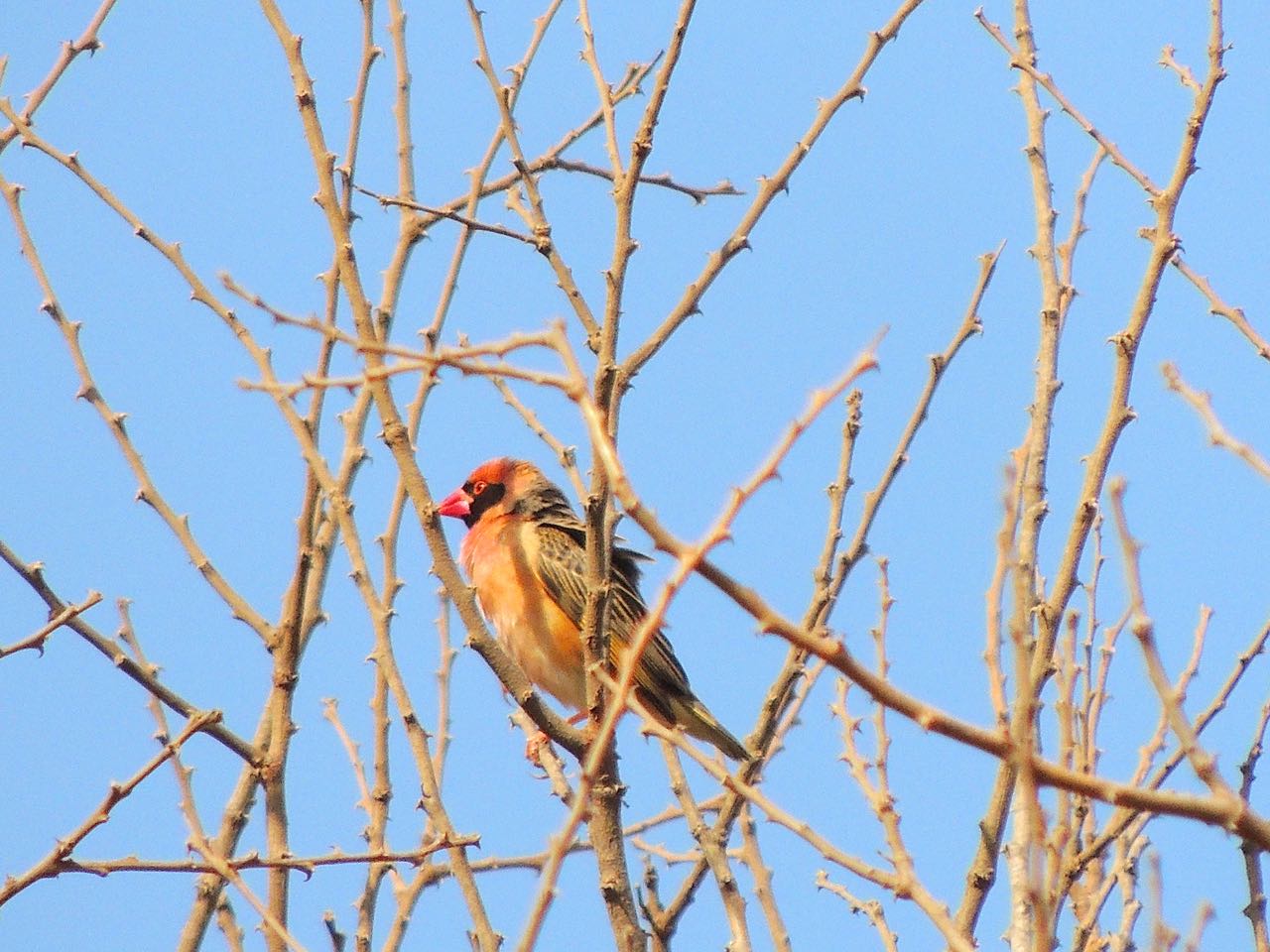 Red-billed Quelia - Photo by William Young
Red-billed Quelia - Photo by William Young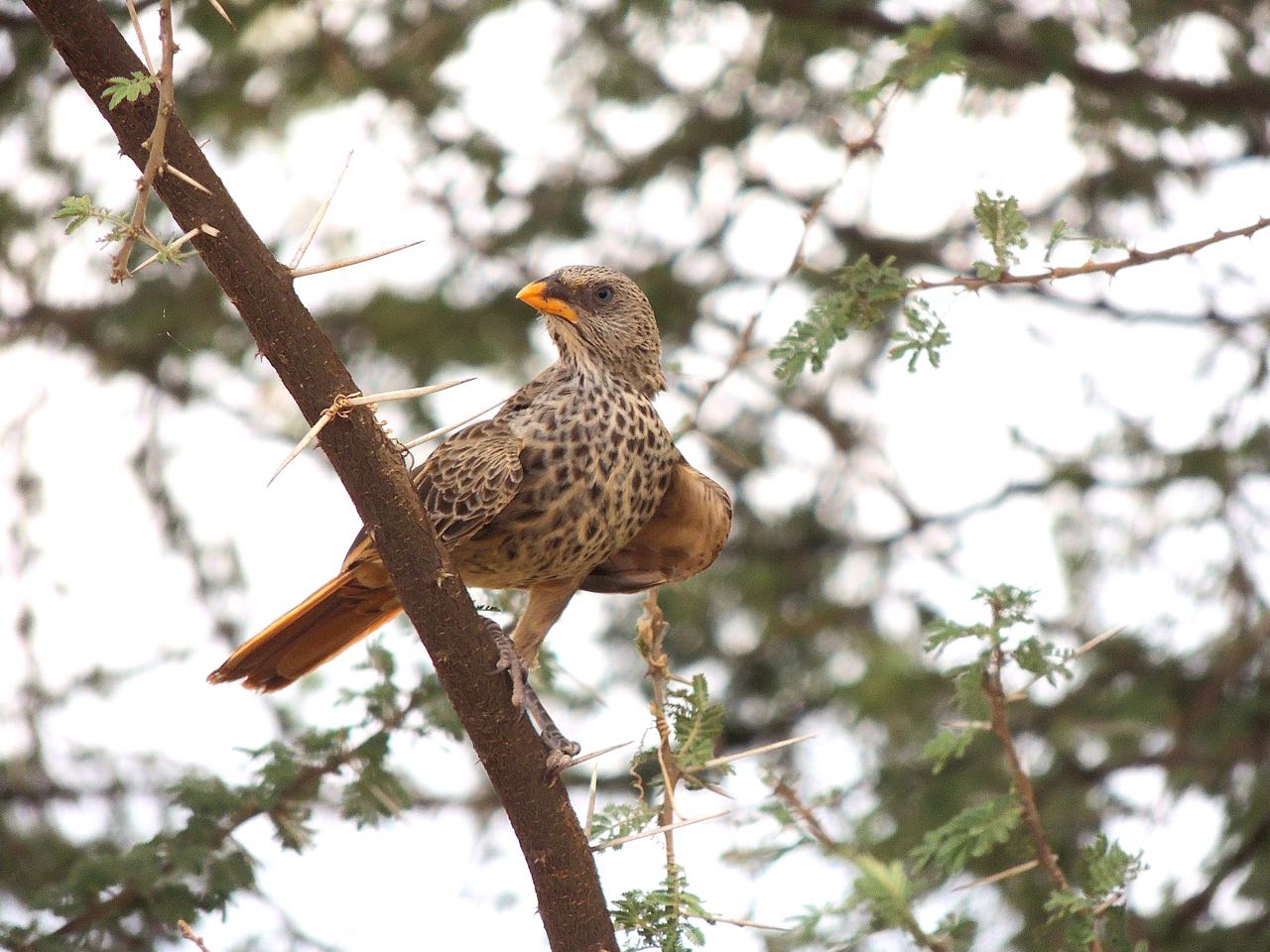 Red-billed Buffalo-Weaver - Photo by William Young
Red-billed Buffalo-Weaver - Photo by William Young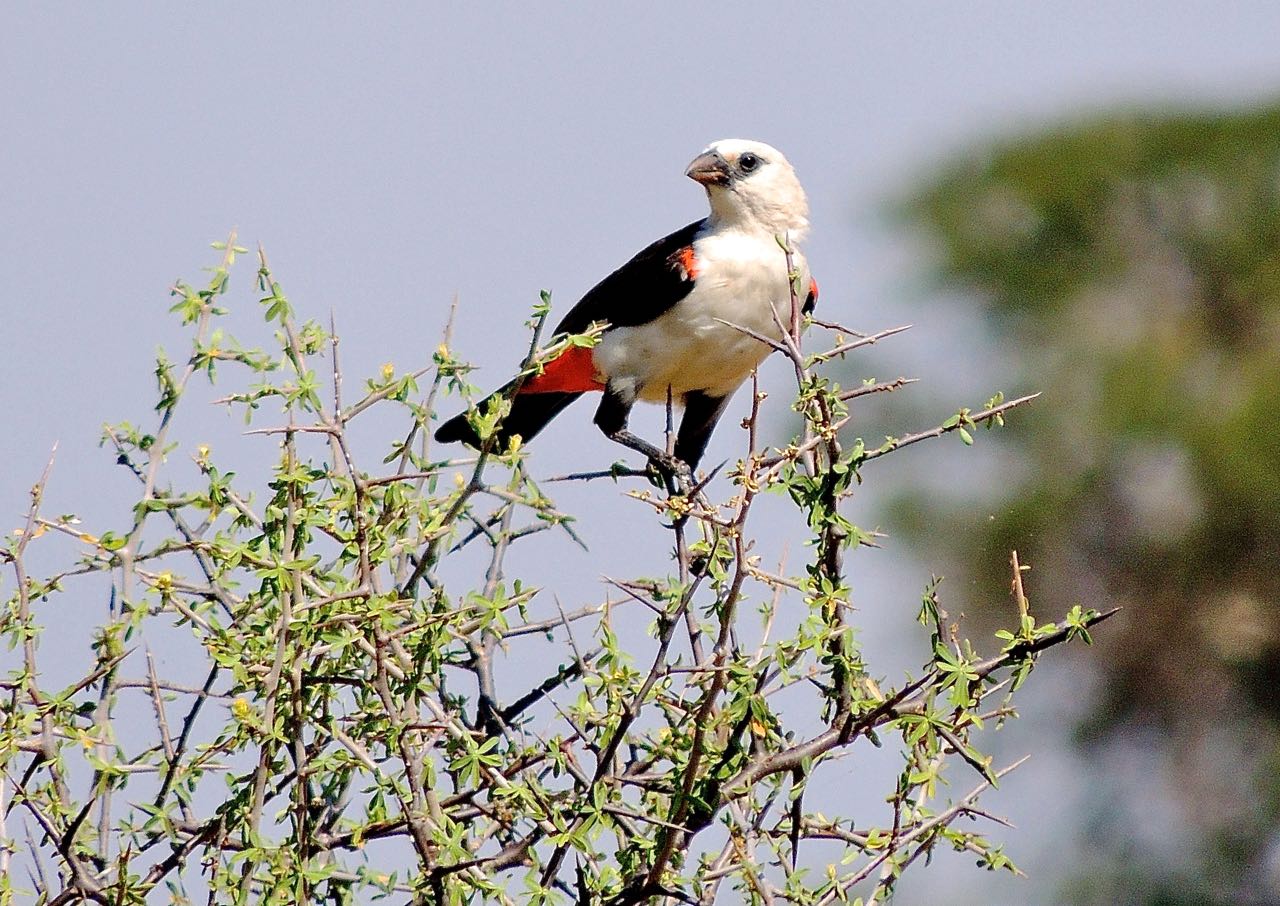 White-headed Buffalo-Weaver - Photo by William Young
White-headed Buffalo-Weaver - Photo by William Young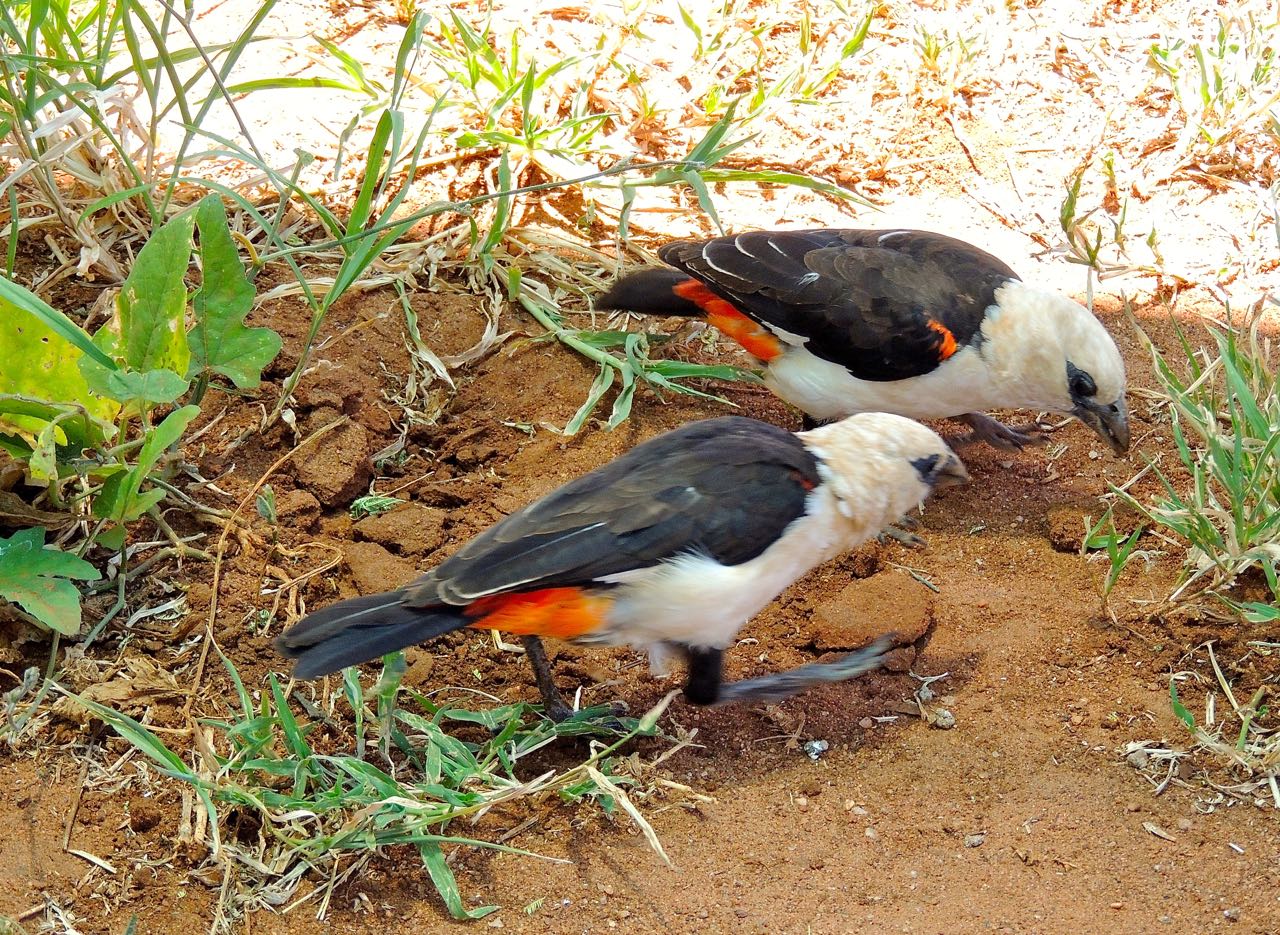 White-headed Buffalo-Weavers - Photo by William Young
White-headed Buffalo-Weavers - Photo by William Young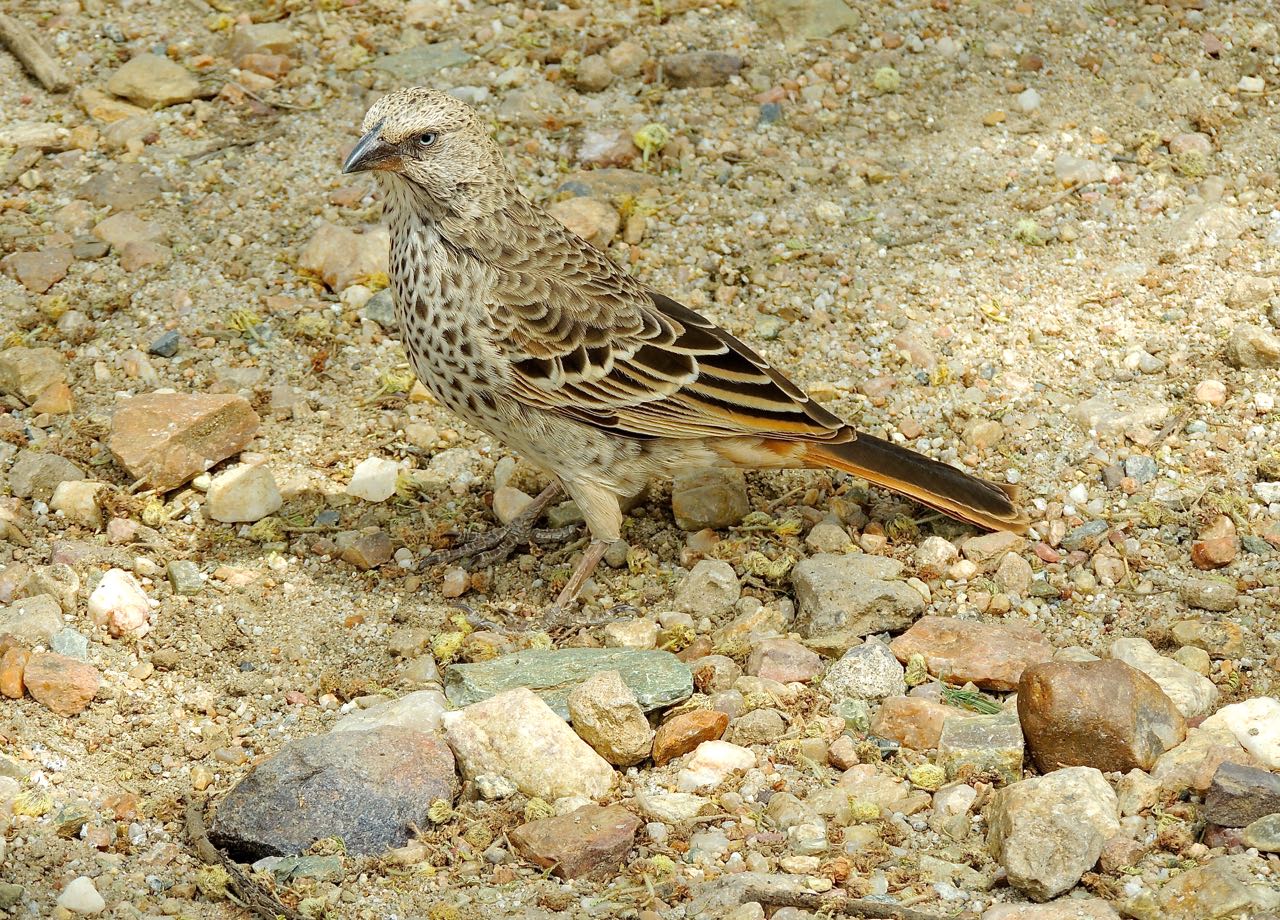 Rufous-tailed Weaver - Photo by William Young
Rufous-tailed Weaver - Photo by William Young Grey-capped Social Weaver - Photo by William Young
Grey-capped Social Weaver - Photo by William Young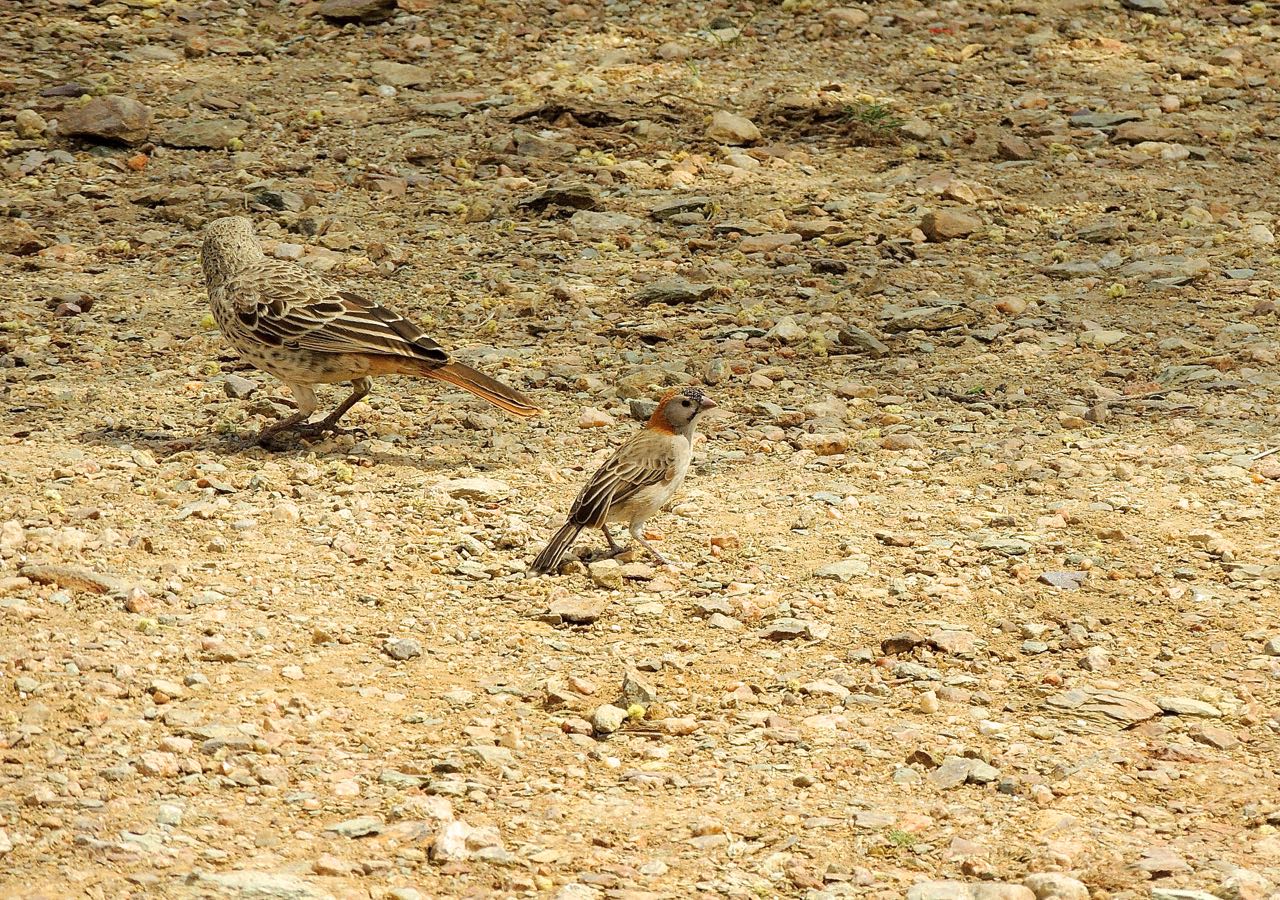 Rufous-tailed and Speckle-fronted Weavers - Photo by William Young
Rufous-tailed and Speckle-fronted Weavers - Photo by William YoungBishops are small roundish birds who are generally a combination of black and either red, yellow, or orange. We saw the greatest numbers around our Hondo Hondo camp in Udzungwa. The most common was the Zanzibar Red Bishop. We saw 152 on seven days. They have a black throat, black underparts, yellow-orange wings, and a yellow-orange vent. They appear to be wearing a bright red football helmet that extends to the bill. We saw many of them at Kilombero, which seemed to have more bishops than the Vatican. The Southern Red Bishop looks similar, but it has a red throat and a black forehead. We saw a dozen on five days. We watched one near the Hippo Pool at Lake Manyara. The Black-winged Bishop looks like a slightly larger version of the Southern Red Bishop, but has less black on the forehead. We saw a lot in the fields outside the Hondo Hondo campsite, interspersed with Zanzibar Red Bishops. We saw one Black Bishop outside the museum at Olduvai Gorge. It is an all black bird with a red crown and collar and some red-orange on its back. At Tarangire, I saw a Yellow-crowned Bishop, which reminded me of the Golden-crowned Manakins in the Neotropics. It is a small round black bird with bright yellow on the crown, back, and vent. We saw a few Yellow Bishops, who are black birds with yellow on the wings. There were a couple in Dar es Salaam, including one we saw perched on a wire. There was another near the Arusha lakes who had a light colored bill. The Stevenson field guide shows the bill as dark, but there is no other species with a short tail who looked like this bird.
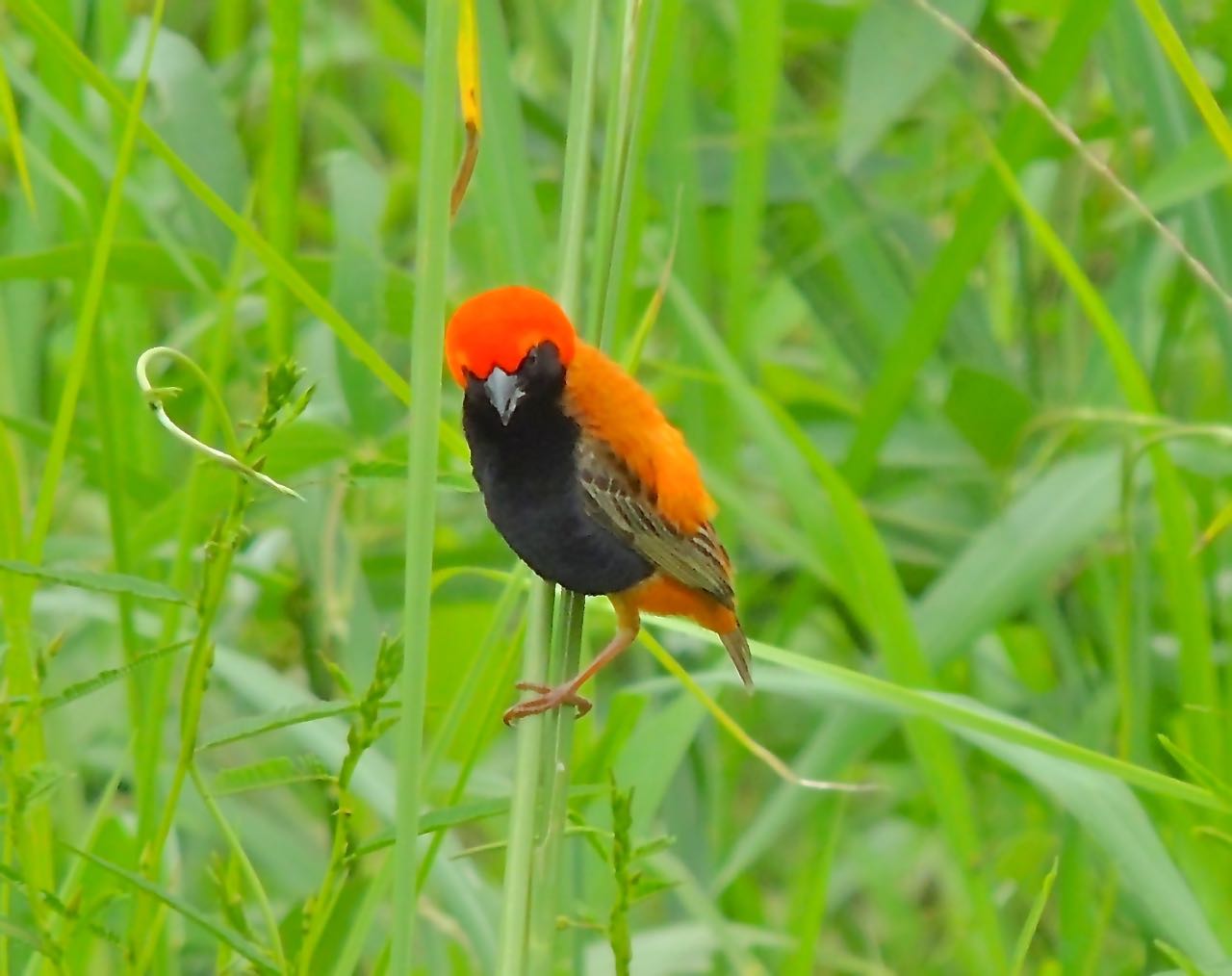 Zanzibar Red Bishop - Photo by William Young
Zanzibar Red Bishop - Photo by William Young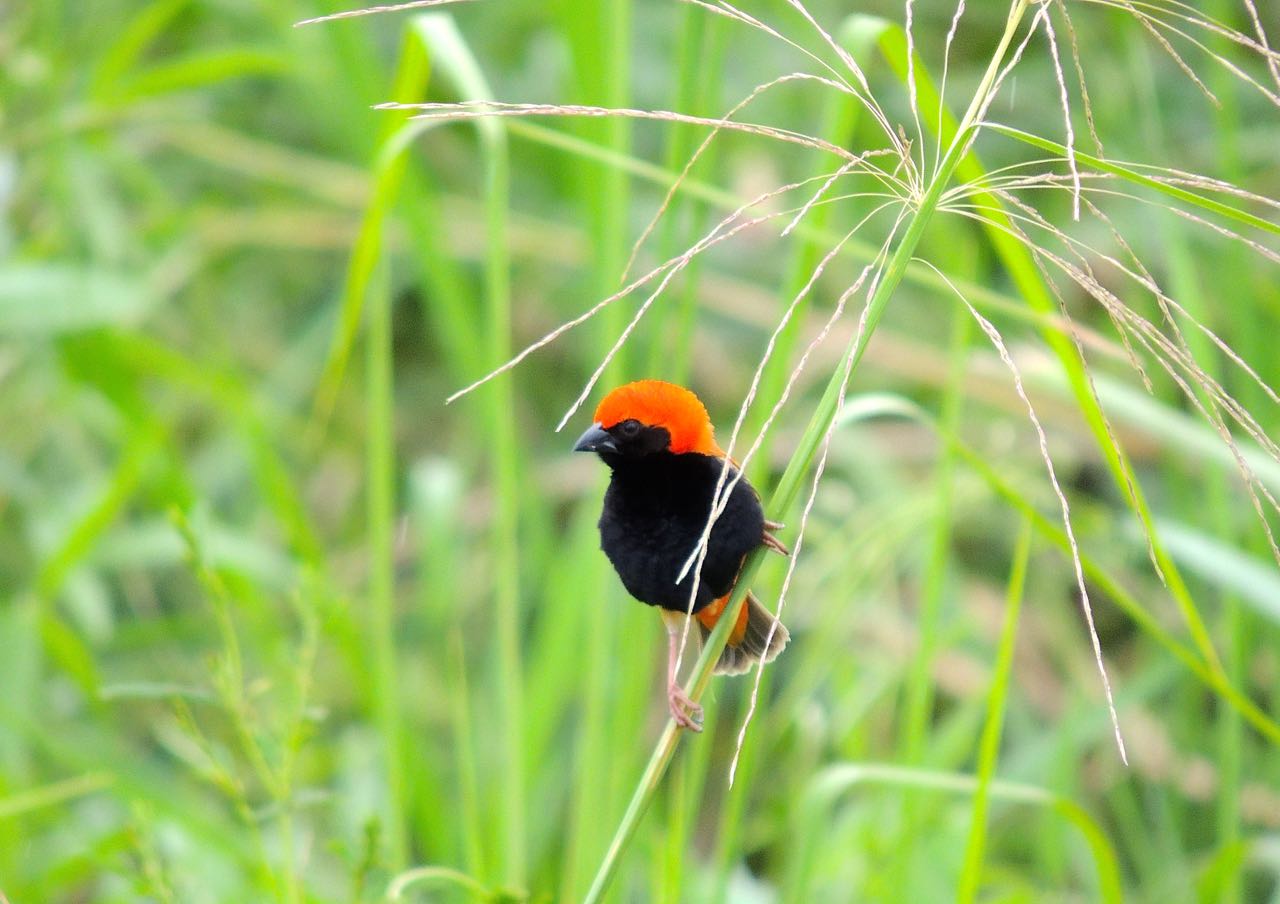 Zanzibar Red Bishop - Photo by William Young
Zanzibar Red Bishop - Photo by William Young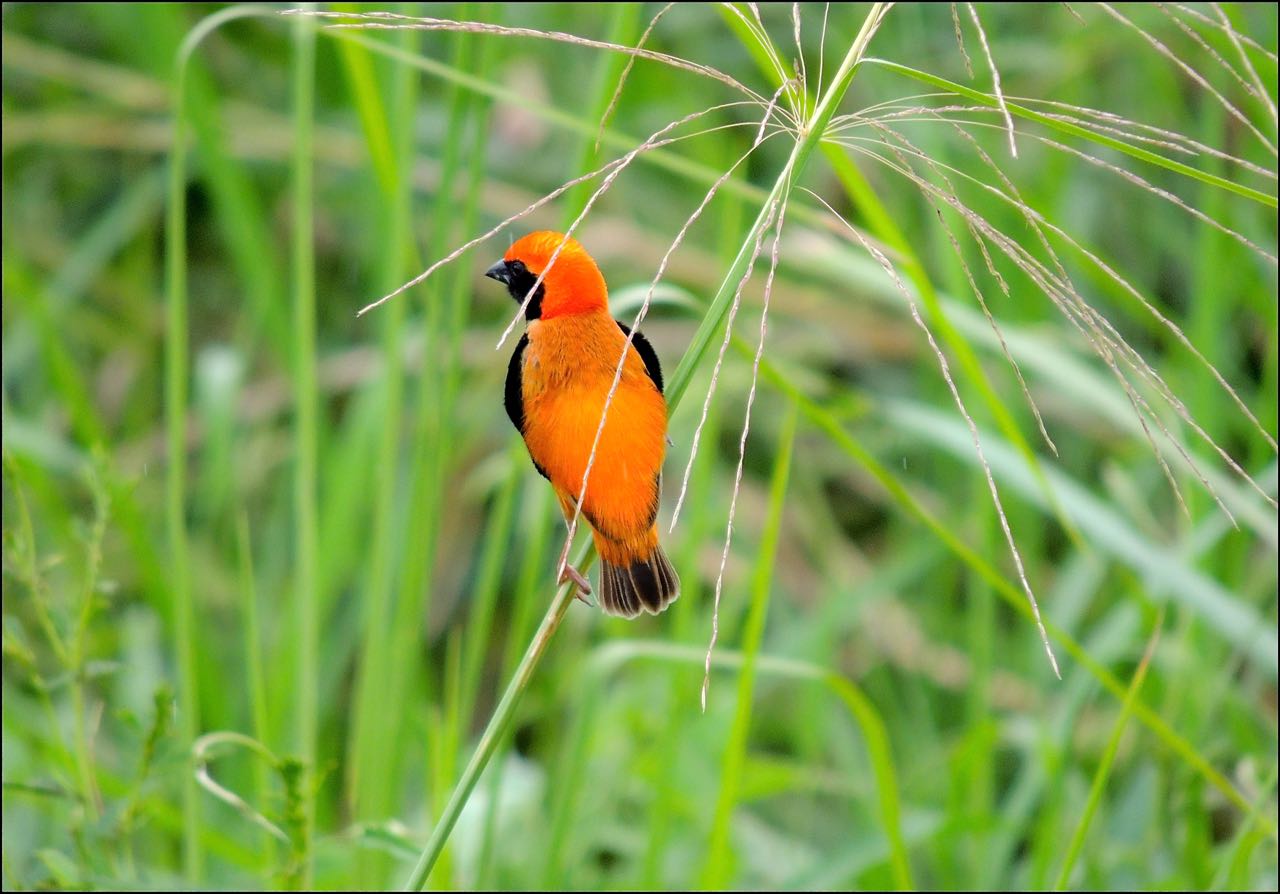 Zanzibar Red Bishop - Photo by William Young
Zanzibar Red Bishop - Photo by William Young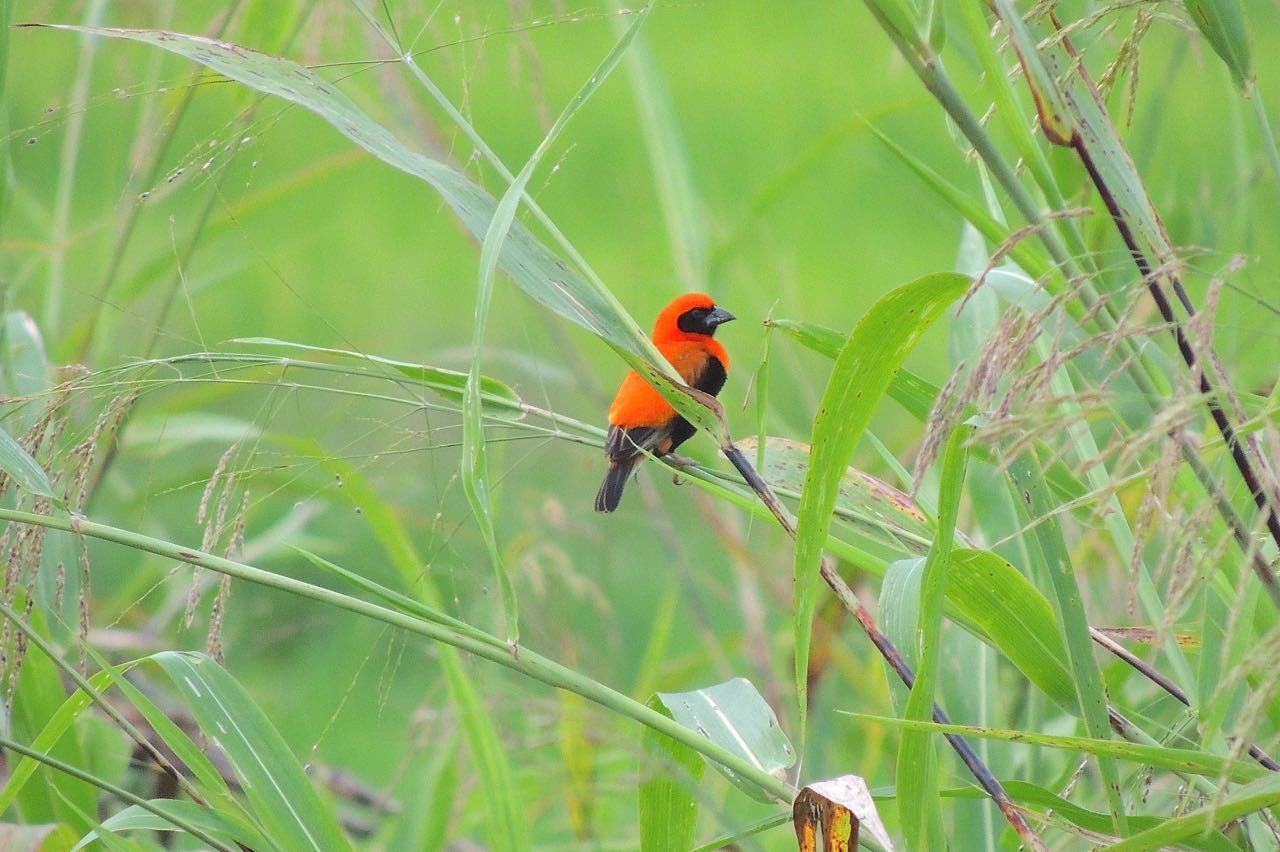 Black-winged Bishop - Photo by William Young
Black-winged Bishop - Photo by William YoungSome widowbirds have extremely long tails. We saw 11 Red-collared Widowbirds on four days, with the greatest number in the fields as we drove to the Rhino Lodge. They are black birds with red on the throat and head. The tail appeared to be as long as the body. In the same area, we saw a Jackson's Widowbird (the only one of the trip) on the ground. It is black, with cinnamon on the wings. The tail is as long as the body, but it looks broader than the Red-collared Widowbird's. The male Yellow-mantled Widowbird sometimes swings his tail around — it is long, but not as long as on the previous two species. He is all black with a yellow mantle. We saw 11 on four days. The most common widowbird was the White-winged Widowbird. We saw 65 on five days, with the greatest number at Mikumi and Dindira Swamp. Some of the Dindira birds were in mixed flocks with the Red-billed Queleas. They are black, with a white bill, white on the wings, and yellow on the shoulder. The tail looks a little shorter than that of the Yellow-mantled. The Fan-tailed Widowbird reminded me of a Red-winged Blackbird in North America. It is all black, with a red wing patch that has a yellow-orange border – the patch is bigger and less intensely colored than the blackbird's. We saw a few feeding on the ground at our lunch stop at Ngorongoro. I saw nothing in their behavior or plumage that would explain why they are called Fan-tailed. We saw 61 on six days.
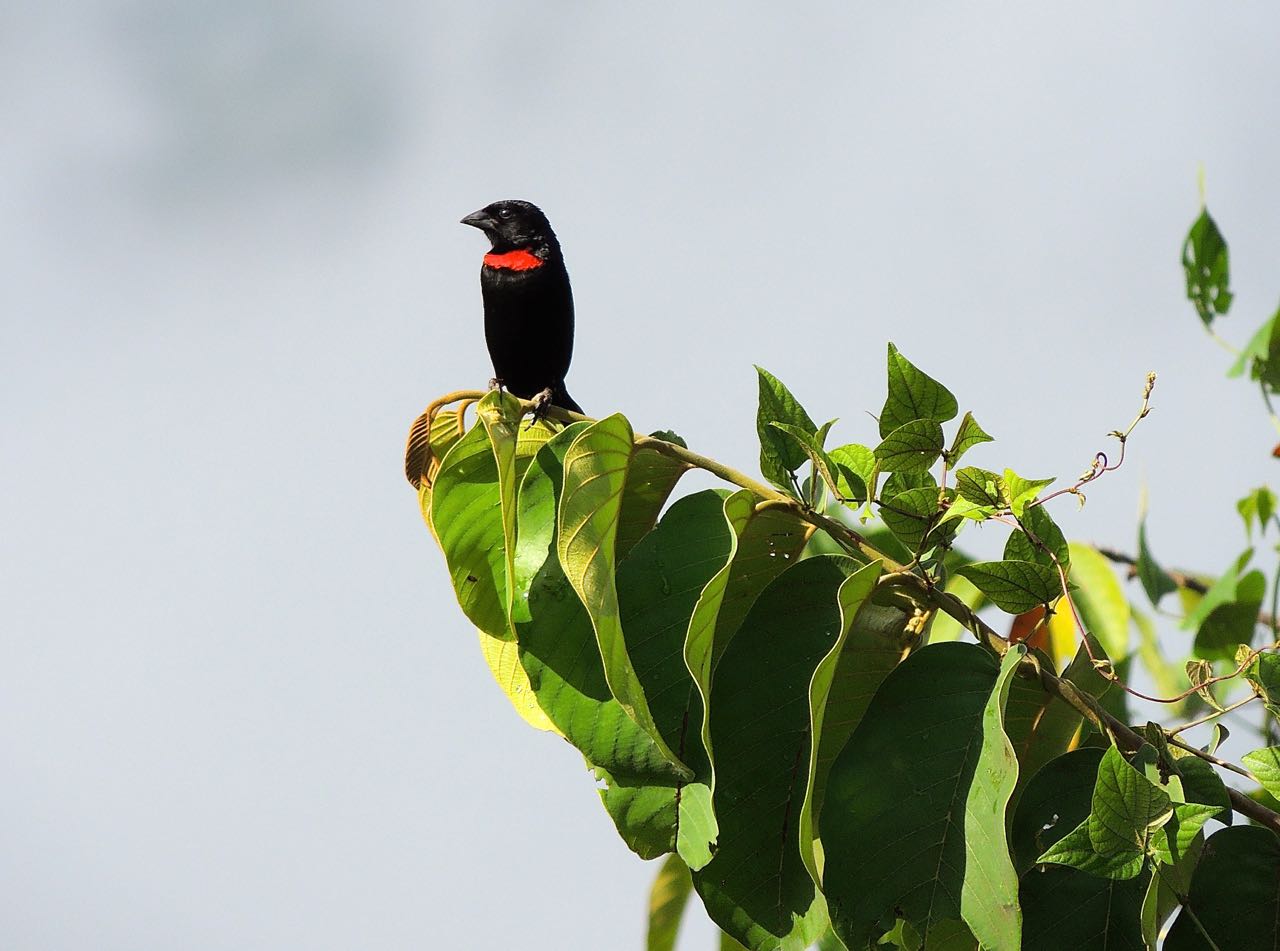 Red-collared Widowbird - Photo by William Young
Red-collared Widowbird - Photo by William Young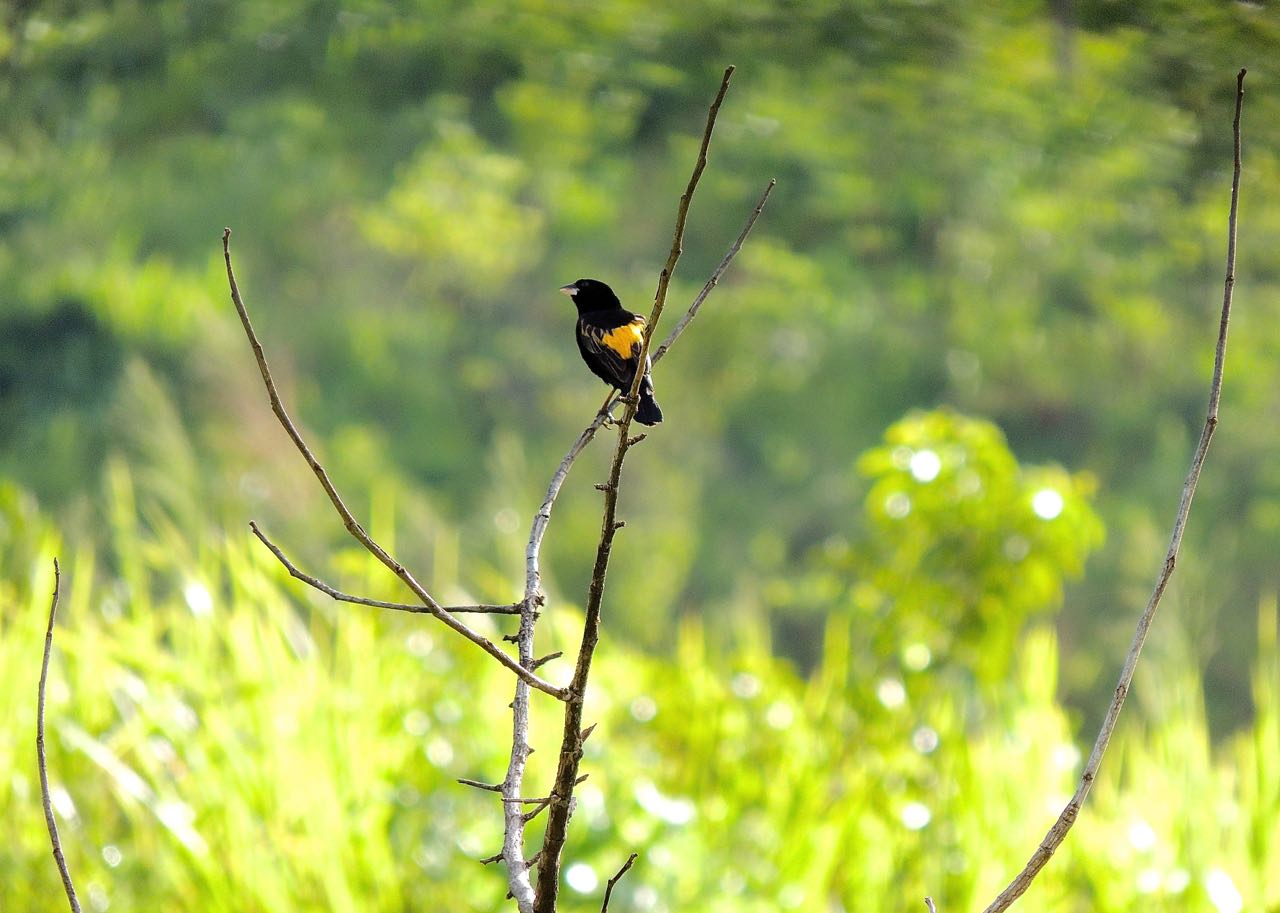 Yellow-mantled Widowbird - Photo by William Young
Yellow-mantled Widowbird - Photo by William Young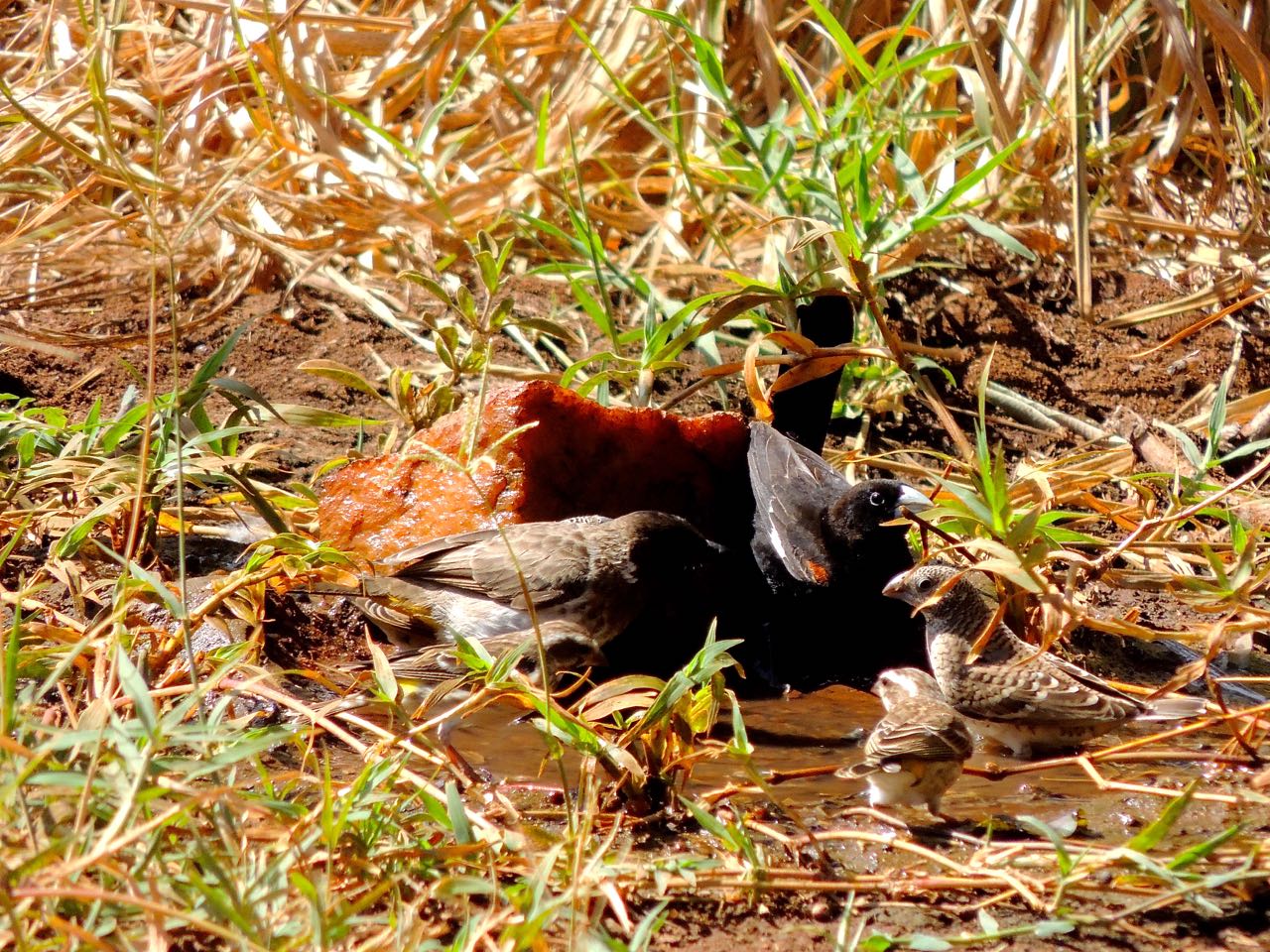 Common Bulbul, White-winged Widowbird, and Red-billed Quelias - Photo by William Young
Common Bulbul, White-winged Widowbird, and Red-billed Quelias - Photo by William Young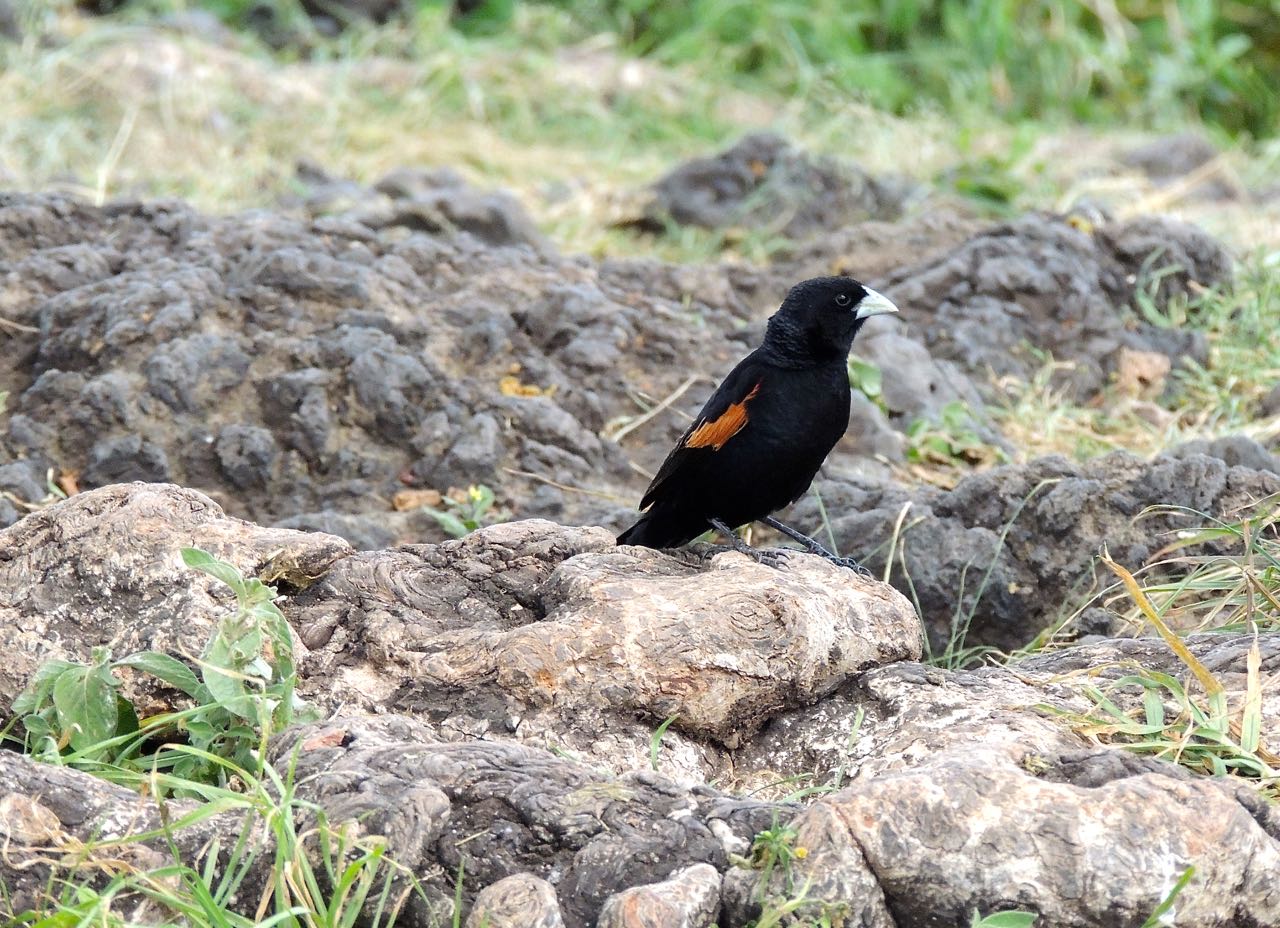 Fan-tailed Widowbird - Photo by William Young
Fan-tailed Widowbird - Photo by William YoungAt Mkomazi, we saw two weaver species who are not primarily yellow. Near the exit gate, we saw our only two Red-headed Weavers of the trip. The female has a red bill, gray back, and white underparts. The male has a brilliant red head, black mask, dark back, and red bill. We saw the birds in bright sunlight, and the contrast among the red, white, and black creates a striking appearance. While we waited at the gate, I saw a Chestnut Weaver come down to drink. It was all chestnut, with black that extended from its crown to its throat. Its red eye stood out against the black. At Serenity, we saw a pair of Golden-backed Weavers feeding on the ground. They have a yellow back and rump, black head, and rufous underparts.
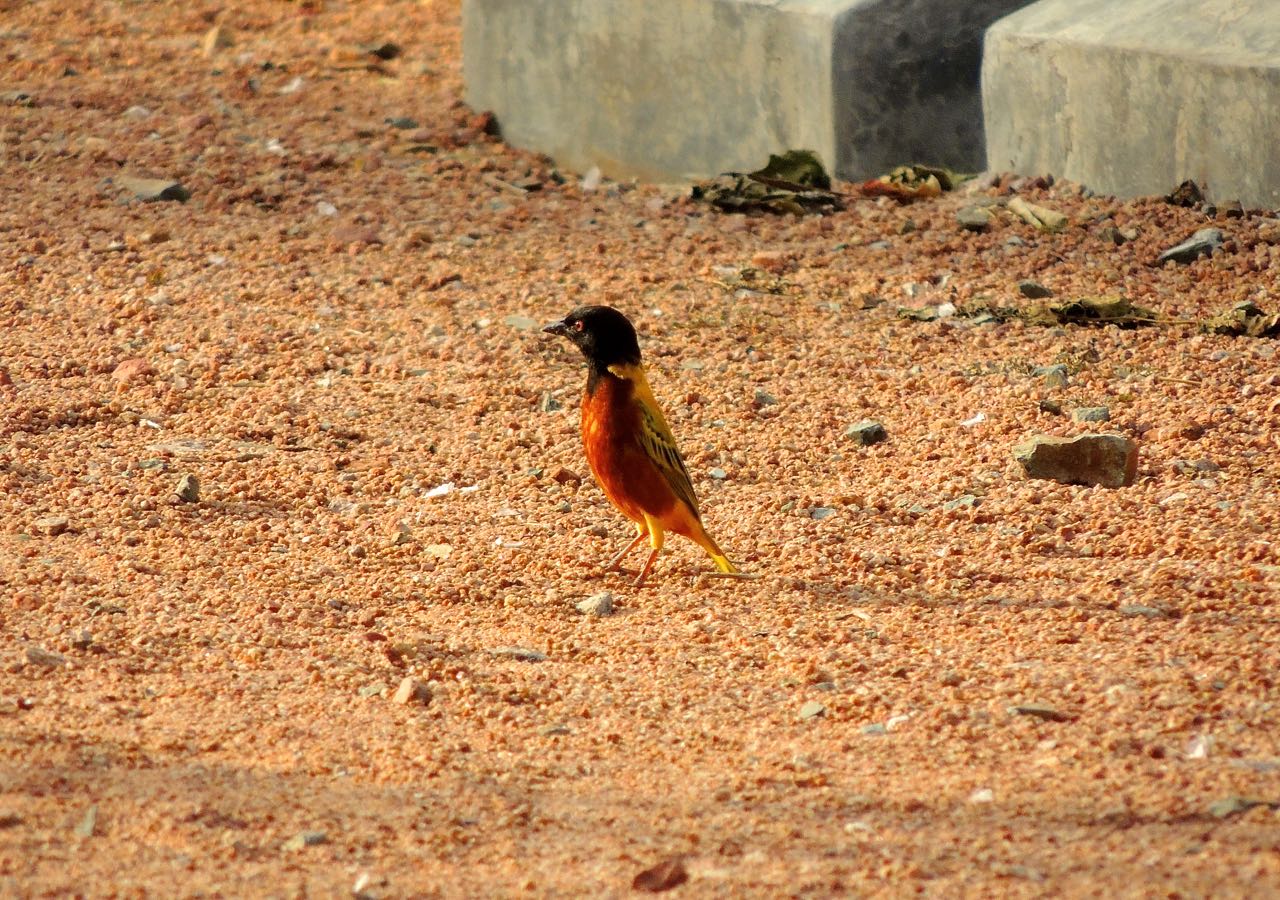 Golden-backed Weaver - Photo by William Young
Golden-backed Weaver - Photo by William YoungThe other 16 weavers we saw ranged from having a bit of yellow on them to being almost entirely yellow. We saw a colony of about 50 African Golden Weavers. They are golden birds, even in rainy weather, with orange feathering on their forehead, face, and throat. The day before when we were driving to Kilombero, I saw a couple flying in the sunshine, and they looked really golden. The Northern Brown-throated Weaver is yellow, with darker wings and a darker back. It has reddish-brown feathering above the bill and on the throat, and it has white eyes that stand out from the dark background. We saw them feeding on the ground at Serenity. The Kilombero Weaver is an endemic to a small area that includes Kilombero. We saw 70 the day we went there, and many were in the open, busily singing and acrobatically building nests. The males are all yellow, and they have black in most places where the Golden Weaver has brown, except the forehead. The Slender-billed Weaver is golden, with olive wings and a dark eye. The black mask goes from the forecrown around the ear and onto the throat. It's bill looks thinner than the bills of other weavers. We saw 15 one day and 20 the next at Serenity, and some of those could have been the same birds counted on successive days. The Spectacled Weaver is almost all yellow, with olive wings, a small black mask, and a black throat. The white eyes stand out from the mask. We saw two at Amani. The Black-headed and Village Weavers used to be part of the same species and look alike. The Vitelline Masked and Lesser Masked Weavers are slightly smaller versions of these two. We saw the Black-headed at Serenity, the Village at Udzungwa, and the Vitelline at Olduvai Gorge and Lake Manyara. We saw four Lesser Masked Weavers (the only one of these four weavers with a pale eye) at Ngorongoro.
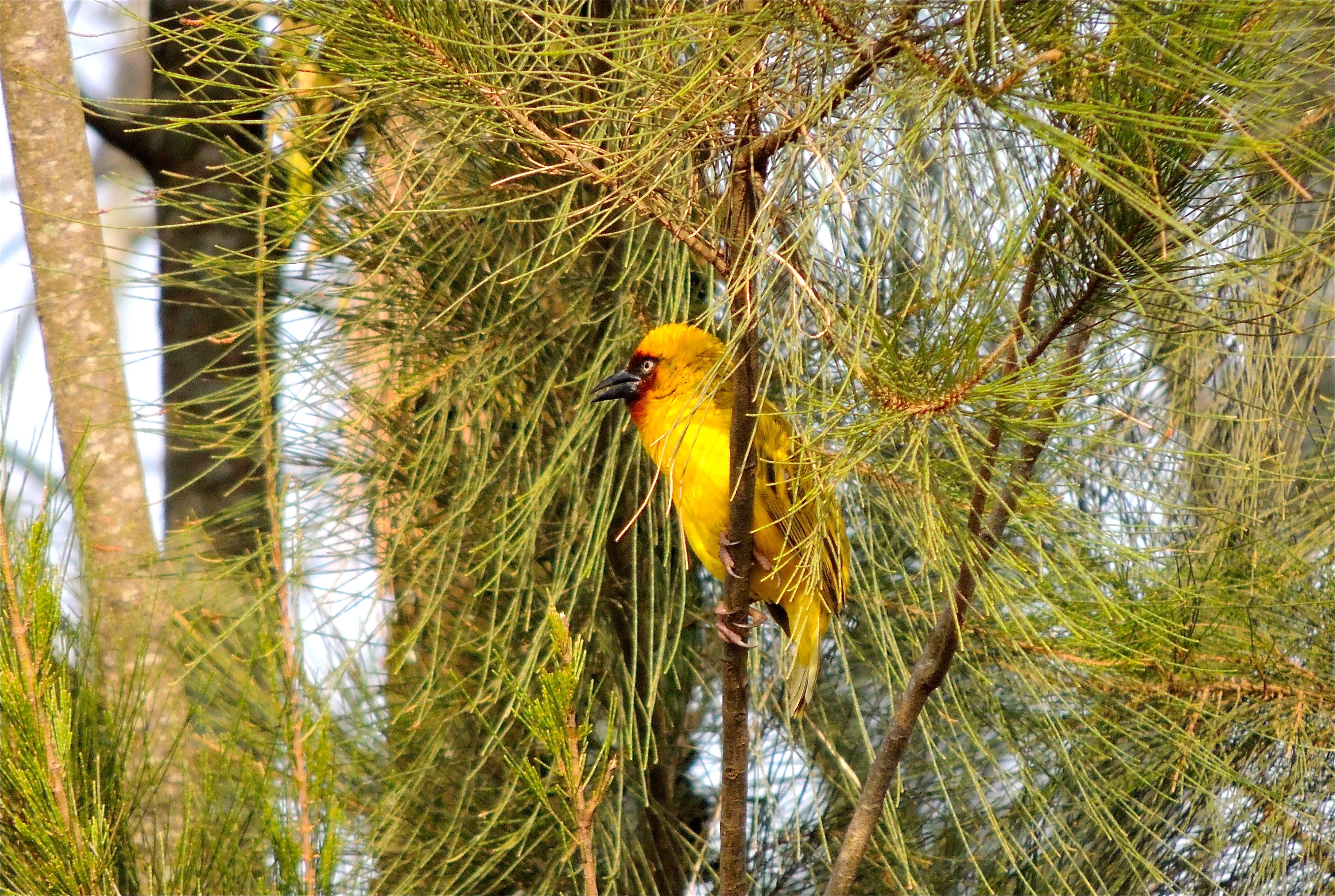 Northern Brown-throated Weaver - Photo by William Young
Northern Brown-throated Weaver - Photo by William Young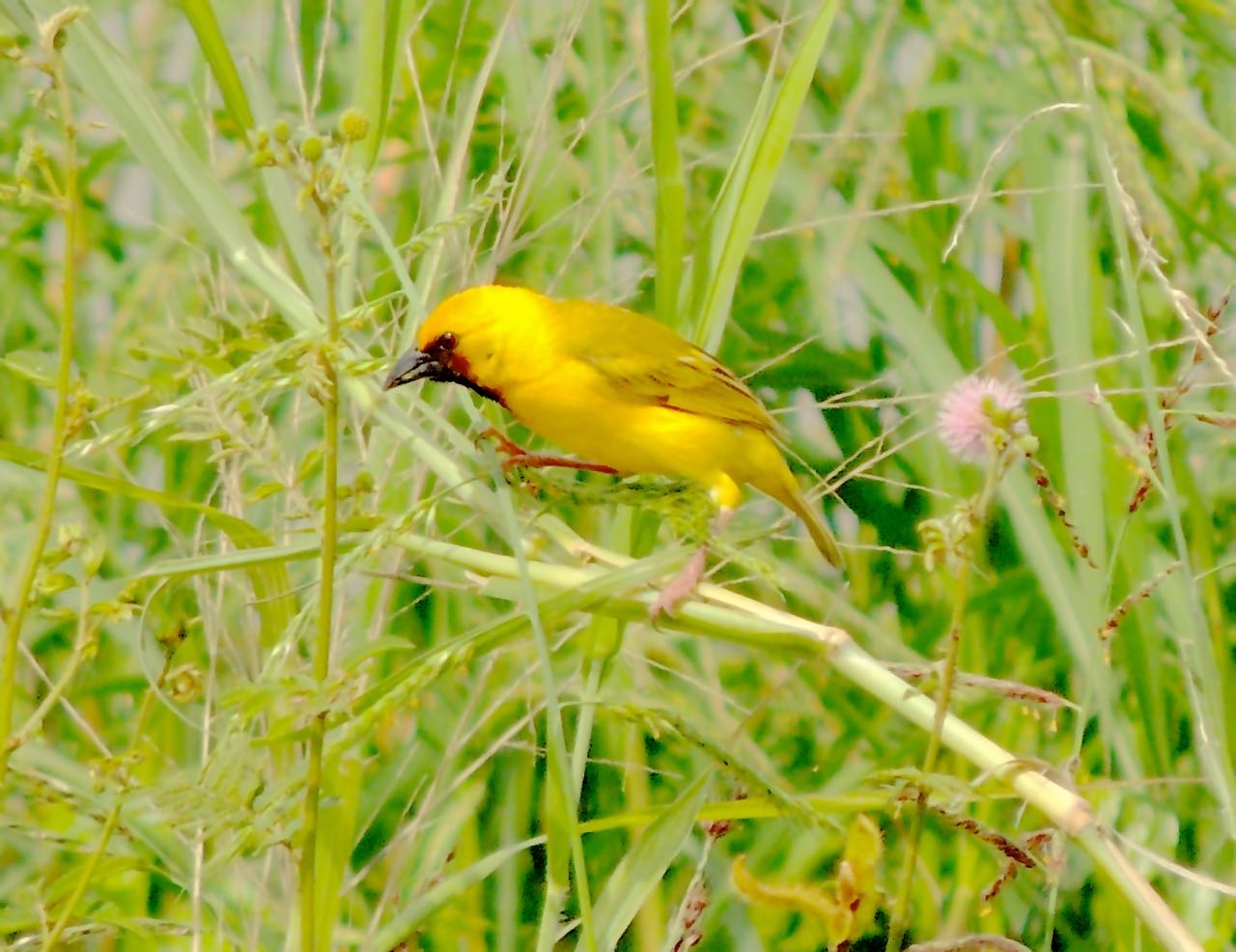 Kilombero Weaver - Photo by William Young
Kilombero Weaver - Photo by William Young Kilombero Weaver - Photo by William Young
Kilombero Weaver - Photo by William Young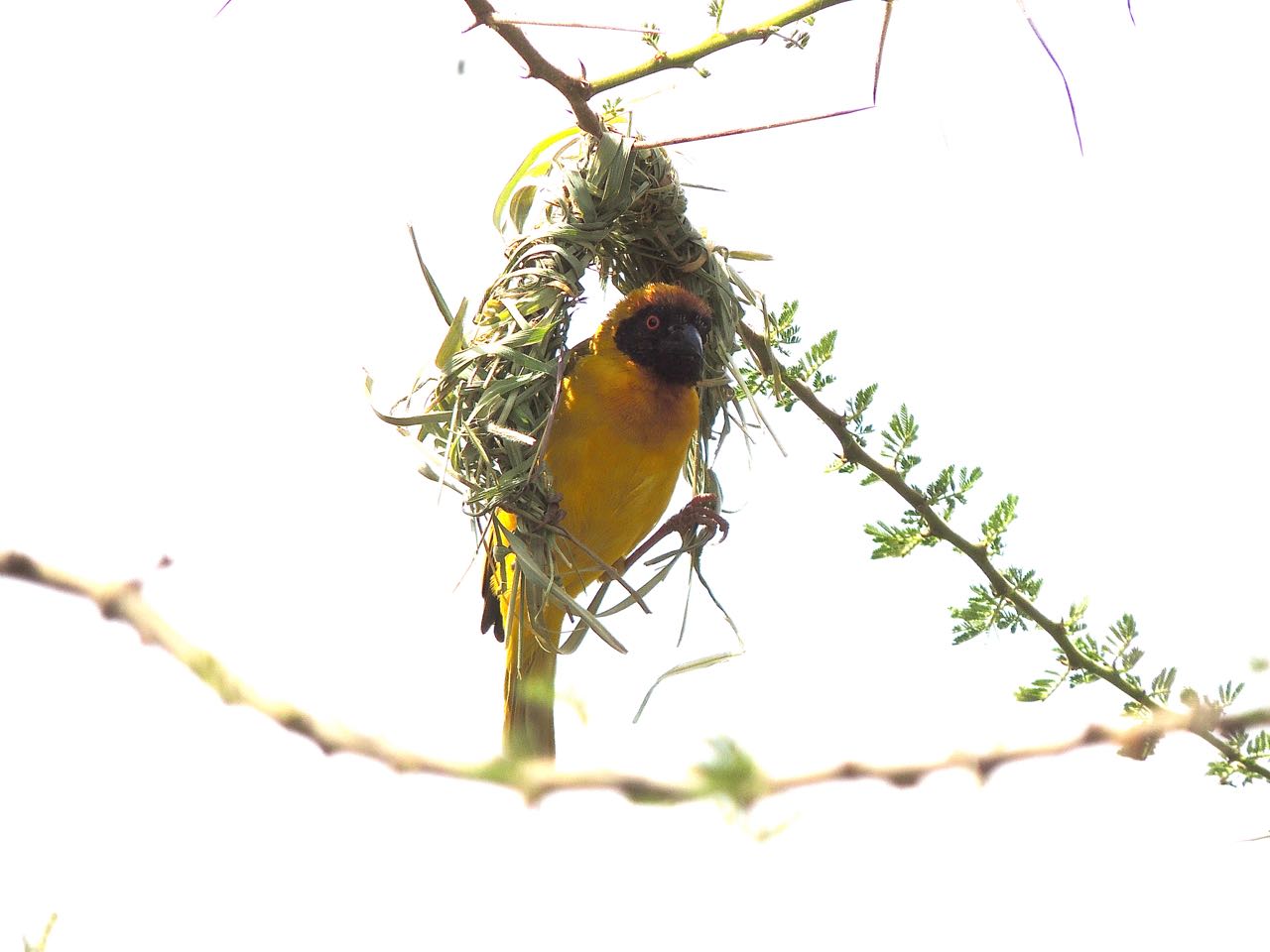 Vitelline Masked Weaver - Photo by William Young
Vitelline Masked Weaver - Photo by William YoungAt Tarangire, we saw a female Black-necked Weaver, the only weaver we saw with a yellow supercilium. It has a black back, black eyeline, and yellow underparts. In the forests at Amani, we saw Dark-backed Weavers, who are also called Forest Weavers. They have a black hood, dark gray back, and yellow underparts. At Udzungwa in the rain, we saw a few Bertram's Weaver, who have light eyes, an olive back, black on the throat that extends over the eye and behind the ear, and yellow underparts. I had trouble maintaining a mental image of the Baglafecht Weaver during the trip. It has white eyes and yellow underparts, but there are all sorts of combinations for the other parts. I saw 32 on 7 days, including an Ethiopian race at the airport in Addis Ababa.
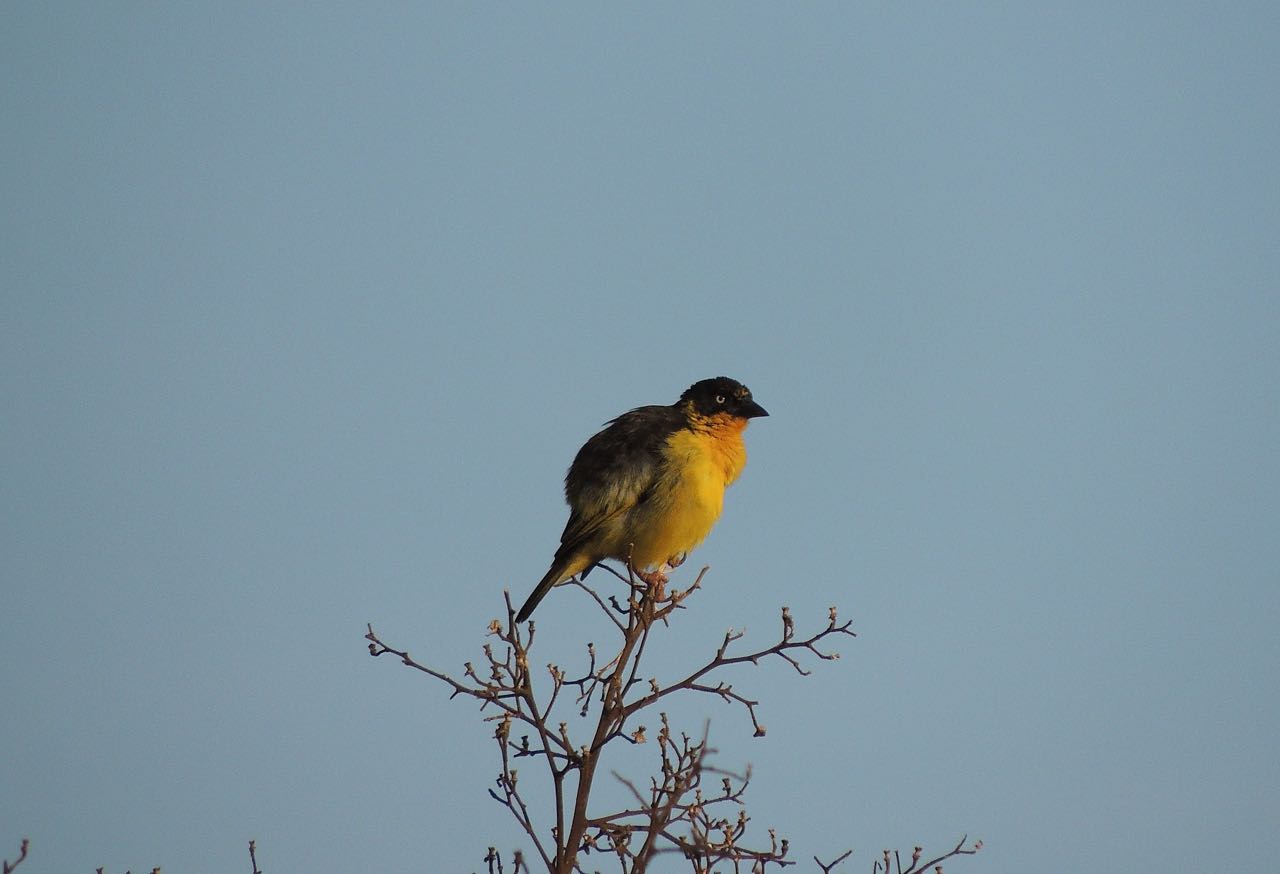 Baglafecht Weaver - Photo by William Young
Baglafecht Weaver - Photo by William Young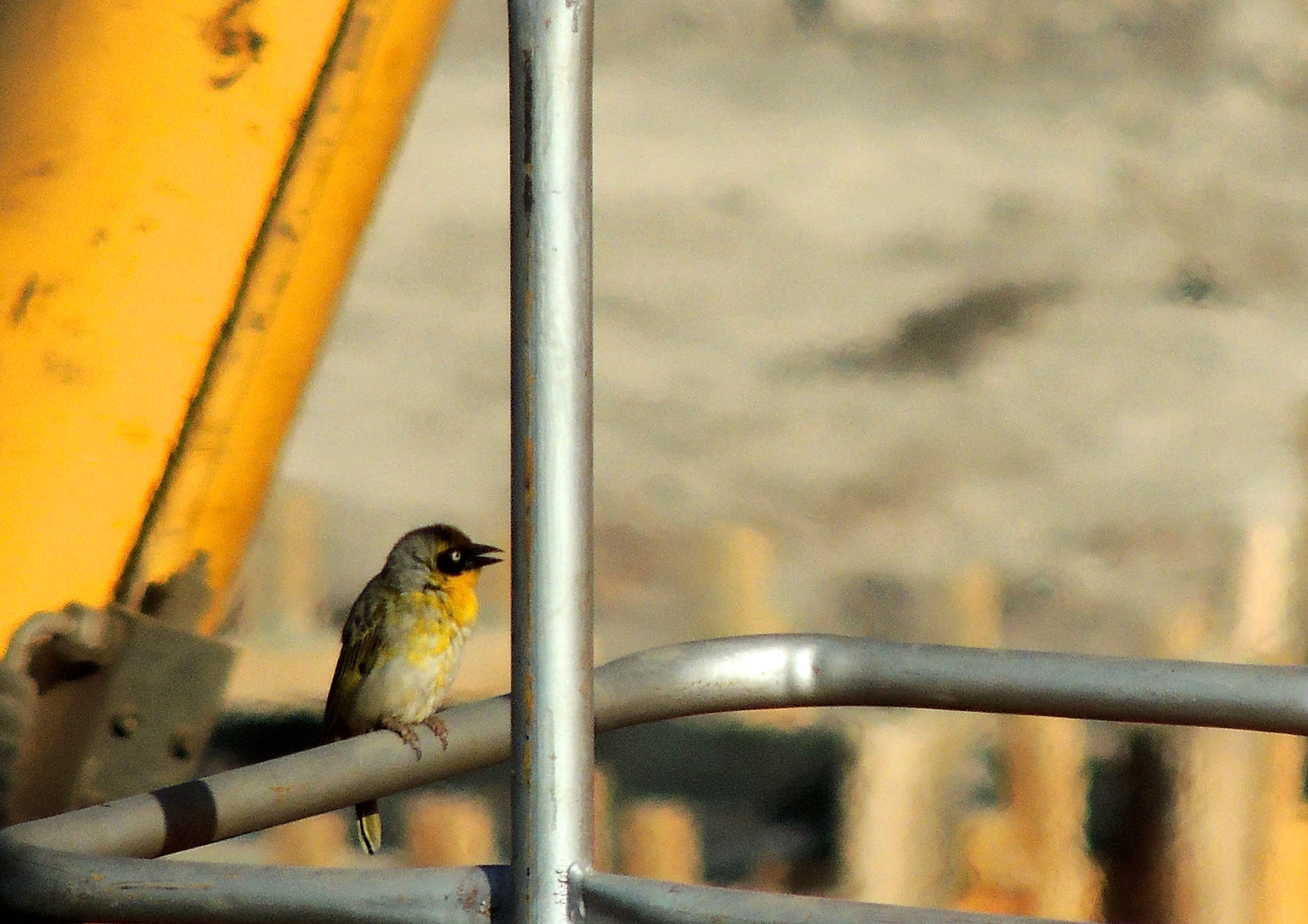 Baglafecht Weaver in Addis Ababa - Photo by William Young
Baglafecht Weaver in Addis Ababa - Photo by William Young
Waxbills and AlliesThe waxbills and allies are some of the most attractive birds we saw on the trip. They use most of the colors of the spectrum, and some have plumage with intricate patterns. The three cordon-bleu species are small and delicate-looking. We saw 18 Blue-capped Cordon-bleus on five days, and I had nice looks at them feeding on the ground at Serenity. They are quite vocal. The males have a brown back, black eyes, a red bill, and a turquoise head, breast, flank, and tail. The brown on the female extends to the crown. Red-cheeked Cordon-bleus were more plentiful, and we saw 30 on five days. The male resembles the female Blue-capped, but has a red patch near his ear. The female lacks this patch. A couple of them fed near our feet during lunch at Lake Manyara. The Blue Waxbill used to be called the Southern Cordon-bleu. We saw five on two days, including a few on our final full day at Mikumi. They are similar to the female Red-capped.
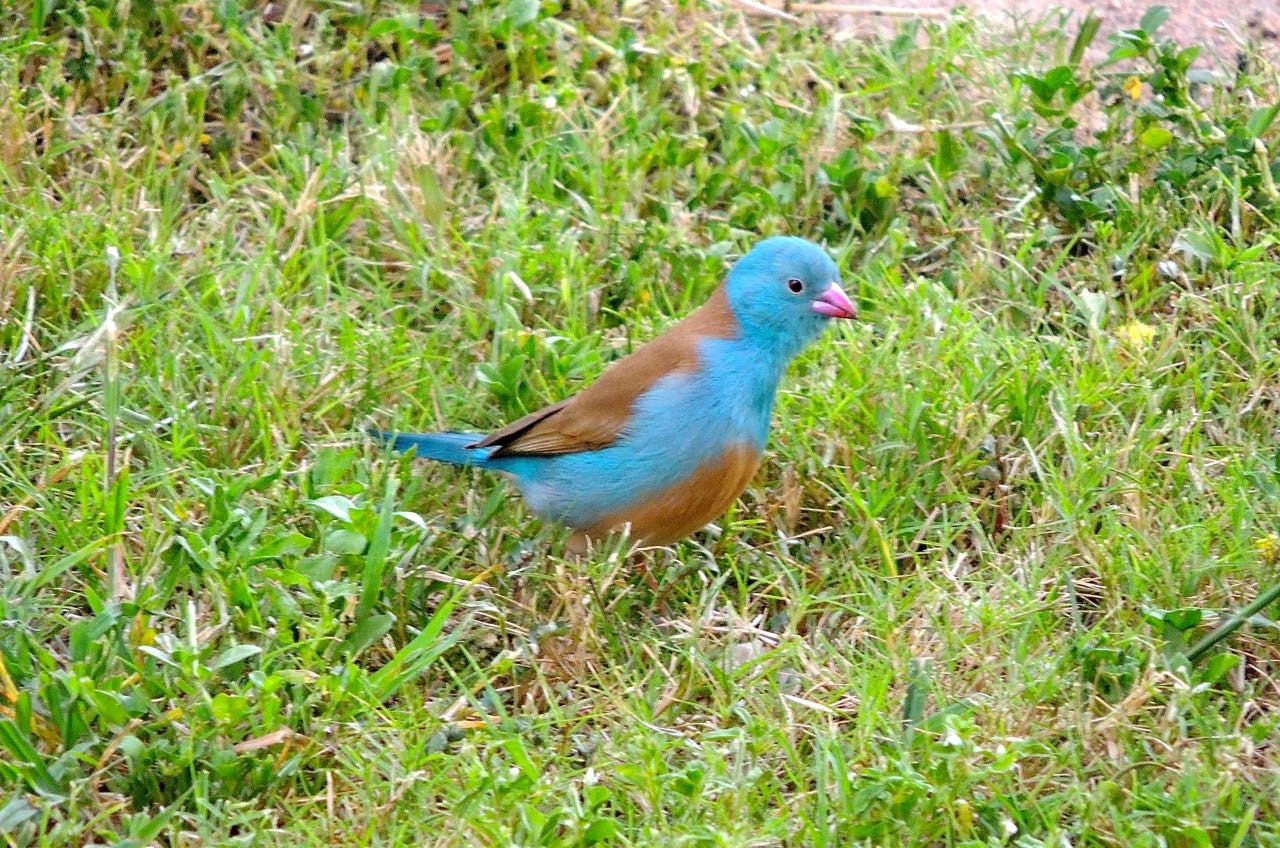 Blue-capped Cordon-bleu - Photo by William Young
Blue-capped Cordon-bleu - Photo by William Young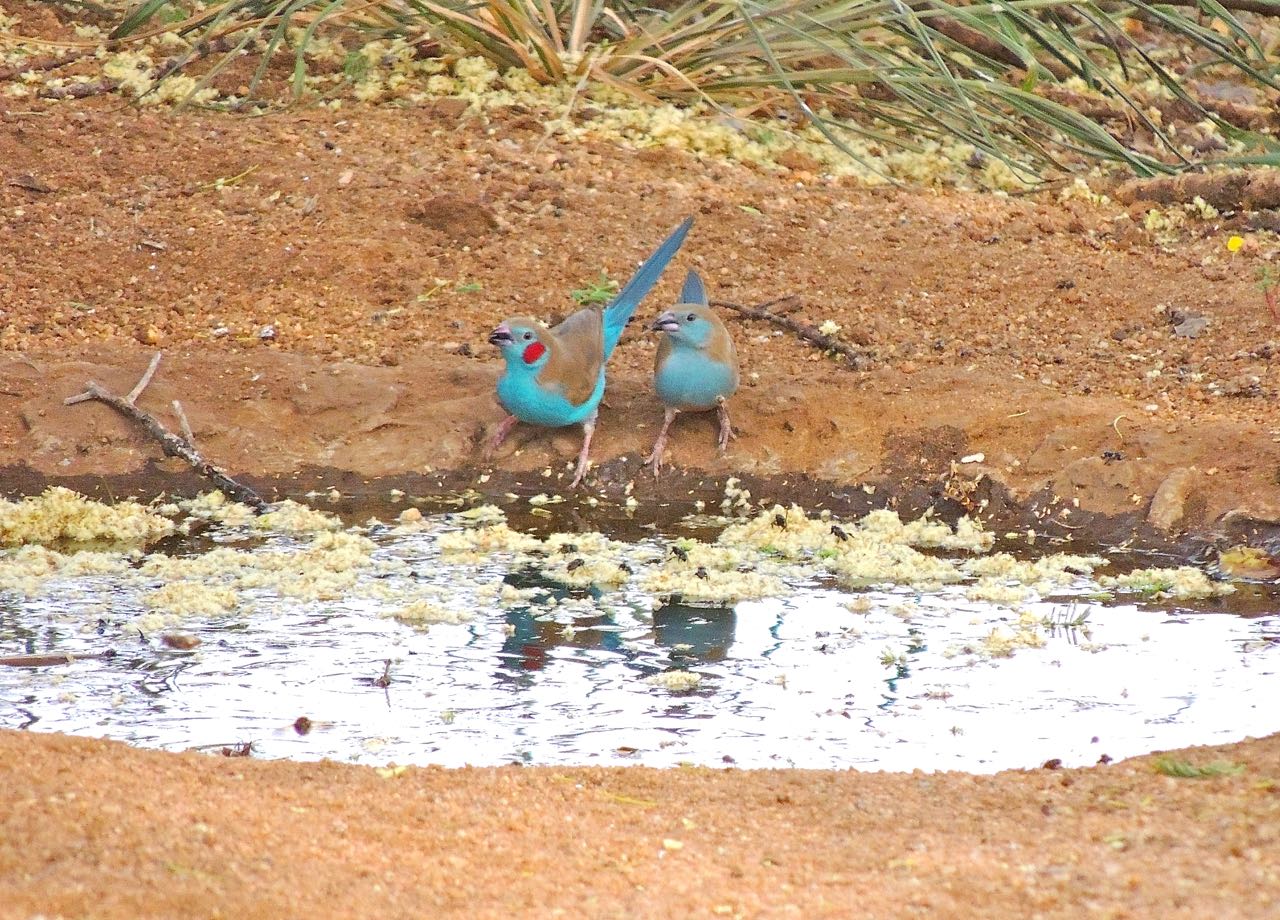 Male and Female Red-cheeked Cordon-bleus - Photo by William Young
Male and Female Red-cheeked Cordon-bleus - Photo by William YoungWe saw 25 Common Waxbills on five days, with 18 at Amani. They are small and brown, with a red bill and a red eyeline. Black-faced Waxbills are purplish-gray, with a black mask and black wings with fine white barring. We saw five on three days, with four in the area near our tents at Ndutu. The Zebra Waxbill has gaudy plumage. We saw four when we went to the opposite side of the shore in Kilombero and another eight the next day at Udzungwa. They have a red rump and are green-and-yellow in front. They have a red bill and eyestripe, and they have green barring on their flanks. Another gaudy bird in this group is the Melba Finch, who used to be called the Green-winged Pytillia. I had missed the one Martin and Bernard saw near the dining area at the Naitola campsite, but I had a nice look at one at the Dindira campsite. It has a gray head, red face, olive wings, and barred underparts. In the same spot, I saw a couple of Peter's Twinspots, who have a red face, throat, and breast, a brown back, and black underparts with white spots. I had the best look at the first one I saw. I found subsequent ones to be very skittish, not allowing close approach. I had no luck at all with Green Twinspots. I never managed to see one in Amani, even though I was around them a number of times. They are small and tend to fly away quickly.
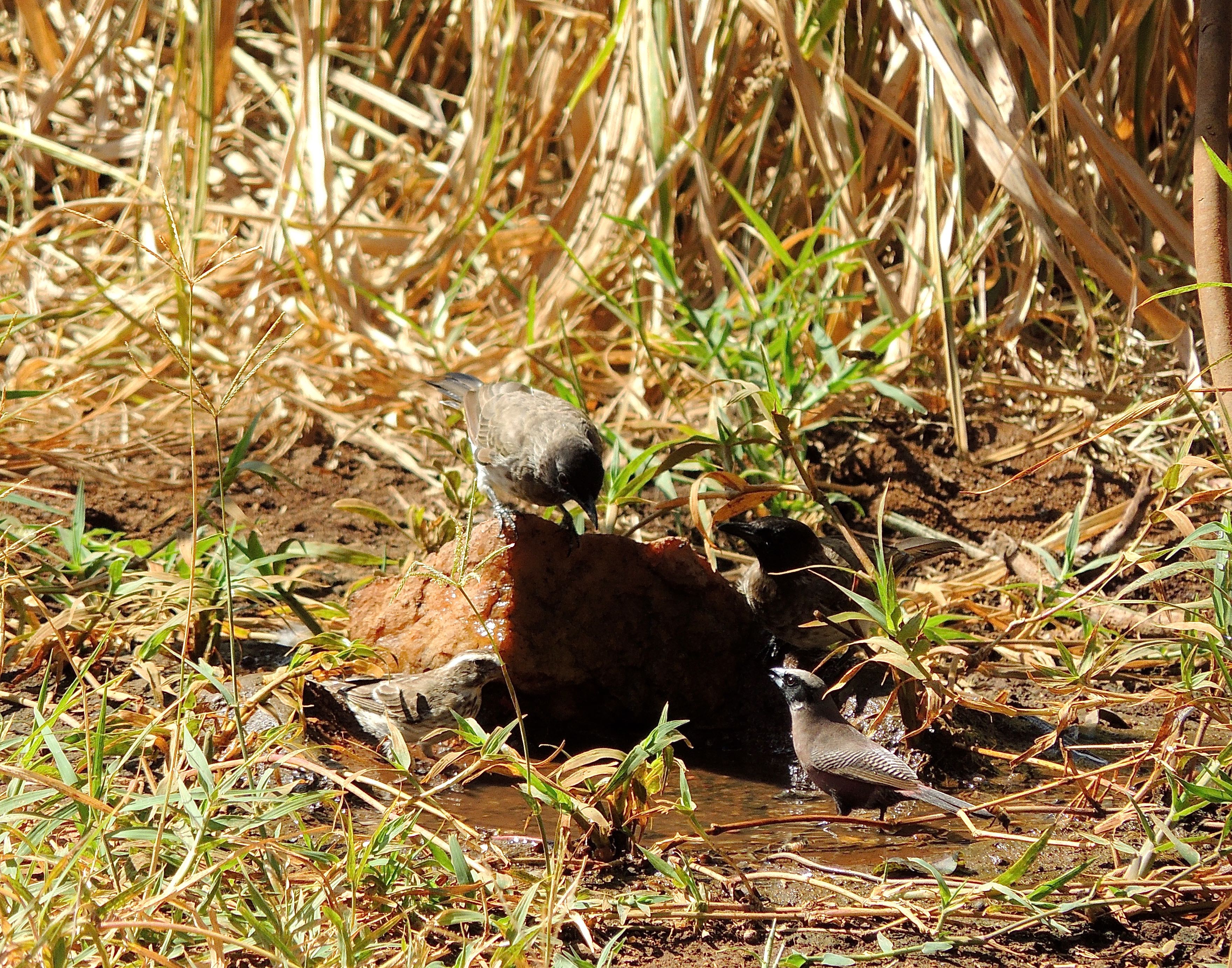 Red-billed Quelia, Common Bulbul, and Black-faced Waxbill - Photo by William Young
Red-billed Quelia, Common Bulbul, and Black-faced Waxbill - Photo by William Young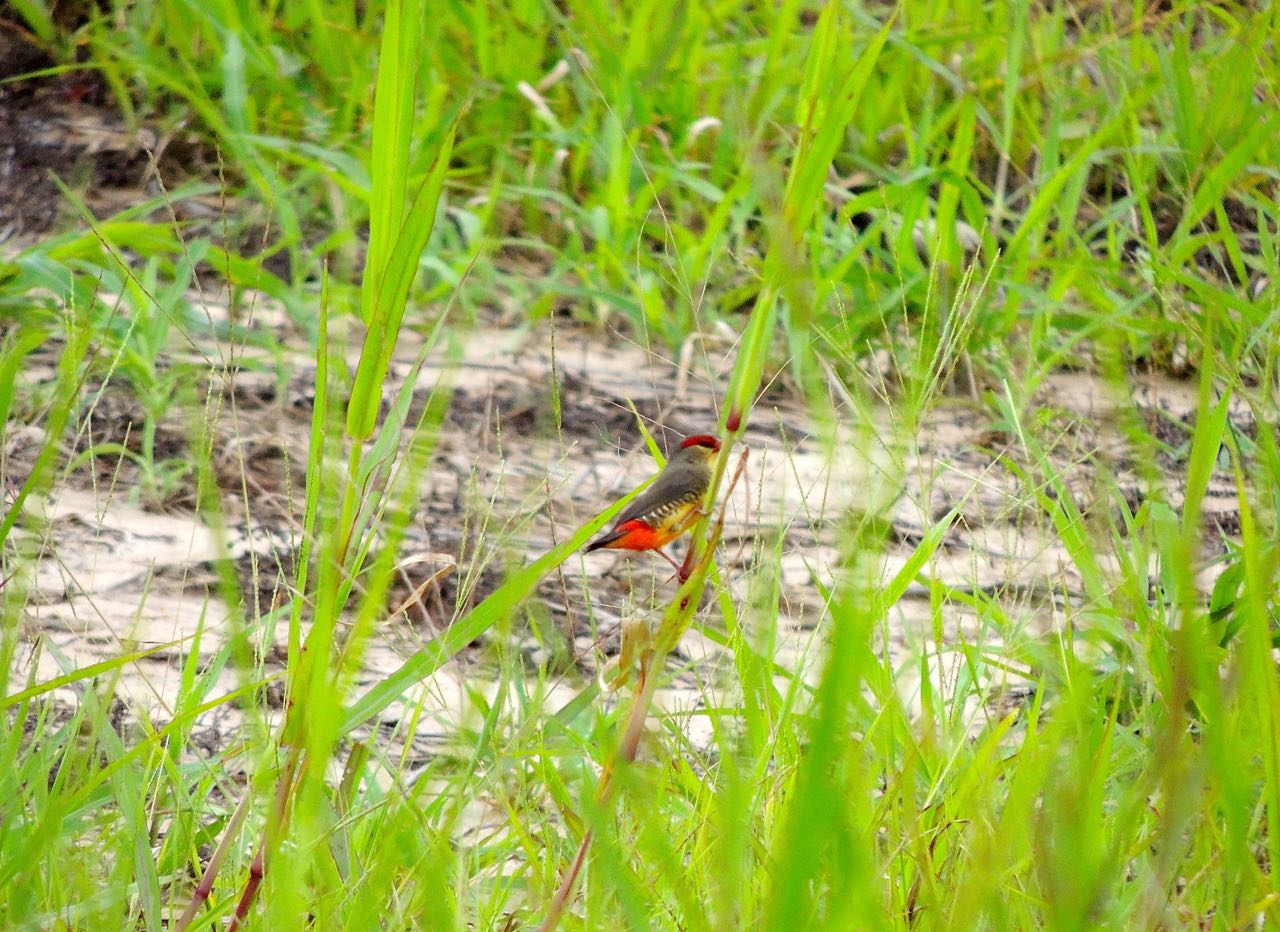 Zebra Waxbill - Photo by William Young
Zebra Waxbill - Photo by William YoungAt Lake Manyara, I saw my first Cut-throat Finch. It would be fairly ordinary looking, except for the broad red slash that runs across its throat, which makes the bird really eye-catching. We saw about 10 more at Mkomazi, sometimes mixed in with the Red-billed Queleas. Purple Grenadiers are gaudy finches. The male has a rufous head, neck, and breast, brown wings, and dark blue underparts. He has blue feathering around the eye. We saw one in the parking lot at Olduvai Gorge. The female does not have blue underparts, and the area around her eyes looks like a light mask. We saw a pair near our campsite at Ndutu and another pair on the ground near the entry gate to Mkomazi. Also at that gate were Jameson's Firefinches. They are small, round, and almost entirely red. The bill is reddish-gray, and they have a yellow eyering. I saw 30 on three days at Mkomazi. At Olduvai Gorge, we saw an African Firefinch foraging next to a building. It is mostly brown on top and has a dark bill.
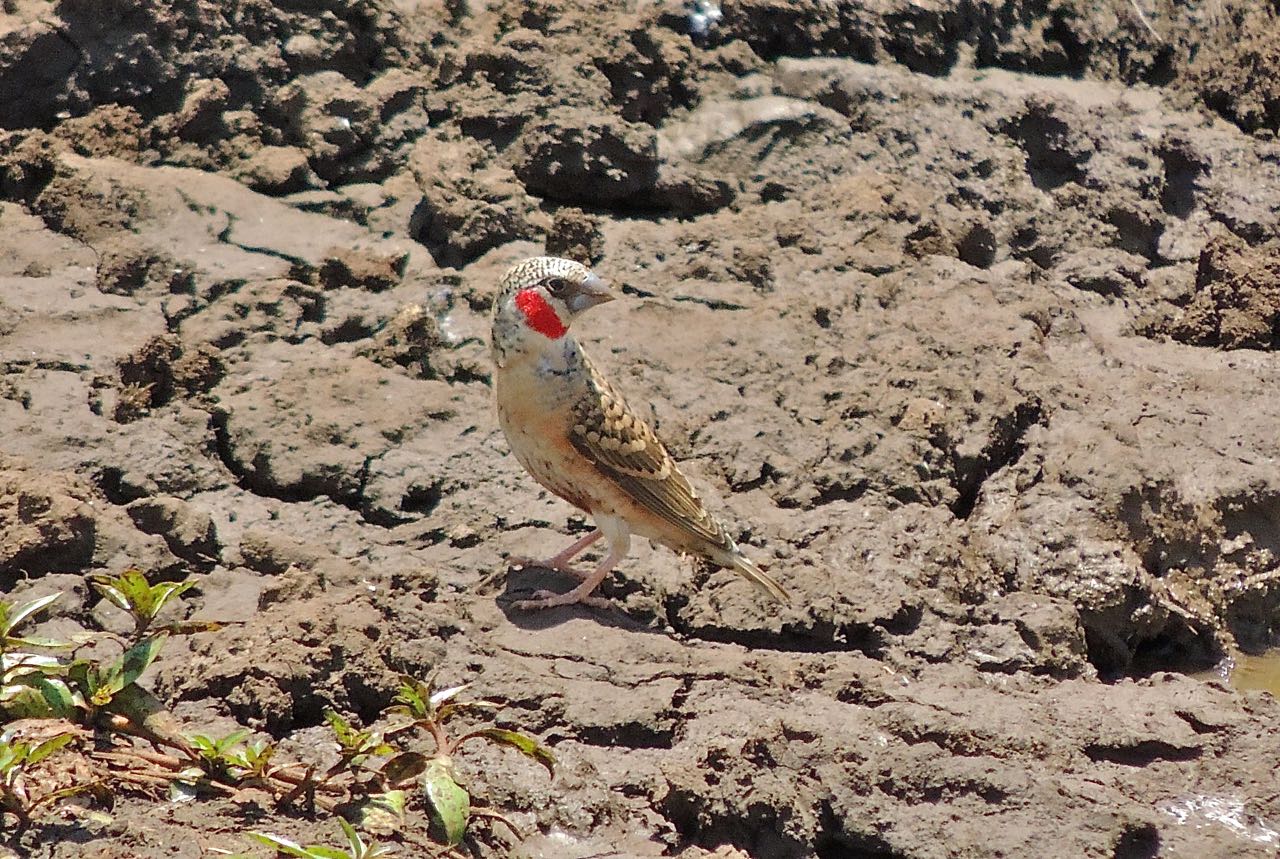 Cut-throat Finch - Photo by William Young
Cut-throat Finch - Photo by William Young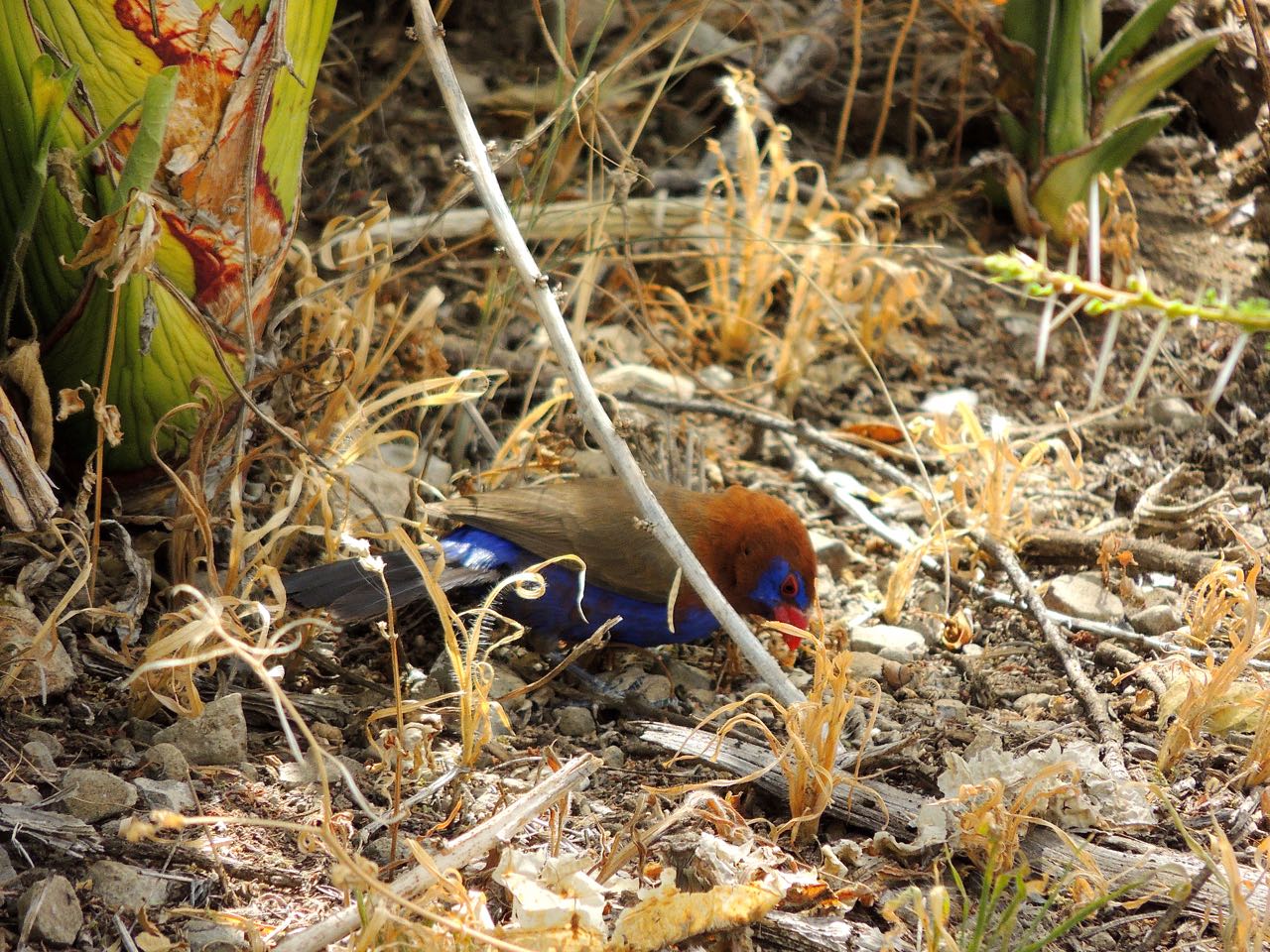 Purple Grenadier - Photo by William Young
Purple Grenadier - Photo by William Young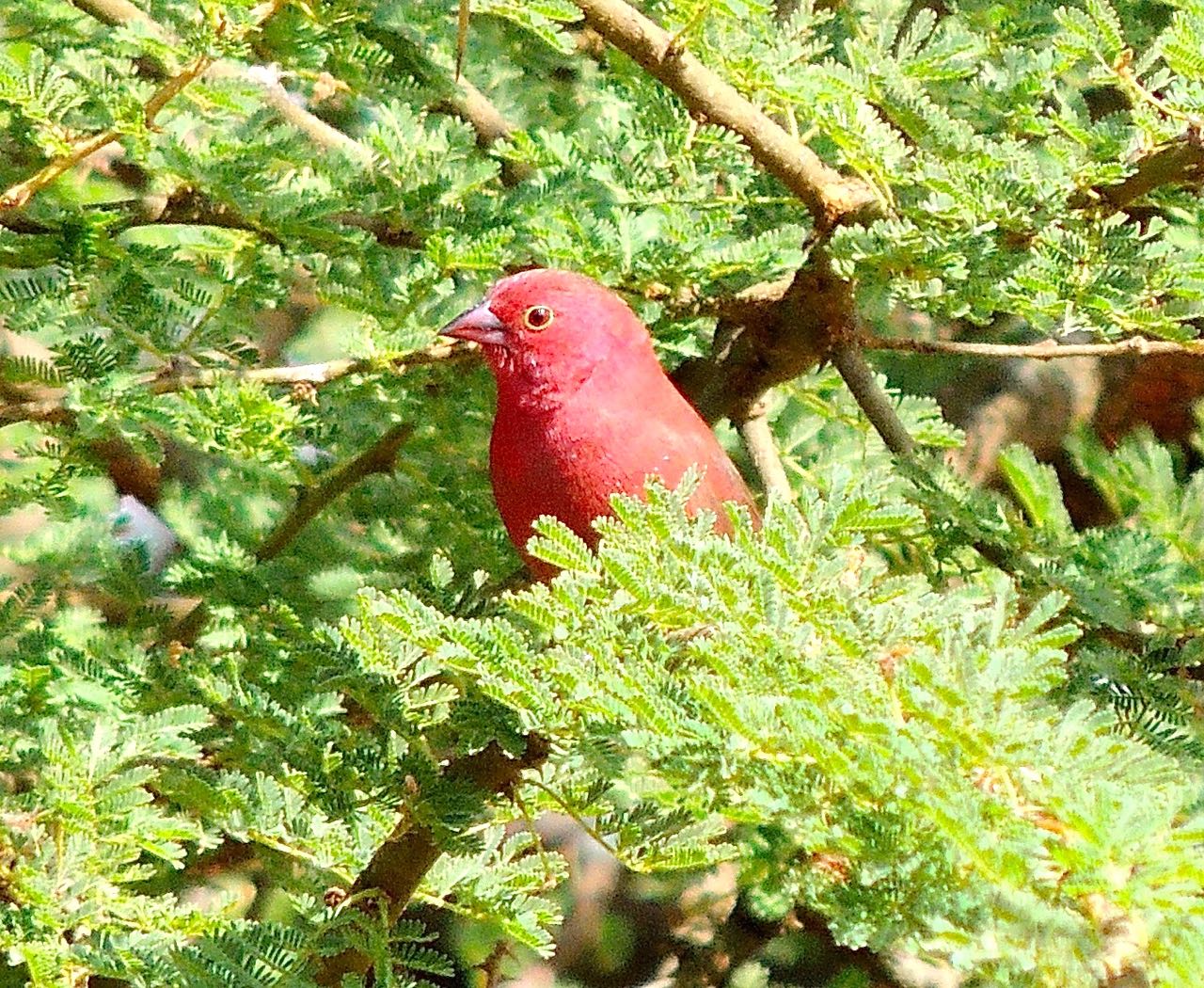 Jameson's Firefinch - Photo by William Young
Jameson's Firefinch - Photo by William YoungThe three mannikins can be difficult to tell apart. We saw 98 Black-and-white Mannikins on eight days. They have a black hood, white underparts, a rufous back, and black-and-white bars on the flanks. They were common in Amani, Udzungwa, and Kilombero. Bronze Mannikins have a slightly darker back and less barring on their flanks. We saw 32 on seven days, with the greatest number in Udzungwa. I saw only two Magpie Mannikins I could positively identify, both at Udzungwa. They are like the Bronze, but with no barring on the flanks.
IndigobirdsThree of the four birds we saw in this family are called whydahs (pronounced wid-dah), and only one is called an indigobird. All of them parasitize nests of other birds, usually finches. We saw nine Village Indigobirds on three days. One was on a wire in Arusha, and another was in a tree when we went to shore on the Kilombero River. It is a small bluish-black bird, with red legs and a red bill. We saw six in the Serengeti, and they were hanging around with eight Steel-blue Whydahs. Another name for the Village Indigobird is the Steel-blue Widowfinch. The tail of the male whydah is longer than his body. We saw eight Pin-tailed Whydahs on six days. The male is black-and-white, with a red bill and a tail longer than his body. We had a nice look at one near the entrance to Mkomazi. The Pin-tailed Whydah is the only whydah who does not focus on a specific host species to parasitize. Perhaps the most spectacular of the bunch is the Long-tailed (Eastern) Paradise-Whydah, who has a huge tail that is wide at the top and narrow at the bottom. We saw 11 in a tree at Mkomazi. We later saw two at close range on the ground at Mikumi. On the back, the bird is all black, with a dark tan collar. The underparts are a combination of tan and rufous. This was one of the more memorable sightings of the trip.
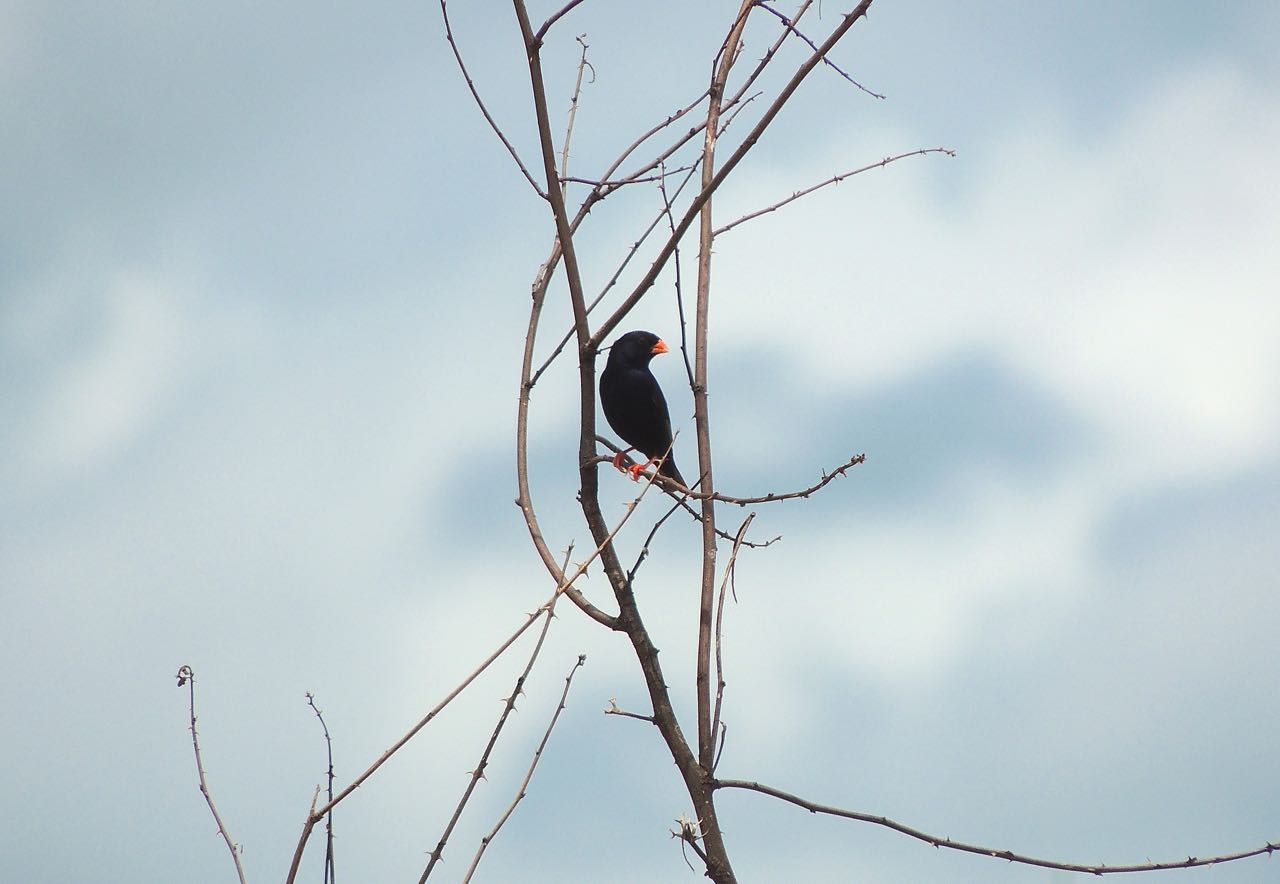 Village Indigobird - Photo by William Young
Village Indigobird - Photo by William Young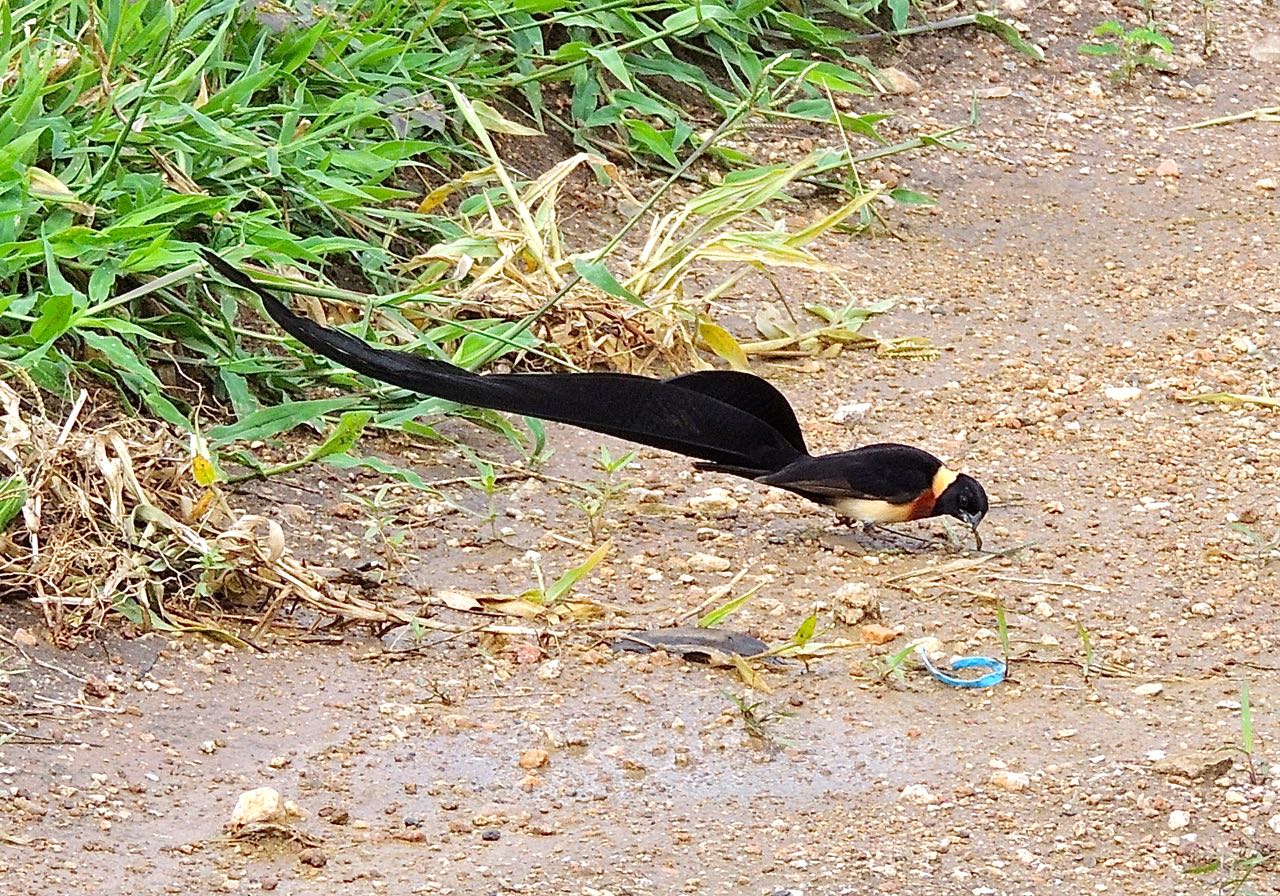 Long-tailed (Eastern) Paradise-Whydah - Photo by William Young
Long-tailed (Eastern) Paradise-Whydah - Photo by William Young
FinchesWe saw only a half a dozen finches on the trip, and none on more than five days. African Citrils were common at Amani. They are in the same genus as canaries. They are dull yellow below, olive on back, and have a yellow supercilium. We saw a Yellow-fronted Canary in the rain while we looked at a field in Udzungwa. It is a lot like the citril, but it has a yellow supercilium and a busier facial pattern. We saw one Yellow-crowned Canary on the road to the Rhino Lodge. It is like a Yellow-fronted, but with hardly any facial pattern and a white vent. White-bellied Canaries were common near our campsite in Ndutu. They have a white vent like the Yellow-crowned, but they have more of a facial pattern. Yellow-rumped Seedeaters look like streaky brown sparrows with a yellow rump. We saw 15 at the entrance to Mkomazi and a couple at a stop to service the car in the Serengeti area. I saw 17 Streaky Seedeaters, who look like an American sparrow. We saw the most near the entrance to the park at Mkomazi.
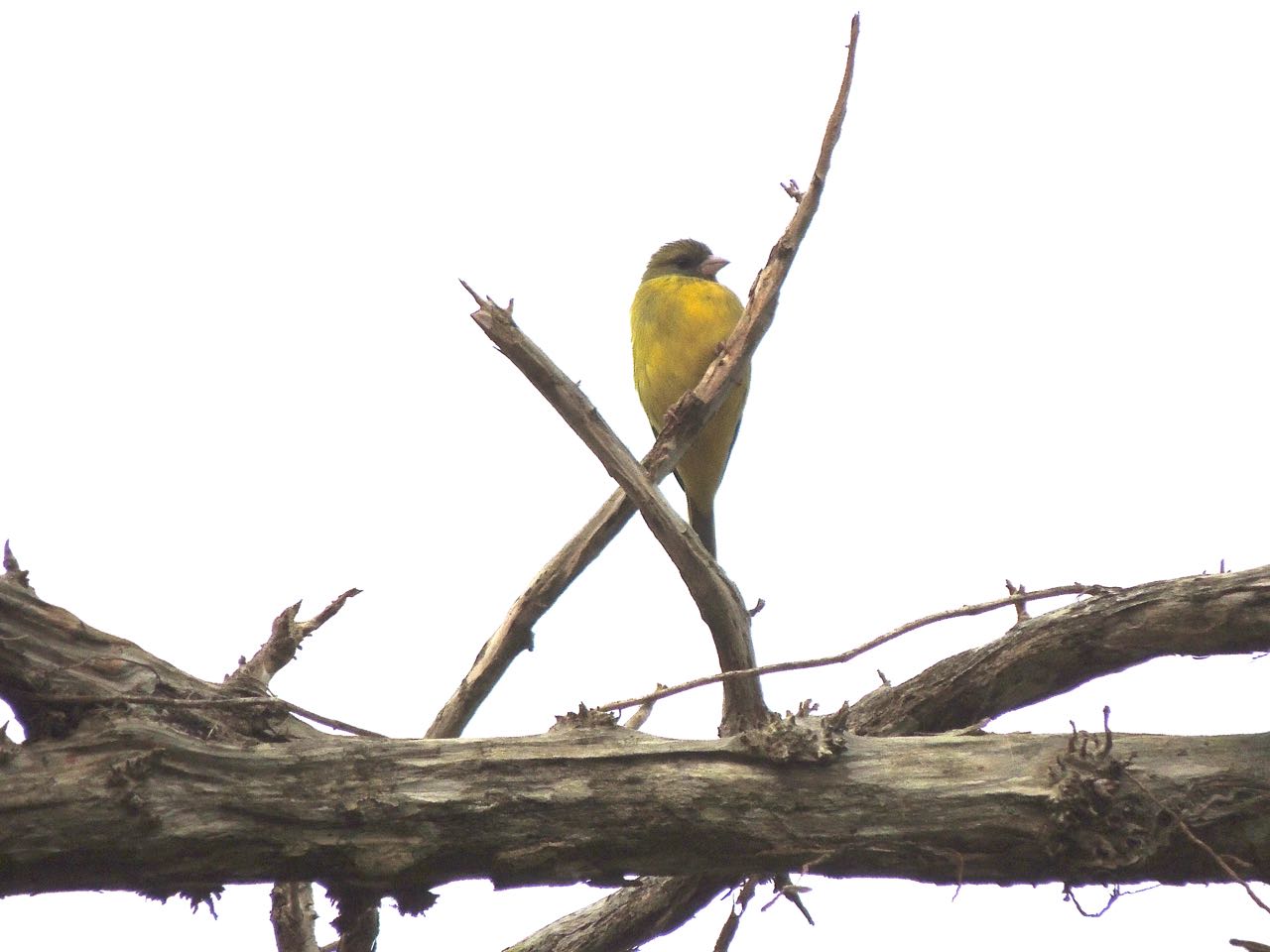 African Citril - Photo by William Young
African Citril - Photo by William Young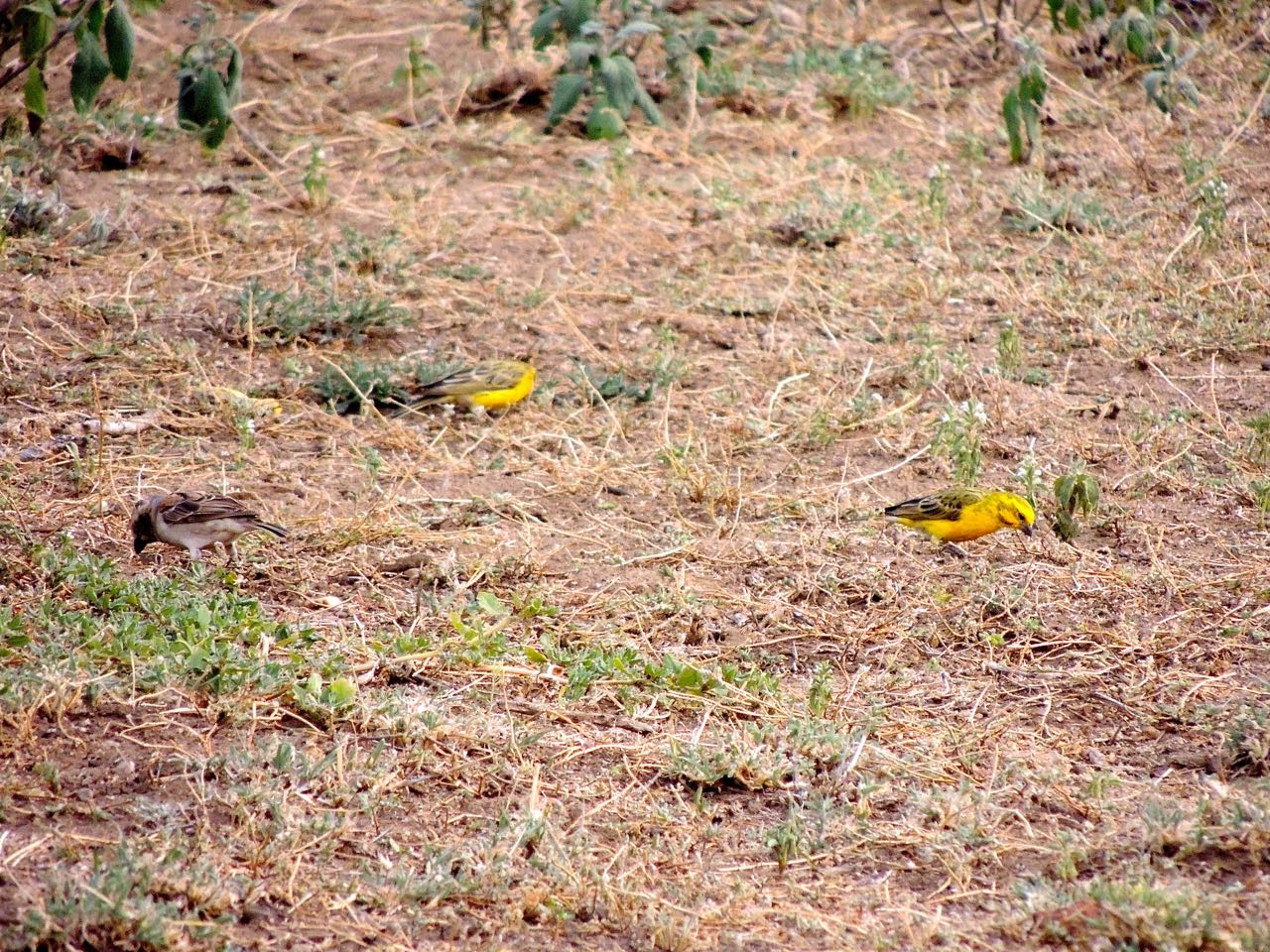 Kenya Rufous Sparrow and White-bellied Canaries - Photo by William Young
Kenya Rufous Sparrow and White-bellied Canaries - Photo by William Young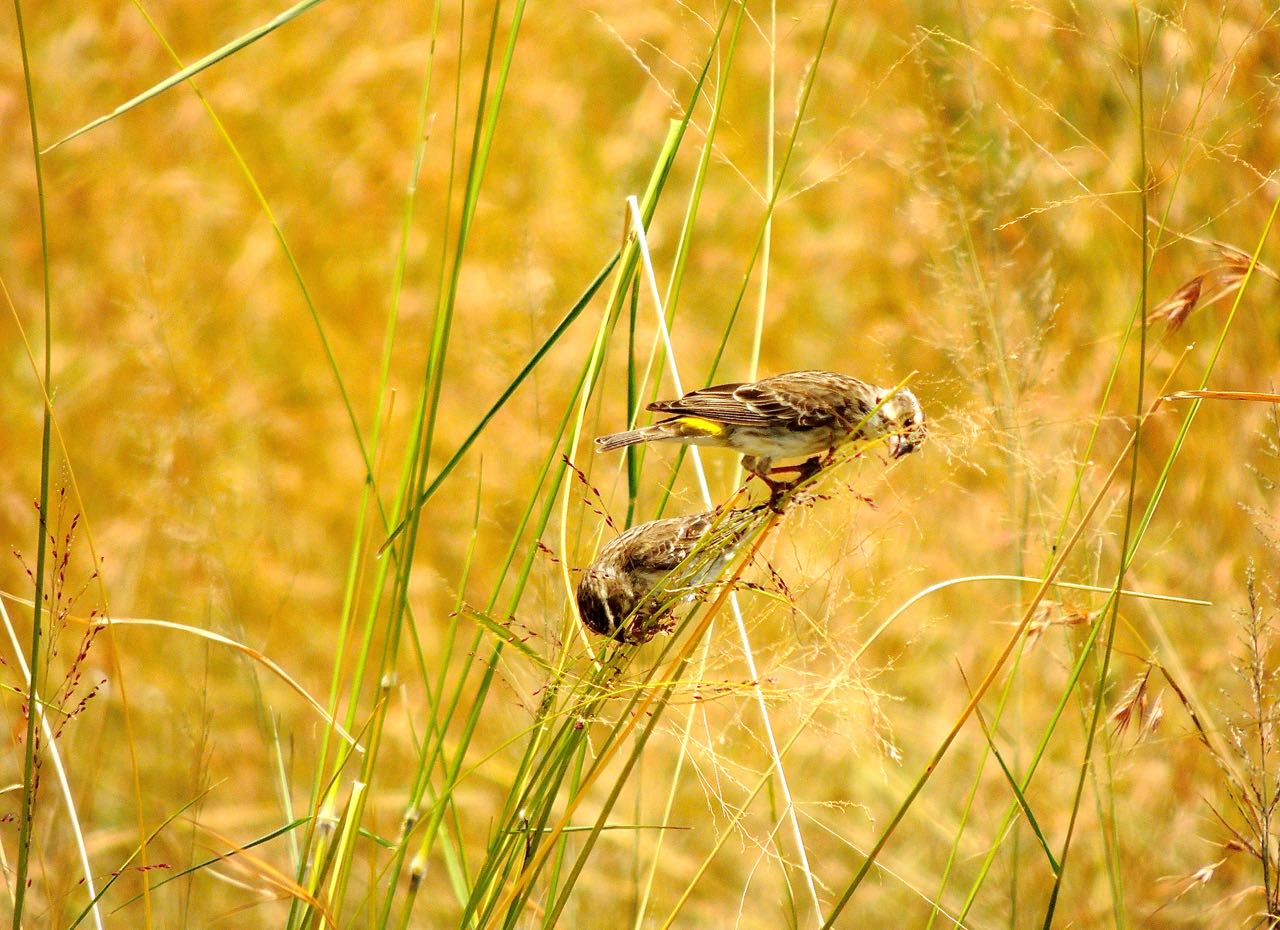 Yellow-rumped Seedeaters - Photo by William Young
Yellow-rumped Seedeaters - Photo by William Young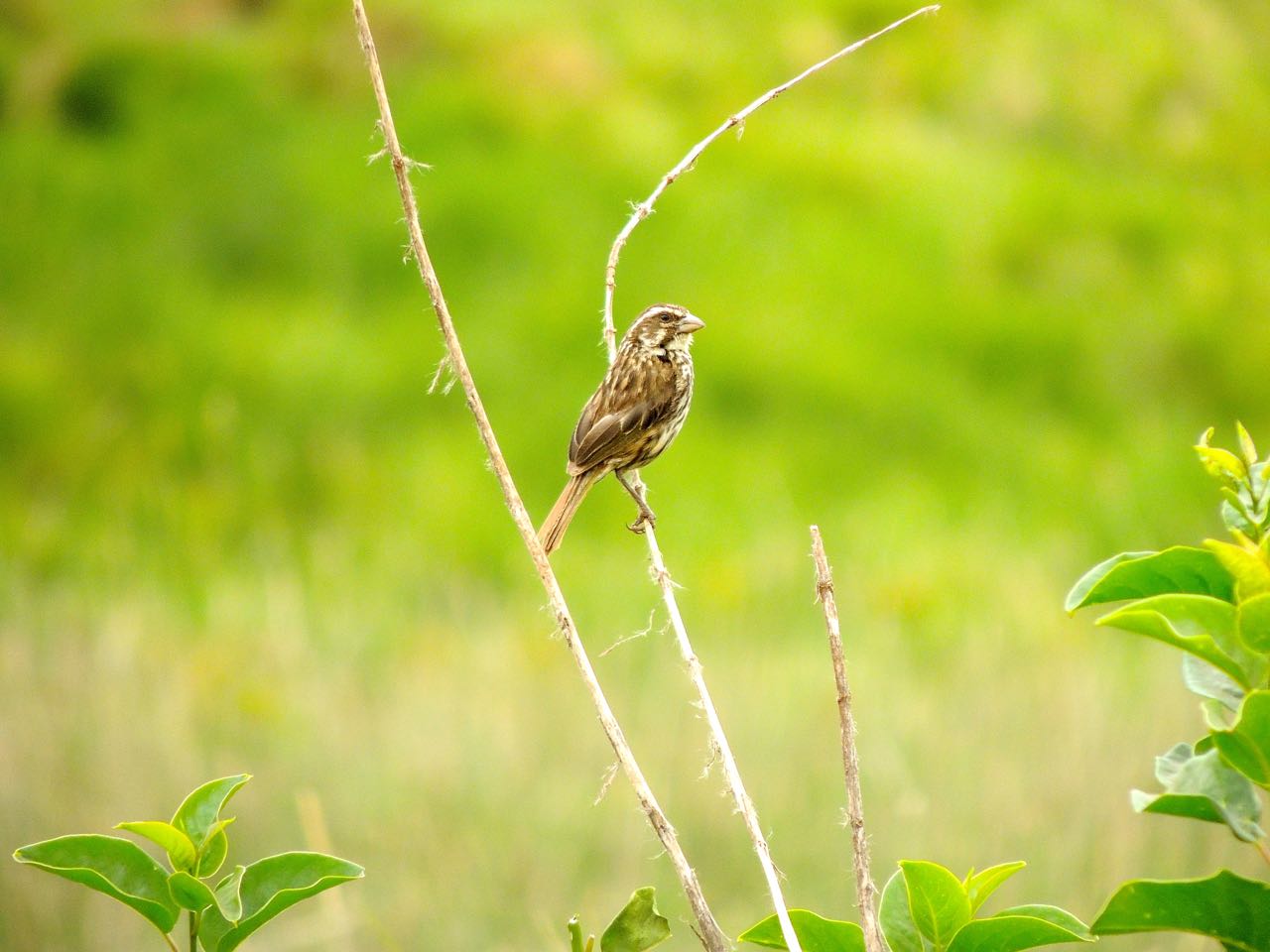 Streaky Seedeater - Photo by William Young
Streaky Seedeater - Photo by William Young
Buntings and New World SparrowsWe did not see many buntings on the trip. We saw Cabanis's Buntings on three of the days we were at Amani. They are yellow below, have a black head, a white supercilium, a gray back, and two white wingbars. We saw about four Golden-breasted Buntings at the Angalia campsite. They have a yellow-brown breast, white vent, and a black-and-white facial pattern. We saw Cinnamon-breasted Buntings at the Dindira Swamp. They look like the Golden-breasted Bunting, but with a cinnamon breast and vent.
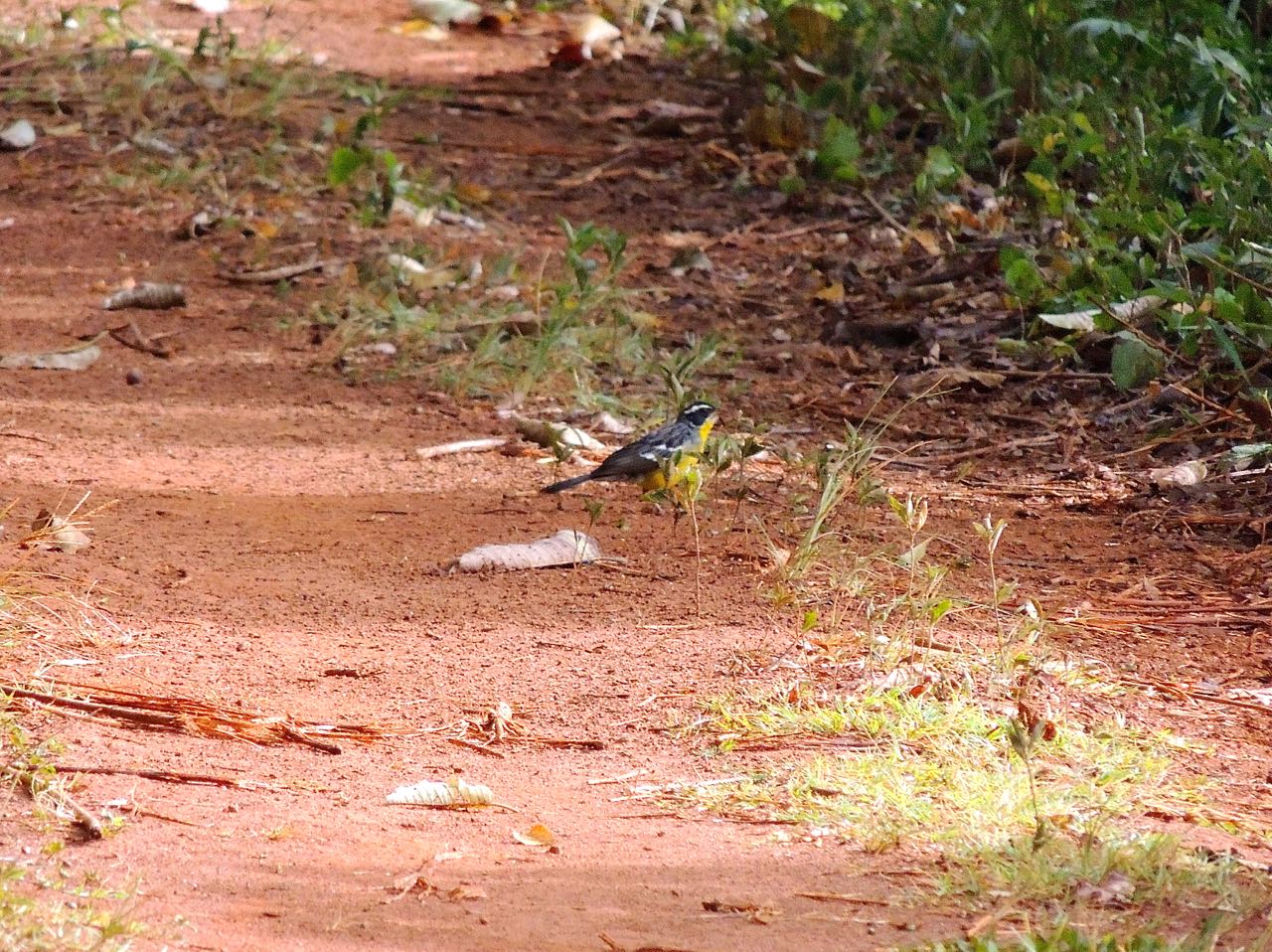 Cabanis's Bunting - Photo by William Young
Cabanis's Bunting - Photo by William Young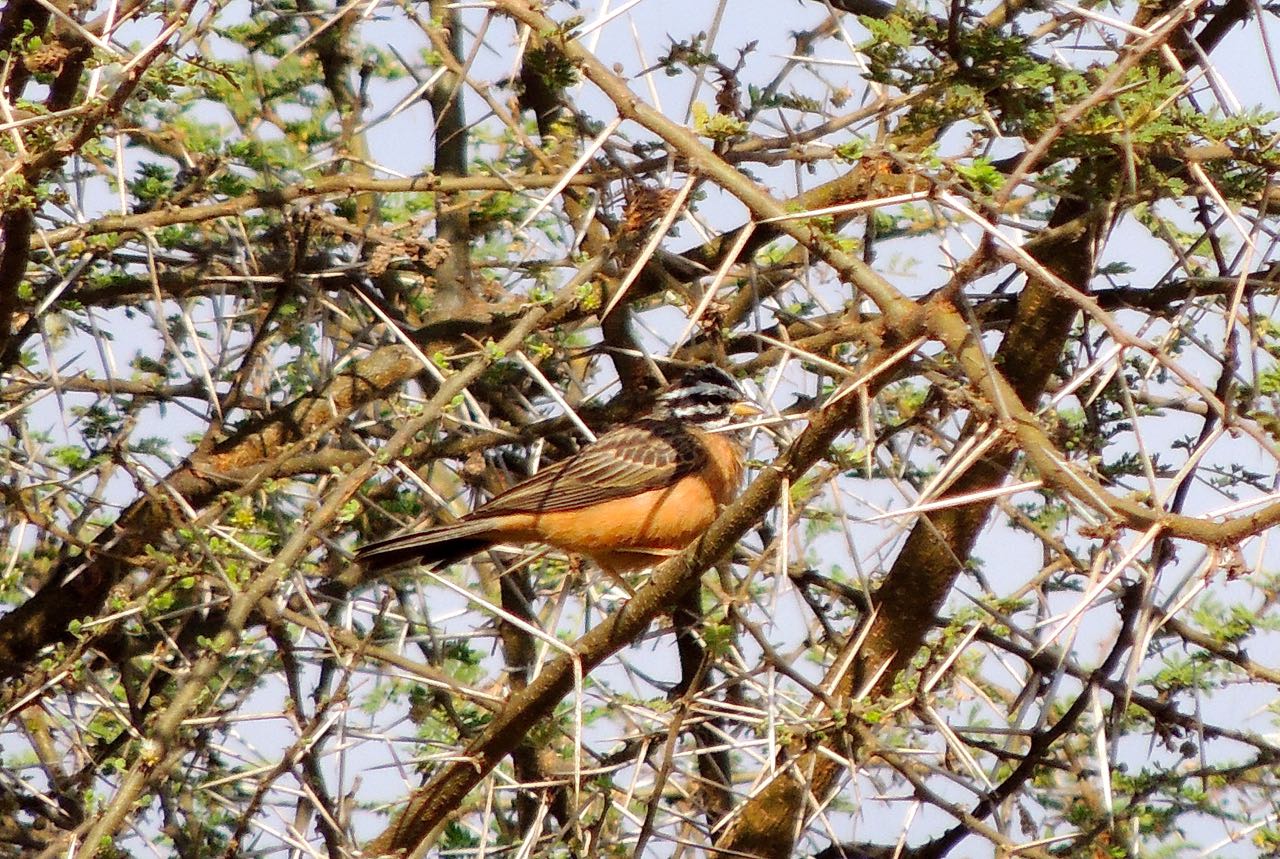
Cinnamon-breasted Bunting - Photo by William Young
MAMMALSI went to Tanzania to observe mammals and other forms of wildlife in addition to birds. Because this was my first trip to Africa, all of the mammals were new to me. During the trip, we saw almost 230,000 mammals, which is nearly seven times the 34,000 birds we counted. We saw three times more wildebeest (105,000) than total birds, almost twice as many Thomson's Gazelles (61,000), and more Plains Zebras (41,500). Even more remarkable was that we saw roughly three times the number of wildebeest in a single day than all of the birds during the entire trip. I was impressed by the sheer numbers of some of the species we saw. Exact counts were not possible, so the numbers below represent our best estimates.
We saw four or five species of bats. The Yellow-winged Bat is a false vampire bat and feeds mostly on insects and small vertebrates. Not listed below are the three species of squirrels (probably Unstriped Ground Squirrel, Red-legged Sun Squirrel, and Tanganyika Squirrel) and two species of grass mice. In one area, we saw a group of four Dromedaries. We saw a lot of Aardvark holes, but no Aardvarks. Some of those holes were near our tents at Ndutu.
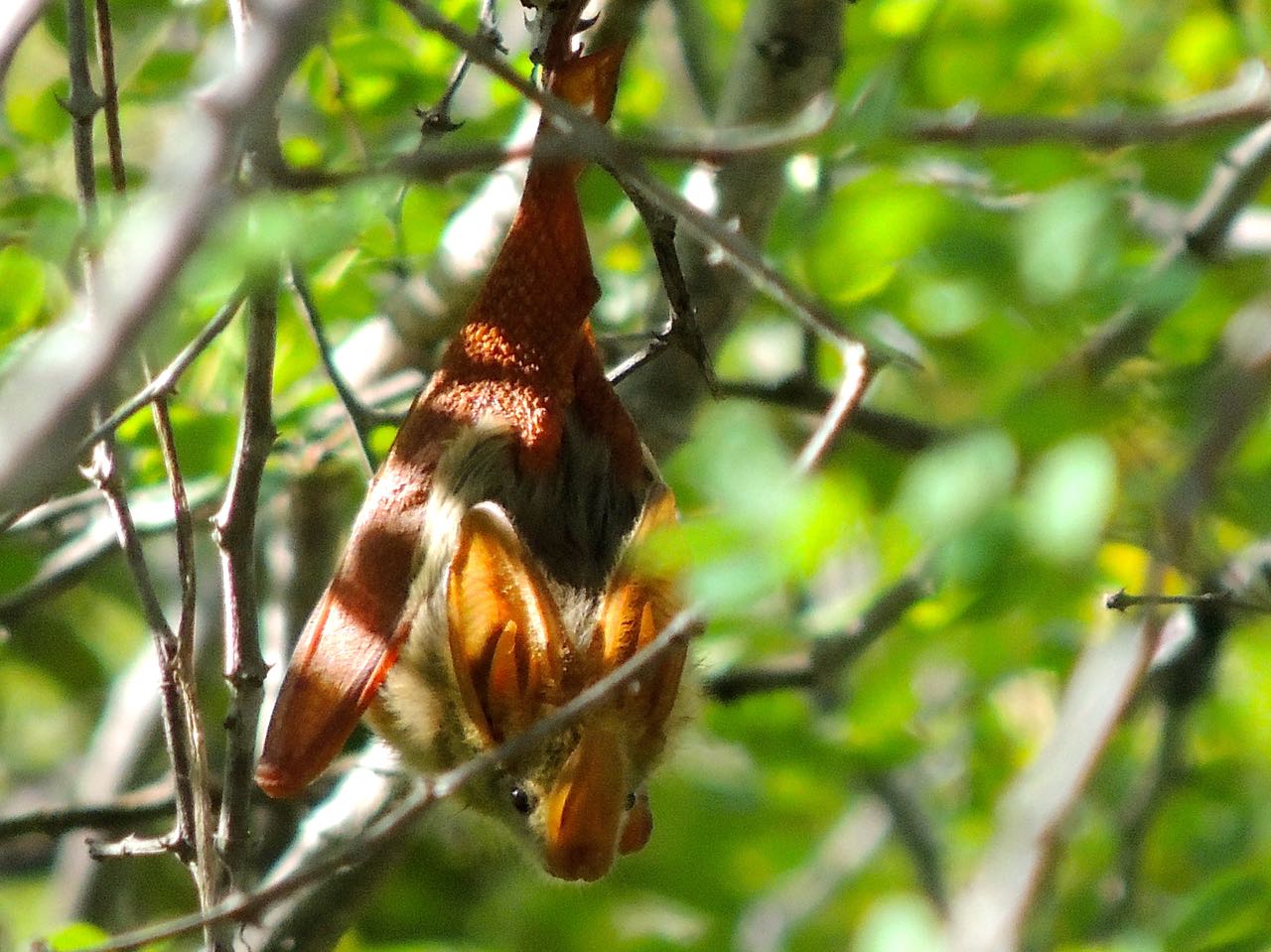 Yellow-winged Bat - Photo by William Young
Yellow-winged Bat - Photo by William Young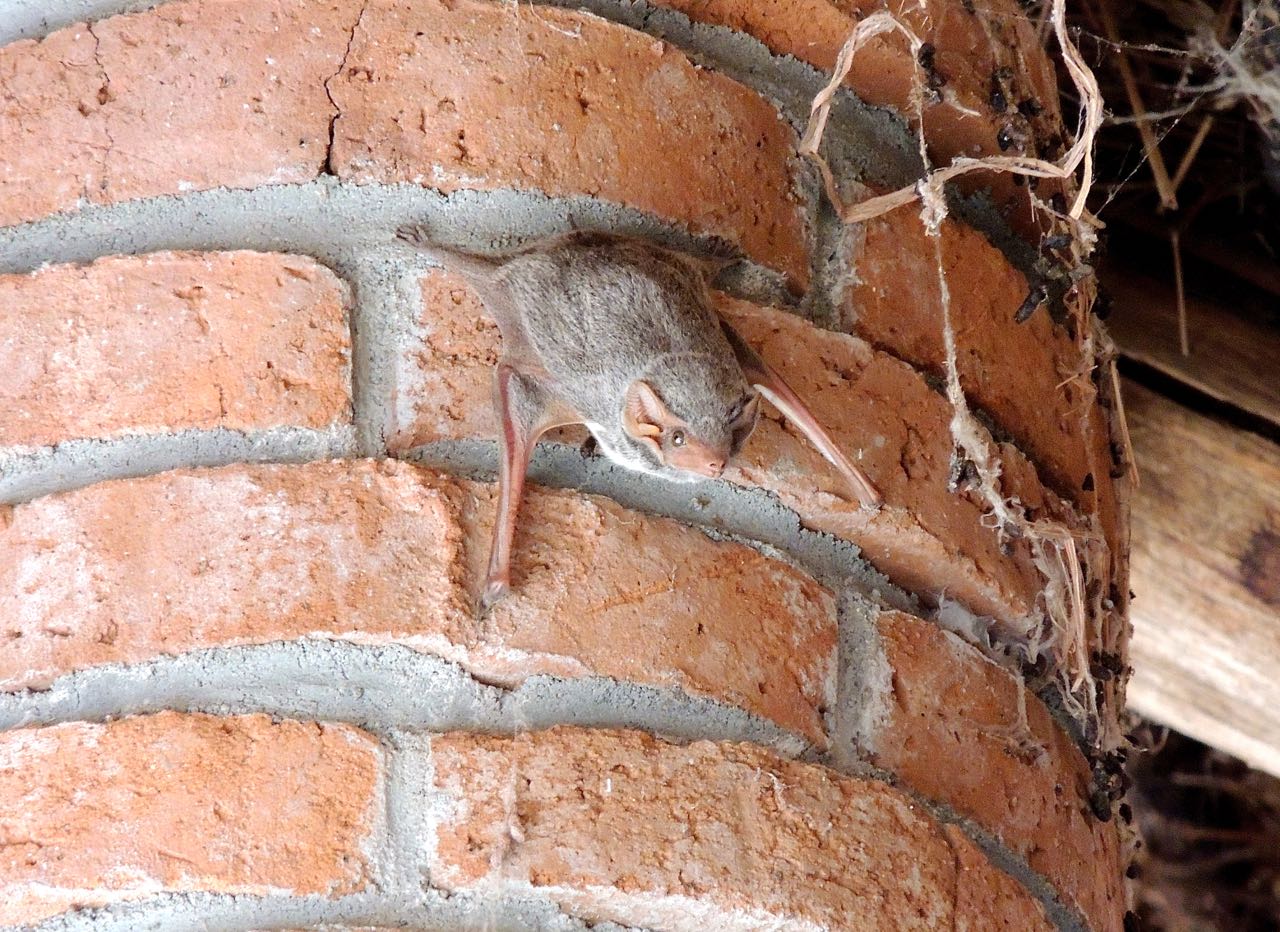 Bat Species - Photo by William Young
Bat Species - Photo by William Young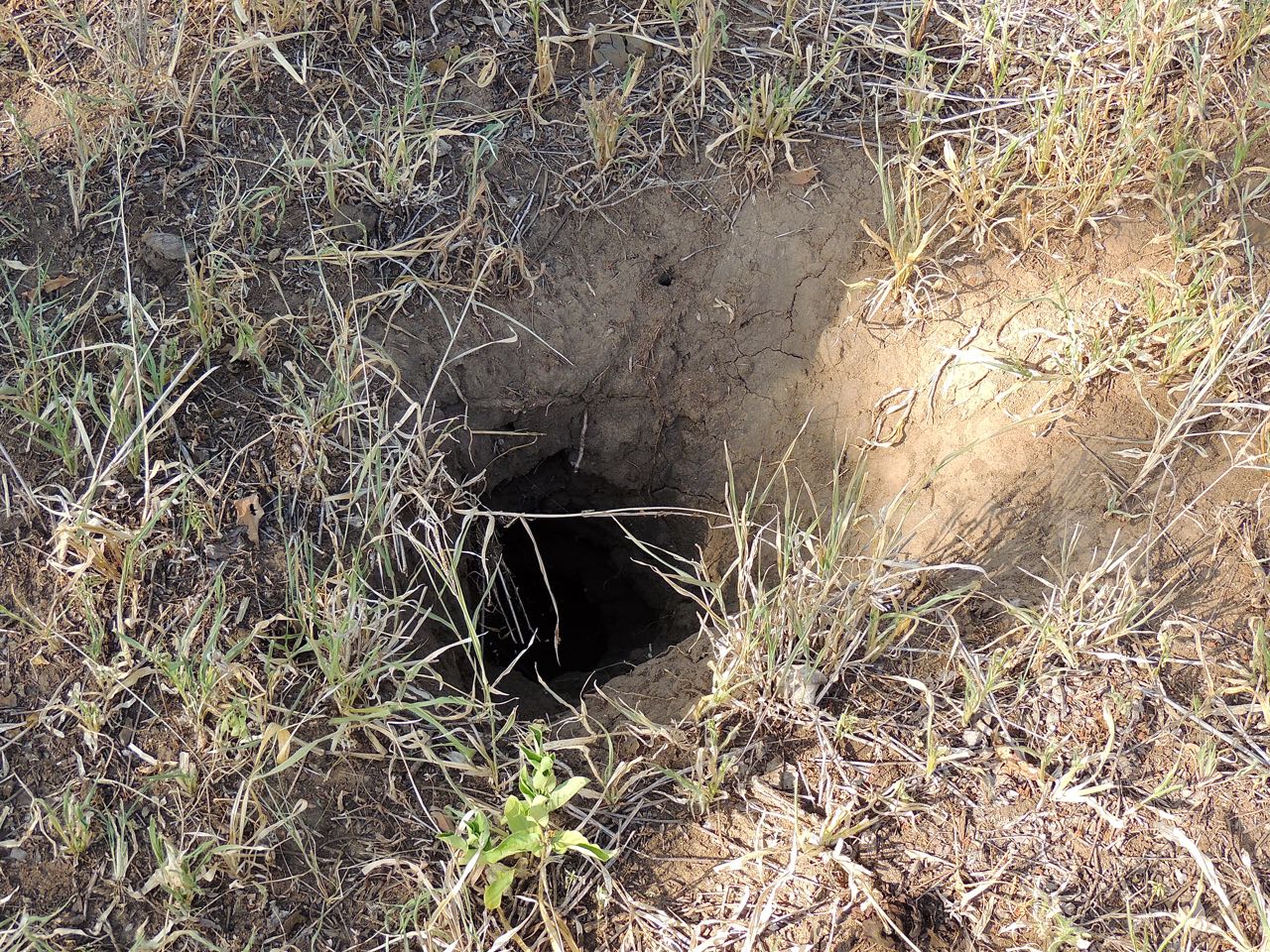 Aardvark Hole - Photo by William Young
Aardvark Hole - Photo by William Young
HyraxThe only Southern Tree Hyrax we saw was at Simon King's house. It looked like a marmot, but it is more closely related to elephants than to rodents. While we were at Hondo Hondo, we could hear their guttural vocalizations through the night.
ElephantI very much wanted to see African Bush Elephants in the wild, and I was not disappointed. We saw 438, including 250 at Tarangire. The first ones we saw were about a dozen at Serengeti National Park, mostly females and young. Some of the females were lactating, and I could see their large breasts. We saw elephants of all ages, including very young ones who appeared to be only about three feet tall. At the Rhino Lodge, I was warned not to walk down a large grassy strip near the loading area because elephants sometimes come through. We were warned in a number of other places as well. But the elephants I saw seemed gentle. They do almost everything slowly and deliberately. I imagine there could be trouble if someone tried to approach a young elephant when the mother was nearby. But a few times, we drove into areas where elephants were either in the road or by the side of the road, and they took little notice of us. I did not see any elephants charging or even walking faster than their typical side-to-side saunter.
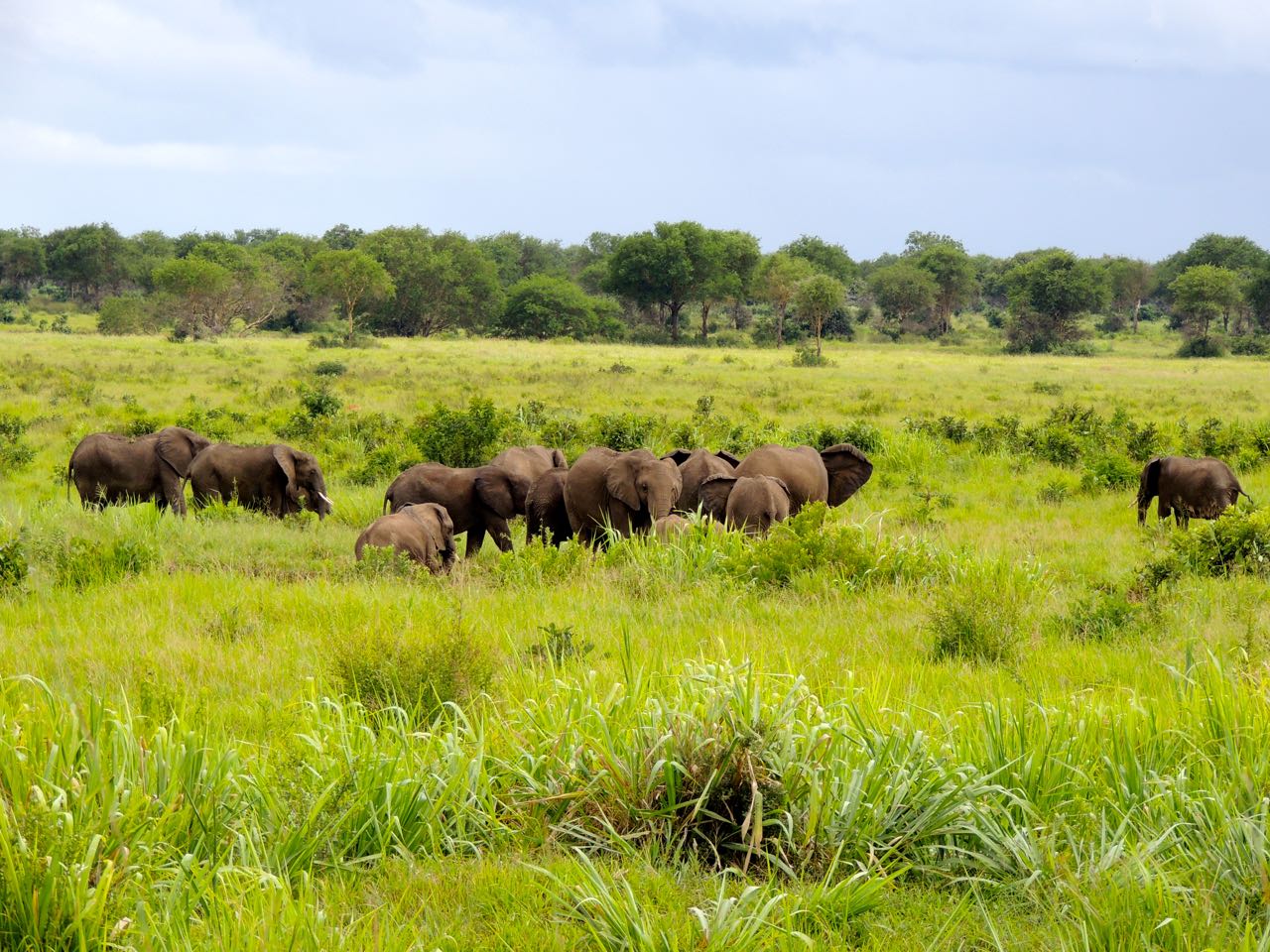 African Bush Elephants - Photo by William Young
African Bush Elephants - Photo by William Young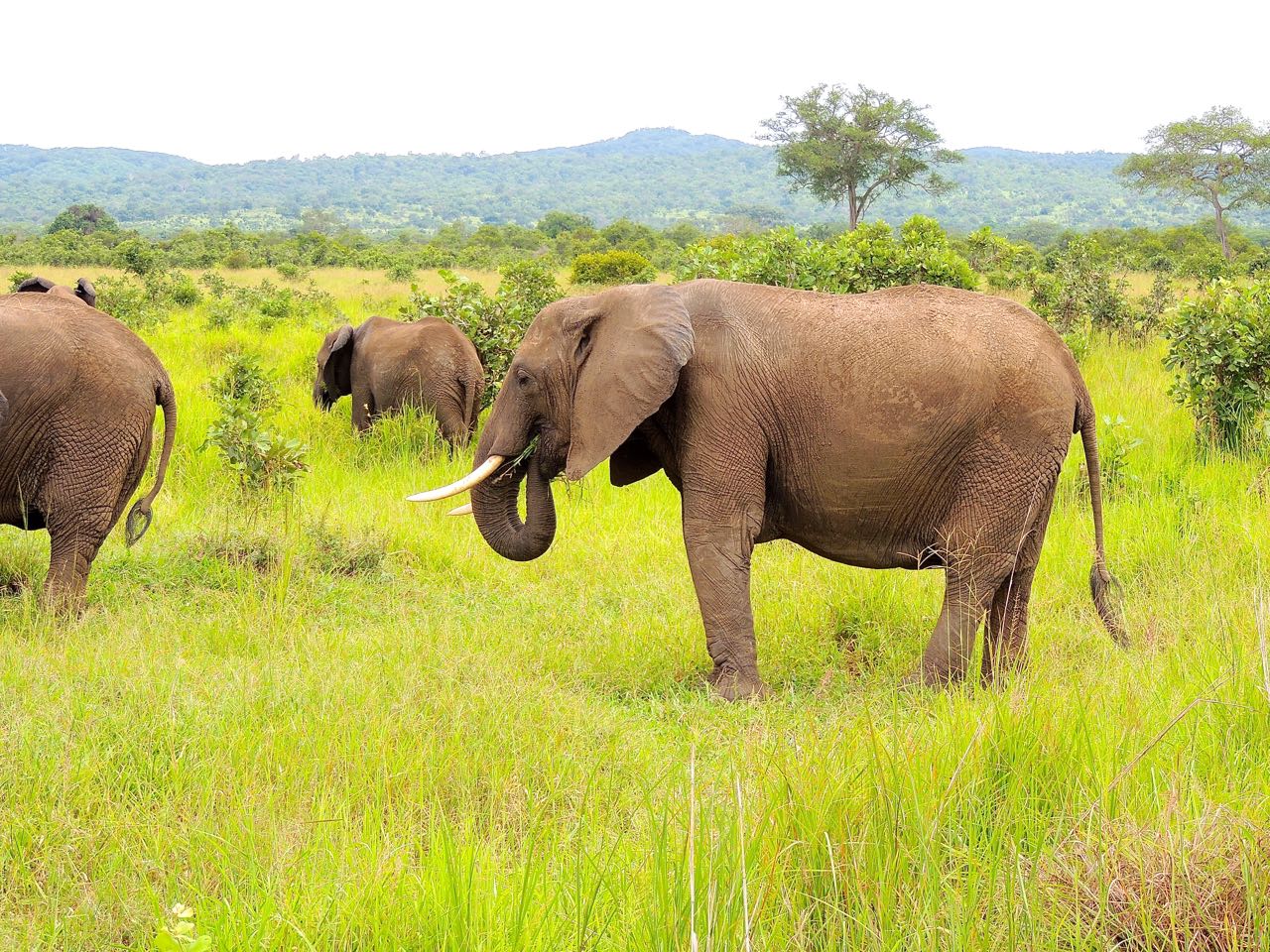 African Bush Elephants - Photo by William Young
African Bush Elephants - Photo by William Young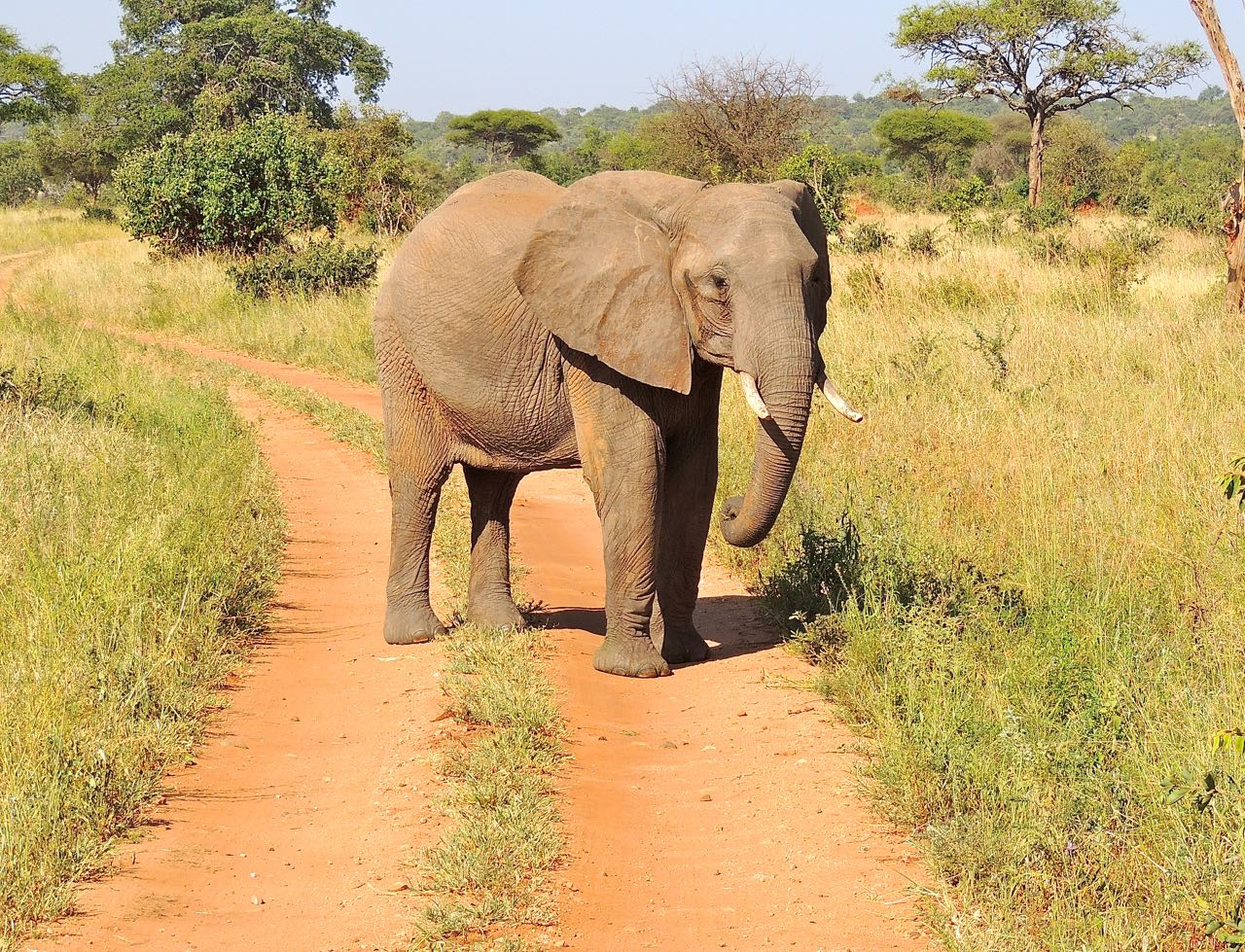 African Bush Elephant - Photo by William Young
African Bush Elephant - Photo by William YoungBoth males and females have tusks, but they are usually larger on the males. We saw some large bulls, but Martin commented that we did not see many of the huge bulls who can weigh more than 6 tons. A reason is that many of the huge males might have been killed by poachers, who are still a serious problem in Tanzania and other countries where elephants live. When we arrived at our campsite in Arusha National Park, there was a smell of a dead animal. The rangers found a dead elephant who had apparently died of natural causes. Mutobha, who is one of the park rangers, said that the park people would burn it after we left. They remove the tusks first. Not enough scavengers are in this area to clear away an elephant, and there are too many trees to allow vultures to see it. Hyenas had been calling at the camp on the previous evening, but they could not scavenge an elephant by themselves.
 Anti-poaching Sign on Range Rover - Photo by William Young
Anti-poaching Sign on Range Rover - Photo by William Young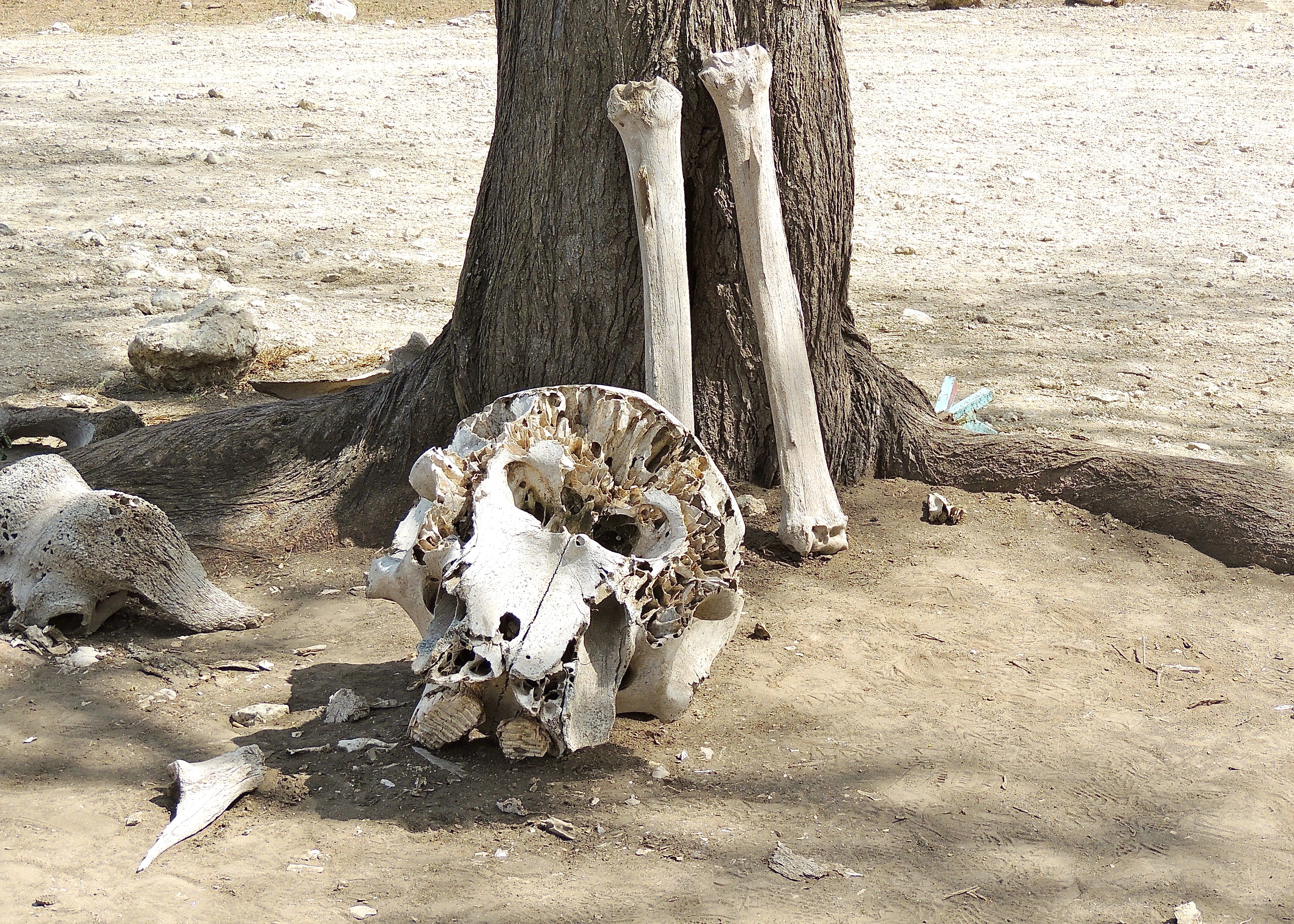 African Bush Elephant Bones - Photo by William Young
African Bush Elephant Bones - Photo by William YoungI was especially interested in how elephants use their trunks. The trunk works like a tool so that the elephants will not have to bend down to put food into their mouth or squirt water into their mouth or onto other parts of their body. The trunk is flexible, twisting in various directions to gather grass and other vegetation to stuff into their mouth. We saw some elephants walk into a marsh and spray themselves with water. The young ones stay close to their mothers. Elephant skin looks loose and wrinkled, which makes even young elephants look old. Elephants wiggle their large ears a lot, and sometimes, the wiggle appears to be an automatic action when they are doing something else.
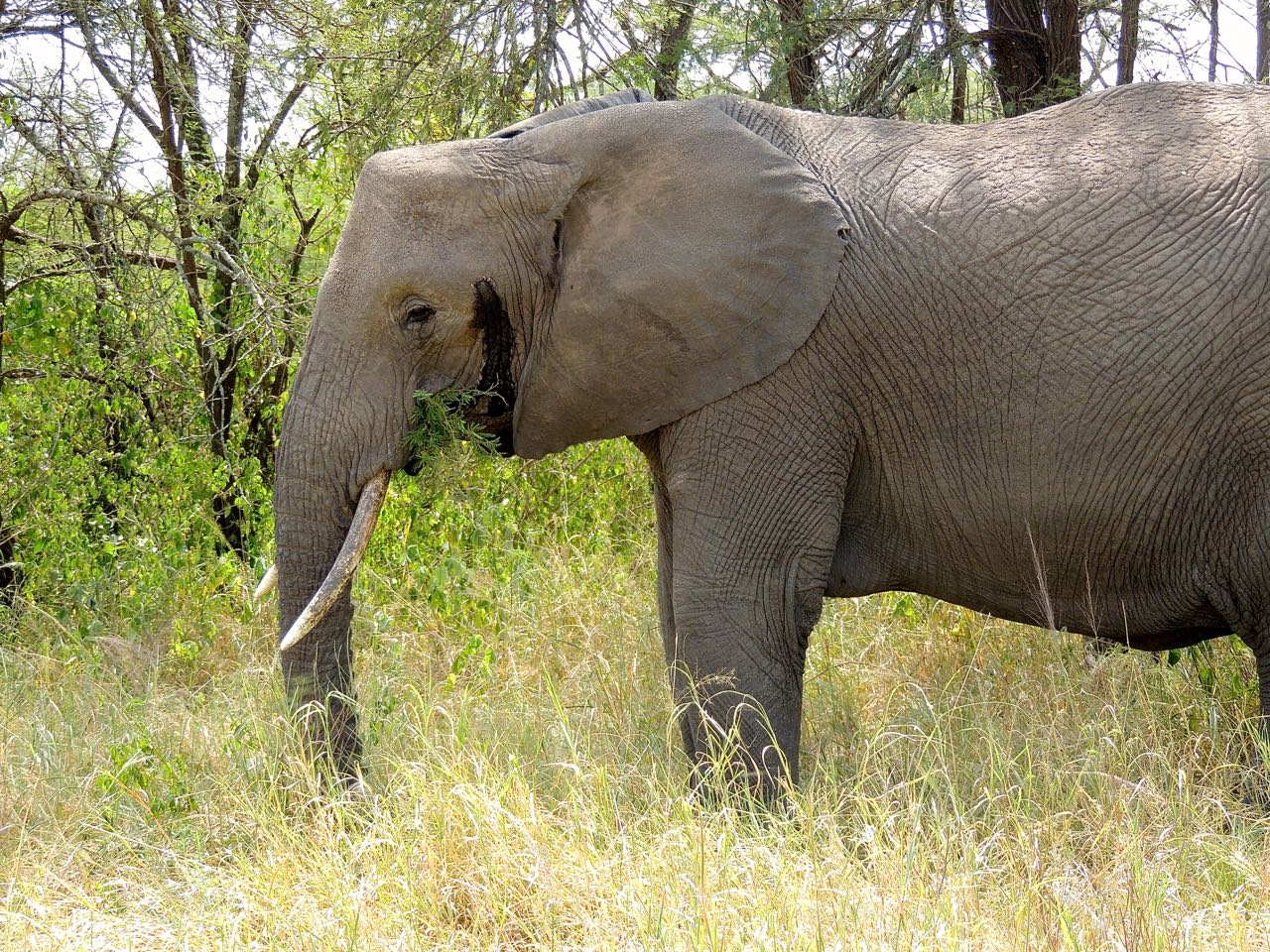 African Bush Elephant - Photo by William Young
African Bush Elephant - Photo by William Young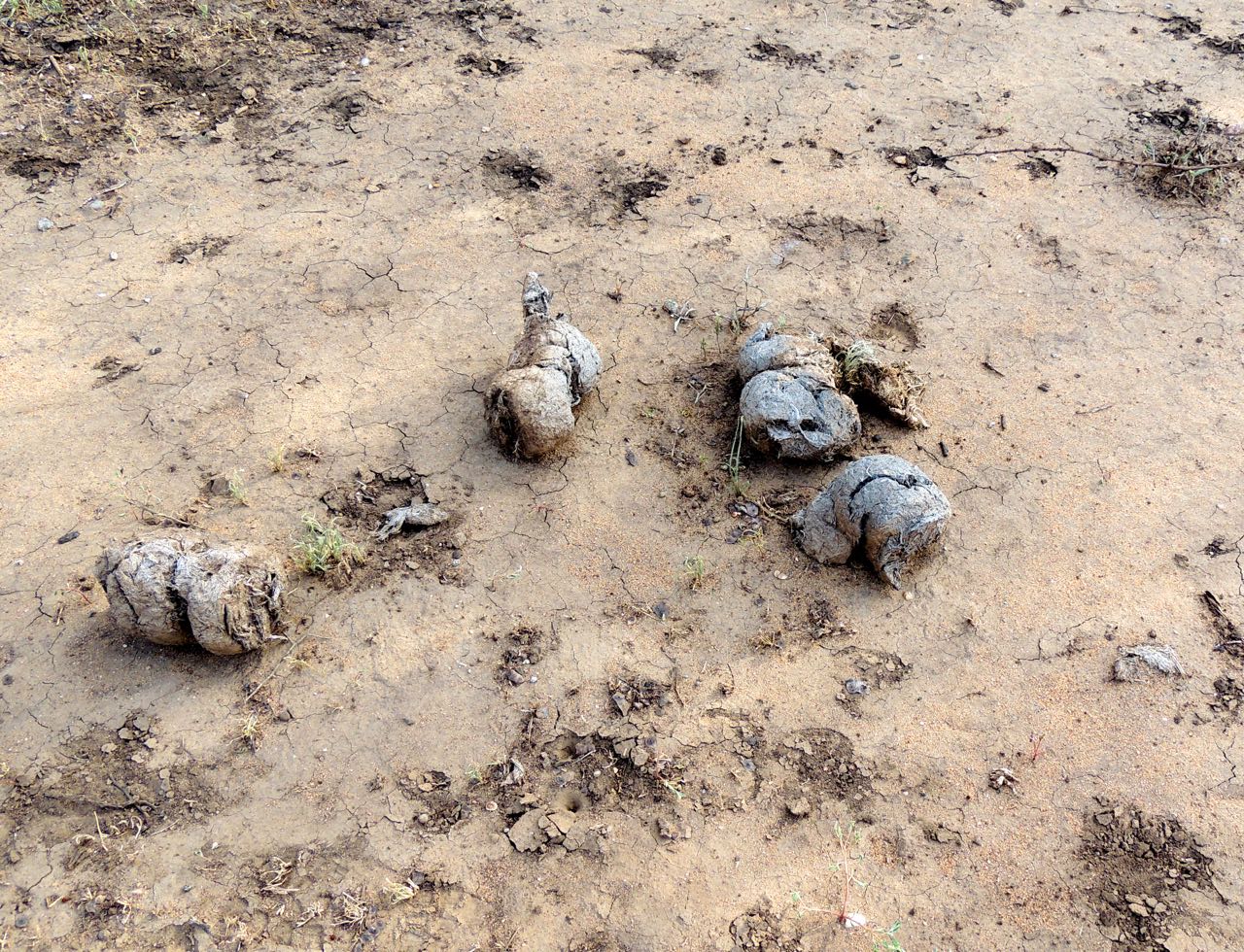 African Bush Elephant Dung - Photo by William Young
African Bush Elephant Dung - Photo by William Young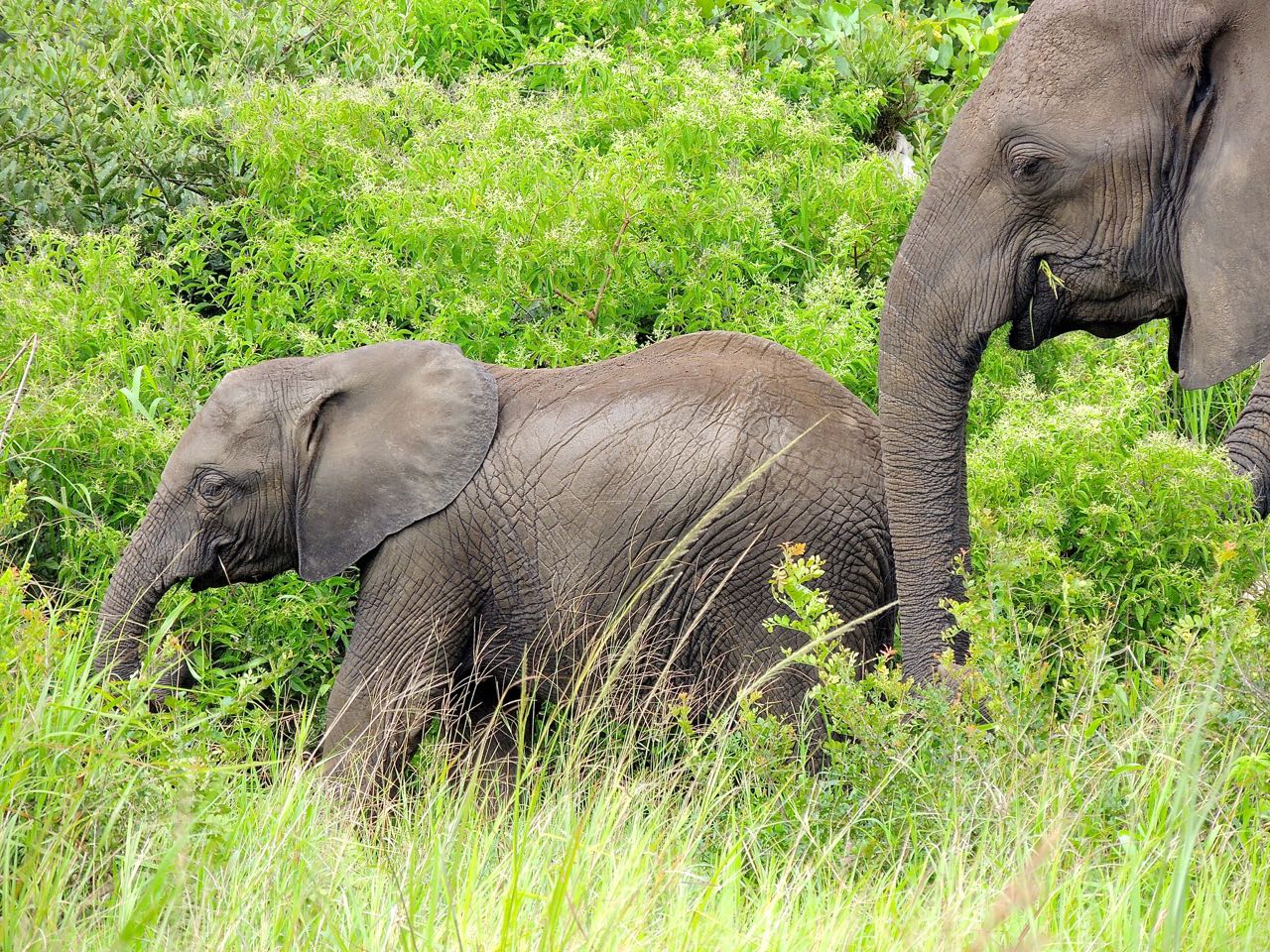 African Bush Elephants - Photo by William Young
African Bush Elephants - Photo by William Young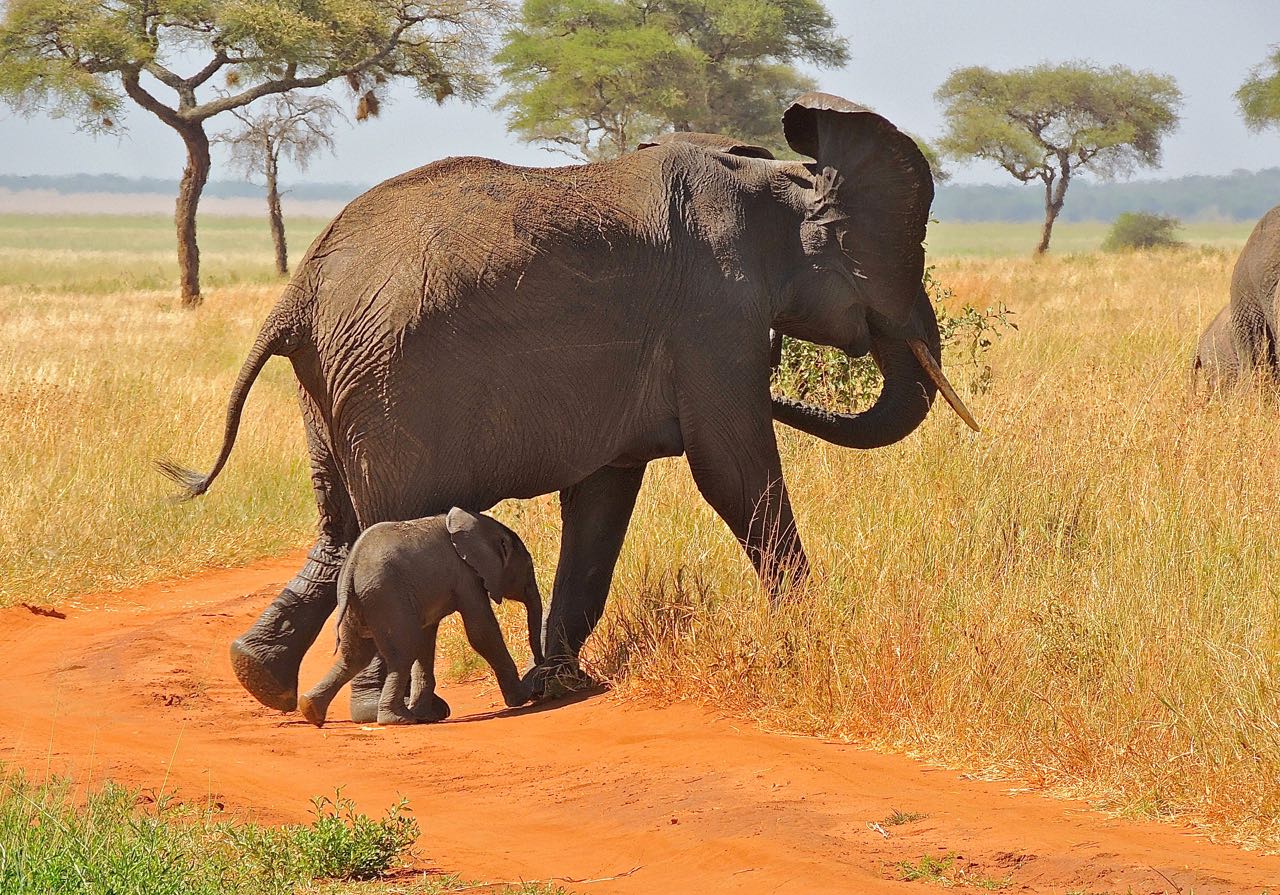 African Bush Elephants - Photo by William Young
African Bush Elephants - Photo by William YoungAt Mikumi, the last large animal we saw on our final visit to the park on the final full day of our trip was a large bull elephant leaning against a tree. He had large tusks, and he looked tired. I took a photo of him, and I'm glad he was my final image of a mammal on a visit to one of Tanzania's parks.
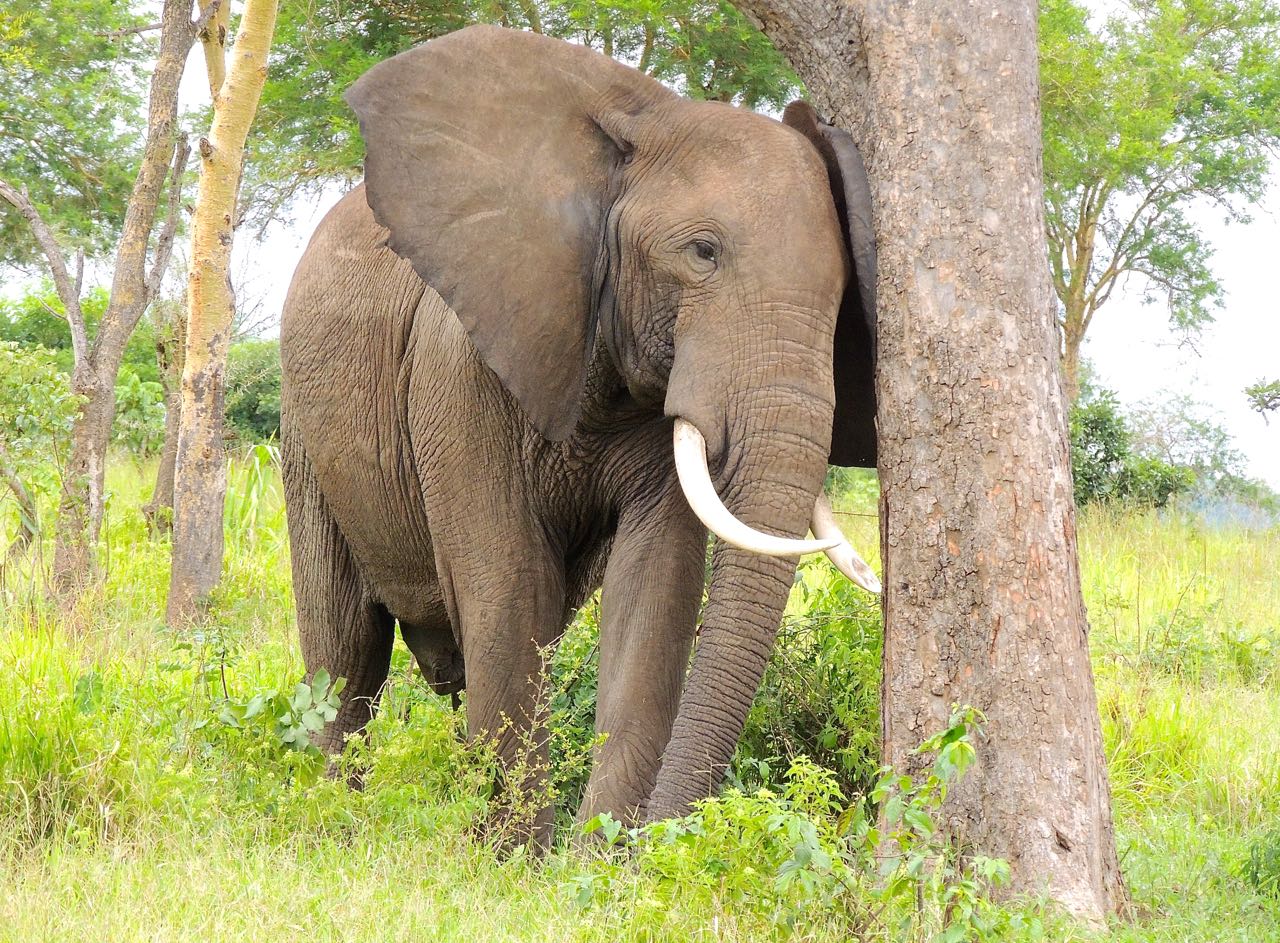 African Bush Elephant - Photo by William Young
African Bush Elephant - Photo by William Young
PrimatesWe saw 8 species of primates in Eastern Tanzania. One was a Senegal Lesser Galago on a night drive from the Naitola campsite. It is small and gray, with a black tail. It looks like a lemur. These animals are sometimes called bushbabies, and some of their vocalizations sound like a crying baby.
We saw a lot of baboons in many places. Adult baboons have a harsh demeanor, whereas young baboons look like Curious George. The adults look sneaky and opportunistic, and they make a wonderful variety of sounds. We sometimes saw large groups feeding by the side of the road. They seemed apprehensive of vehicles, but not terrified. They generally moved farther away from the road or climbed to higher places in the trees.
The first mammals we saw were Olive Baboons near the registration area at Serengeti National Park. We saw a large group walking by. They walk on all fours, taking what look like slow, confident strides. Some of the females carried babies, and others had red rumps. The males are much larger and have a lot more fur, especially around the head. We saw more than a thousand Olive Baboons on eight days. Some make wonderful and varied vocalizations.
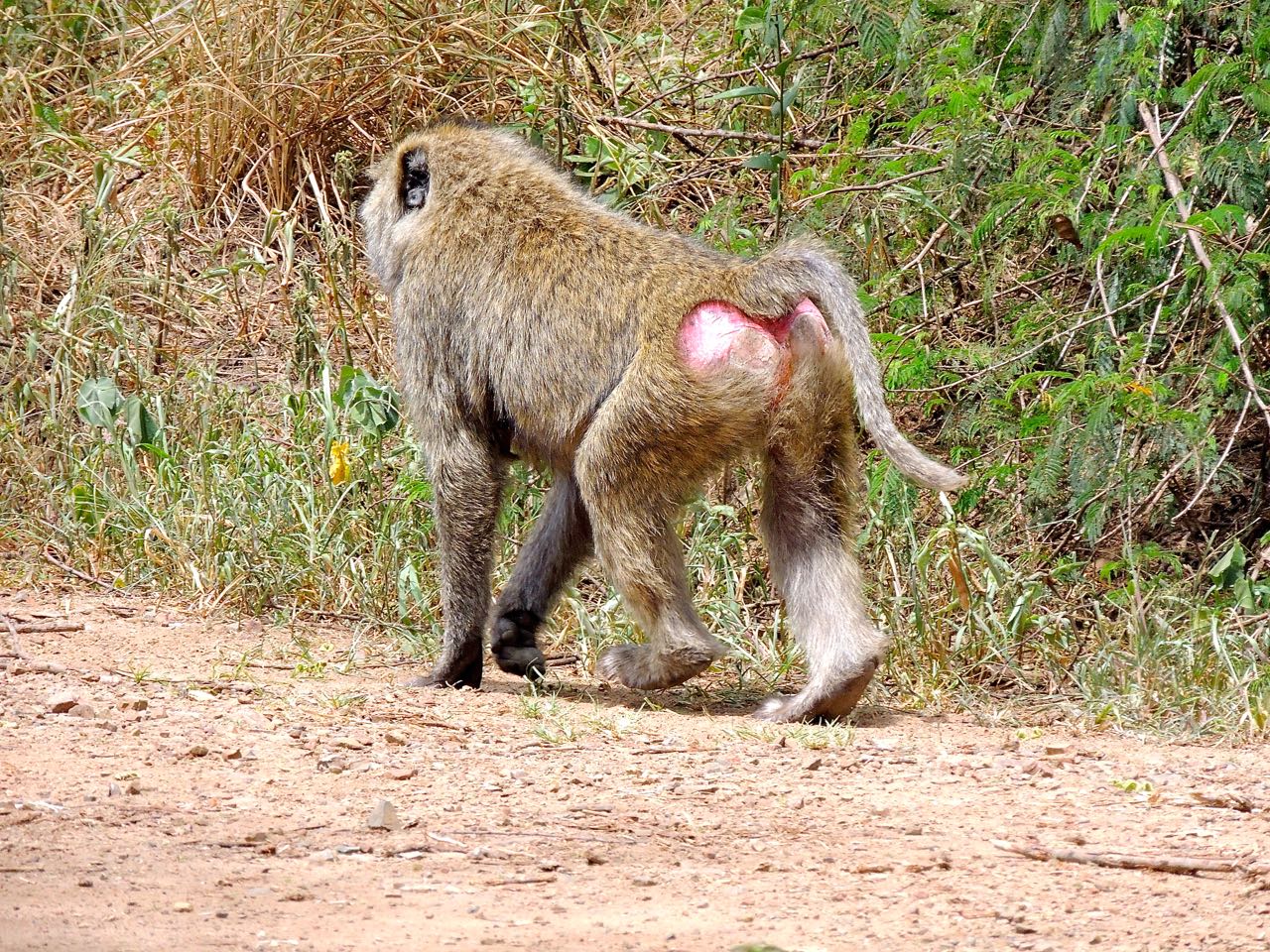 Olive Baboon - Photo by William Young
Olive Baboon - Photo by William YoungThe Hondo Hondo campsite had a colony of about 60 Yellow Baboons. They seem long-limbed compared with the Olive Baboons, with whom they sometimes interbreed where the ranges overlap. With the exception of the group at Hondo Hondo, we saw only from one-to-three Yellow Baboons in other places. They don't seem to travel in as large groups as the Olive Baboons do. I saw one gently crouching by the side of the road to drink from a puddle. For the trip, we saw 78 Yellow Baboons on five days, and we did not see any until the final week of the trip. A lot of the Hondo Hondo Baboons gathered in the early afternoon in the area in front of where we dined. Mothers were suckling and carrying young. Some young hang on upside down to the underside of the mother when she is walking, while others ride on top. I saw a female grooming a male. The young sometimes play together, chasing each other. They could see me and did not act alarmed by my presence, but they never let me get too close.
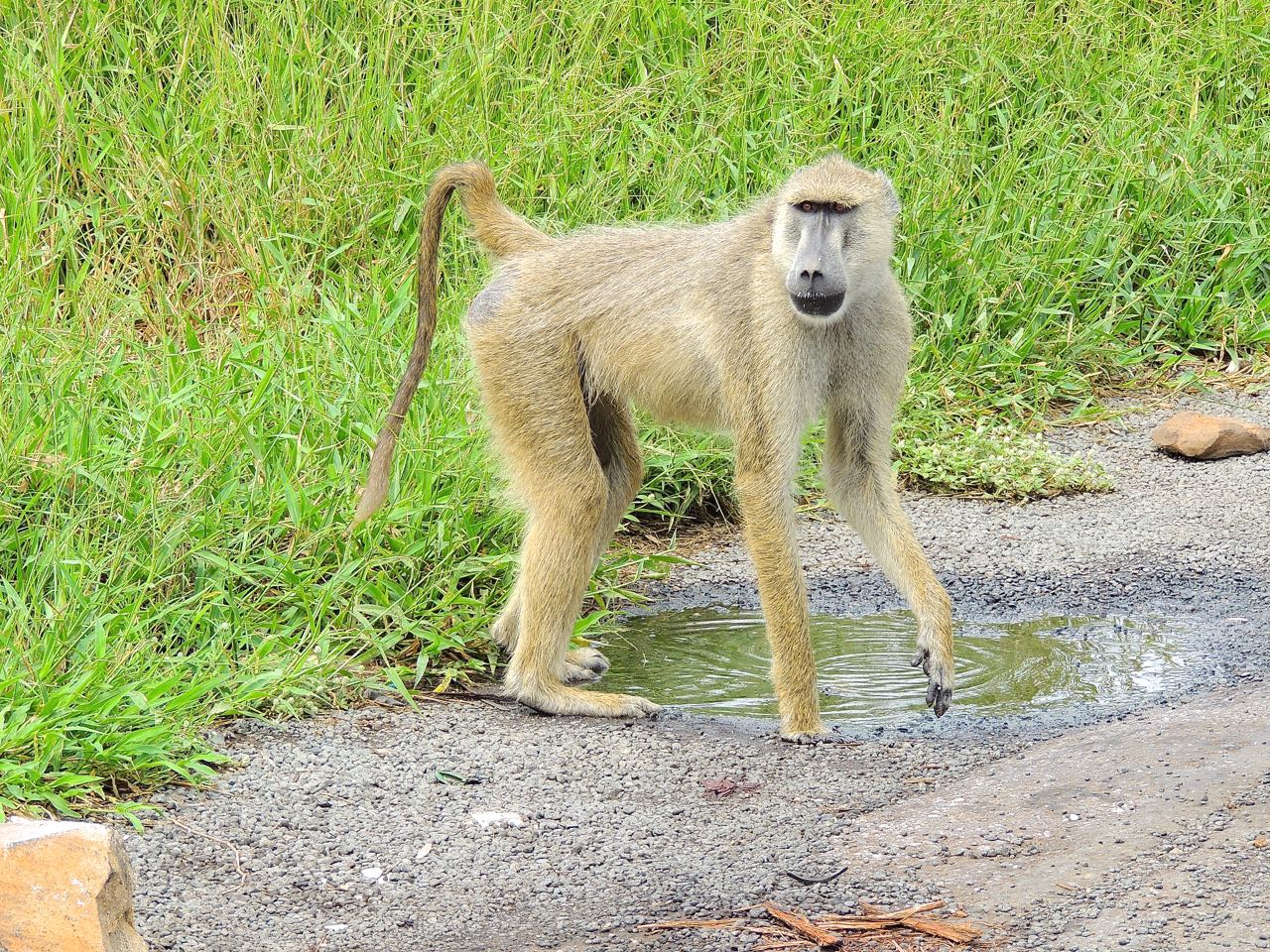 Yellow Baboon - Photo by William Young
Yellow Baboon - Photo by William Young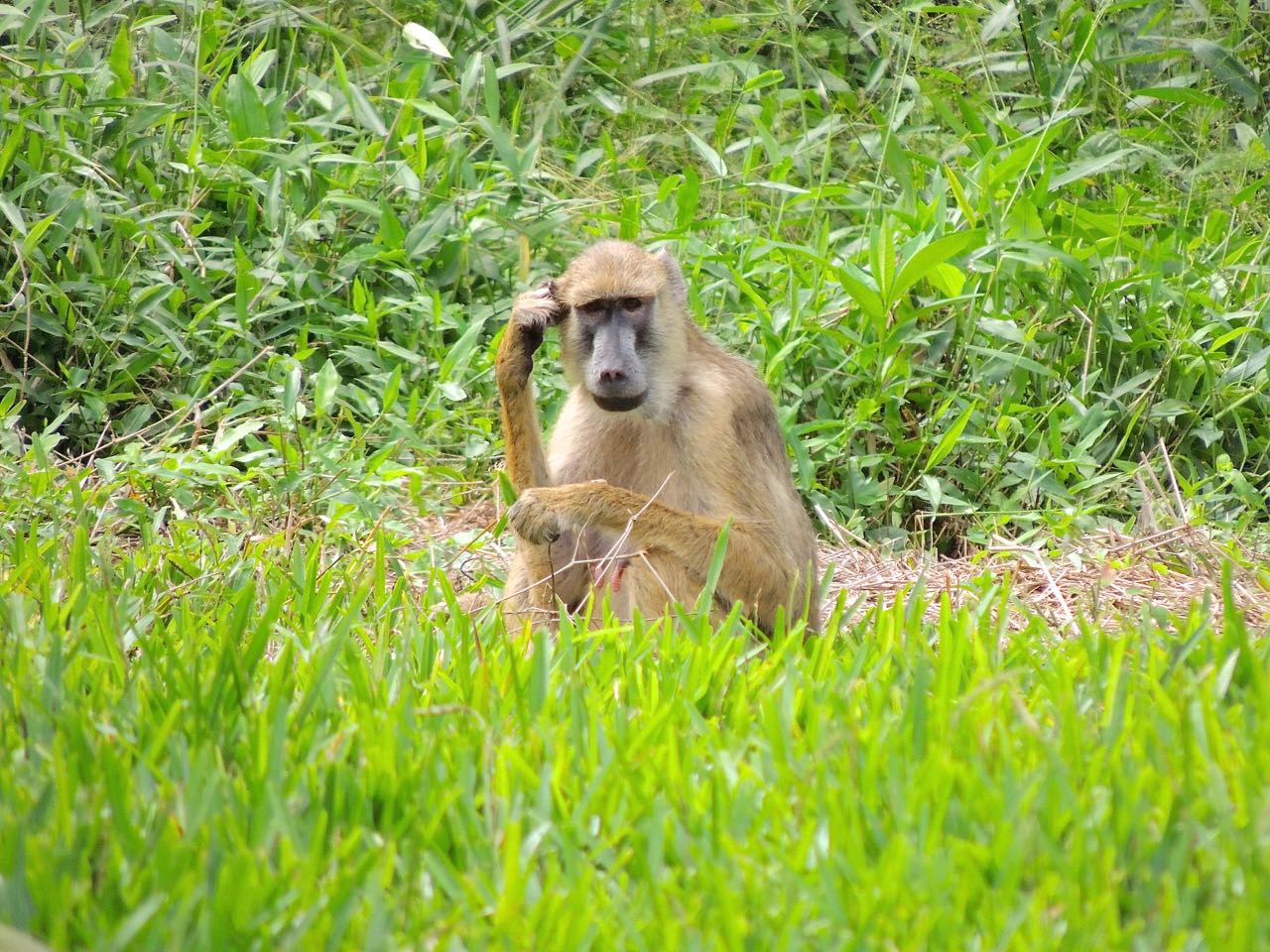 Yellow Baboon - Photo by William Young
Yellow Baboon - Photo by William Young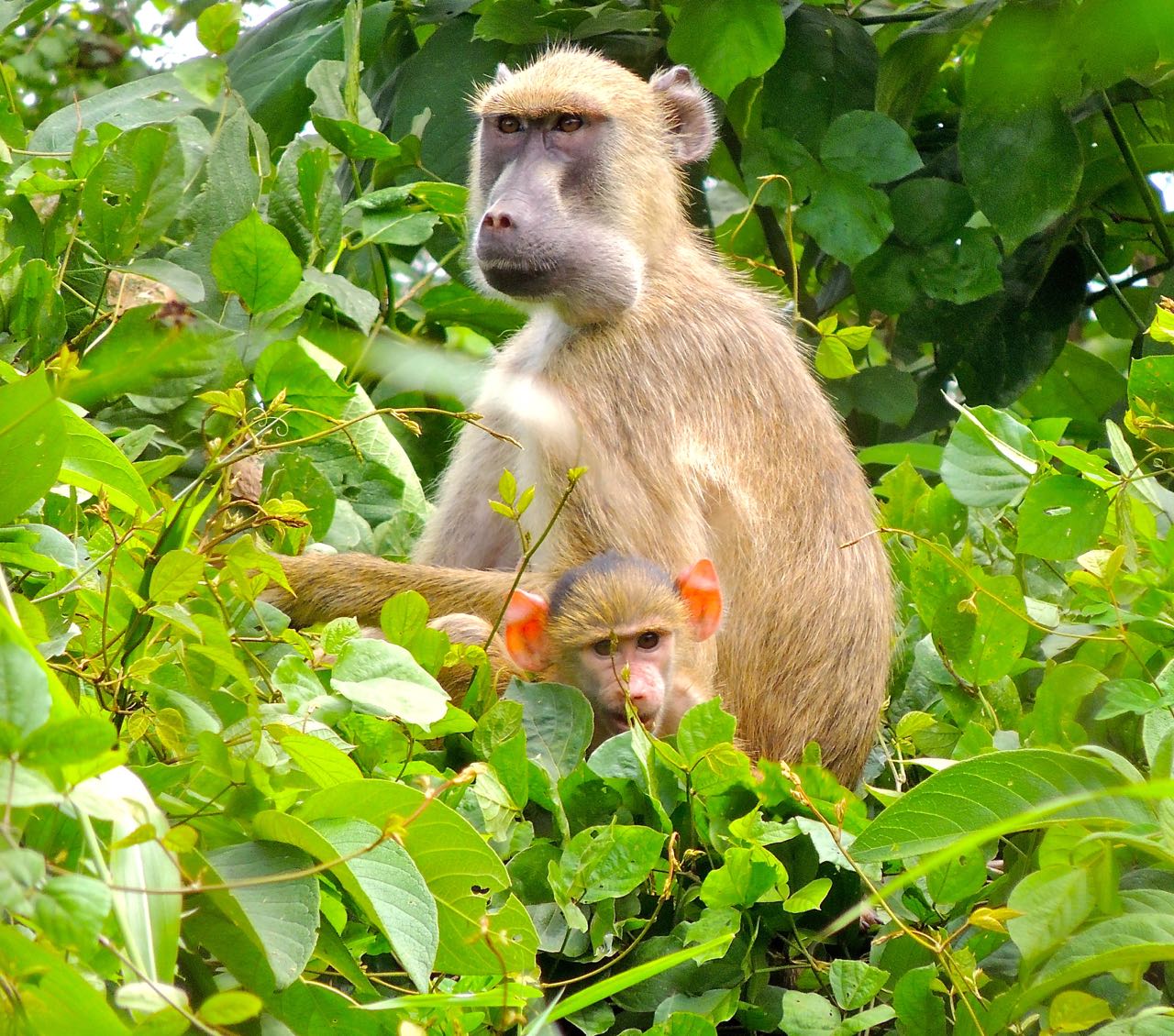 Yellow Baboon Female and Young - Photo by William Young
Yellow Baboon Female and Young - Photo by William Young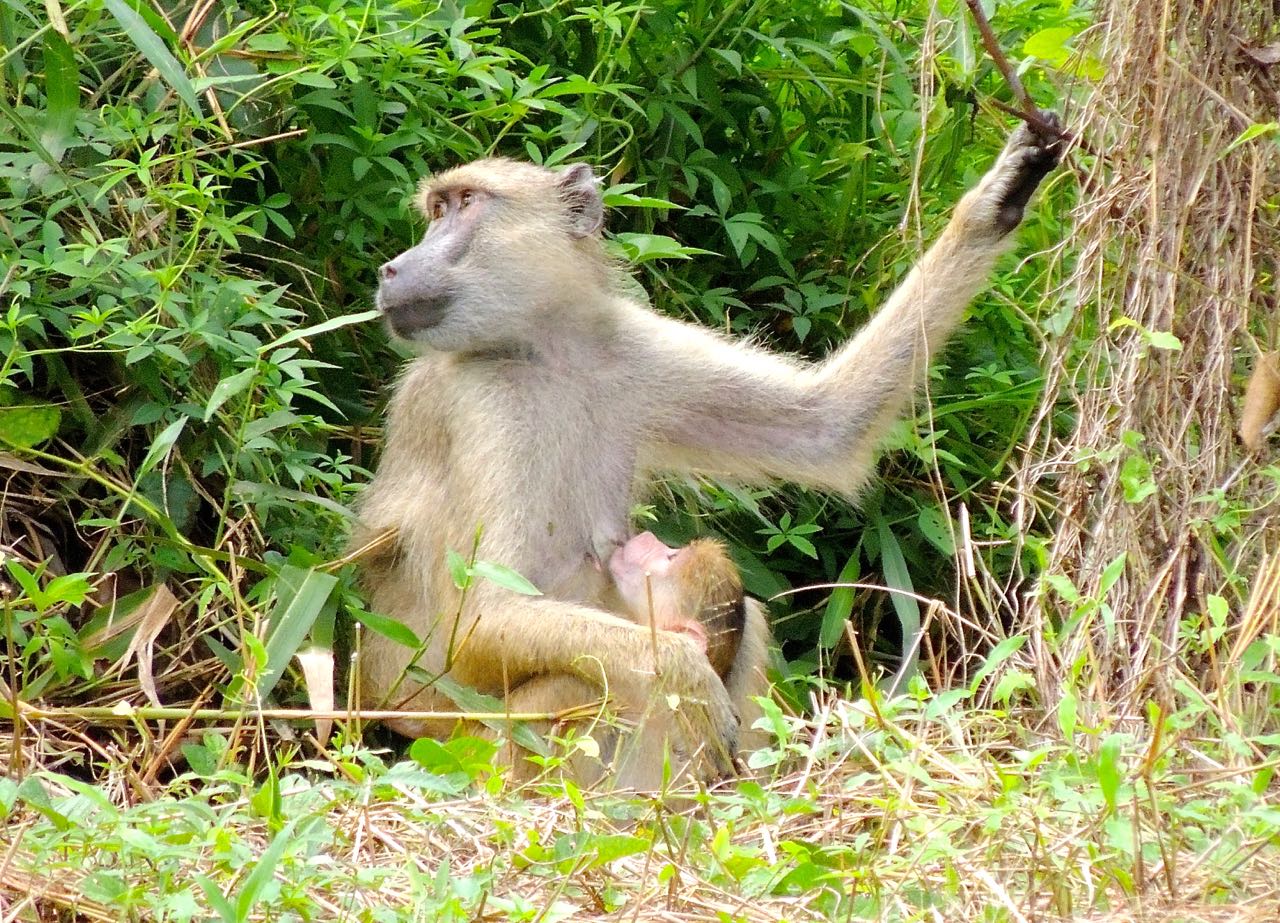 Yellow Baboon Female and Young - Photo by William Young
Yellow Baboon Female and Young - Photo by William Young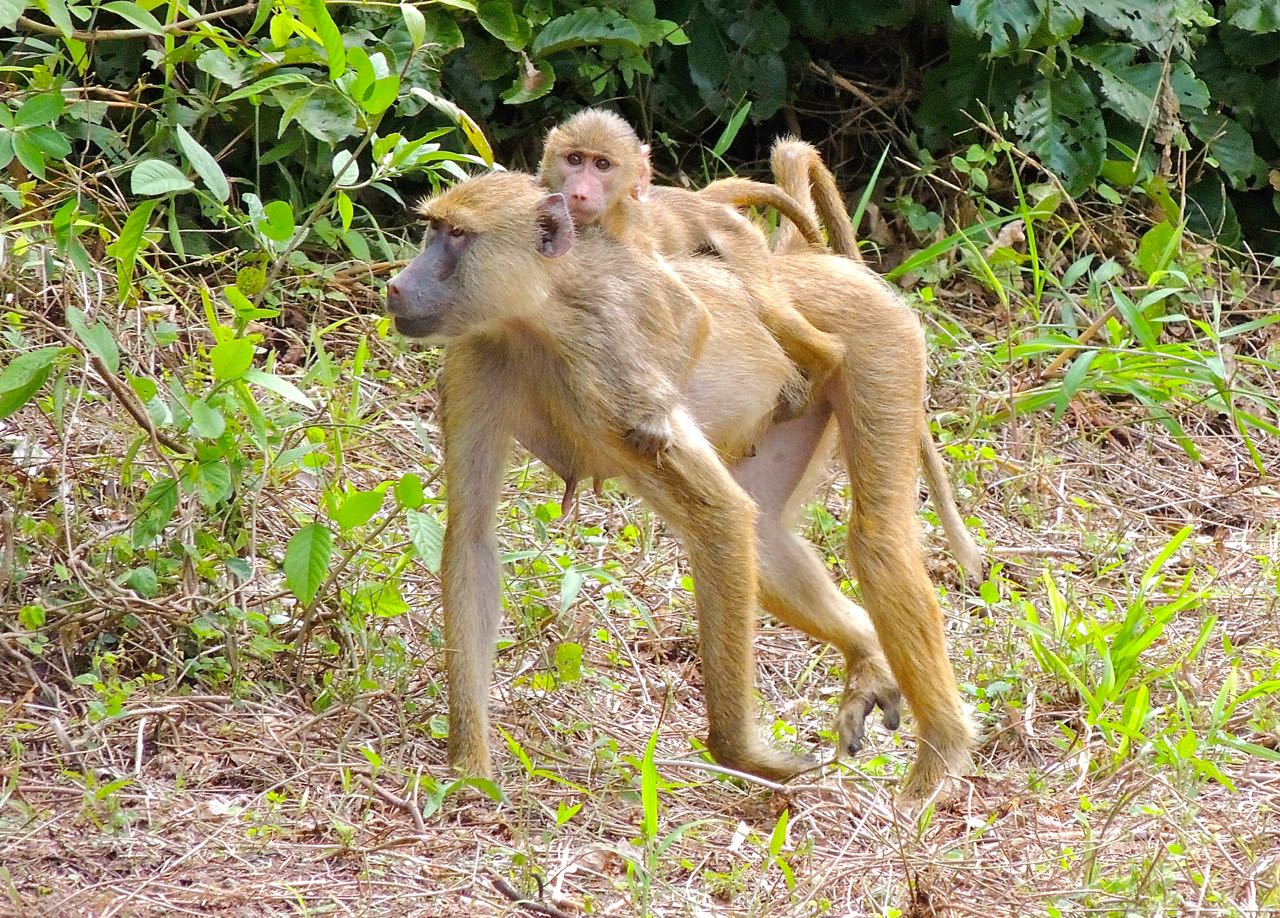 Yellow Baboon Female and Young - Photo by William Young
Yellow Baboon Female and Young - Photo by William Young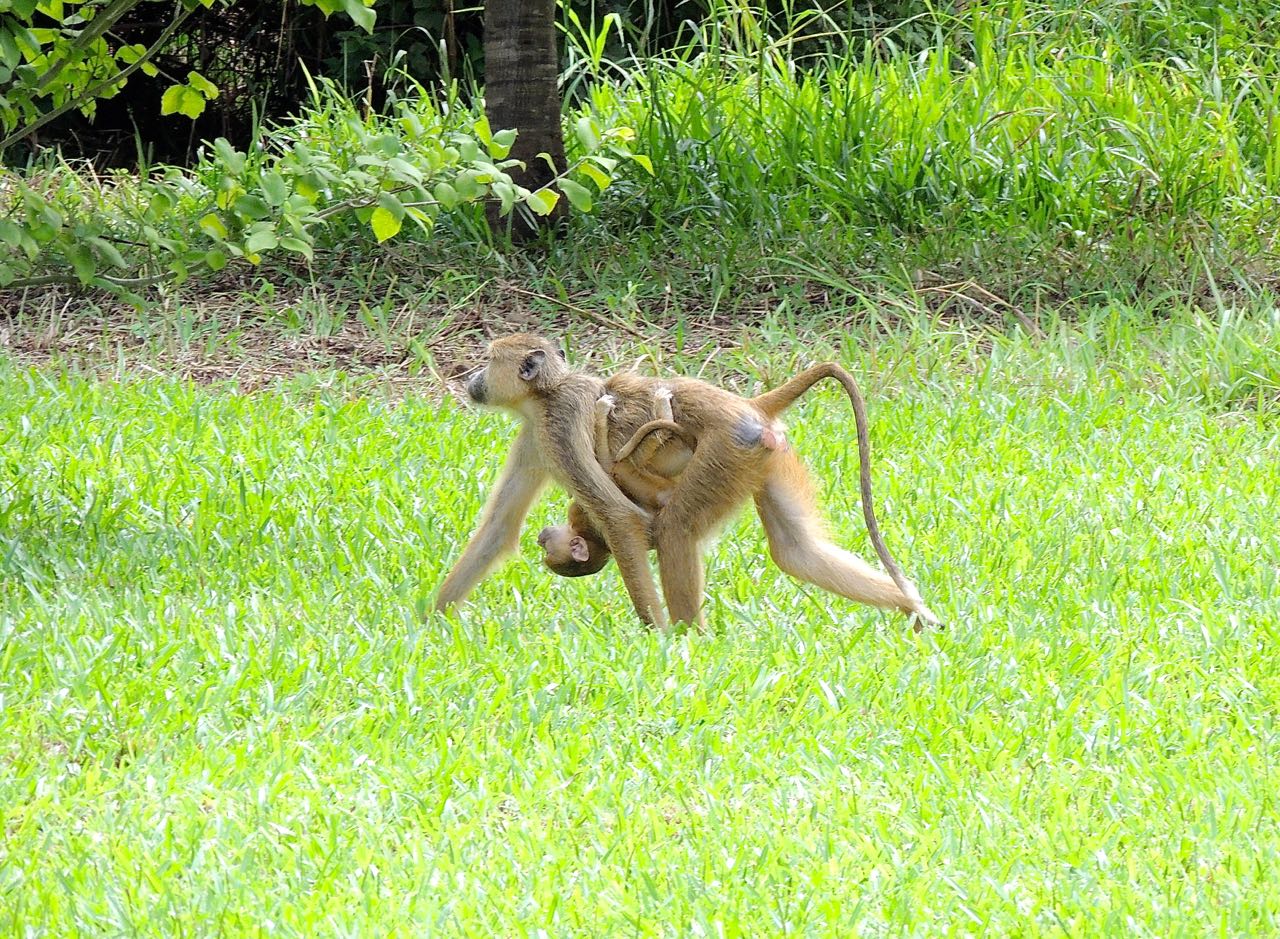 Yellow Baboon Female and Young - Photo by William Young
Yellow Baboon Female and Young - Photo by William Young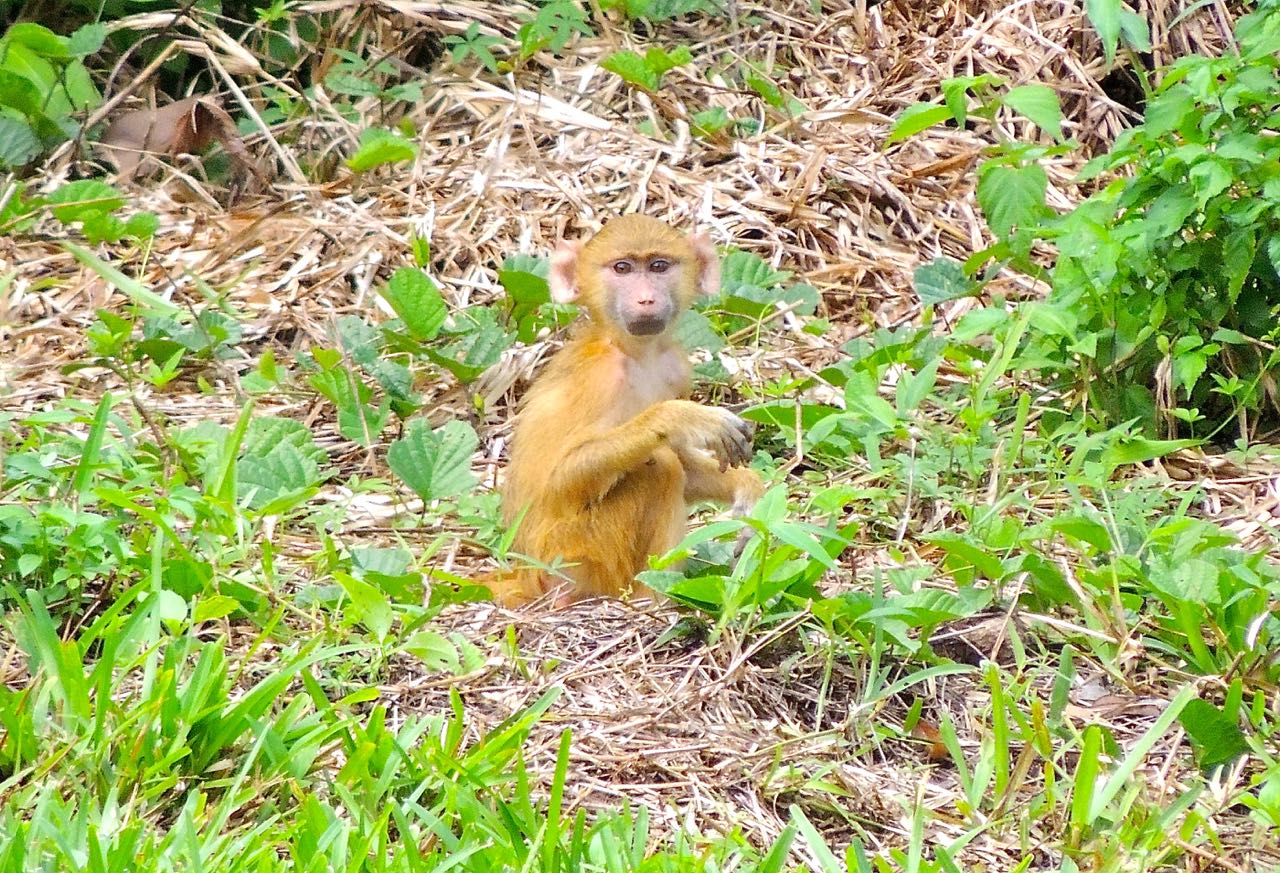 Young Yellow Baboon - Photo by William Young
Young Yellow Baboon - Photo by William Young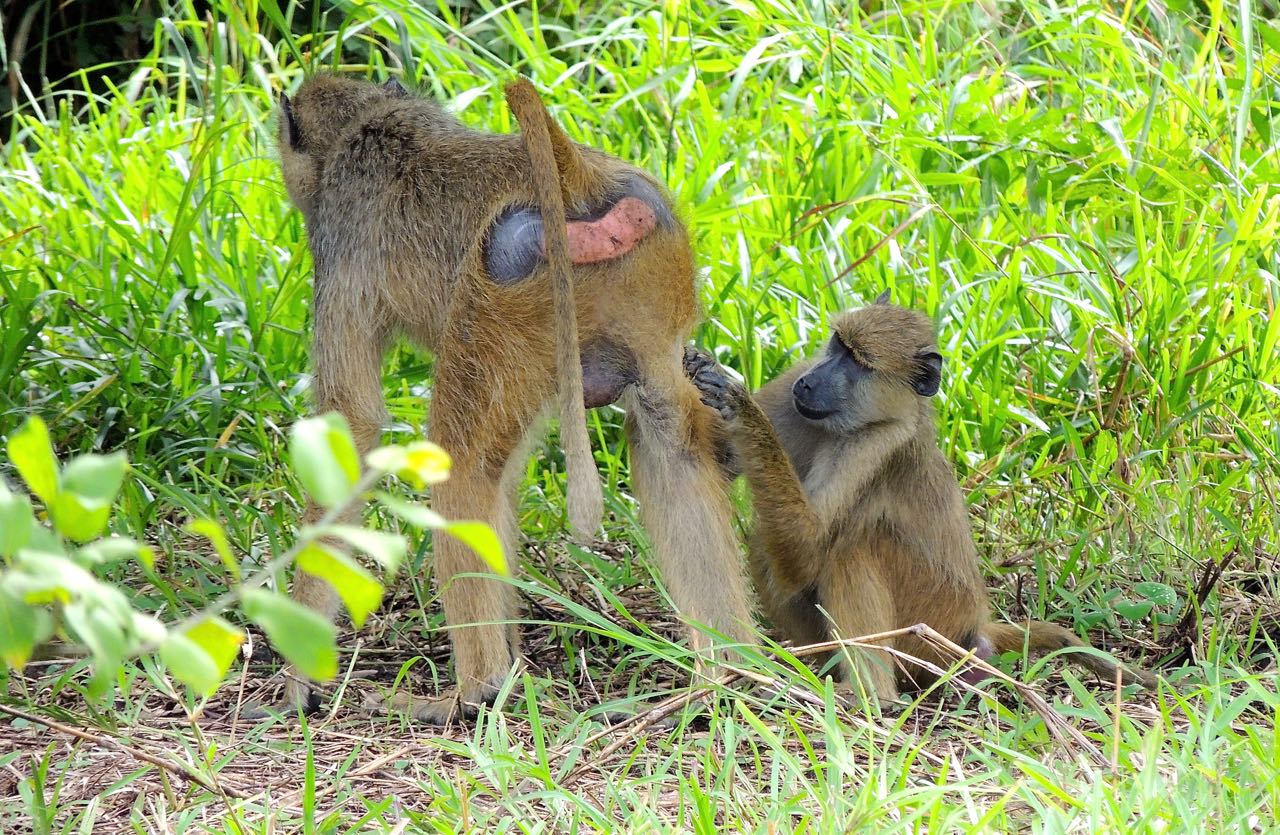 Yellow Baboon Male and Female - Photo by William Young
Yellow Baboon Male and Female - Photo by William YoungOn the road outside the visitors center at the park at Udzungwa, we saw 20 Udzungwa Red Colobuses in a tree. They have a semicircle of red fur that stretches from ear-to-ear, and their black faces look almost human. Their fur is mostly gray on the back, white underneath, and they have a long, gray tail. The red fur around the head abuts the white fur around the face, creating the impression that the red part has been dyed at a hair salon. This species is endemic to Udzungwa, and the total population in 2009 was estimated at 25,000 and 35,000. They prefer altitudes between 1,000 and 2,300 feet. There is another endemic monkey in this area called the Sanje Mangabey, but we did not climb up to the area where we would have had the best opportunity to see it.
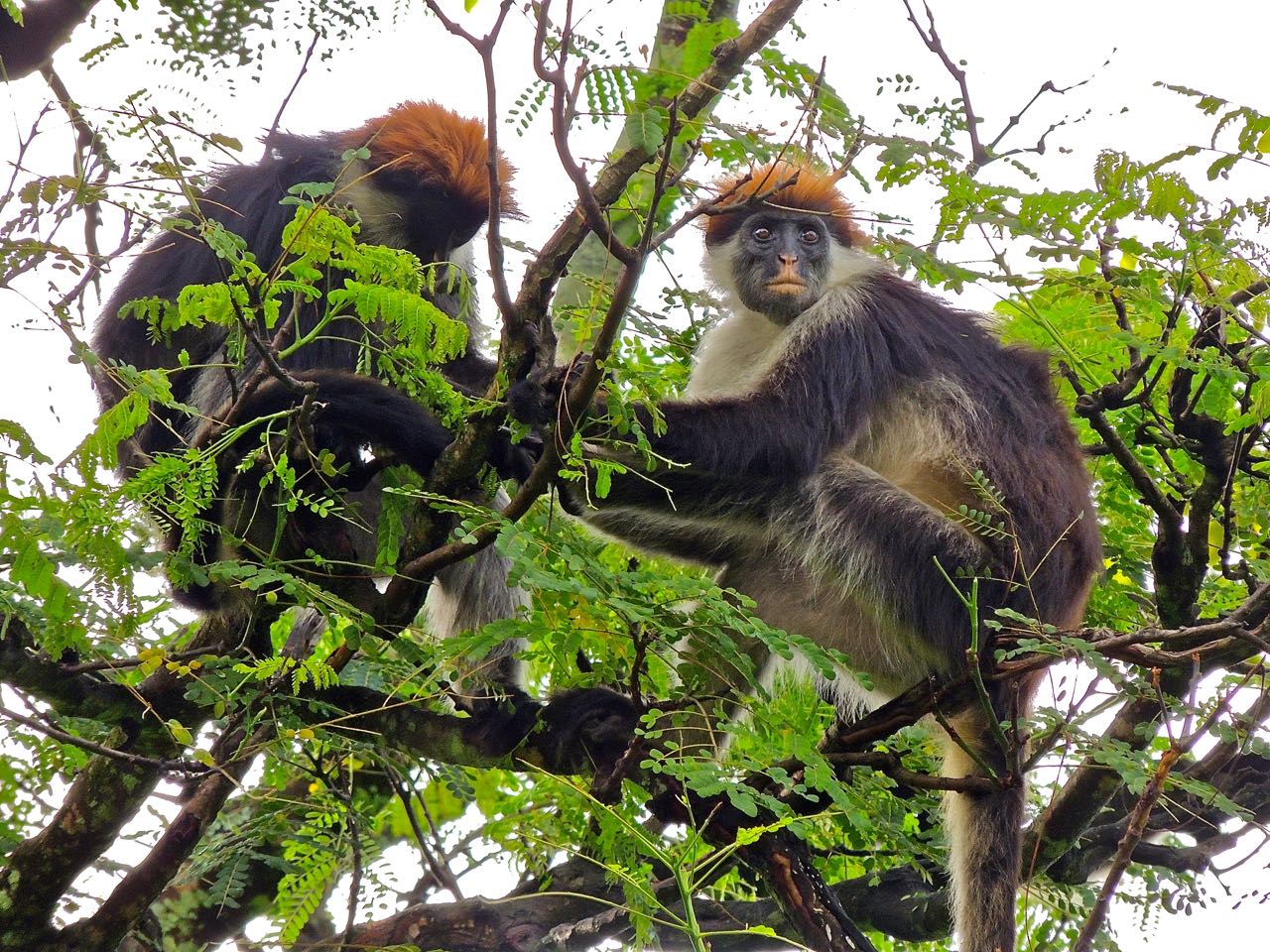 Udzungwa Red Colobuses - Photo by William Young
Udzungwa Red Colobuses - Photo by William YoungTwo of the colobus monkeys are black-and-white. At Amani, we saw 25 Angola Black-and-white Colobuses. They are mostly black, with white around the face, on the shoulders, and near the tail. The fur on these monkeys seems to grow long. Much more attractive were the Guereza Black-and-white Colobuses. They do not have as much white around the face, but their long tail covered in long white fur makes them look stunning. We saw a dozen in a tree not far from our Momela campsite at Arusha, and we also heard their loud howling. When they move quickly, they look like giant skunks. We saw 77 Vervet Monkeys on 6 days, with more than half in Serengeti National Park. They are small tan-and-gray monkeys, with a black face bordered in white. The tail is long and thin. My field guide said that the male has a turquoise scrotum, but I did not see this on any of the males we observed. When we had lunch at Lake Manyara, Vervet Monkeys lurked in areas within sight of the tables. As soon as we finished, a monkey went to our table looking for scraps.
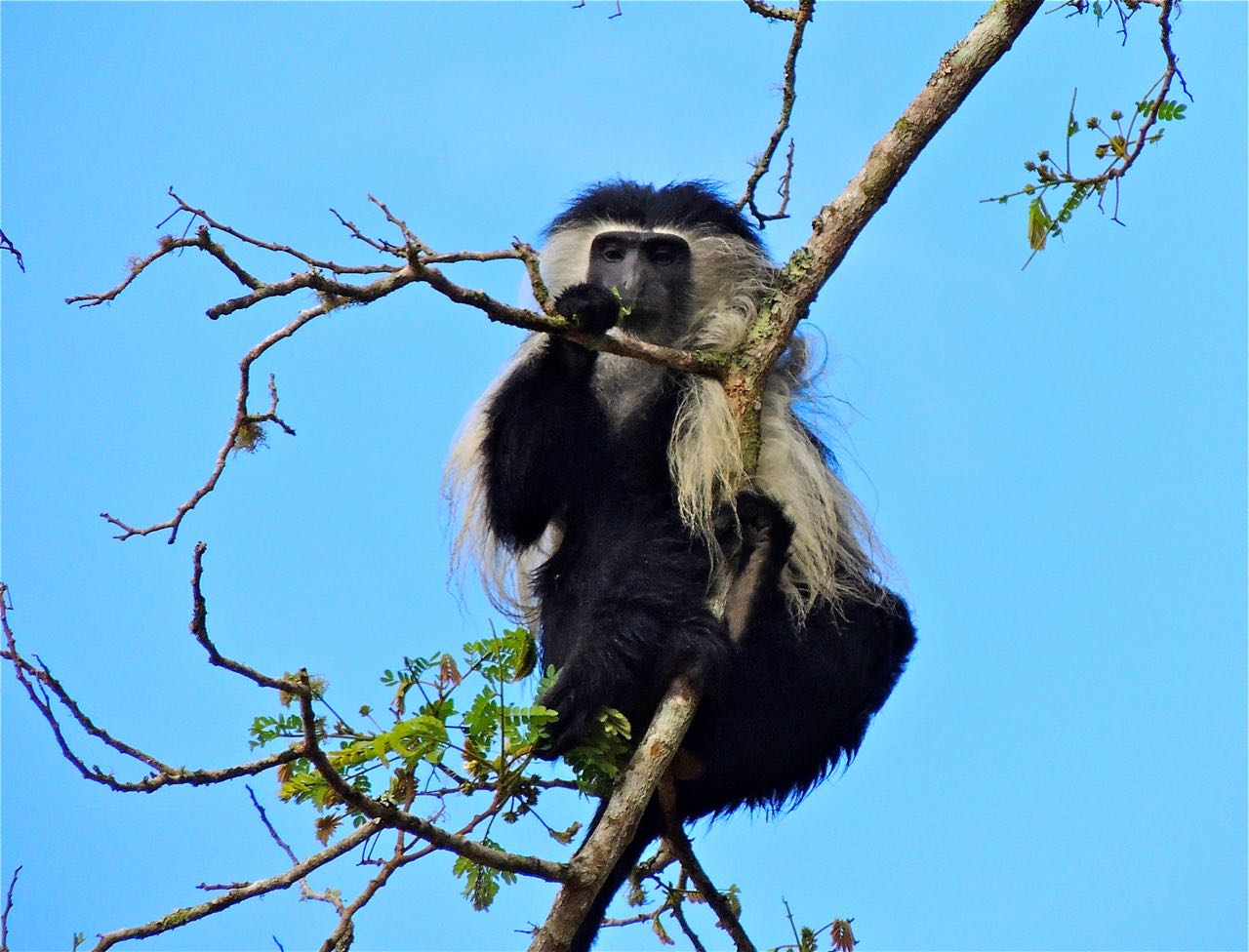 Angola Black-and-white Colobus - Photo by William Young
Angola Black-and-white Colobus - Photo by William Young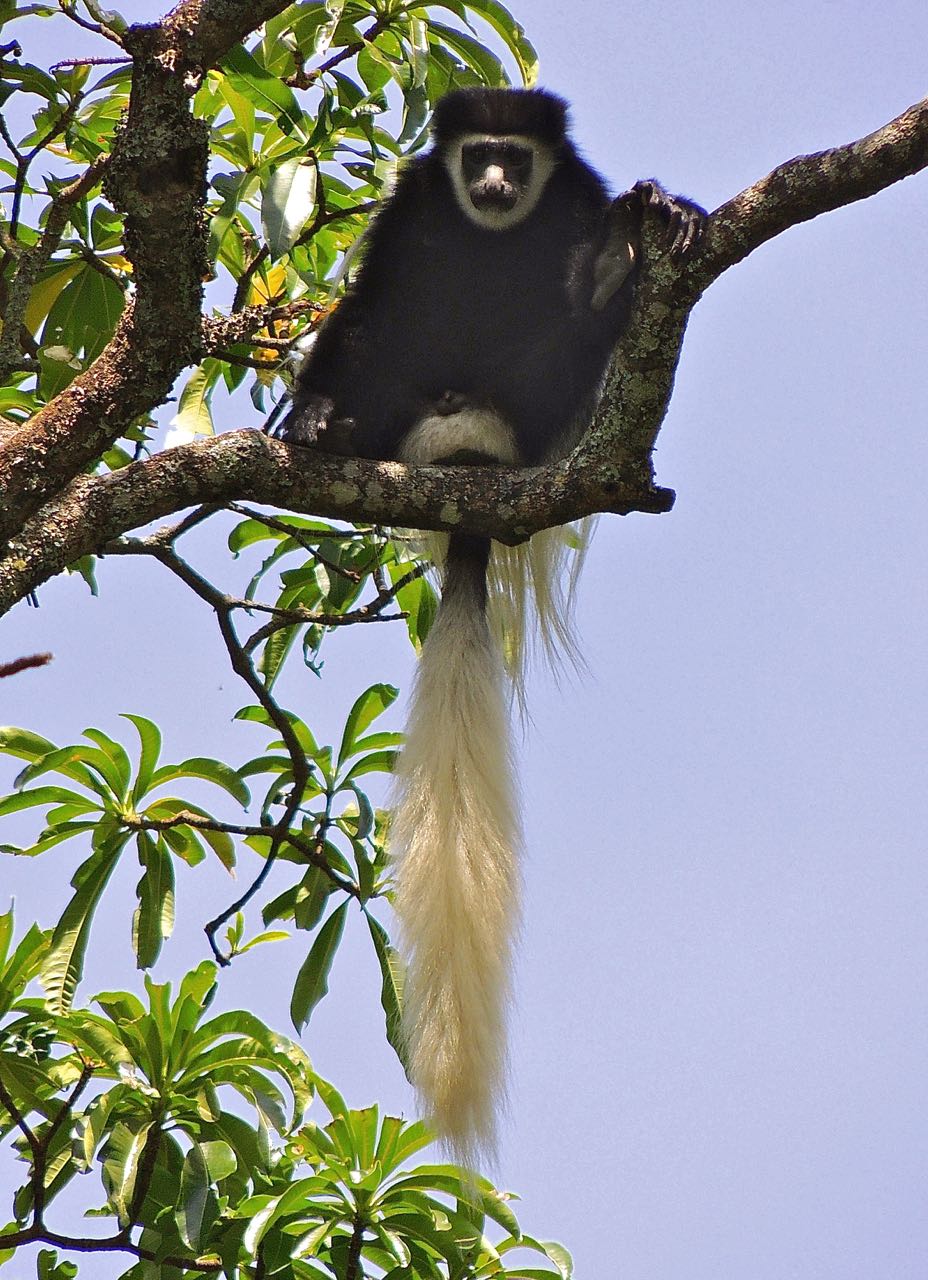 Guereza Black-and-white Colobus - Photo by William Young
Guereza Black-and-white Colobus - Photo by William Young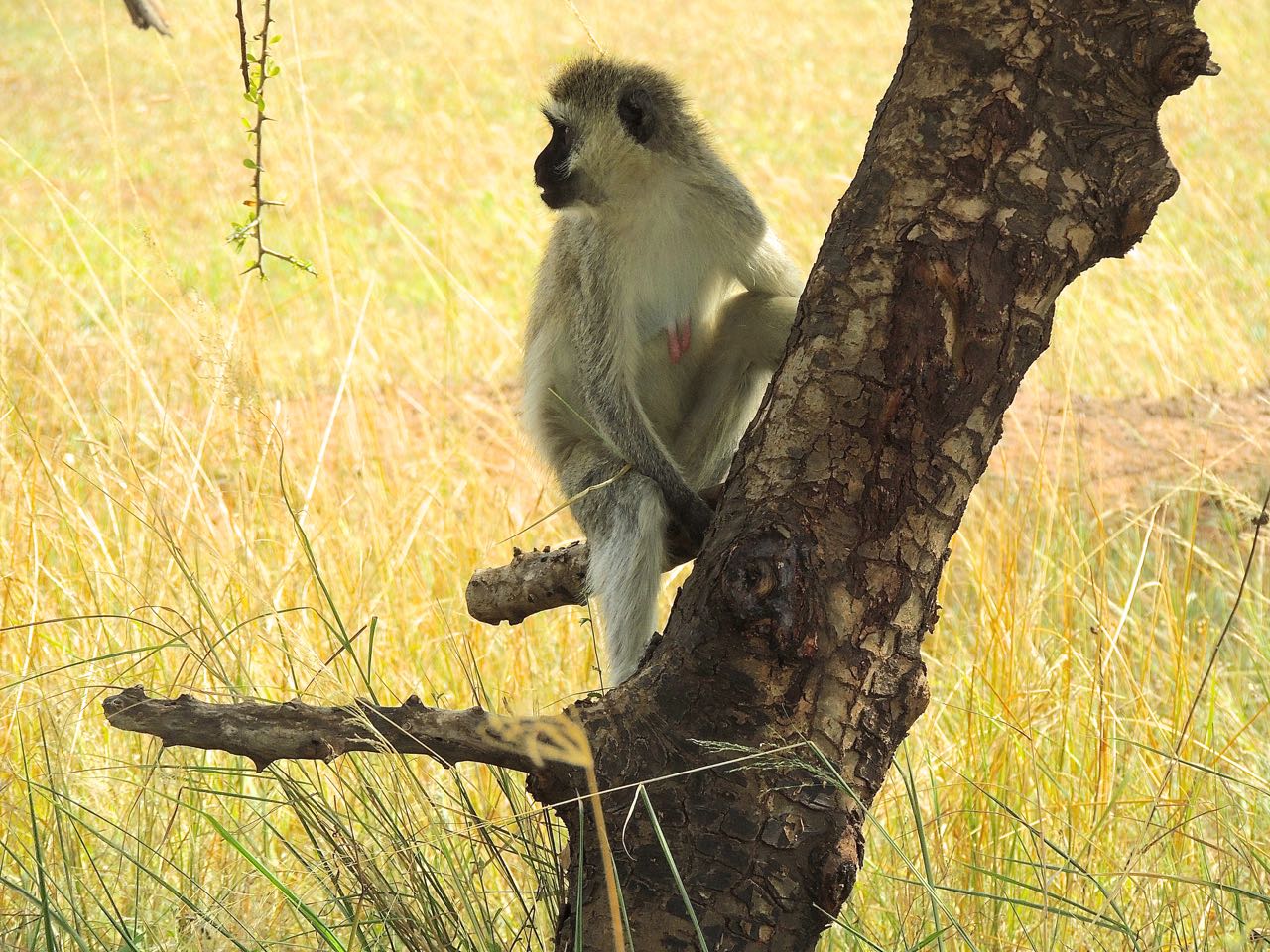 Vervet Monkey Female - Photo by William Young
Vervet Monkey Female - Photo by William YoungOne of my favorite primates was the Mitis Monkey, who is also known as a Blue Monkey, Sykes's Monkey, and Gentle Monkey. It is medium-sized, with a long thin tail. It has orange eyes and a single arcing grey brow going from ear to ear. It is mostly dark bluish-gray, but it has a lot of grizzled gray fur on the back and front. The grizzled fur on its cheeks gives the expressive face an hourglass shape, and the single eyebrow makes the monkey look wary and skeptical. It has white fur on the chin that looks like a goatee. I was able to take a photo of a Mitis Monkey with its left paw over its mouth as if it had just said something it realized it should not have.
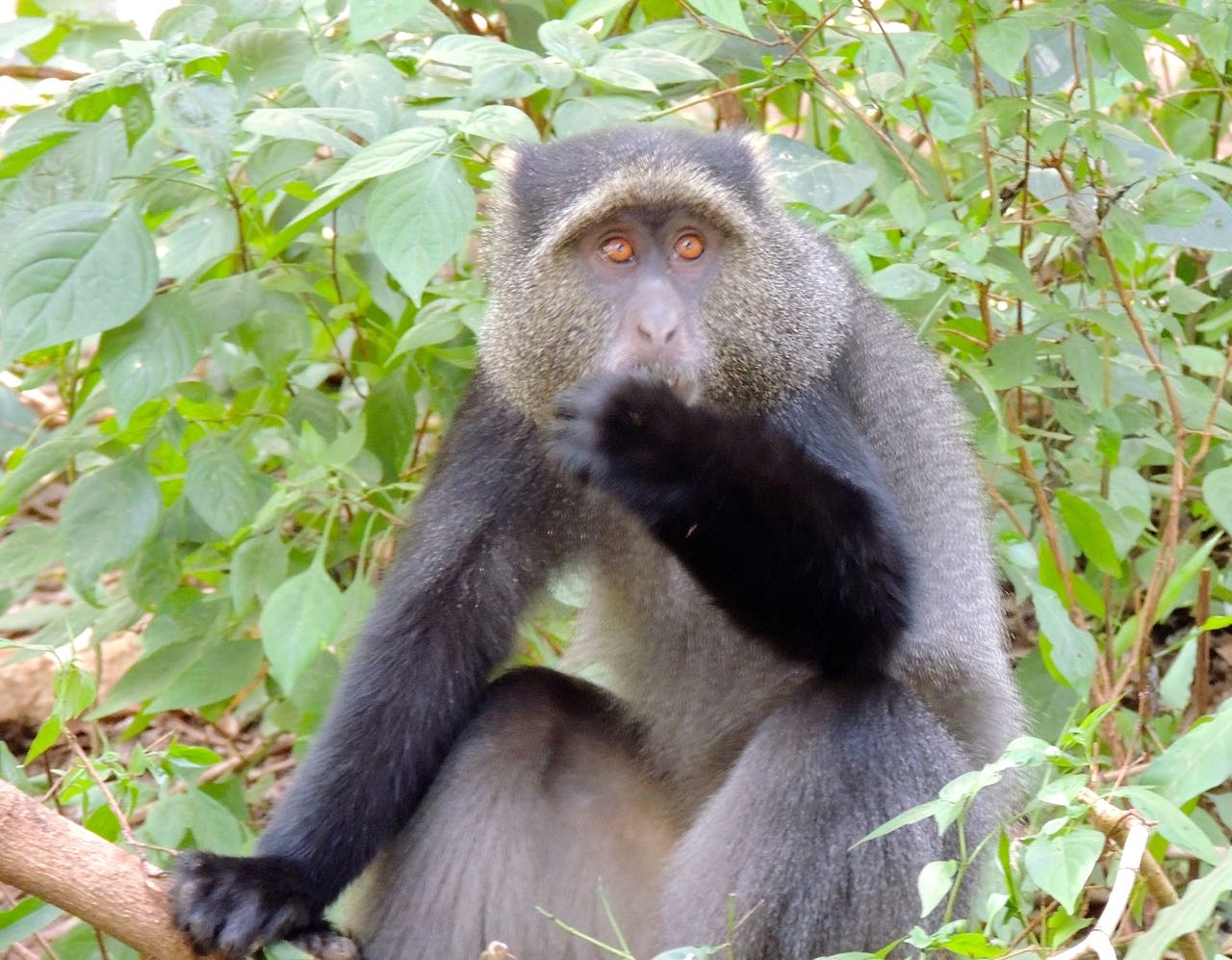 Mitis Monkey - Photo by William Young
Mitis Monkey - Photo by William Young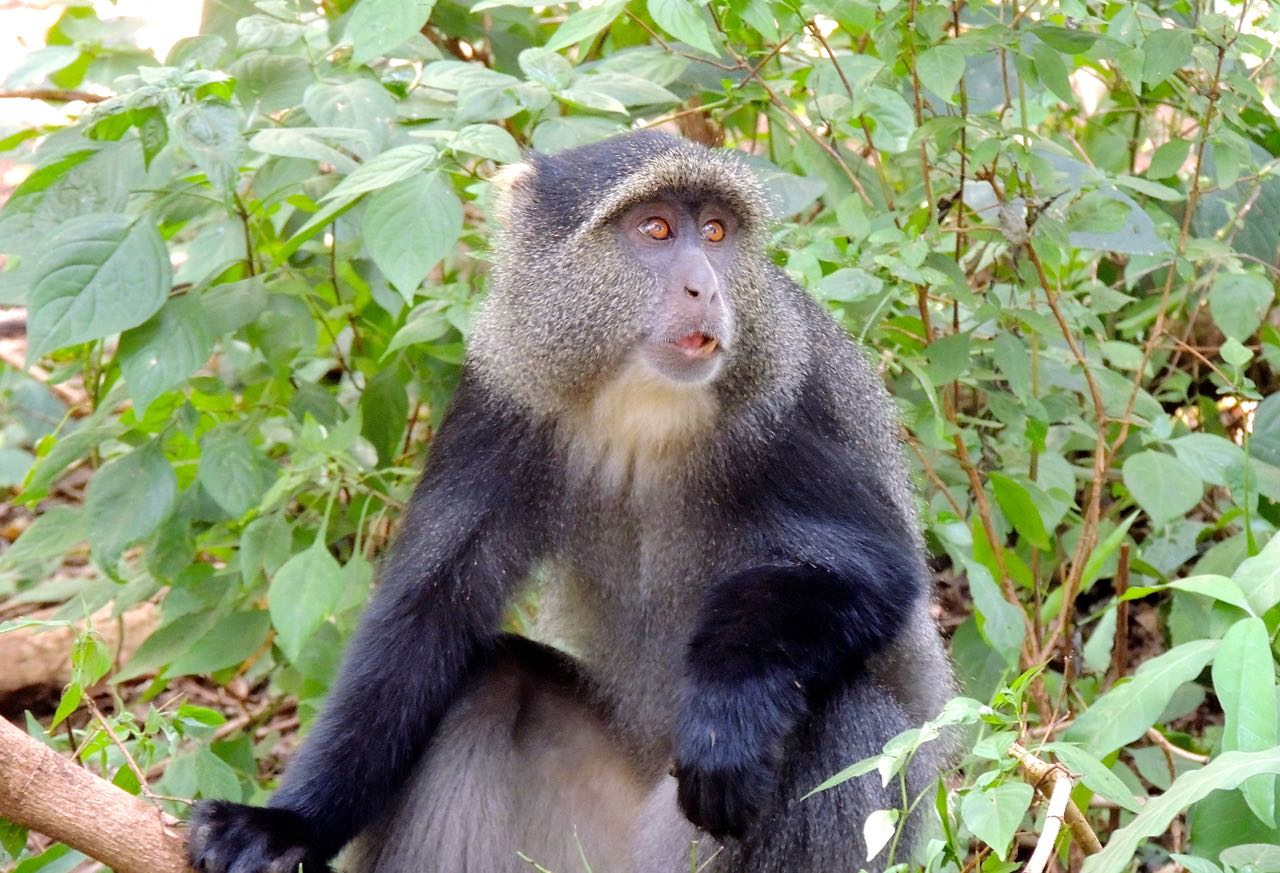 Mitis Monkey - Photo by William Young
Mitis Monkey - Photo by William YoungThe only Chimpanzees in Tanzania are in the western part in places such as Gombe, where Jane Goodall did her pioneering research.
HareWe saw 13 African Savanna Hares on five days. They look like brown rabbits with really big ears. We saw more than half of them one day when we explored the area near the Naitola campsite, including when we were spotlighting at night. They did not seem to move quickly.
CarnivoresBefore the trip, Martin had told me that he was not especially excited about seeing the big cats, because one usually sees them lying around and not doing anything. After seeing them for myself, I agree with him. We saw our only Leopard sleeping in a tree in Ndutu National Park. The head of an antelope was wedged slightly below. Leopards drag their kills up into trees so that other predators such as lions and hyenas will not steal them. This Leopard's front legs and tail hung straight down. The enormous paws each have four visible claws, which look like toes covered in leopard skin. The Leopard also has an additional claw on each front foot. Leopards are mostly nocturnal, and we were warned in a couple of places about going out at night. We did not see any on our night drive from Naitola, but we saw four Common Genets, who are related to civets. They are small, weighing only three-to-six pounds. They have spots on their body and rings around their long tail, which is an odd combination.
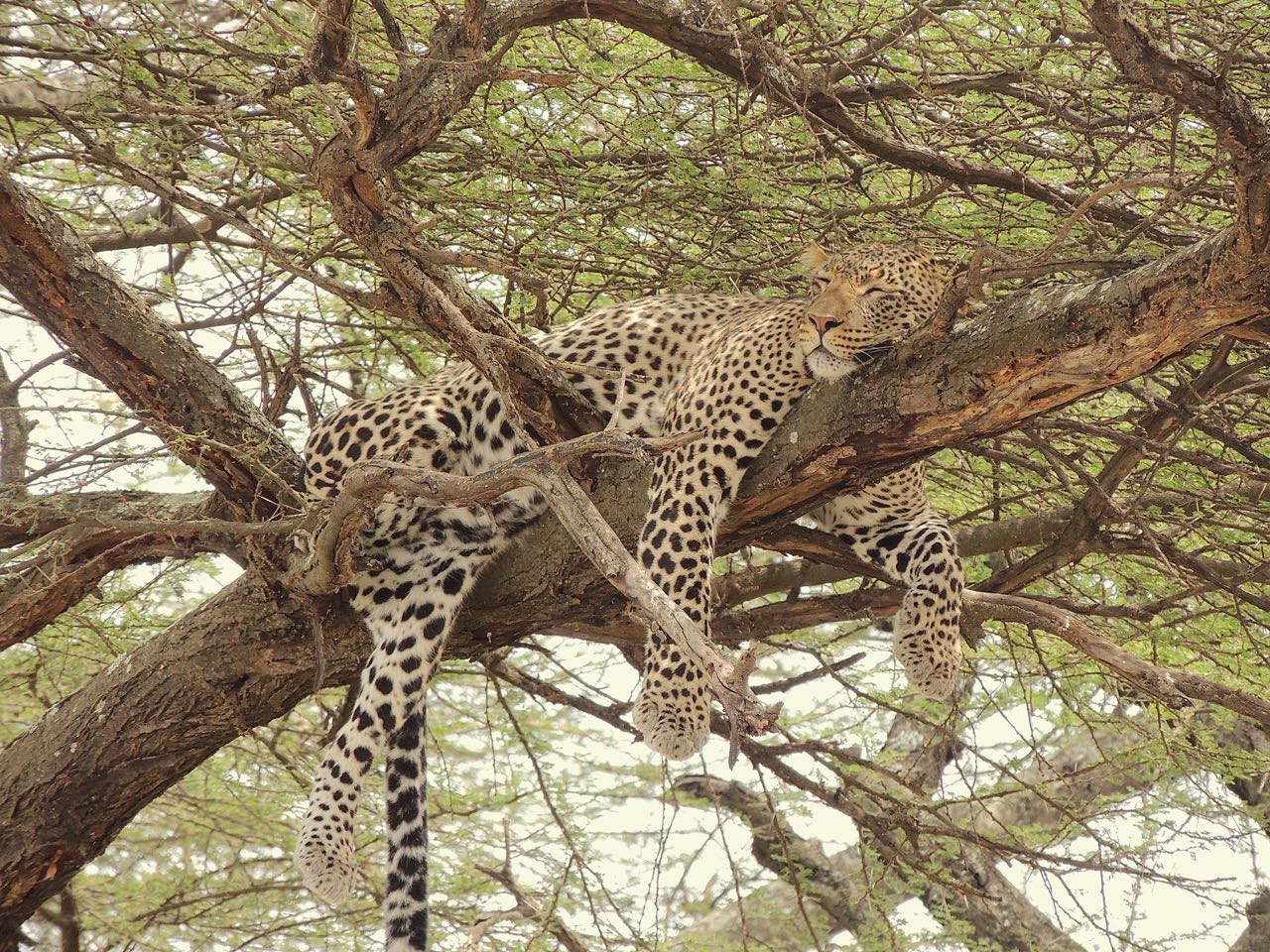 Leopard - Photo by William Young
Leopard - Photo by William YoungOn the same day we saw the Leopard, we saw one of our two Cheetahs of the trip. It was by the side of the road. It walked around the corner and stretched out in the shade of a tree. Cheetahs are built like greyhounds. They are fast on the ground, but they cannot climb trees. Compared to the Leopard, they are smaller, weigh less, have a smaller head, and have spots rather than rosettes. The rosettes on the Leopard are clusters of three or four spots, with darker brown fur in the middle. The Cheetah's nose is black, in contrast to the red nose of the Leopard. Cheetahs have a black teardrop line that runs from the eye to the mouth. While this Cheetah was resting, it was alert and had its eyes open. It was partially lying on its side, with its legs stretched out to the other side. Bernard said that Cheetah brothers stay together when they are adults, but females separate. The other Cheetah we saw was at the park at Mkomazi.
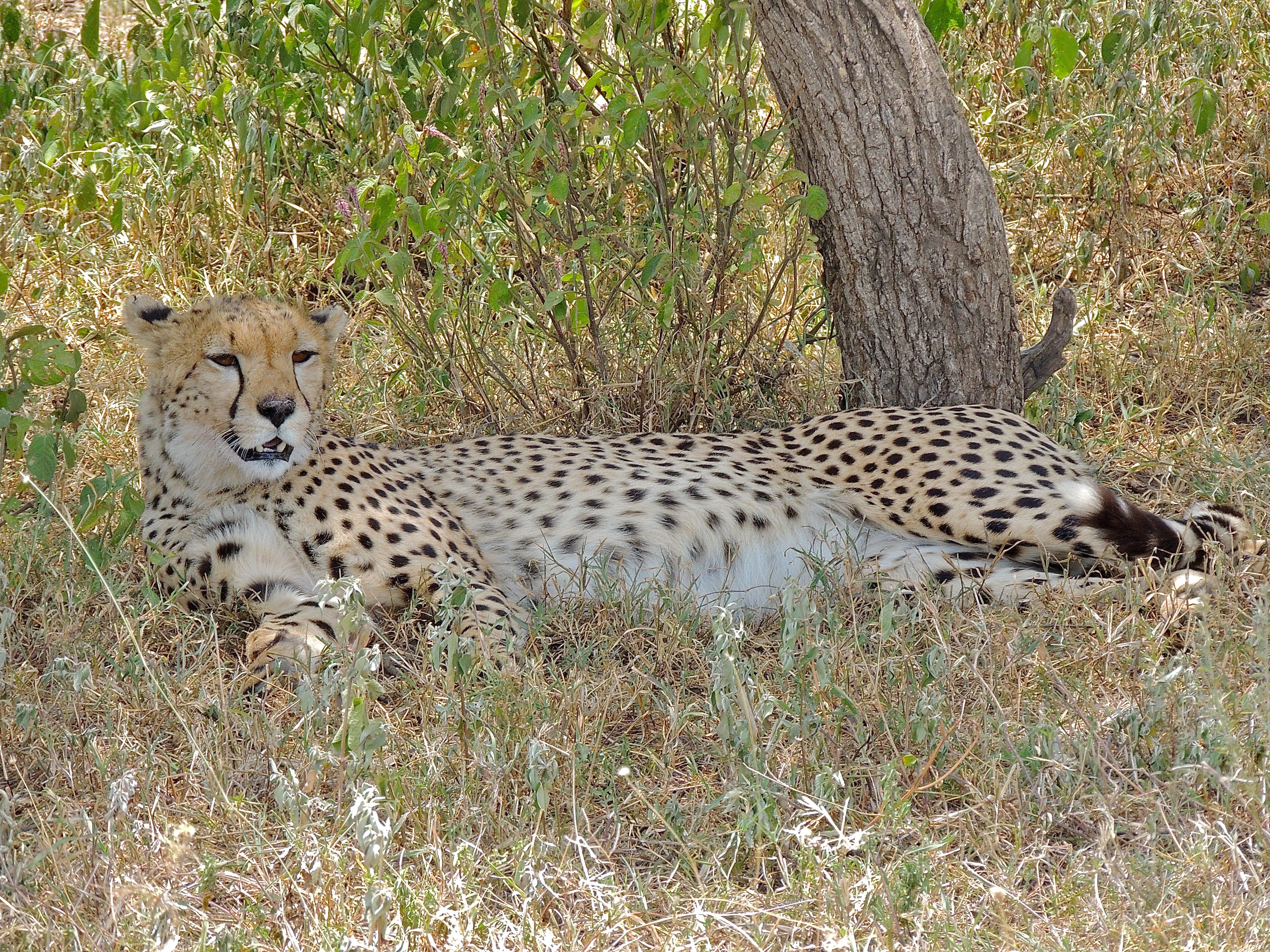 Cheetah - Photo by William Young
Cheetah - Photo by William YoungFor many visitors to Tanzania, Lions are the most sought-after natural attraction. Safari drivers try to find them for their customers in the hope of earning bigger tips. The parks we visited tended not to have many visitors, but at Ngorongoro where there were a lot of visitors, we could tell if there was a Lion ahead by the number of stopped cars. We had good luck with finding Lions, seeing 30 on four days. The first one was a male lounging on our big day in the Serengeti. I just missed getting a photo of him yawning. The Lion's mane looked reddish, and there was something eerie in the way it framed the face to make him look somewhat human. He had white fur around the mouth. We saw the row of black dots on each side of the nose which I am told is unique on each Lion and can be used for identifying individuals. We saw about 25 Lions at Ngorongoro. Most were females and young. A large group was lazing among some rocks. Only a few of these Lions were moving, but not in a very animated fashion. I took a photo of a female sleeping on her back with her paws up in the air, exposing her white chest. When I showed the photo to the friend to whom I dedicated my Fascination of Birds book, she said that she has domestic cats who sometimes do the same thing when they sleep. I read that Lions typically sleep more than 20 hours a day, and so seeing one do something other than sleeping can be difficult. The other two parks where we saw Lions were at Tarangire and Mikumi.
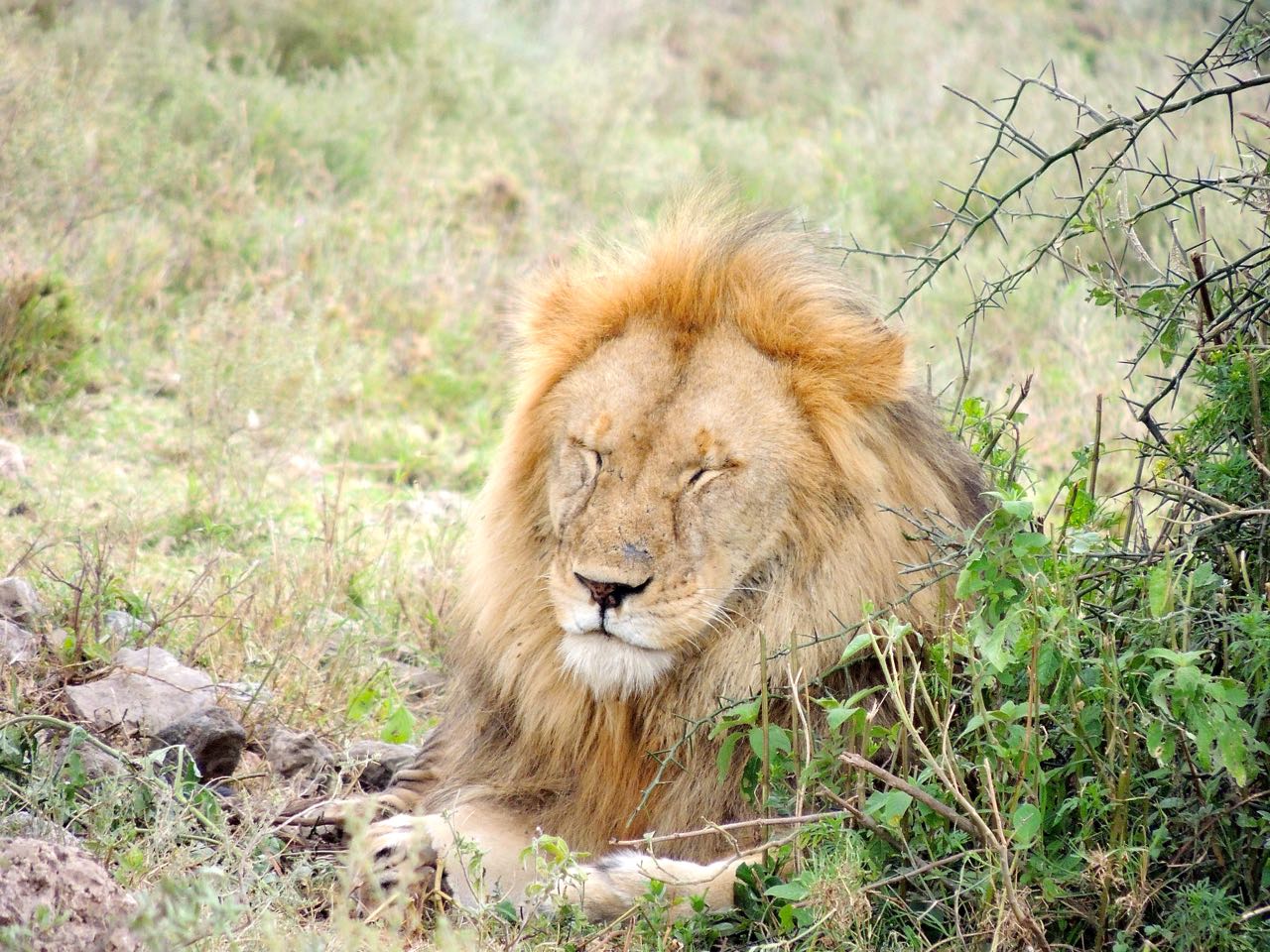 Lion Male - Photo by William Young
Lion Male - Photo by William Young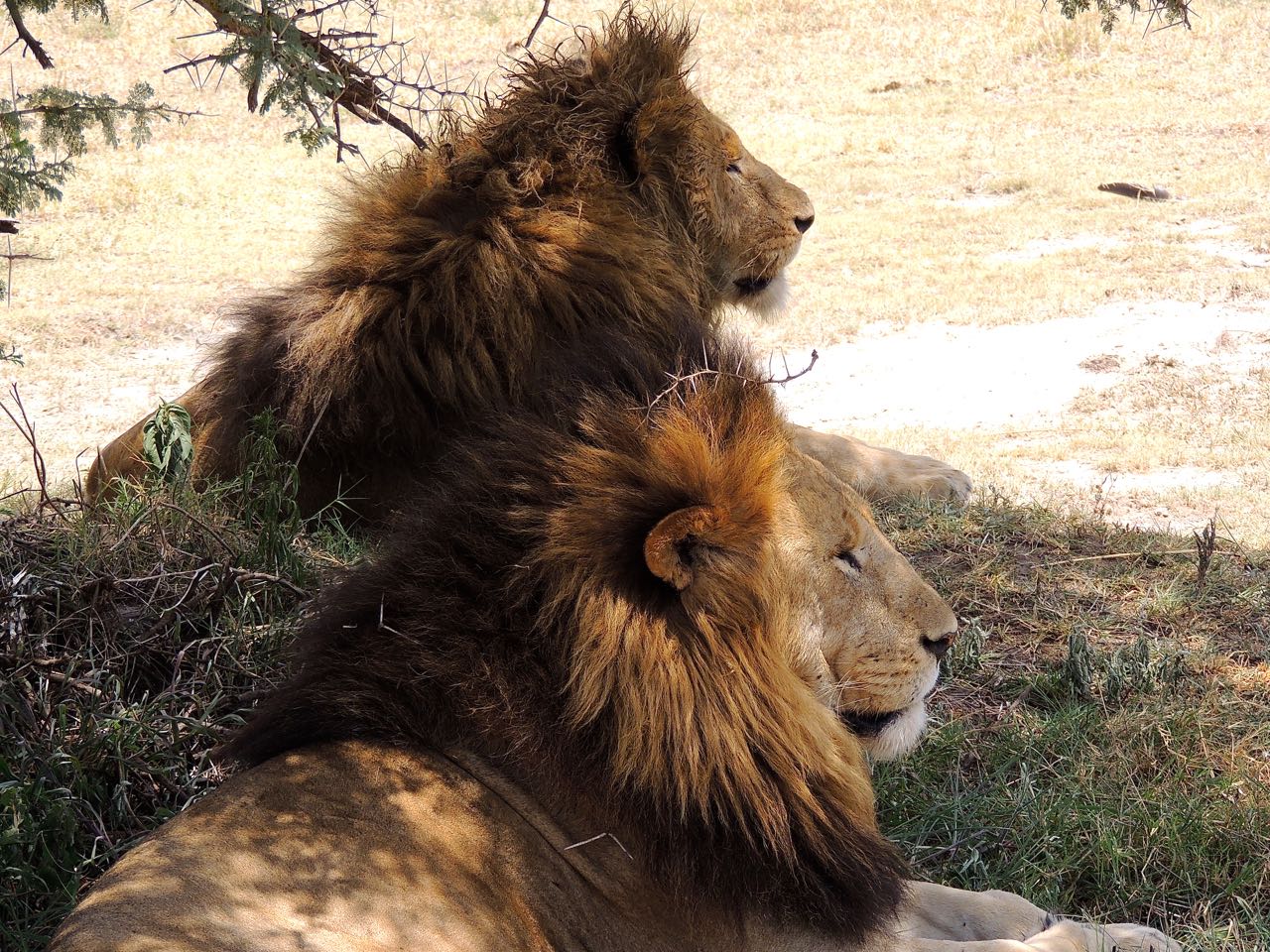 Lion Males - Photo by William Young
Lion Males - Photo by William Young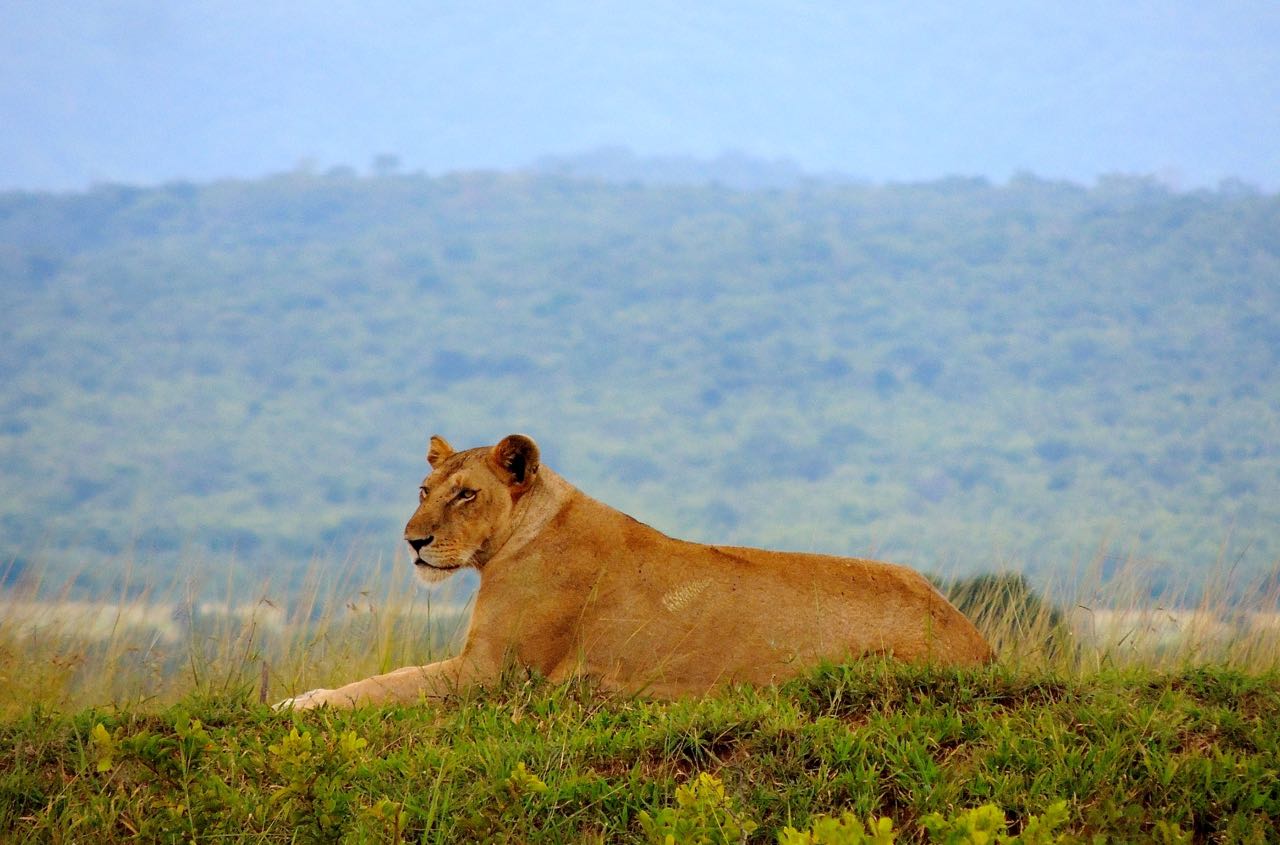 Lioness - Photo by William Young
Lioness - Photo by William Young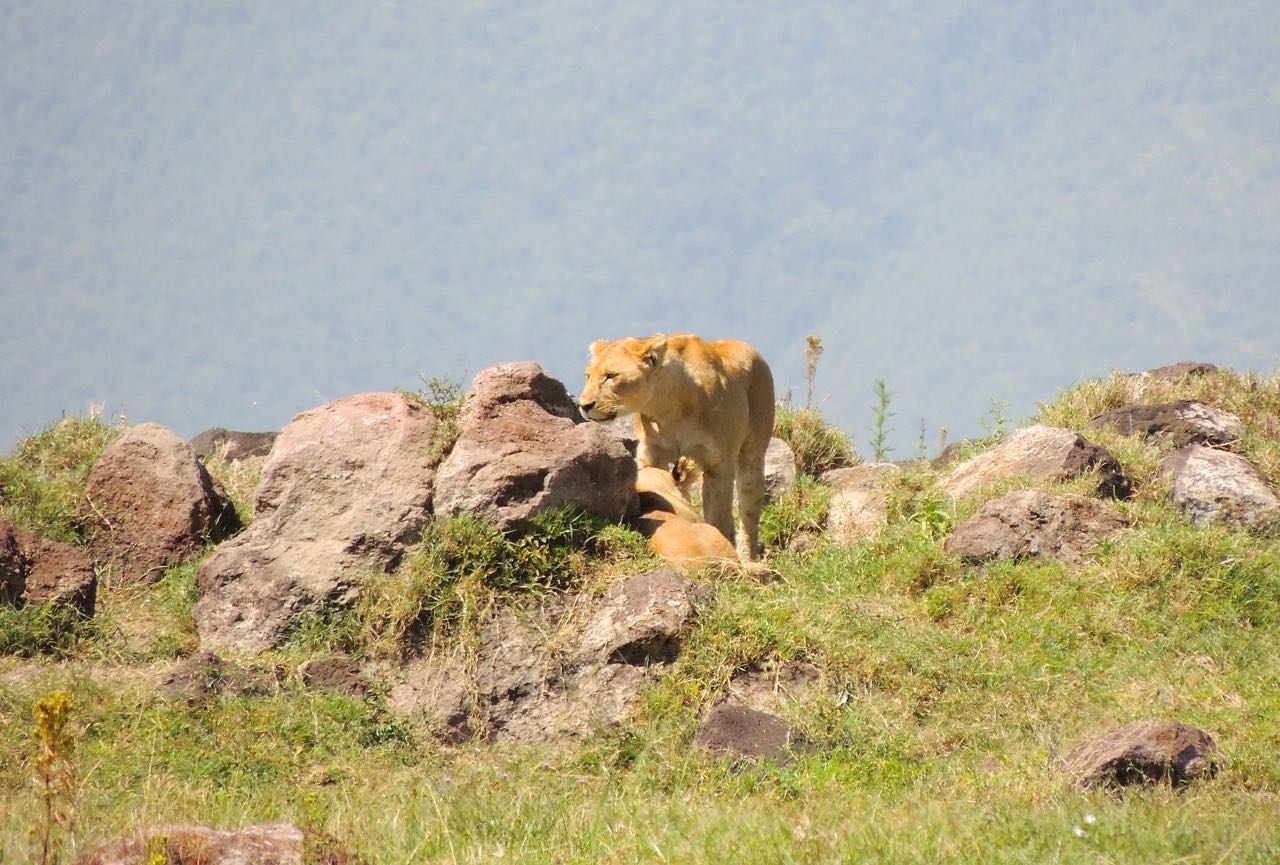 Lioness with Young - Photo by William Young
Lioness with Young - Photo by William Young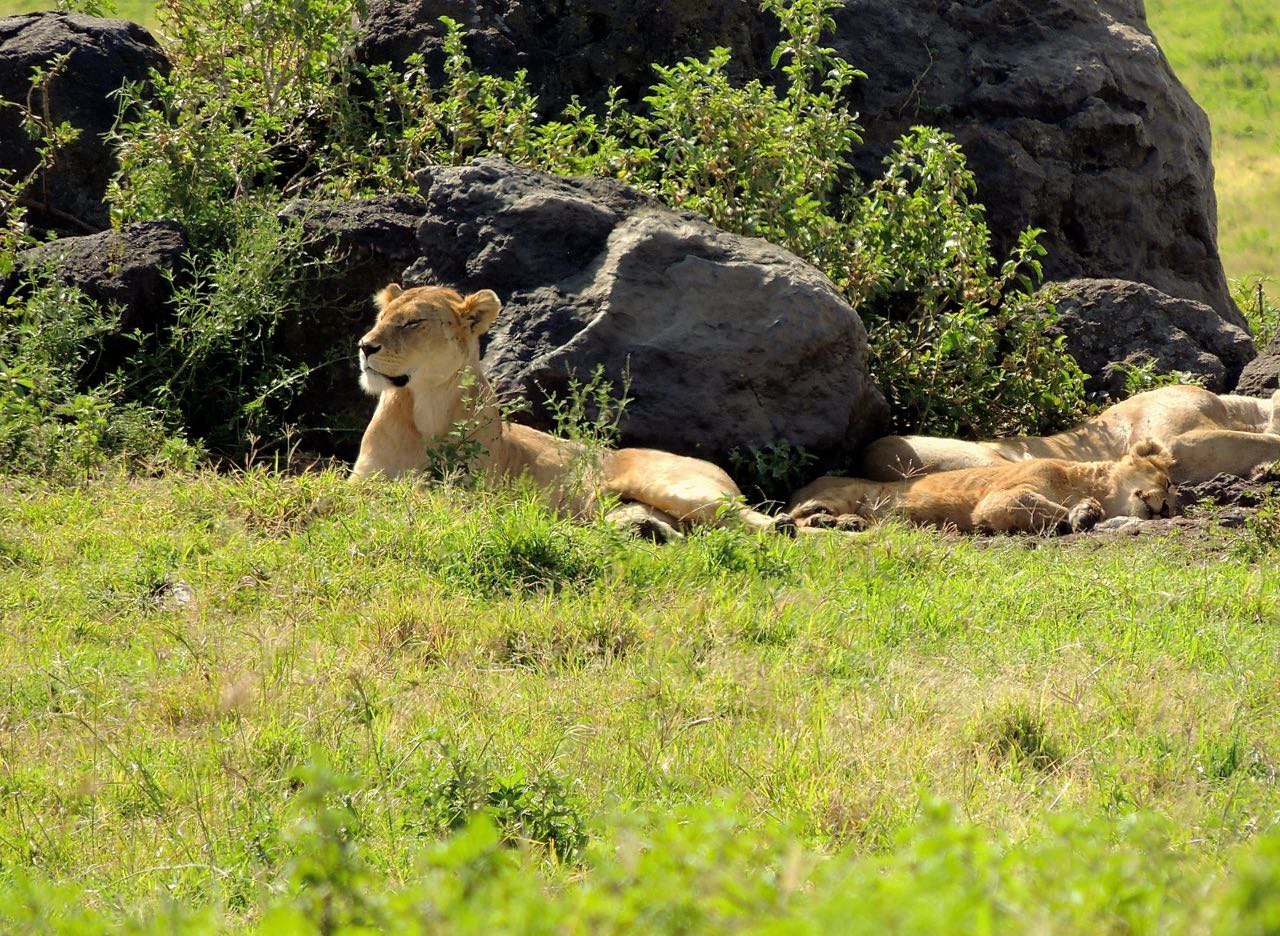 Lioness with Young - Photo by William Young
Lioness with Young - Photo by William YoungThe mammal who most excited Martin was a Serval we saw at Ngorongoro. It is a long, lean spotted cat who is much smaller than a Cheetah. It has big ears on a head that looks too small for its body. On the same day, we saw five Spotted Hyenas. A pair walked to a small watering hole to bathe and drink. Hyenas move with a slow purposeful trot. One young hyena was carrying the horns of a wildebeest; the hyena grabbed them in the middle and walked with the horns pointing forward, creating the impression of a huge, slightly-tilted mustache. We saw 11 hyenas on the trip. At Serengeti National Park, we saw some going into a den in a culvert under one of the roads. At the Momela campsite during the night, I heard some howling and making other softer vocalizations. They might have been howling because of a dead elephant at the campsite. One night, I heard a barking noise that could have been a jackal. We saw four Common (Golden) Jackals in the Serengeti, and we saw a Black-backed Jackal (a tongue-twister) both in the Serengeti and at Mikumi. One of the Common Jackals looked bright golden. For an animal who is a carnivore and has such a bad reputation, it did not look any more threatening than a domestic dog such as a husky. Jackals are not closely related to domestic dogs.
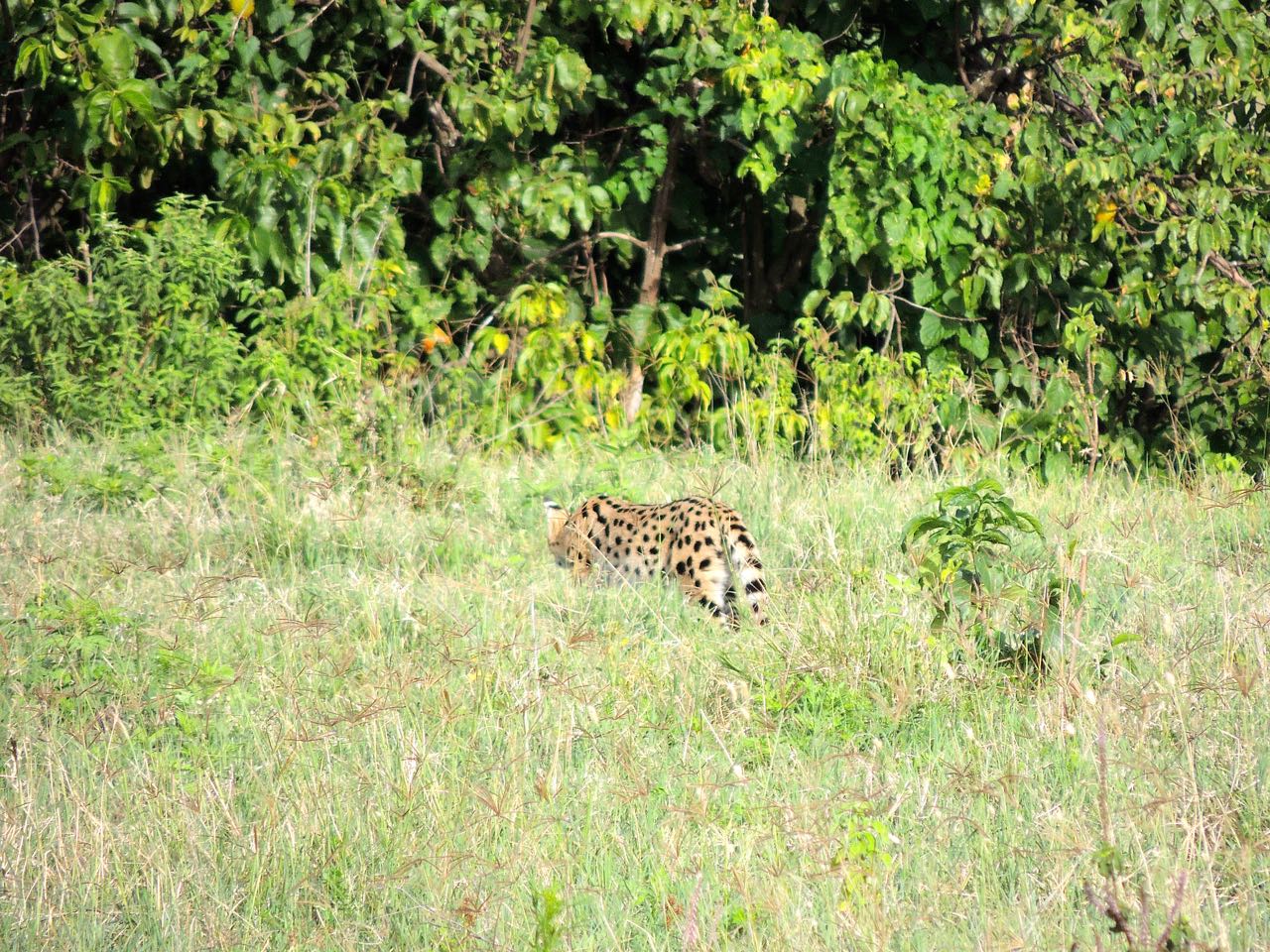 Serval - Photo by William Young
Serval - Photo by William Young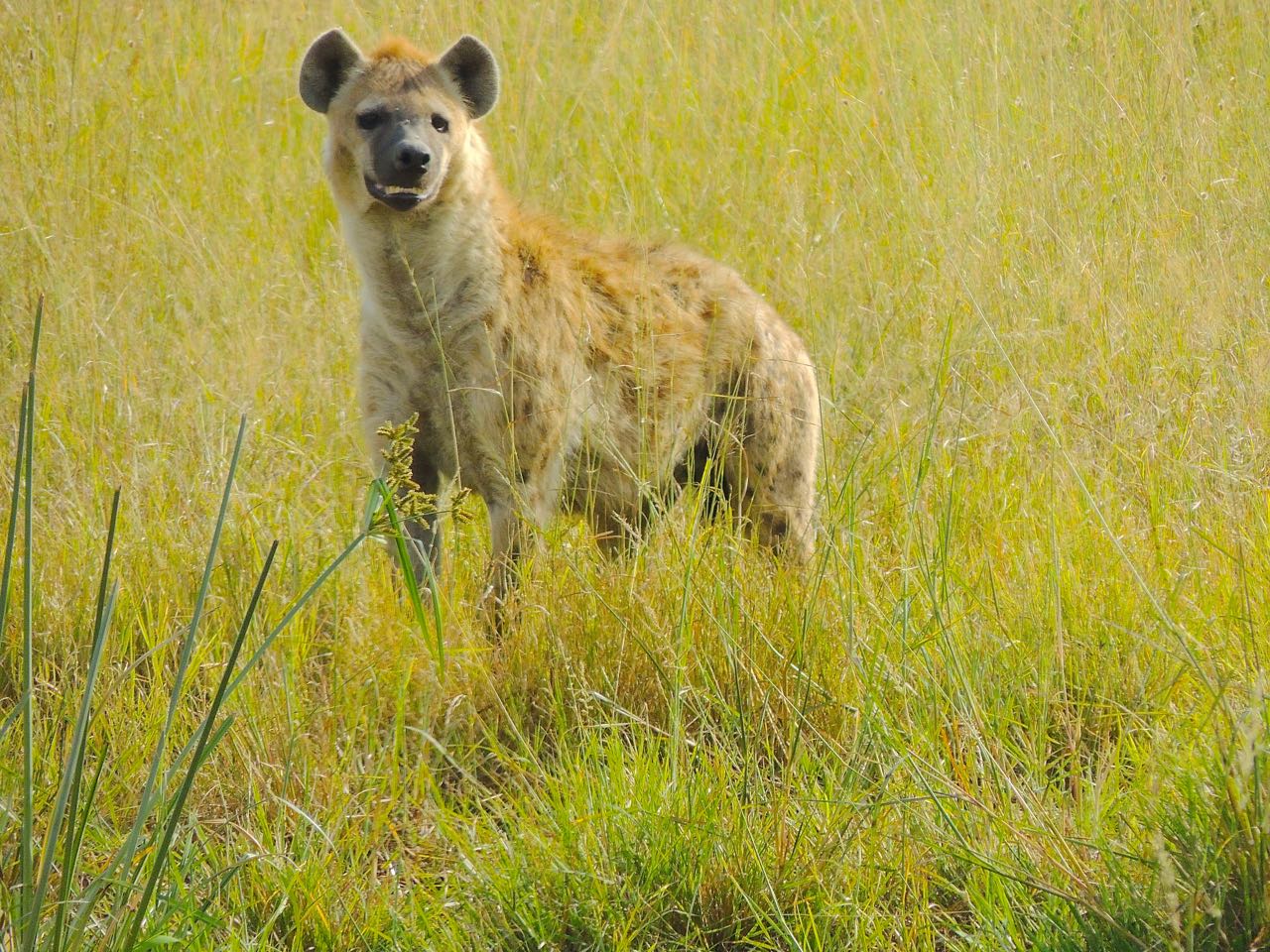 Spotted Hyena - Photo by William Young
Spotted Hyena - Photo by William Young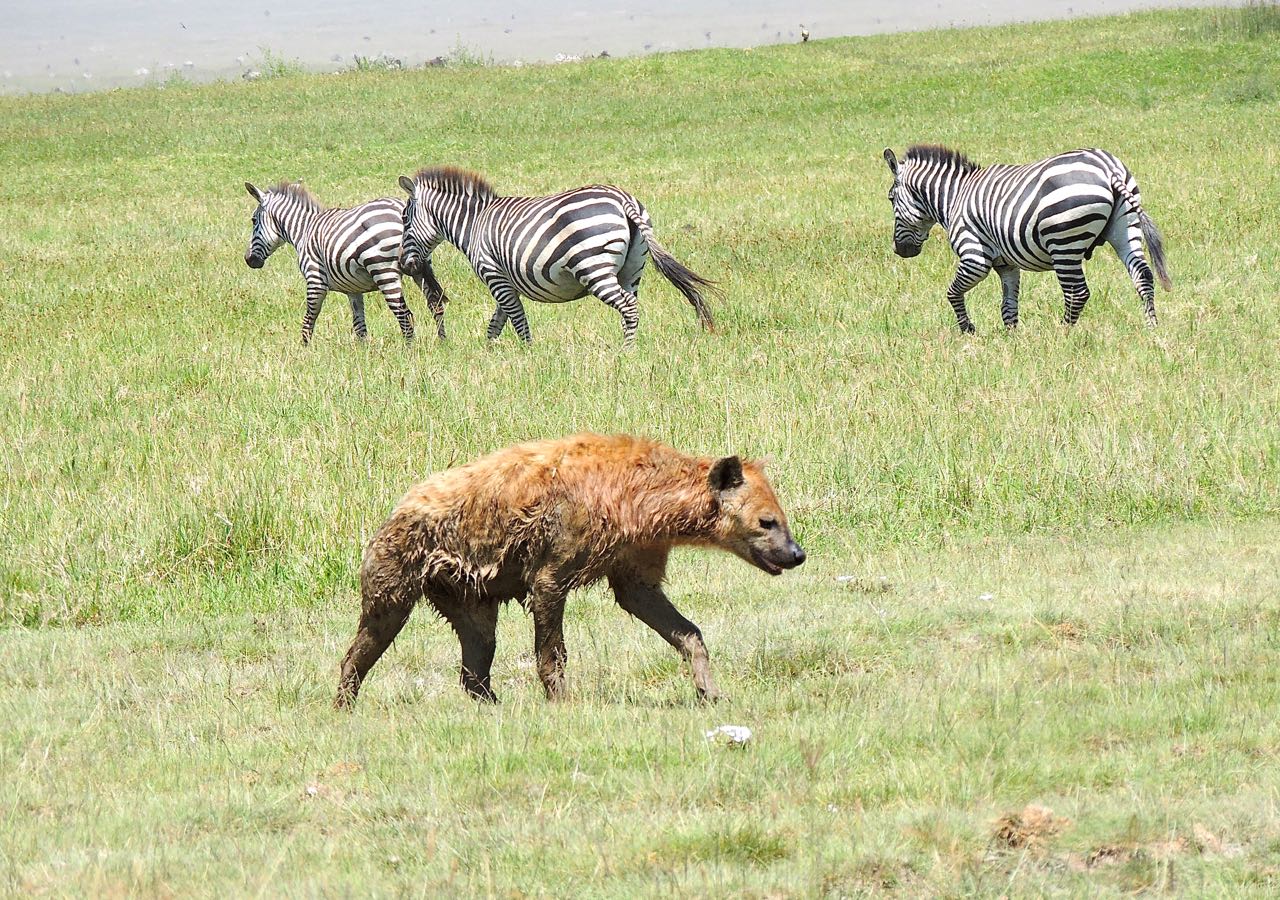 Spotted Hyena and Plains Zebras - Photo by William Young
Spotted Hyena and Plains Zebras - Photo by William Young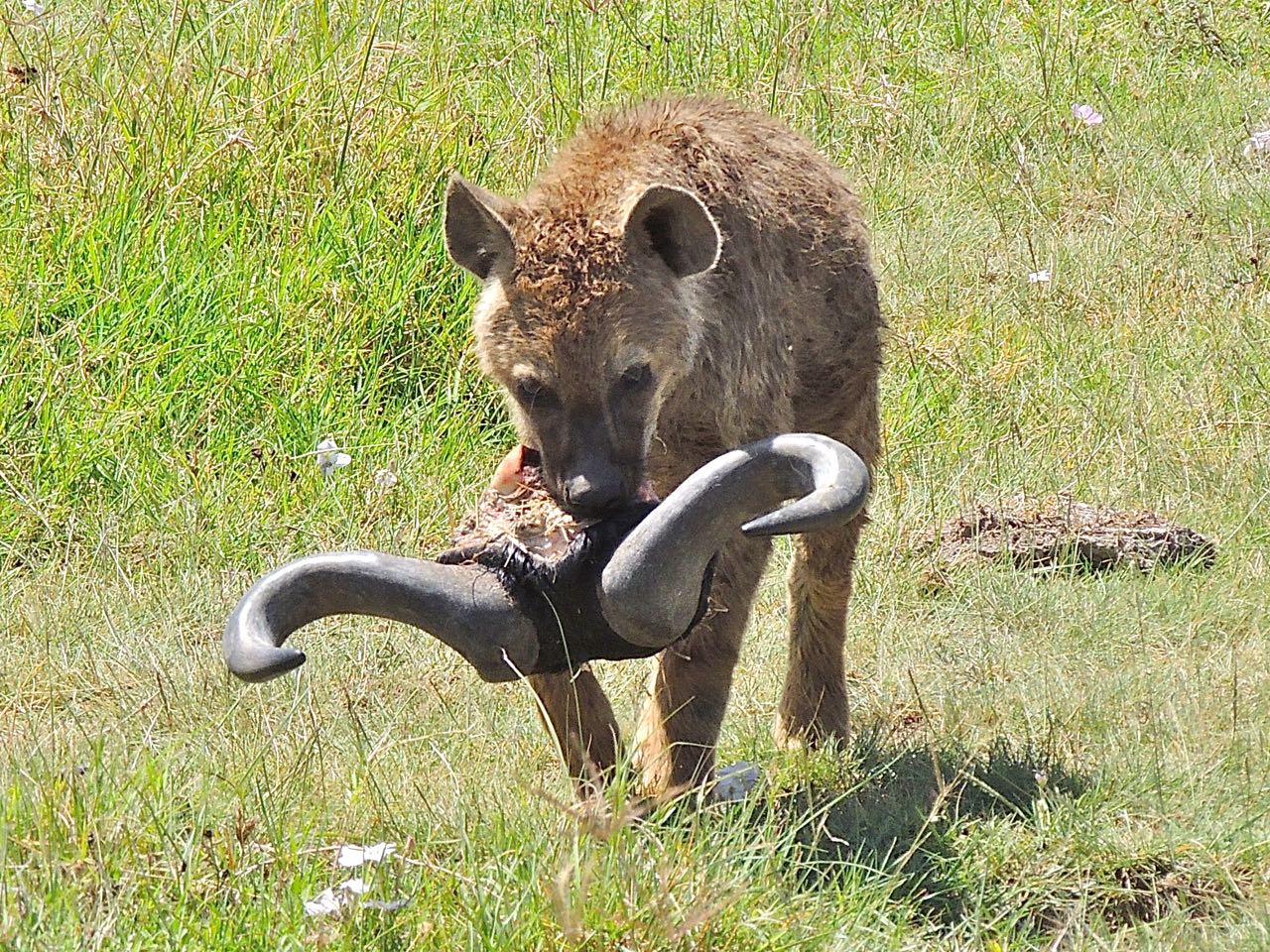 Young Spotted Hyena - Photo by William Young
Young Spotted Hyena - Photo by William Young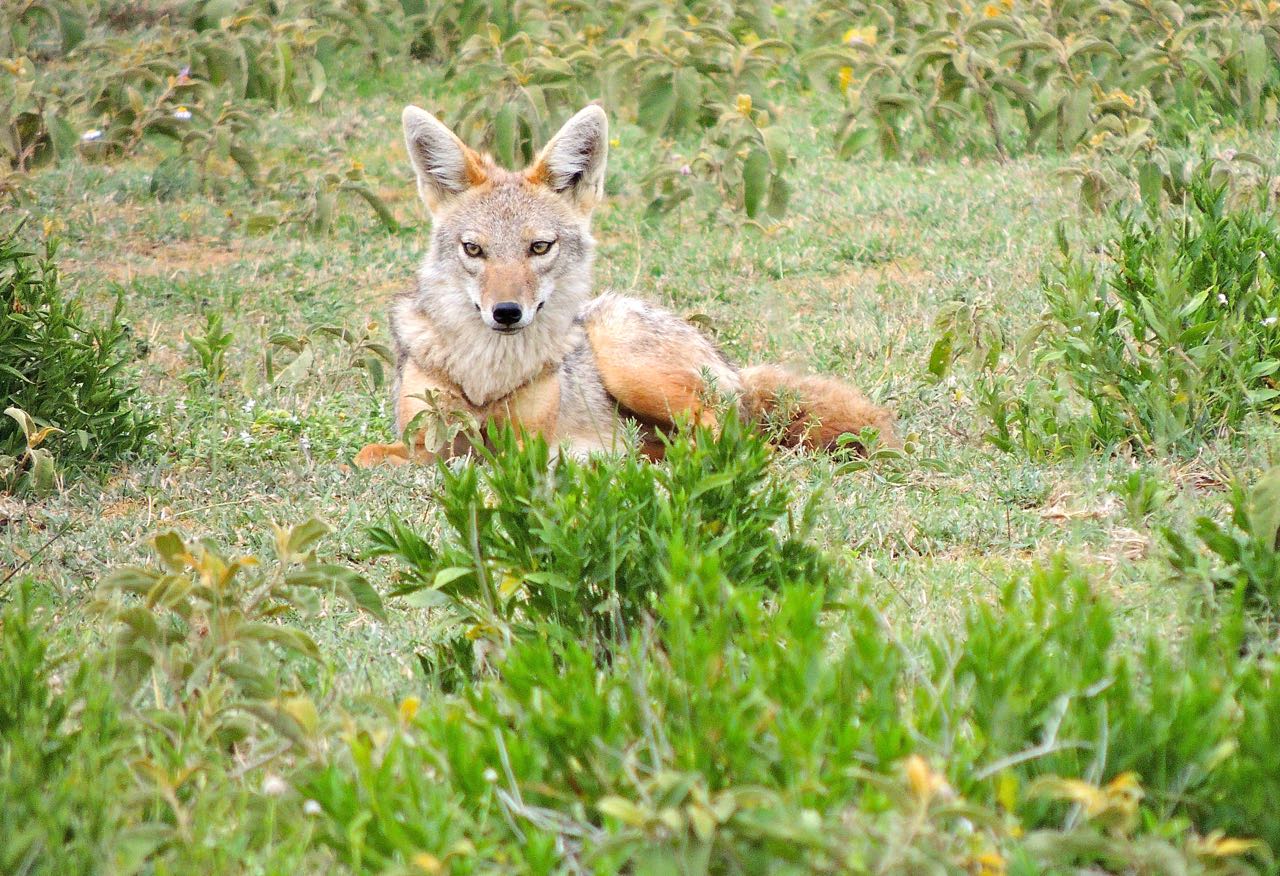 Common (Golden) Jackal - Photo by William Young
Common (Golden) Jackal - Photo by William YoungWe did not have many prolonged looks at mongooses. We often saw them running for cover somewhere. Near the Naitola campsite, I saw an Egyptian Mongoose, who looked much larger than the other mongooses we saw. (As a birder, I have to resist the temptation to call them "mongeese".) In the same area, we saw five Dwarf Mongooses, who were brown and very small. We saw five Banded Mongooses in the Serengeti, running into the grass. They looked smaller than the Egyptian and larger than the Dwarf. They are gray, with black bands on their back. We also saw some in Arusha National Park.
Odd-toed UngulatesGrouping the Black Rhinoceros with the Plains Zebra seems odd. Rhinos were the mammal I most wanted to see, mainly because their numbers have been declining so sharply that I don't know how many more years they will be around. There are currently about 5,000 left. The numbers dropped from about 65,000 in 1970 to only 2,300 in 1993. The numbers have bounced back a little, but rhinos are still critically endangered because impotent men in various parts of the world (especially China and Vietnam) want consume the chemical equivalent of human hair in an effort to get erections. A friend involved with rhino conservation told me that as their numbers have declined and the value of their horns has increased, some of the people killing them are mixing Viagra in with the ground up horns to try to perpetuate the potency delusion.
The only four rhinos we saw were in Ngorongoro Crater. A couple had mud on their sides and had probably been wallowing recently. A few had oxpeckers on them. Like the elephants, they seem to be slow moving and tranquil animals, spending their hours munching on vegetation. Their eyes seem small for such a large body, giving them a sleepy or lazy appearance.
 Black Rhinoceros - Photo by William Young
Black Rhinoceros - Photo by William YoungCompared to the scarce rhinos, Plains Zebras were all over the place. We saw more than 41,500, and we saw them on more days of the trip than any other mammal, and on more days than all but two bird species (Barn Swallow and Common Bulbul). We saw 39,000 on three days — 30,000 at Serengeti National Park, 6,000 at Ndutu National Park, and 3,000 at Ngorongoro Crater. In these parks, we saw a lot of "zebra crossings", with groups of zebras feeding on both sides of the road and sometimes standing in the road. They often were seen with groups of wildebeests. The two species seem to get along and don't bother each other. The zebras we saw on other days were mostly in small to mid-sized groups.
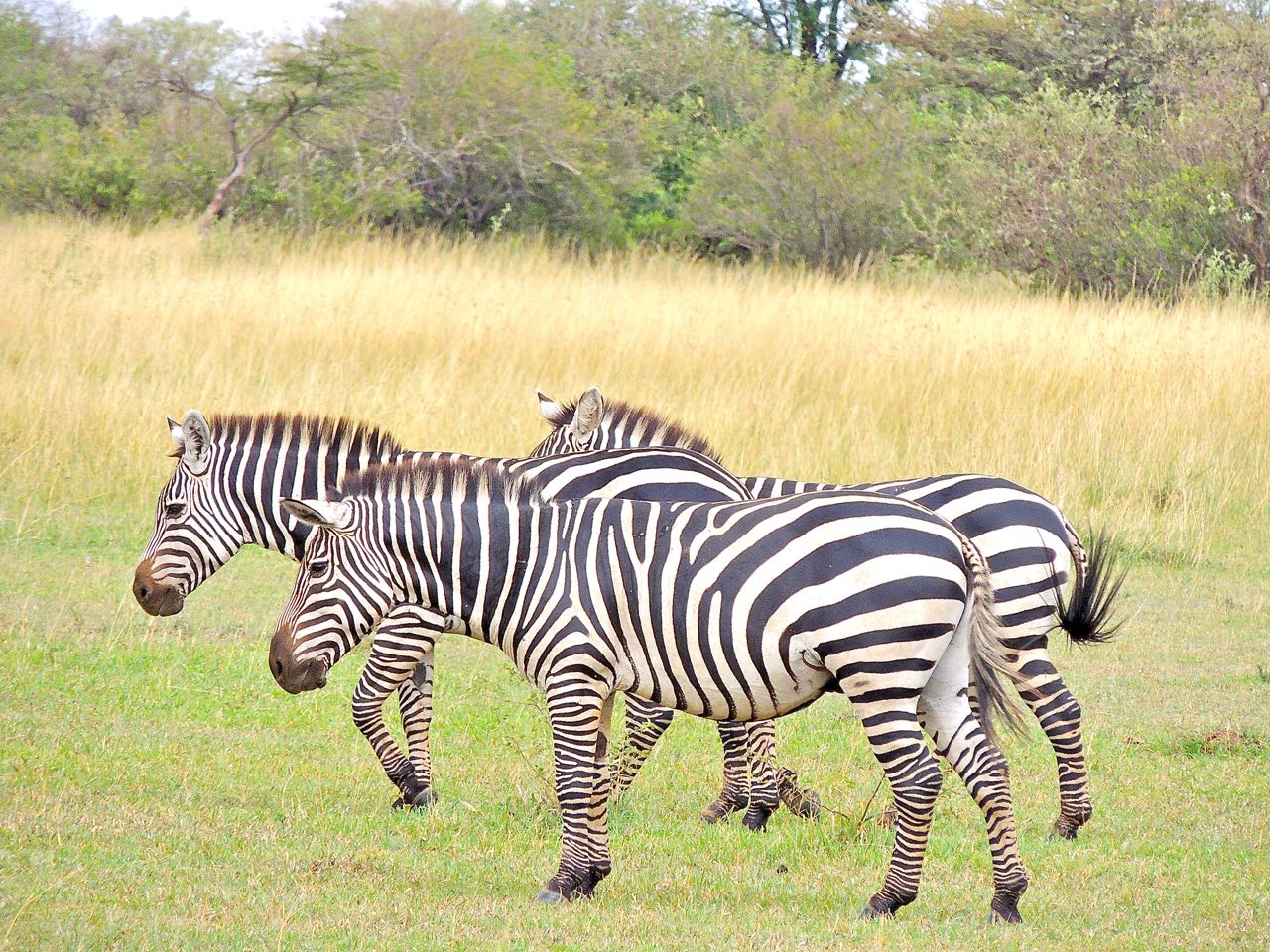 Plains Zebras - Photo by William Young
Plains Zebras - Photo by William Young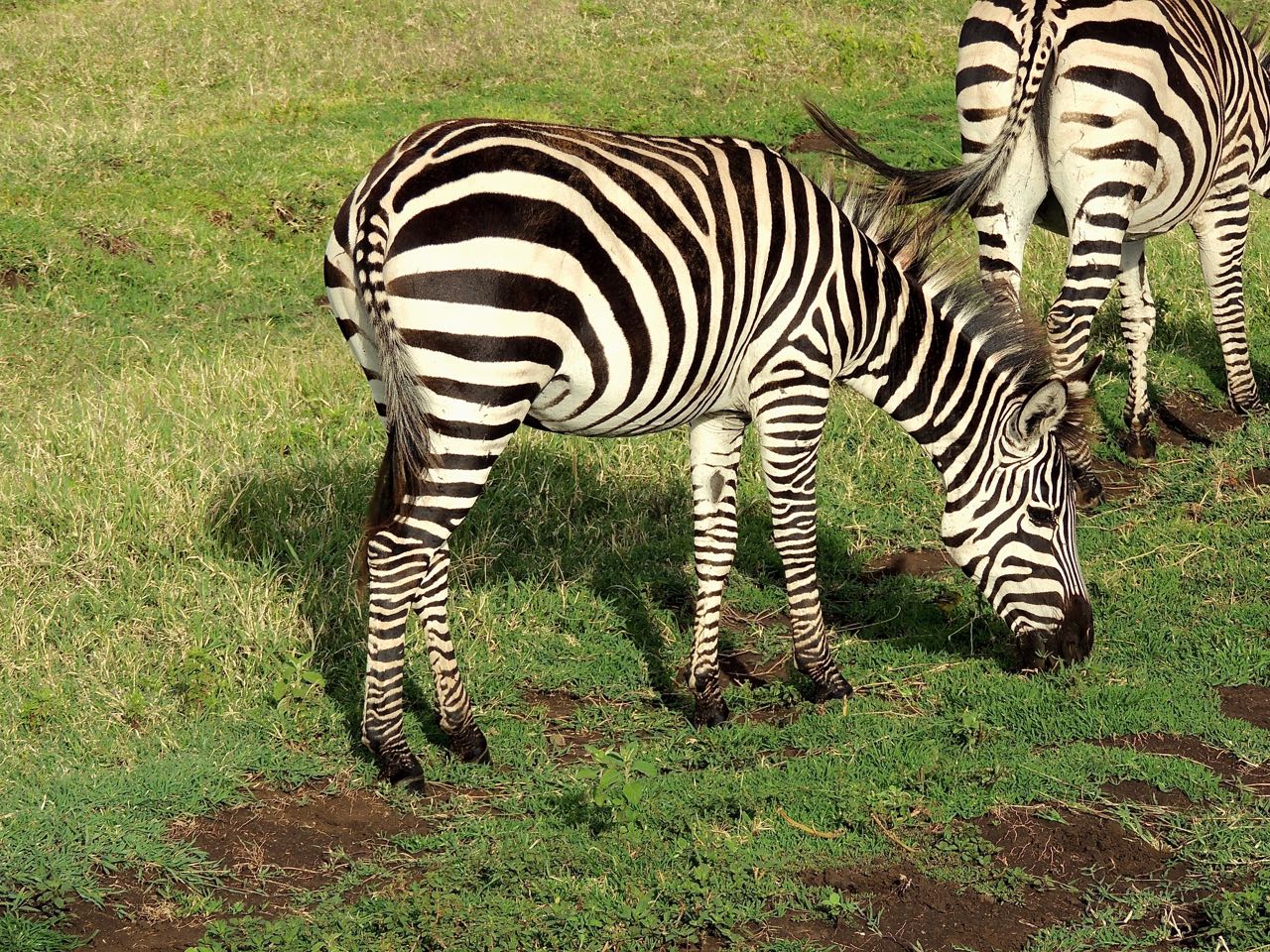 Plains Zebras - Photo by William Young
Plains Zebras - Photo by William Young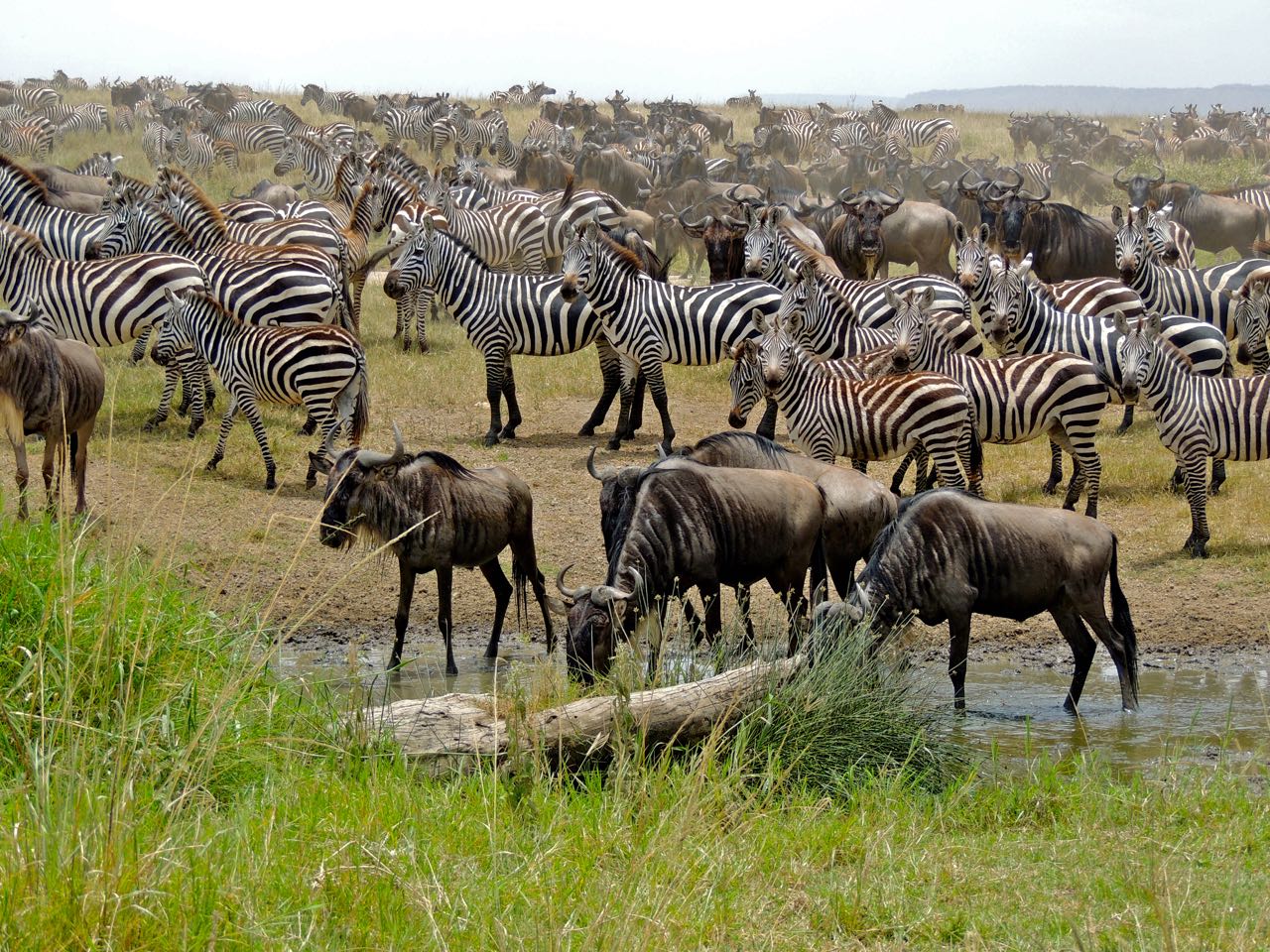 Plains Zebras and Wildebeests - Photo by William Young
Plains Zebras and Wildebeests - Photo by William YoungZebras bob their head when they walk. The young ones look like small horses, while the adults look like big donkeys. We saw some pregnant females, but some males look like they are pregnant because of their big beer-bellies. I have read that zebras are black with white stripes, and their skin is black. I saw one male release his penis, which was black and at least a foot long. It was arced rather than fully erect as it dangled between his legs. Their excrement is green, probably from the grass they eat. The top half of their tail is striped. Zebras sometimes sit on the ground, leaning to the side so that two legs are below them and two legs stick out to the opposite side they are leaning. They sometimes choose bare and dusty spots on which to lounge.
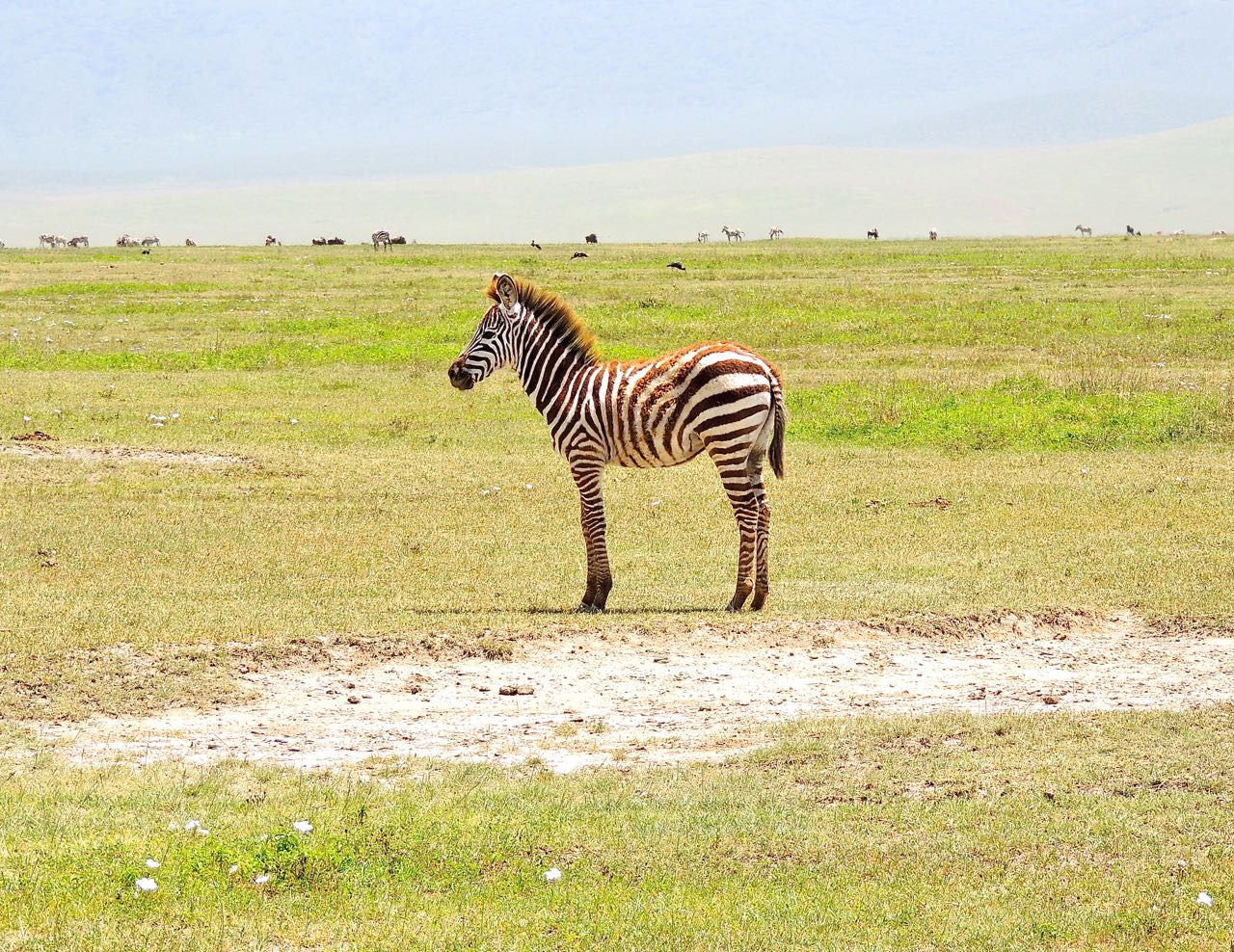 Young Plains Zebra - Photo by William Young
Young Plains Zebra - Photo by William Young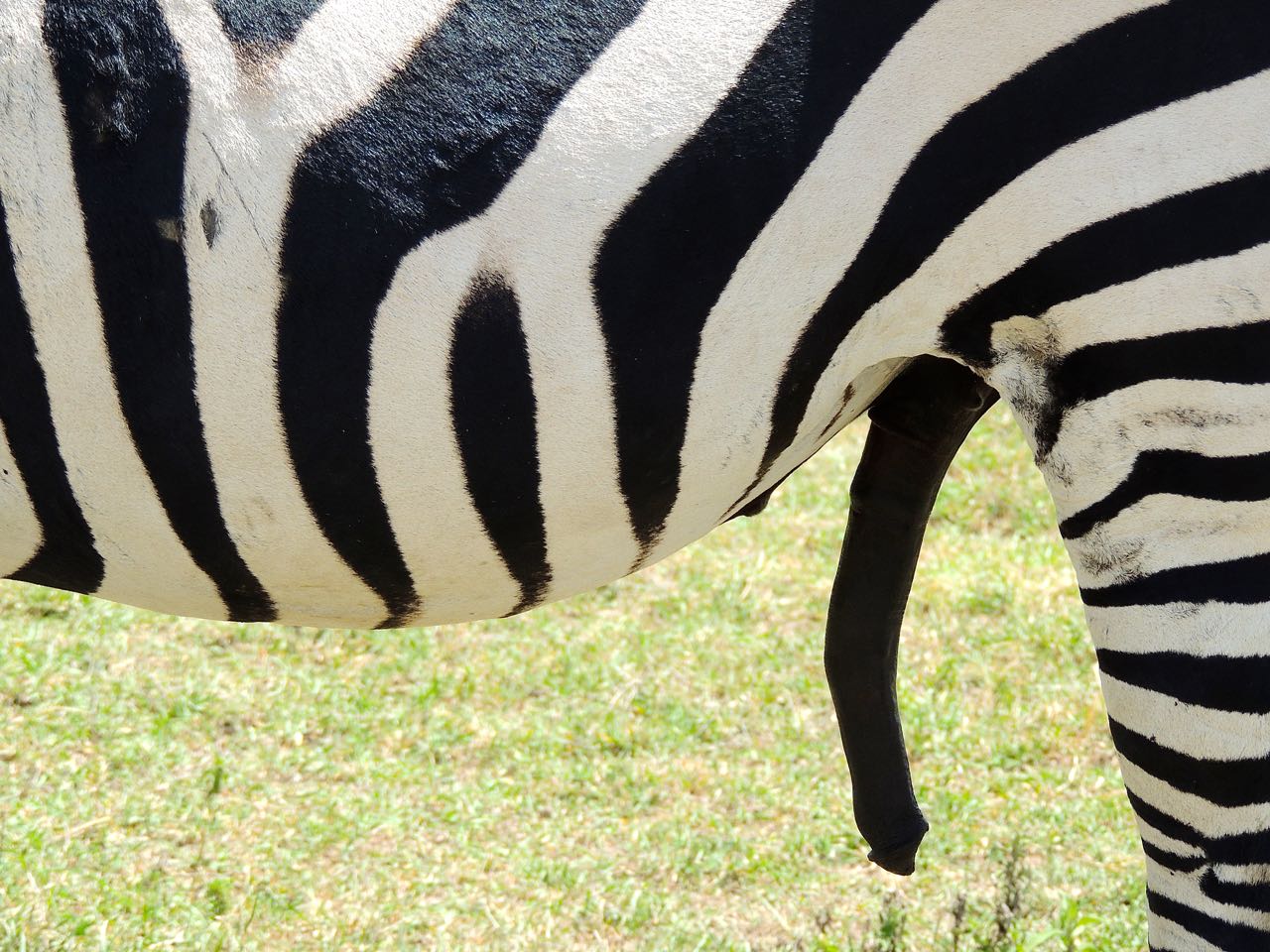 Plains Zebra Penis - Photo by William Young
Plains Zebra Penis - Photo by William Young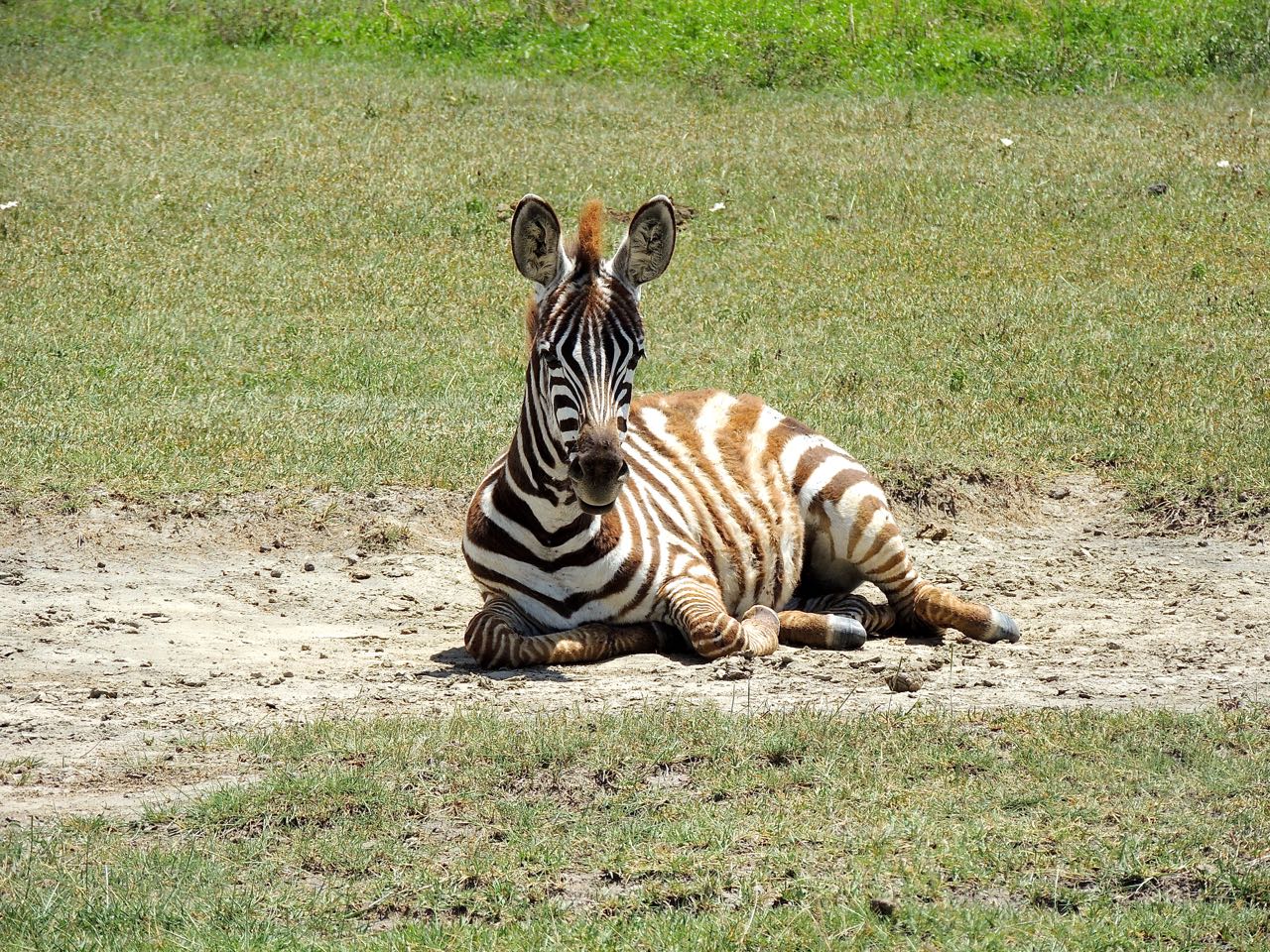 Plains Zebra - Photo by William Young
Plains Zebra - Photo by William YoungAt Serengeti National Park, we came to a waterhole where a huge number of zebras came to drink and bathe. We saw the large group walk into the water, which they did peacefully. They did not take much notice of the birds who were scattering in all directions. The exit from the water was much faster and more aggressive, with large numbers of zebras running and splashing. Some make a noise that sounds like the bark of a dog. At Ndutu the next day, we saw a large number of vultures and Marabous around a zebra carcass. The zebra was flat on its back with its legs sticking up, presumably so that the scavengers could get to the organs in the belly. About 50 yards away, we saw a young zebra standing forlornly and watching as the rapacious birds might have been ripping into its mother.
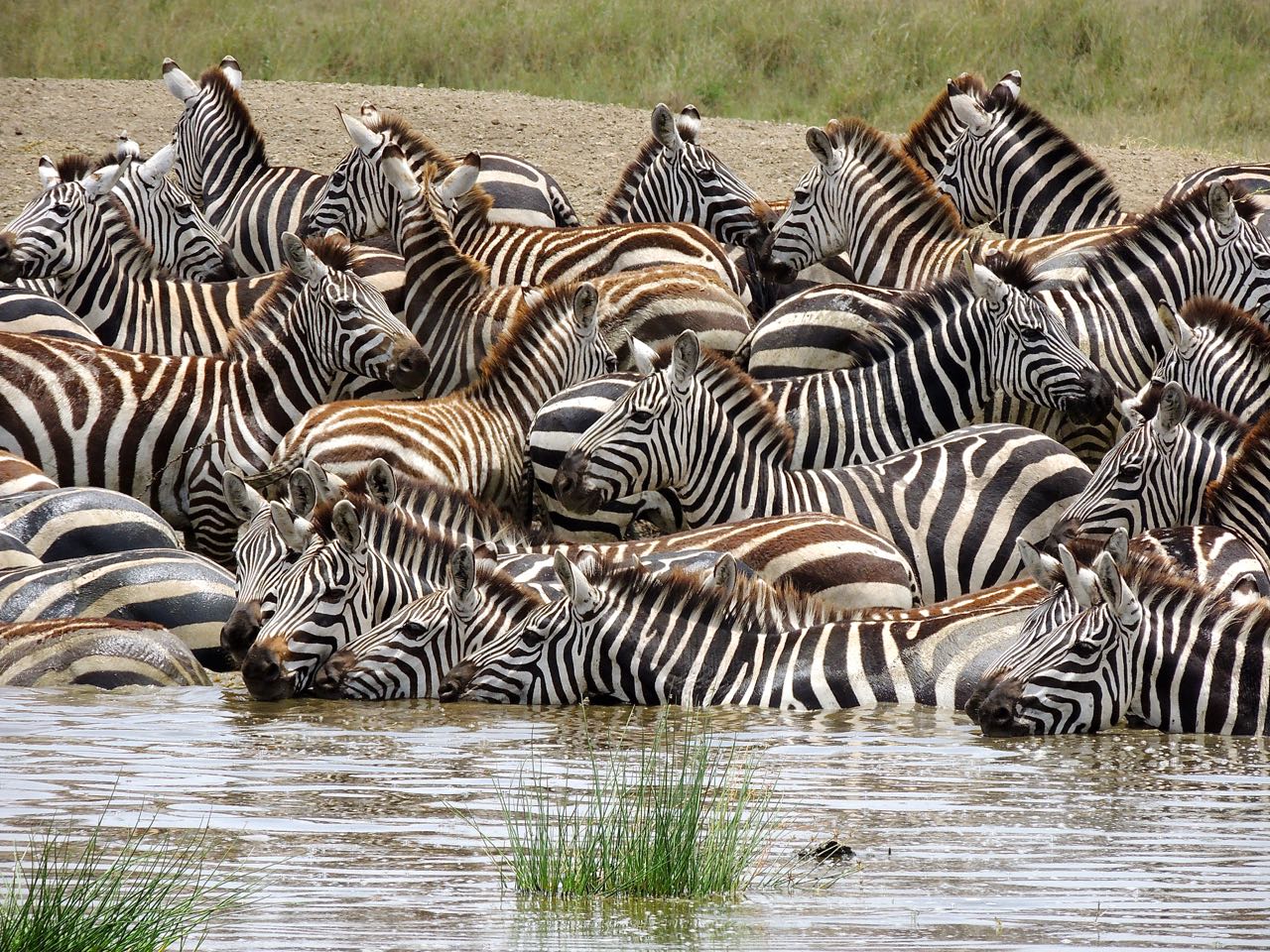 Plains Zebras - Photo by William Young
Plains Zebras - Photo by William Young
Even-toed UngulatesThe even-toed ungulates are a diverse group, ranging from the Hippopotamus to the giraffe to the small Kirk's Dikdik. In terms of numbers seen, this group surpasses all others by a long way. In fact, the Wildebeest alone surpasses all other families, as does the Thomson's Gazelle.
We saw 105,000 Wildebeests on eight days. On our second day of the Safari, we saw an estimated 100,000 wildebeest in Serengeti National Park. Seeing so many animals of one kind in the same place is stunning and breathtaking. We were told that one might expect to see such numbers in early June, but the beginning of March is unusually early. When they need to cross a road, they bunch up and do it together. They also all stop together. Their running style is stiff legged and erect, and they look a bit like rocking horses. At Lake Manyara, there is a different race of wildebeest. They are lighter colored, and they do not migrate. The front three quarters of the side of a wildebeest has vertical black stripes like a zebra. They have white fur hanging from their chin and the bottom of their neck. Both sexes have horns that curve sideways and then up at a 45 degree angle. The space between the tips of the two horns is wider than the head. The adults are dark brown, but the young are light brown. Wildebeests sometimes sit on the ground. The males weigh from 370 to 530 pounds, and the females from 310 to 460.
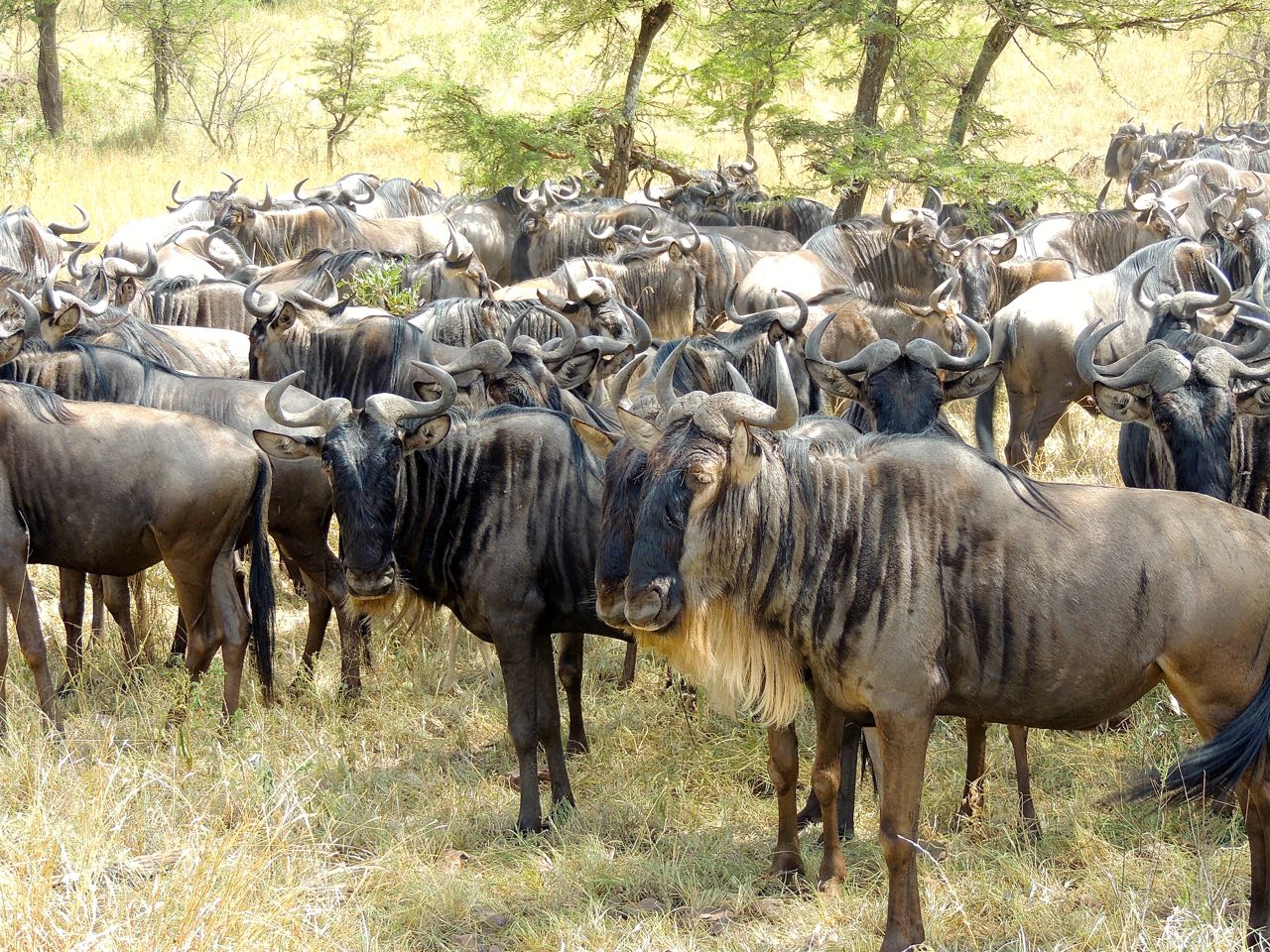 Wildebeests - Photo by William Young
Wildebeests - Photo by William Young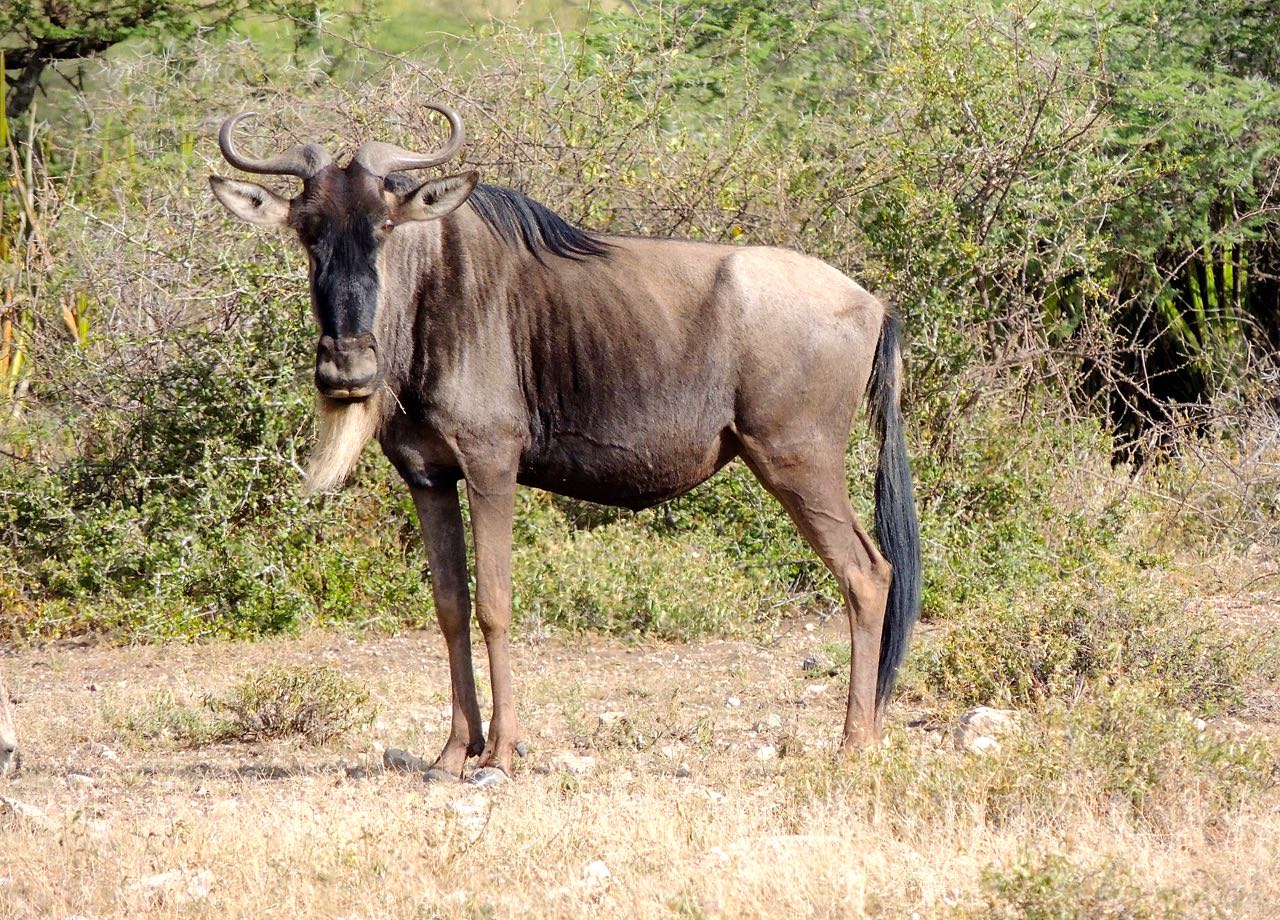 Wildebeest - Photo by William Young
Wildebeest - Photo by William Young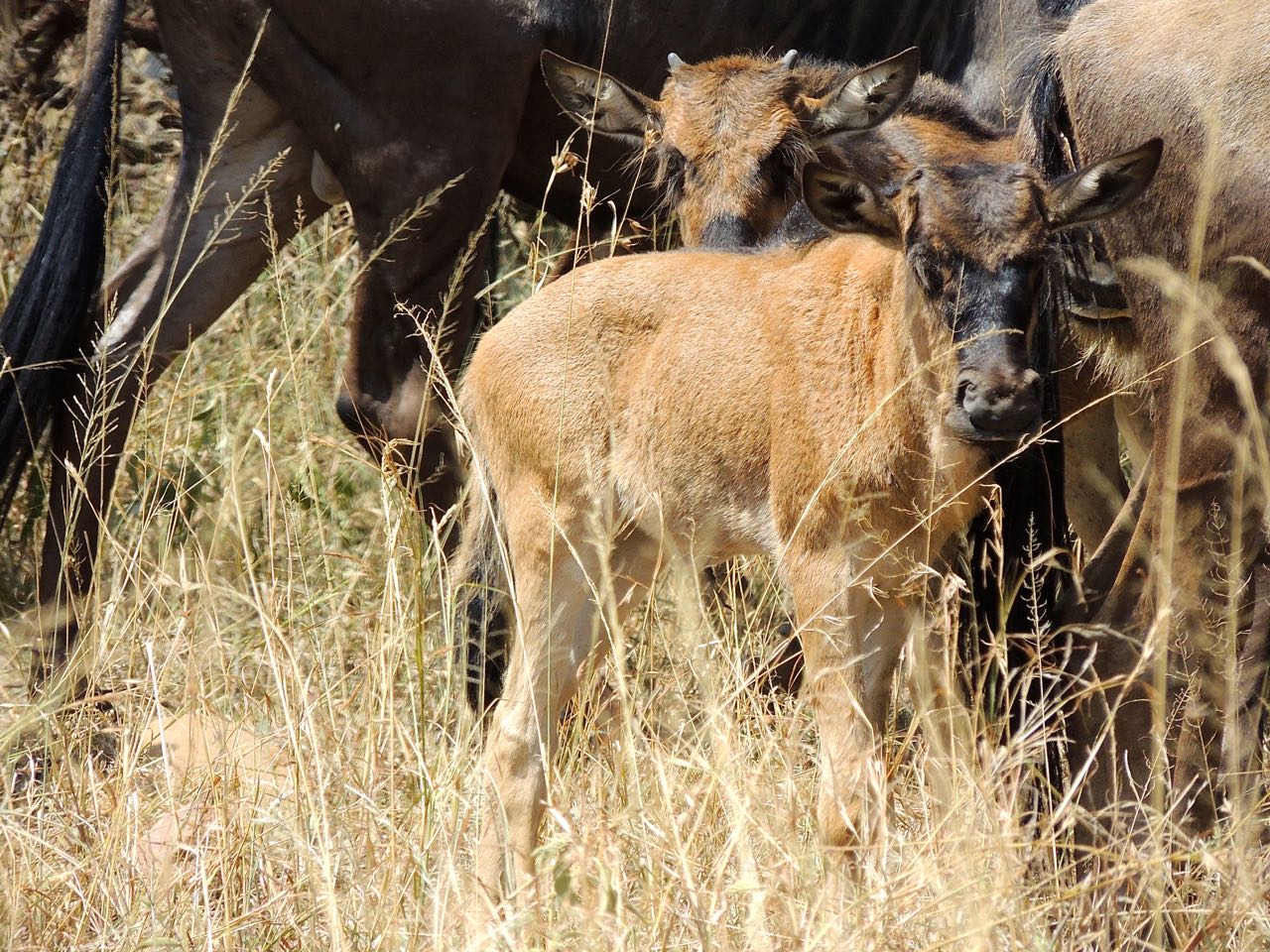 Young Wildebeests - Photo by William Young
Young Wildebeests - Photo by William Young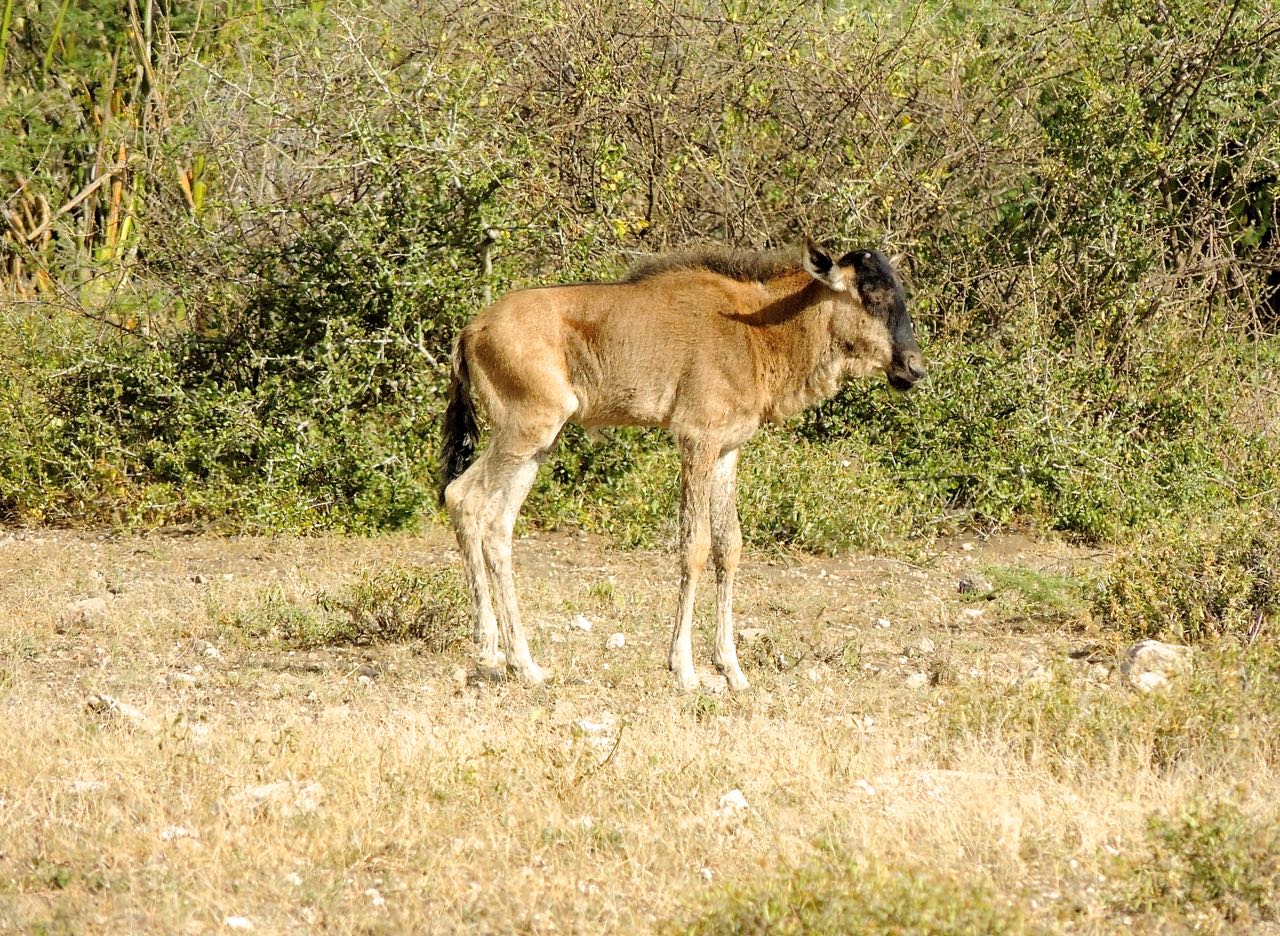 Young Wildebeest - Photo by William Young
Young Wildebeest - Photo by William YoungAn antelope similar in size but much less common is the Fringe-eared Oryx. From a lookout over the Tarangire Conservation Area, we watched 15 feeding peacefully. They are lighter-colored than wildebeest, and their long horns go straight back without curving. They have black on their face, and the ends of the ears are black and irregular, which is the basis for their name. They are very shy because of excessive hunting. The Common Eland is another large antelope who is shy because of hunting. We saw 200 on eight days, with the greatest number at Mkomazi. Elands weigh more than twice as much as wildebeest. They are light brown, with vertical white stripes on their sides. Their long horns are straight, but they twist a couple of times between the head and the tip. Most of the time, Elands were far from the road, but we did have a few closer looks. Waterbucks are about the same size as wildebeest, and they are relatively tame. We saw 110 on 11 days. They are dark gray, and only the male has horns, which curve straight back and have many ridges. A group of about eight grazed on the lawn near the loading area at Rhino Lodge. They seemed mildly wary of my presence, but not enough to stop munching on the grass. The Kongoni, or Coke's Hartebeest, is smaller than a wildebeest and weighs 250 to 375 pounds. Its entire body is light brown. Both sexes have horns that look like a boomerang mounted on a small solid base. They were not common, and we saw only 39 in five days, with the greatest number at Mkomazi. Topis are a bit smaller than the Hartebeest. They are dark brown, with black marks on their upper legs that make the Topis look as if they are wearing bicycle shorts. Their legs look spindly for such a heavy animal. Both sexes have horns that are ridged and curve backward. We saw 3,300 on our two days in the Serengeti, with 3,000 on the same day we saw the 100,000 wildebeest.
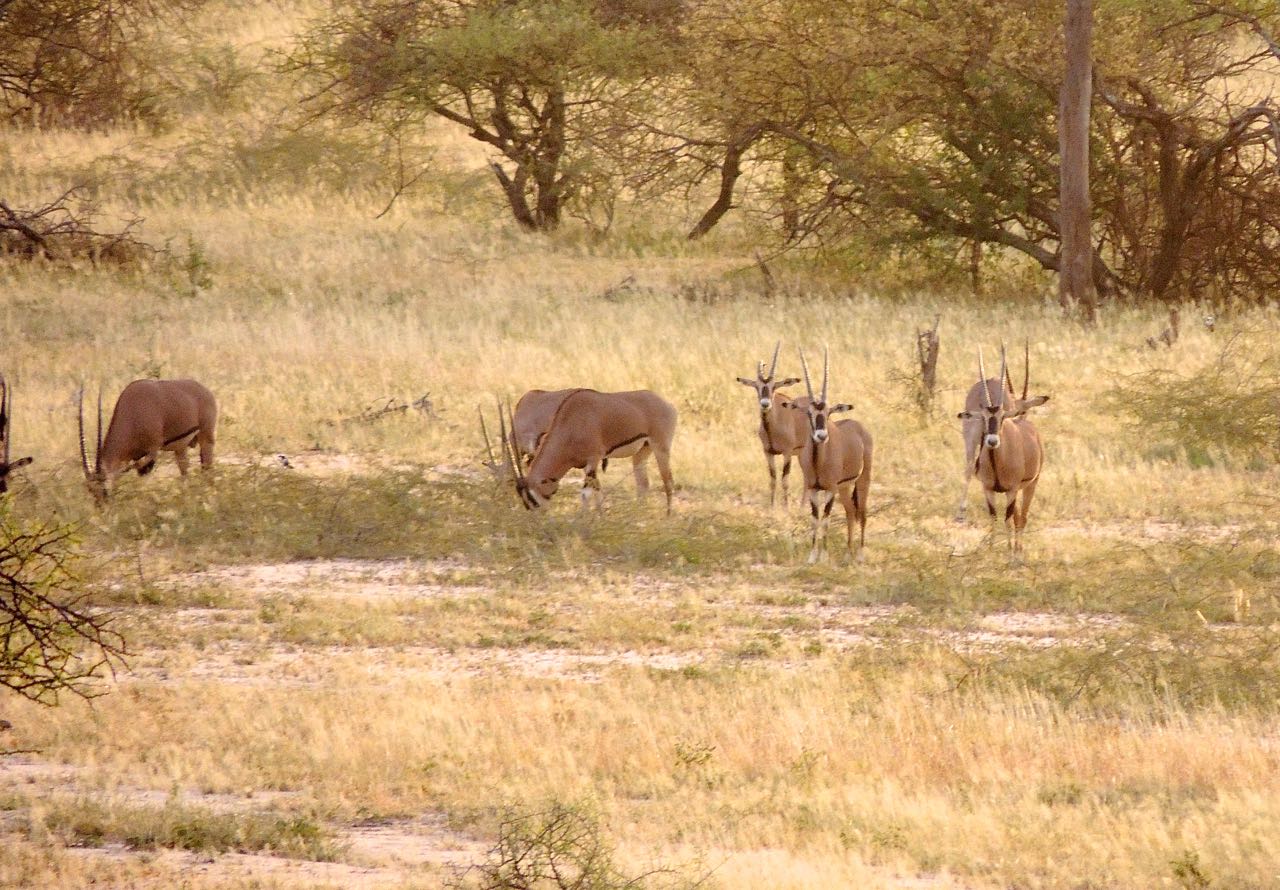 Fringe-eared Oryxes - Photo by William Young
Fringe-eared Oryxes - Photo by William Young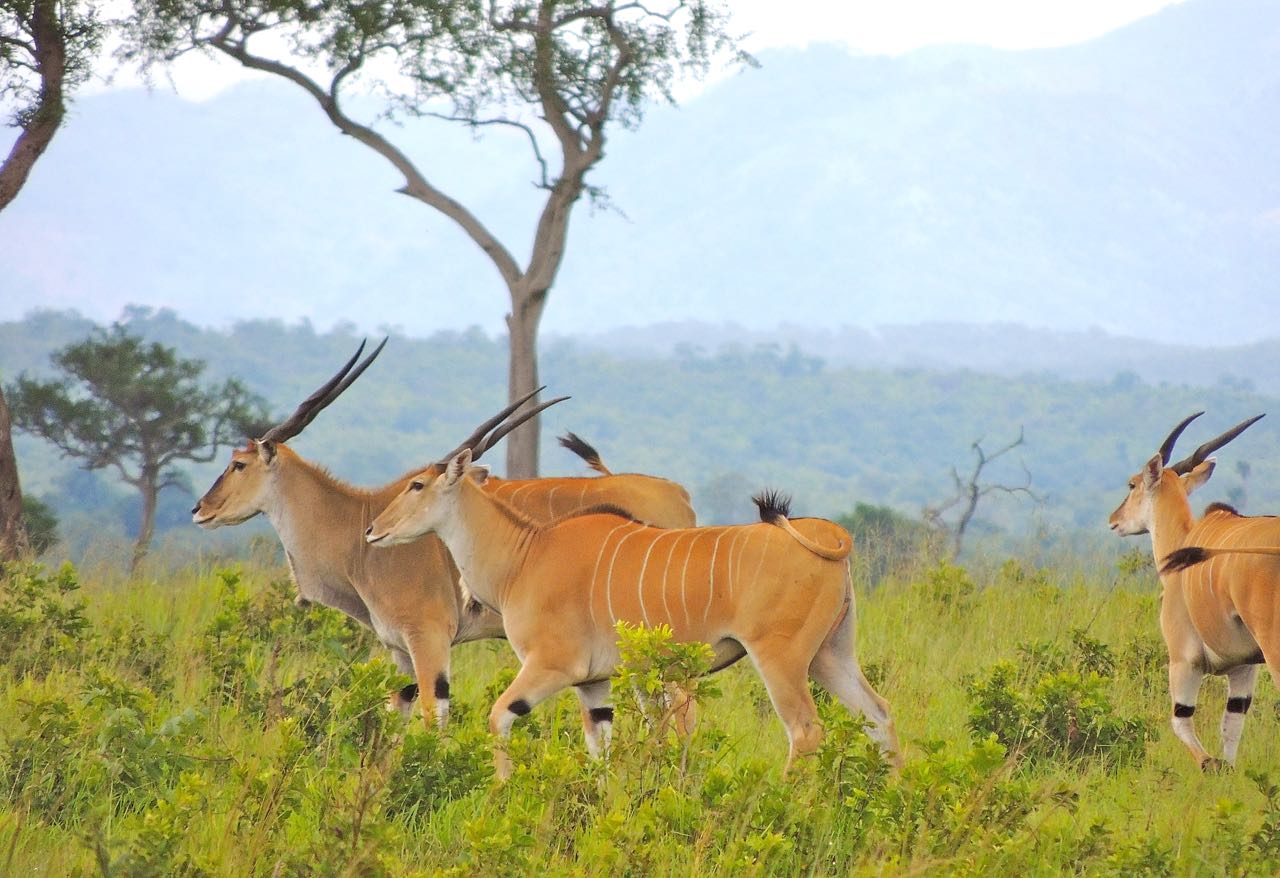 Common Elands - Photo by William Young
Common Elands - Photo by William Young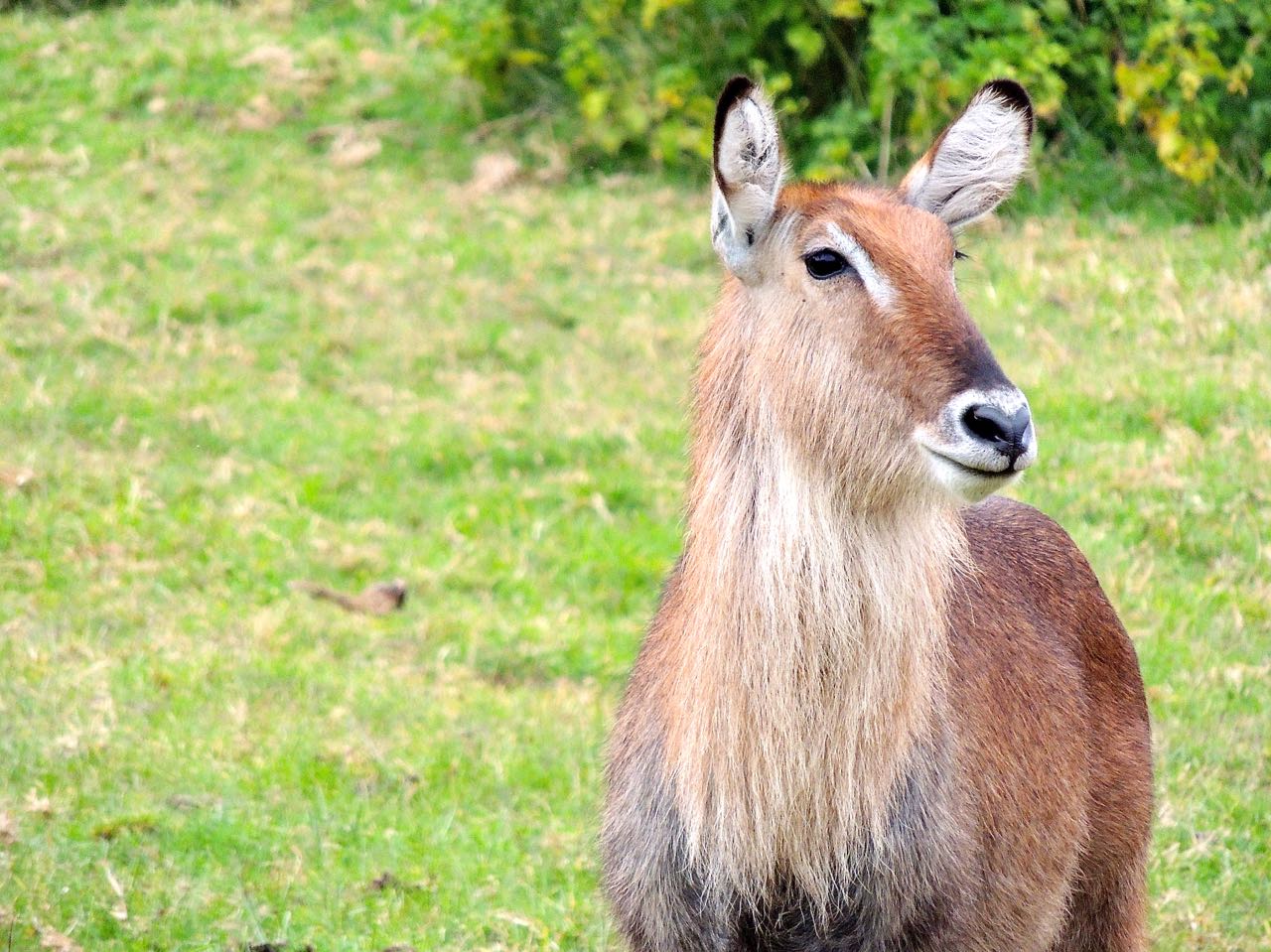 Waterbuck Female - Photo by William Young
Waterbuck Female - Photo by William Young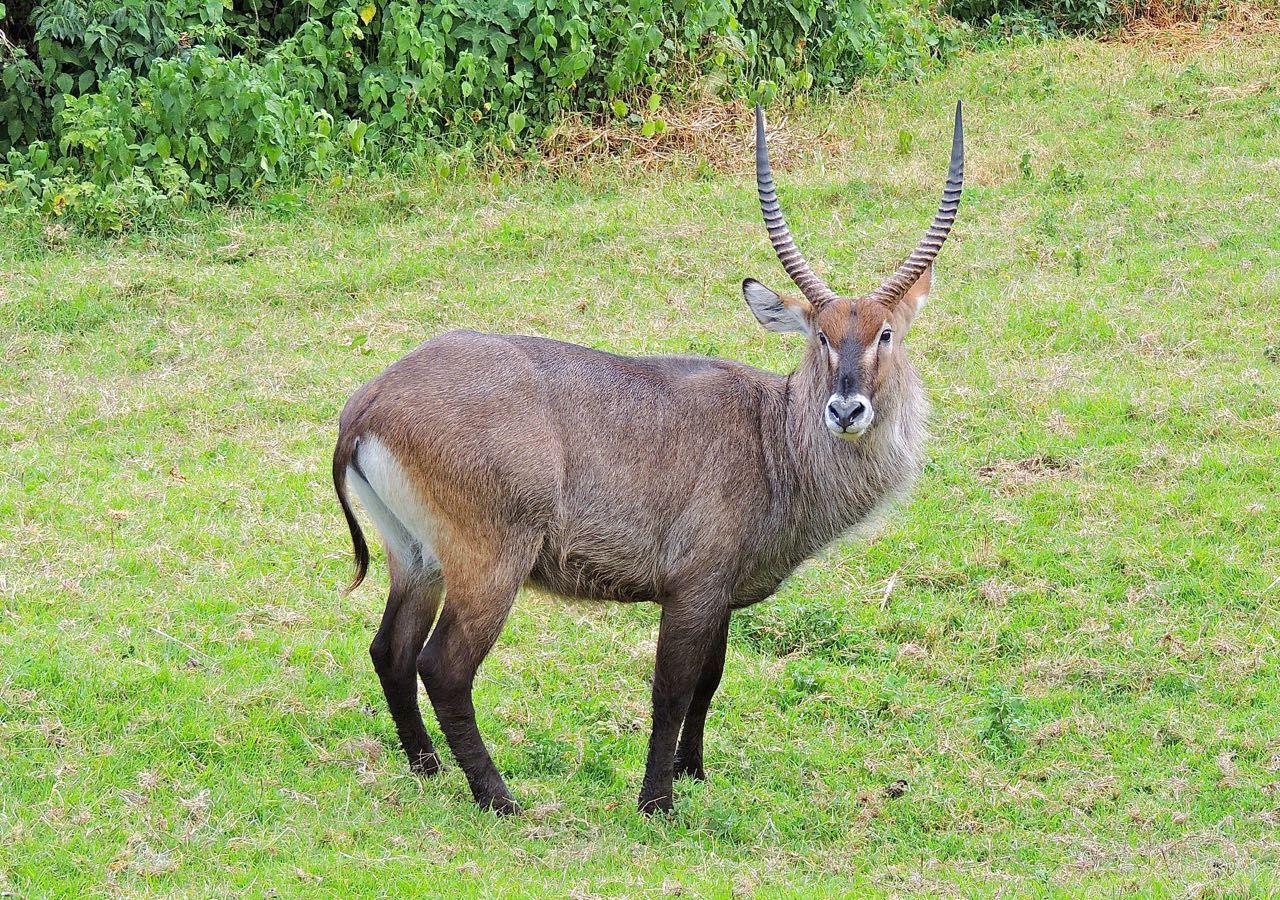 Waterbuck Male - Photo by William Young
Waterbuck Male - Photo by William Young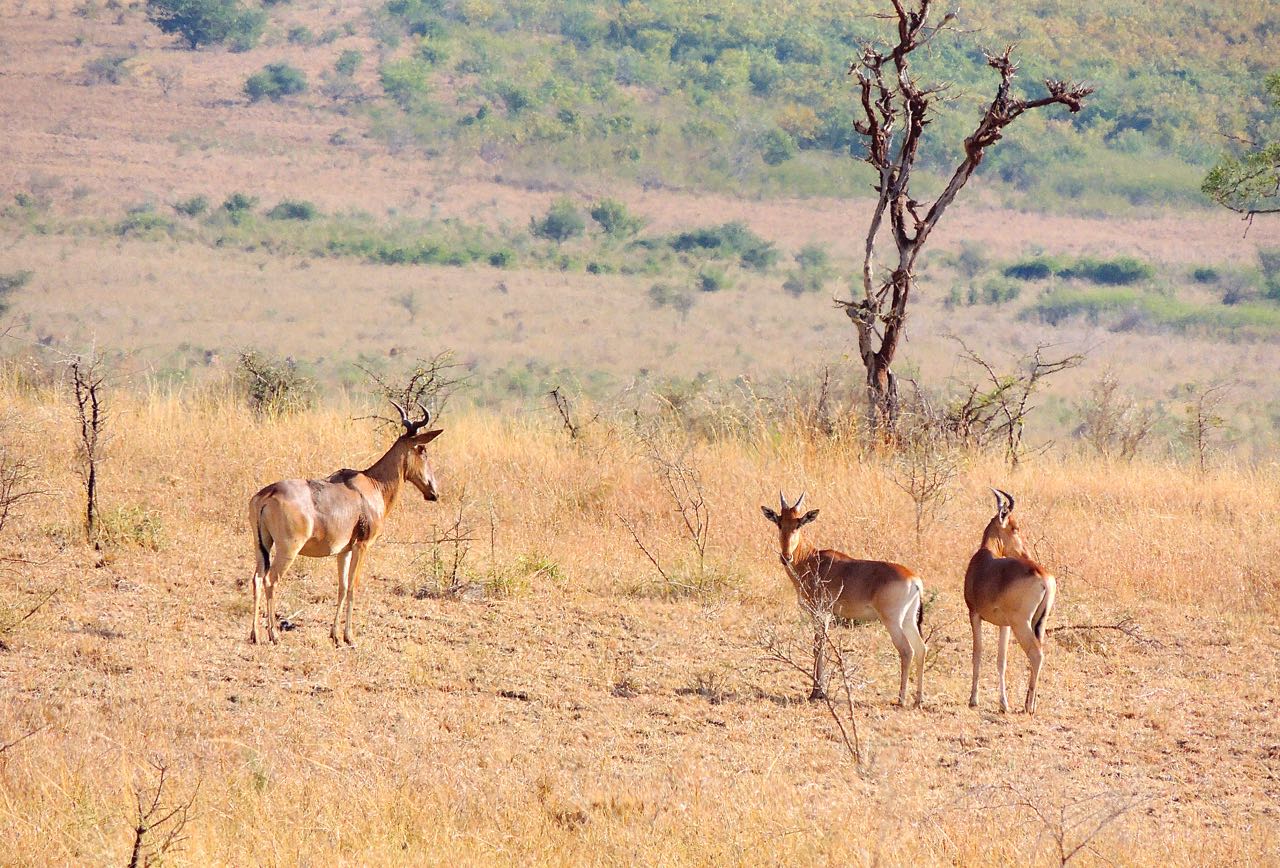 Kongoni - Photo by William Young
Kongoni - Photo by William Young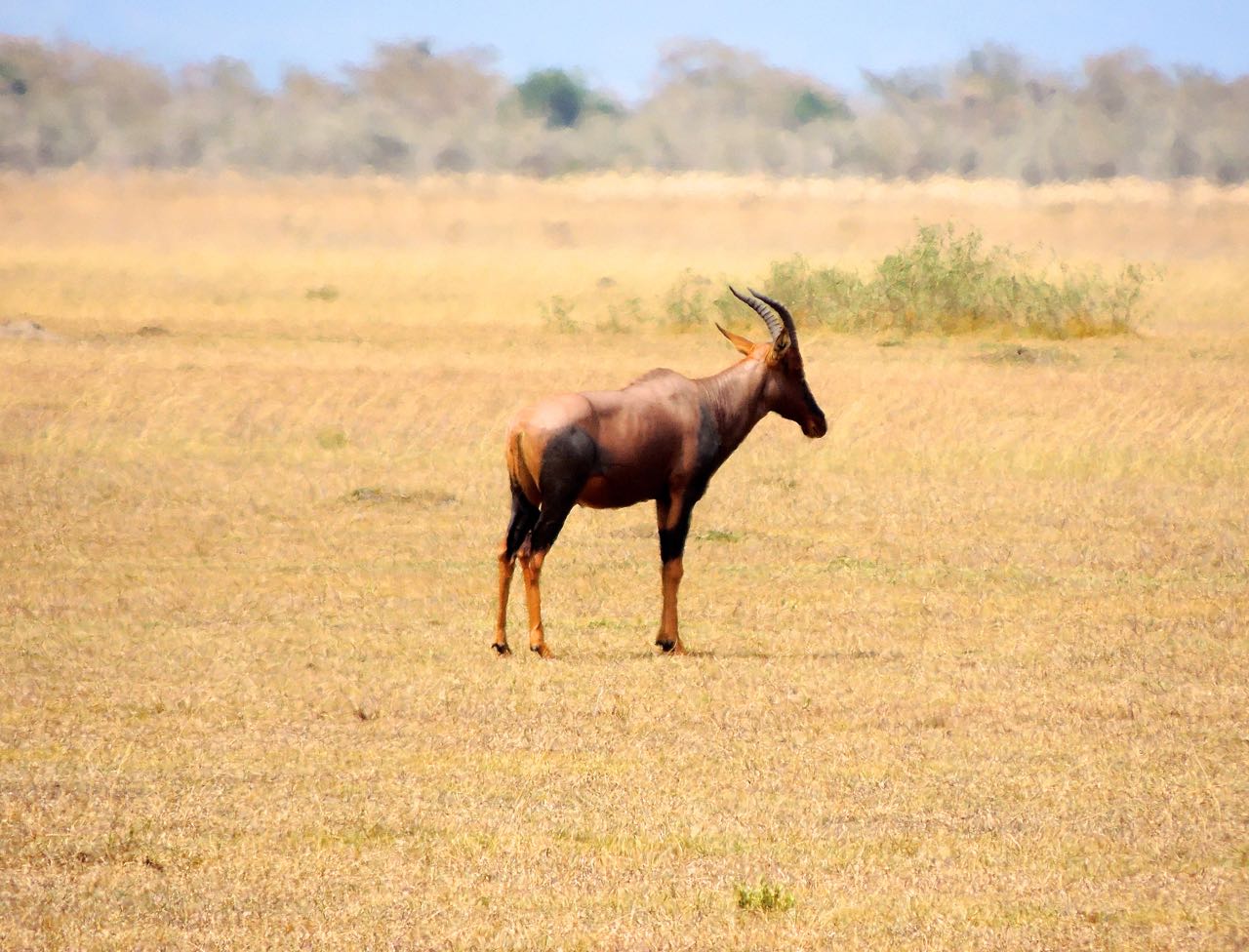 Topi - Photo by William Young
Topi - Photo by William YoungWe saw a lot of smaller antelopes. The most common was the Thomson's Gazelle, or Tommy. We saw more than 61,000 in 7 days, and 50,000 on the day with all the wildebeest. We also saw an estimated 10,000 of the larger Grant's Gazelles that day, so if you add them to the wildebeest, Tommies, Topis, and zebras, we saw a mind-boggling 193,000 ungulates from only these five species on that one day in the Serengeti. The Tommies are small, tan antelopes with a broad horizontal black stripe on their side, which makes identification fairly easy. Less easy to see is a black line that runs from the eye to the mouth. The tail is short and black, with a tan tip. The males have long ridged horns that curve backwards a little. The horns of the female are much shorter and smoother and appeared to curve a little forward. Tommies seem to have thick legs for their bodies and a low center of gravity while running. We saw a roadkill Tommy being eaten by an African Marsh-Harrier in the Serengeti. Grant's Gazelles are more than three times larger than the Tommies. We saw 10,365 on five days, which includes the 10,000 on the day in the Serengeti. They are light brown with a lighter horizontal stripe on the side that looks as if someone was trying to rub out the color of the animal and gave up after one long rub. As with the Tommies, the male Grant's have different horns than the female. The male's look like long rabbit ears on an old television, while the female's are short and straight.
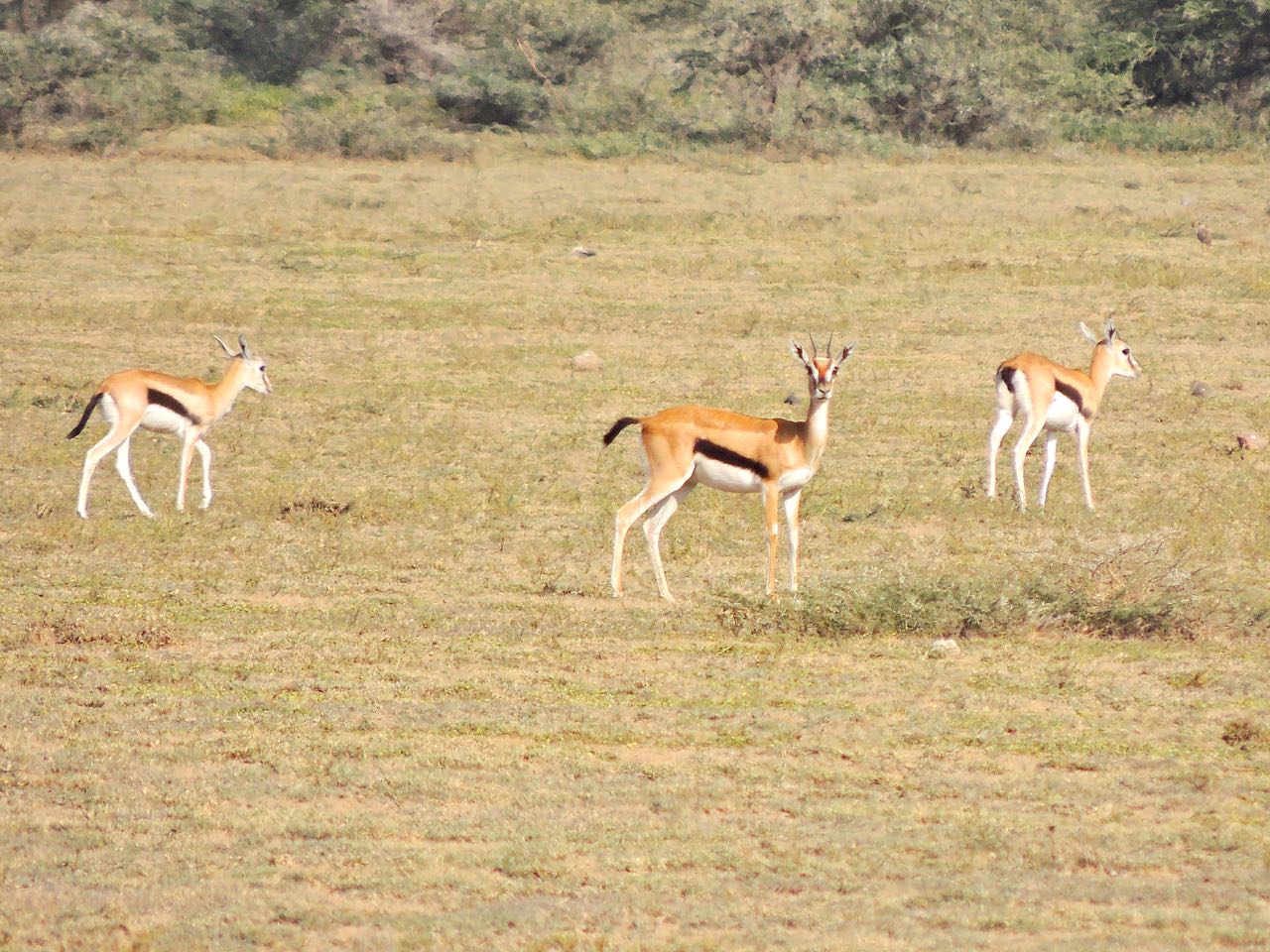 Thomson's Gazelles - Photo by William Young
Thomson's Gazelles - Photo by William Young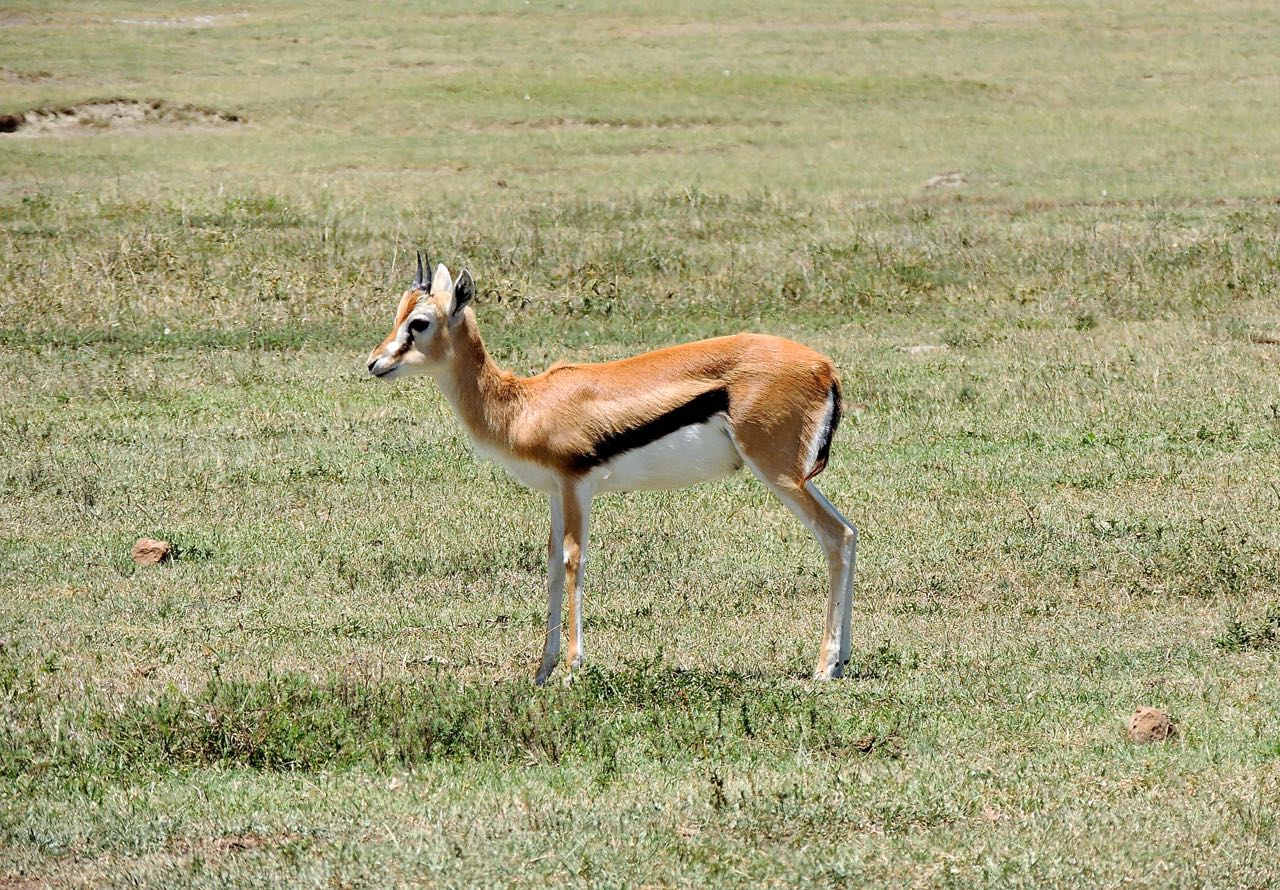 Thomson's Gazelle - Photo by William Young
Thomson's Gazelle - Photo by William YoungThe first ungulate I saw was an Impala in Serengeti National Park. We saw a large group just inside the entry gate, and Cattle Egret were flying in the midst of them. They are mostly brown, with some black-and-white on the face and ears. I thought one of the most notable characteristics was a black M on their rear end. They have a short tail, which they swish a lot. Sometimes we would see segregated groups, with one containing all males, and the other females with young. The sexes can be told apart, because the males have long S-shaped horns, while the females have no horns. At Mikumi, I took a photo of a unicorn Impala — one who was missing one of his two horns. He had probably lost it in a fight. After having lunch at Lake Manyara, we discovered that one of the group children in the park had made a drawing in the dust on the back window of our vehicle that included an impala, along with a tree and a face. The drawings were pretty good. We also saw Impalas on our final drive of the trip from Mikumi to Dar es Salaam. In all, we saw 3,750 on ten days. They run like a high jumper approaching the bar, and then they suddenly leap and cover much more ground than they would with a normal stride. This style of running, which allows for a lot of quick direction changes, undoubtedly developed as a way of avoiding predators.
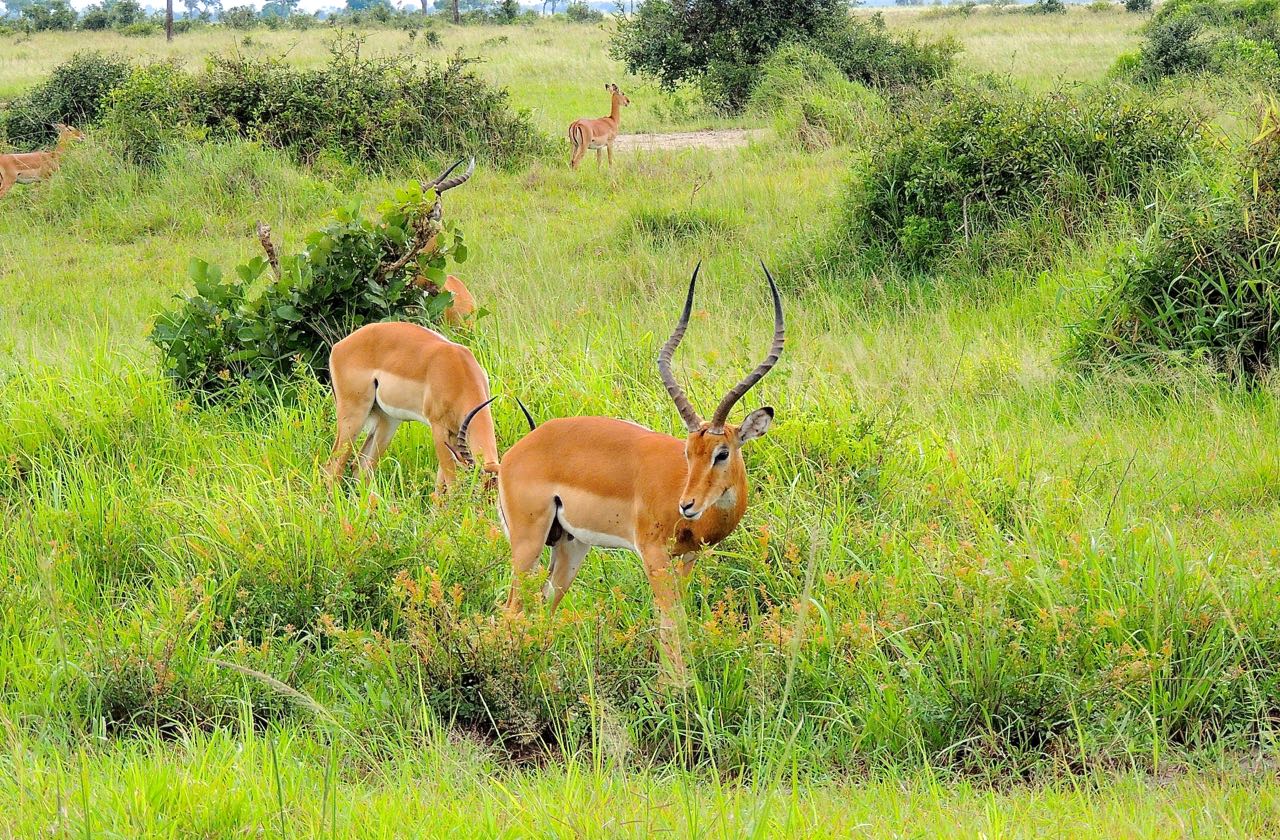 Impalas - Photo by William Young
Impalas - Photo by William Young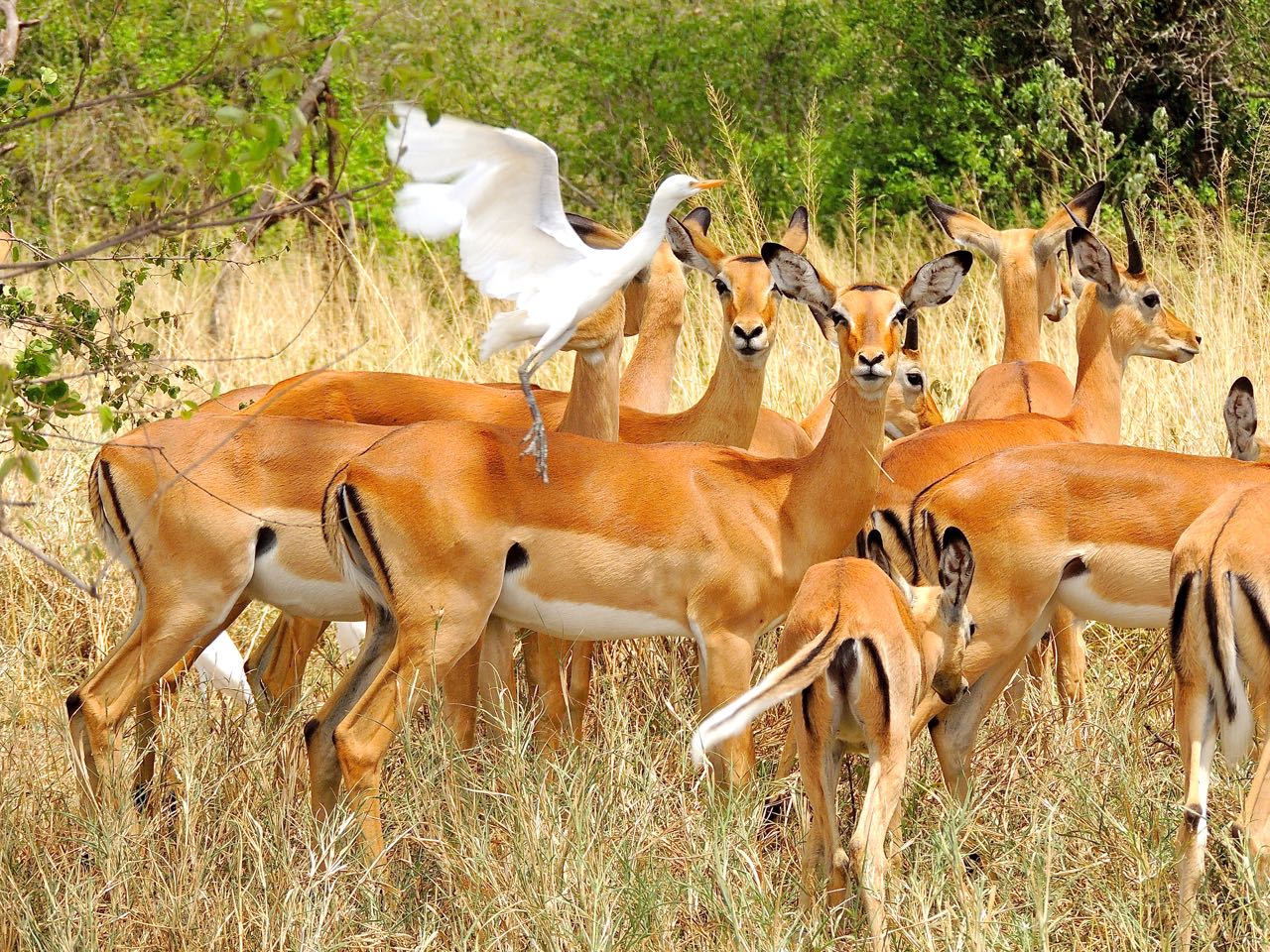 Impalas and Cattle Egret - Photo by William Young
Impalas and Cattle Egret - Photo by William Young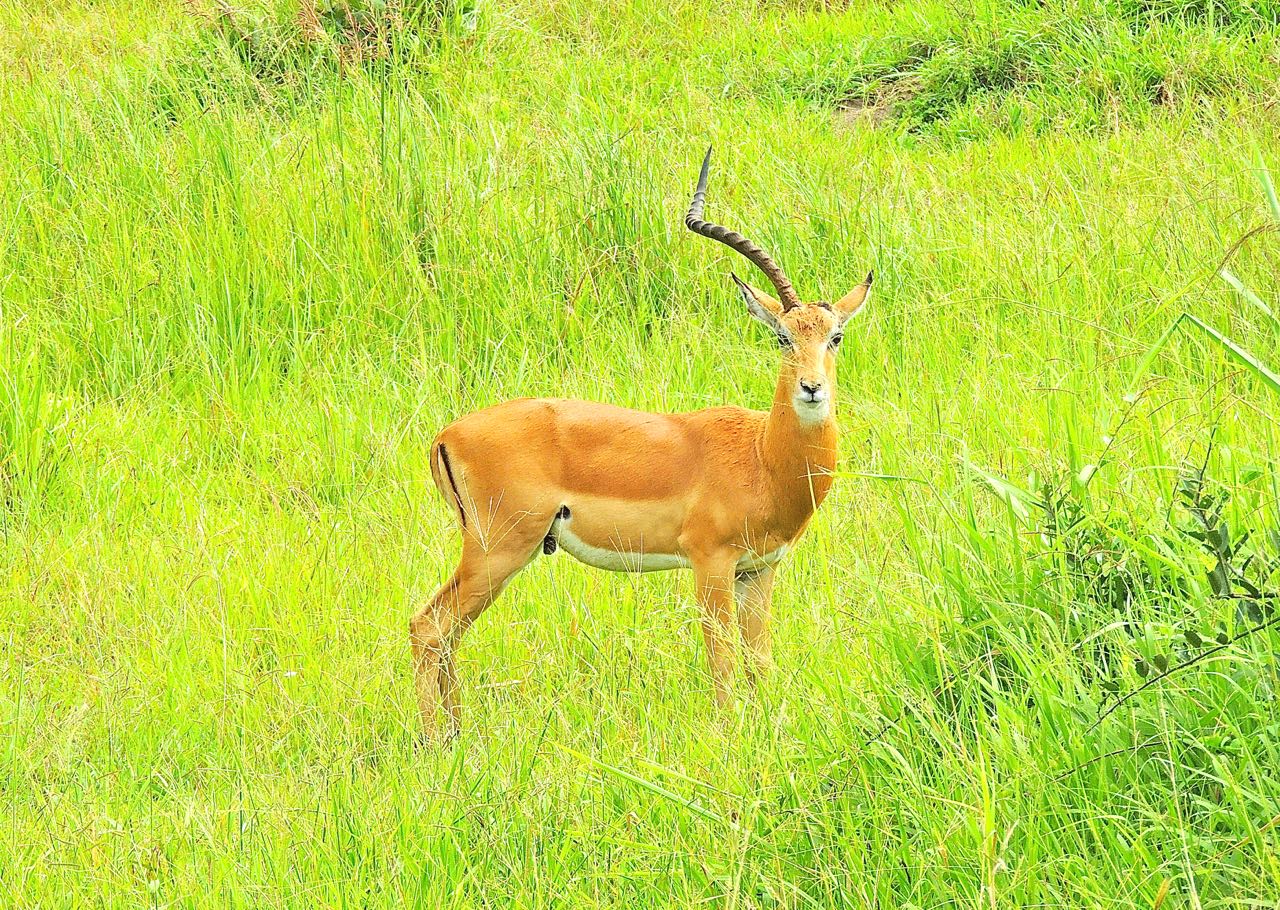 "Unicorn" Impala - Photo by William Young
"Unicorn" Impala - Photo by William Young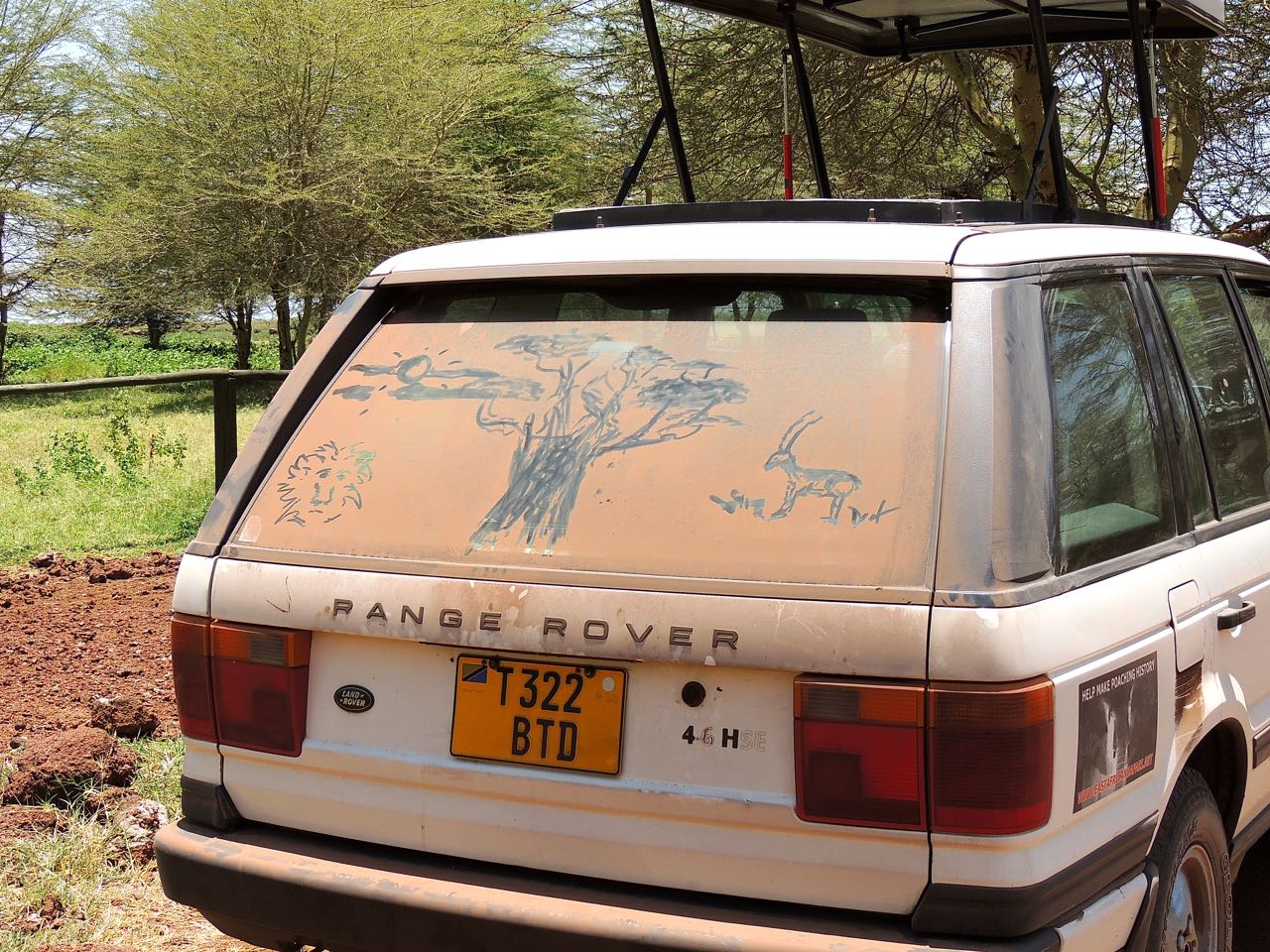 Drawings on Range Rover - Photo by William Young
Drawings on Range Rover - Photo by William YoungWe saw 3 Bohor Reedbucks on two days. They are mid-sized brown antelopes who have virtually no markings on their fur. They have a little black mark around the ear. Only the males have horns, which are short and curve forward. The Steenbok is a much smaller antelope, and its big ears are one of its most distinguishing characteristics. We saw three on three days. We saw 27 Bushbucks on four days, with most in Arusha National Park. The females are a warm brown, while the males look darker. The males are the only ones with horns, which bend and turn upward. Both sexes have a horizontal white line at the base of the neck and a horizontal row of white dots on the side. Kirk's Dikdiks are tiny, weighing only six to 14 pounds. We saw 10 on four days. They are shy, so it is difficult to look at them long. We saw them at Serengeti National Park, Arusha National Park, and Mkomazi. I saw one Red Forest Duiker, who is a forest antelope. It was near the entrance to the park at Udzungwa. Usually they are shy, but this one was out on a grassy path feeding. It is small and dark reddish-brown, with some black on the face. Martin saw a couple of small forest antelopes called Sunis in Arusha National Park, but I did not. They are the kind of antelope that gives you a split second look before they vanish into the undergrowth.
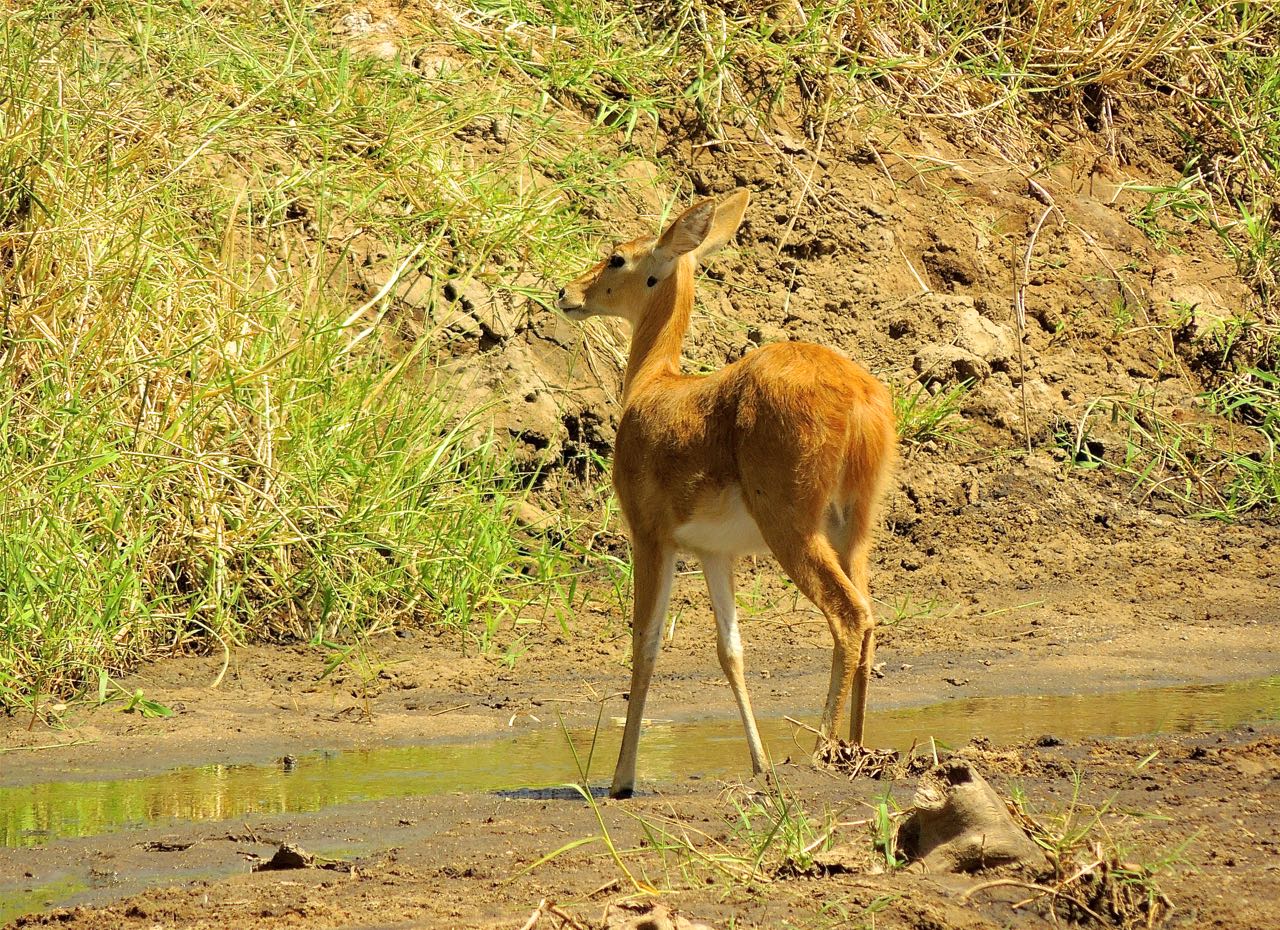 Bohor Reedbuck - Photo by William Young
Bohor Reedbuck - Photo by William Young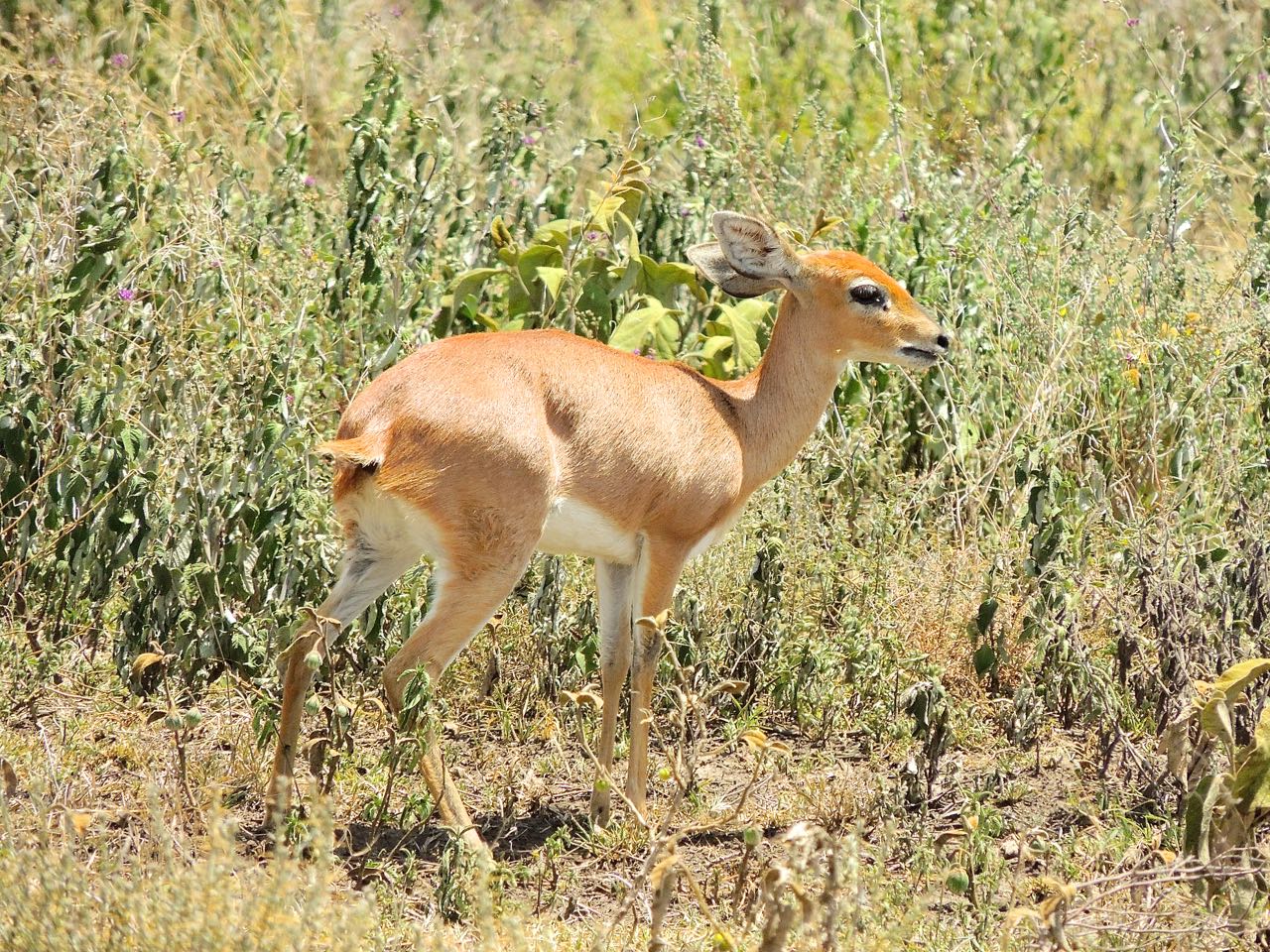 Steenbok - Photo by William Young
Steenbok - Photo by William Young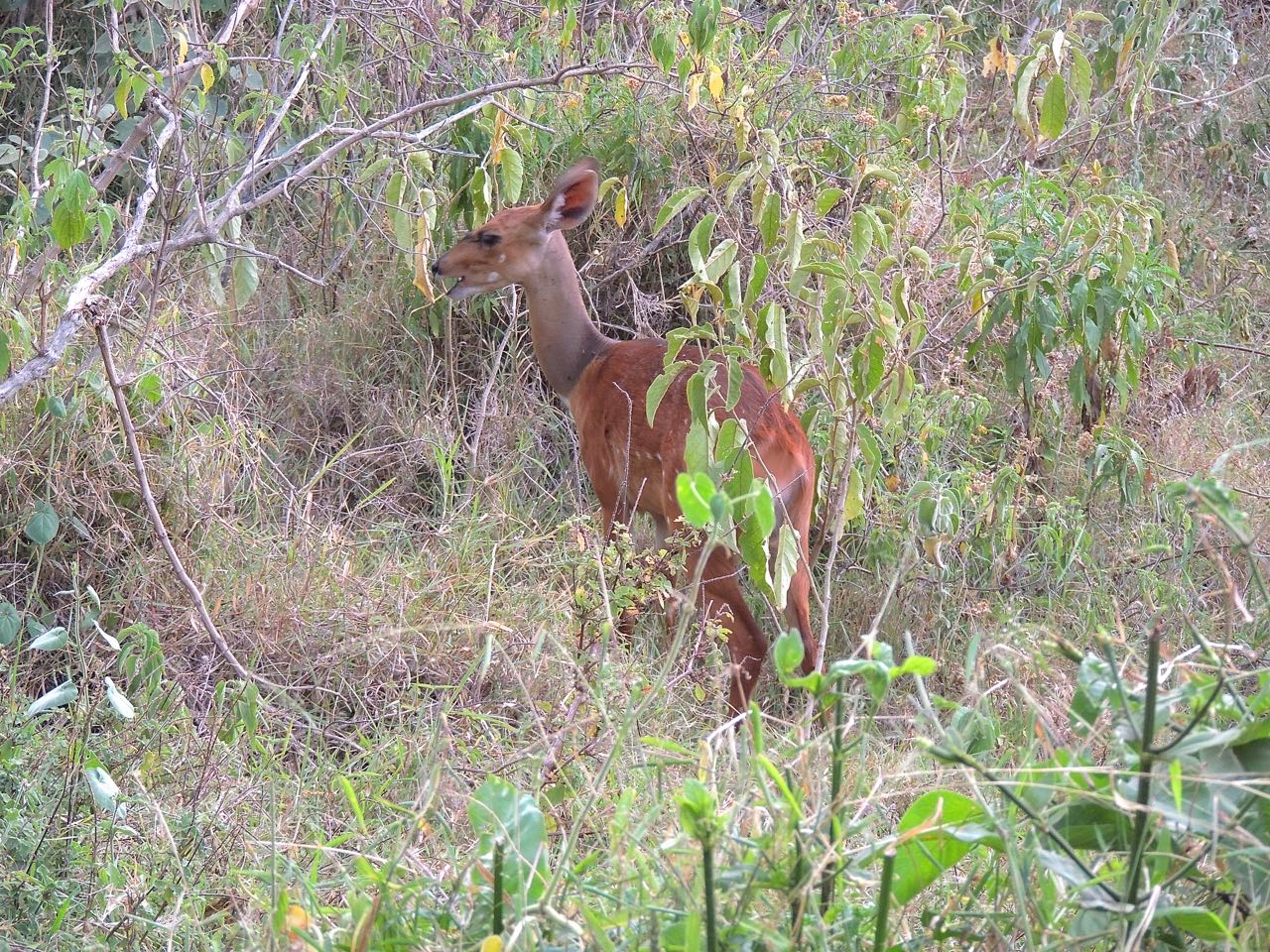 Bushbuck - Photo by William Young
Bushbuck - Photo by William Young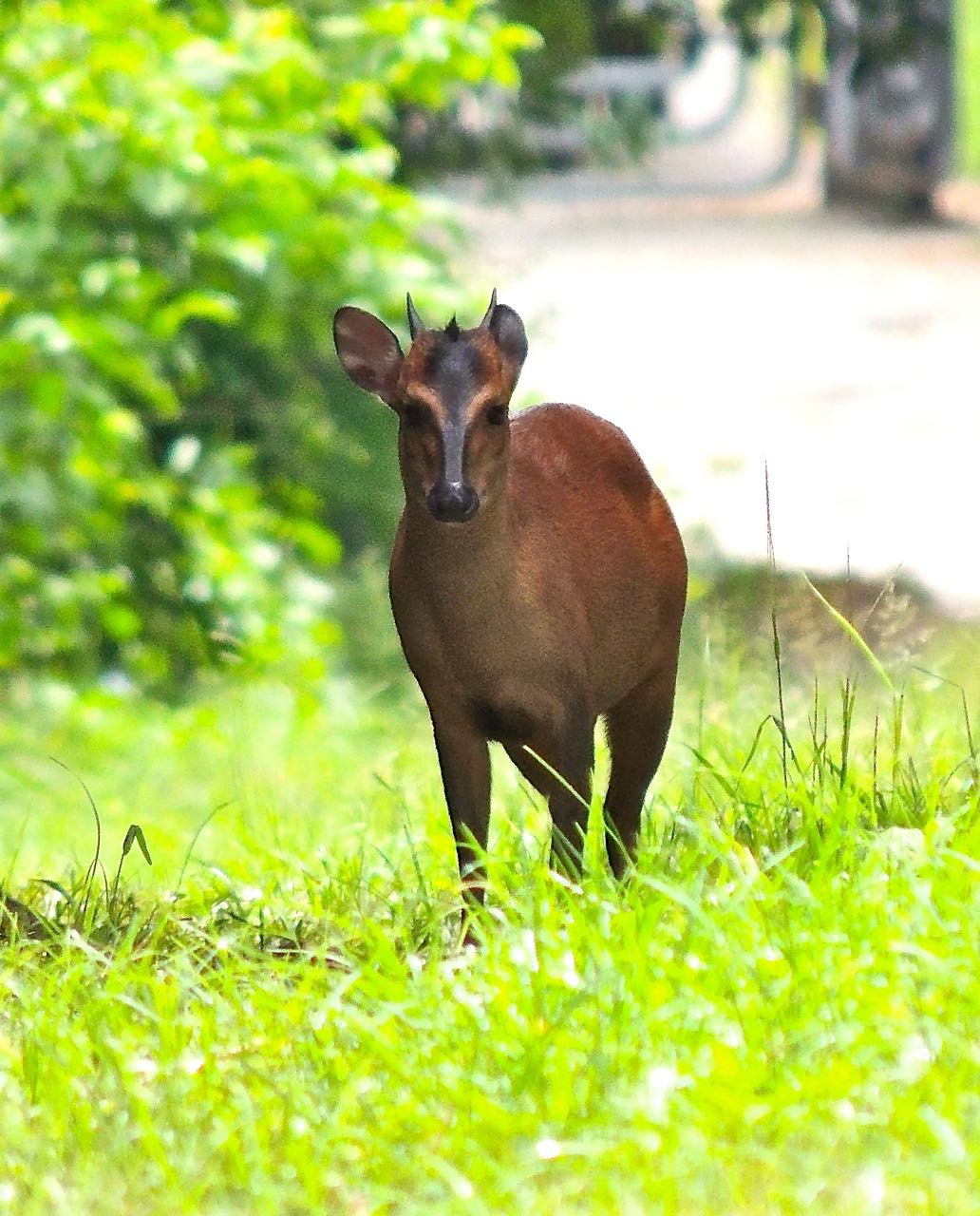 Red Forest Duiker - Photo by William Young
Red Forest Duiker - Photo by William YoungThe African (Cape) Buffalo has a reputation for being one of the meanest mammals in Tanzania. We sometimes went for walks in parks with guards carrying AK-47's in case we ran into one. We saw an estimated 1,230 on ten days, and none of them looked happy. They look like big sullen bulls. We saw about 600 at Ngorongoro, and another 500 during our two days at Mikumi. They are dark brown, and the male is much bigger than the female, attaining weights of almost a ton, while the "smaller" female can weigh up to a half a ton. The female has tiny cow horns, while the male's heavy horns go down to the side and then curve back a bit. We never saw them doing much besides eating vegetation and looking mean.
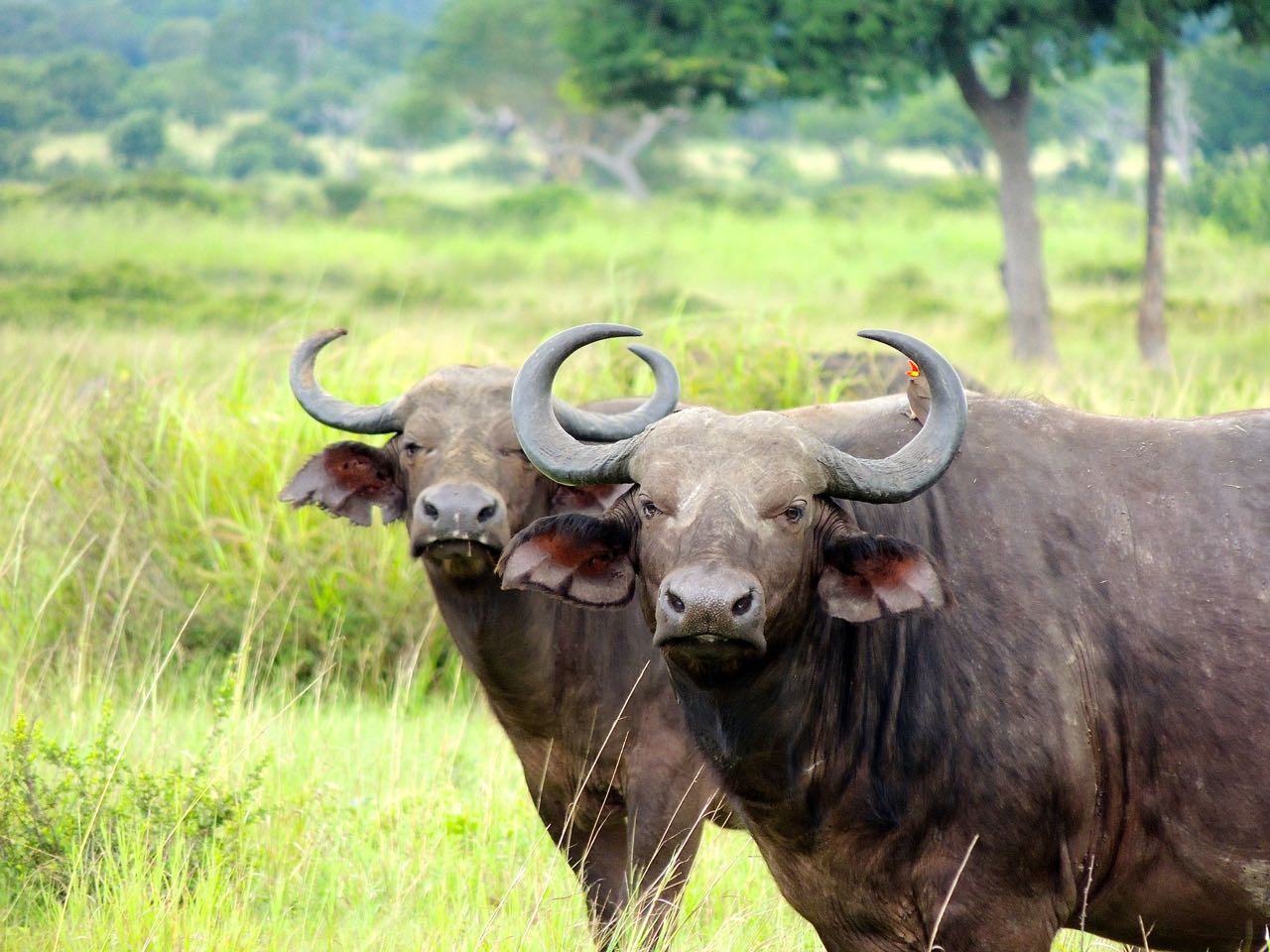 African (Cape) Buffalo - Photo by William Young
African (Cape) Buffalo - Photo by William Young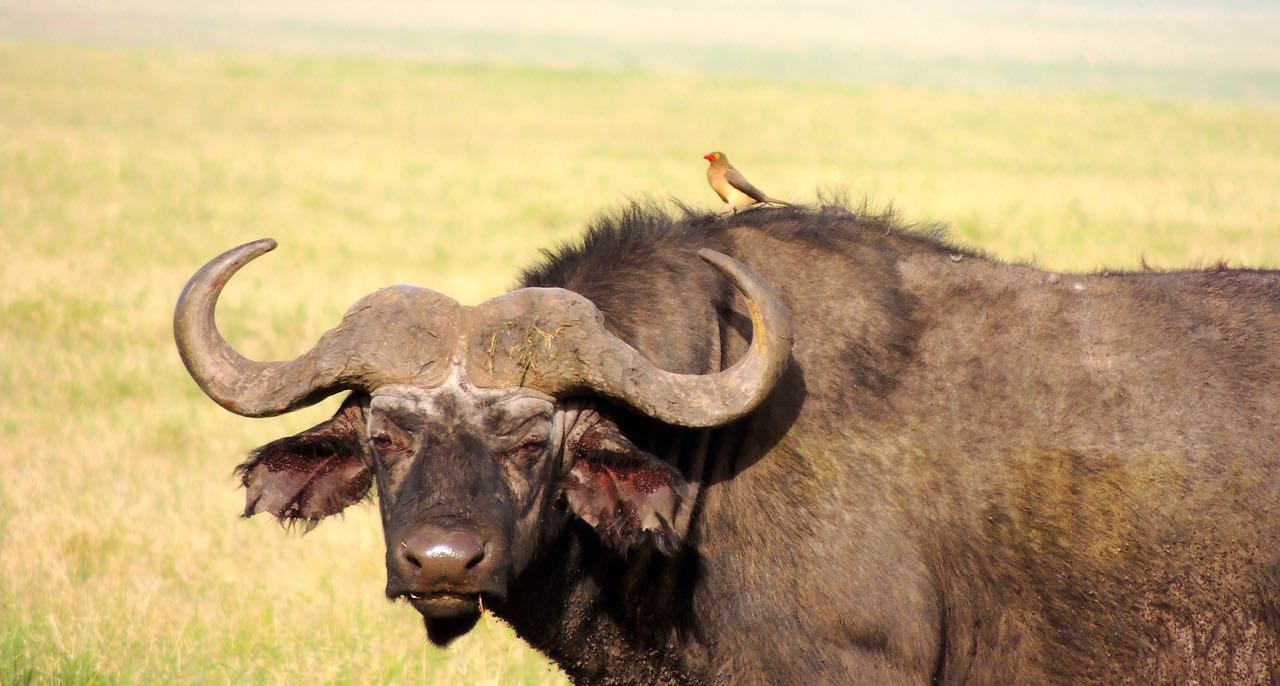 African (Cape) Buffalo and Red-billed Oxpecker - Photo by William Young
African (Cape) Buffalo and Red-billed Oxpecker - Photo by William YoungDespite the Cape Buffalo's reputation for being dangerous, more people are killed by Hippopotami than any other animal. Hippos are like giant pigs who weigh between one and two tons. We saw 129 on five days. Most were floating in the water in their "50 shapes of gray formation". They stay almost entirely submerged to keep their skin cool and moist. At Lake Manyara, we saw some who were on dry land next to the water. I made a fairly stupid comment when I said, "There's a hippo on the ground." I should have said that the hippo was out of the water, because seeing them on the ground is much more likely than seeing them in the air. Sometimes when they are floating, birds used them as stepping stones. At various times, we saw a Black Crake, a Common Moorhen, and a Common Sandpiper do this. Hippos tend to come out of the water at night, and that is when most of the fatalities occur. We saw them at Serengeti, Ngorongoro, and Lake Manyara. We also saw a dozen floating at Mikumi. They have long tubular ears that stick out from the side of their head. Their eyes have big folds of pink fleshy skin around them that look like the suggestive parts of some of Georgia O'Keeffe's paintings. The gray snout is broad and rounded, with nasty bristles. The fleshy ears have hair growing on them. Some of the hippos moan, while others make snorting sounds as they blow water from their nose.
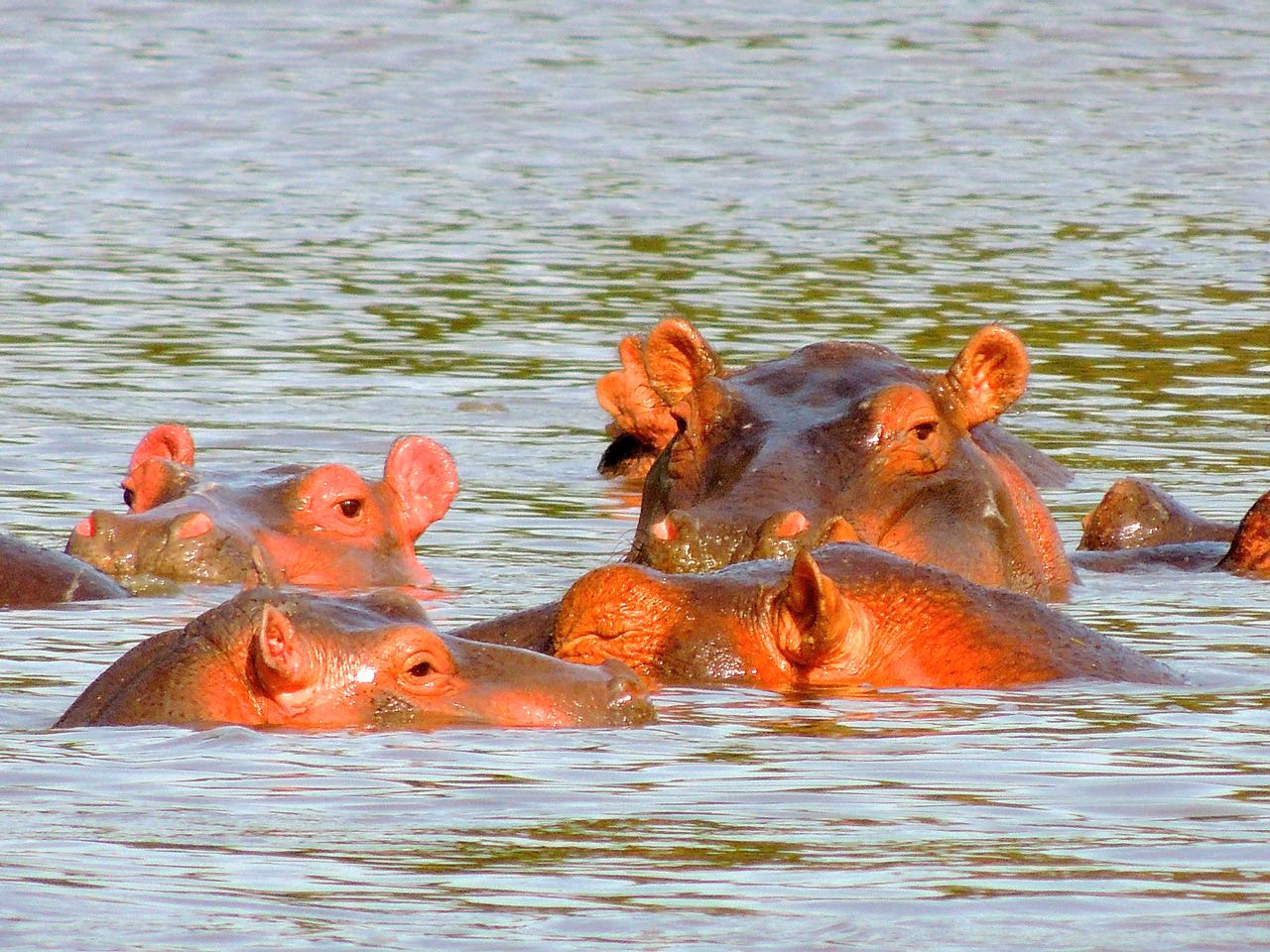 Hippopotami - Photo by William Young
Hippopotami - Photo by William Young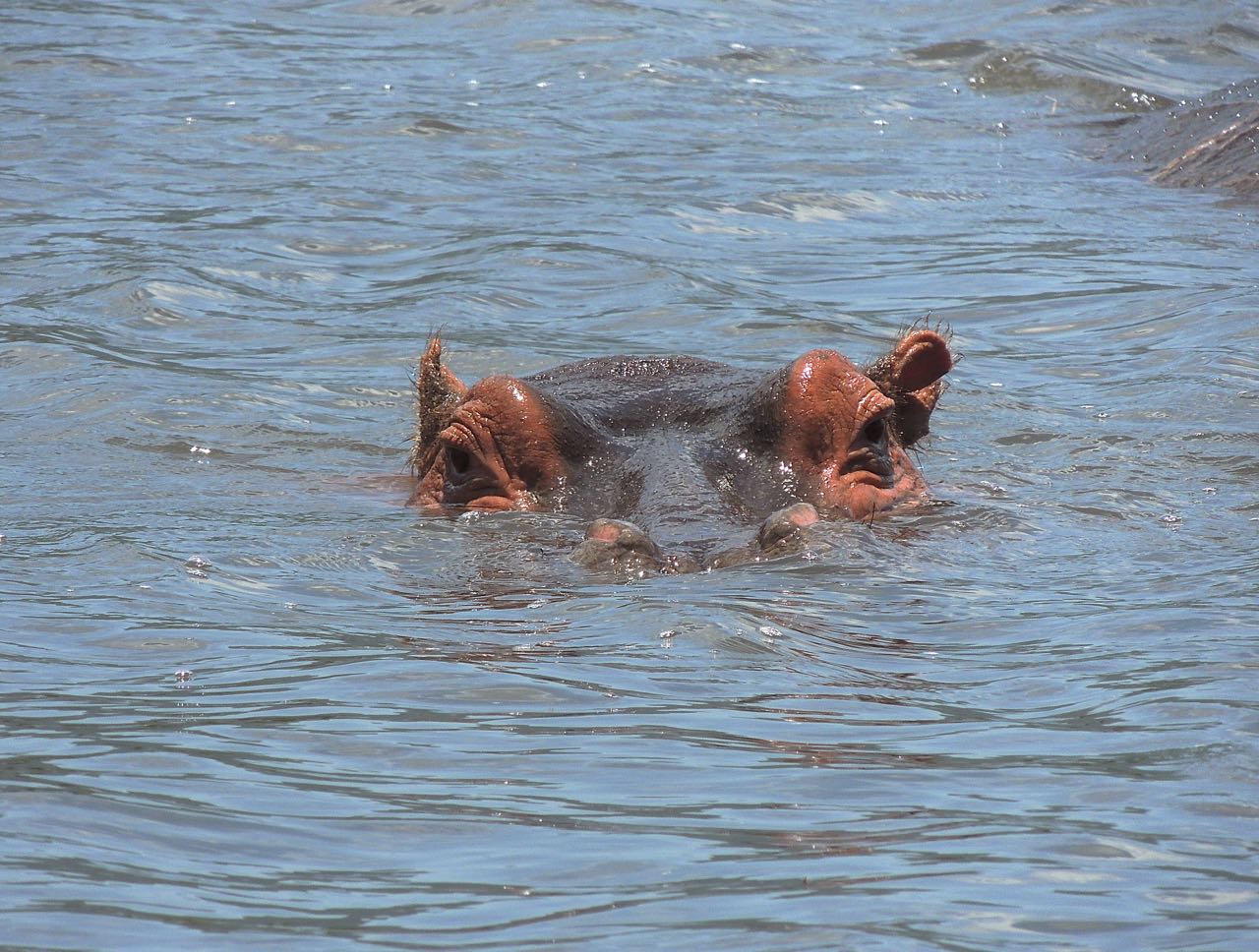 Hippopotamus - Photo by William Young
Hippopotamus - Photo by William Young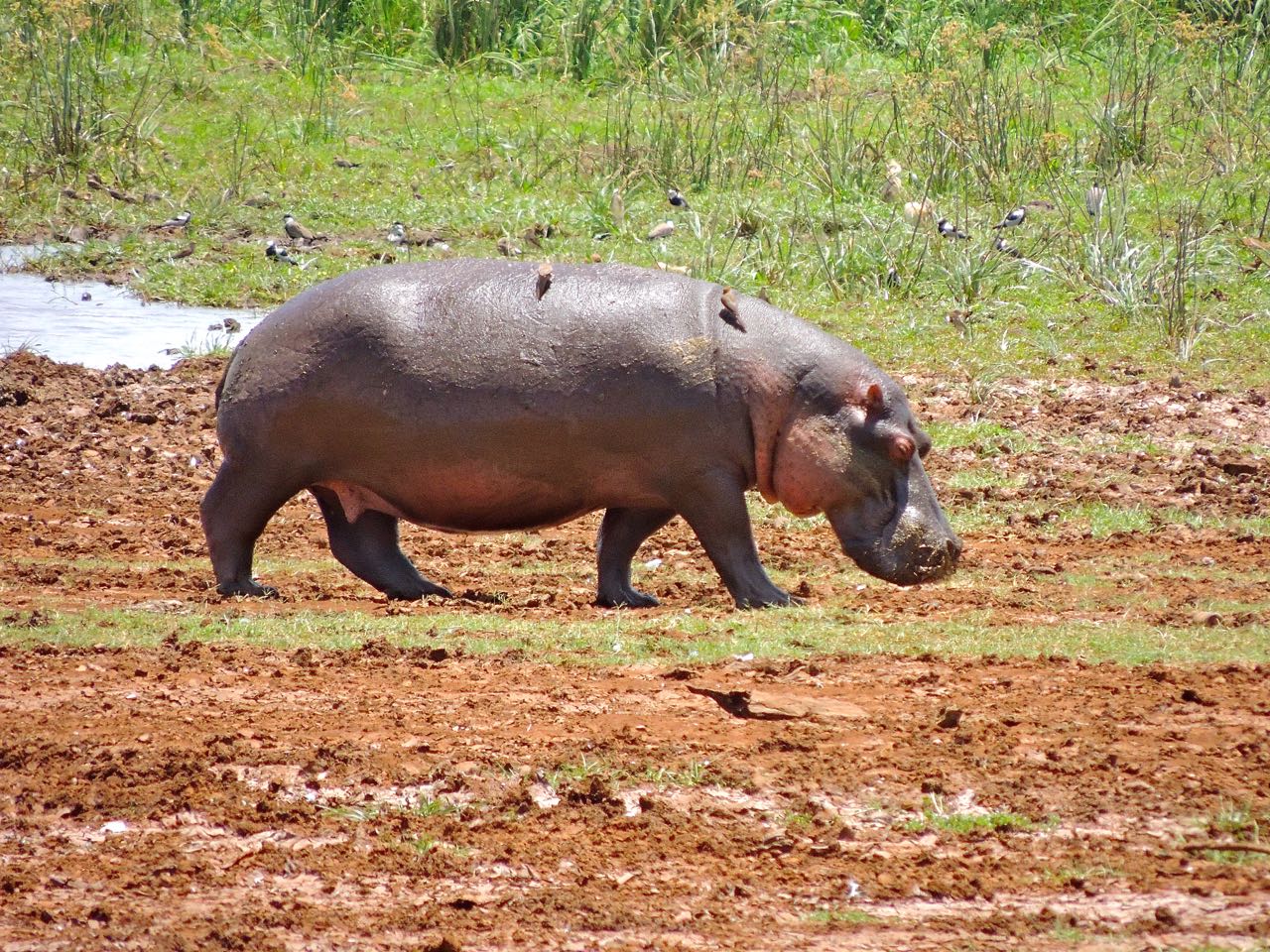 Hippopotamus - Photo by William Young
Hippopotamus - Photo by William Young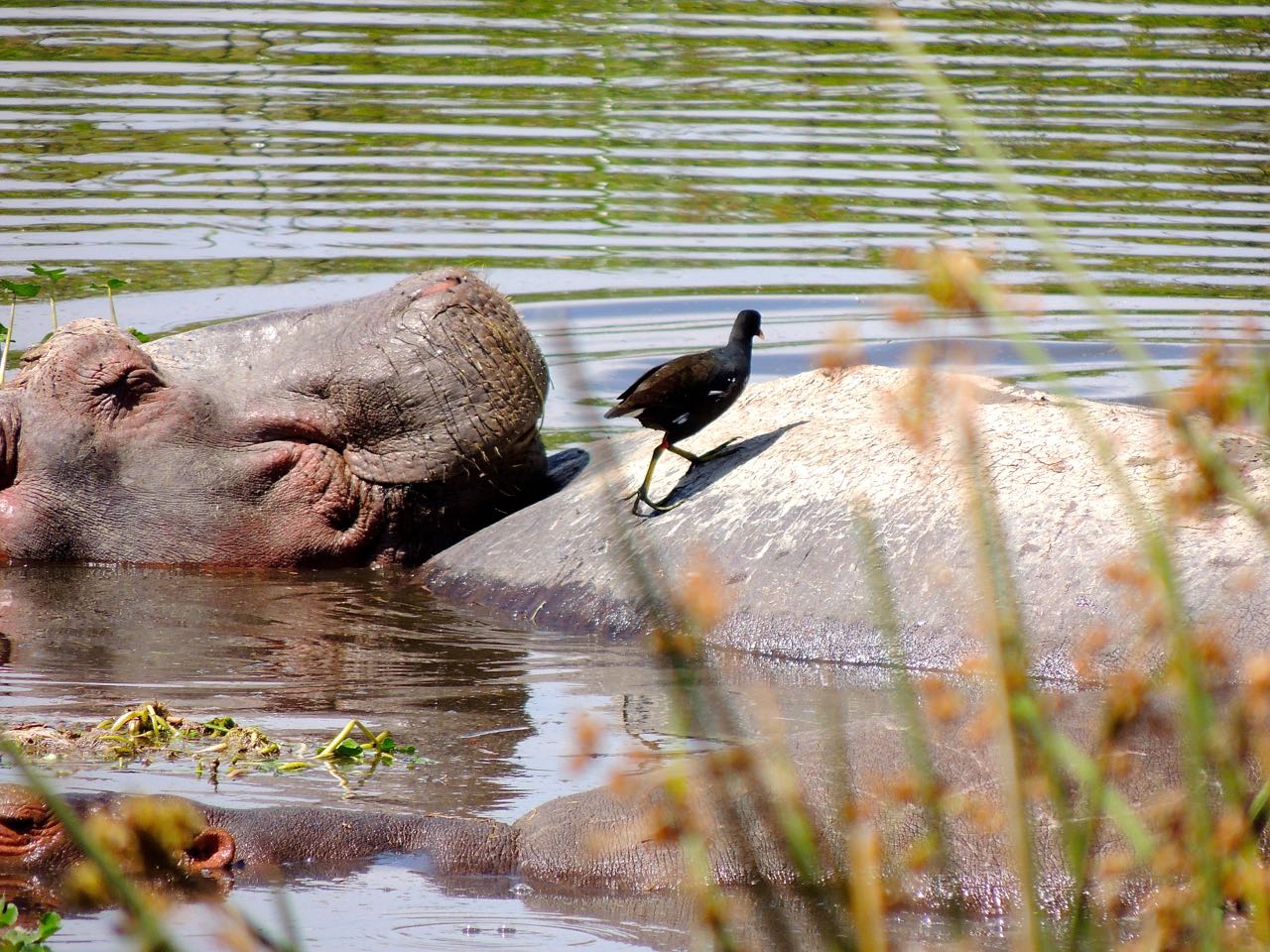 Hippopotami and Common Moorhen - Photo by William Young
Hippopotami and Common Moorhen - Photo by William Young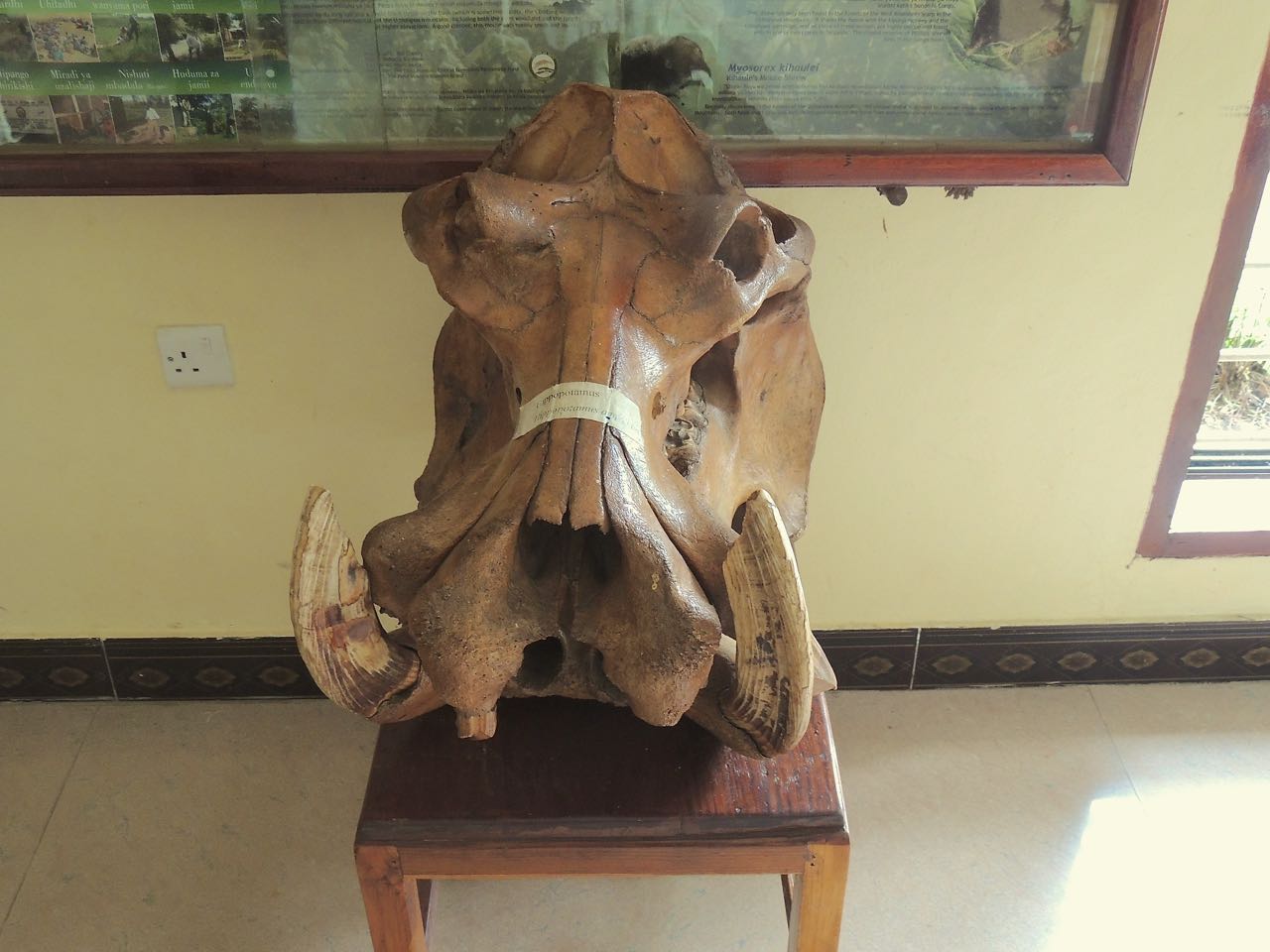 Hippopotamus Skull - Photo by William Young
Hippopotamus Skull - Photo by William YoungWe saw 406 Common Warthogs on 15 days. Only zebras and giraffes were seen on more days. They are hefty pigs, with the males weighing up to 240 pounds and the females 150. They have a large fleshy area on each side of their face, which is responsible for their name. They have nasty looking tusks, which are actually elongated canine teeth. They have a blunt black snout and a reddish mane. At Tarangire, we saw a mother with young, and she was aggressively stamping the ground while looking at us. We had stopped our vehicle to look at a raptor in the tree and were not especially close to her. Warthogs have a black tassel at the end of their medium length tail. They sometimes trot with their tail sticking straight up, like an antenna. Their running is powerful and low to the ground.
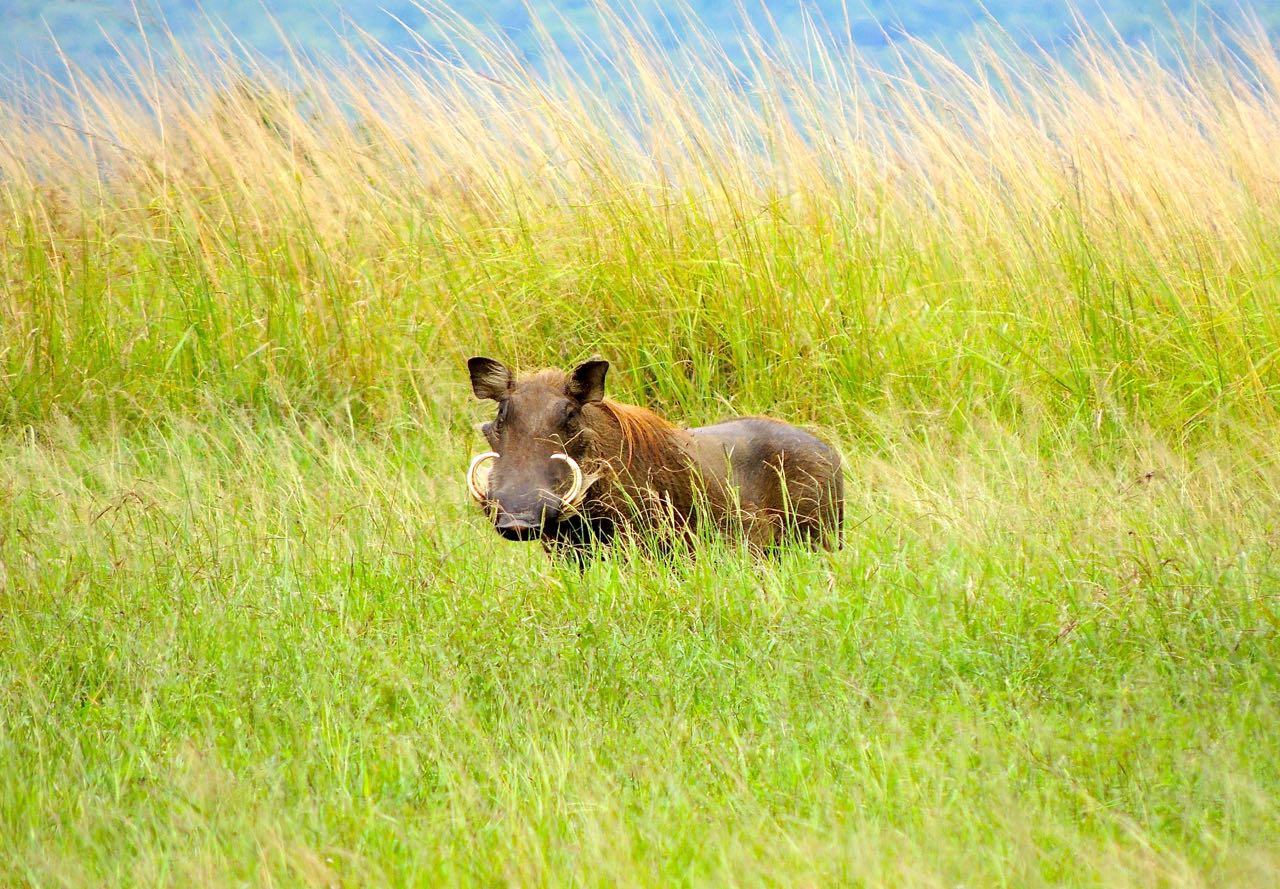 Common Warthog - Photo by William Young
Common Warthog - Photo by William YoungThe Common Giraffe is the national animal of Tanzania. We saw an estimated 450 on 16 days, and they often were close to the road. I took a photo of one that shows the reddish mane running down its long neck. Giraffes also have a black tassel on the end of their tail. They are one of the only animals to be born with horns. They have large pointed ears that stick straight out from their head, and they wiggle their ears a lot. They can reach very high vegetation that other non-climbing mammals cannot. When they chew, their teeth tend to move from side-to-side rather than up and down. They did not seem to care about the thorns in acacia trees and shrubs while they were eating. They sometimes would be standing in or near the road as we drove up. When they saw us, they would break into a trot. They look as if they can move quickly, but because not all the parts of their body are in sync when they are doing it, they appear to be running in slow motion. When they want to change direction, they look like a football player trying to do a fake by leaning one way and then running the other way. In general, they did not seem shy, and they tolerated reasonably close approach.
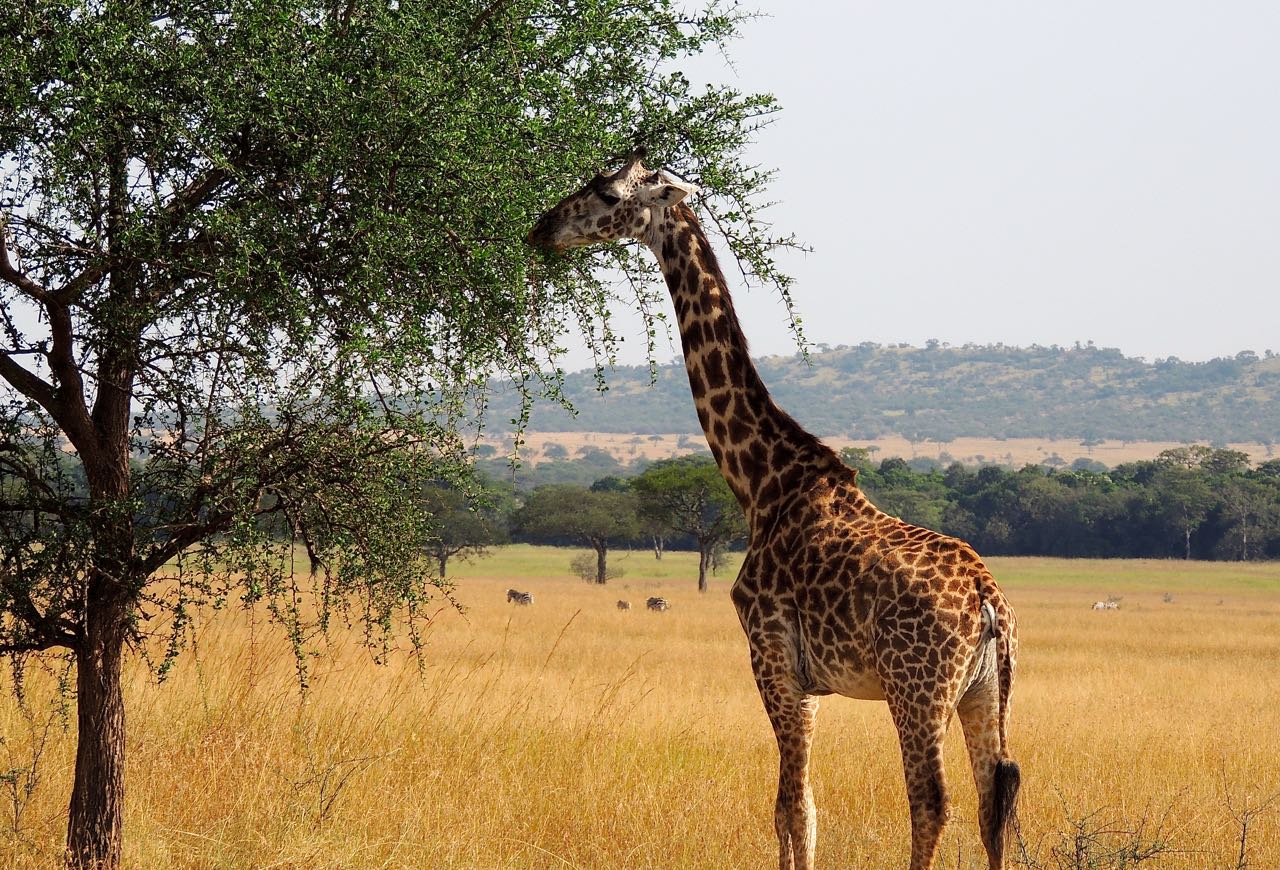 Common Giraffe - Photo by William Young
Common Giraffe - Photo by William Young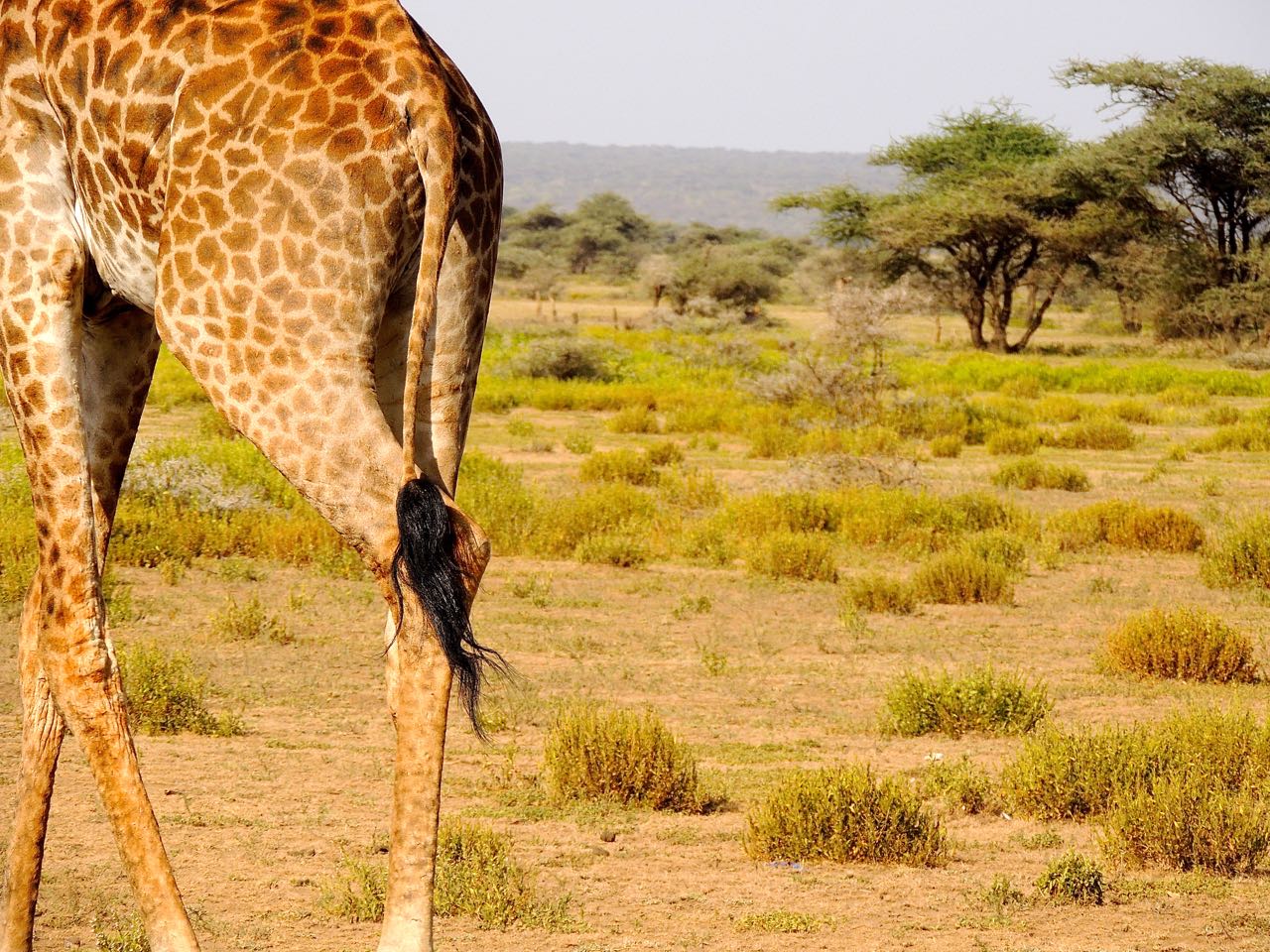 Common Giraffe Tail - Photo by William Young
Common Giraffe Tail - Photo by William Young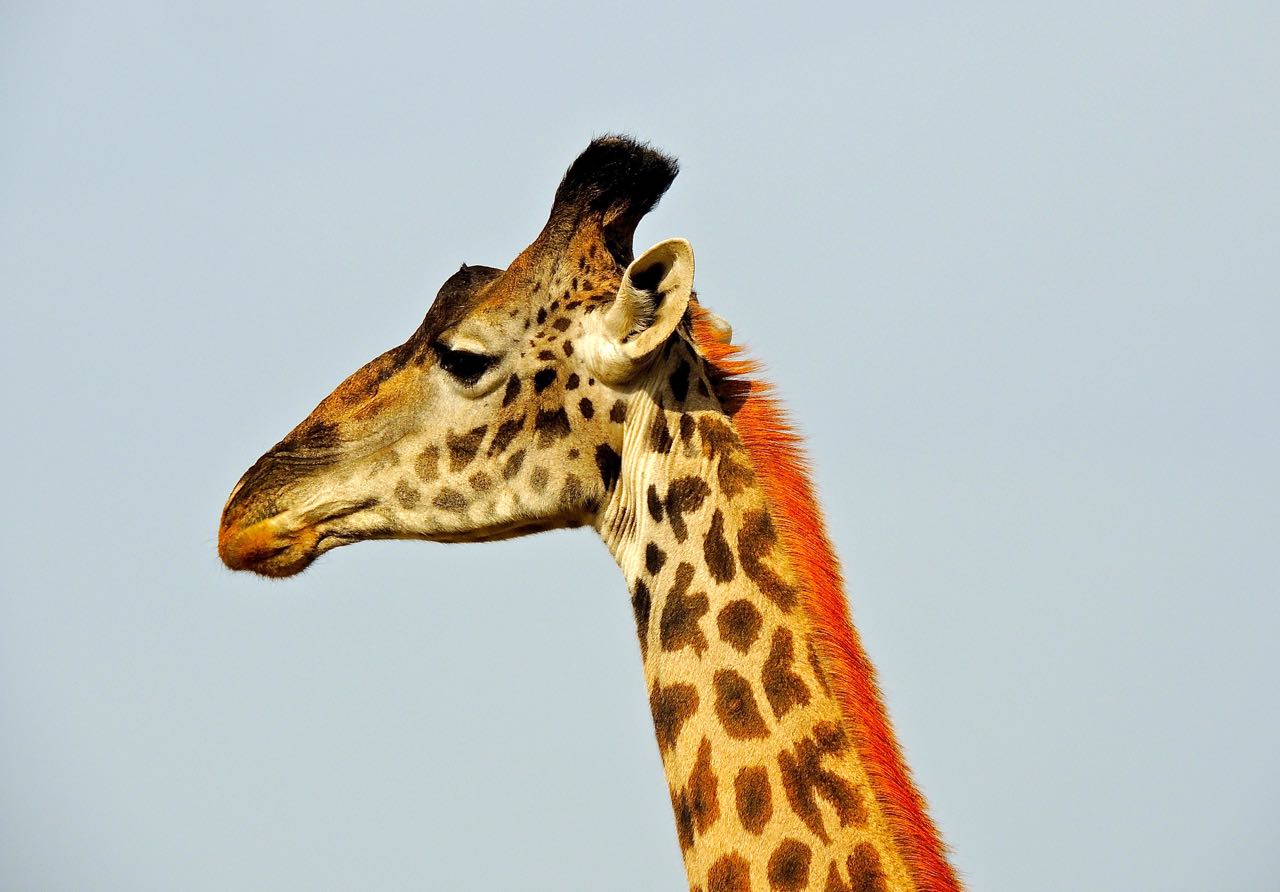 Common Giraffe - Photo by William Young
Common Giraffe - Photo by William Young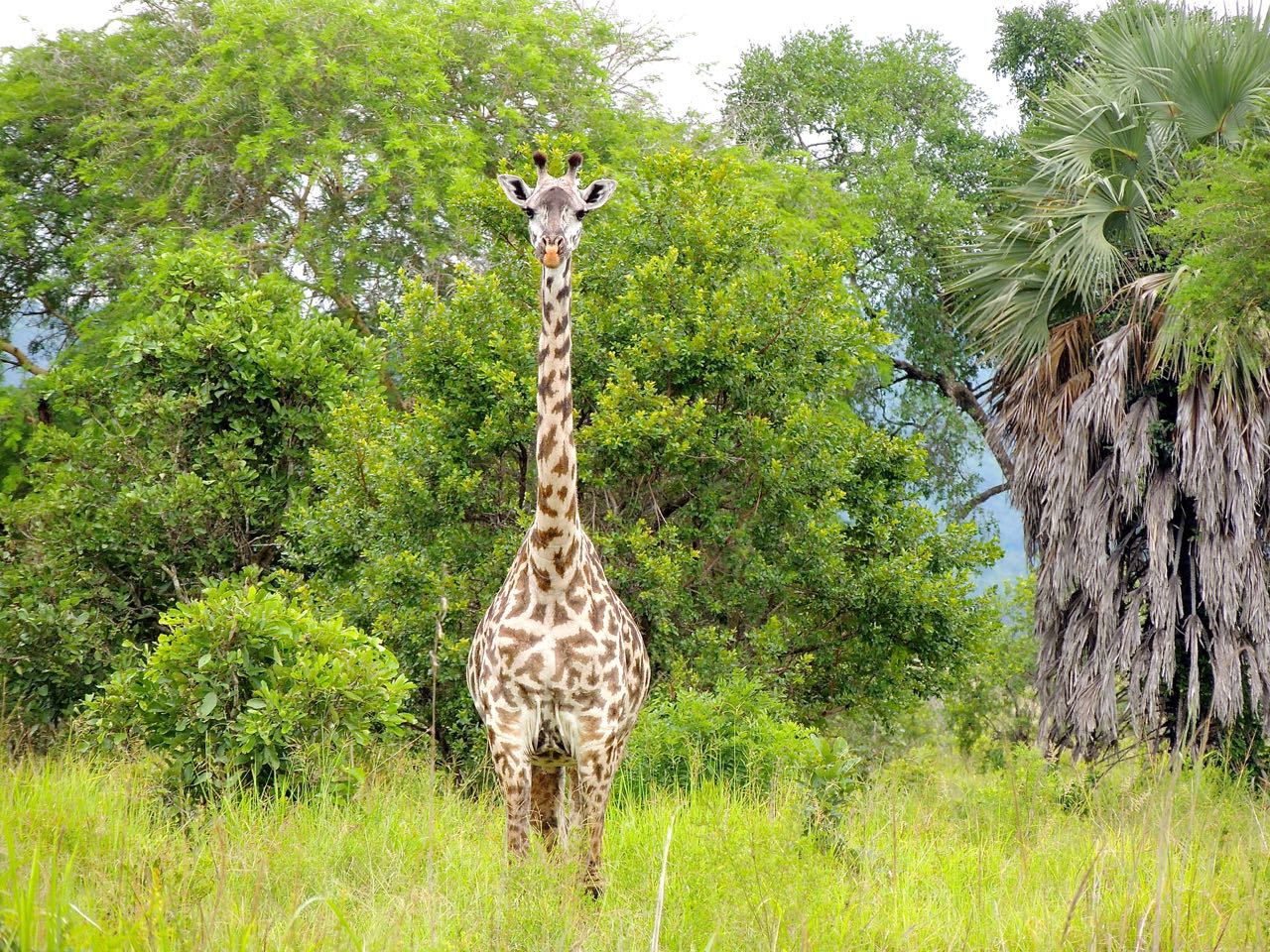 Common Giraffe - Photo by William Young
Common Giraffe - Photo by William Young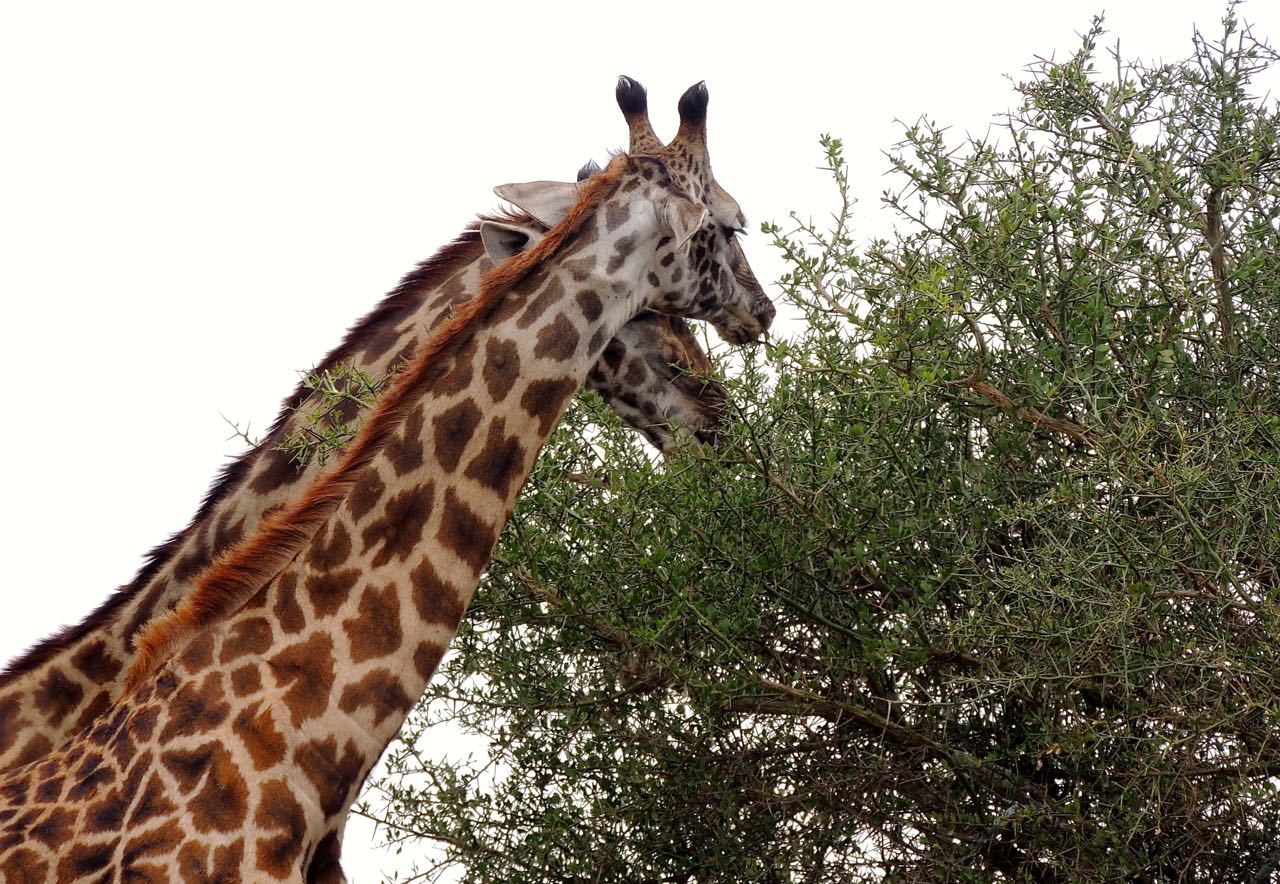
Common Giraffes - Photo by William Young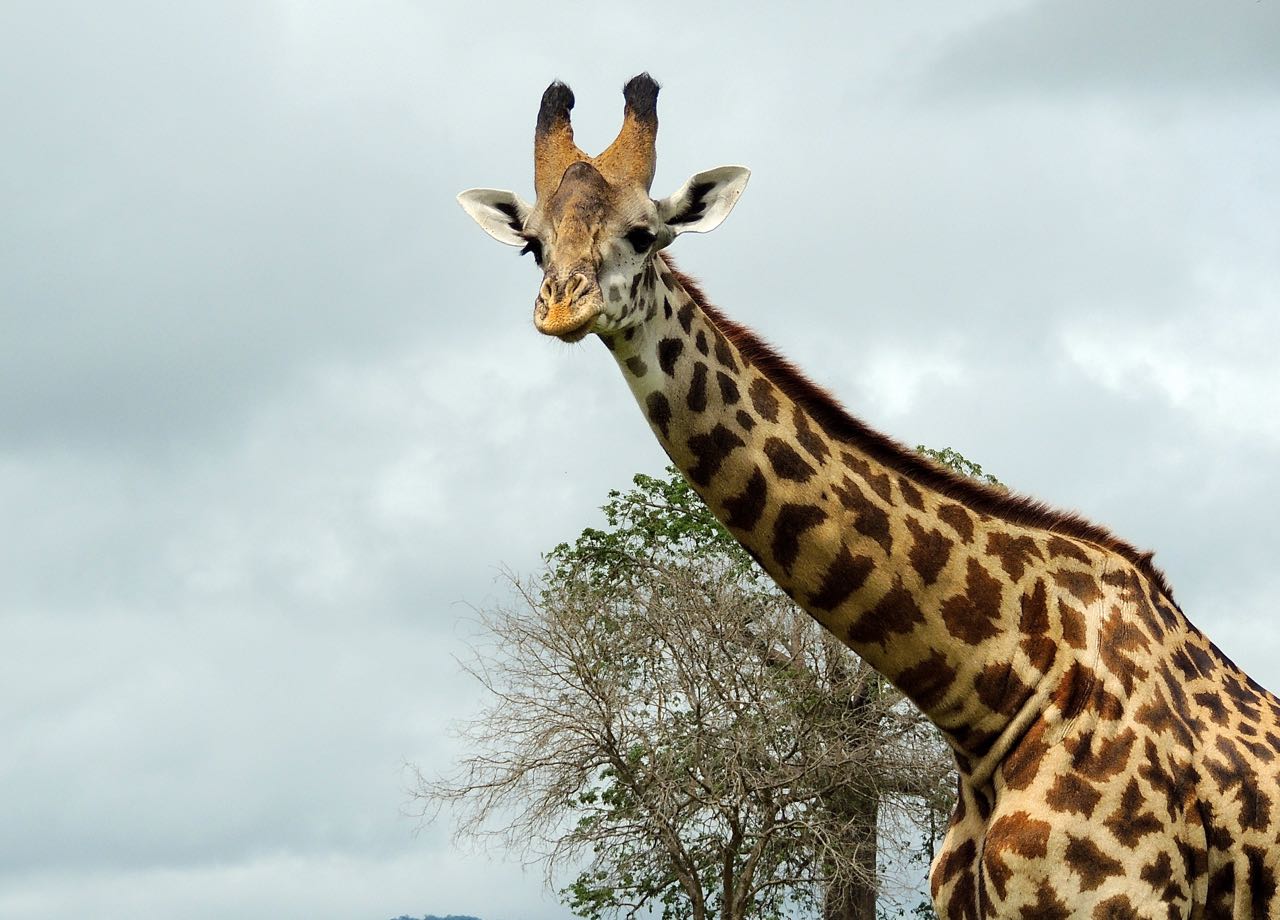
Common Giraffe - Photo by William Young
REPTILES AND AMPHIBIANSWe did not see many species of reptiles and amphibians, but we were not really searching for them. We saw only two snakes on the trip. The first was a dead one in the mouth of a Southern Ground-hornbill who was going to stuff it into a nest hole. The other was on our final full day of the trip when we were walking around the grounds of the Angalia campsite. There was a three-foot brown snake who quickly slithered away through the grass, but I could not see any detail on it. There were a couple of places where we heard a lot of frogs, especially at Mikumi. When it was raining while we were at the Hondo Hondo campsite, I heard a lot of frogs, with some sounding as if they were right next to my tent. However, I actually saw only two frogs. One was being hammered into the ground by a Hamerkop at Mikumi. The other was a live frog on the patio outside my tent at Angalia.
We did not identify many large reptiles on the trip. We saw four Nile Crocodiles on three days. The first was at Serengeti National Park. We had a much closer look at one at Dindira Swamp. Crocodiles mostly lie around, and they did not exhibit any behavior of note. At Serenity, there were two Leopard Tortoises on the lawn. They looked fairly big, but they were also shy, retreating into their shells when anyone walked nearby. The shell was black-and-yellow and seemed fairly tall. We saw a couple Nile Monitors, with one in Serengeti National Park and the other at Udzungwa. They are big, and when they run, their front moves one way, while their middle moves the other. There were a lot of small Agama lizards. We saw more Red-headed Rock Agamas (114 on four days) than Blue-headed Tree Agamas (two on two days). The adult rock agamas are bluish-gray, with an orange head. The young ones are greenish-brown, with a couple of rows of spots on the back. At Arusha National Park, we saw a Variable Skink.
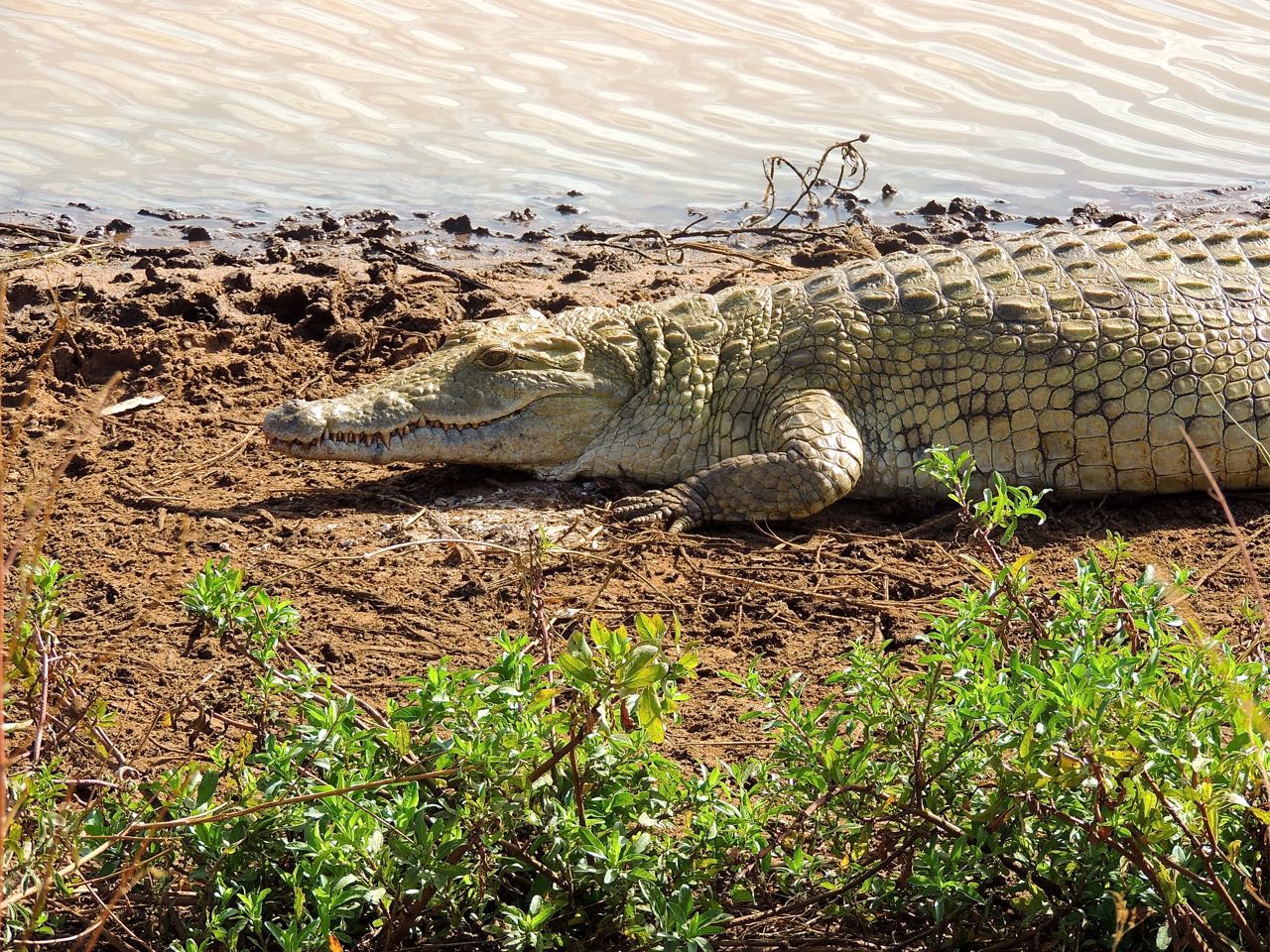 Nile Crocodile - Photo by William Young
Nile Crocodile - Photo by William Young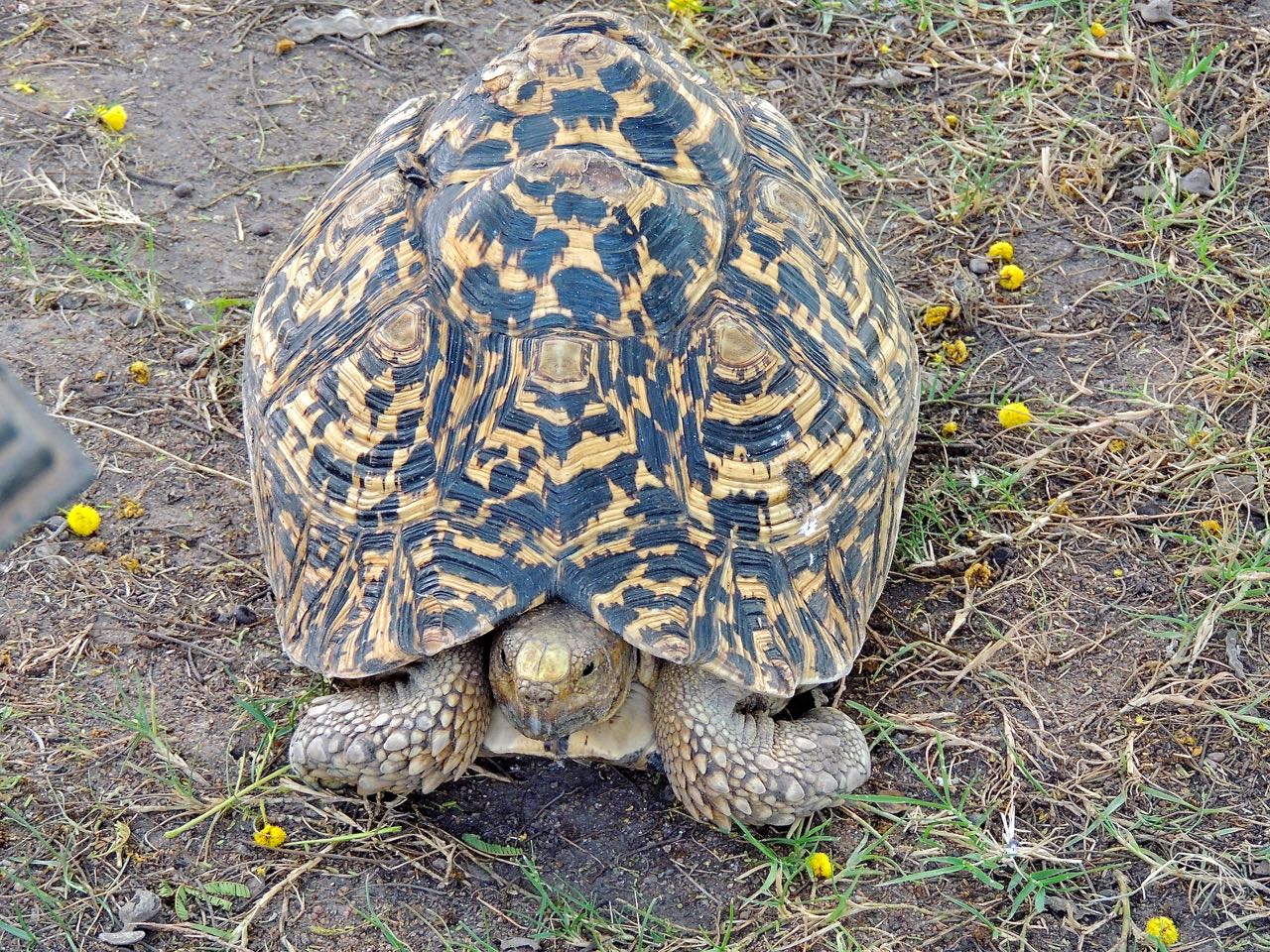 Leopard Tortoise - Photo by William Young
Leopard Tortoise - Photo by William Young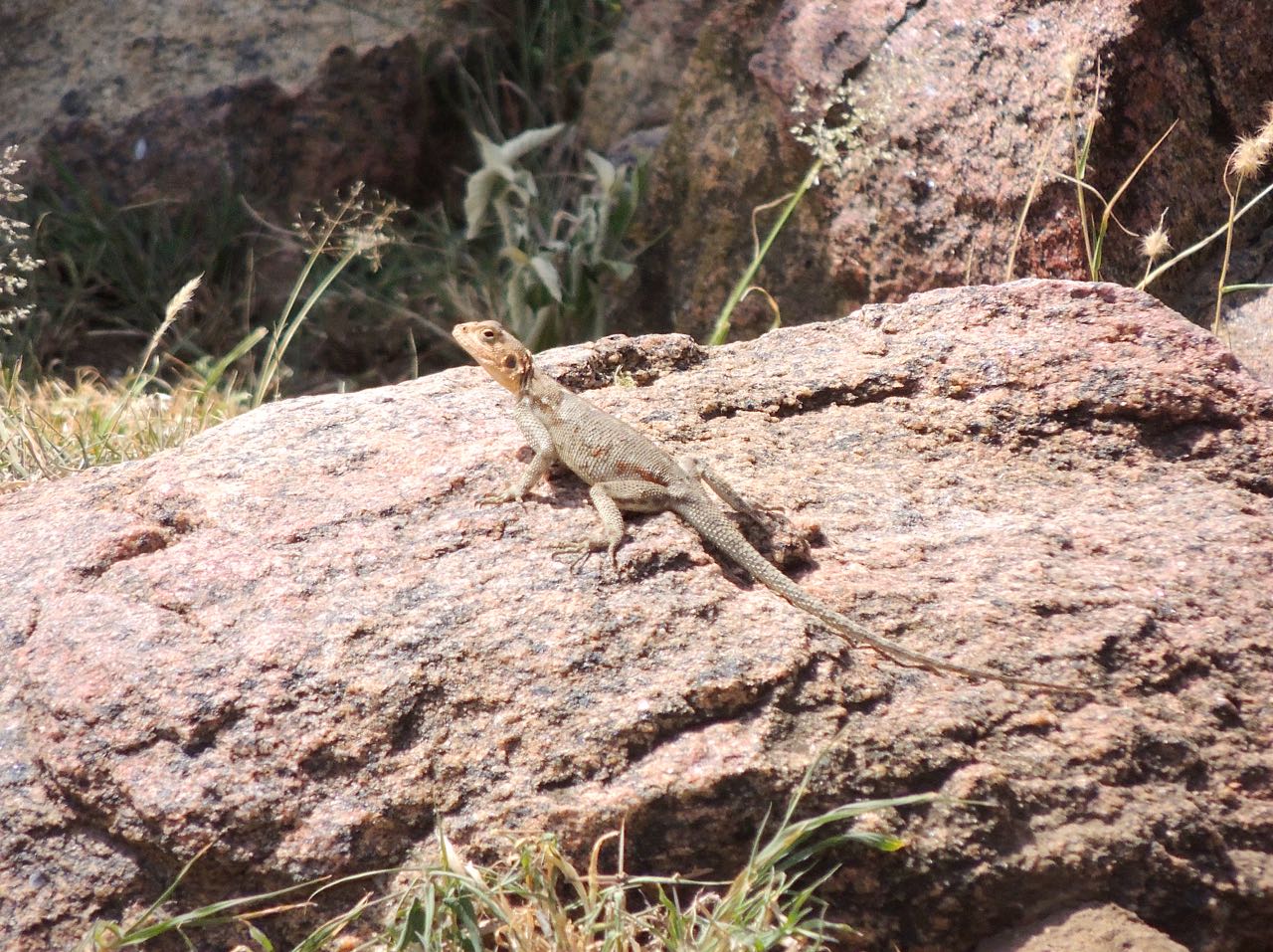 Red-headed Rock Agama - Photo by William Young
Red-headed Rock Agama - Photo by William Young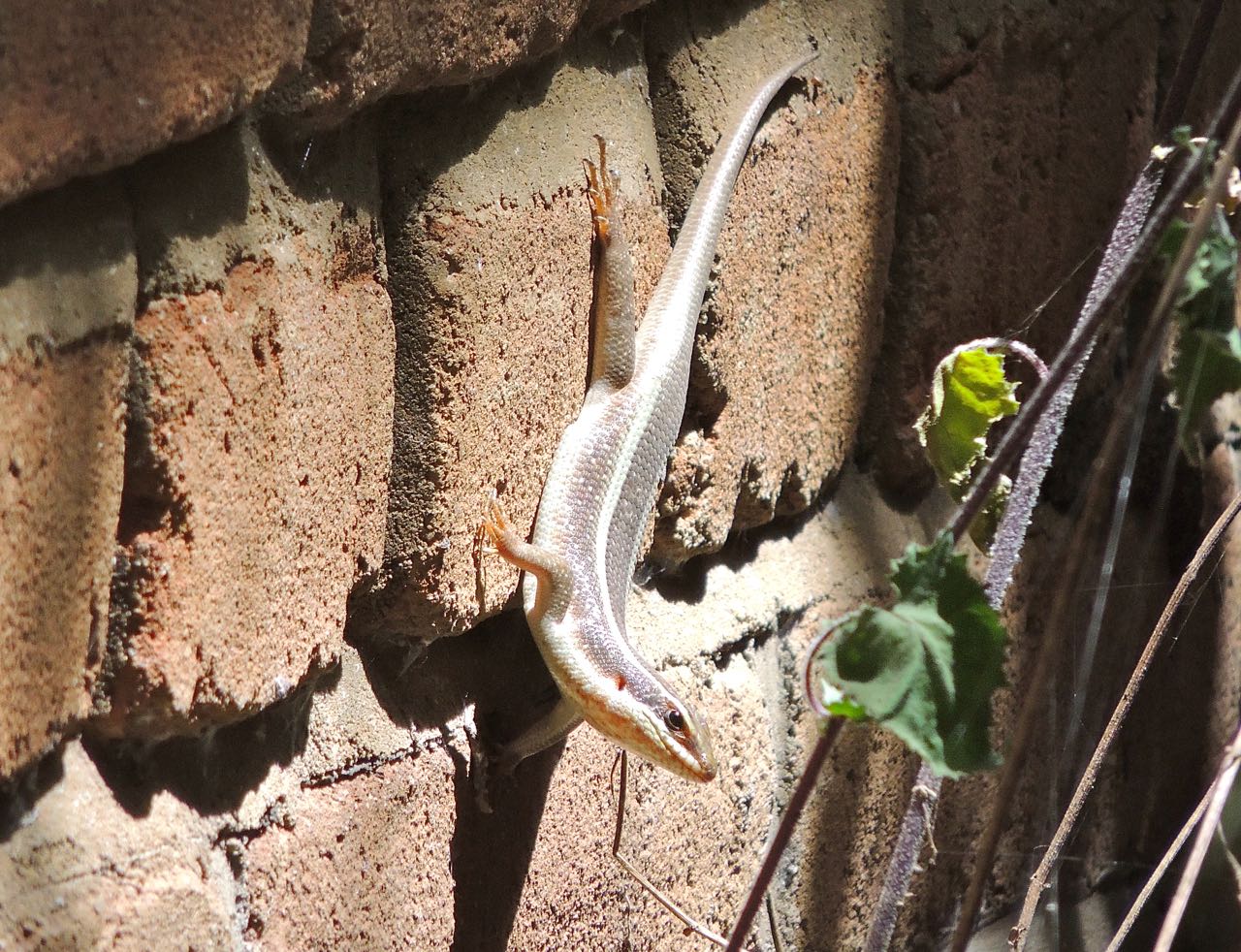
Variable Skink - Photo by William Young
FLORAI saw a lot of beautiful trees in Tanzania. The baobabs were my favorites. Some of the big ones we saw might have been 500-700 years old. They do not grow quickly. A 20-year-old baobab near the eating area at the Naitola campsite that was shorter me. These trees have evolved for the long haul rather than sprinting up to the sky like willows.
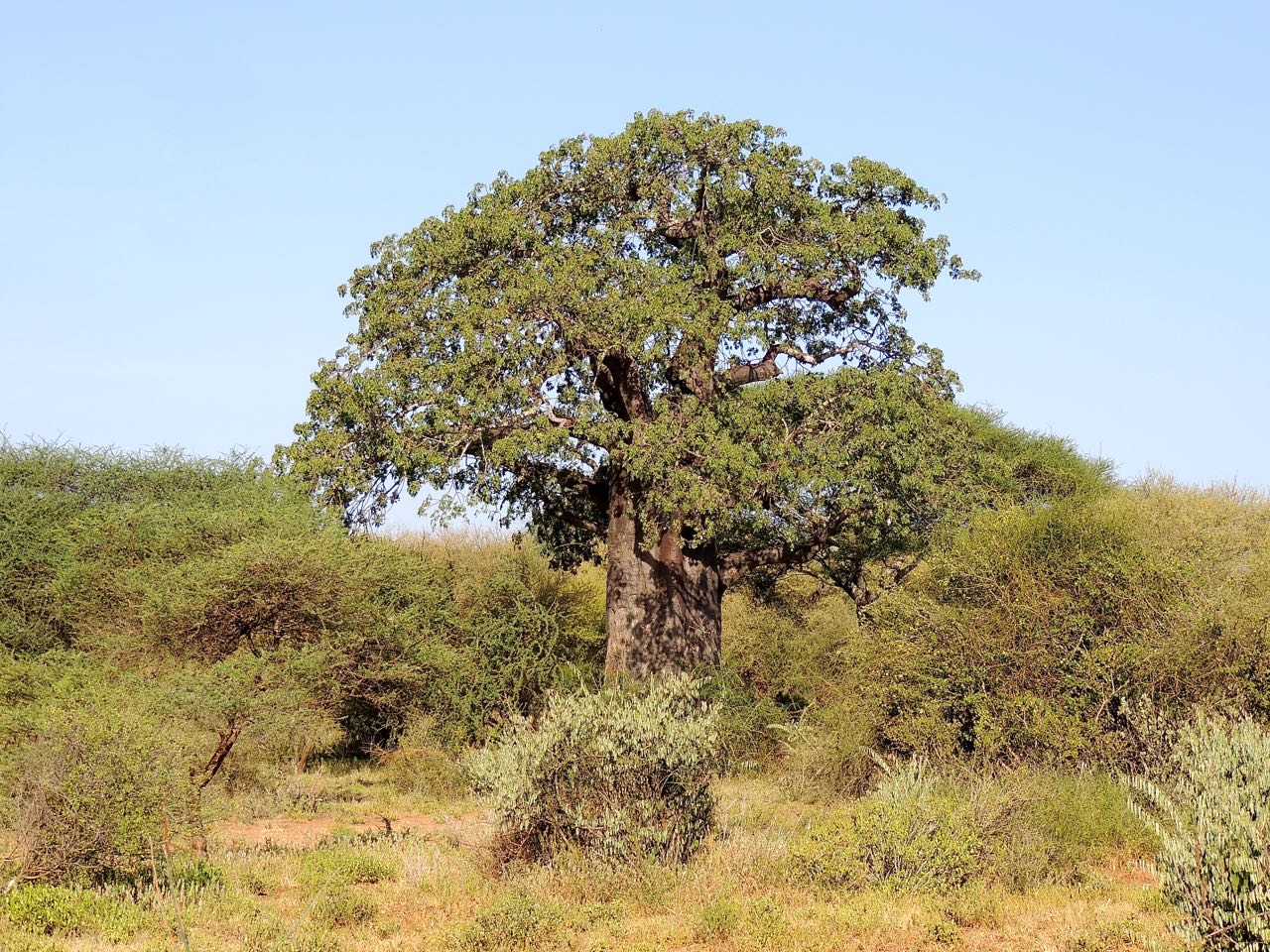 Baobab Tree - Photo by William Young
Baobab Tree - Photo by William YoungWe saw many types of acacias. The Flat Top Acacia is one of the archetypal trees of Africa, and we saw them all over the plains. We encountered many types of acacia plants and bushes on the ground, and because they had long nasty thorns, we had to watch where we walked. Some of the thorns could puncture the sole of a shoe. On our ride to and from Ndutu, we drove through an acacia that looked like a huge green igloo.
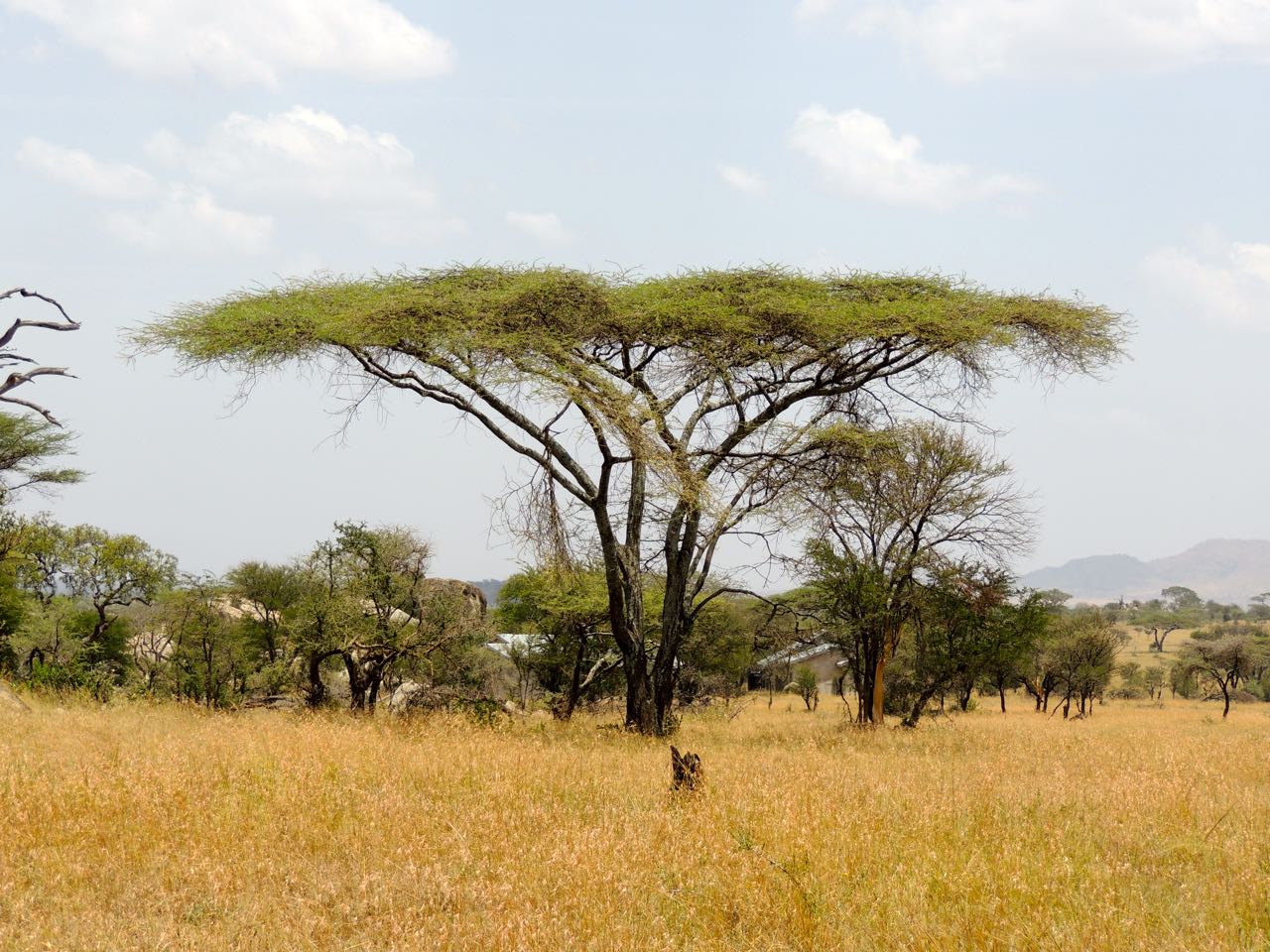 Flat Top Acacia - Photo by William Young
Flat Top Acacia - Photo by William YoungThe sausage tree has long fruits that look like sausages. It is evergreen in areas that get rainfall throughout the year, but deciduous in areas that have prolonged dry periods. Candelabra Trees have a narrow base and long green branches that look like cacti. The trunk looks fairly narrow, and almost all of the branches look as if they are trying to point straight upward. The Candle Bush has a small trunk supporting foliage that also points upward and has yellow flowers that look like candles.
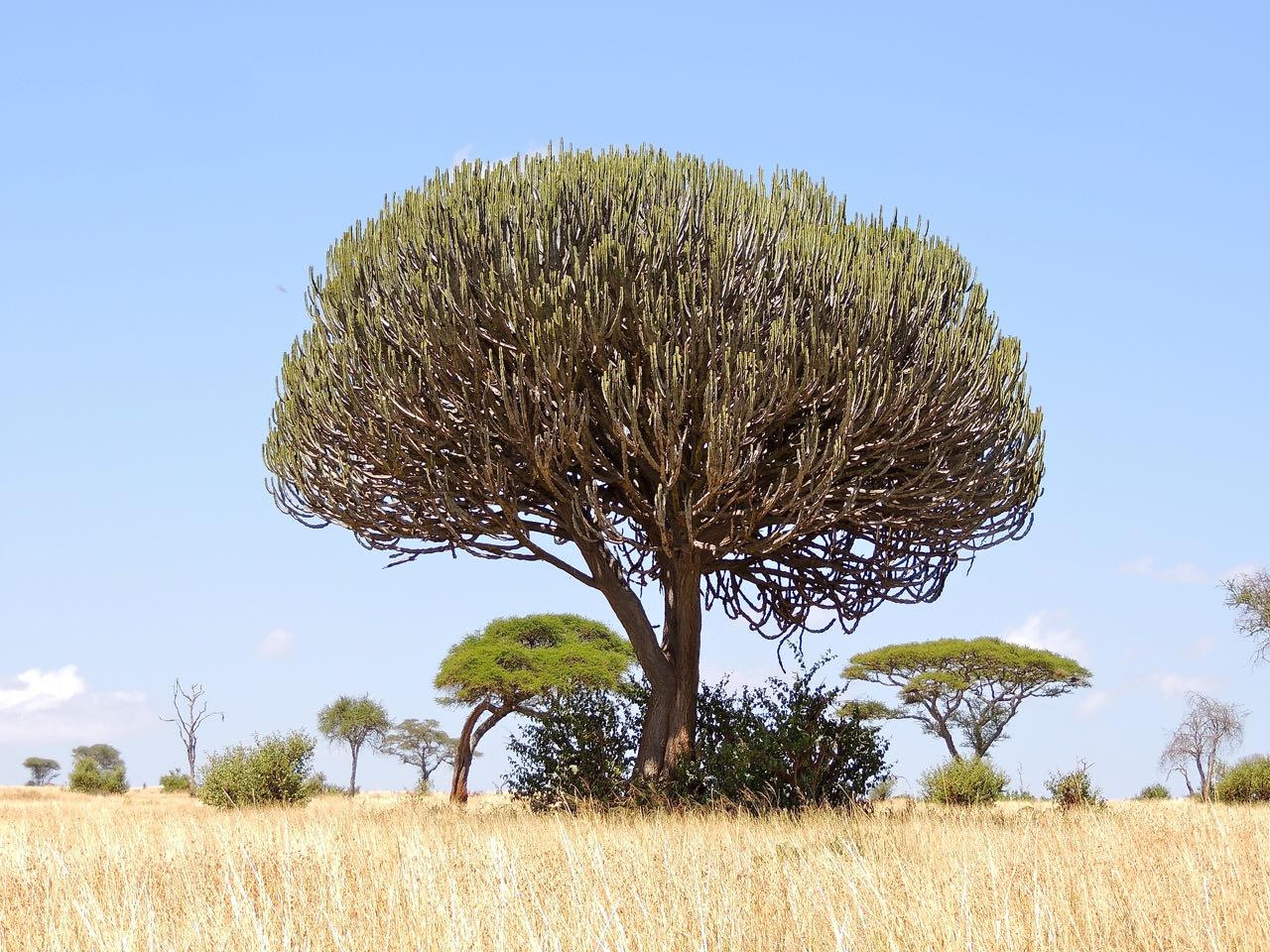 Candelabra Tree - Photo by William Young
Candelabra Tree - Photo by William Young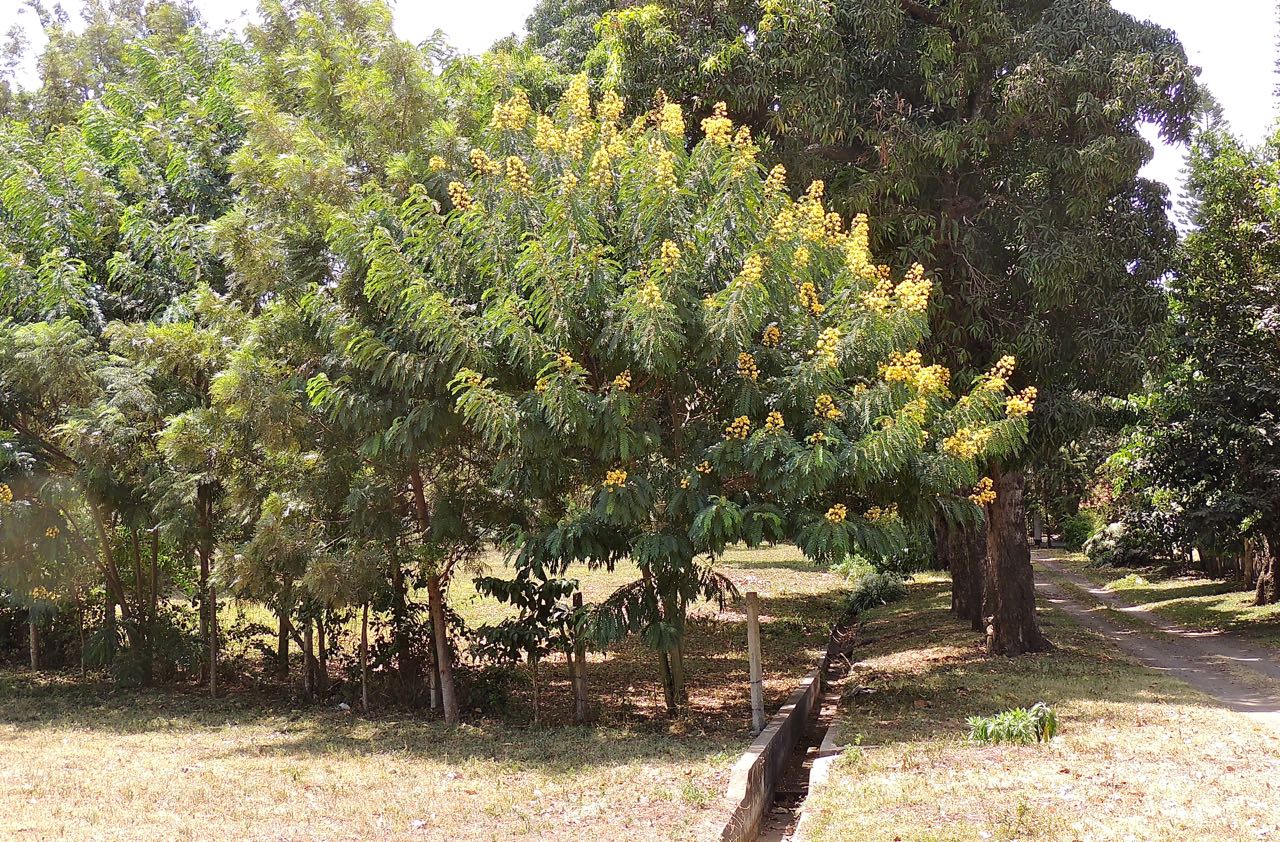 Candle Bush - Photo by William Young
Candle Bush - Photo by William YoungWe drove past plantations with sisal plants, which are low and have long pointed leaves. Sisal is used to make products such as rope. I saw a hedge that was made of plants from the cactus family, but they had woody stalks, unlike the cacti in Arizona. At the Karibu Heritage House gardens in Arusha, I saw a pomegranate tree and a tree that had small green fruits with pink seedy flesh.
At Amani, we saw quinine trees. Local people would strip the bark from the trees and sell it to the Chinese before the practice was stopped. Near my room at Amani, I saw a Jackfruit Tree, and a broken jackfruit was on the path near my steps. We drove through an Amani tea plantation where all of the tea is grown on hillsides. We stopped and bought some. A half a kilo cost 1,550 Tanzanian Schillings, which is about 90 cents.
OTHER WILDLIFEIn the forest at Udzungwa, we saw banded millipedes, who were quite large, as well as a remarkable number of butterflies of many different species. One of the more common ones was the Gold-banded Forester, whose scientific name is Euphaedra neophron. At Ngorongoro Crater, we saw Citrus Swallowtails. Our Naitola campsite had a large number of bees of the "suicide" rather than "killer" variety. They swarmed around a bucket with water in which I had washed some clothes, and many dove in and drowned. When I shaved, I had to fish the soggy dead bees out of the water basin. They dove in, because conditions were dry, and they were looking for water.
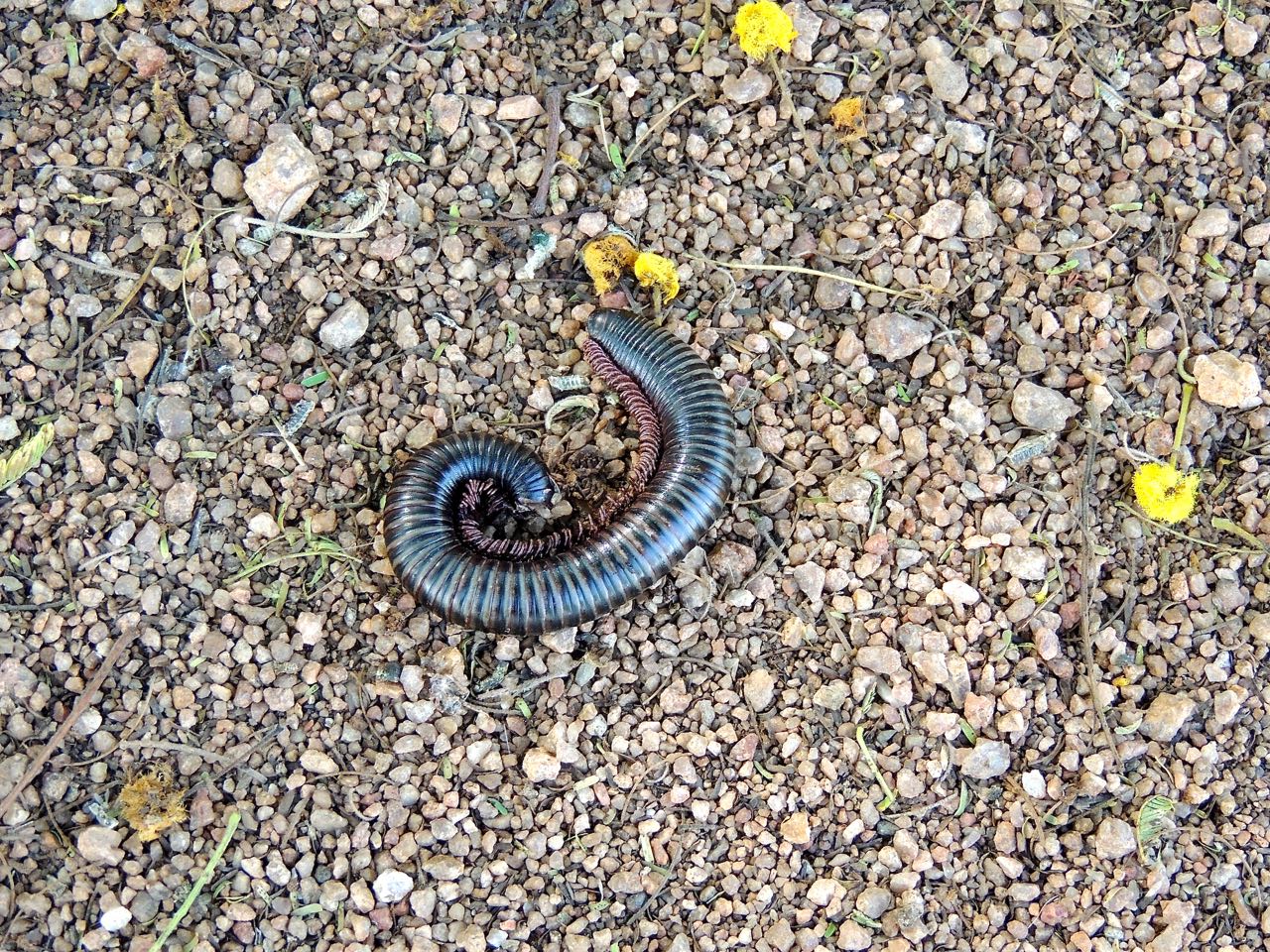 Banded Millipede - Photo by William Young
Banded Millipede - Photo by William Young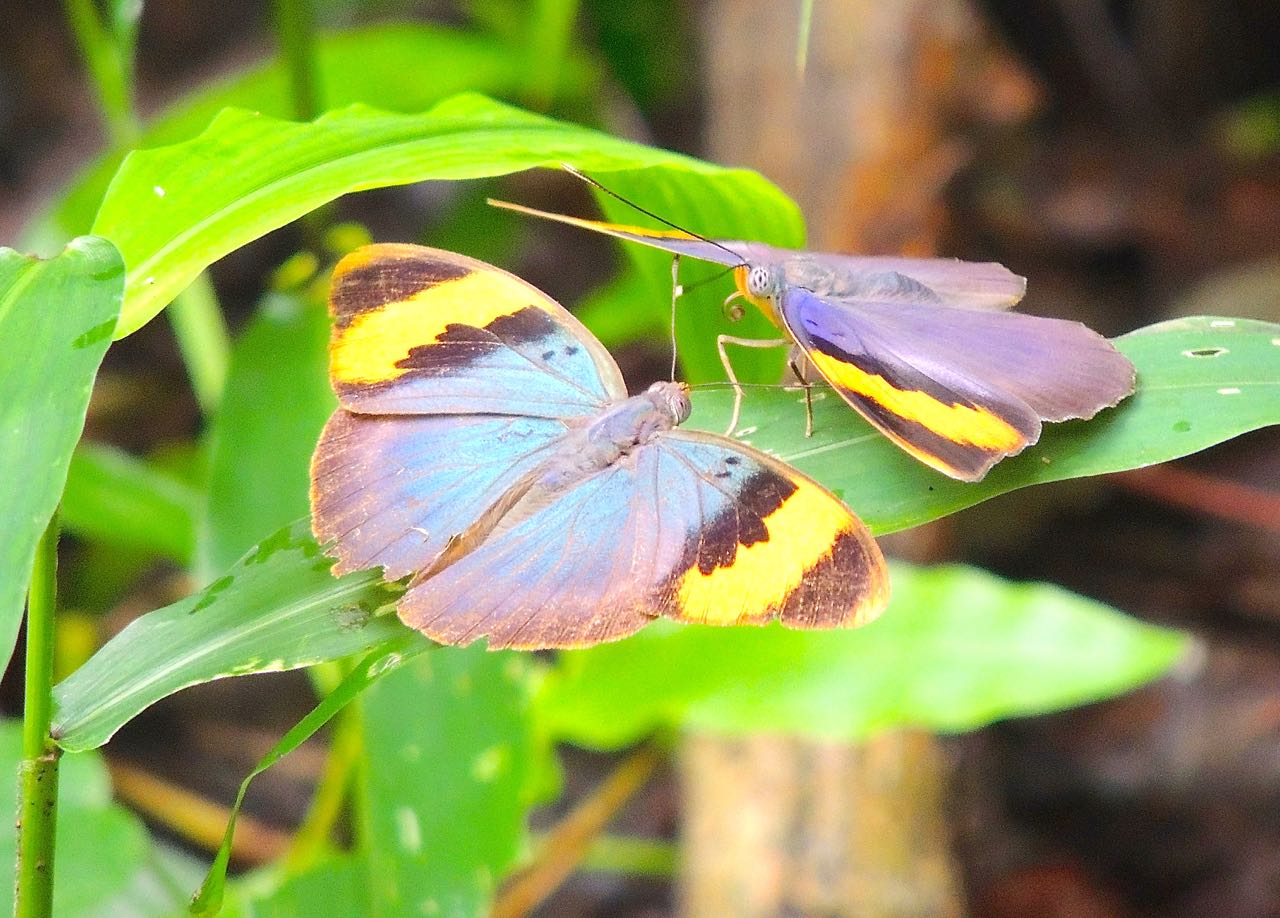 Gold-banded Foresters - Photo by William Young
Gold-banded Foresters - Photo by William Young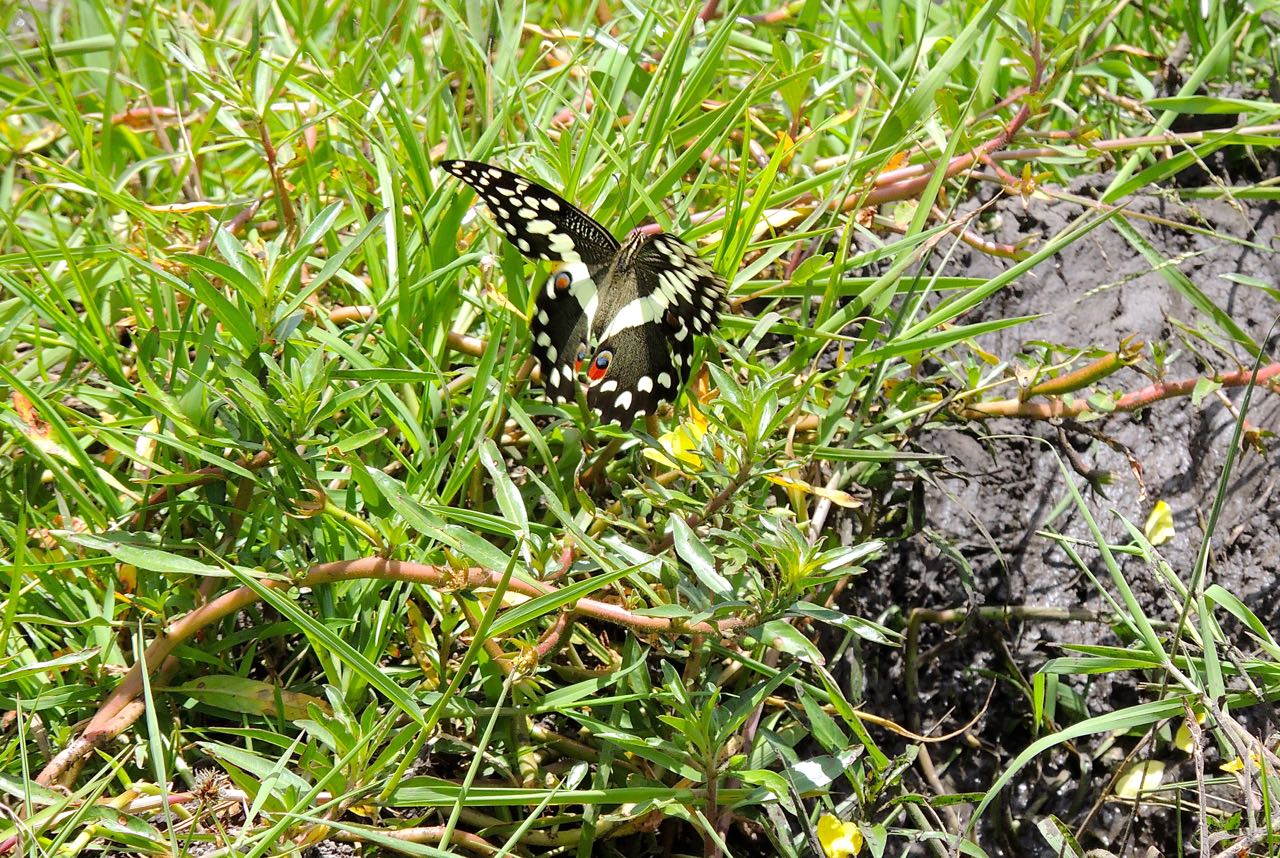 Citrus Swallowtail - Photo by William Young
Citrus Swallowtail - Photo by William Young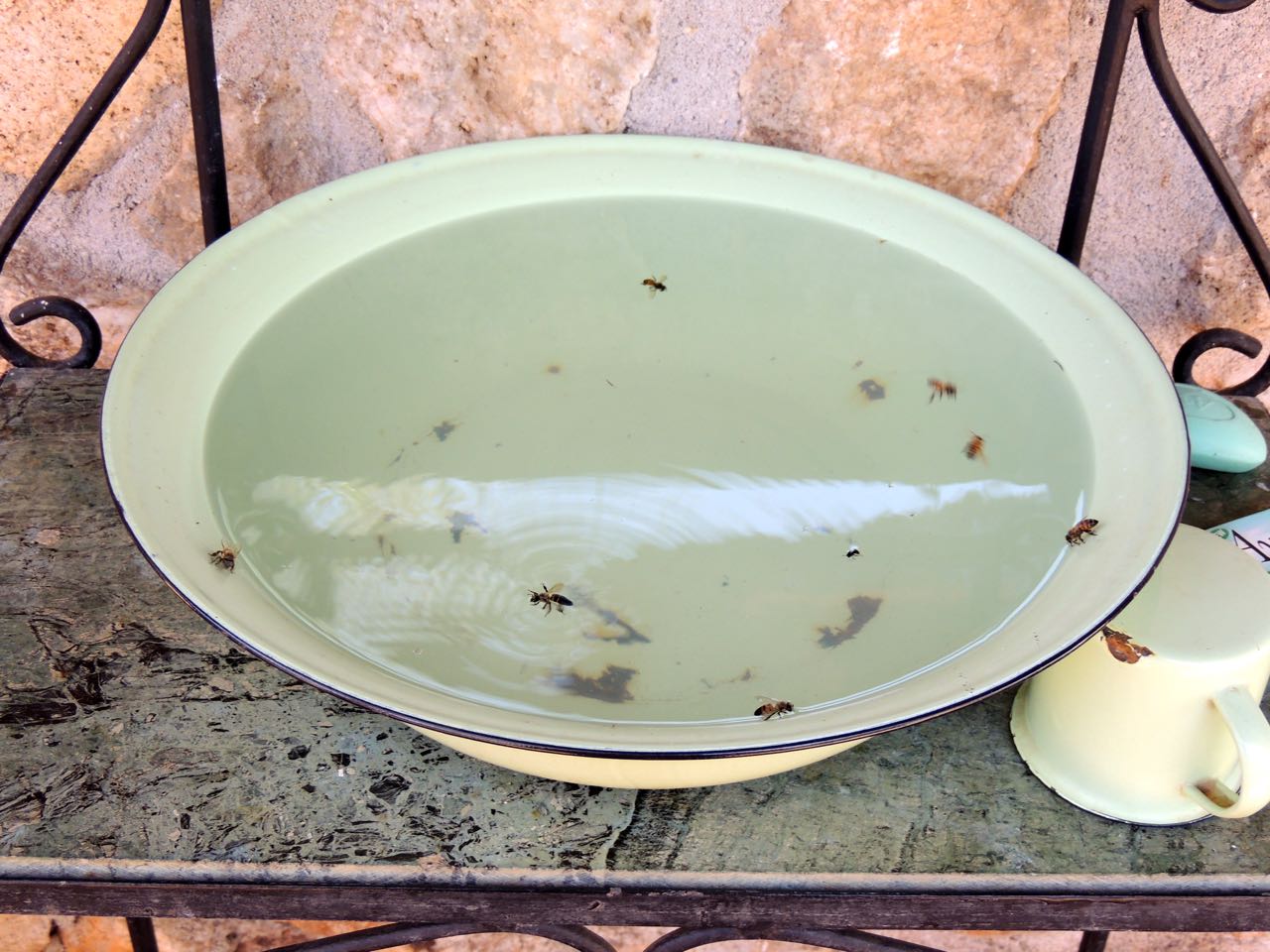
Naitola Bees - Photo by William Young
GENERAL IMPRESSIONSTanzania is about the size of Texas, Louisiana, and Arkansas combined, and it has 45 million people. About a tenth of the people live in Dar es Salaam, which is the largest city and the center of the country's commerce. The capital is Dodoma, which is toward the center of the country. The name Tanzania comes from a combination of two entities. The "tan" is from Tanganyika, and the "zan" is from the island of Zanzibar off the east coast. The country has 130 tribes and 130 languages. Our guide Bernard is from the Chaga tribe.
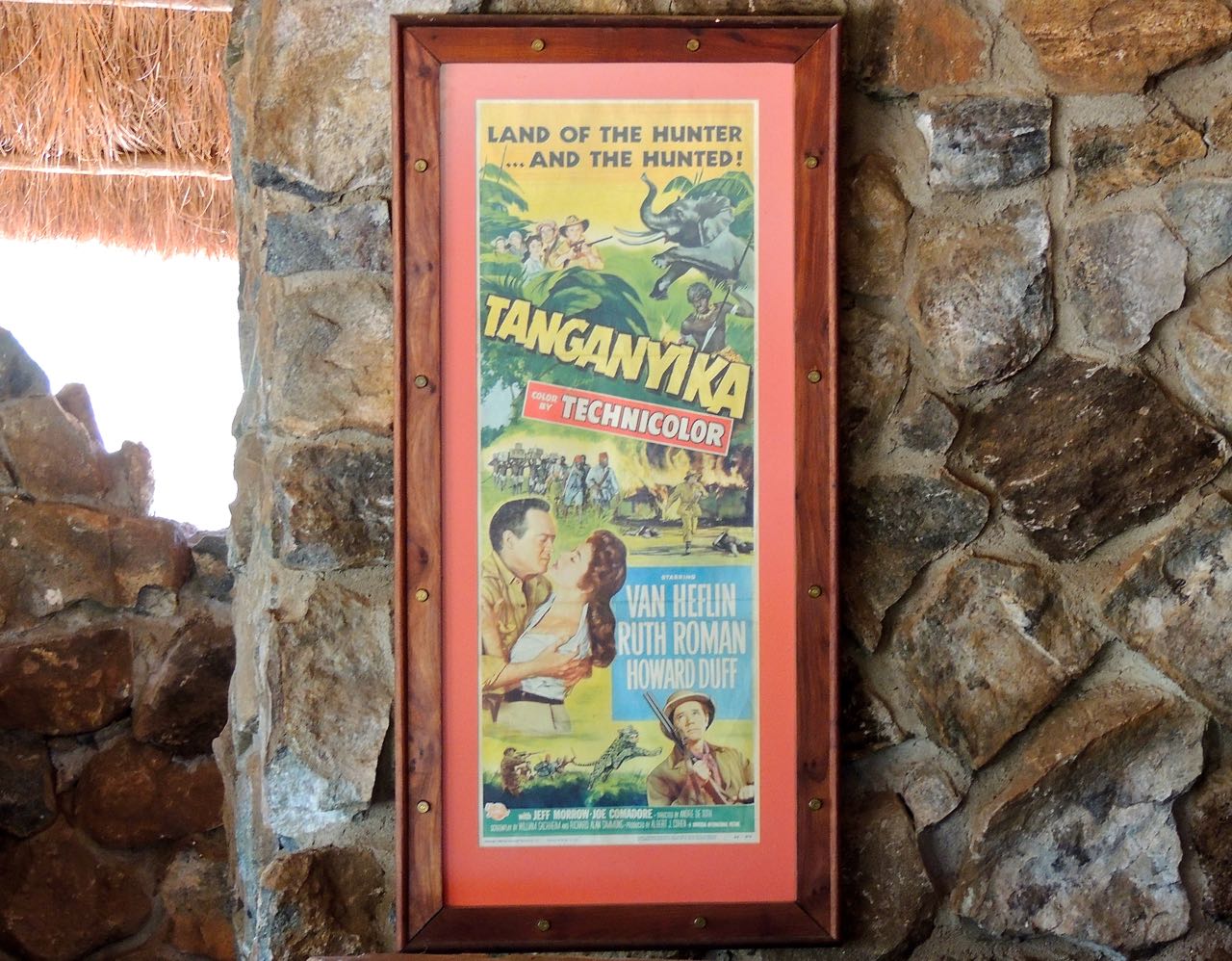 Naitola Camp - Photo by William Young
Naitola Camp - Photo by William Young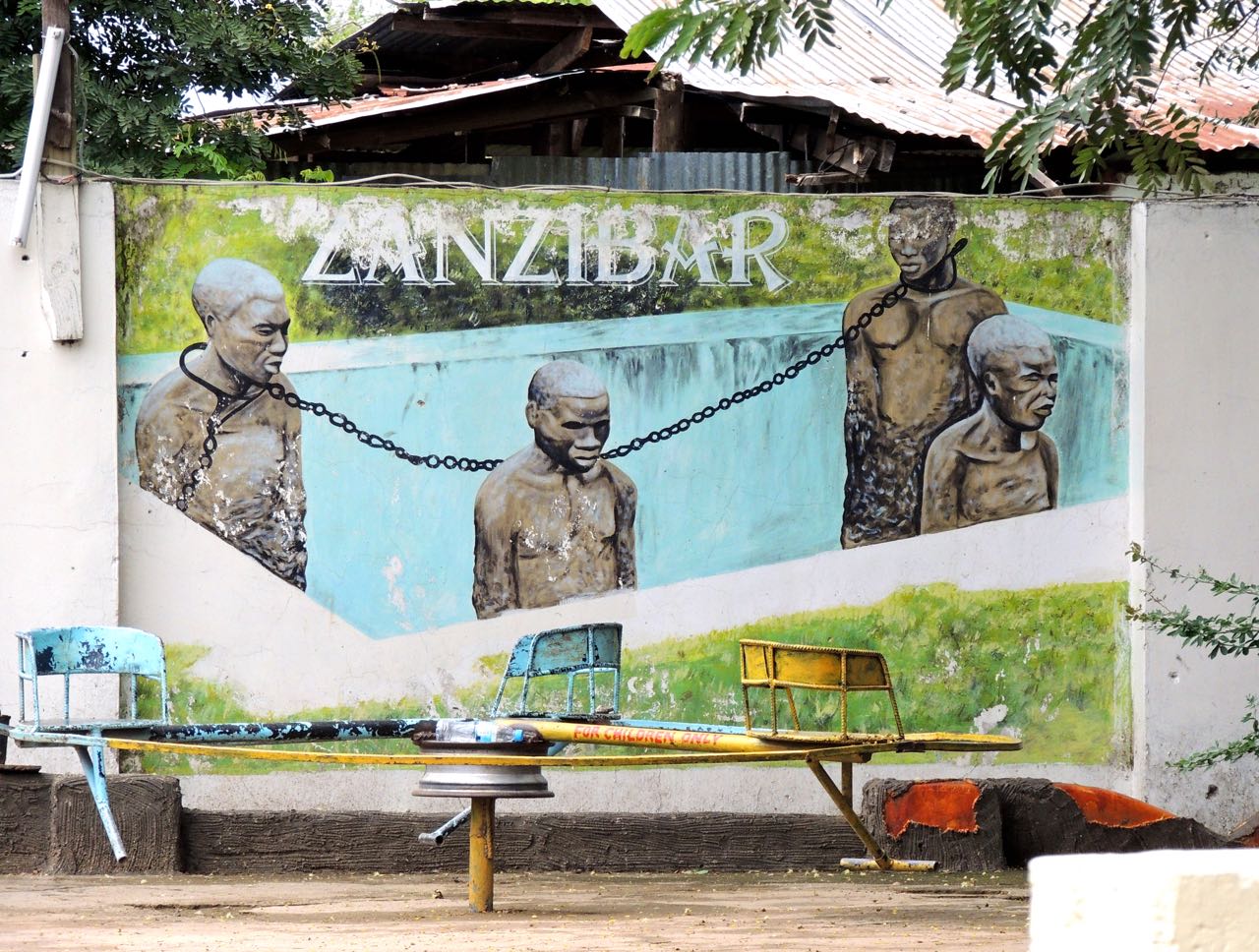 Zanzibar Sign - Photo by William Young
Zanzibar Sign - Photo by William YoungOn the mainland, about a third of the population practices Islam, another third Christianity, and most of the rest traditional African religions. The Moslem influence seems greatest in the more populated areas. In Dar es Salaam, I saw many mosques and minarets, and I could hear the Moslem call to prayer at 5:15 in the morning from my hotel. Often, it would be broadcast through an amplifier, so the sound was garbled. We saw a lot of vehicles with either Christian or Moslem messages painted on them. In Dar es Salaam and some of the towns, we saw people wearing Moslem dress.
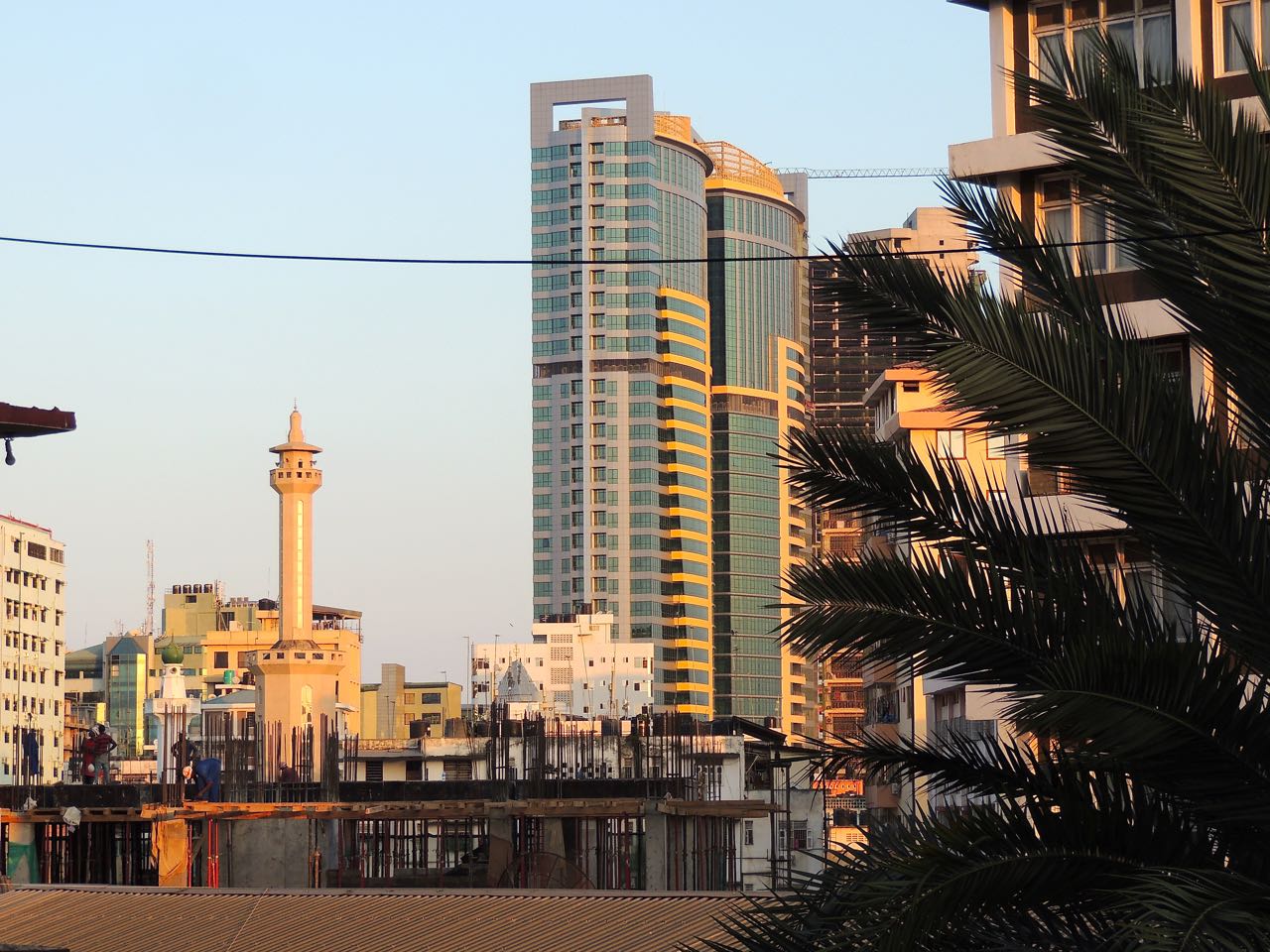 Dar es Salaam - Photo by William Young
Dar es Salaam - Photo by William YoungBeing in Tanzania is like stepping back in time. The animals and birds might be like what was in America many millennia ago. Traveling on dirt roads resembled the way things were in America in the 1800s. Many places did not have electricity, running water, or indoor plumbing, as was the norm in the 1800s. We arranged our Tanzania trip so that we would not have many consecutive days when we could not recharge batteries for our cameras or computers. The need for these services dictated what we did. Even items such as our clothing sometimes determined what we did. There were heavy overnight rains one evening in Udzungwa. The next day when we went to an area to look for birds, we encountered ankle-deep water that prevented us from walking down certain paths lest we ruin our hiking boots. The people who worked in the area were either barefoot or wearing flip-flops, so they got through the water with no trouble.
The profusion of wildlife in Tanzania was mind-numbing, but the country itself was not really beautiful. Part of the problem might have been the lack of rain, which left many areas dry and parched. These areas might look better when green. With the exception of a short stretch we drove near the Ngorongoro crater, we did not see much greenery until we reached the park at Arusha. Even sights such as Mount Kilimanjaro were a bit disappointing. When we were looking at it next to Mount Meru at the Beesley's Lark area, I thought Mount Meru looked more attractive. Because of the lack of development in Tanzania, we were able on some nights to see very dark skies filled with stars and other celestial bodies.
I saw more poverty than I had ever seen when we were driving through towns and villages. Many houses and shops are tiny makeshift huts, and some looked smaller than the safari tents we were sleeping in. The roofs were generally made of thatch or some metal, such as aluminum or tin. Some of the walls appeared to me made of mud or dung. In one place, we saw houses whose walls were made of large poster boards advertising Huggies diapers. At Udzungwa, I walked past one of these houses, and the bedroom had a single bed on a bare floor. Everyone sleeps in these rooms, including parents, children, and extended family. The other half of the house is a general living room area. Cooking is done outside over an open fire, and any sanitation facilities are outside. I saw an African toilet on the road up to Uluguru, and it was a hole in a stone floor.
Many houses lack both electricity and running water. Not having electricity has many consequences if you are a student, because studying is difficult if there is no light. At Lake Manyara, we ran into a group of Americans from a California company called MPower. They provide low-cost solar power to people earning $2 a day or less. People pay for the power with their mobile phones, which are now widespread throughout the country. One of the spear-carrying Maasai who accompanied us on our walks from Naitola sometimes would rest his spear against his shoulder while he checked his phone. People in Tanzania who do not have electricity sometimes can go to a shop in a village and pay to recharge their mobile phones. A lot of shops in the villages we drove through had signs mentioning Facebook, presumably allowing people to check their Facebook pages for a fee. Mobile phones have also changed the way that people can send money. They now can send it electronically for a very low fee.
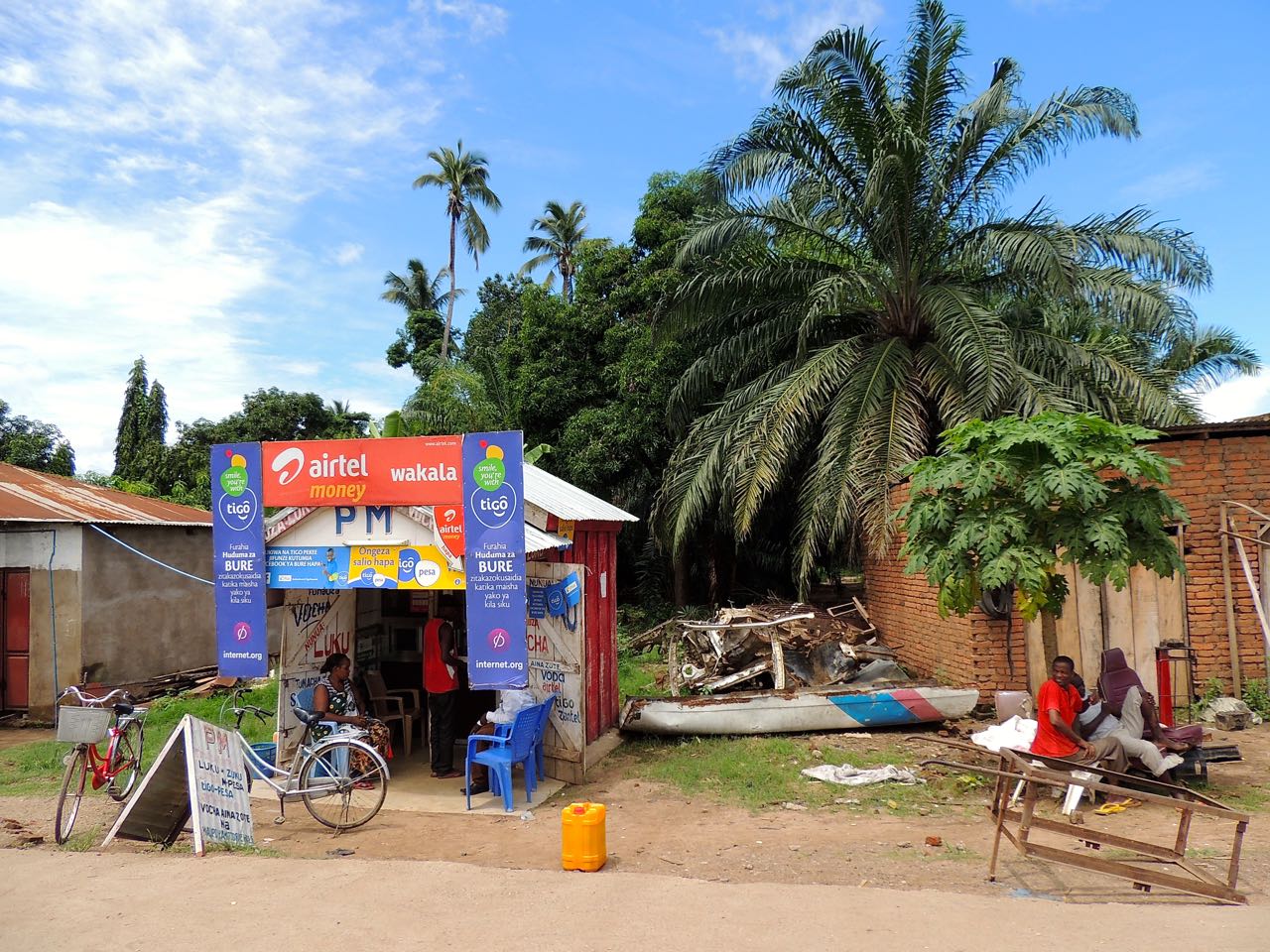 Shop on Road to Kilombero - Photo by William Young
Shop on Road to Kilombero - Photo by William YoungSomehow, people in some of the remote areas where we stayed were able to get English Premier Football League scores. Soccer is the most popular sport in the country, and British and European soccer has made much greater inroads than any of the American sports. A lot of people were wearing US sports jerseys for Gonzaga, the Oregon Ducks, Chicago Bulls, etc. Near the tea shop in Amani, I saw someone wearing a shirt for the Woodbridge School of Dance, but I don't think it was from Woodbridge, Virginia, which is about 20 miles from where I live. I saw many signs over shops where people could buy Zuko Amazing Digital TV. At a couple of the places where we stayed, I would sometimes see staff members at night watching a soap opera on television. The Arc Hotel was the only place we stayed where there was a television in the dining area, and it was usually tuned to the proceedings of the Tanzanian parliament.
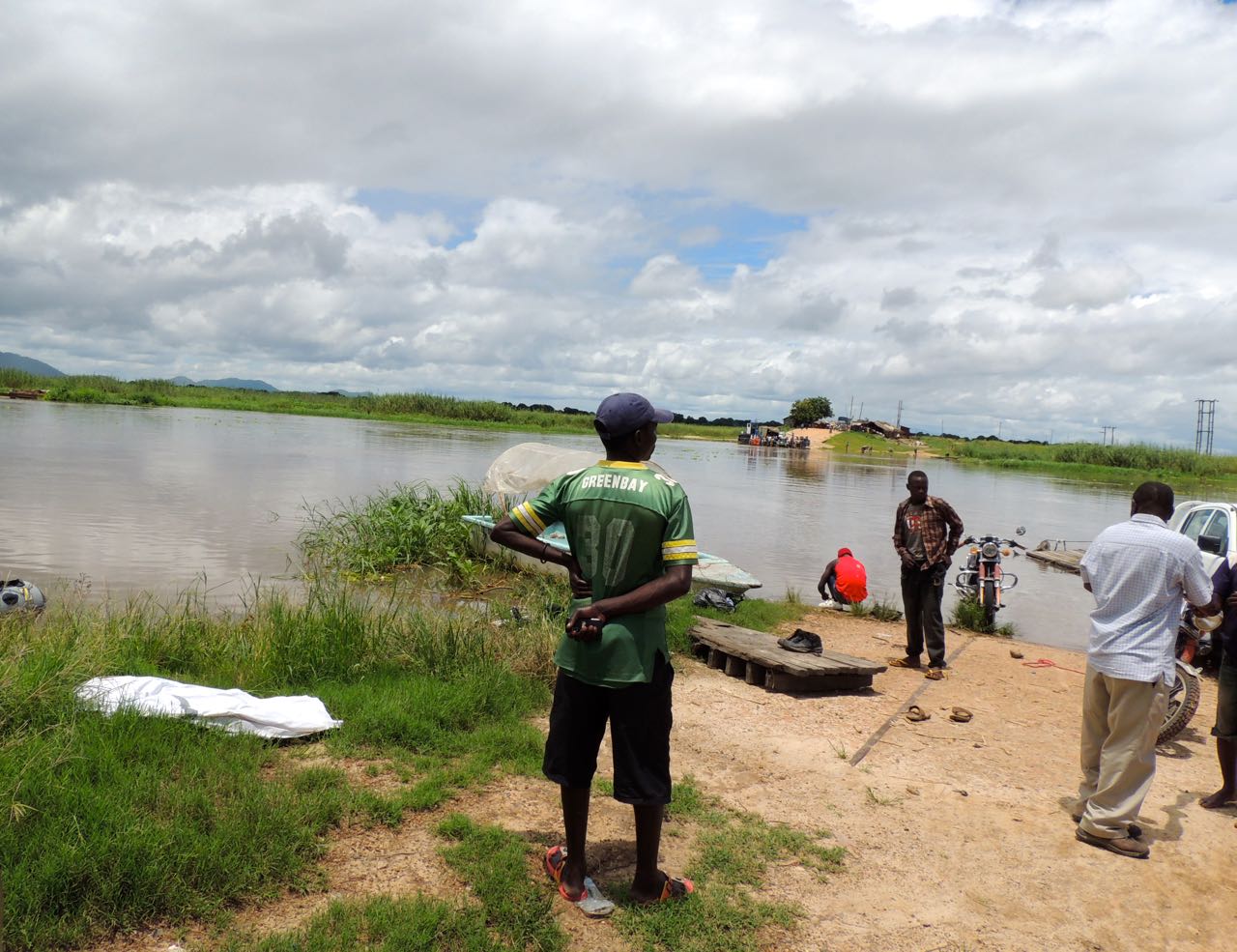 Kilombero - Photo by William Young
Kilombero - Photo by William YoungSome of the villages had wells and water pumps near the houses, but we often saw people, especially women, carrying heavy containers of water for long distances. They cannot afford to drink bottled water as we did. We also saw a lot of women carrying large bundles of firewood, often for long distances. The Tanzanian men seem to be wiry and strong. They can easily hoist heavy suitcases. People are adept at balancing heavy loads on their heads. We sometimes would see children or adults walking or cycling along a highway where we were driving. We would pass them, and I sometimes would try to figure out where they might be going. We would drive for more than a mile, and there did not seem to be any settlements on either side of the road or recessed a distance from the road.
Women do not have an easy life in Tanzania. At Udzungwa, we saw many of them bending over in the rice and sugar cane fields taking care of the plants. In addition to having to work hard, many women do not have access to good family planning services and have a lot of children. Some men judge their wealth by the number of children they father. Tanzanians seem to like to have a lot of children, even when that means that each child will have proportionally less as more children in the family are born. Providing additional family planning services will help some women, but there are also attitudinal problems that will need to be overcome in order to stabilize population growth.
Some places where we stayed advertised themselves as "luxury campsites". The food at these places was generally excellent, and the rooms were comfortable. But some did not have full-time electricity. The Wi-Fi service, if any, was dodgy, and sometimes we had to go near a central office or registration area to get reception or send emails. Because of slow internet speeds, uploading photos took a long time. On our day in Dar es Salaam, Martin wanted to stop where we could both buy modems to get internet reception when we were in remote areas. The modems ended up not working in most of these areas, but they worked on my computer even when they did not work on Martin's.
There was no electricity or running water in a few of our campsites. I did not find this to be a problem. After a long day in the field, all I really had to do at night was to write up my field notes and download the photos from my camera. Without electricity, I could not send or receive emails. The battery life on my computer is more than ten hours, so I could easily go a few days without a recharge. I also had plenty of batteries for my headlamp in case I needed to look at my field guides or notes. I got used to sleeping with my headlamp at hand and using it if I needed to get up in the middle of the night. I also became accustomed to living in places without mirrors. Occasionally there would be a small one by an outdoor wash basin where we could wash our hands and brush our teeth. It was not as bad as in Jean-Paul Sartre's No Exit, where hell was a place that had no mirrors, and the only way you could see yourself was as a reflection in the eyes of other people. The water in most places was not potable, so I had to brush my teeth using bottled water.
Some of our toilet facilities were a raised seat over a large sunken bucket. It was odd looking at all of the waste I produced in a day, but I got used to that as well. Some of the showers were canvas bags with a screw nozzle on the bottom. Someone would fill the bag with hot water, and I would take a shower by unscrewing the nozzle so the water would come down. One realizes all of the things that need to occur for such a shower to happen. You need a suspended canvas bag. Someone needs to bring containers of water to the canvas bag. And before that, someone needs to find a source of water to put into the containers. At our Naitola campsite, both the toilet and shower were outside and exposed to the elements. In the heat of the day, there was a new meaning for the term about "being on the hot seat". I had to tuck in the toilet paper very tightly, because sometimes if the wind blew hard, the entire roll would unroll. At Arusha, the source of water for the containers had dried up, so we could not take showers for a few days. At Amani, my bathroom had a shower, but no showerhead. It also had openings where a medium-sized rat hung out. I saw it run across my bedroom floor on the first of the four days I was there. I tended to sleep with the bathroom light on in the hope of discouraging it from coming out. The strategy worked fine until the final night when the power went out during the night. While I was semi-awake, I heard something crash to the floor in the bathroom. The Amani Guesthouse provided a towel but no soap, and I had left some soap on top of a small hard plastic container on the sink. Apparently, the rat stole the soap, because when I went to use it the next morning, it was gone, and half of the container was on the floor. A friend later told me that rats like soap, but mice do not. Such experiences make me better appreciate the places where we stayed that had hot showers and other comforts.
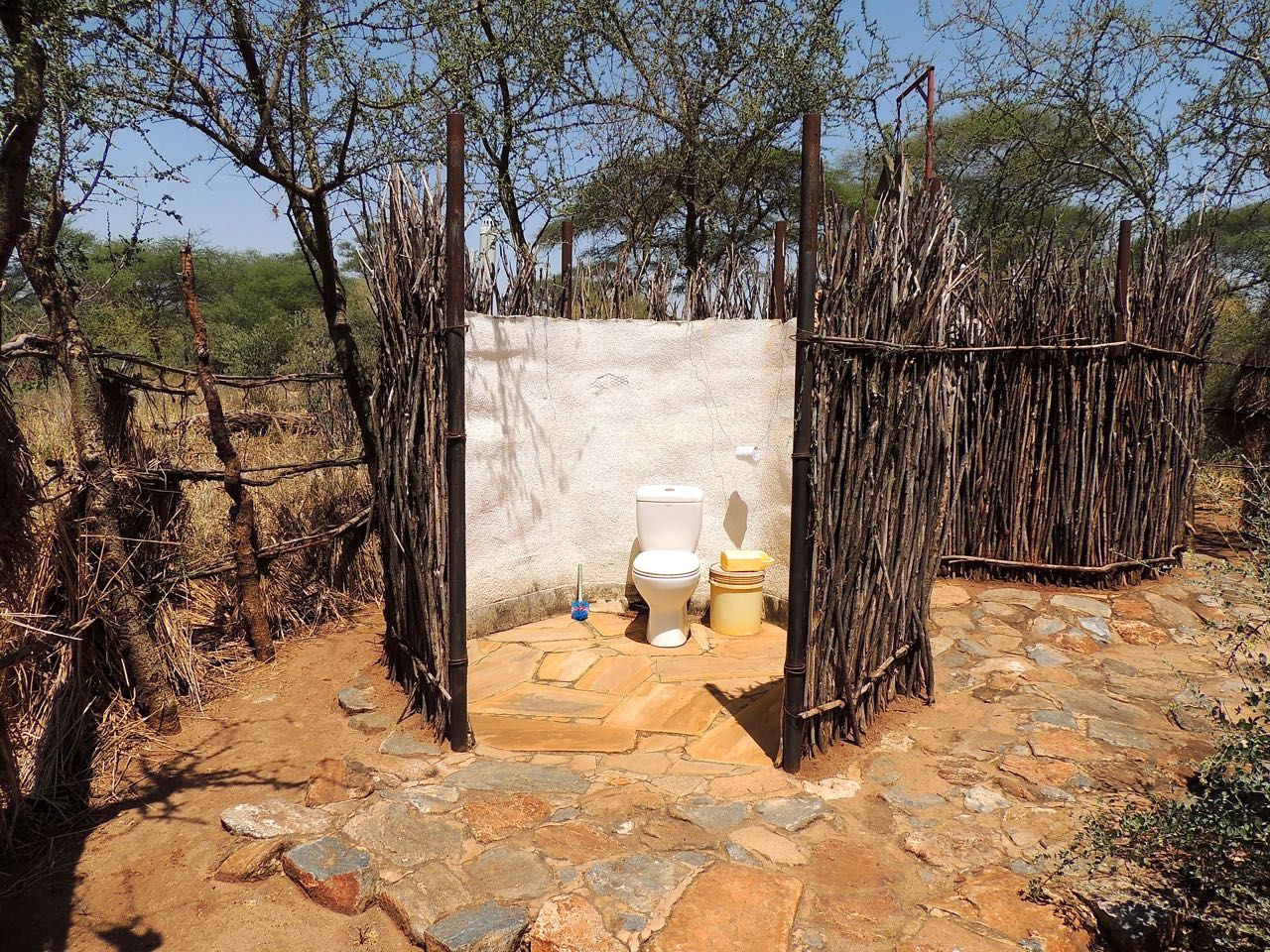 Naitola Toilet - Photo by William Young
Naitola Toilet - Photo by William YoungI enjoyed the nights we were camping. Camping helps you to understand what is essential. You quickly learn that what you thought is necessary really is not. Our camping was very comfortable by most standards. Every night, I slept in a bed, and the mattresses were always firm. I was on a trip to watch nature, and I wanted to be close to it. The Arc Motel probably had the most comforts, but it also had the fewest birds. Many people who go on trips such as this want comforts like the Arc Motel every night. For me, doing without comforts was an adventure while I was on a holiday. I would not enjoy doing this if I knew there was no end in sight.
Time passed slowly in Tanzania. After two weeks, I felt as if I had been away for four months. Weekdays and weekends had no meaning for us. Days of the week and month had no meaning. We spent a lot of our daylight hours in the Range Rover. We typically would have breakfast after sunrise and go out in the field after breakfast. When we went to parks, we would usually bring a pack lunch and continue birding into the afternoon. When we birded around one of our campsites, we would stop in the late morning, have lunch, rest during the heat of the early afternoon, and go out to bird again around 4. The midday sun was so hot that when I washed clothes and hung them outside, they would dry within an hour or two. On the last week of the trip, we sometimes had rainy weather in the afternoon, which allowed me to take a nap. I was starting to feel tired after three intense weeks. The sound of the rain is like white noise, and it can induce sleep. We usually had dinner around 7. On days when we stayed around the camp, I had a chance to write my field notes and download my photos from the morning, leaving more time to relax at night. I typically would go to sleep around 10. During the entire trip, I did not use an alarm to wake up. I usually would awaken at about 3 or 4, and I would study my field guides or listen to the sounds of the night.
Except in places that had machines with filtered water, I mostly drank bottled water. I drank a lot of bottles of it, because I wanted to stay hydrated while we traveled. I felt uneasy about the number of plastic bottles I was generating. Littering is widespread in Tanzania, and when we rode behind a bus, I would often see people throw their trash out the window, including plastic bottles.
Maasai Children work in the fields with livestock from an early age. While we were staying at a Maasai camp, Bernard and I went into the field to look for birds at 11:30 in the morning when the temperature was about 90. We saw a little Maasai boy of eight or ten who was tending about 60 sheep. Bernard said that a lot of children are sent into the field with no food or water. I walked up to the boy and handed him my water bottle. He looked at me blankly and took the bottle. I started to walk away, and I saw him slowly take off the cap and drain the entire contents of the bottle. He then ran after his sheep with the empty bottle in his hand. Bernard said that these children sometimes eat only one meal a day of milk and maize. The Maasai tend to be tall and wiry – I saw no obese Maasai. Some Maasai girls marry when they are as young as 9. The parents don't mind, because they might obtain dowry loot. The girls themselves don't mind, because it makes them feel grown up, and they might be able to escape the privation of their family situation. When we were birding at high altitudes on the road to Ngorongoro, there were a lot of Maasai in the area. Whenever we stopped to look at a bird, they would run up to our vehicle and ask to have their photo taken for a price. Apparently, a lot of tourists who visit the area sometimes throw pens, candy, and other items out the windows of their vehicle for the children, so the children now treat every vehicle that passes as a source of thrown loot. We occasionally encountered beggars in other areas. I saw one young boy who simply looked at me and pointed to his stomach.
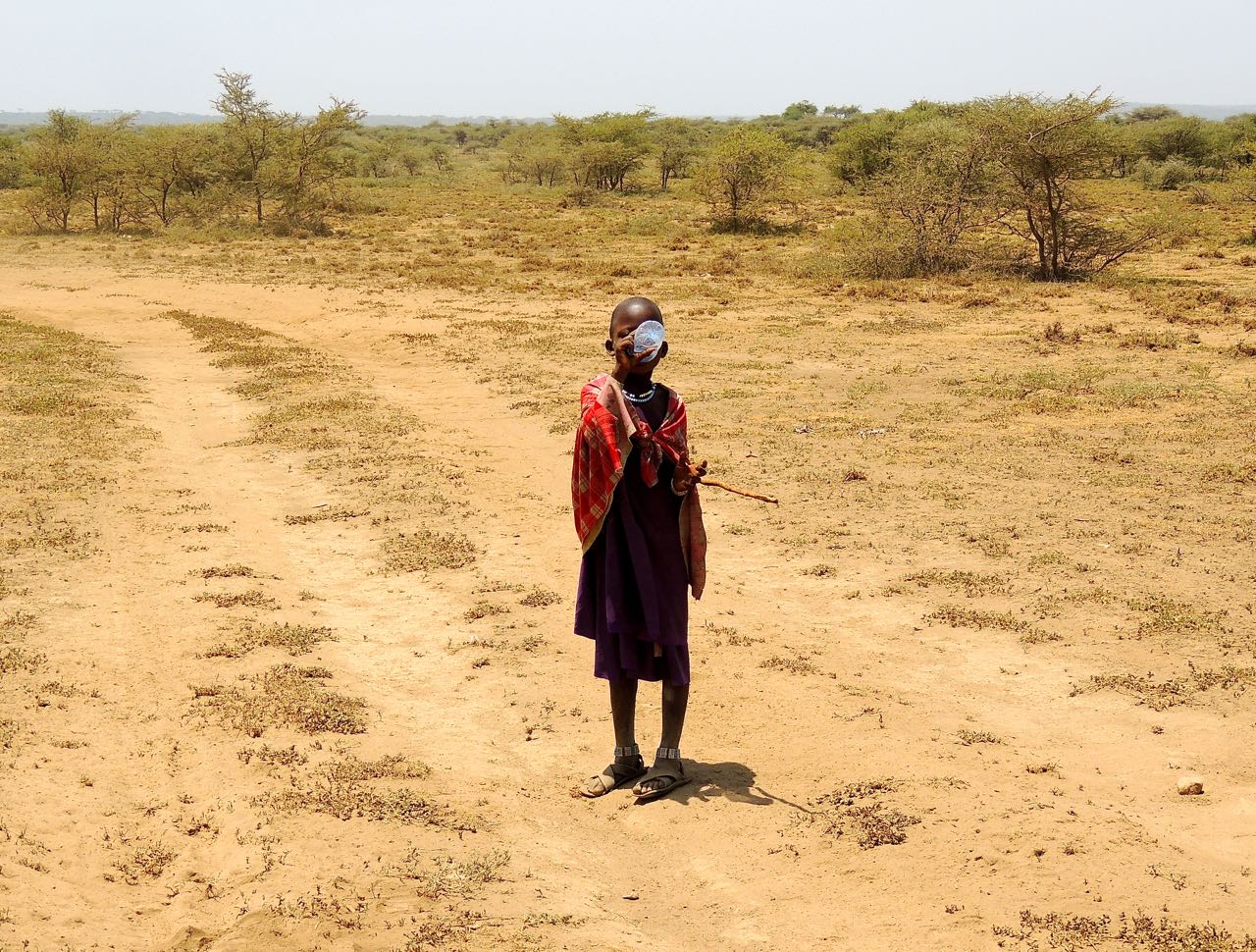 Maasai Shepherd Boy - Photo by William Young
Maasai Shepherd Boy - Photo by William YoungA lot of work in Tanzania is labor intensive. At the Karibu Heritage House, four men tended the gardens, which were beautiful, but nobody took care of details such as making sure light fixtures were properly screwed into walls or that plumbing fixtures were caulked. I found a lot of loose electrical outlets and plumbing fixtures in other places we stayed. My room in Same did not have a toilet paper holder.
Most of the parks we visited were virtually empty. March is the low season when the rainy season begins, but it should not be that low. We did not see a drop of rain for the first three weeks of our trip. Tanzania charges stiff fees to enter the parks, but they might be better off charging lower fees in the low season to encourage more people to come, and higher rates in the high season when most people would come anyway. Entering a park can take 15 to 45 minutes once you arrive at the gate. There are forms to fill out. Factors such as using a credit card can be problematic. The reader which checks the validity of the card often does not work and must be rebooted. And when someone such as Bernard goes to a registration area to fill out the paperwork, social customs dictate that it would be rude to dash in and out without exchanging pleasantries, which also can take time.
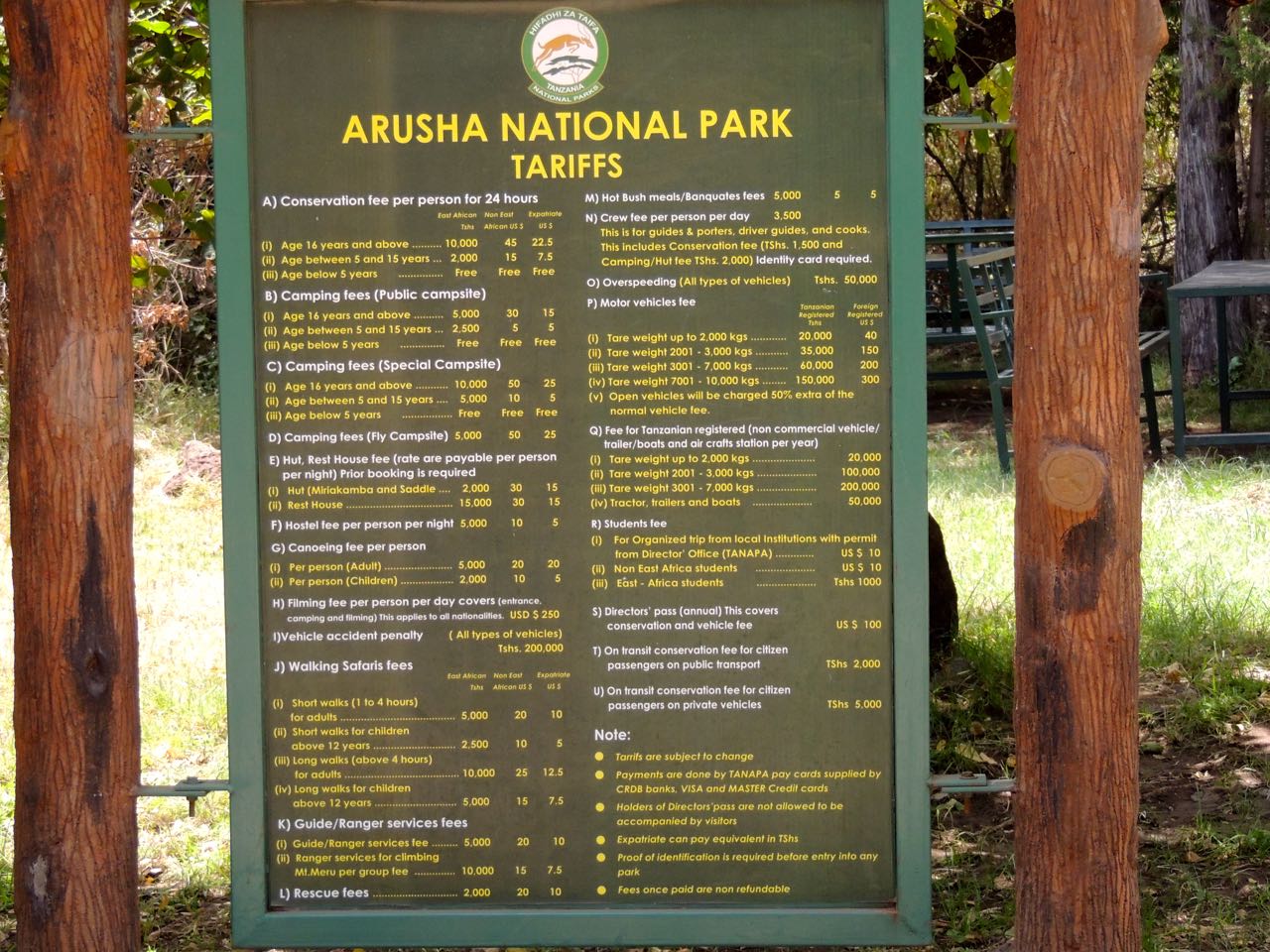 Arusha National Park Fees - Photo by William Young
Arusha National Park Fees - Photo by William YoungOne sees a lot of animal skulls and bones in Tanzania. Many of the parks have a row of skulls at the entrance. The bones are sometimes put to decorative use, such as the animal bone chandelier at the Mbalageti Luxury Camp.
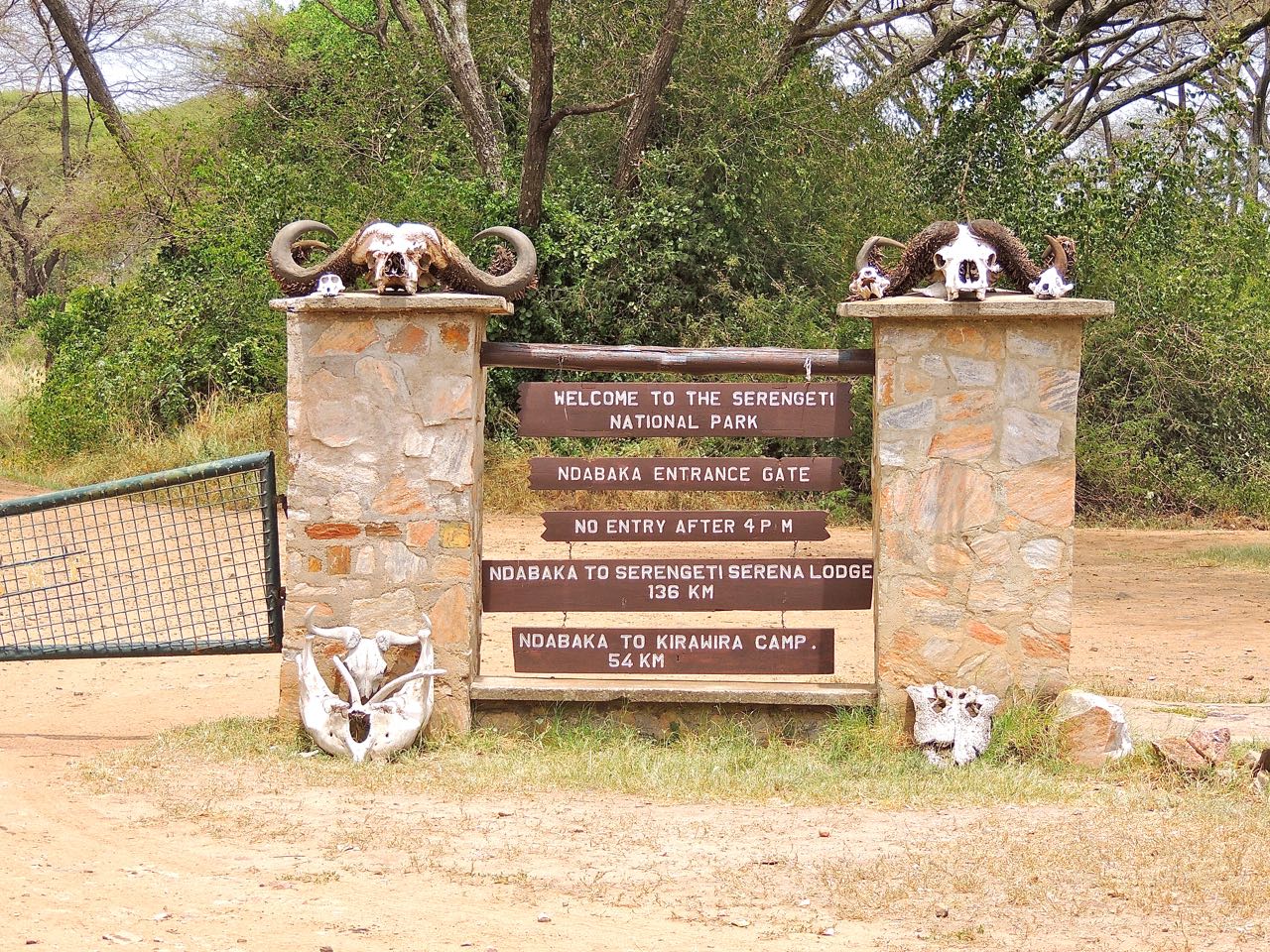 Entrance to Serengeti National Park - Photo by William Young
Entrance to Serengeti National Park - Photo by William Young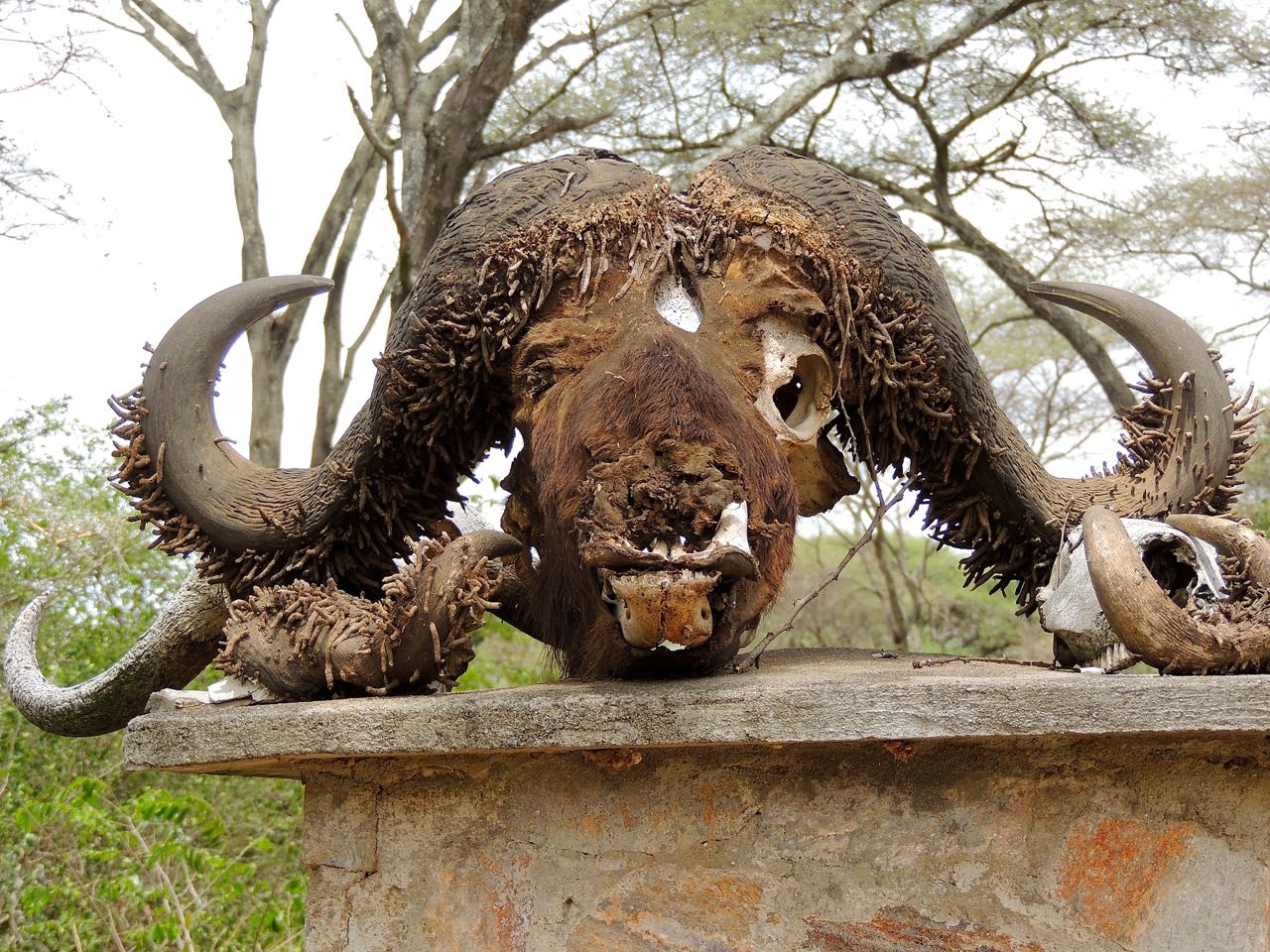 Entrance to Serengeti National Park - Photo by William Young
Entrance to Serengeti National Park - Photo by William Young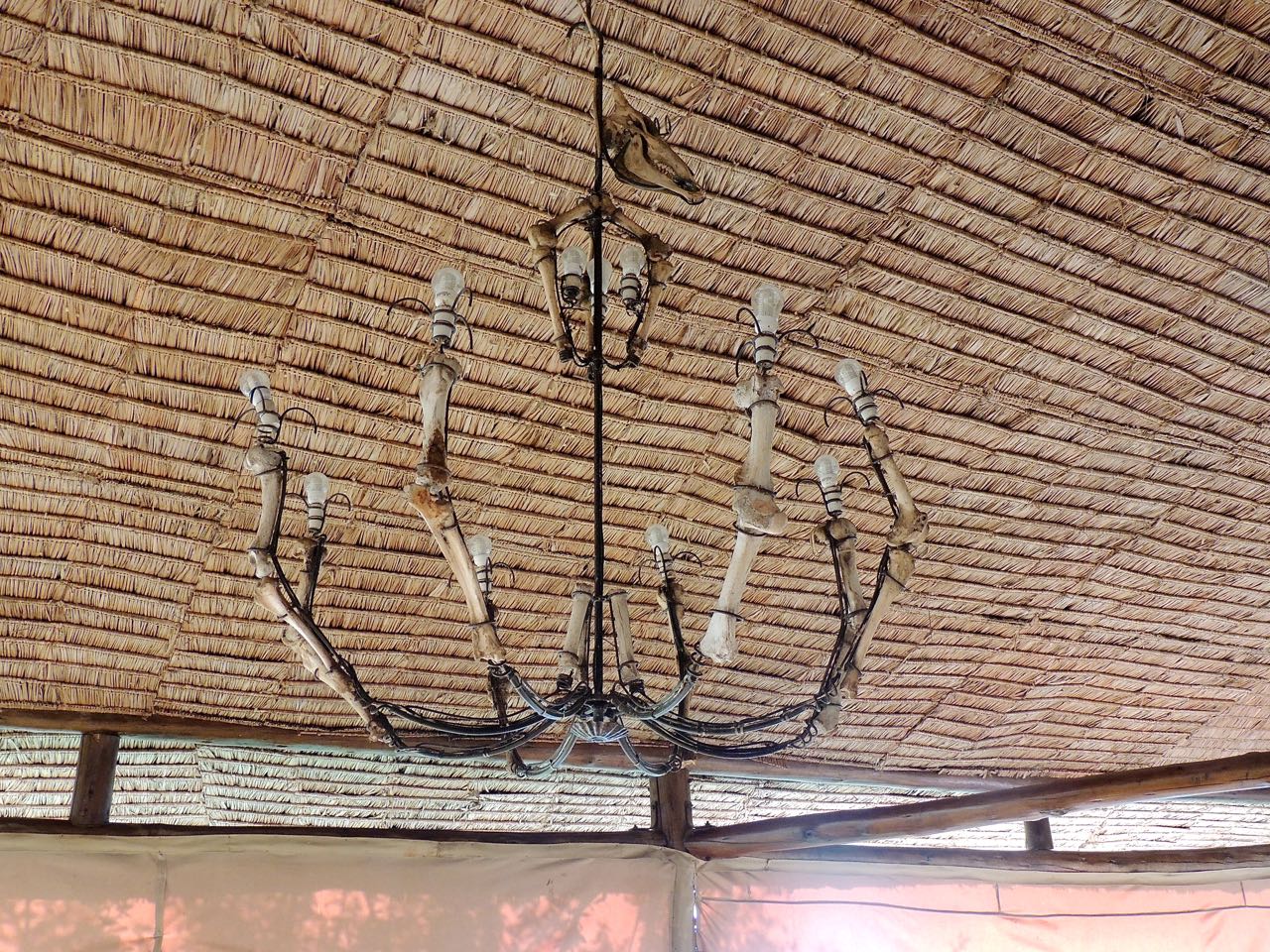 Mbalageti Chandelier - Photo by William Young
Mbalageti Chandelier - Photo by William YoungI was amazed at what a wonderful job Bernard did driving us 2,300 miles on the trip. We traveled on some paved highways, but it seemed that we were mostly on unpaved roads, many of which were washboard and dusty. Martin has longer legs than I do, so I sat behind Bernard for most of the trip – the driver side is on the right, as in Britain. Driving on dry dusty roads generates a lot of dust, and because Bernard kept his window open most of the time, I had to wear a bandana or a mask over my mouth to avoid eating a lot of dust. The dust was especially bad when we were passed by a vehicle going in the same direction as we were, because a huge cloud of dust was created that we had to drive through. Some of the paved roads in towns had speed bumps, but these were not like the speed bumps in the US. They were typically raised zebra crossings and appeared to be about 6 feet wide and eight inches high. This is a good idea to promote pedestrian safety, because there is no way you could quickly drive over one of these at high speed without doing serious damage to your car. We had three flat tires on the trip, all on the right front. Bernard had tried to get them patched, but he eventually had to have a new tube inserted. In looking at the bad condition of the roads, I am amazed that there are not more flat tires. Our vehicle also had a crack down the middle of the windshield. It started as a small spot and got bigger, which meant that the windshield would need to be replaced. It seemed like the wear and tear on the vehicle from the 2,300 miles of driving on our trip would have been equivalent to more than 100,000 miles of the driving I do in the US. My car would not have lasted a single day on some of the Tanzanian road.
The police in Tanzania are more of an impediment to the flow of traffic than an aid to help it to move. On three different occasions on the drive from Amani, we were stopped by police with speed guns. The game seems to be to stand in an area of highway where there is a sharp reduction in speed to 50 kph (about 30 mph), aim the speed gun, and then pull people over when they approach. Numerous people have told me that these police are looking for bribes. I did not see many obese people in Tanzania, but of those I saw, a lot of them (both men and women) were wearing police uniforms. In Dar es Salaam, a lot of busy intersections did not have traffic signals, but instead had police who seemed to be directing traffic with little rhyme or reason.
The bus drivers in Tanzania are dangerous. After leaving Dar es Salaam, we saw very few roads with more than two lanes, including the paved roads. The bus drivers on two-lane roads drive very fast and are always trying to pass, often playing chicken with the drivers coming from the other direction and the drivers they are passing. I once read a story in Punch by a British woman who talked about the difference between British and Indian drivers. She said that in Britain, people put their hand on the horn when they see someone doing something stupid or dangerous. In India, people put their hand on the horn when they are about to do something stupid or dangerous. Tanzanian bus drivers resemble the Indian drivers. I had mentioned to Iskra, the Bulgarian woman to whom we gave a ride from Amani, that when I was in Moscow many years ago, I discovered that there was no such thing as a full bus. Iskra said that a few days earlier, she had been in a Tanzanian bus, and there were three other people squeezed with her on a seat intended for one. The buses are privately owned, so the more people a driver can cram in and the faster he can reach his destination, the more money he will make. I was talking to a Northwestern University doctoral student named Jessica, who was in Amani to do research on how the park is affecting the community living around it. She spent a lot of time meeting with people from the local villages. She said that some of the bus drivers are drunk, which adds to the danger. She also said road accidents are pretty common in Tanzania. Some of the safari van drivers are reckless as well. When we were driving from the Olduvai Gorge, we were passed by a safari vehicle who was driving far too fast on the washboard roads. A little further on, we passed this vehicle who was stopped by the side of the road with a destroyed back wheel.
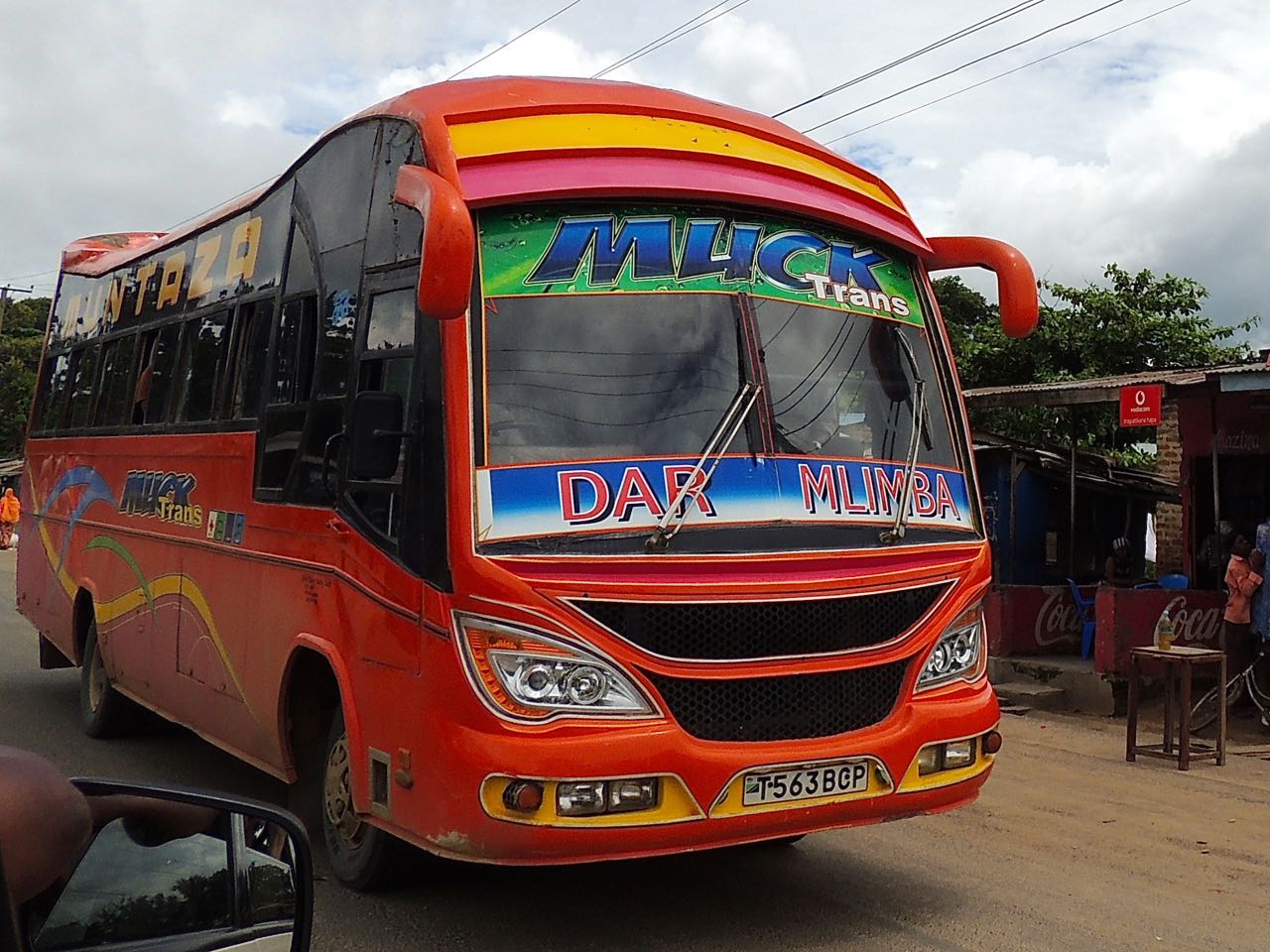 Bus - Photo by William Young
Bus - Photo by William YoungThe buses probably were one of the causes of the hellacious, nerve-wracking traffic jam on my final day in Dar es Salaam. We could not see any special reason for the tie-up which prevented us from moving for almost two hours. There were far more vehicles than the Dar es Salaam roads could accommodate. When buses try to get through an intersection, they sometimes push out into the middle of it if traffic is stopped in front of them, and in the process, stop traffic in all directions. The Tanzanian police were almost totally absent at the scene when they were needed to help the traffic to move. While we were stopped, all sorts of street vendors came up to our car, offering items such as peanuts, water, soft drinks, car mats, screwdrivers, car emergency triangles, pirated DVDs, pillows, sunglasses, and blue jeans. One guy had a teapot and cups, and he was pouring tea for people. At one point, someone with a herd of goats made his way through the stopped cars in this dirty dusty urban area.
In addition to the stress caused by the traffic jam, I found that when I finally got to the airport, I was covered in grit. The Range Rover did not use air conditioning, and a lot of roads in Dar es Salaam and the rest of Tanzania are dusty and dirty. In Tanzania, buses, trucks, and other vehicles burn oil and spew out black smoke. There is dust in the road, and that combined with the hot temperatures make a paste that covers the skin. The entire experience was an unpleasant assault on the senses. Before I had boarded the flight, I had stopped in a restroom to try clean up a little. When I was on the airplane flying home, a flight attendant brought around hot paper towels. When I wiped the hot towel on my head, the towel was black. The same thing had happened the day we walked into the Karibu Heritage House and someone handed me a hot cloth towel. My shirt collars looked like this as well, and dirt also nestled in most of the seams of my shirts.
We ran into more trouble on the roads when we were driving from Amani to Morogoro. In addition to being stopped by police with speed guns three times, someone pointed to our vehicle and said we had a flat tire. Both in towns and rural areas, there always seemed to be people standing around in case you needed help. Even when we were stuck in the mud at Uluguru, a bunch of guys magically appeared to help. On the ride to Morogoro, we had all of our luggage in the car, so we had to unload it into the rain and the mud to get to the spare tire under the cargo area. After the temporary spare was put on, we got into a line of traffic that delayed us for two hours. There is a one-lane bridge, and a bus tried to go across it too quickly. The wrecked bus caused a huge back-up of traffic in both directions. Once again, there did not seem to be any police on the scene to help traffic to move. When we finally made it over the one-lane bridge, we drove past the wrecked bus and had to stop in a town to get the tire fixed. That delayed us another half hour. We stopped at a gas station that had a carnival atmosphere. There were a lot of stalls selling food and drinks, and someone had set up amps and was playing music for the crowd. We arrived at the Arc Hotel in Morogoro a bit before 6 rather than at 3:30 as we had intended.
 Arc Hotel Wall Hanging - Photo by William Young
Arc Hotel Wall Hanging - Photo by William YoungThe ride to Amani featured a lot of delays due to roadwork. Instead of people working on one short stretch of highway at a time, many miles of the highway had areas with no paving that forced you to drive slowly. These areas featured signs that said "Humps Ahead" as well as "Humps Hazard". We then went through the town of Mazinde and saw a sign for the GUSH SHOP. I saw a lot of odd signs on the trip when we were driving through villages. Near Mkomazi, I saw a sign for Teacher Entertainment. Another was for the Mama God Shop. After we left the Rhino Lodge, we drove through the town of Karatu, which had establishments such as a Glory Shop, a new improved Bull Washing Bar, the Sunt Shop, and Hope Medics. We also saw a blacksmith shop and an art shop. When we drove through the town of Moshi, I saw a sign for the Obama Salon. President Obama is popular in Tanzania. We needed some motor oil, so we stopped at a gas station in Mkomazi with a large sign that said "LUBRICANTS." They didn’t sell motor oil. We stopped at another place that said "Toyota" and "Open 24 hours," but they did not sell motor oil either.
Much of the economic activity we saw in Tanzania was on a small scale. We saw a lot of unfinished concrete shells of buildings on what looked like abandoned construction sites as we drove along. In a lot of situations, construction is started, and then it stops when the people doing the project run out of money. If they get more money, they pick up where they left off. Using a credit card in Tanzania can be difficult. The day we flew from Dar es Salaam to Mwanza, Martin and I arrived at the airport more than two hours early, and we ended up making the plane with only a few minutes to spare. A young man at the counter was arguing that the signature on the back of Simon King's credit card was different from the signature on the sales receipt, even though to my untrained eye, they looked identical. We were able to reach Simon by phone and get him to send an image of his credit card, but the man behind the counter was adamant that they were different. The man at one point asked us to rebook the tickets and pay cash for them, saying he would not accept a credit card. The exchange rate is a bit less than 1800 Tanzanian shillings for one US dollar. The highest denomination bill in Tanzania is a 10,000 shilling note, which is worth about $6. That meant that when I exchanged $200 US dollars for Tanzanian currency, I was given a wad of 36 10,000 shilling notes, which did not fit in my wallet. Because large denominations of money were worth very little, there was a lot of rounding, and it sometimes was difficult to get change. The man at the counter was asking us to pay cash for a ticket that cost more than $300, which would have required a huge pile of notes. He was probably looking for a bribe. He finally relented, and we got the last seats in the back of the plane.
When we arrived at Mwanza, some men with porter shirts grabbed out bags, walked with us to our vehicle, and then demanded an outrageous amount as a tip, which I refused to give them. Tourism dollars are very important to the Tanzanian economy. Tanzania gets a lot of things right when providing services for tourists, but experiences such as the ones with airport and the porters, along with the long waits at the entrances to the parks, definitely need some improvement.
There apparently is an attitude among many people in Tanzania that all white people are rich. I imagine that most white tourists who visit the country are rich compared to the Tanzanians. Establishments for tourists in many places were surrounded by high walls, and entry required going through a gate manned by a guard, often armed. I tended to wave to people as we drove through villages. In Udzungwa, we drove through a village that sees few cars. When I waved to some of these people, I often got frosty looks in return. The only villagers who seemed glad to see us were the children, who seem to enjoy when people wave. The younger the children, the more they seemed to enjoy it. Many of the girl children had closely cropped hair like the boys. Caring for long hair is expensive, and people can reduce costs by keeping their children's hair short.
A lot of Tanzanians in some places paid a lot of attention to their clothing. I saw many women who were impeccably dressed, regardless of whether they were wearing western, Moslem, or African garb. Not everyone was dressed well. A lot of people wore flip-flops, and many boys wore woolen caps, despite the heat. At our Ndutu campsite, we were accompanied on our walk by a Maasai man who wore sandals made of old tires. He carried a stick, and he had large holes in his earlobes. On the walk, I saw another Maasai man who appeared to be wearing shiny bling in his ears. The Maasai men and women really love shiny bling.
The food in Tanzania was generally good to excellent. Even when we were in the campsites where everything had to be cooked over an open charcoal fire, we had good food. At places such as the Rhino Lodge, Serenity, Hondo Hondo, and Angalia, the food was excellent. At Hondo Hondo, the food was prepared in a building up a steep hill from the dining area, and people would bring the food down for us. There was a woman who was tending the bar, and she knew a lot about nature. She used to work as a nature guide, but after she had leg surgery, she had to work at jobs that were less physical. We ate a lot of pack lunches in the field, and they generally consisted of a piece of chicken, a sandwich, a banana or apple, a piece of cake, and another item such as a cold samosa. Breakfast was usually an omelet or scrambled eggs, toast with butter or jam, fruit, and often a pancake on the side. On some nights when we stayed at places without electricity, I could barely see what I was eating. I tried to avoid salads and uncooked vegetables. Martin ate them and did not have any trouble. The Angalia camp was the only one that served water with dinner. If I wanted water at any of the other places, I had to bring my own. Most places had beer and wine available. The only place where the food was pretty basic was at Amani, because it is a facility for researchers rather than tourists.
Before the trip, I had read about a Tanzanian dish called ugali, which is a porridge made of maize. I had a chance to order it when I arrived in Dar es Salaam, but I did not, because I thought I would be eating a lot of it during the trip. I ended up eating ugali only once on the trip, and I had to order it when we were in a restaurant in Mikumi. Someone told me that it tasted like cardboard, but I thought it tasted more rubbery. You are supposed to take a small handful of it and use it to pick up the meat or other things on your plate. It did not have much taste, and you could stand a fork up in it.
Tanzania did not have many restaurants. People sometimes run toward vehicles trying to sell you things to eat. A lot of roadside vendors sell bags of nuts or sugar cane, but I saw other things, including a freshly killed and skinned lamb. As we drove through villages, we saw shops that sold grocery supplies, but there were few that sold food that they prepared. Some places had large outdoor markets, selling a variety of fruits, vegetables, and other types of food. A lot of pineapples and bananas are grown in Tanzania, including small bananas, which were sometimes served to us at our meals. On the few times when I was at a restaurant, it seemed to take forever for the food to arrive after we ordered it, even when Martin and I were among the few diners present. I sensed that a lot of items are cooked from scratch after someone orders it. The waiting staff in Tanzania sometimes comes to your table with a bowl, soap, and a pitcher of water to wash your hands, which is a nice touch. Most tables also have a small container of toothpicks. I saw only one KFC and no McDonald's. People in Tanzania do not have enough money to make such enterprises profitable. However, both Coca-Cola and Pepsi are heavily marketed in the country. When we stopped at a cafe to get something to eat on our day in Dar es Salaam, the place was very red, because the table cloths and chairs had been provided by Coca-Cola. At the cafe, our lunch consisted of fried bananas, plantain chips, goat ribs, and banana stew.
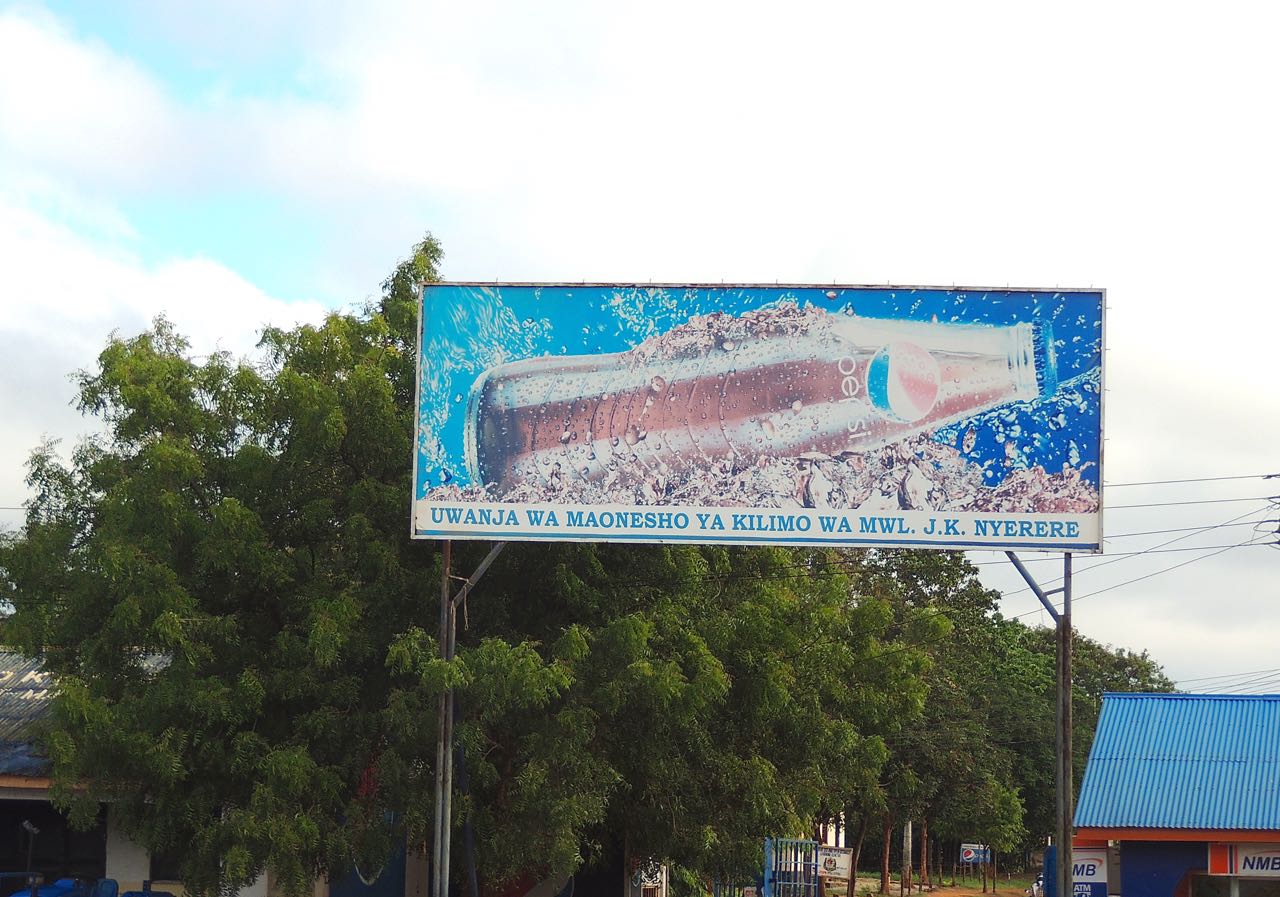 Pepsi Sign - Photo by William Young
Pepsi Sign - Photo by William YoungI felt safe most of the time I was in Tanzania. When I walked around Dar es Salaam, the greatest danger I felt was from the uneven and broken sidewalks and curbs, which created a hazard if you did not watch where you walked. Many places we stayed were accessible only with four-wheel-drive vehicles, and we were often the only people staying there. When we were at the camp at Mkomazi, we were only 25 kilometers from the Elephant Motel where we had stayed, but we could have been 2,500. With a couple of exceptions, the only people we saw in some of these places were the people who worked there. We also were warned about wild animals, and while I sometimes heard some near our tents in the middle of the night, I never saw any.
We saw a lot of cattle, sheep, and goats as we drove around, but I did not see a single pig. I asked Bernard about this, and he said that pigs were raised in Tanzania. They probably stay in enclosed pens that I could not see. At the Angalia Tented Camp where we stayed on our final two nights, the Maasai herded their animals right in front of my tent. The pathways at Angalia were covered with ants. While hiking through the rain forest at Udzungwa National Park, we had to be careful where we walked, because there were large aggressive ants who tried to crawl on us, and their bites hurt.
While we were at Arusha National Park, Mutobha told us about the poaching problem. He said some of it is by farmers who come into the park looking for protein to eat. Other poachers are part of organized gangs looking for elephants and rhinos. I asked what is done to poachers who are caught, and his response was, "We punish them". I misheard him and thought he said, "We punch them". We eventually got things cleared up.
At the Rhino Lodge, the rooms had examples of Maasai graffiti on the walls. My room had the word Irmotonyiki, which means Black Kites. The Swahili word for bird is ndege and for mammal is wanyama. I will long remember the magnificent ndeges and wanyamas I saw during my month in Tanzania.
 Irmotonyiki - Photo by William Young
Irmotonyiki - Photo by William Young